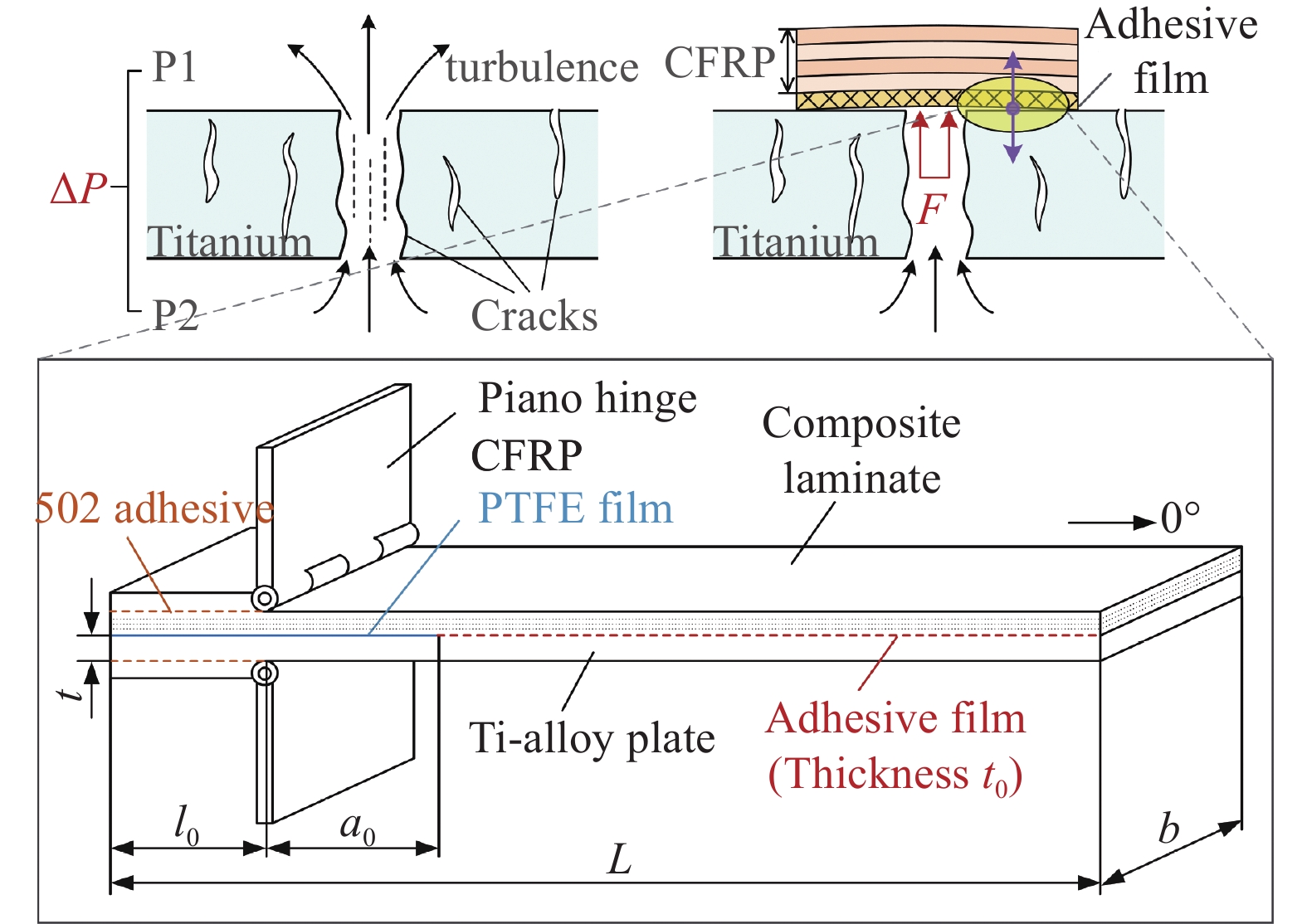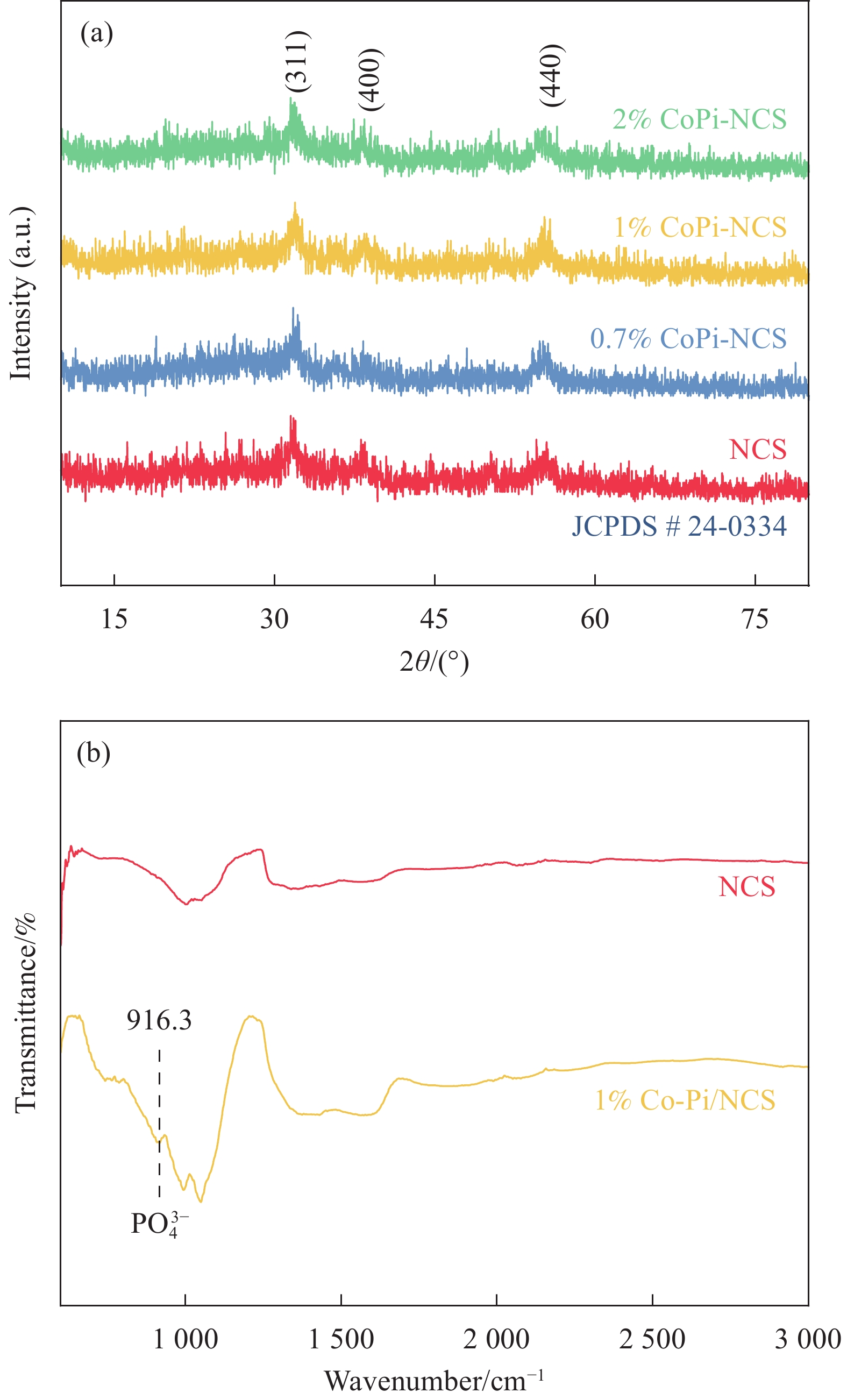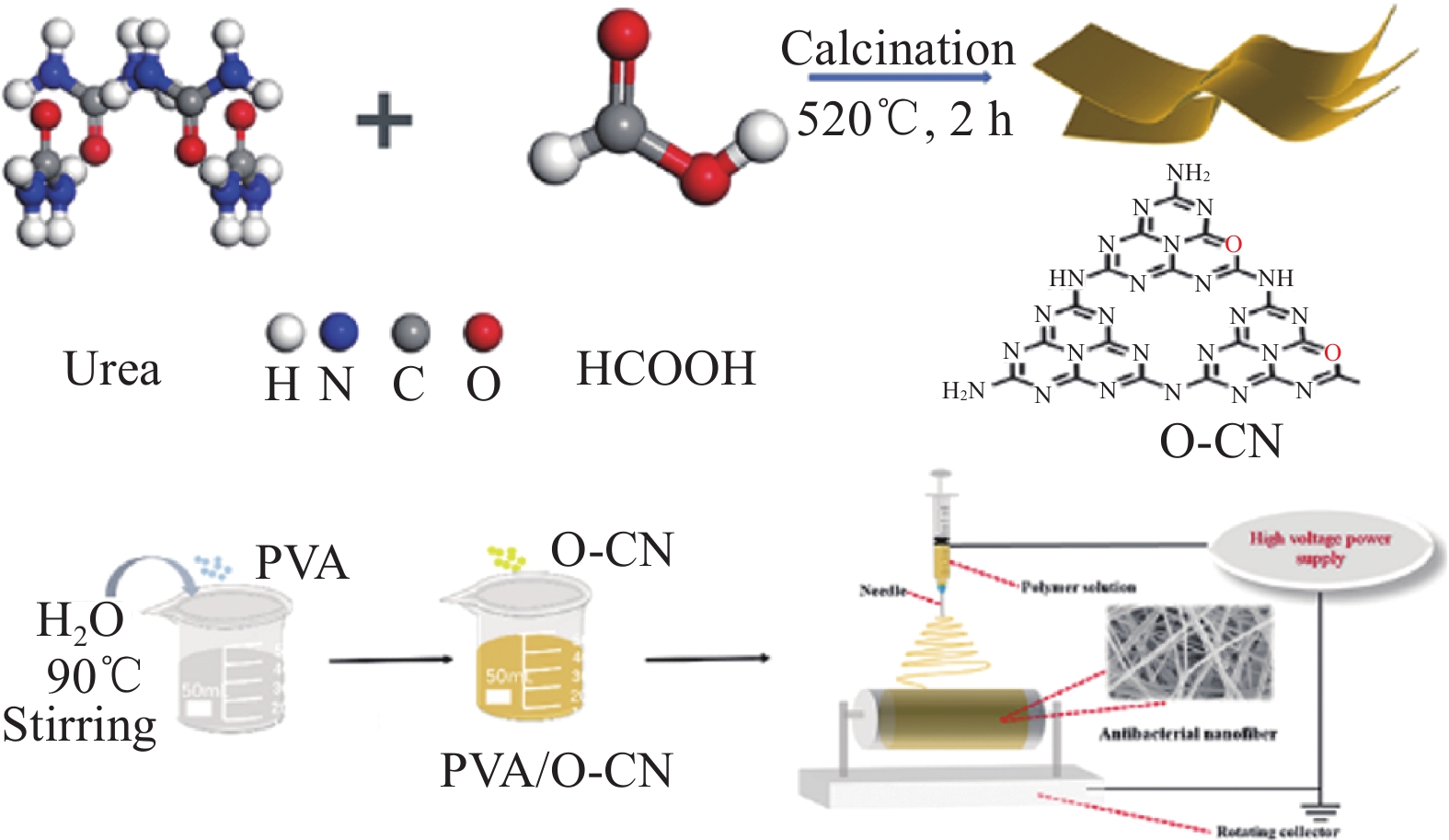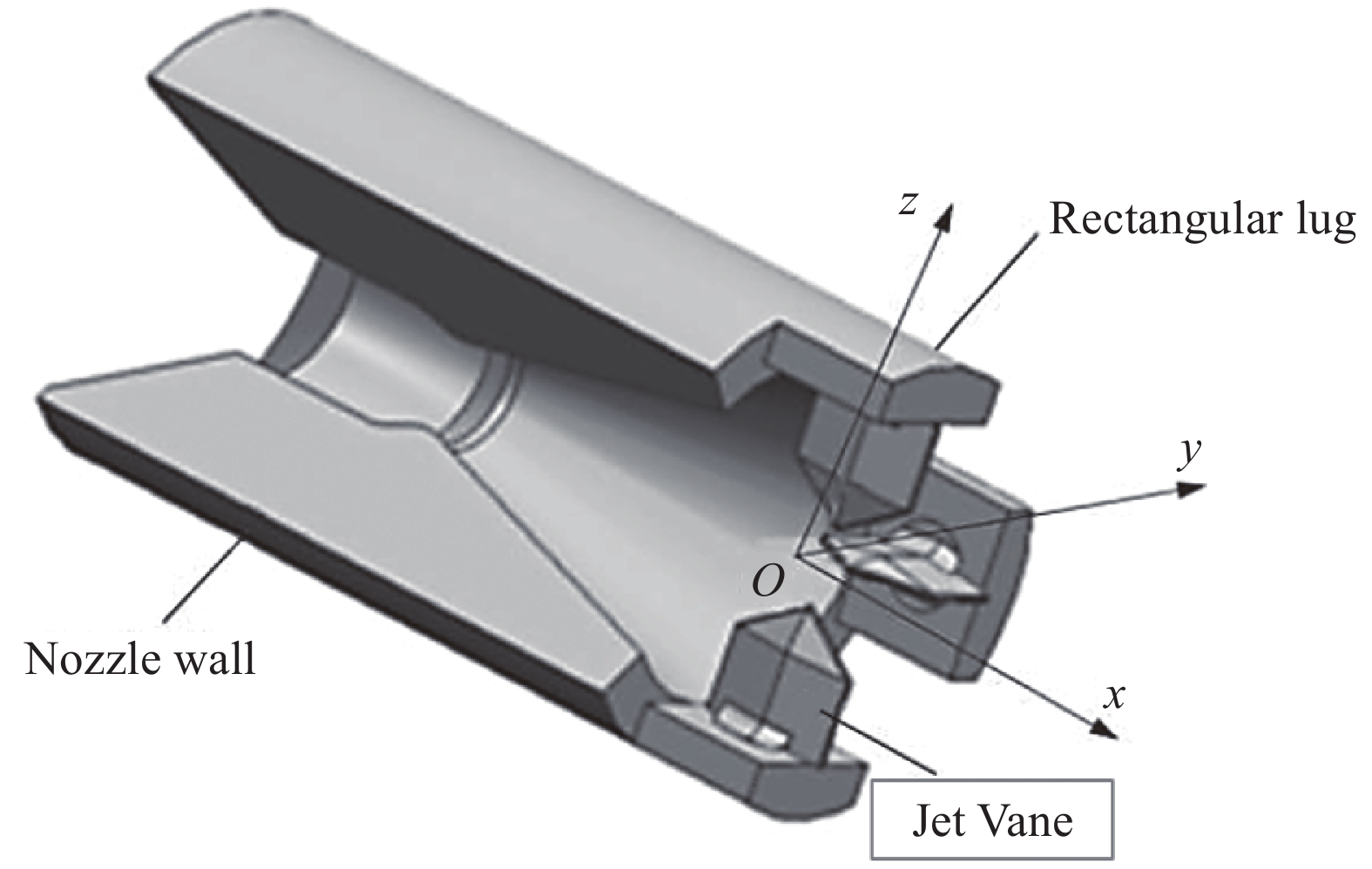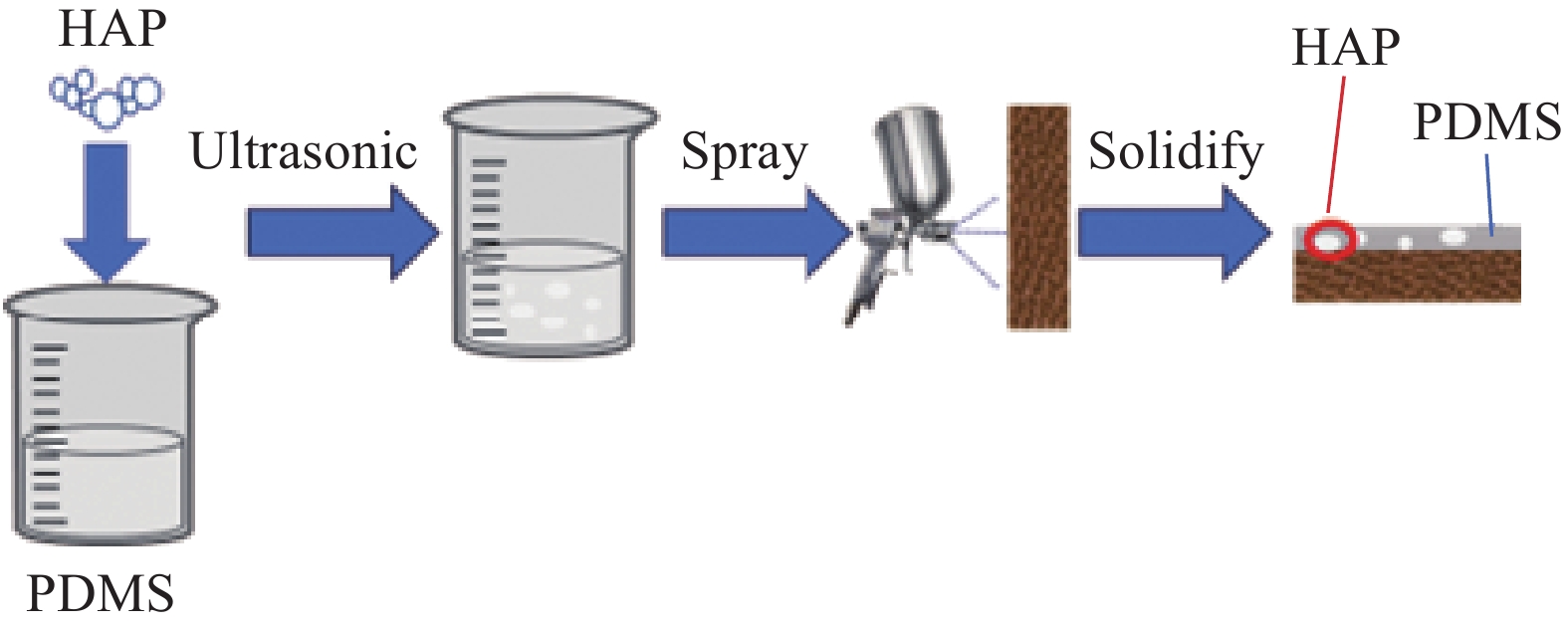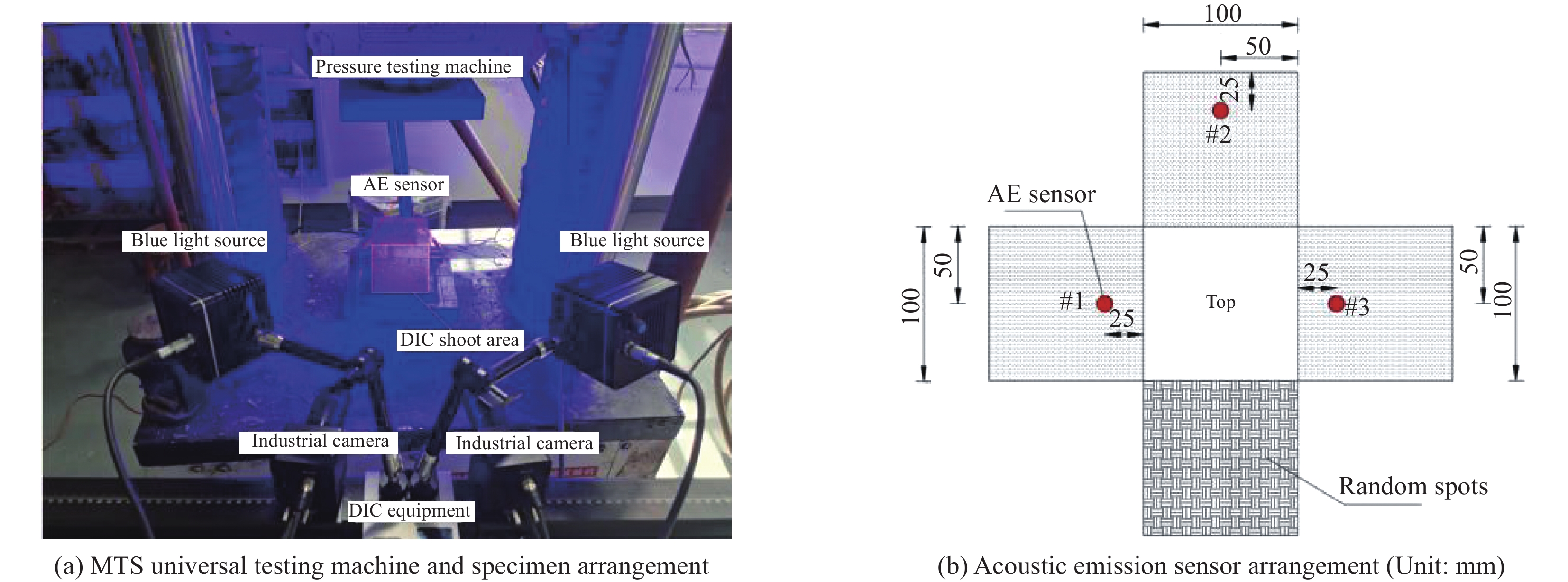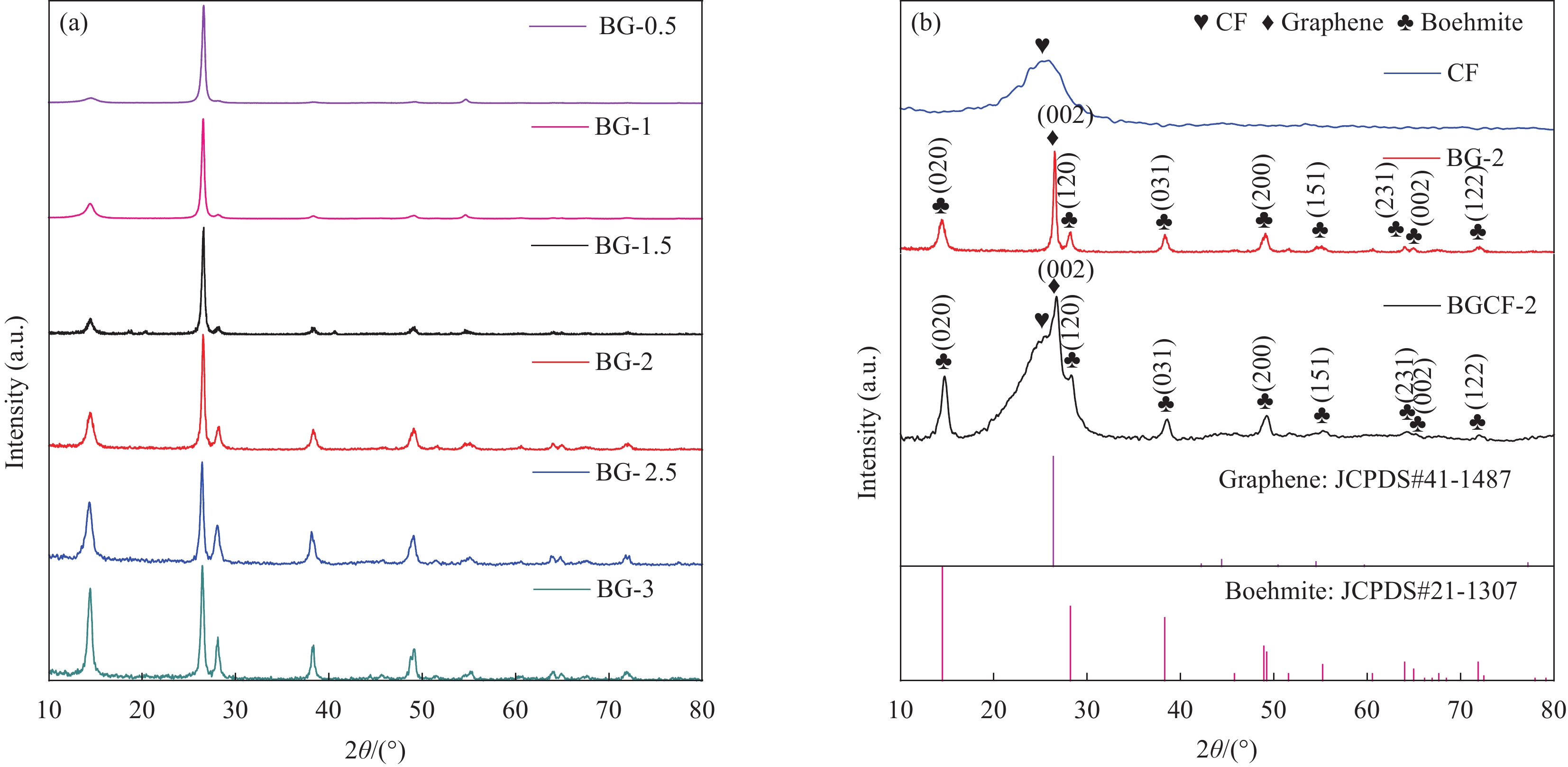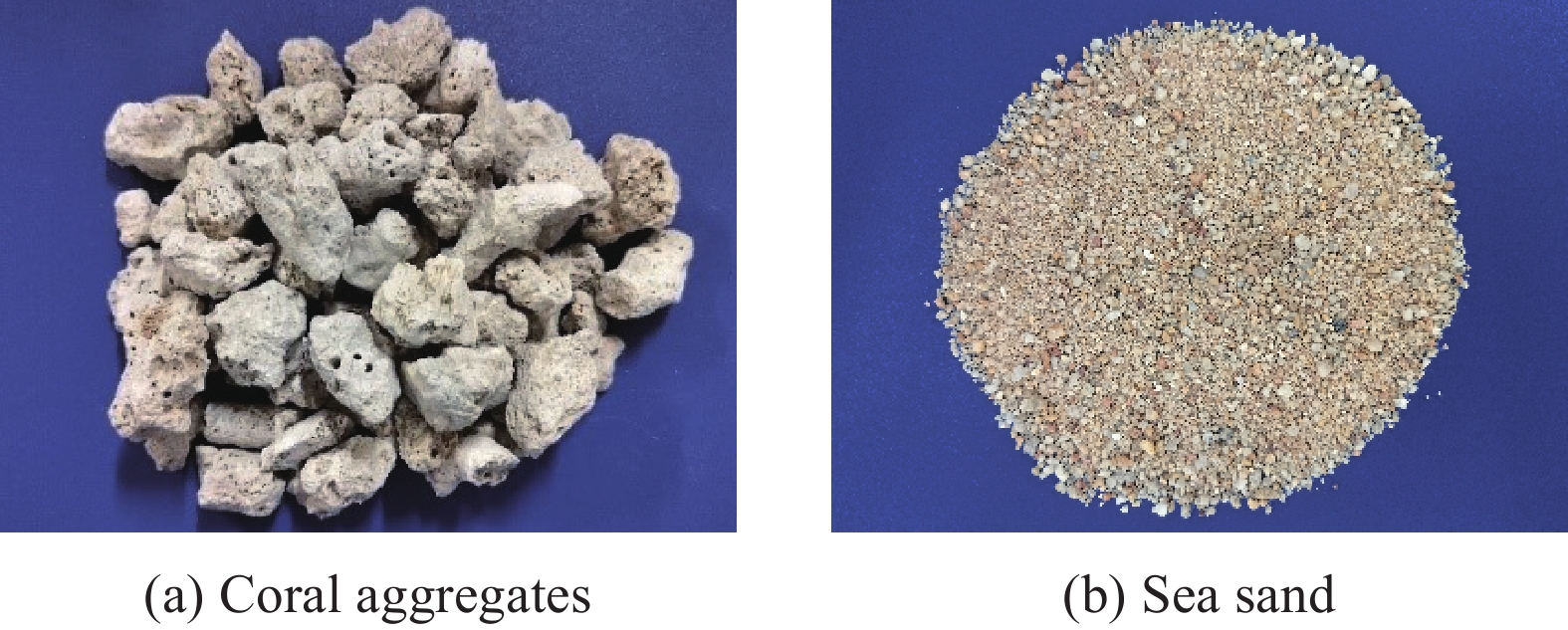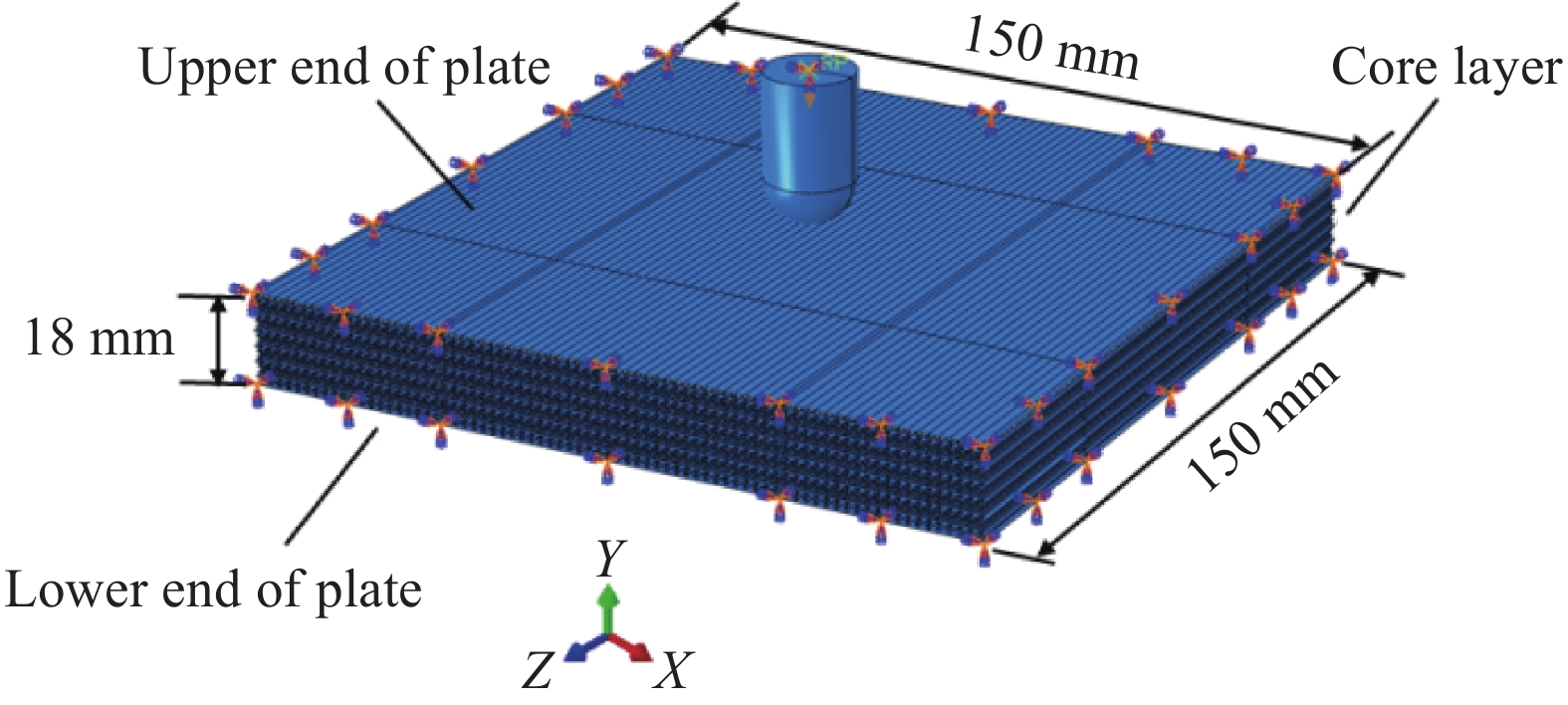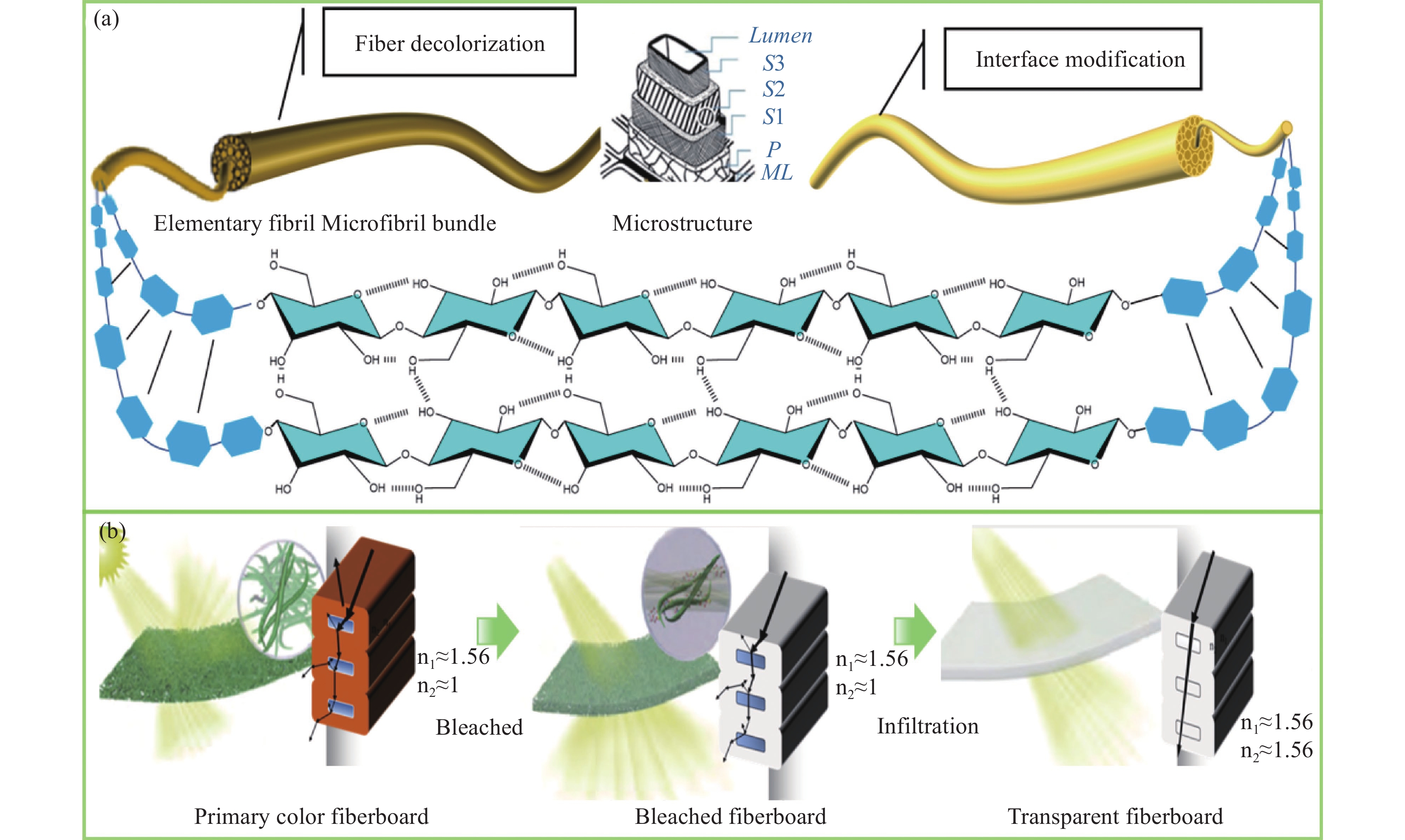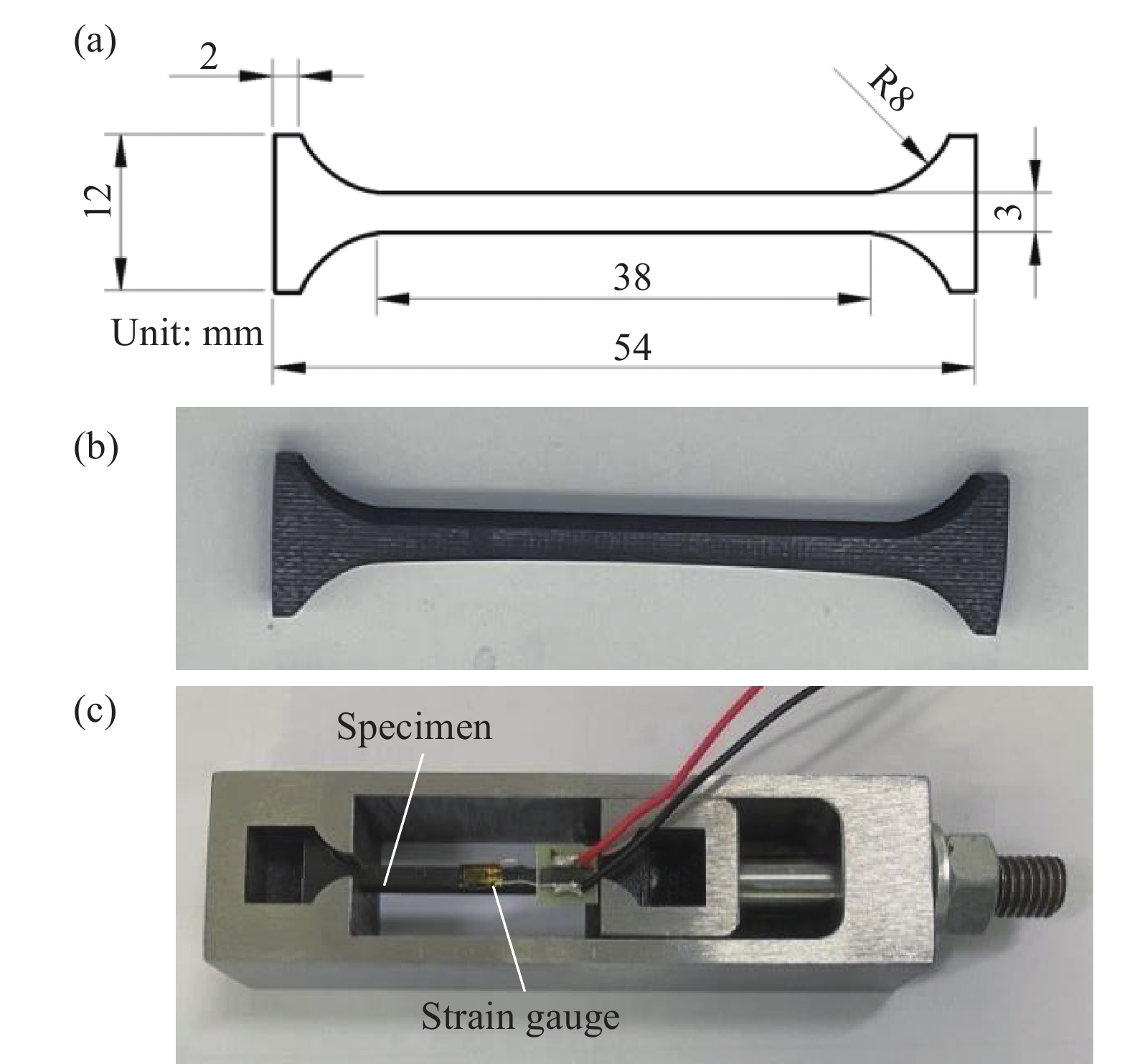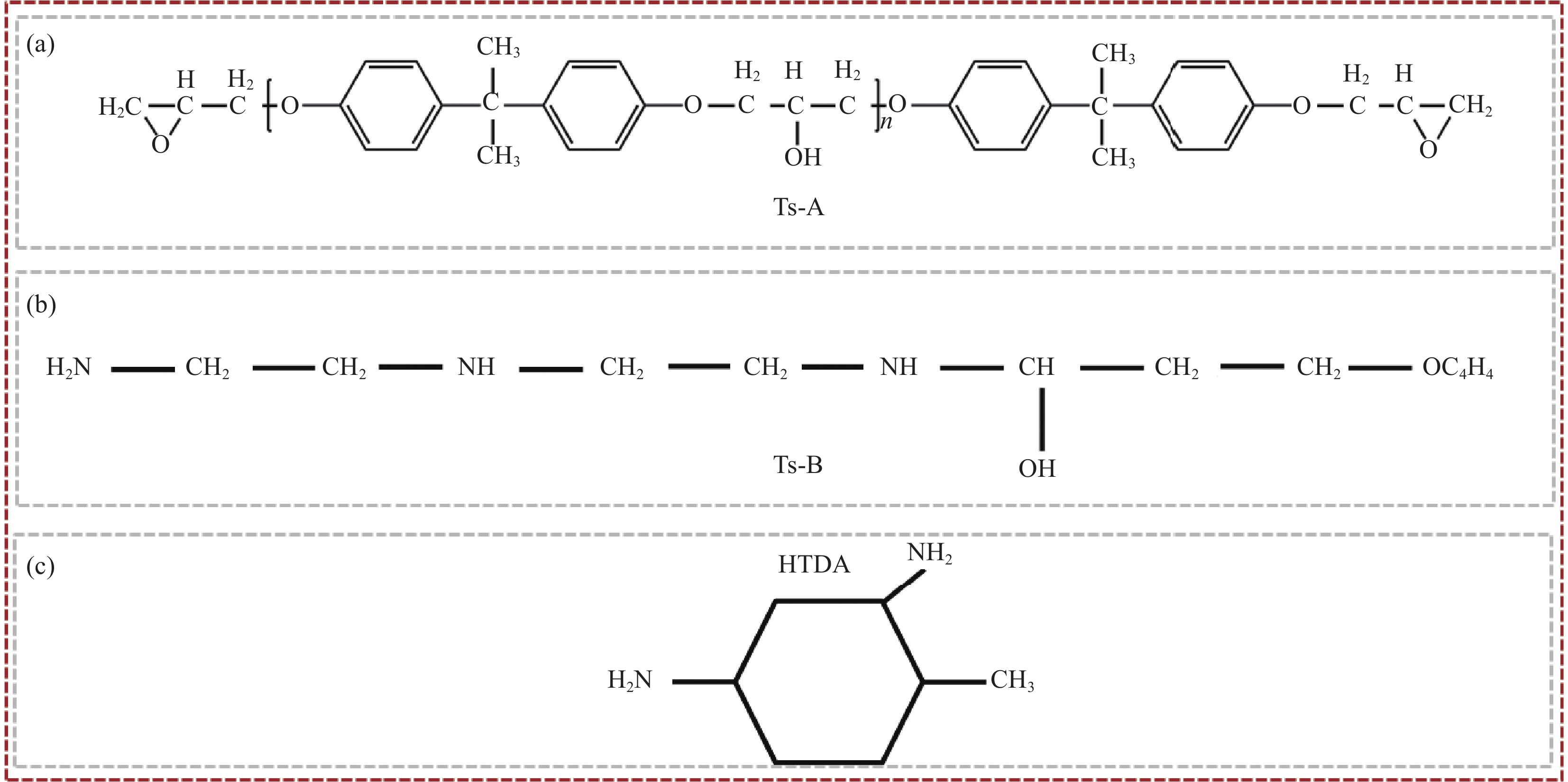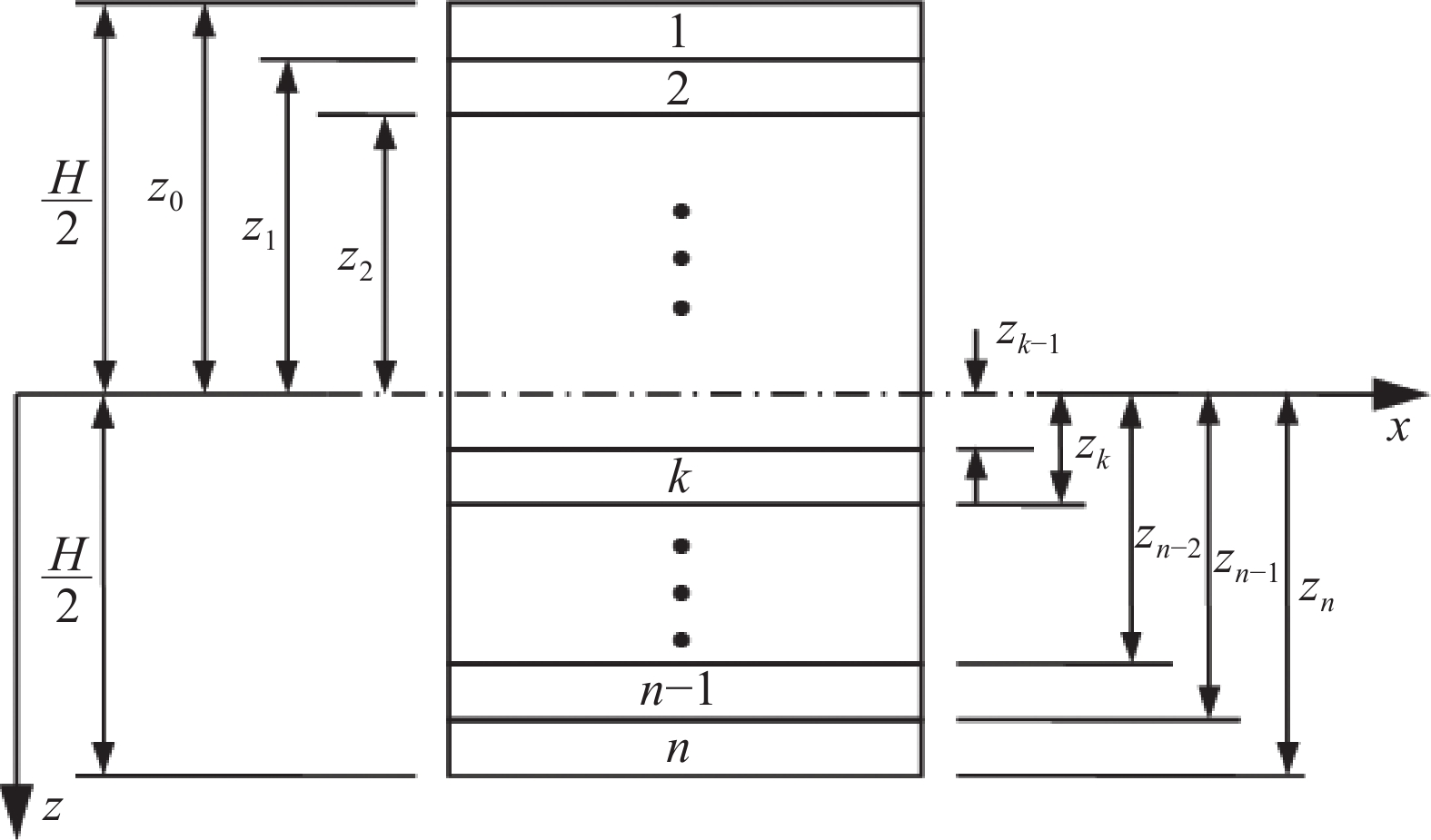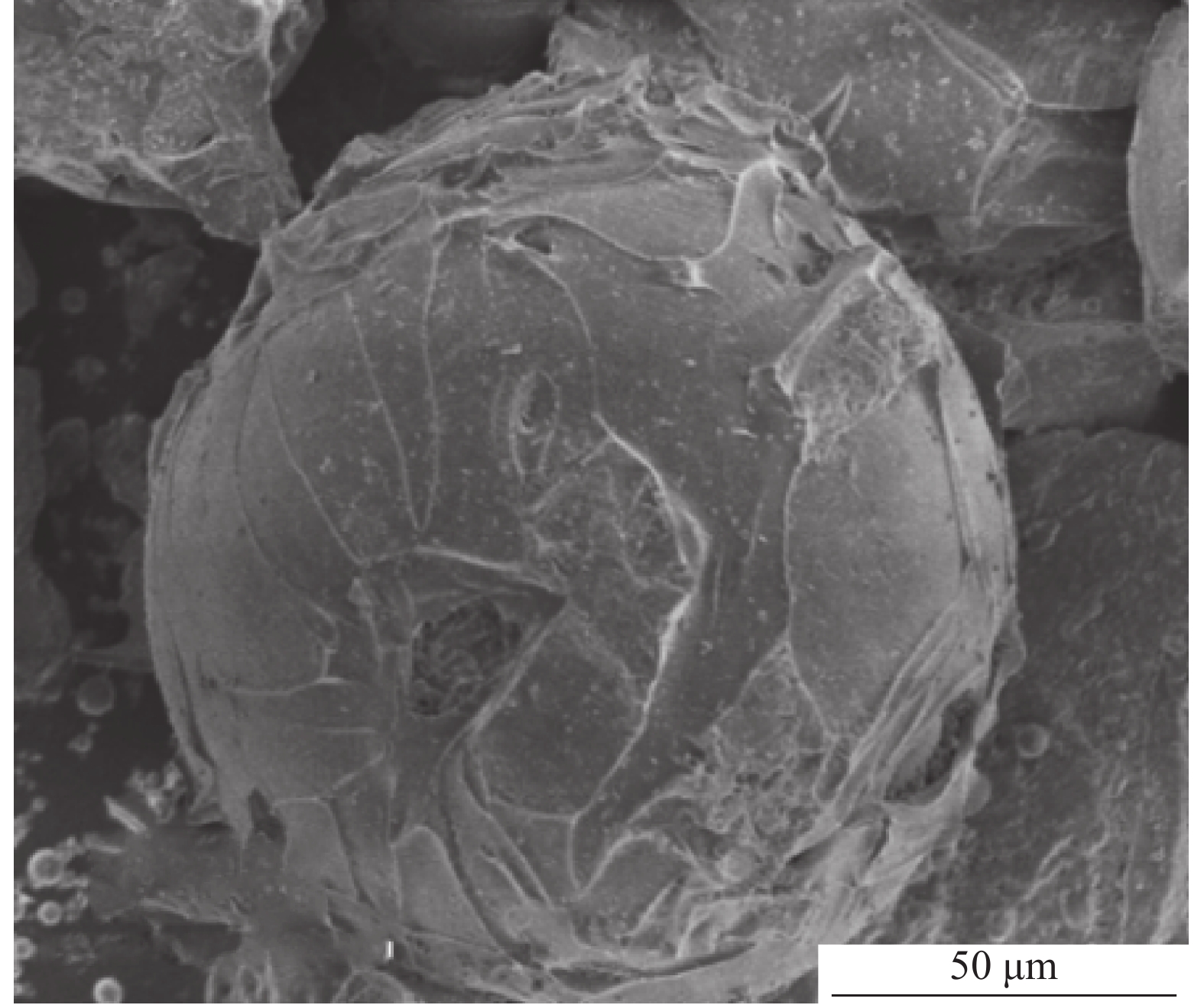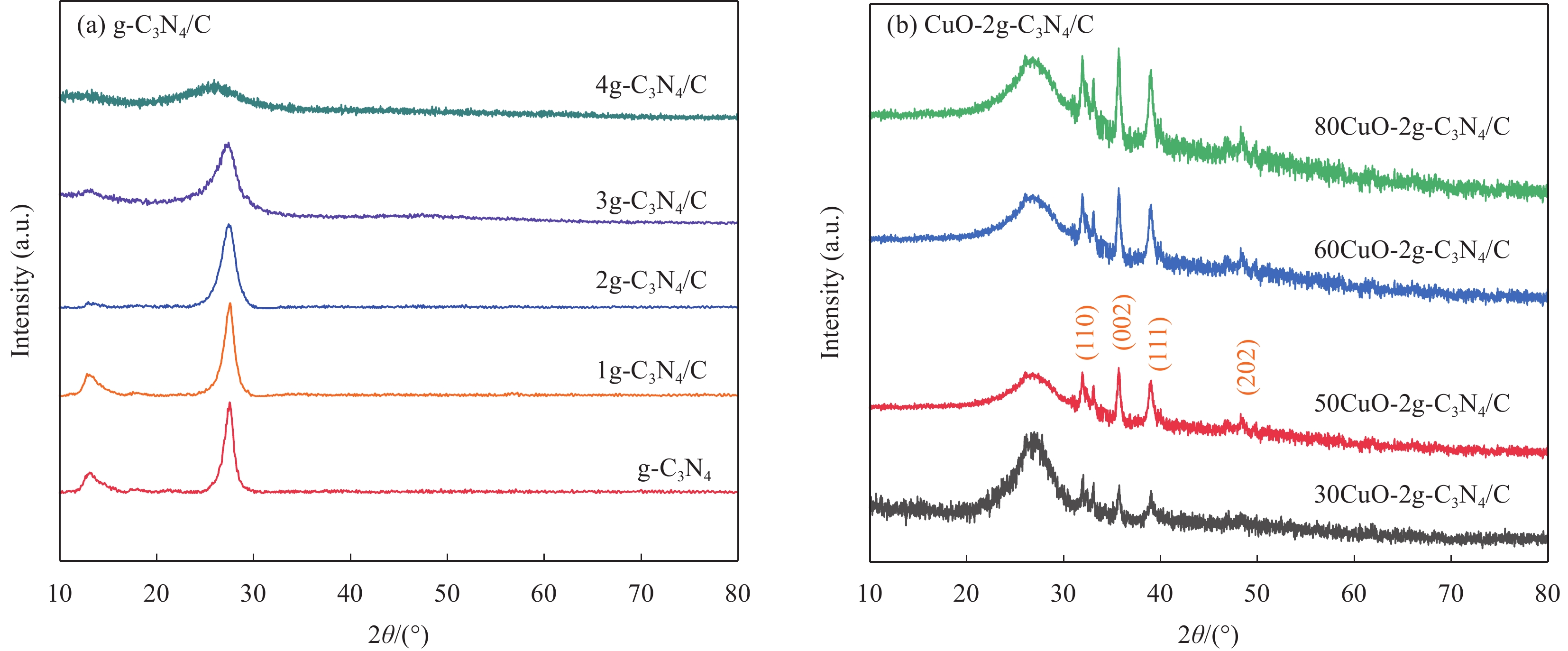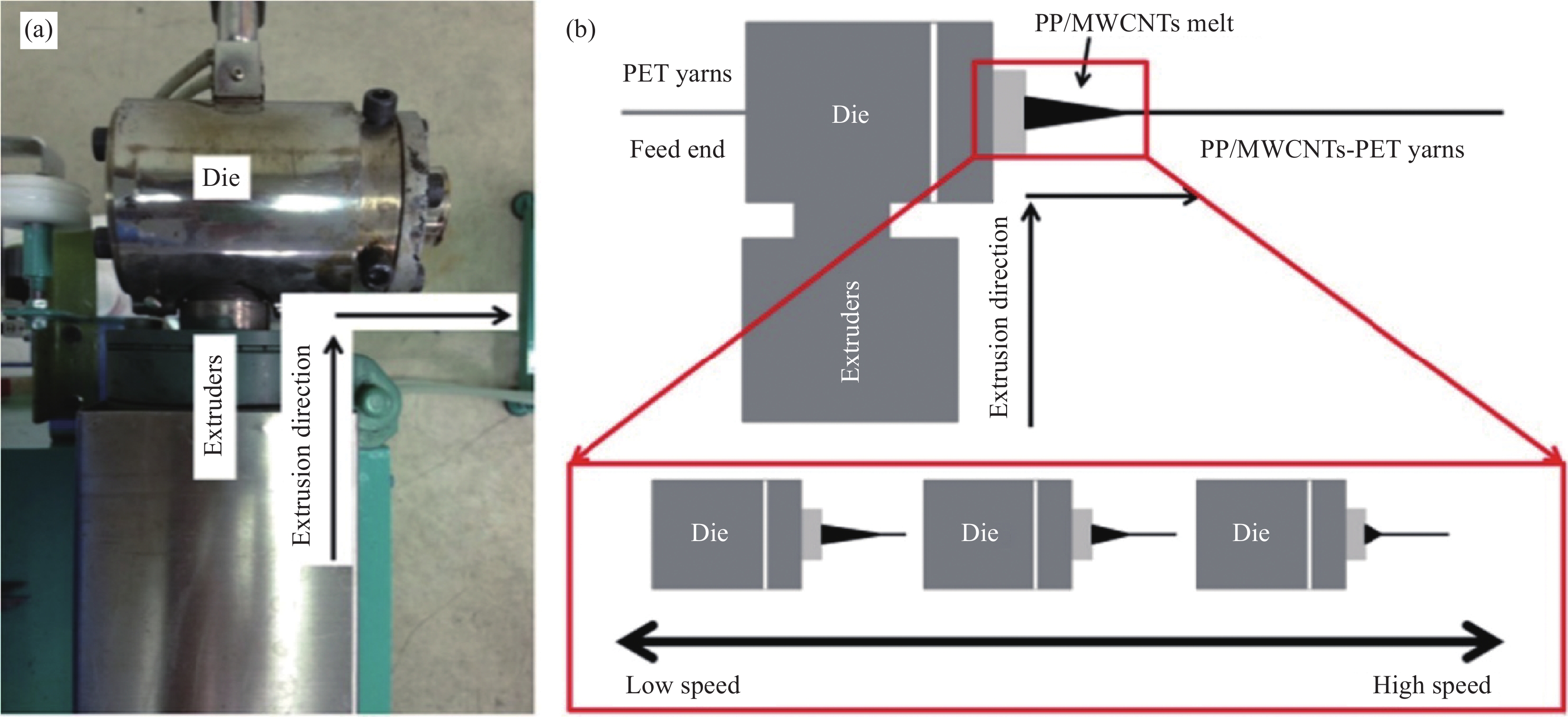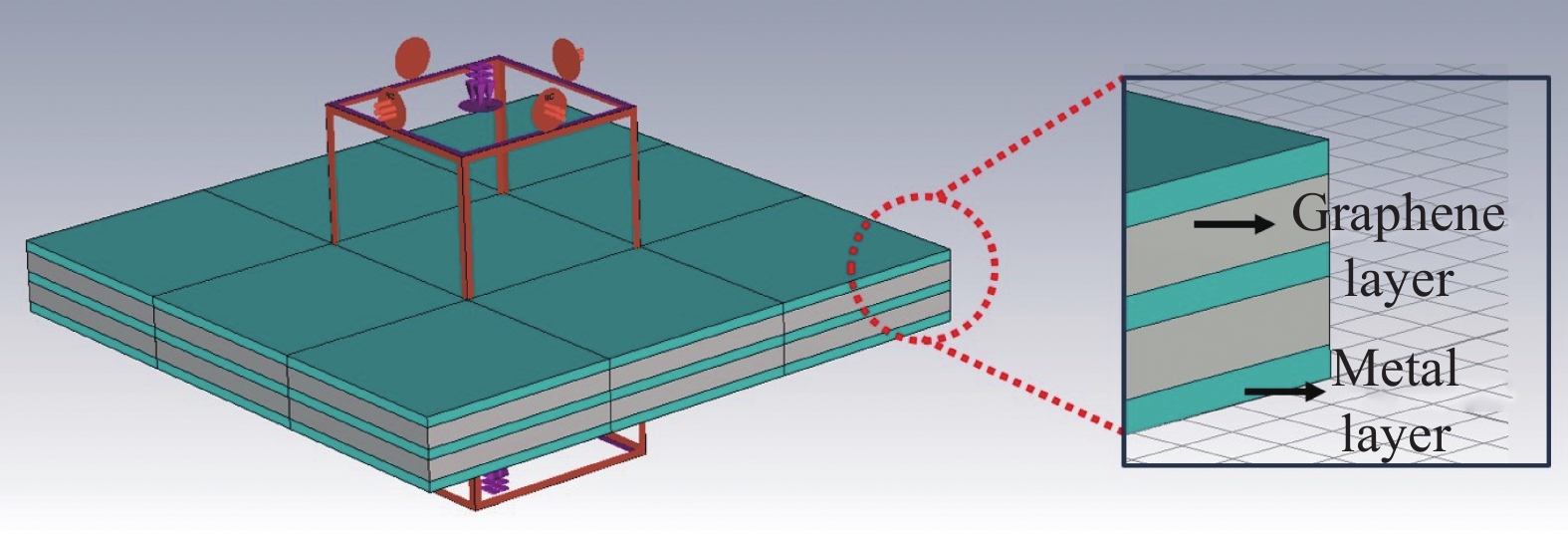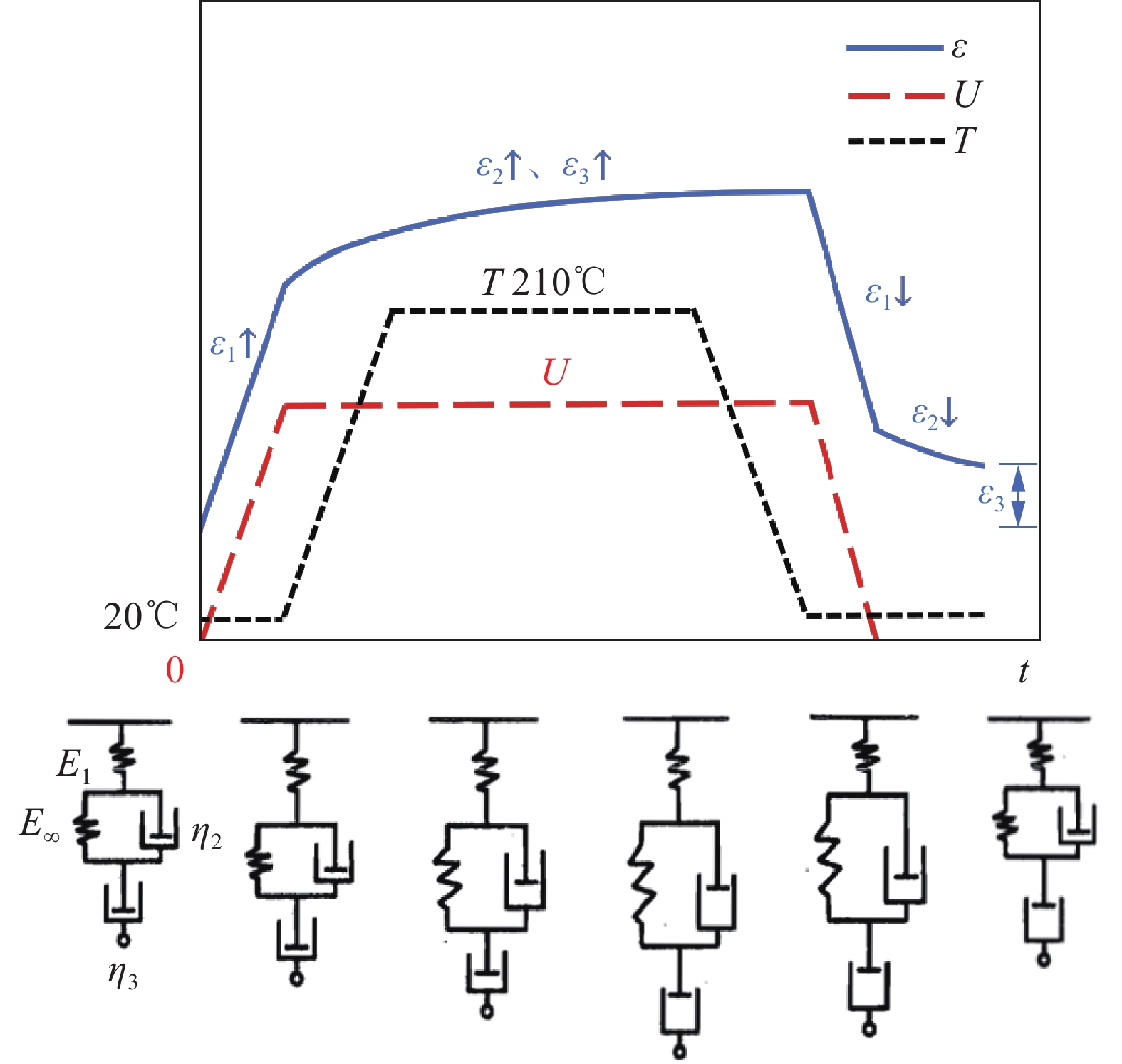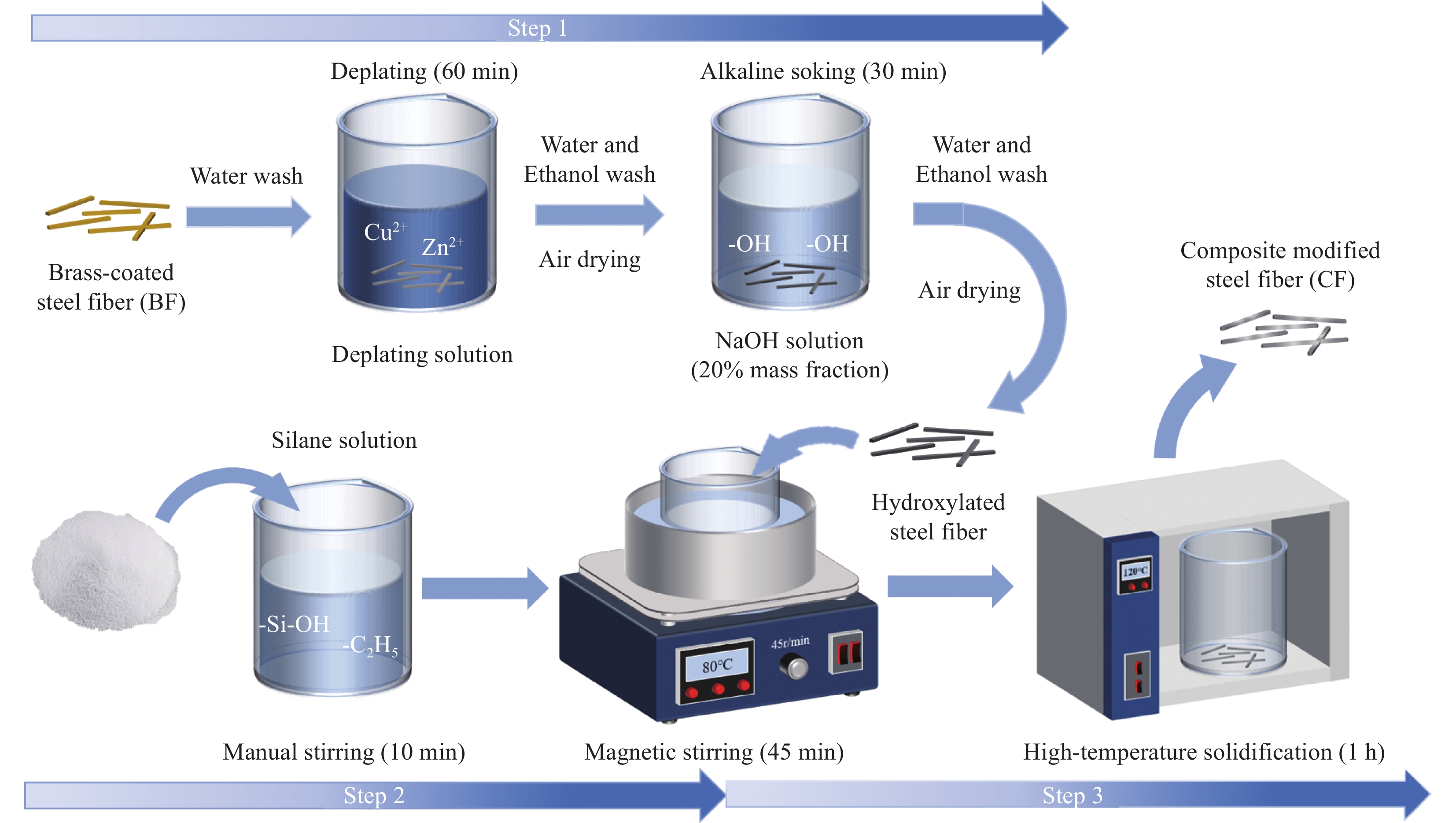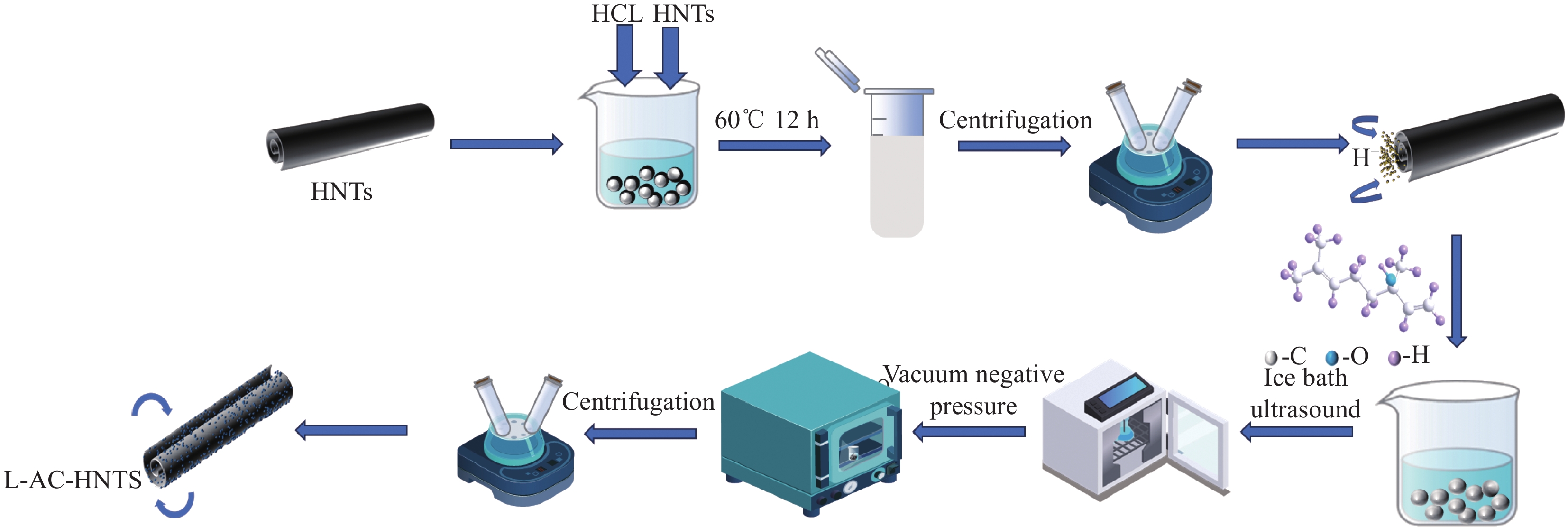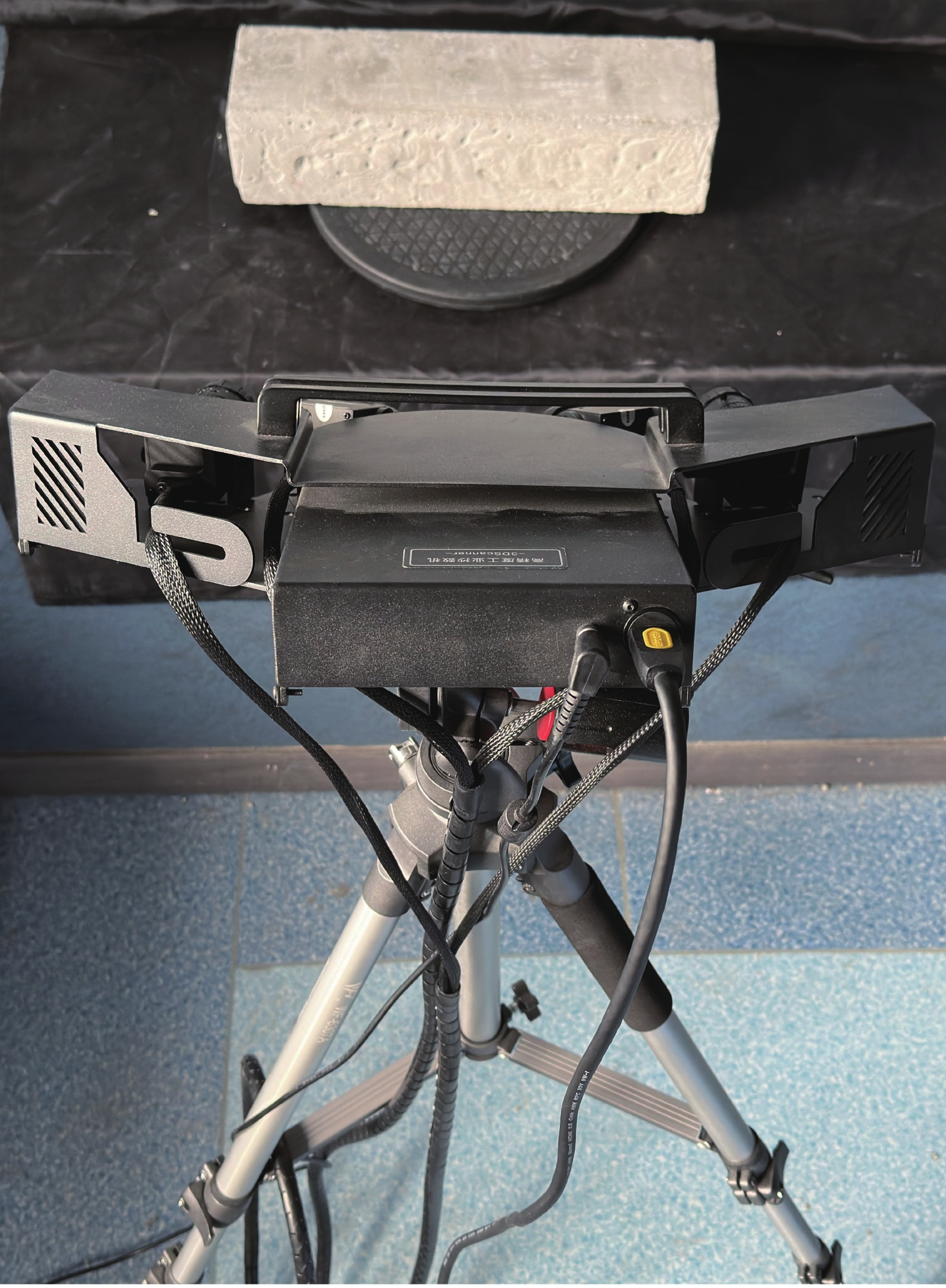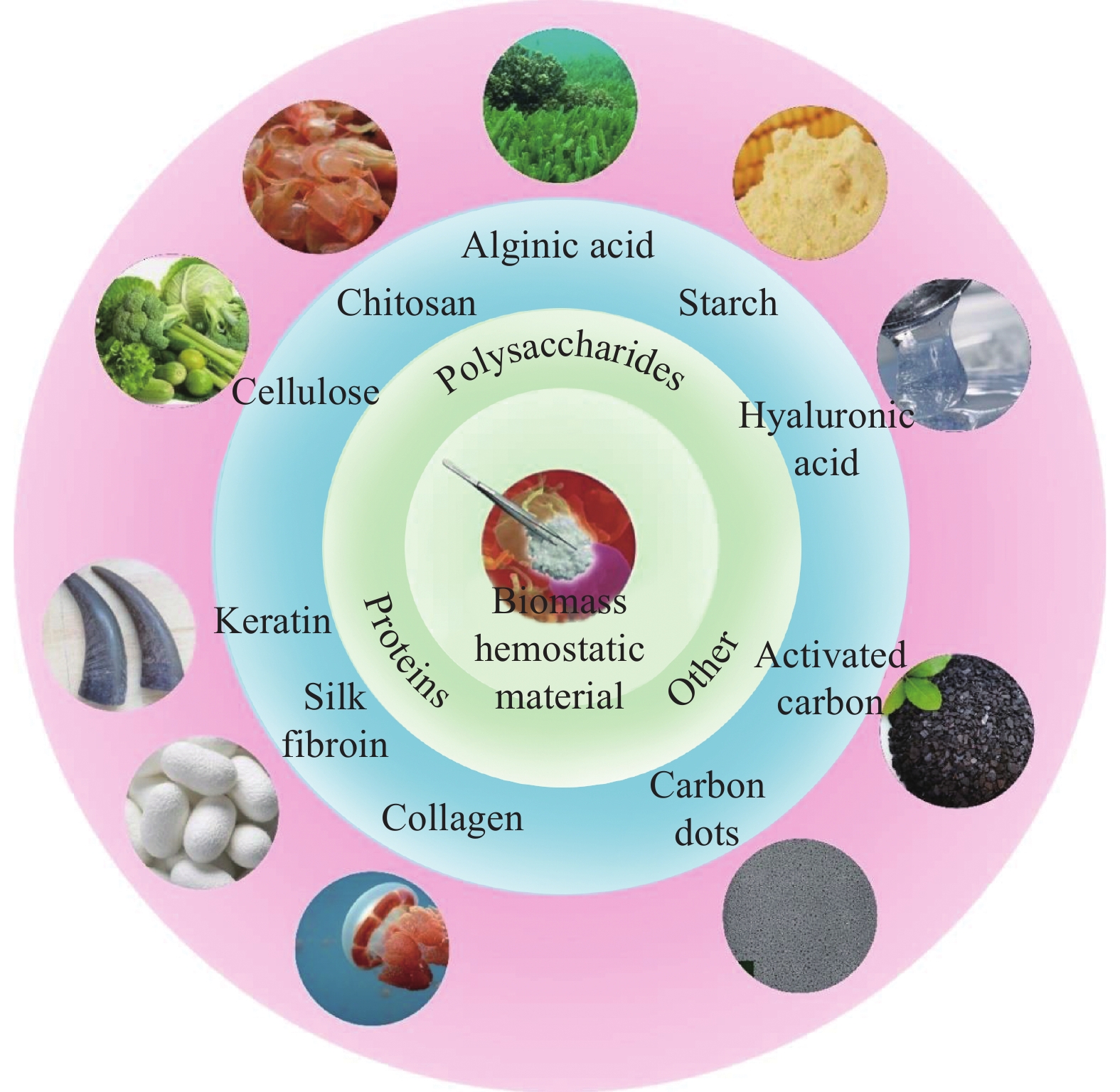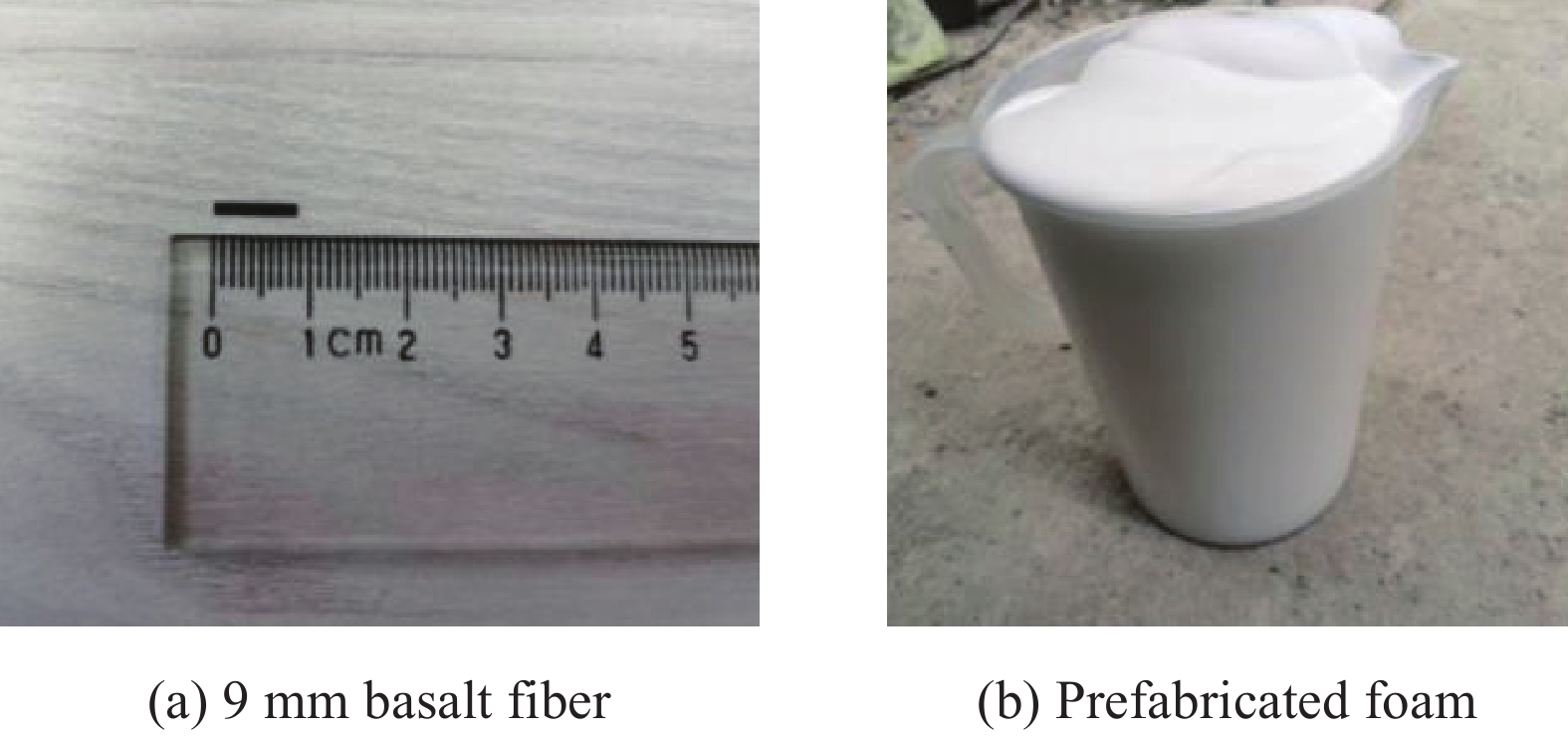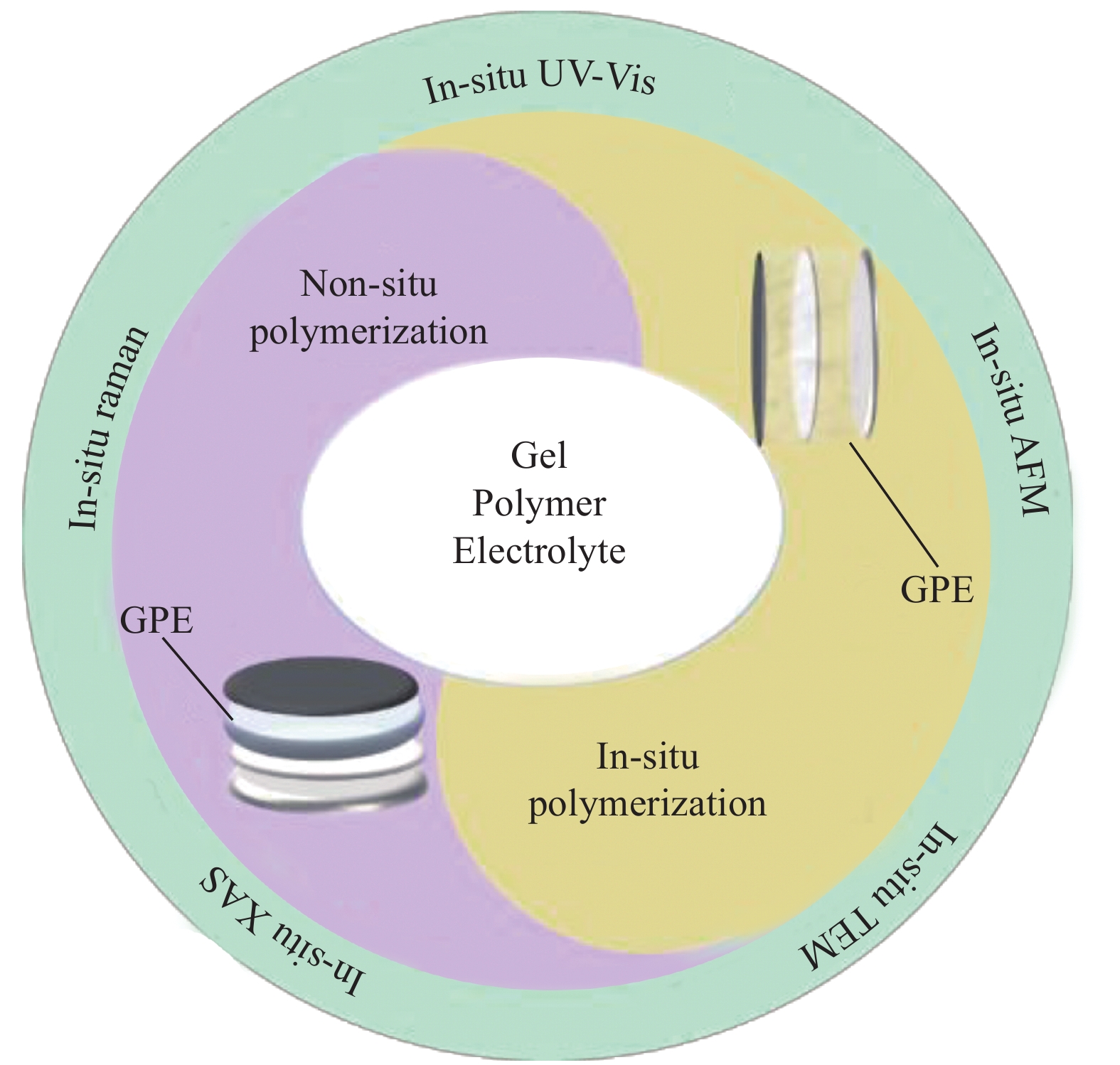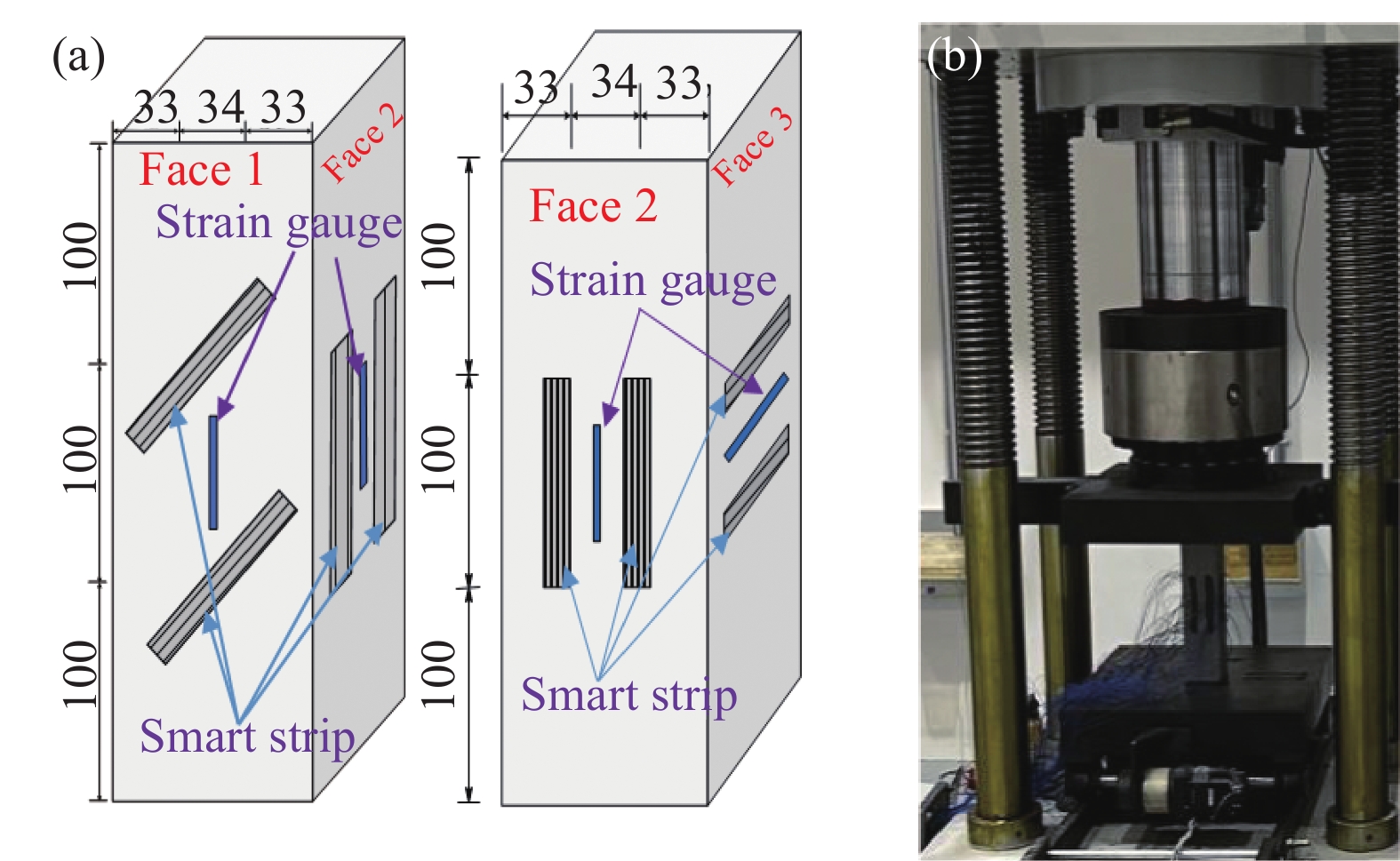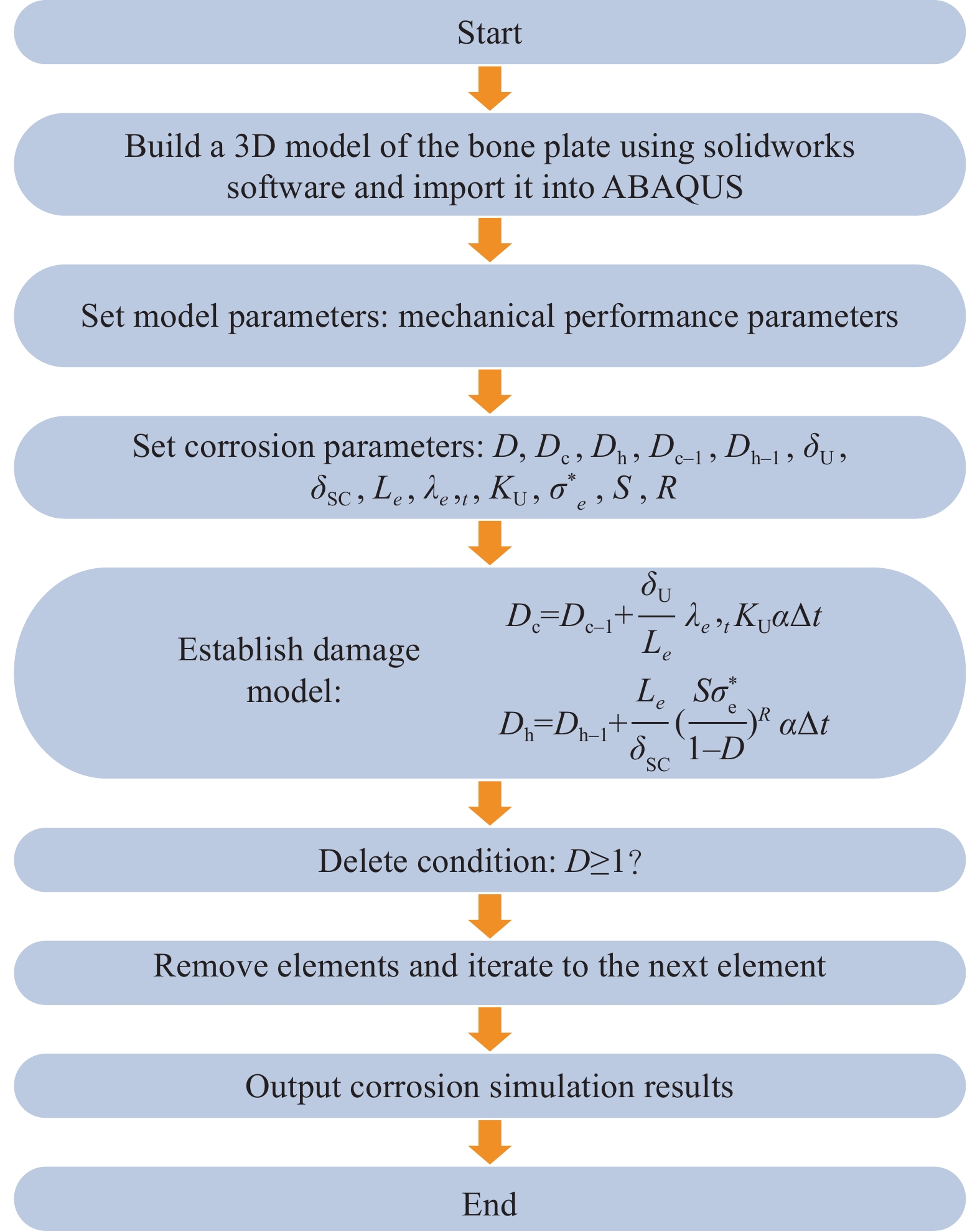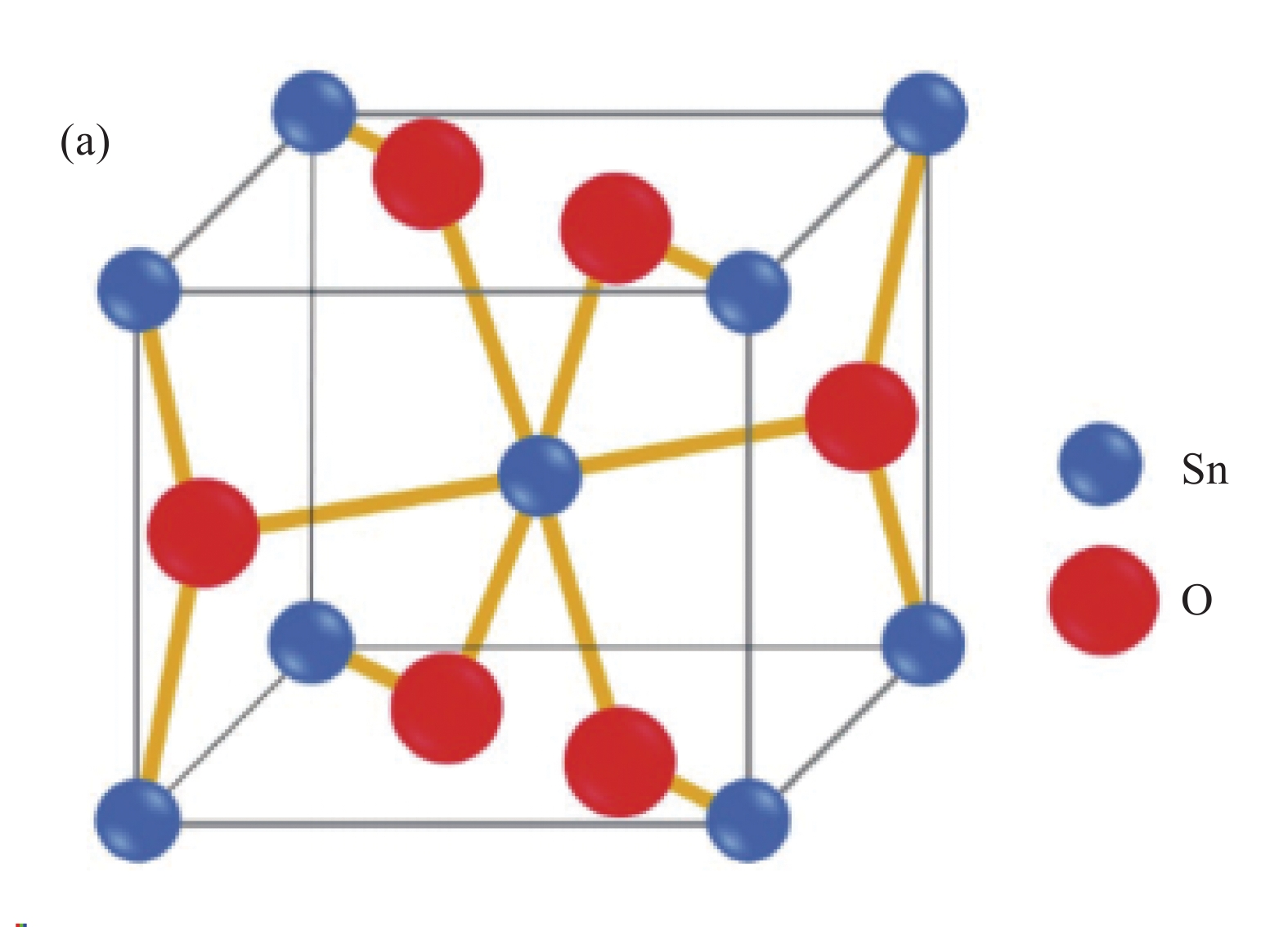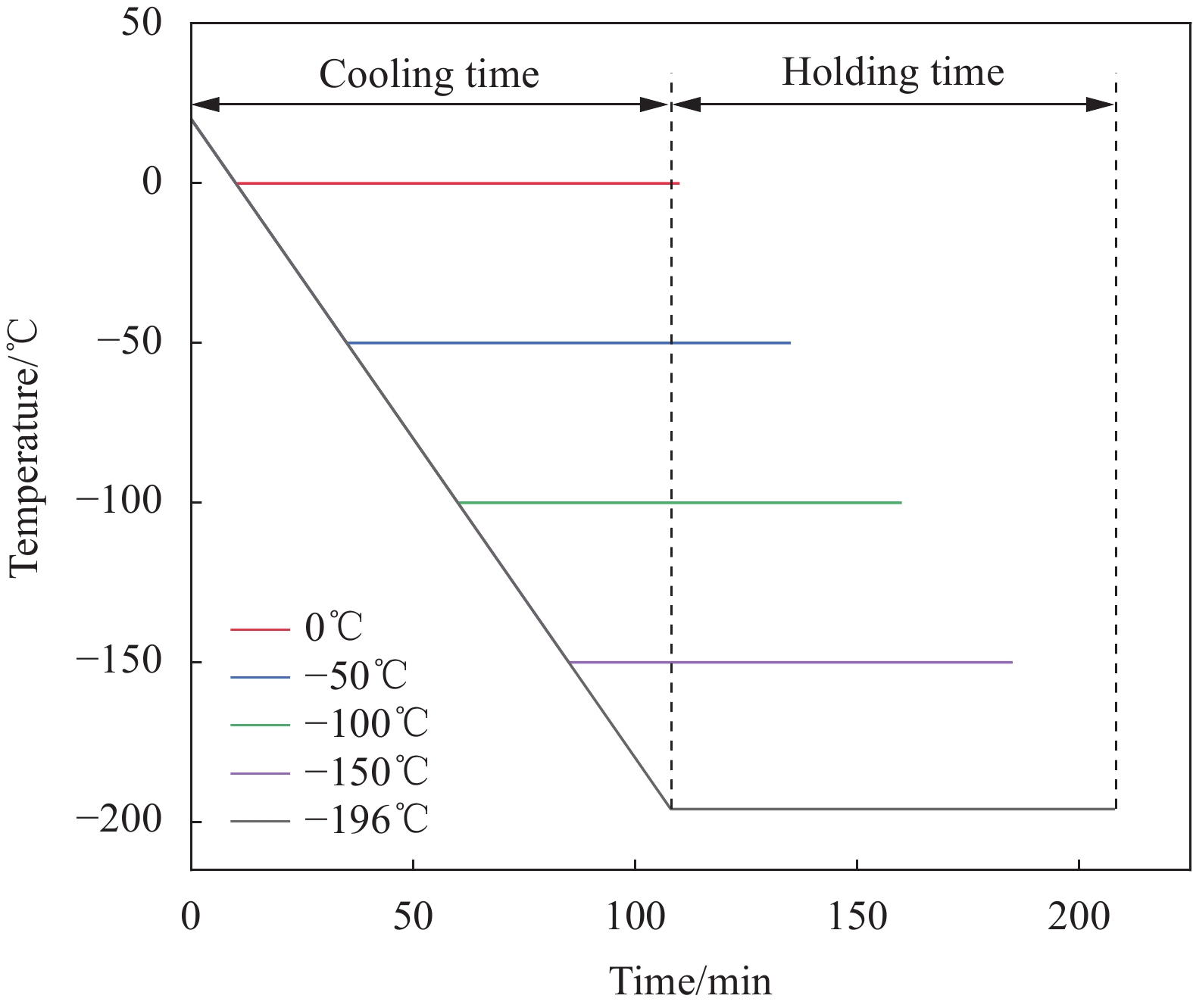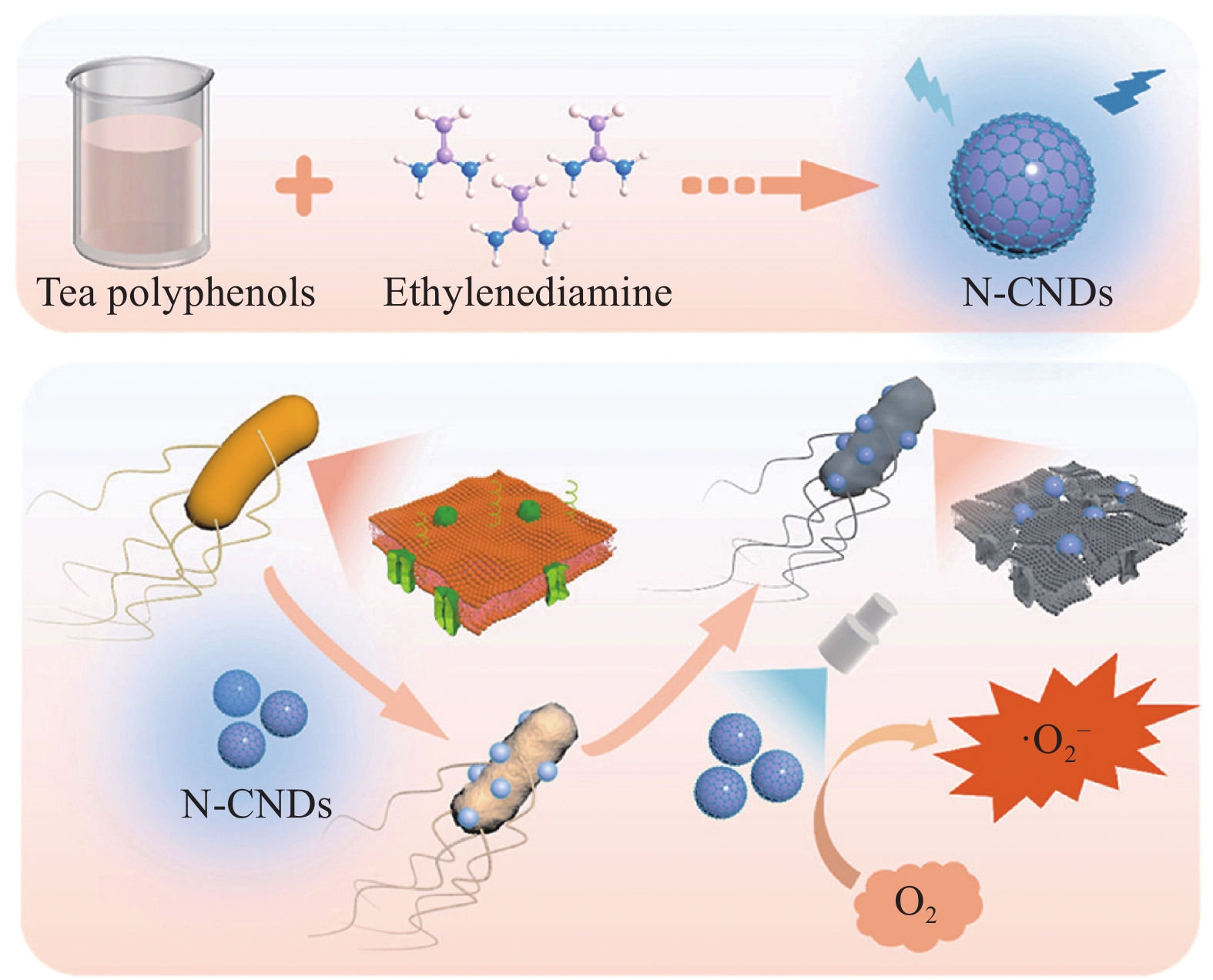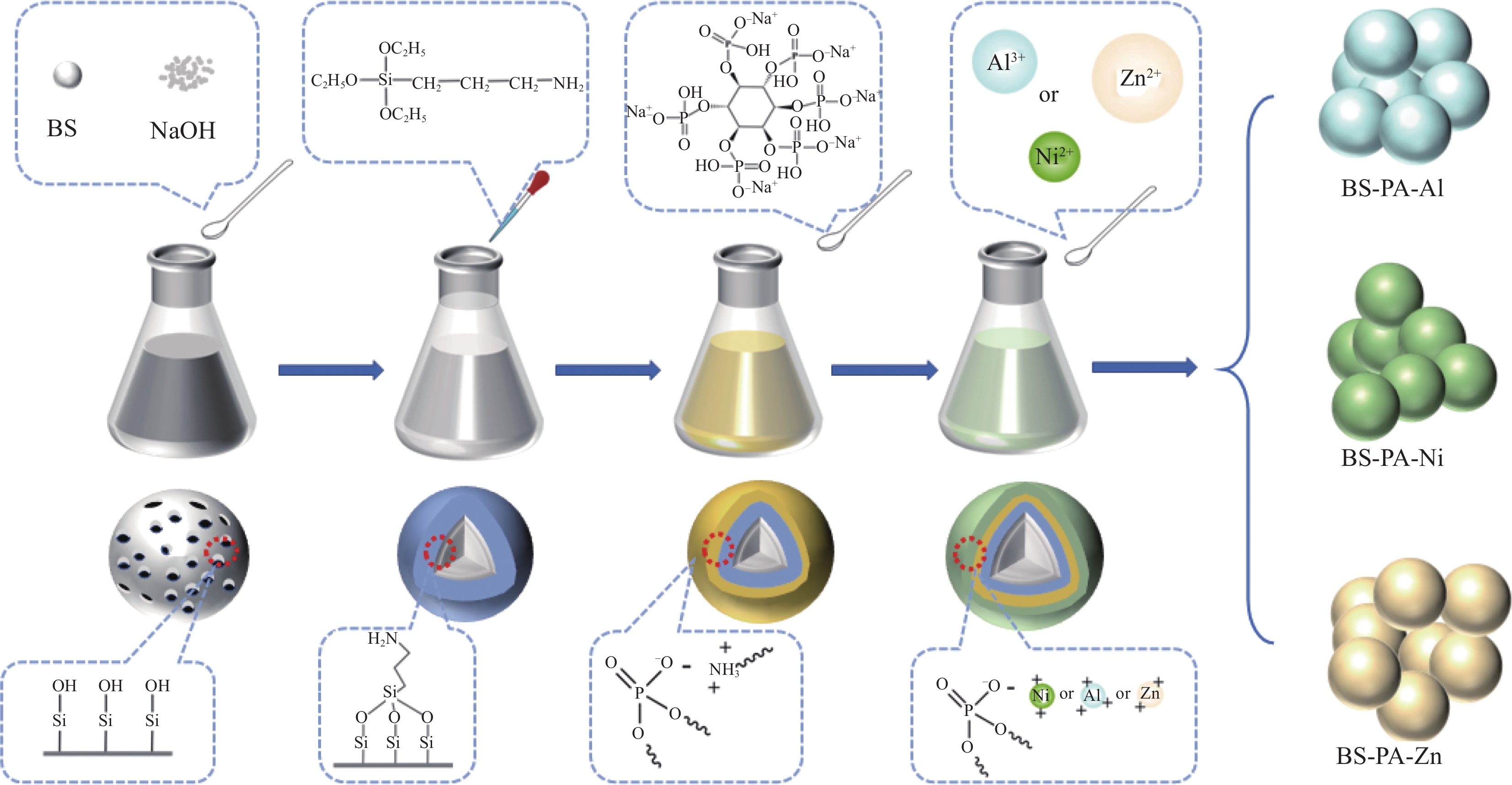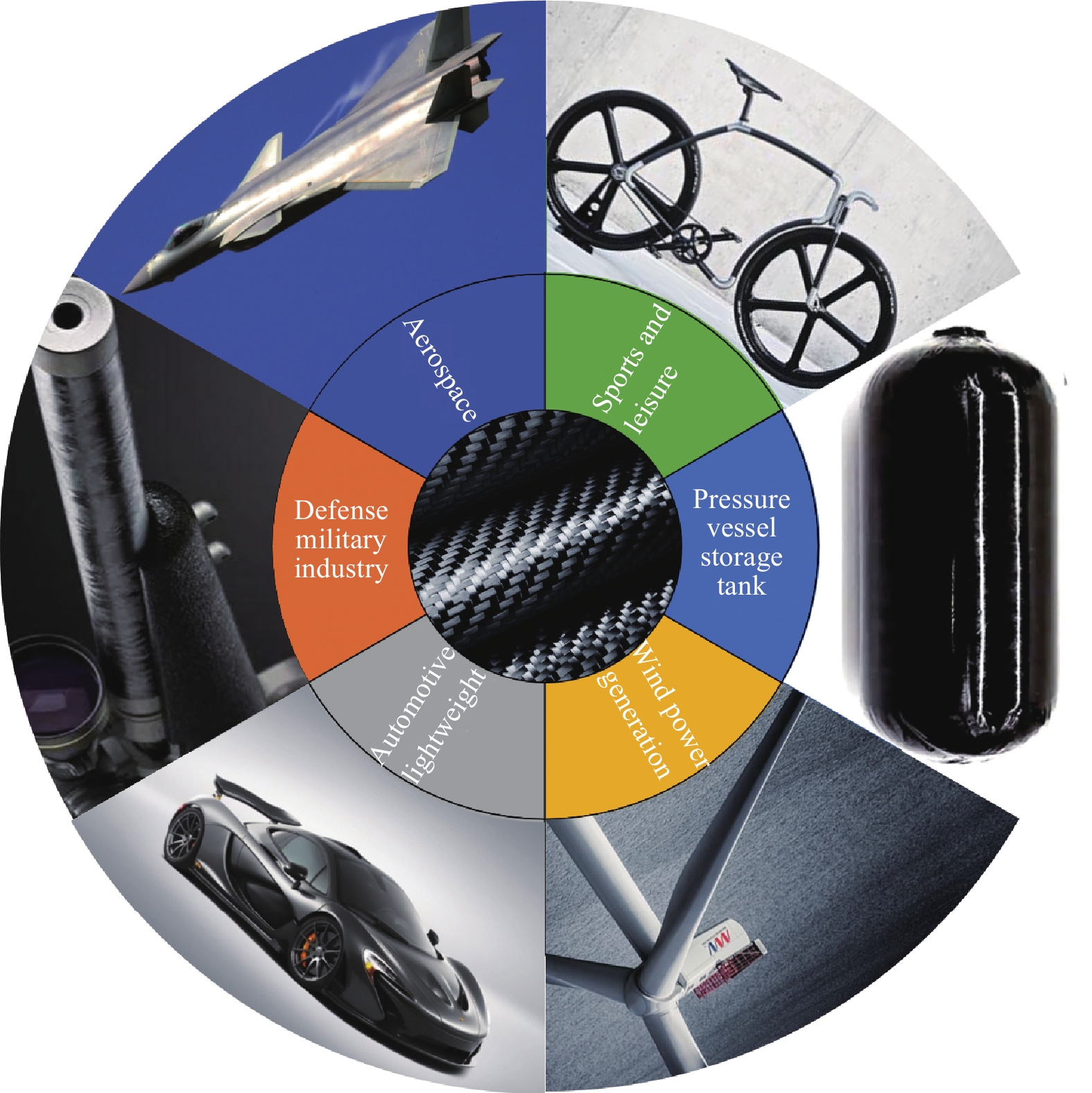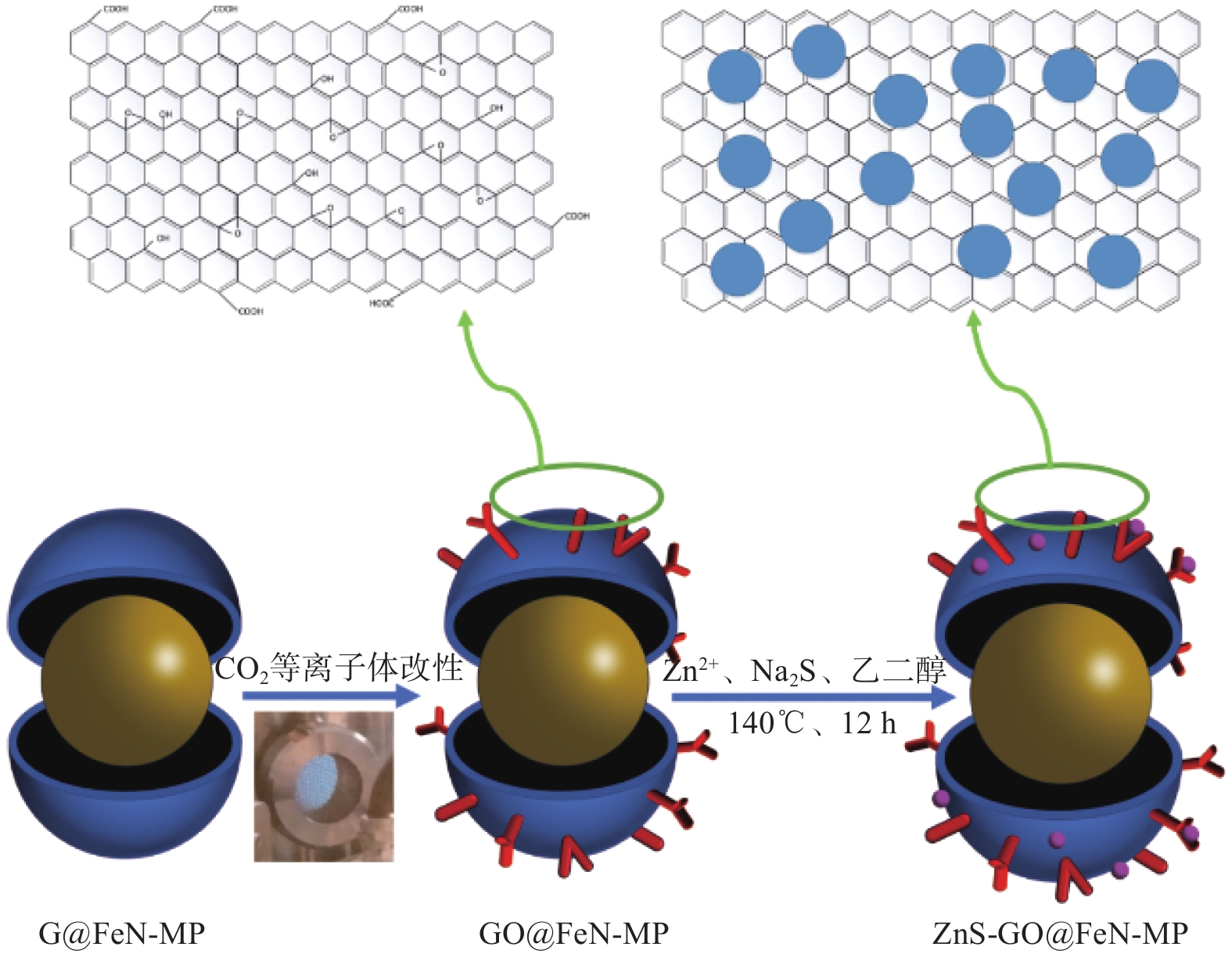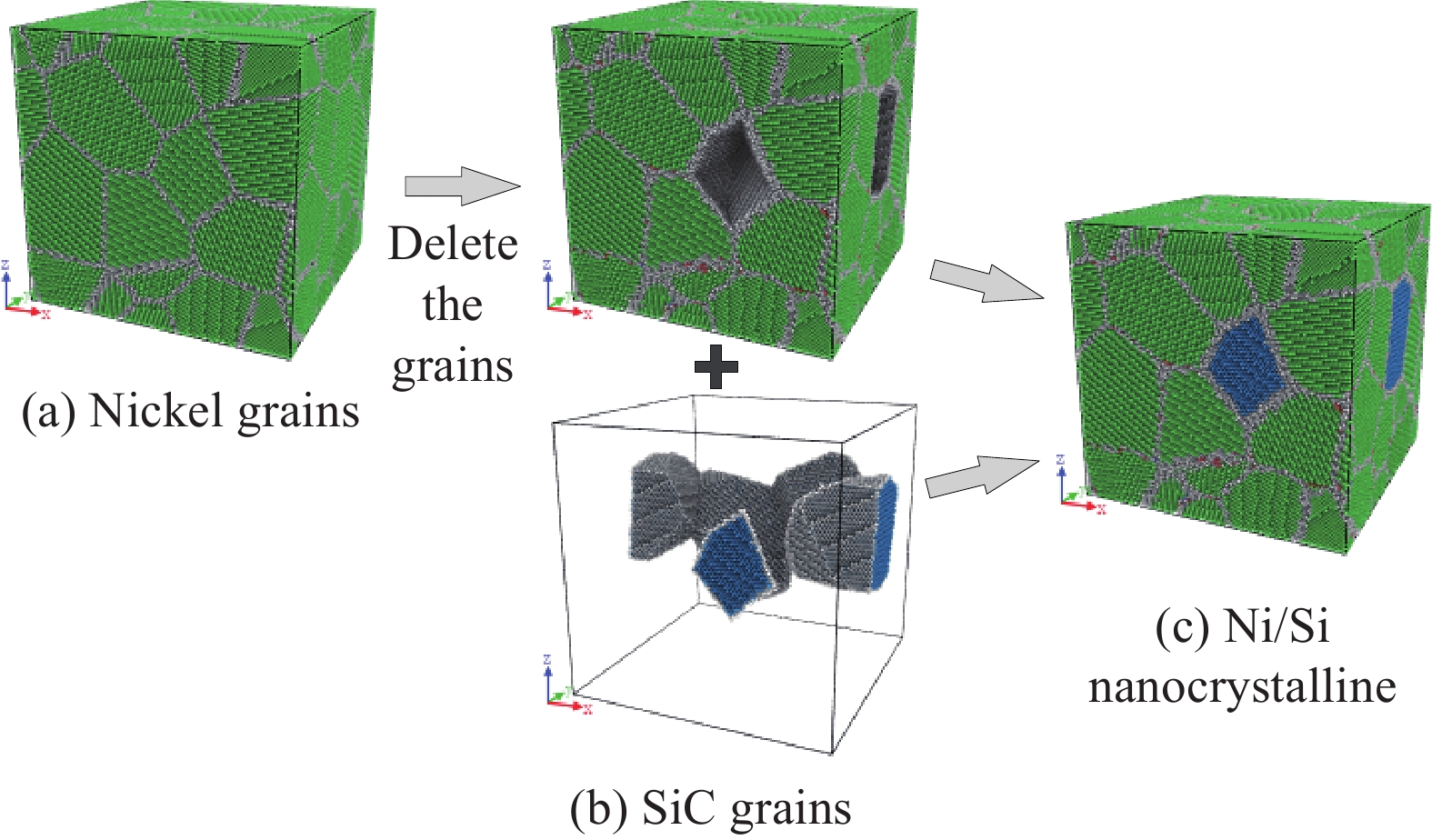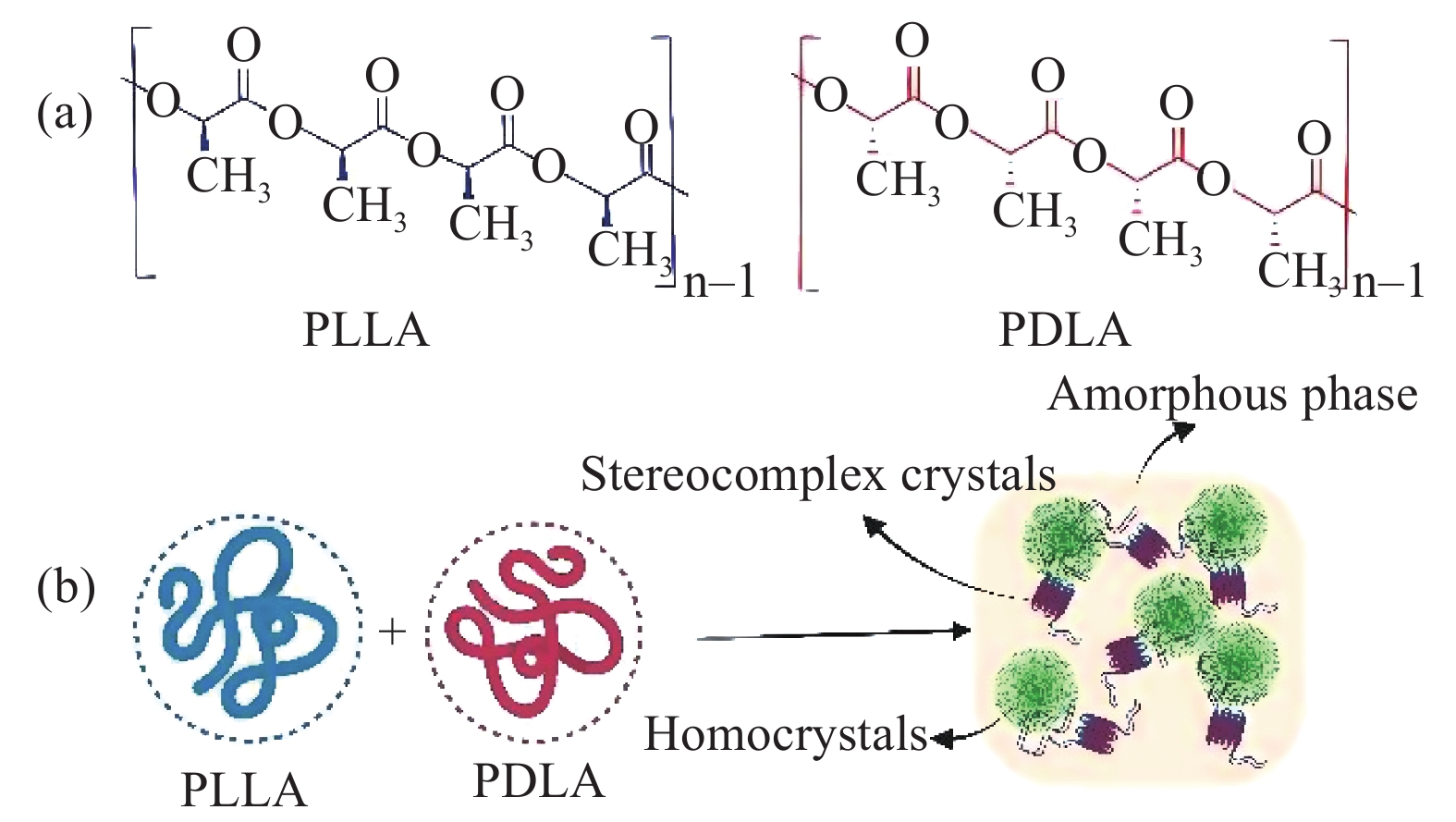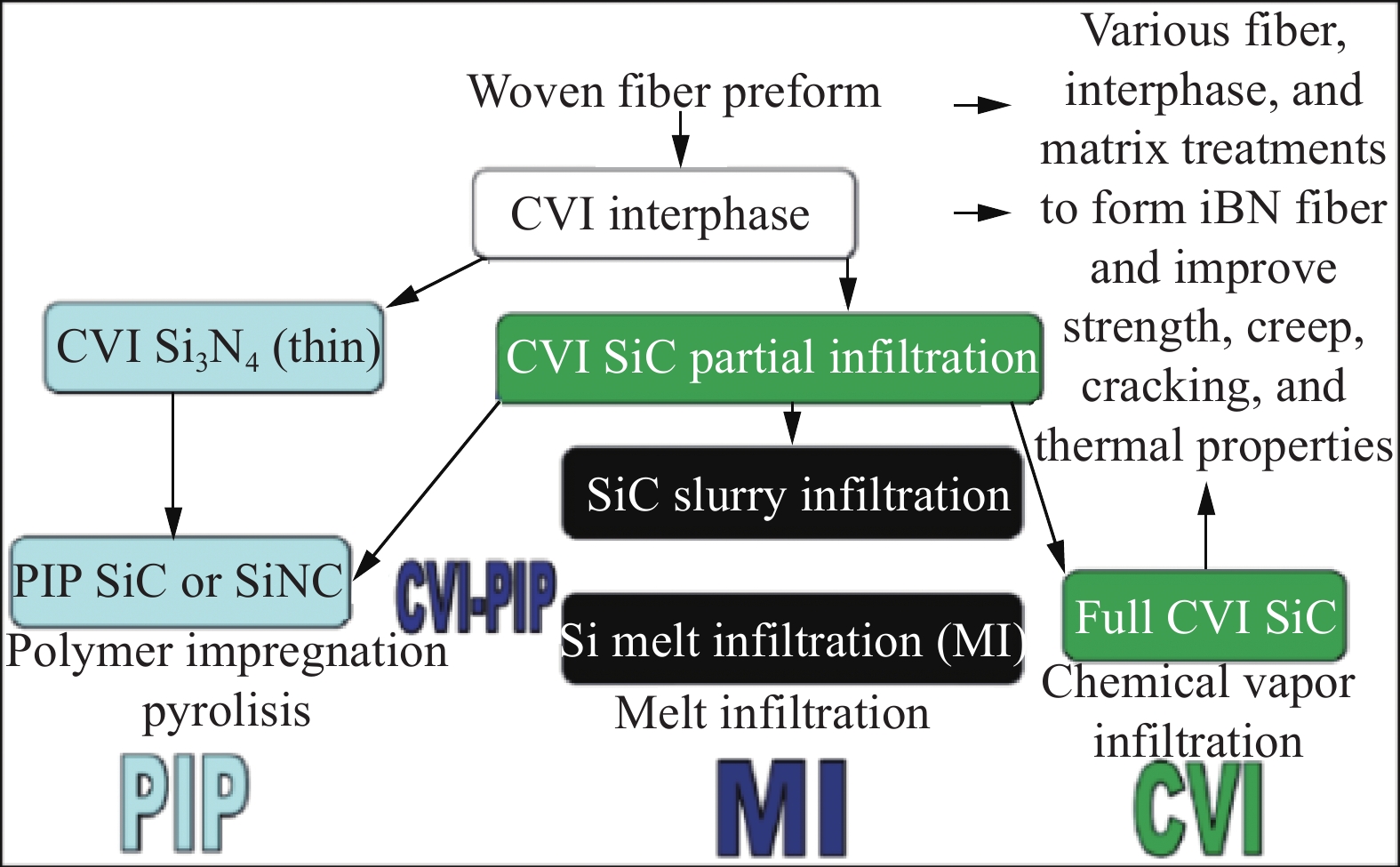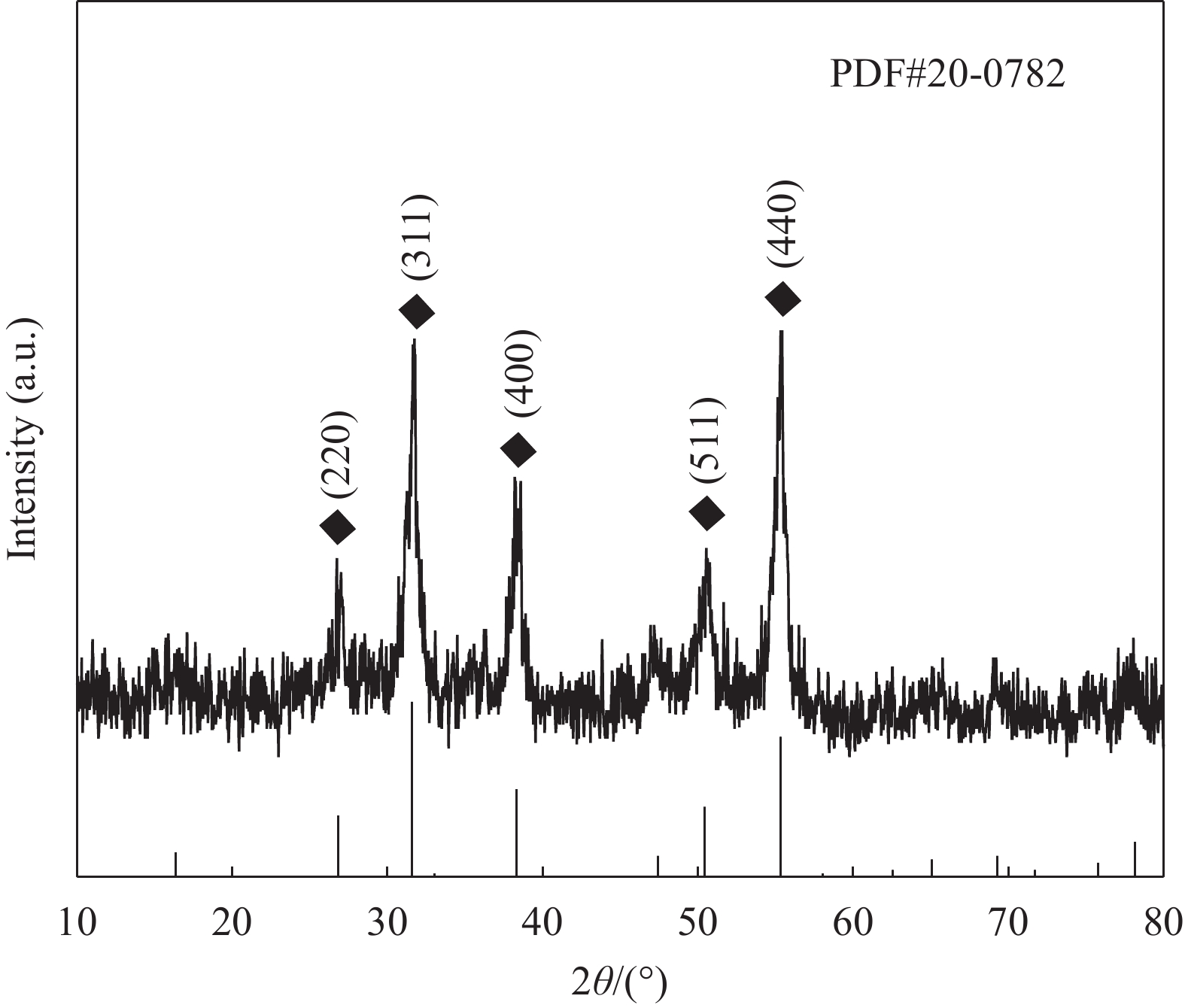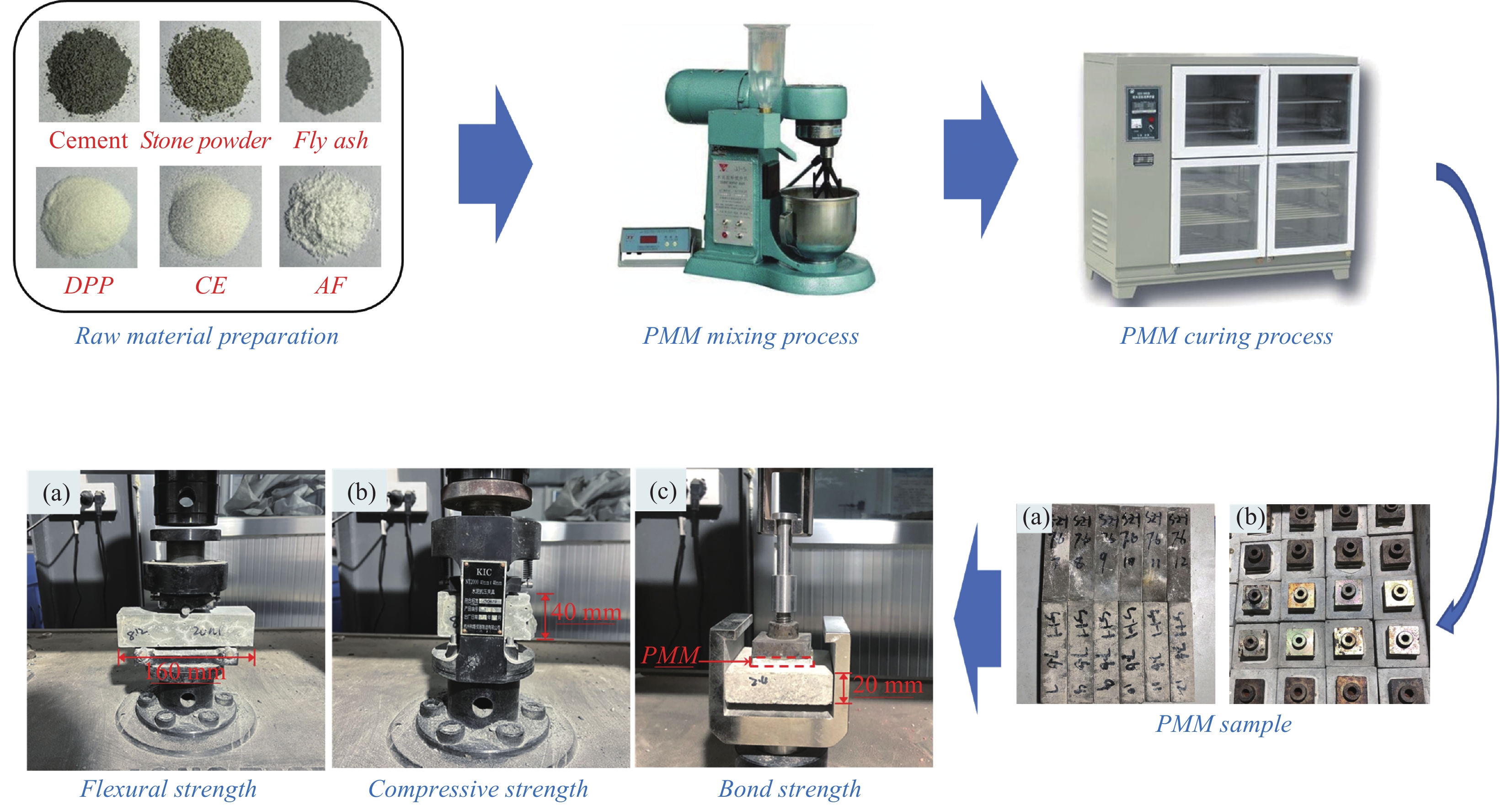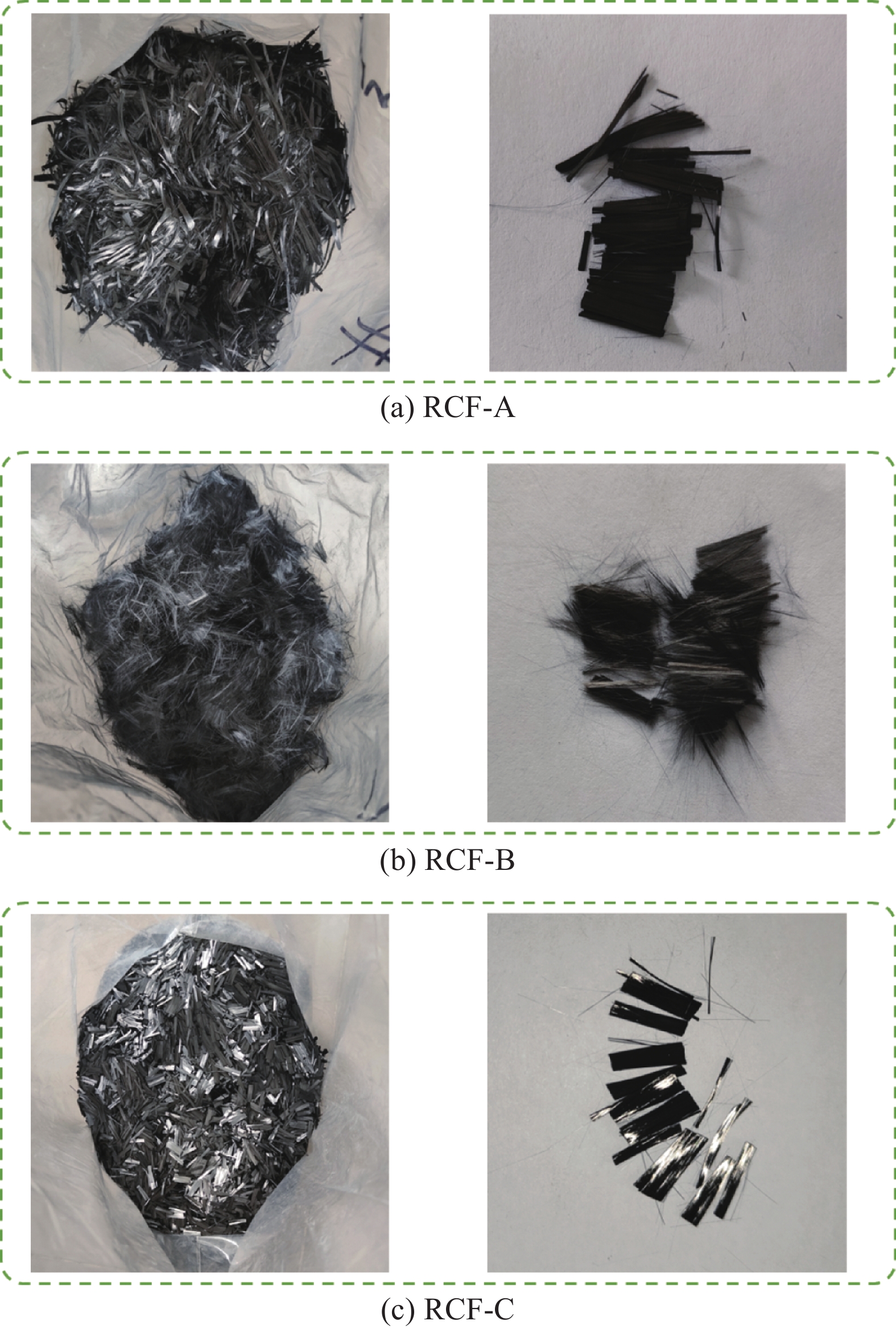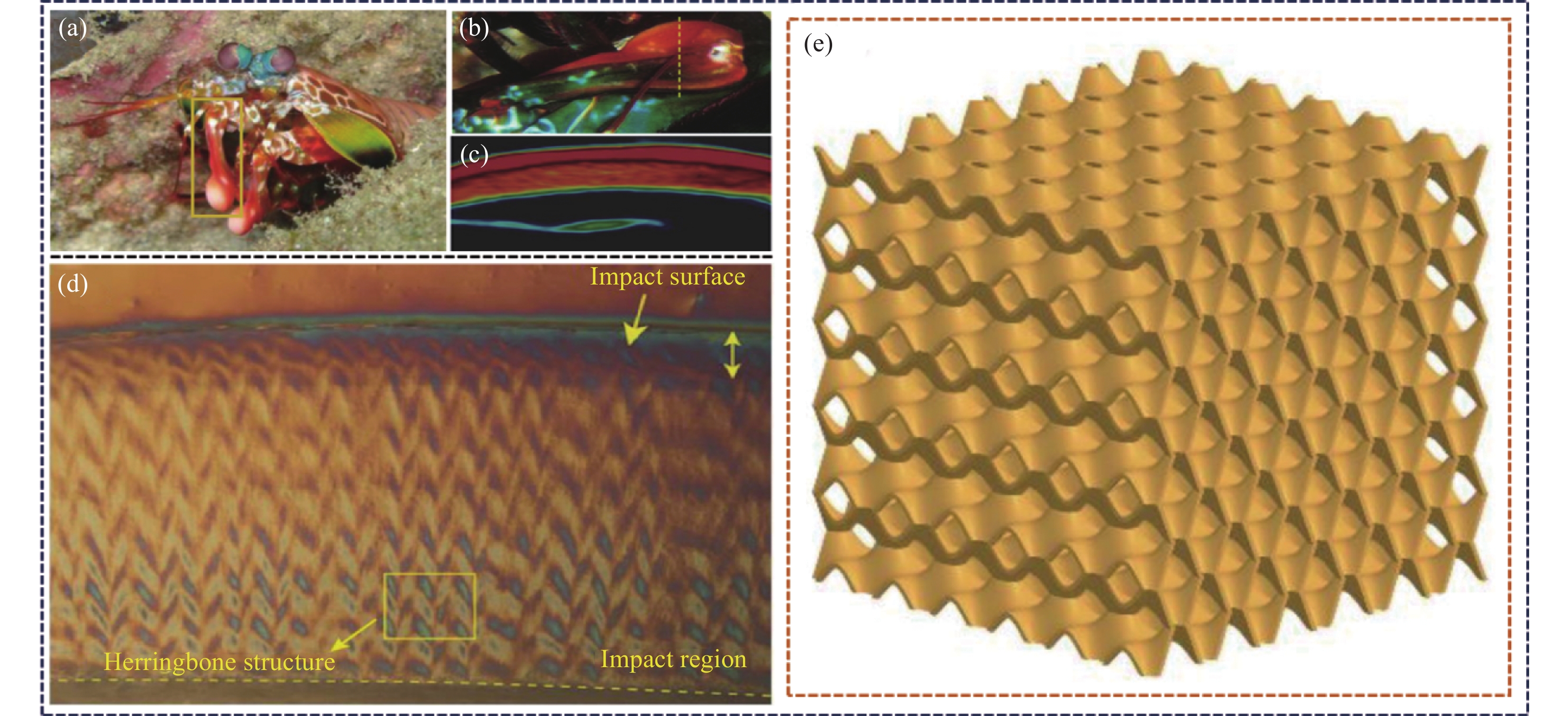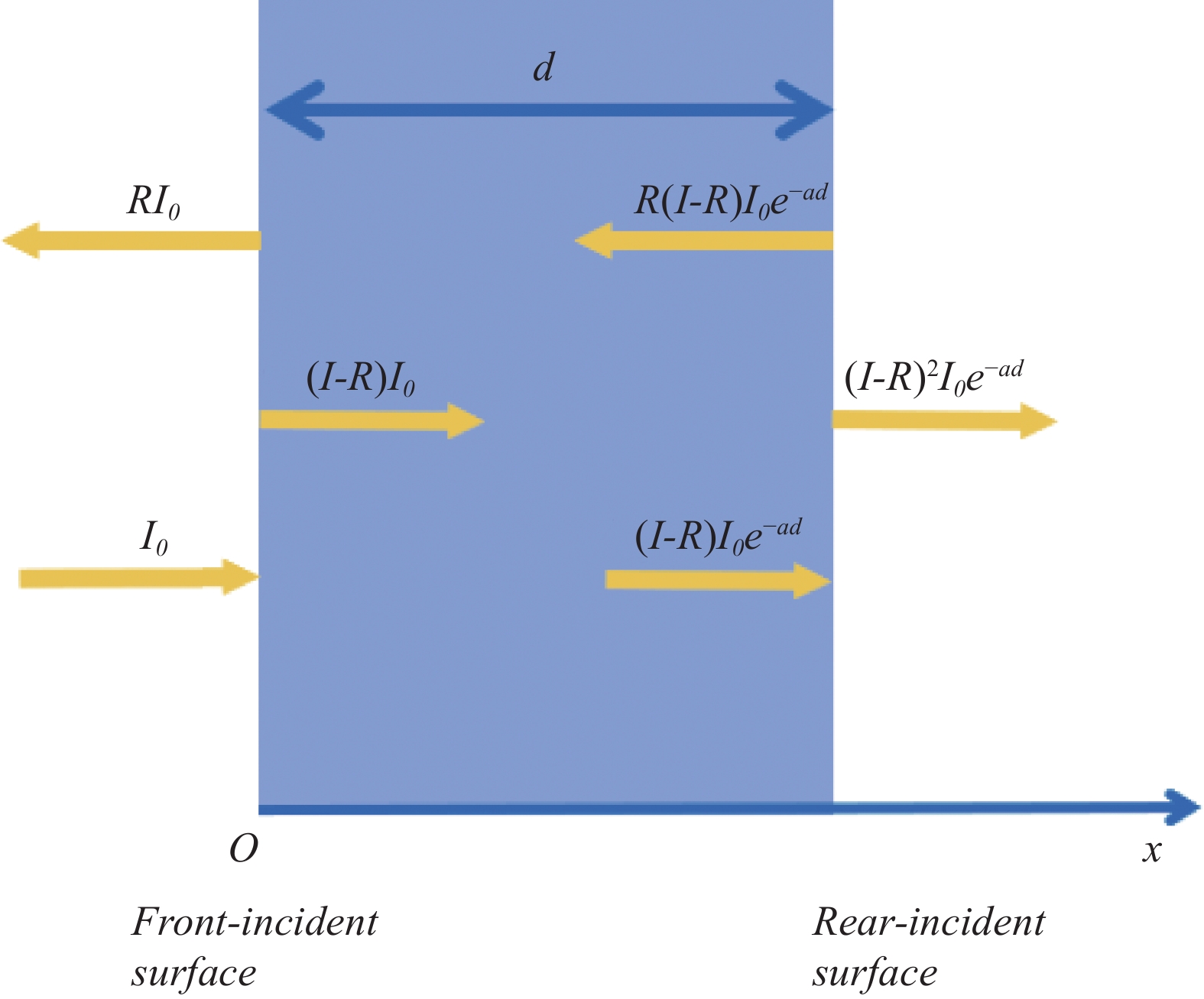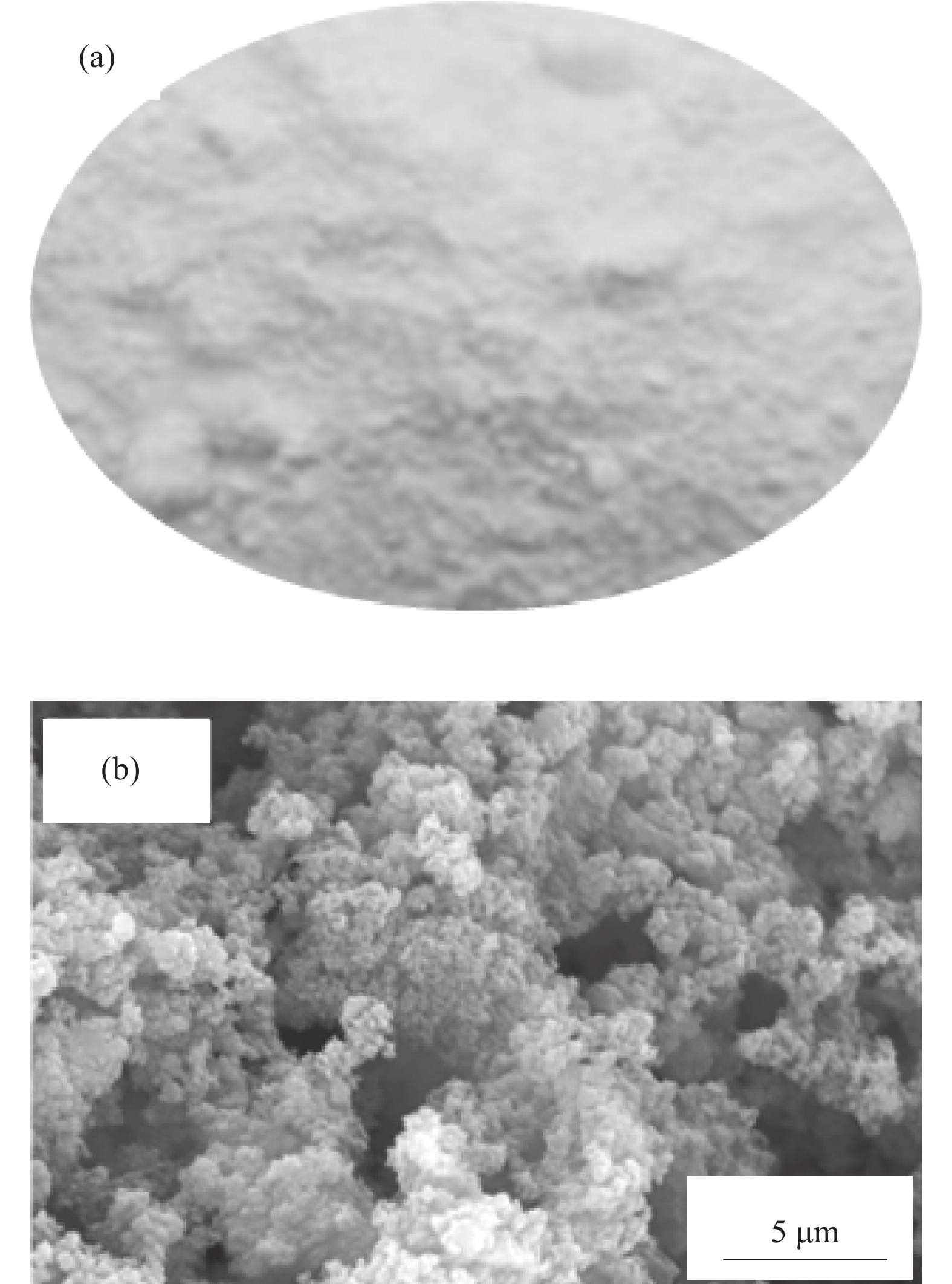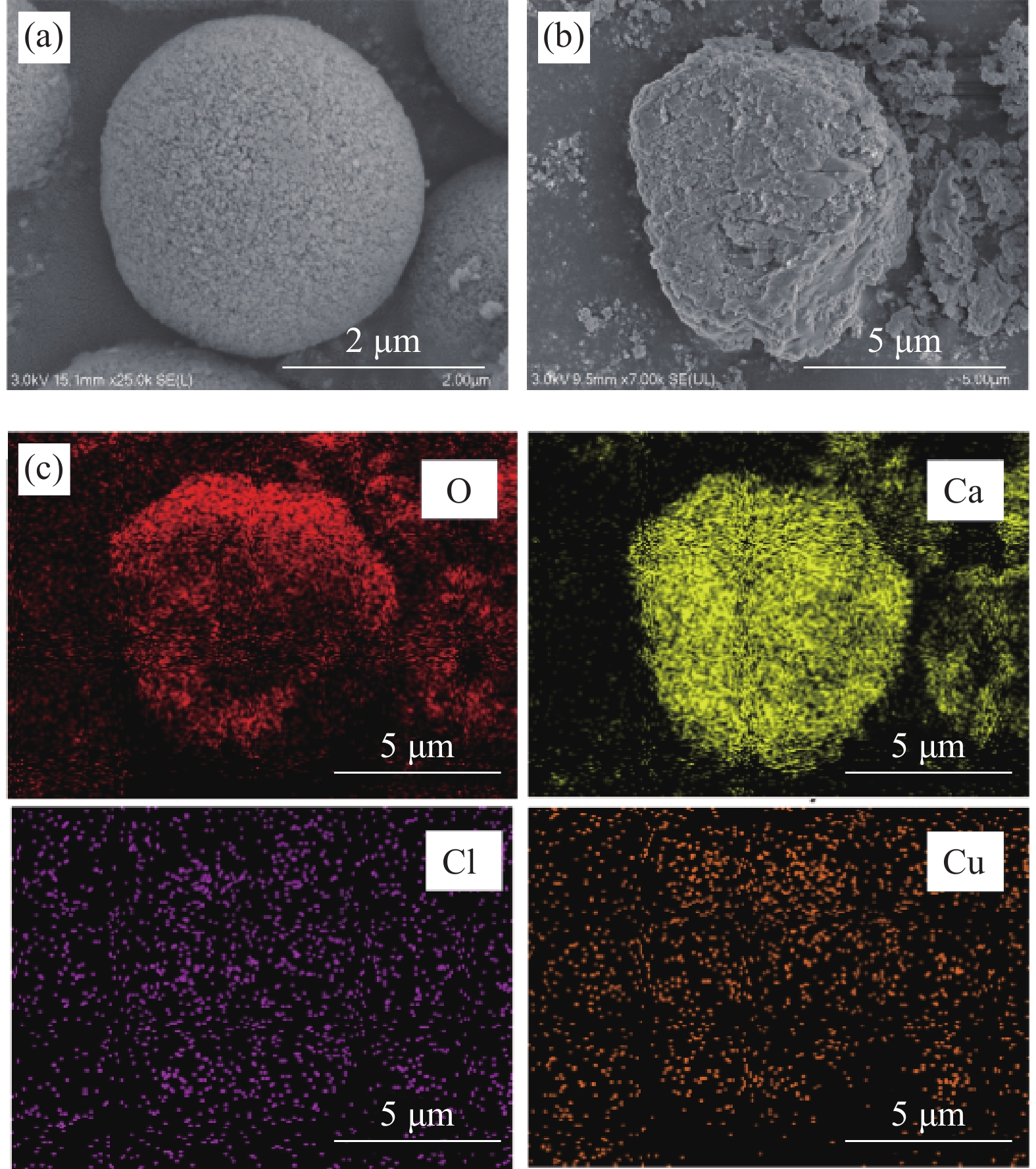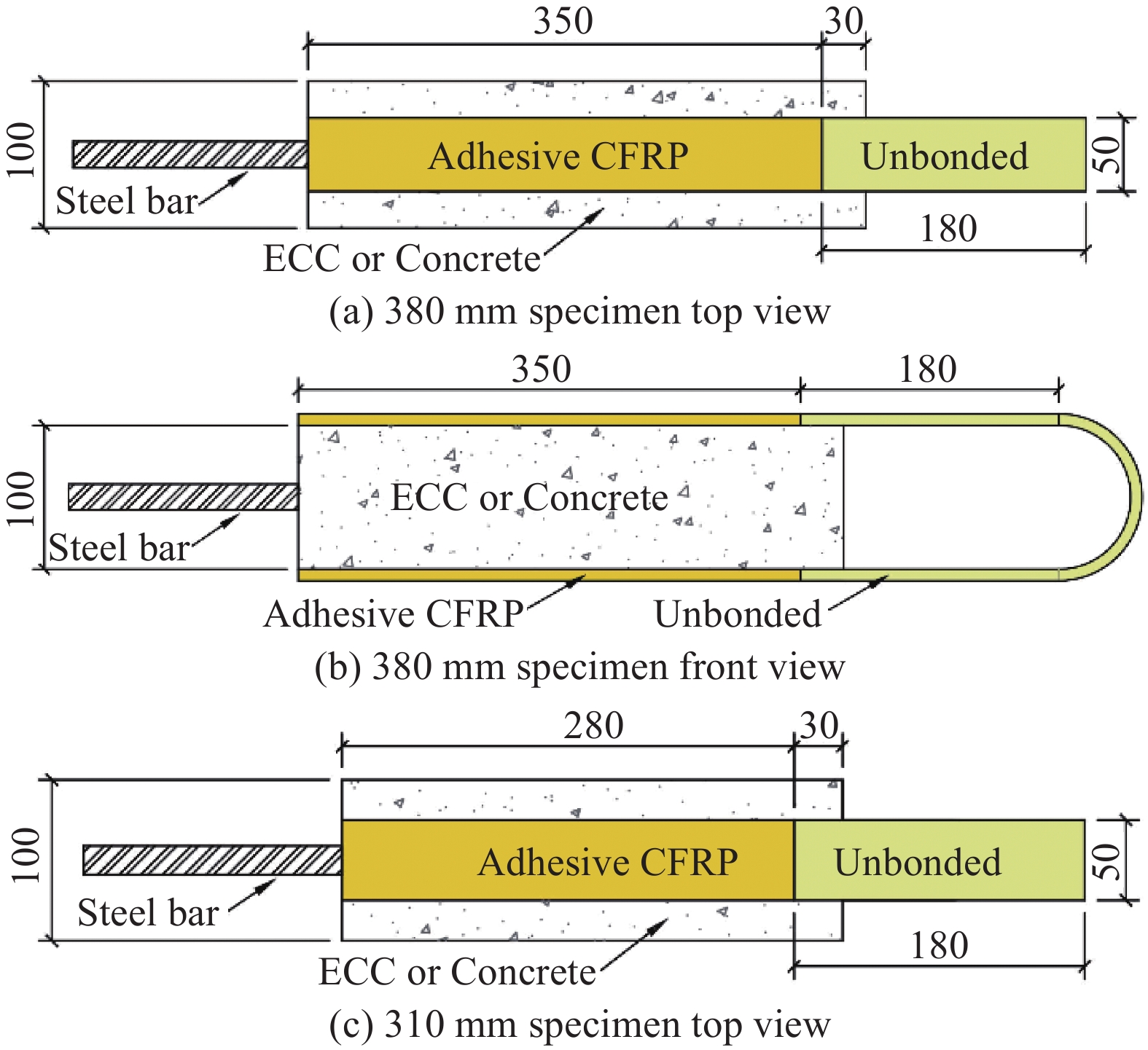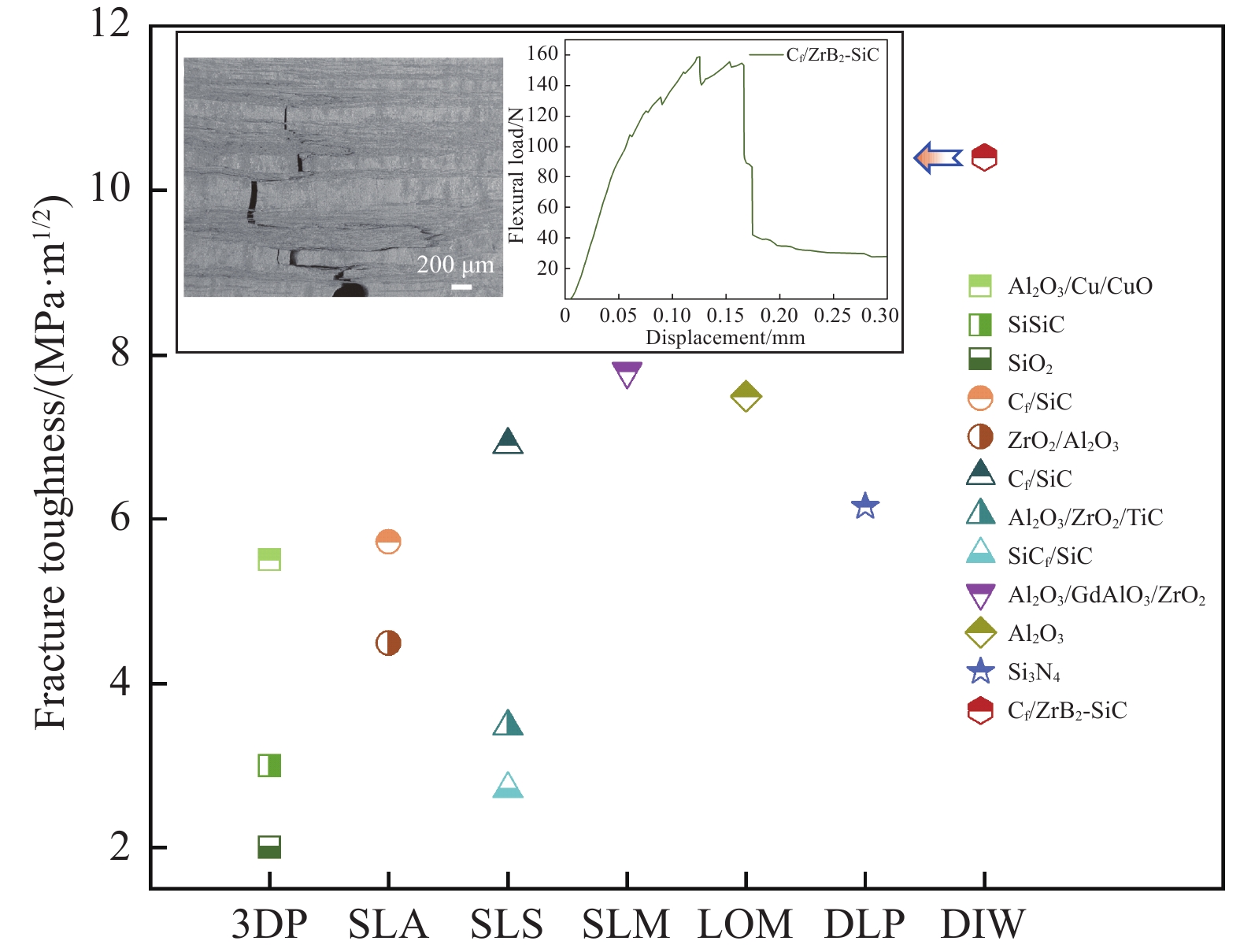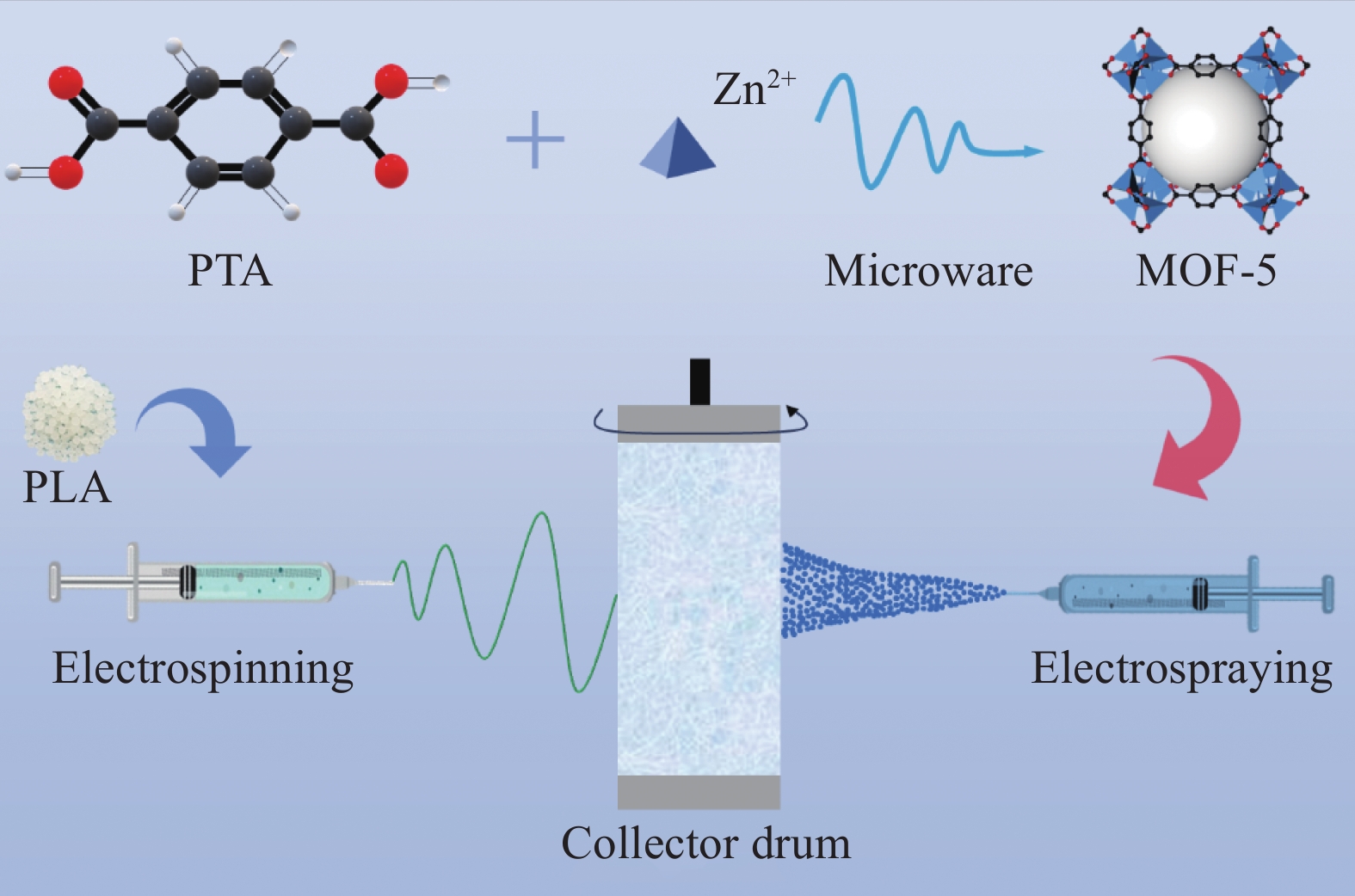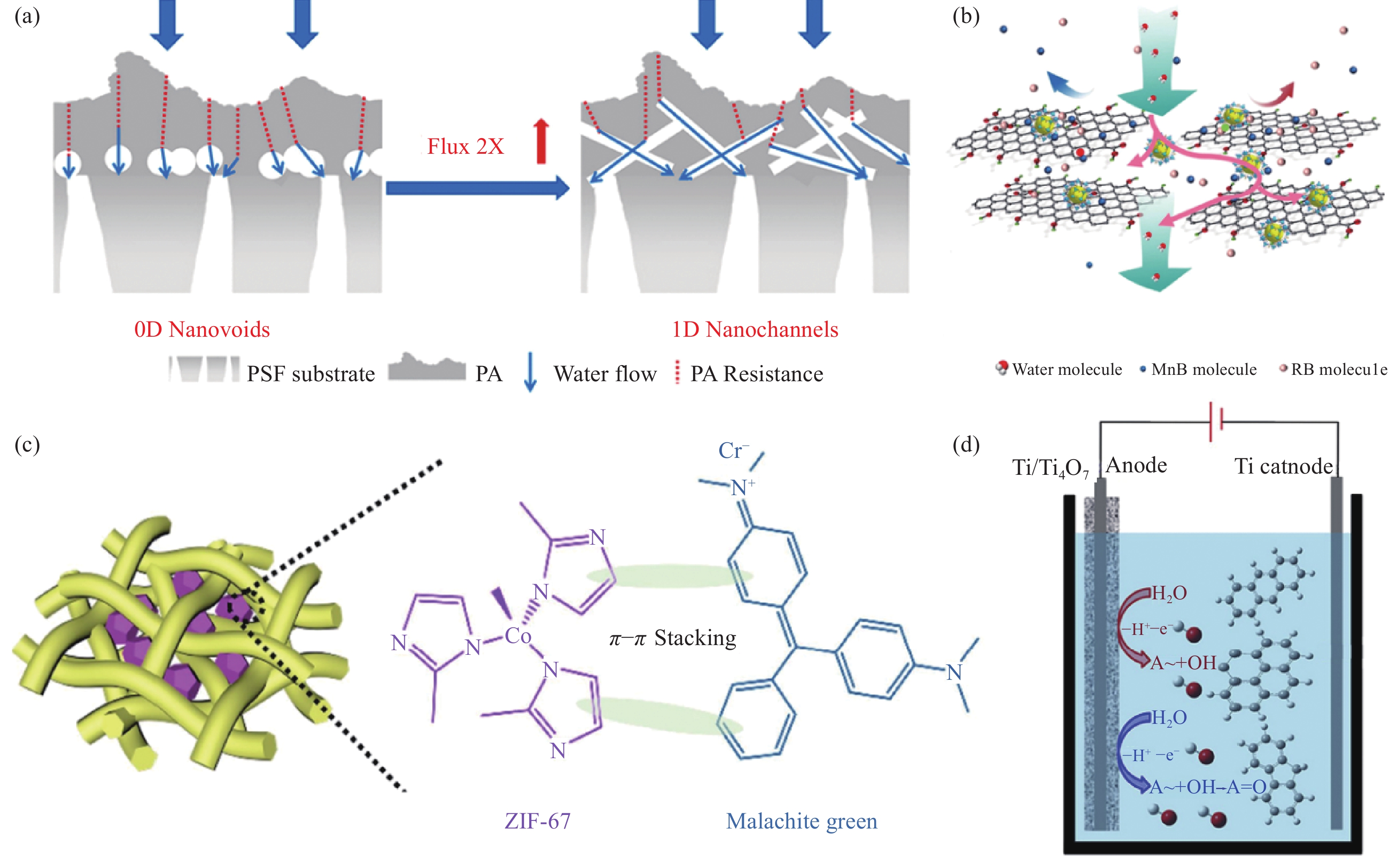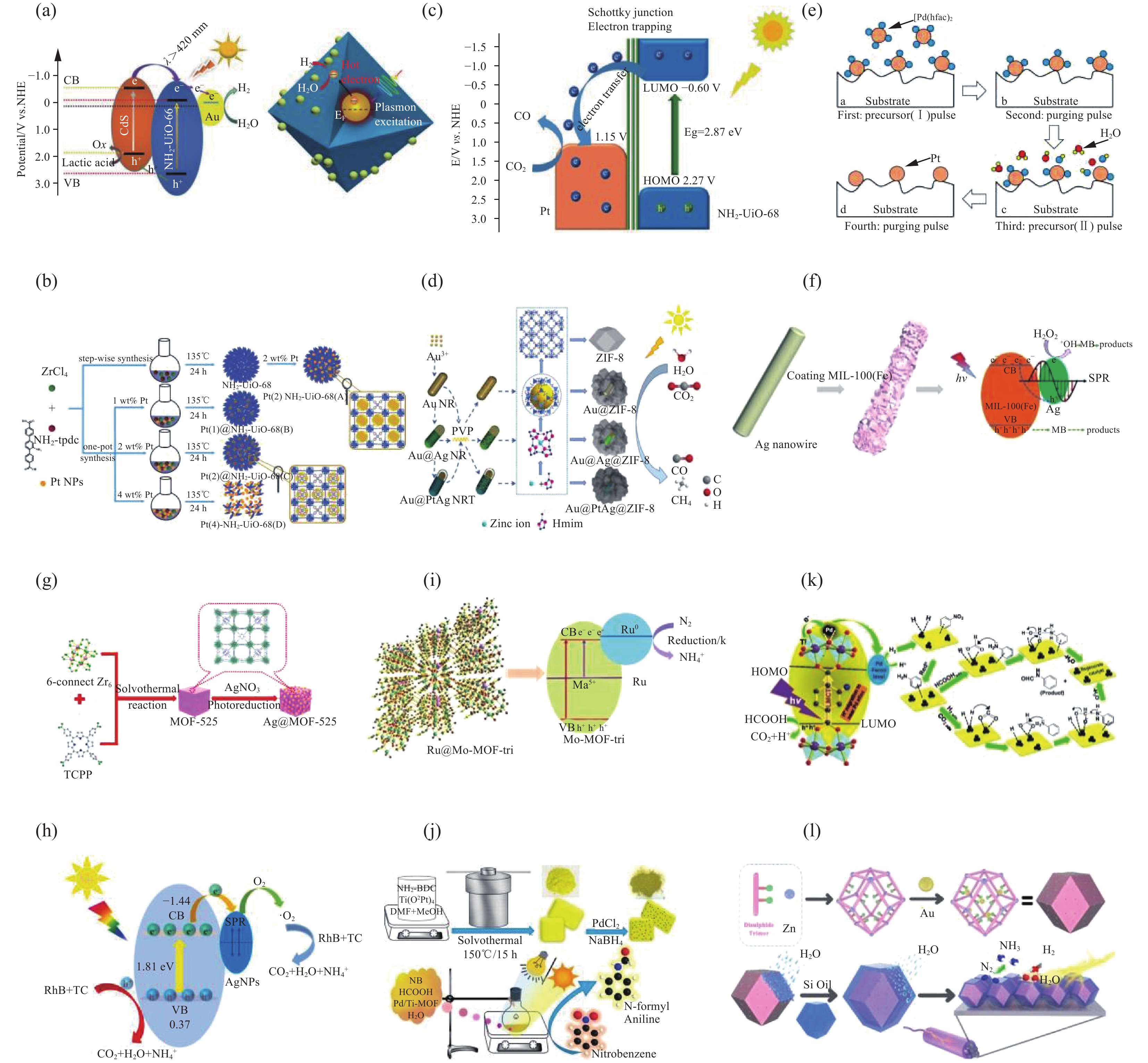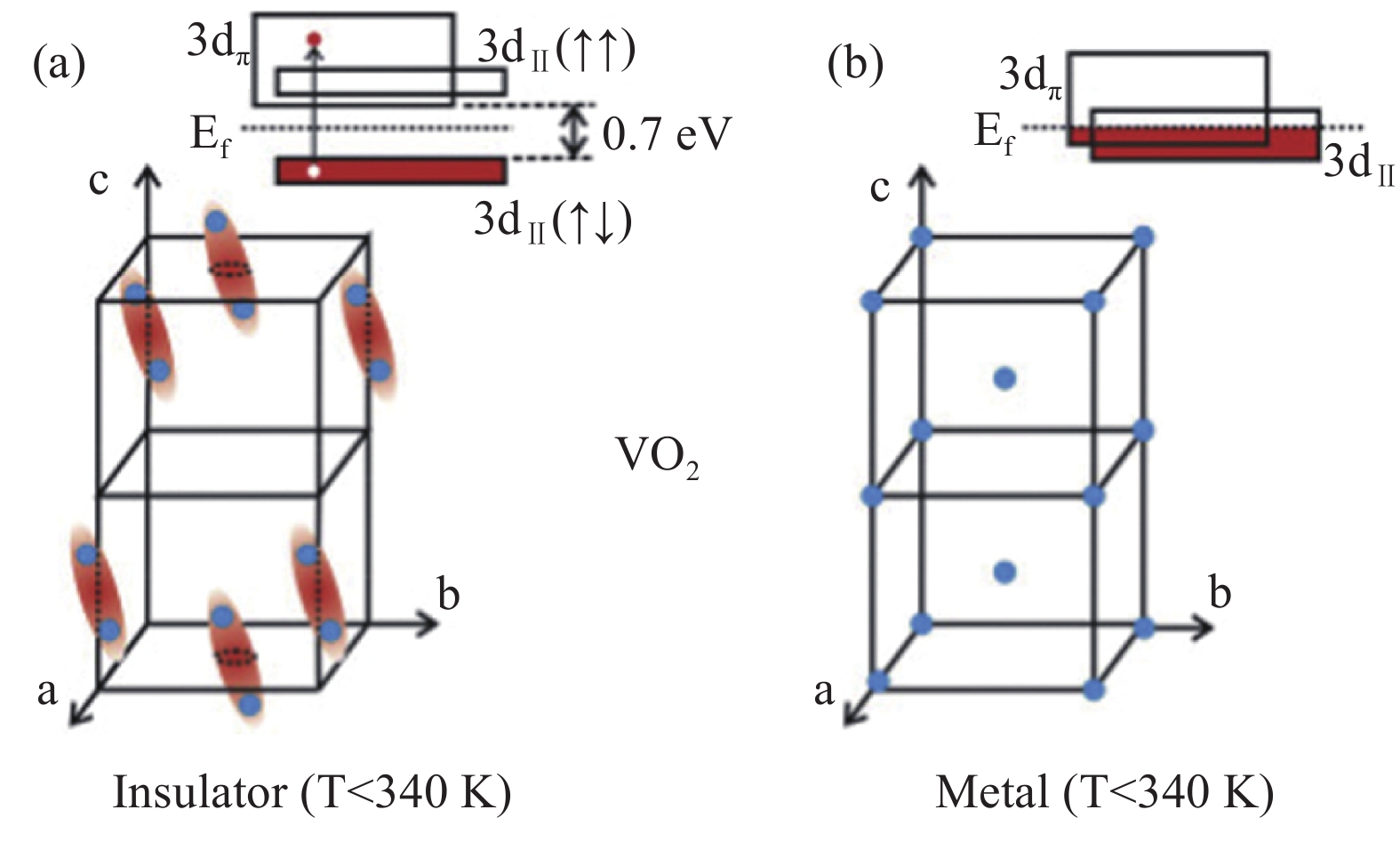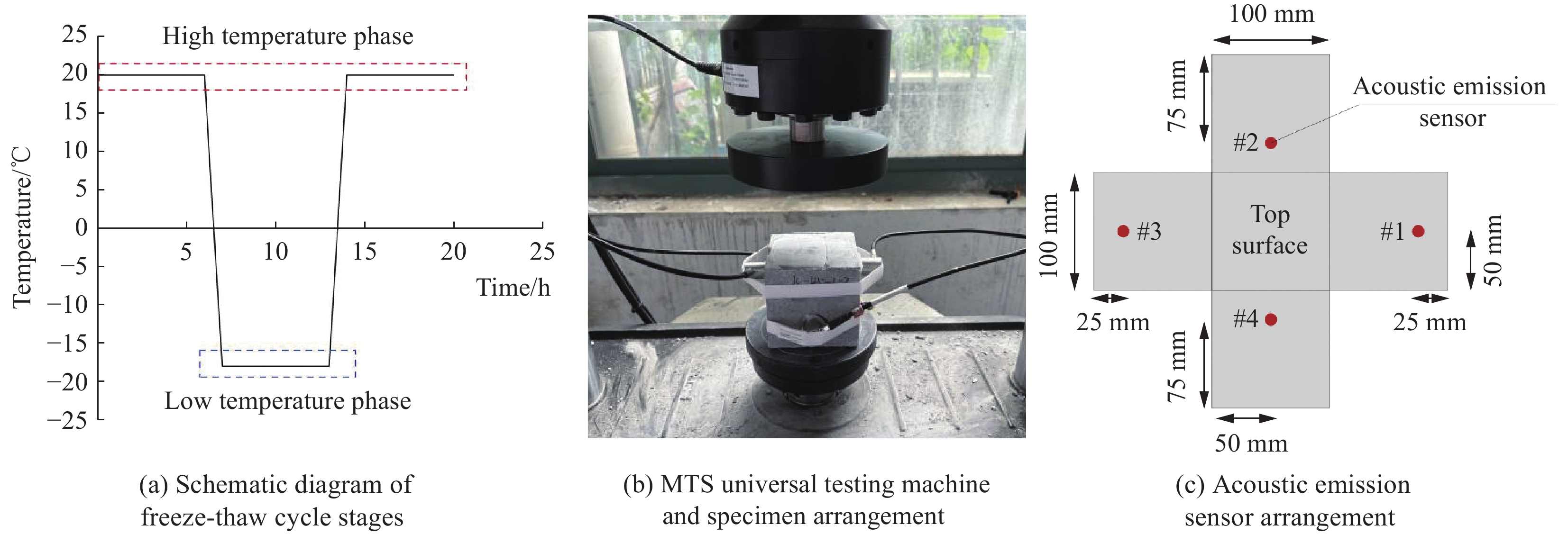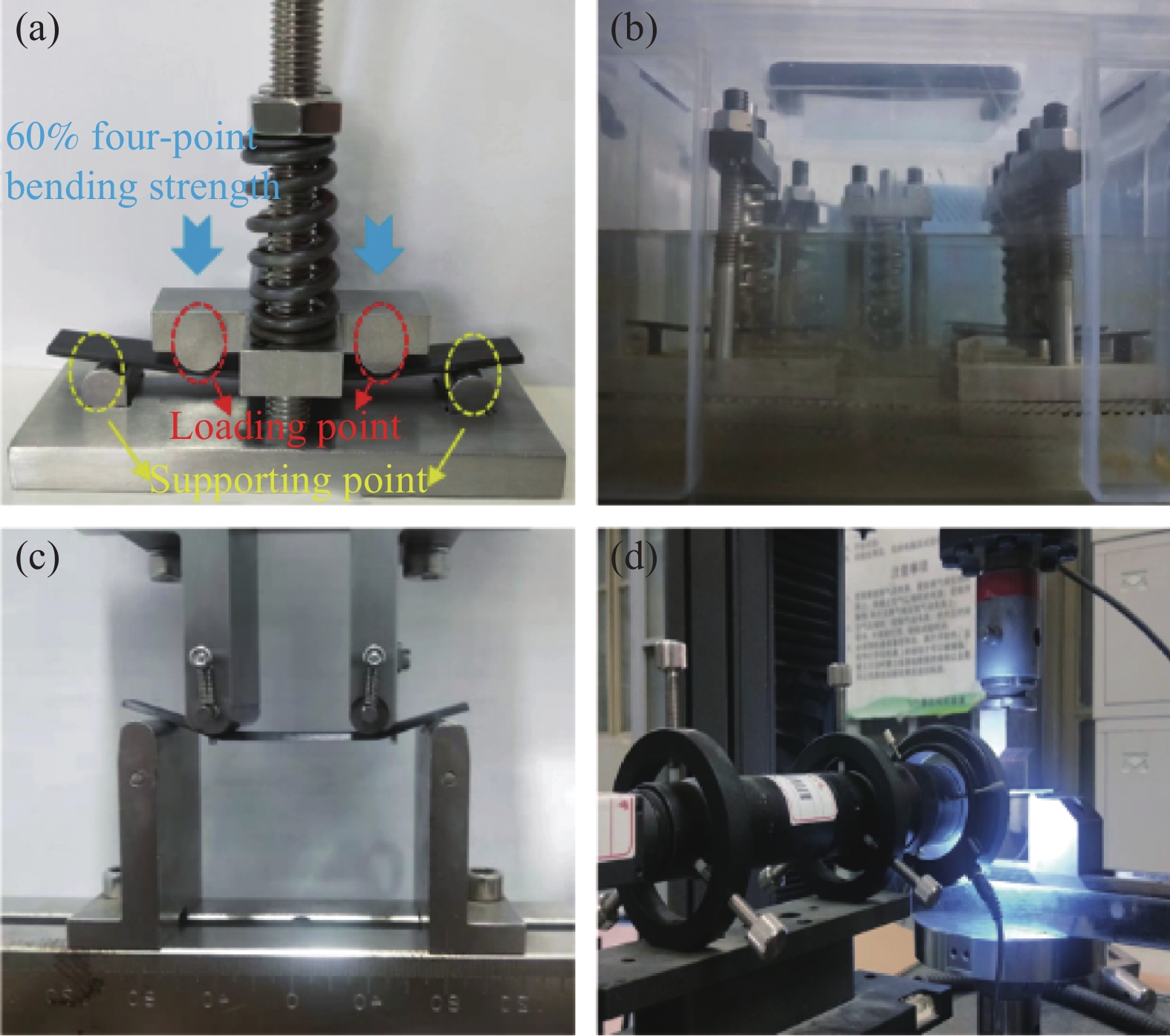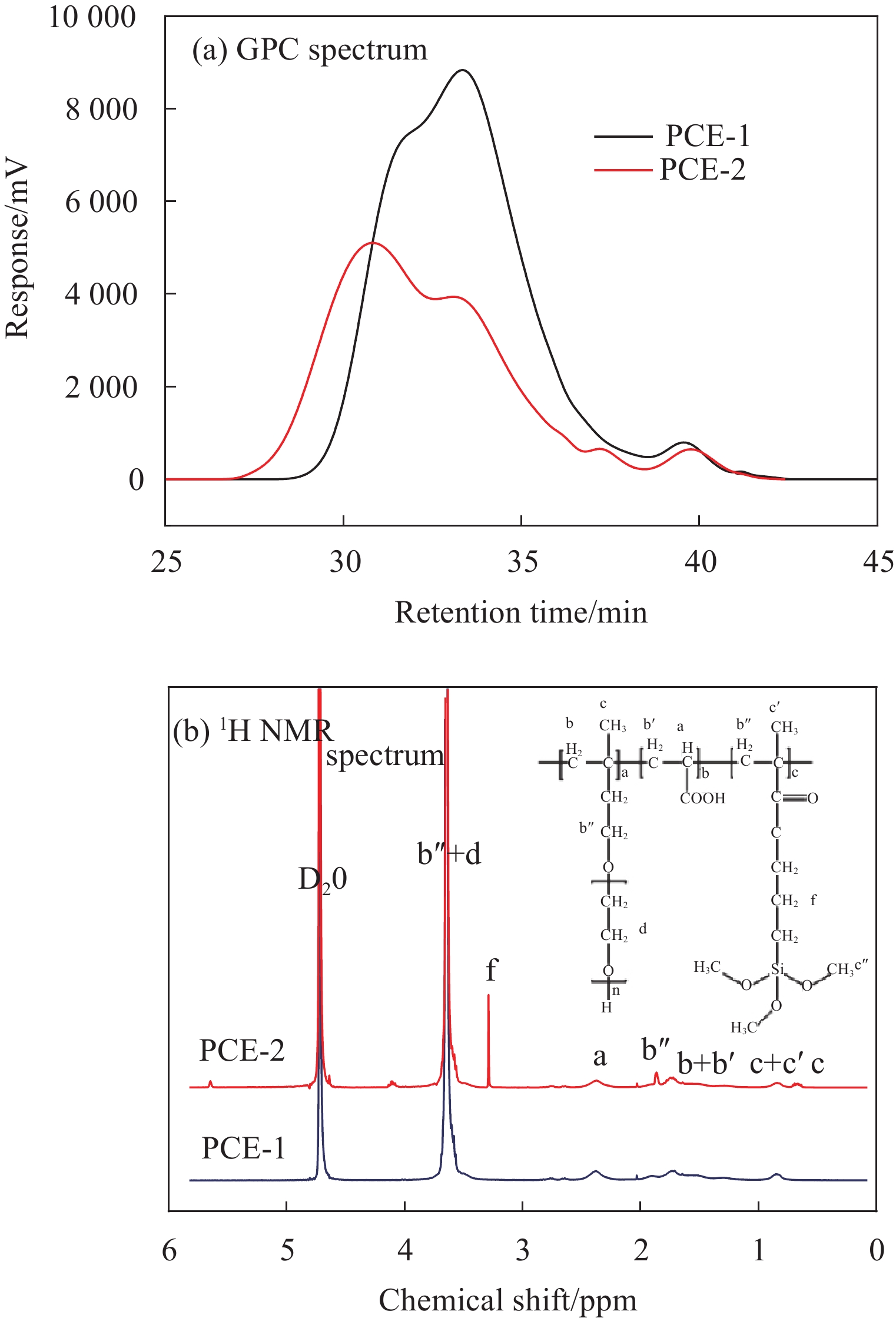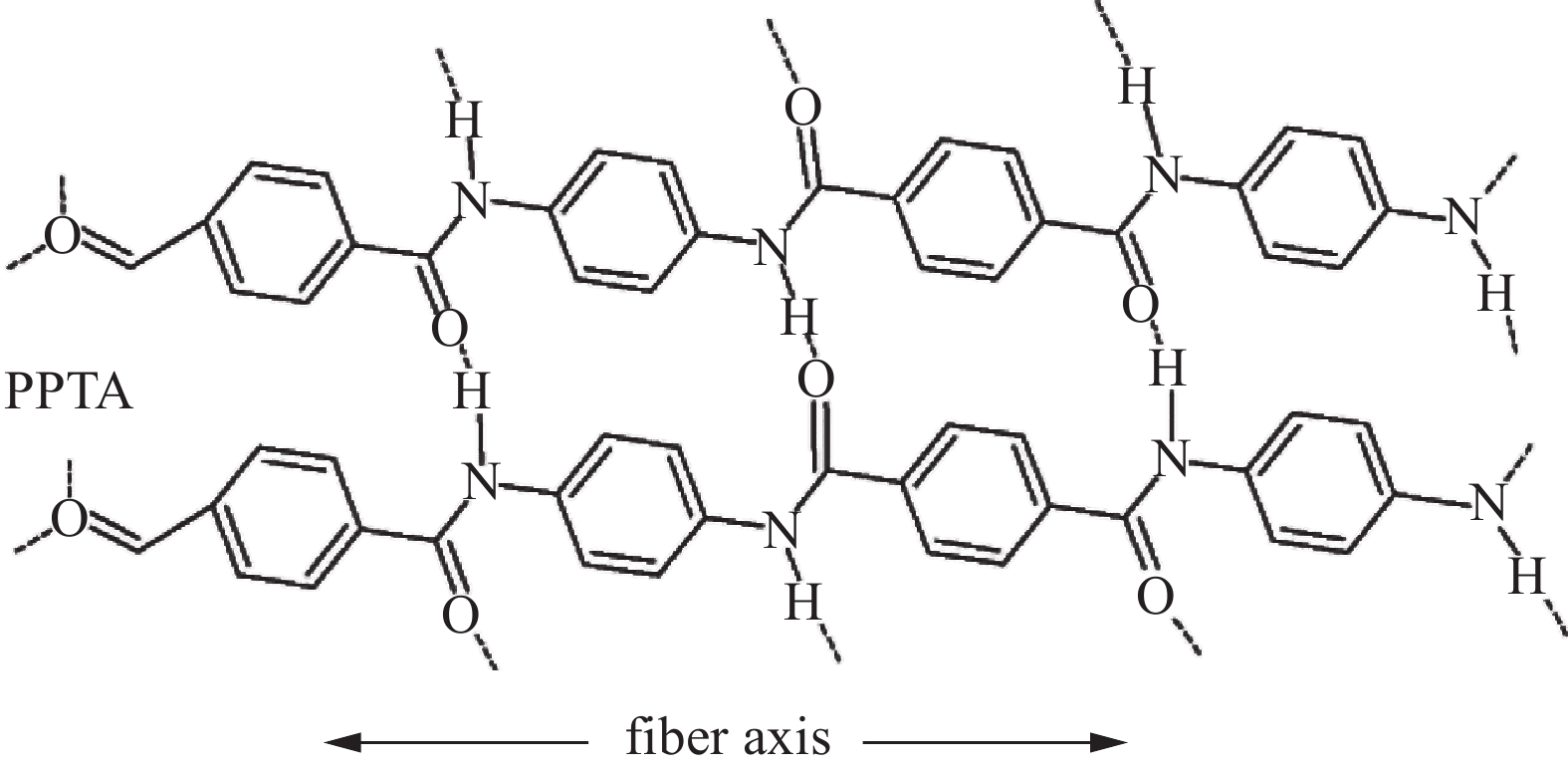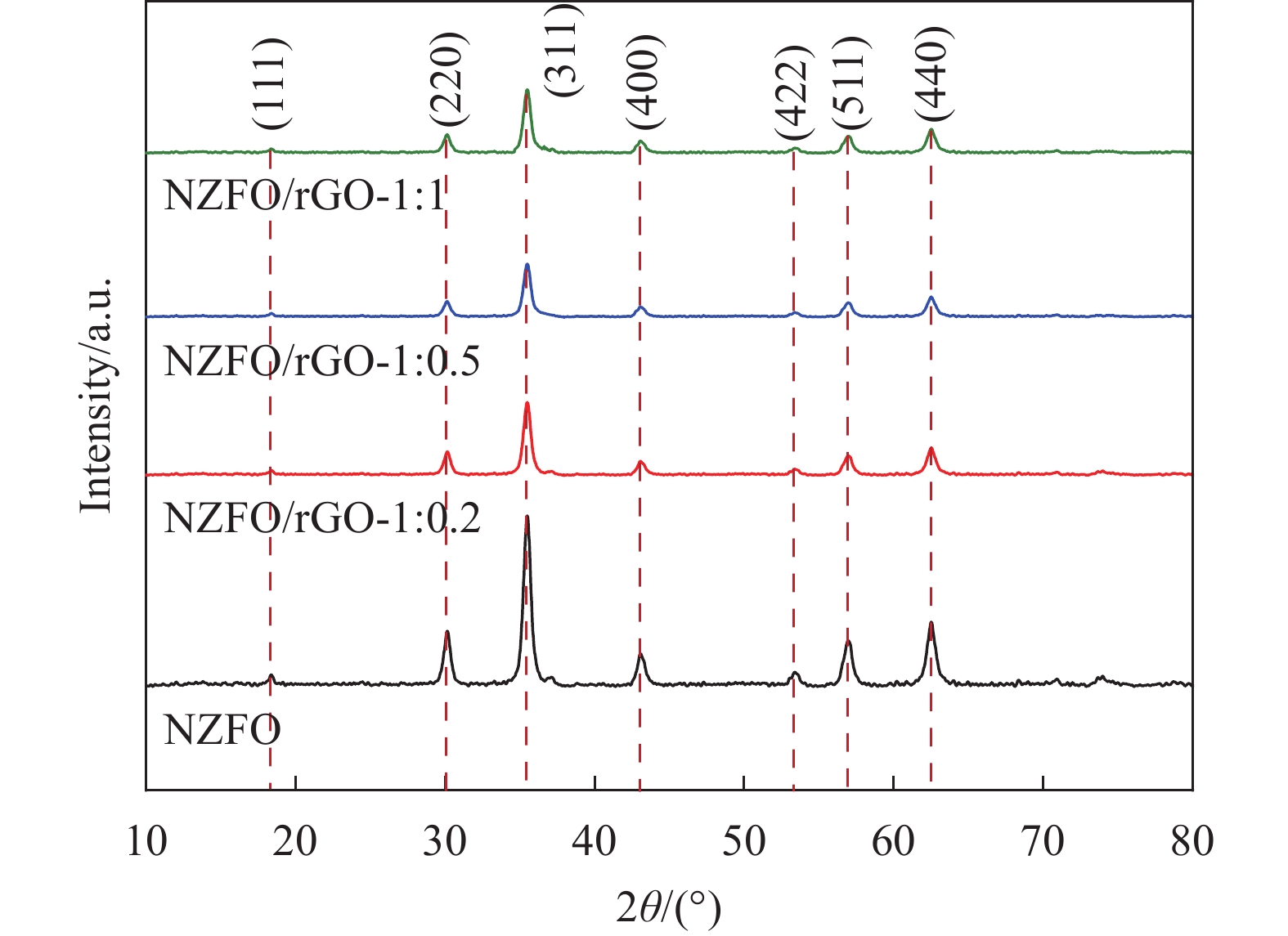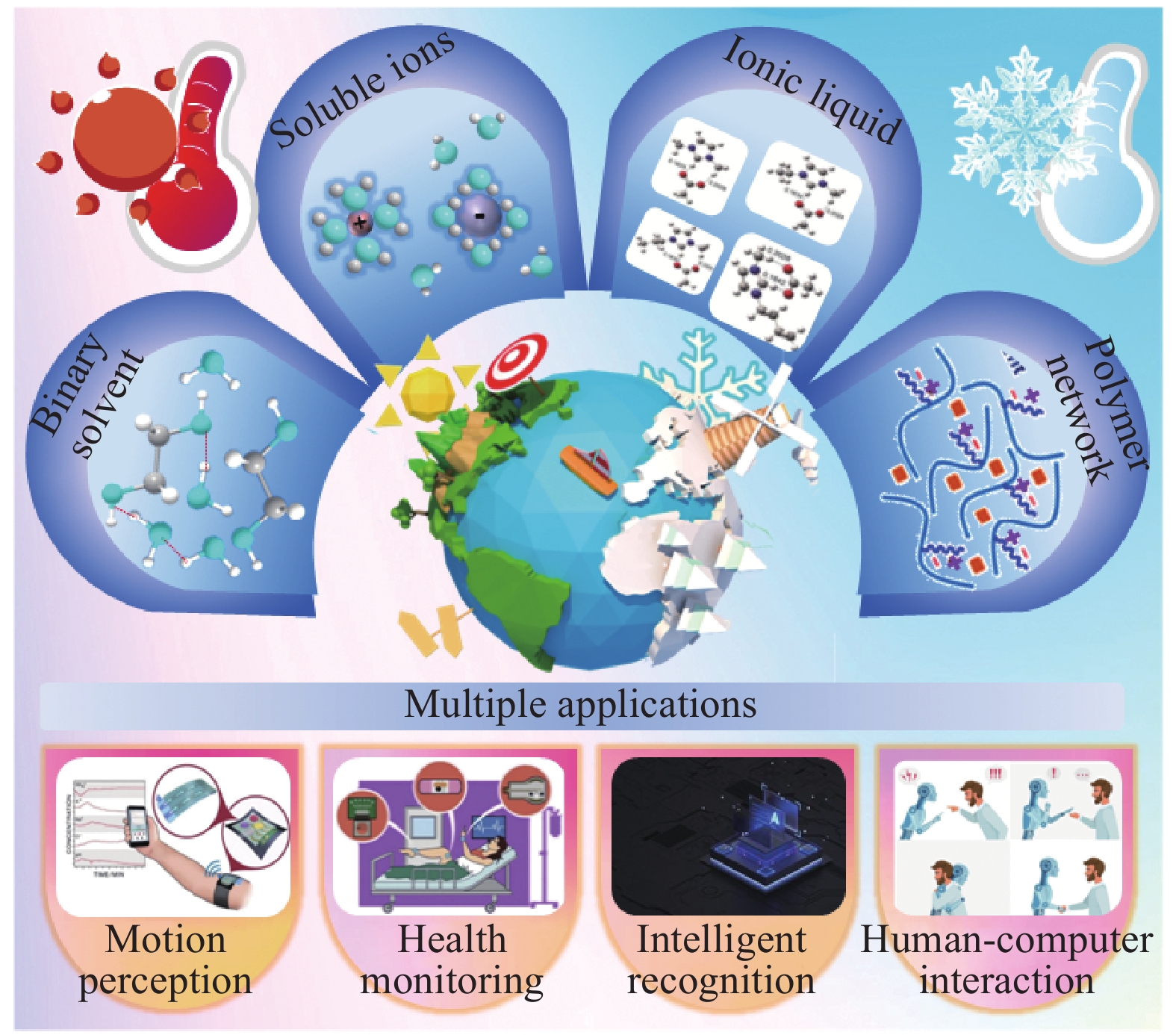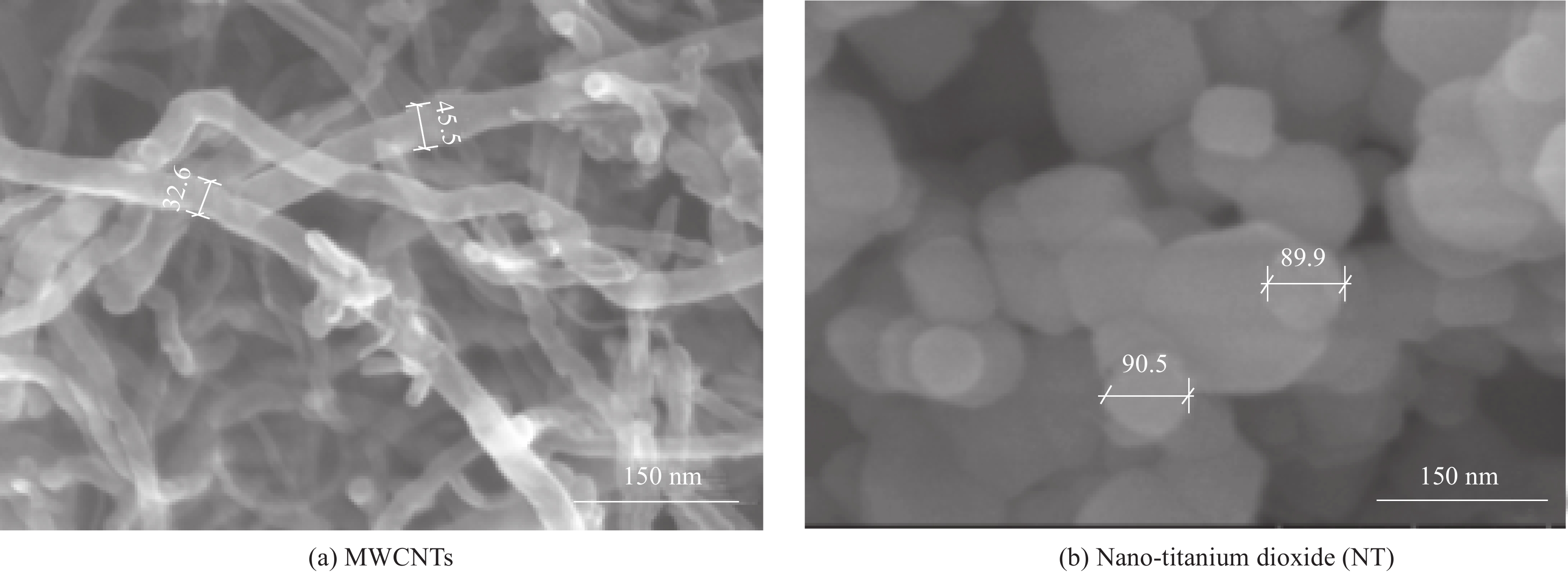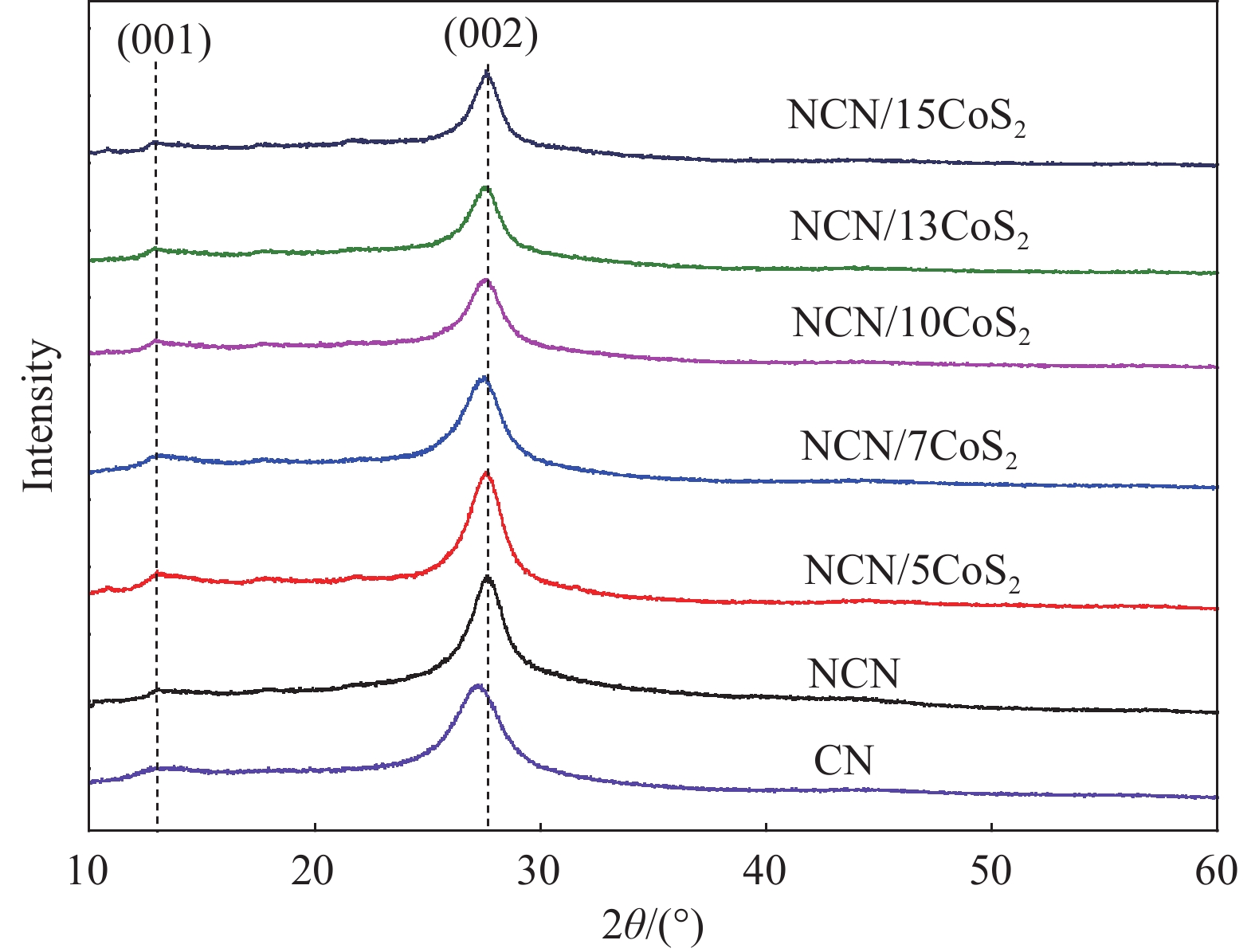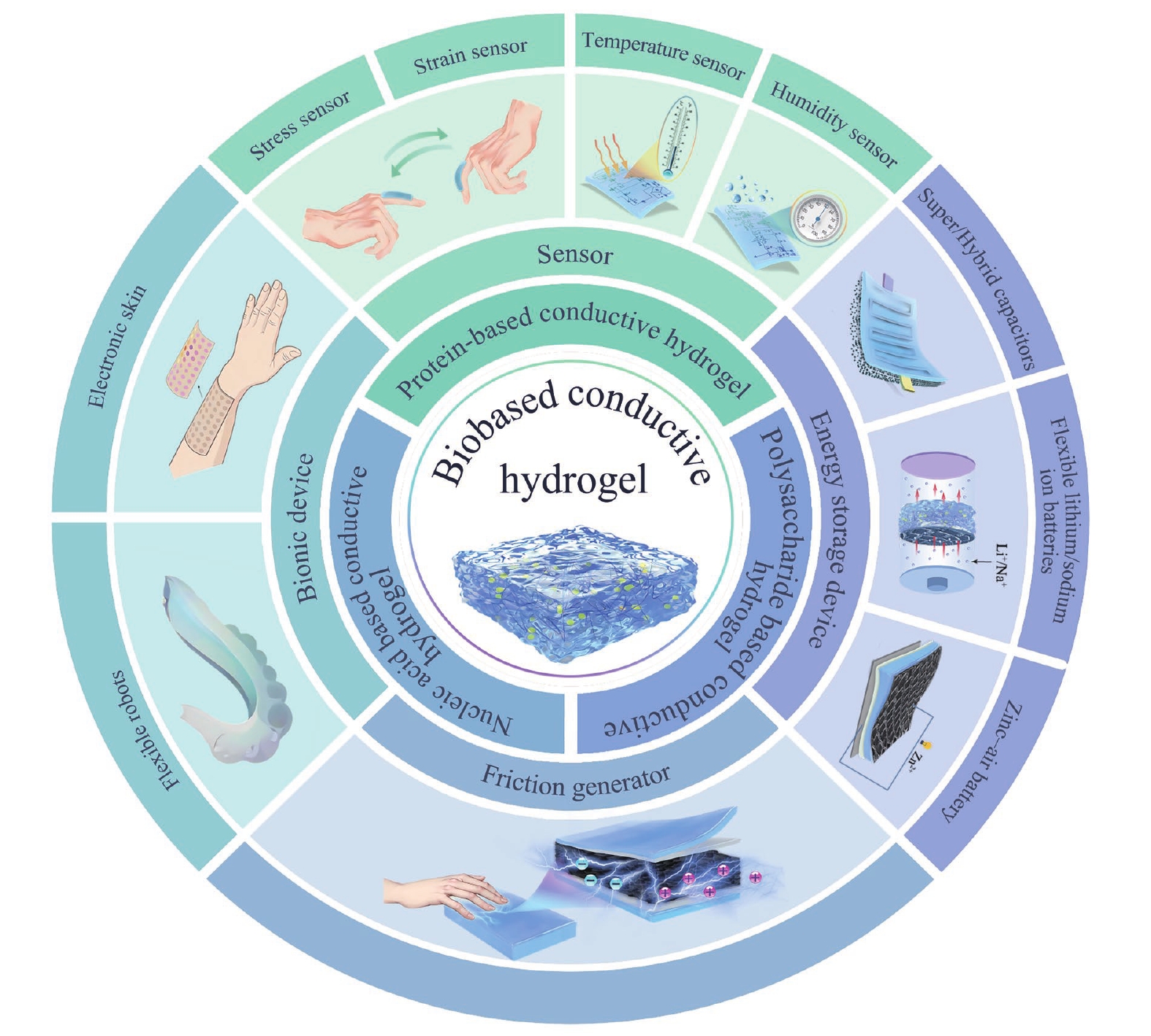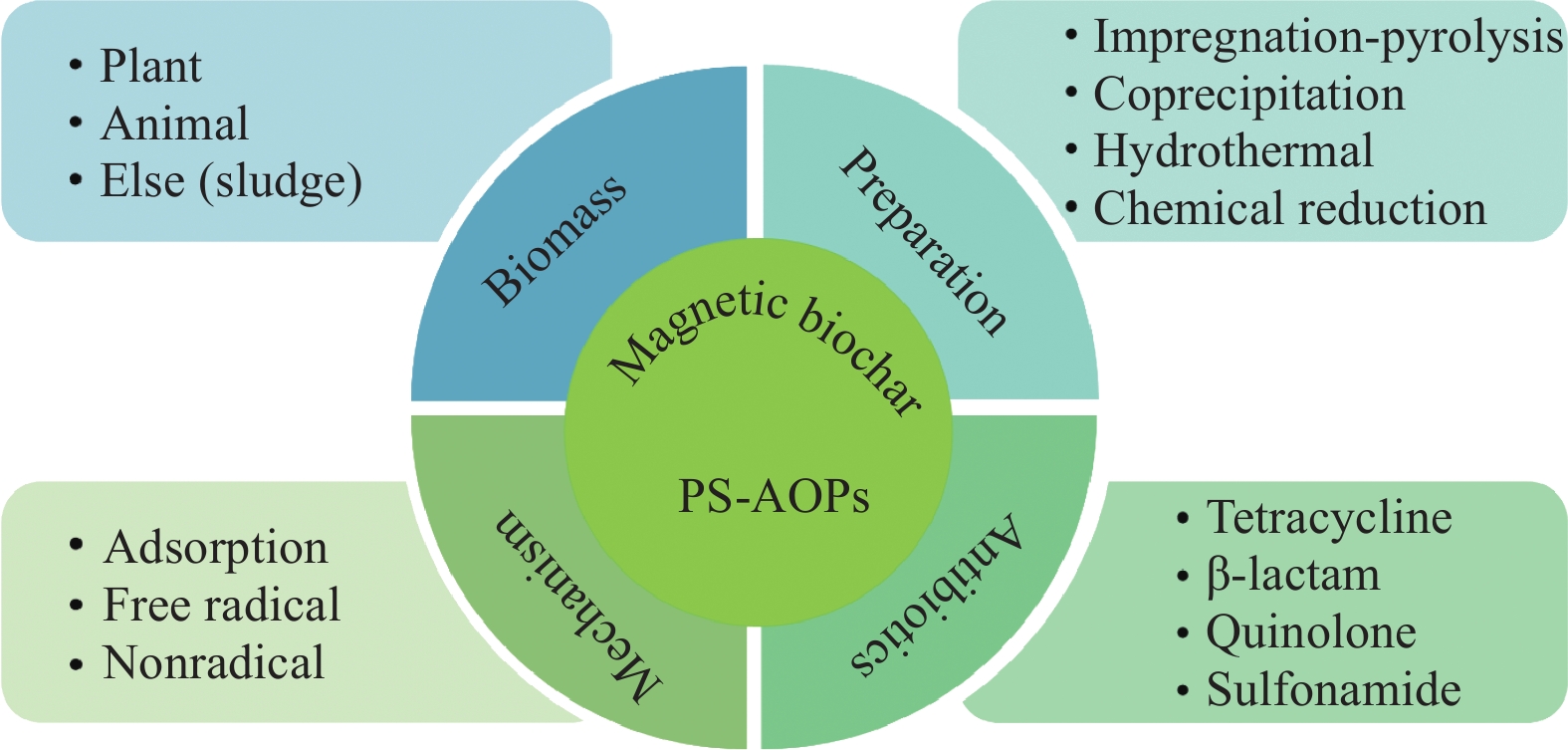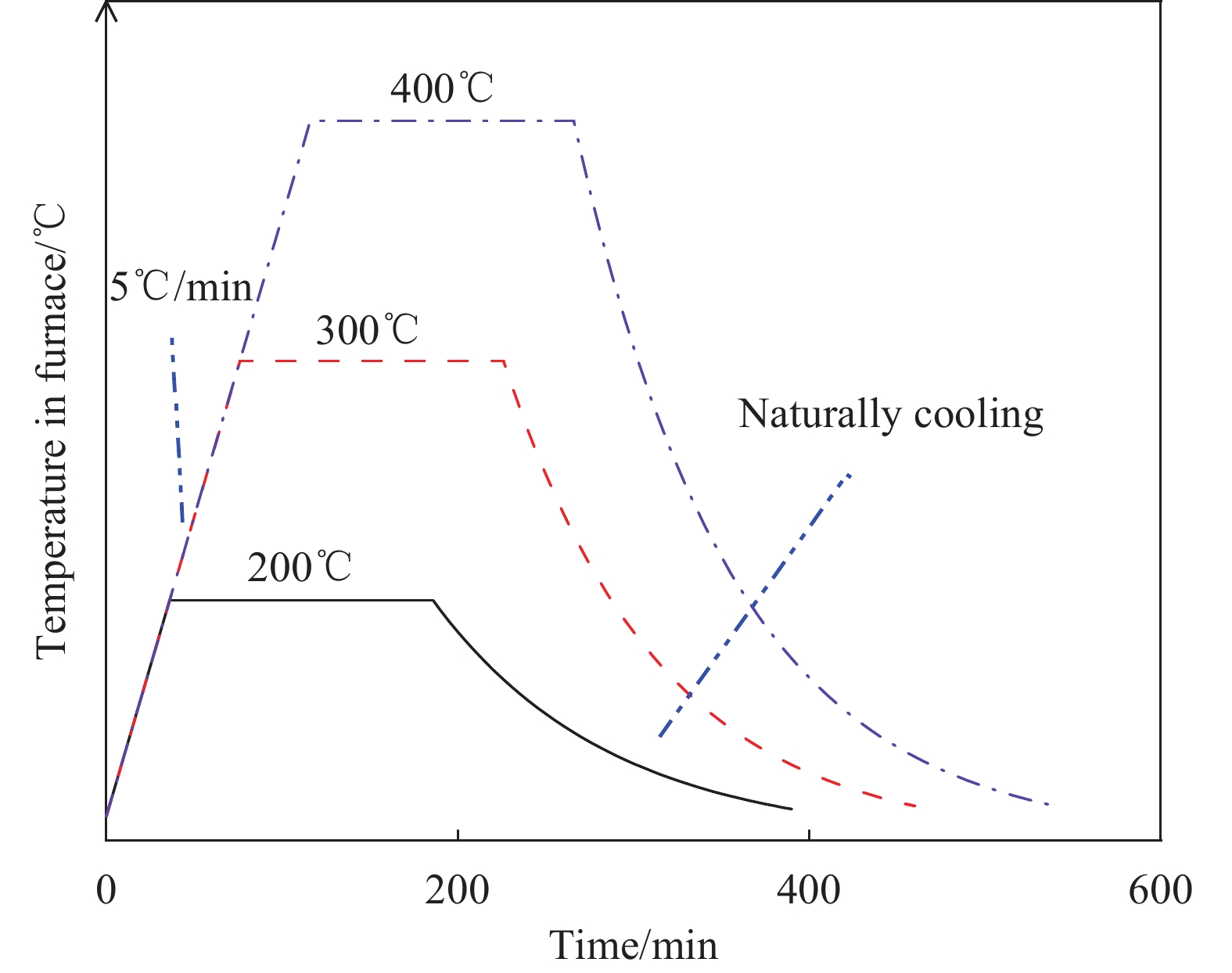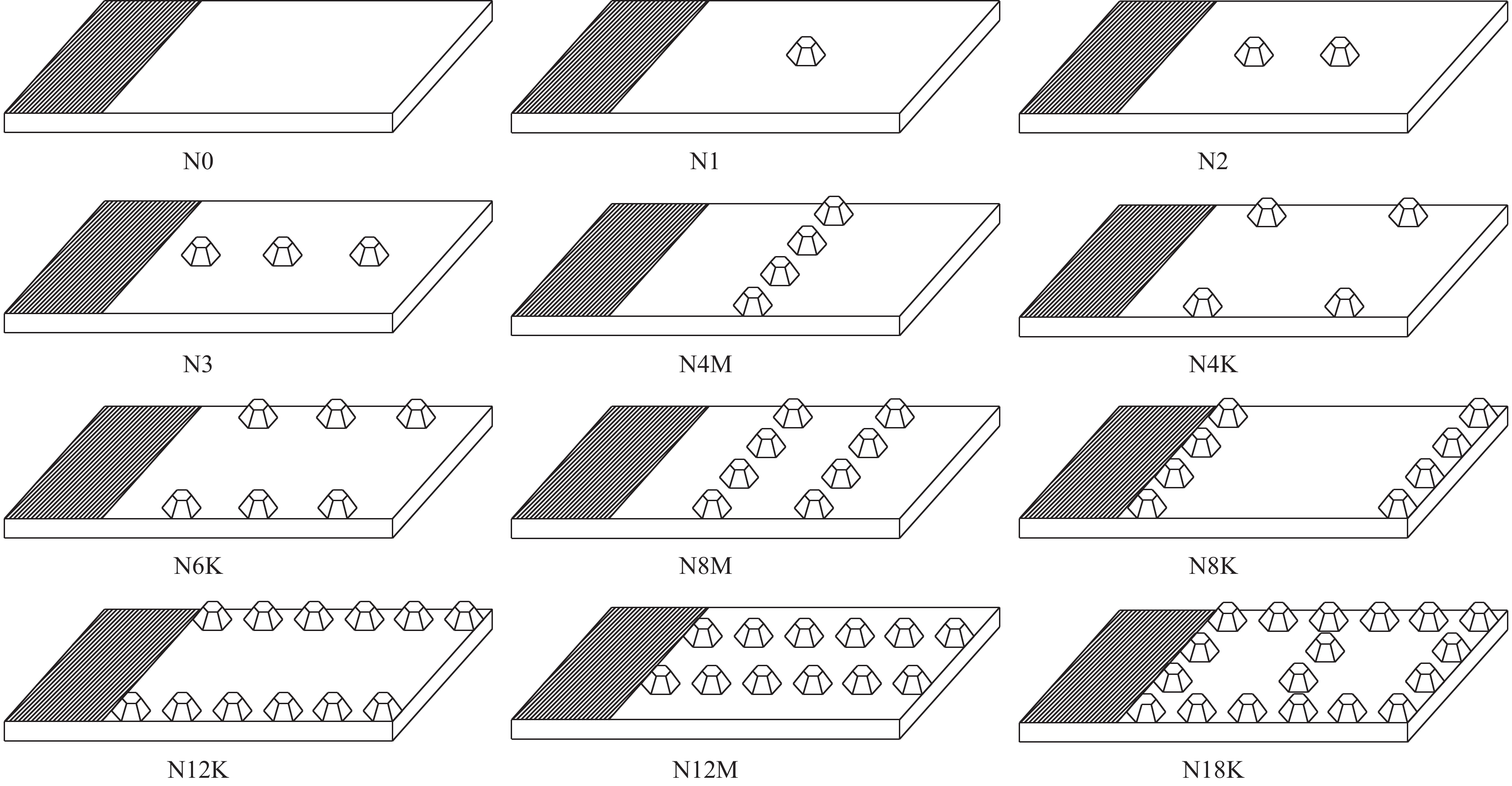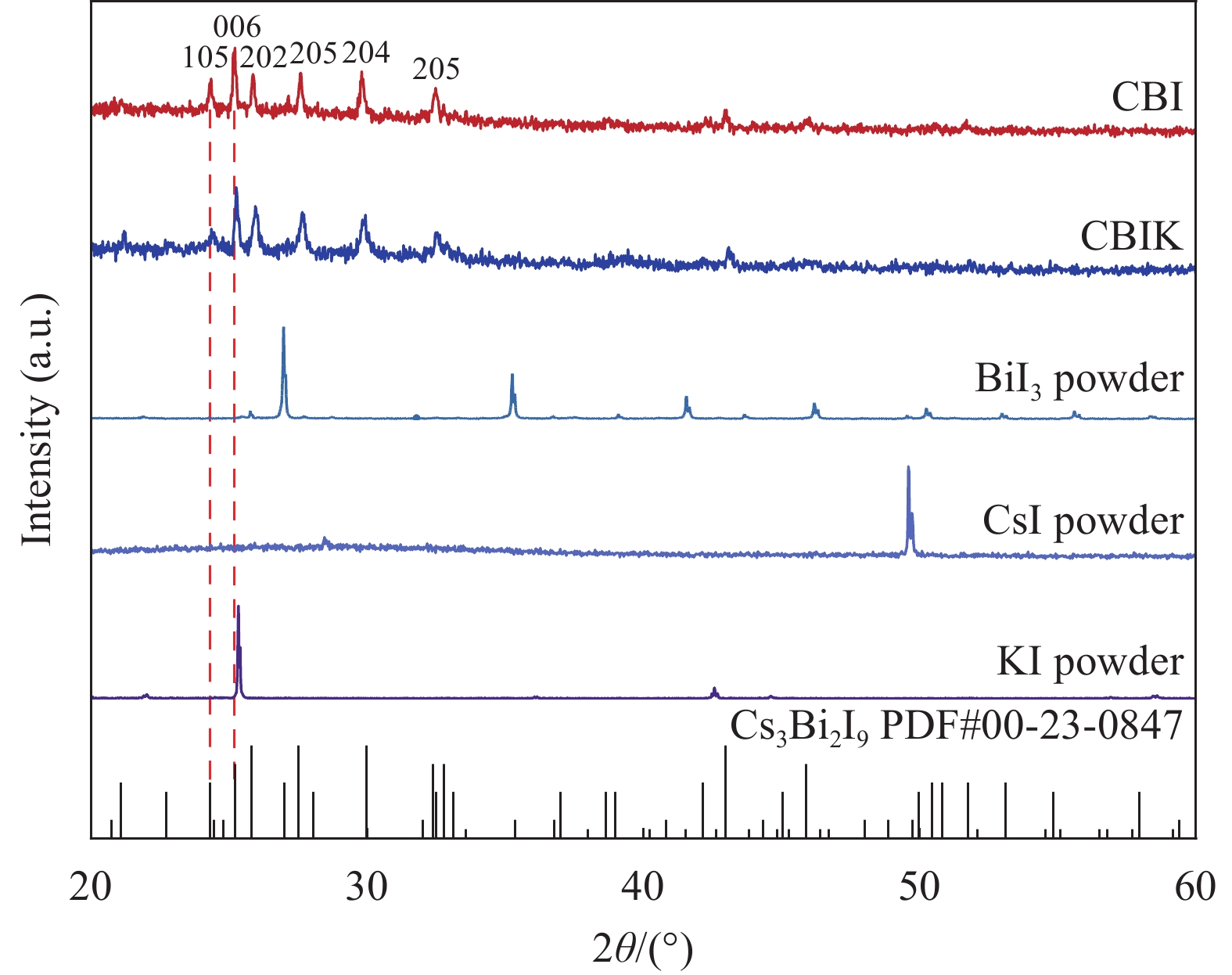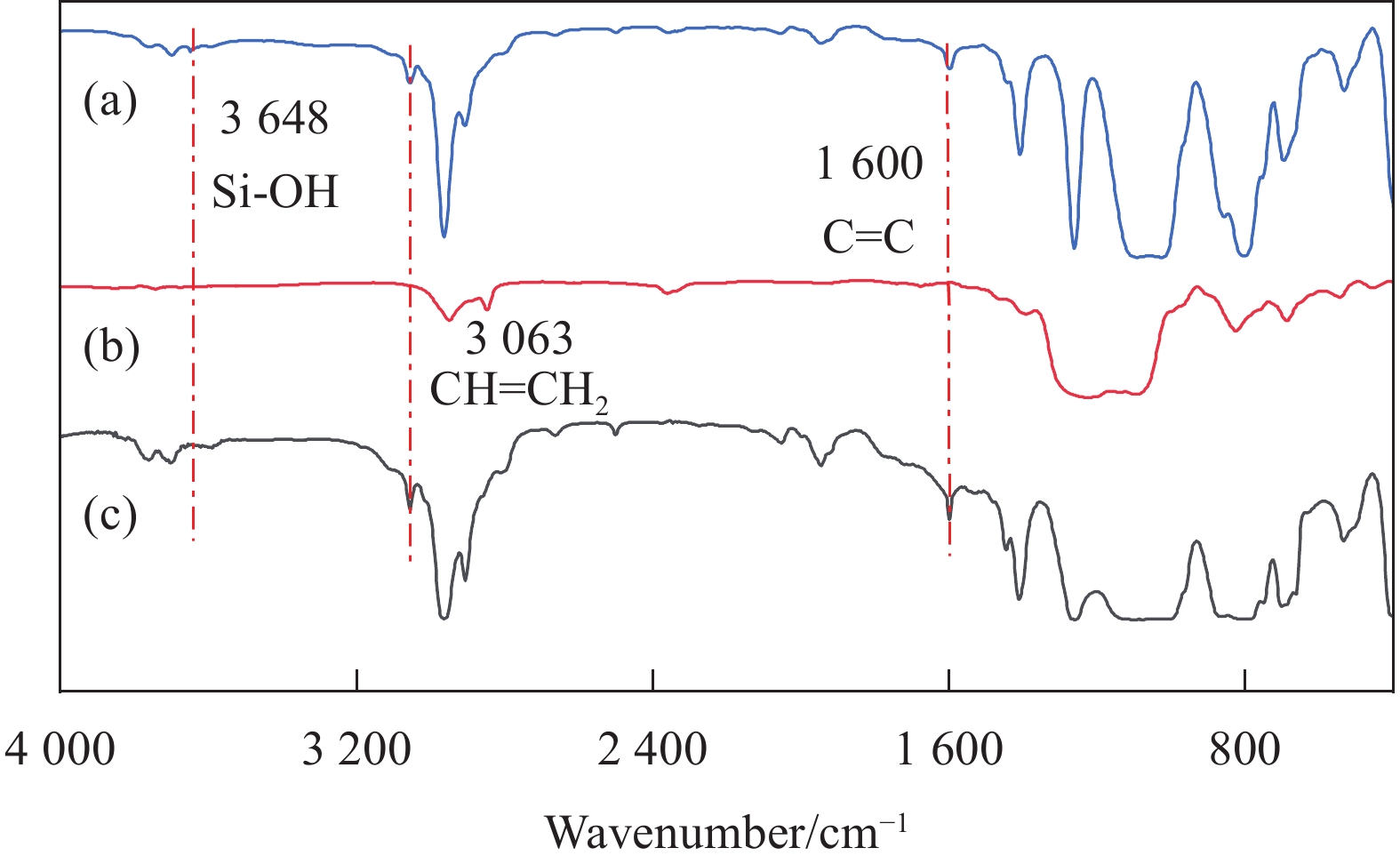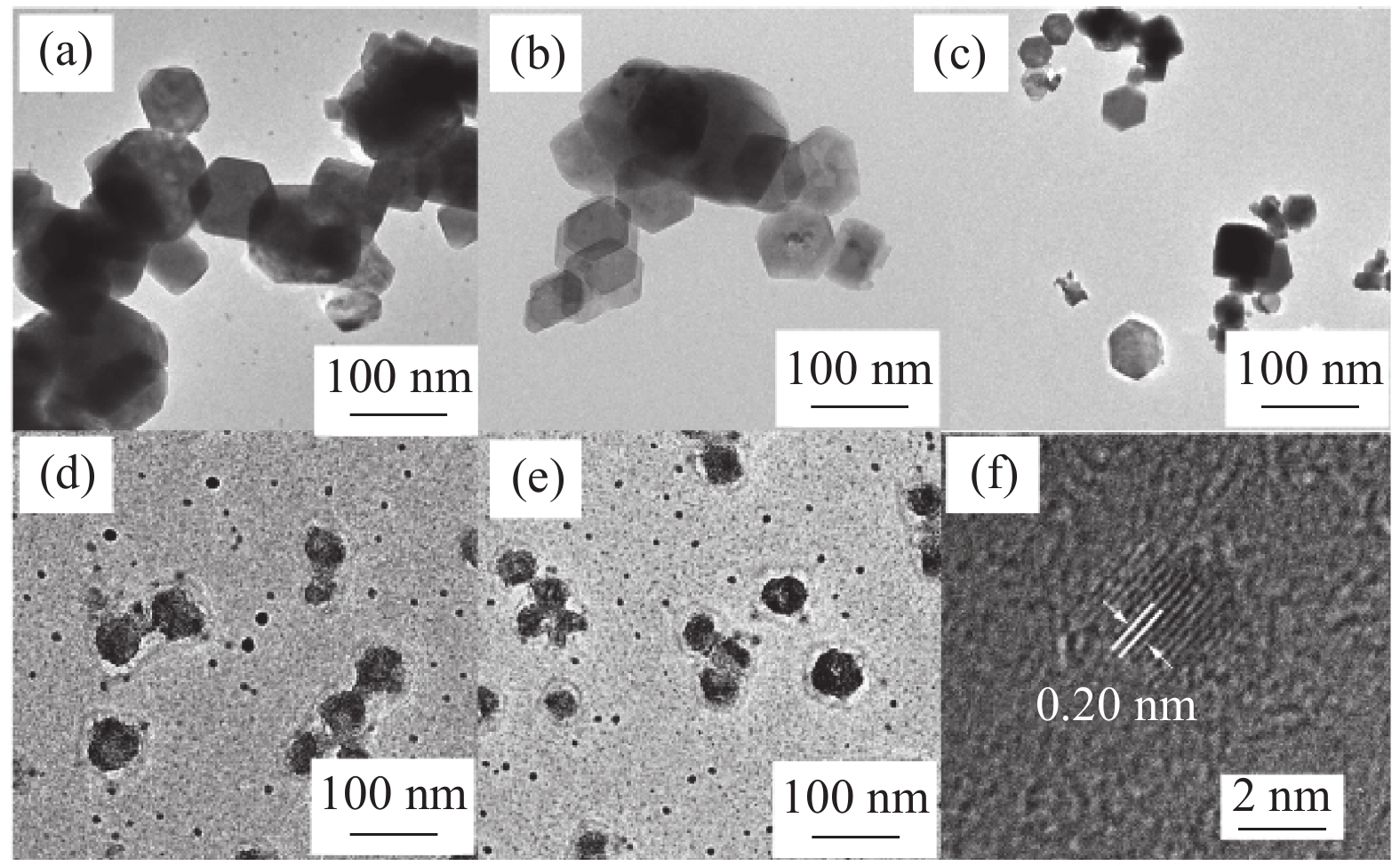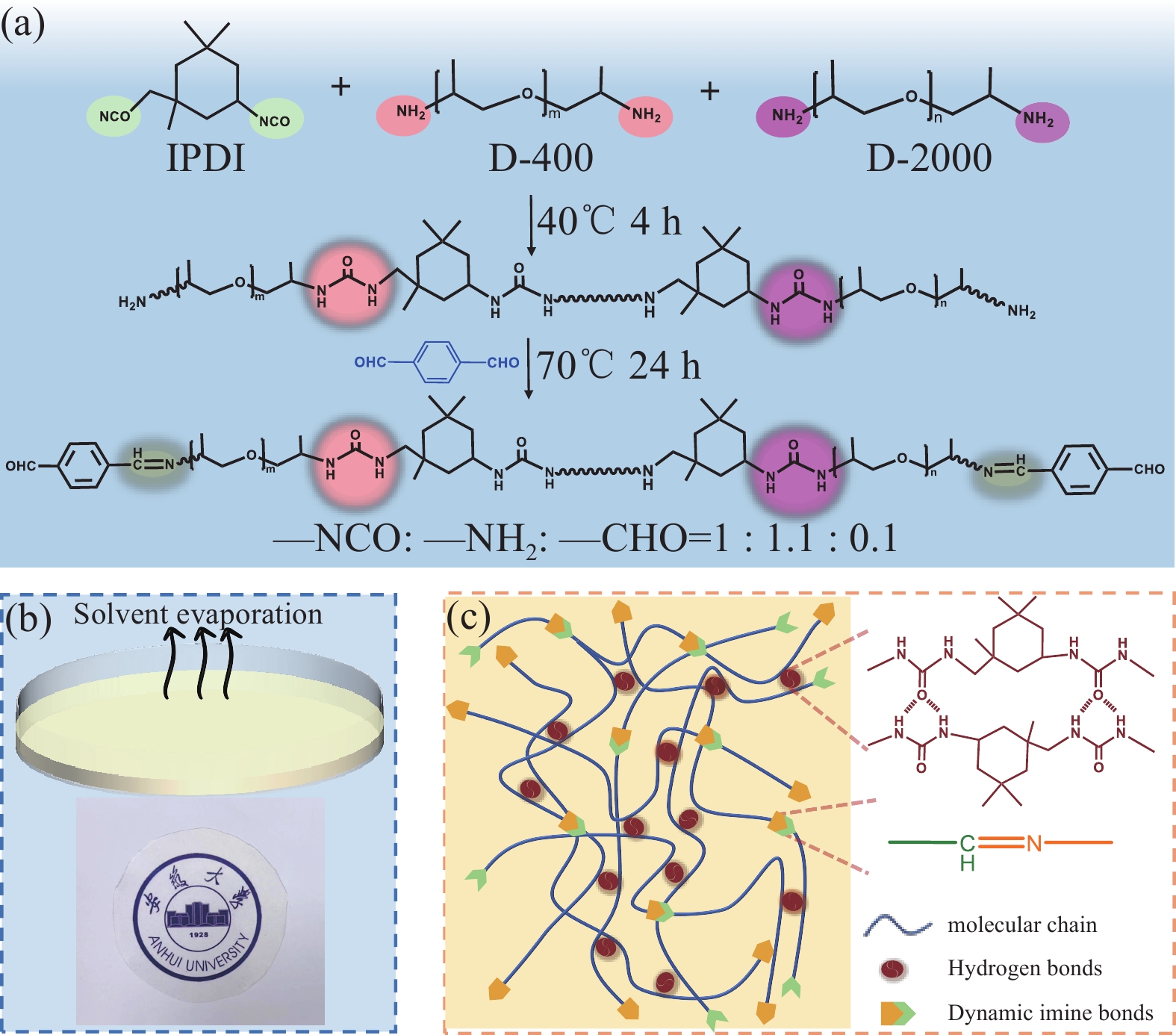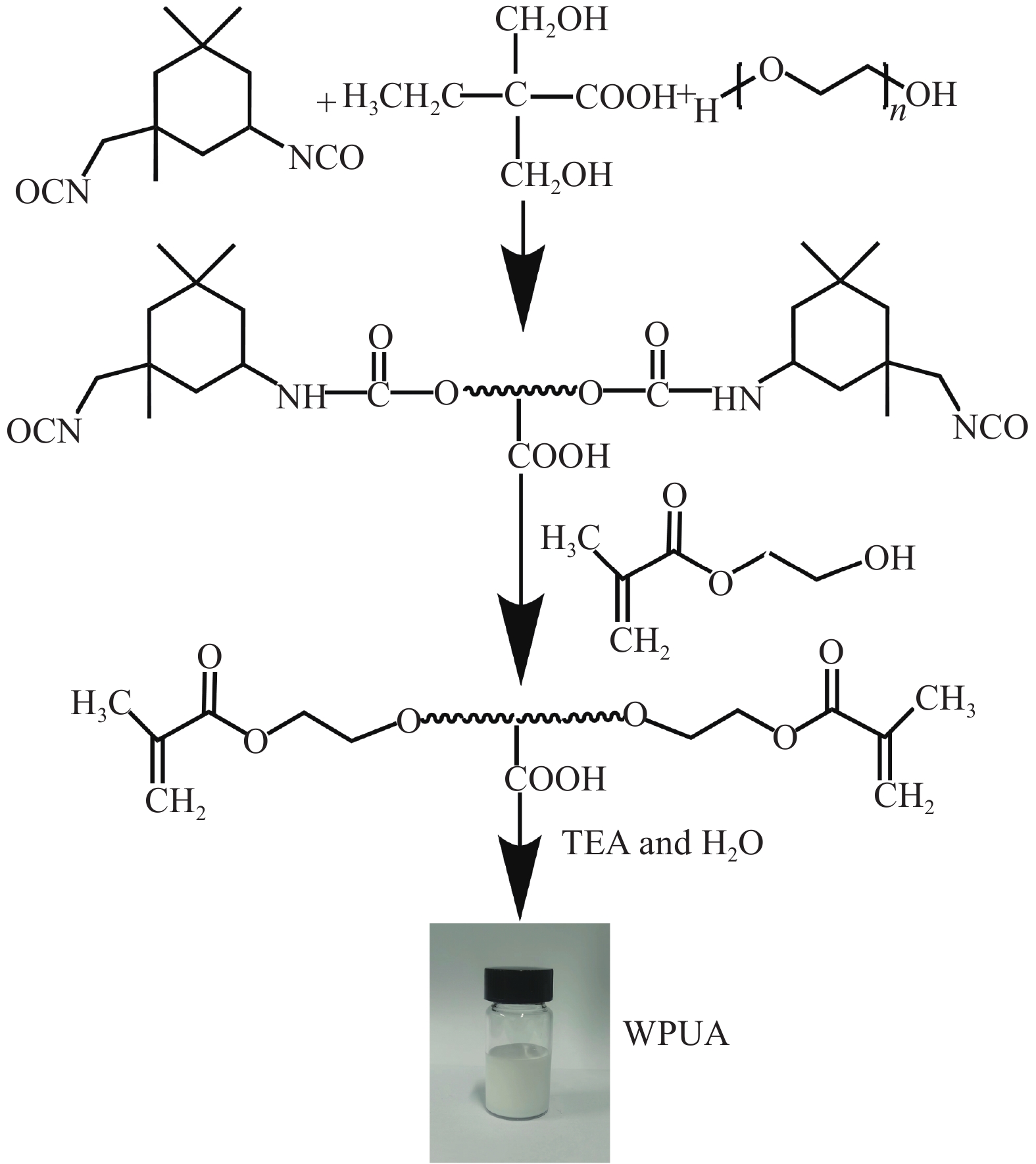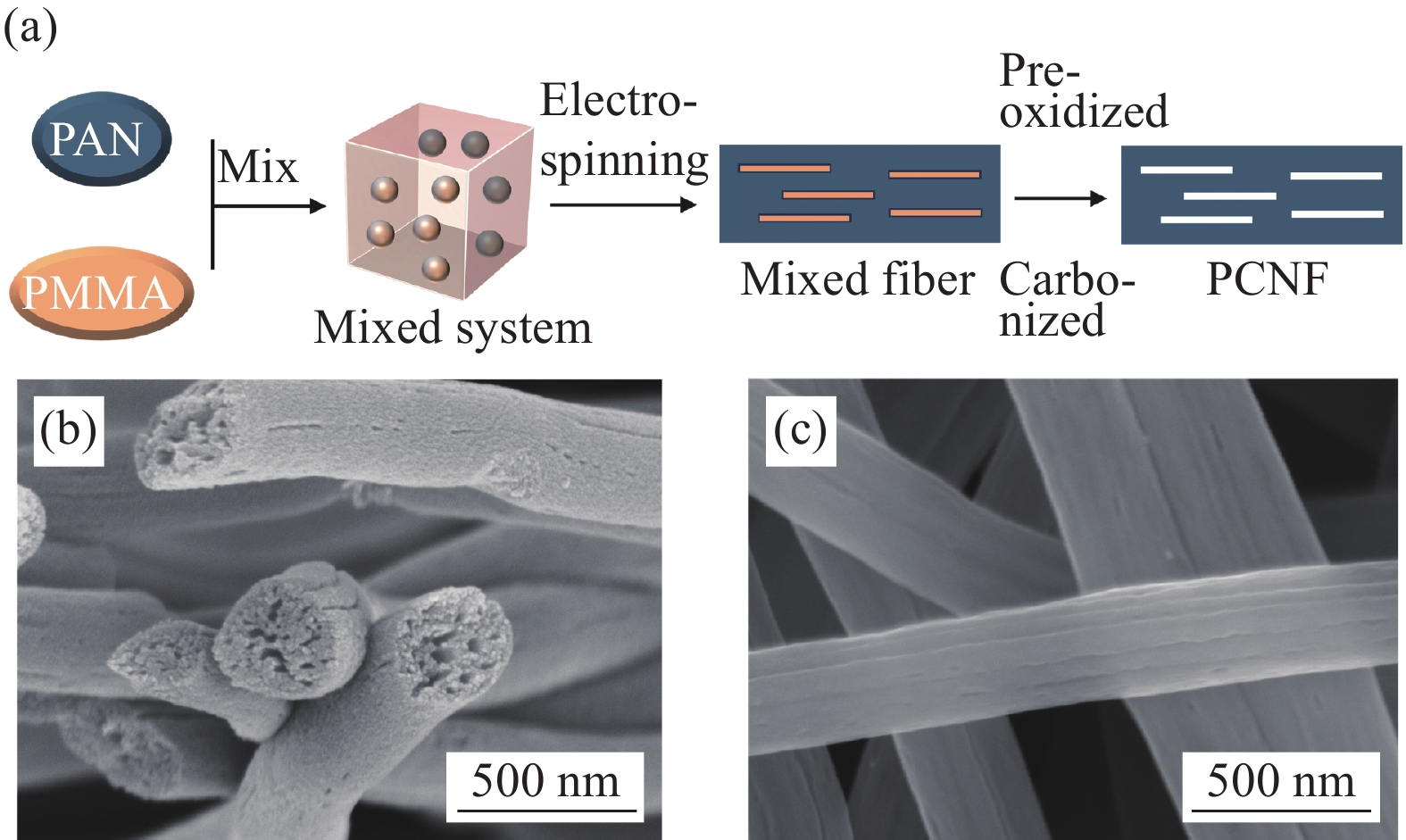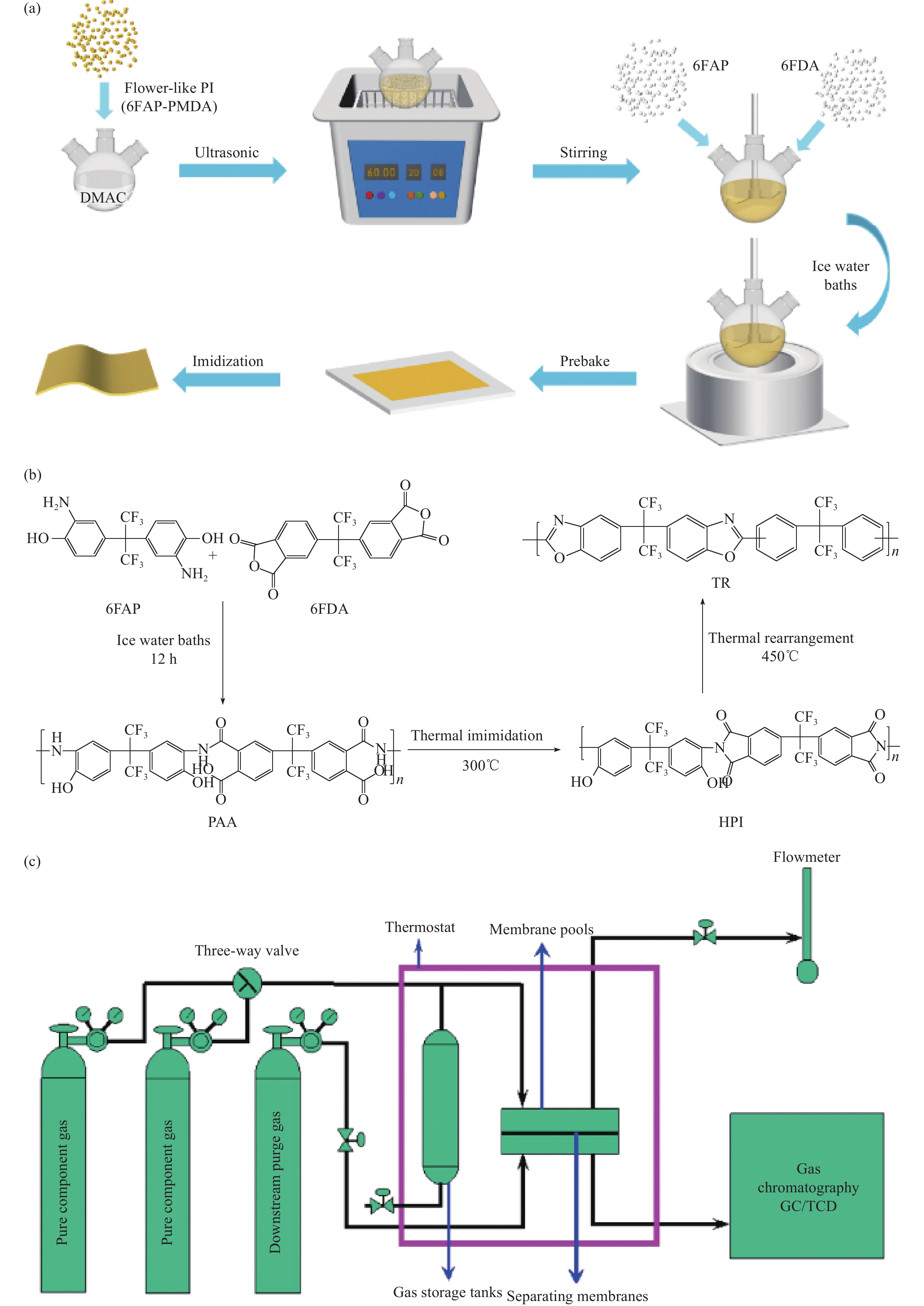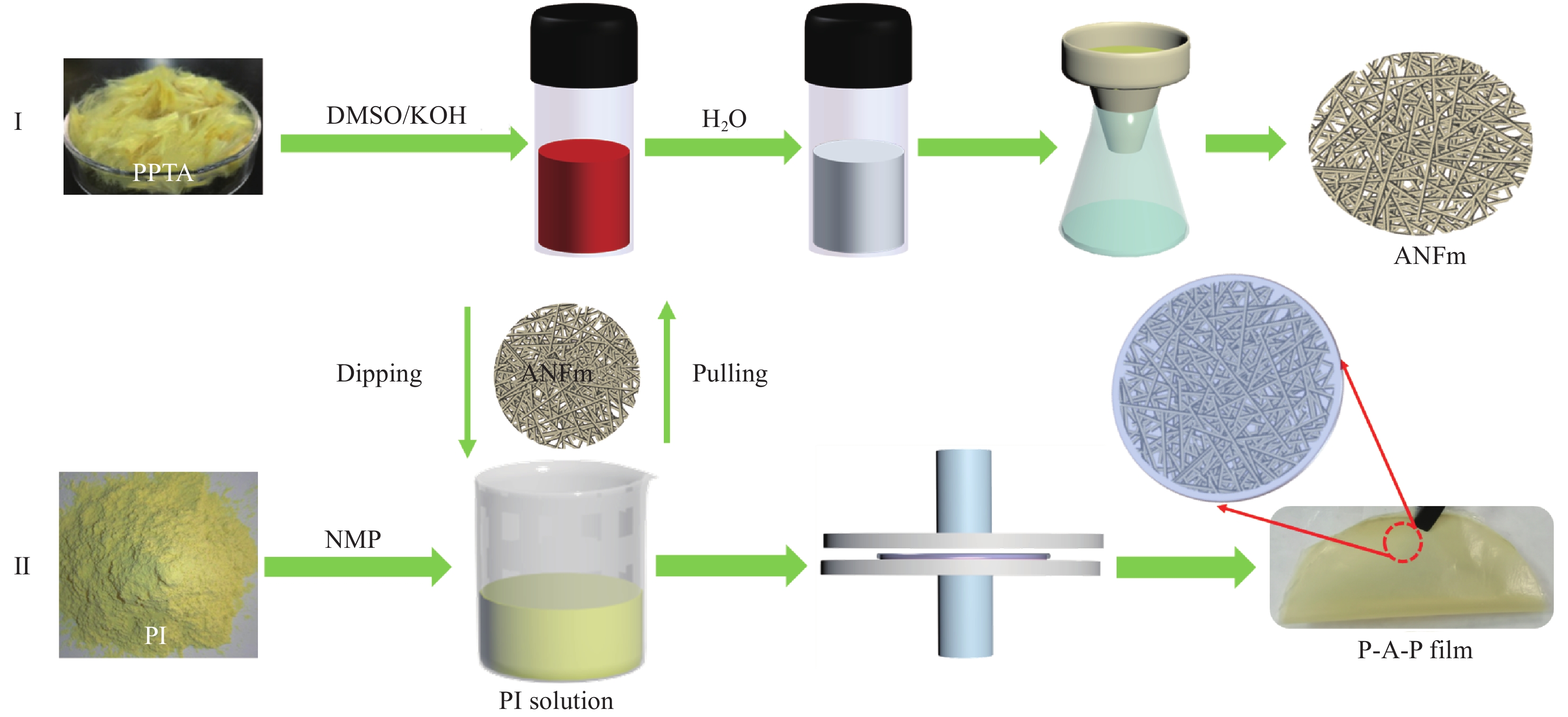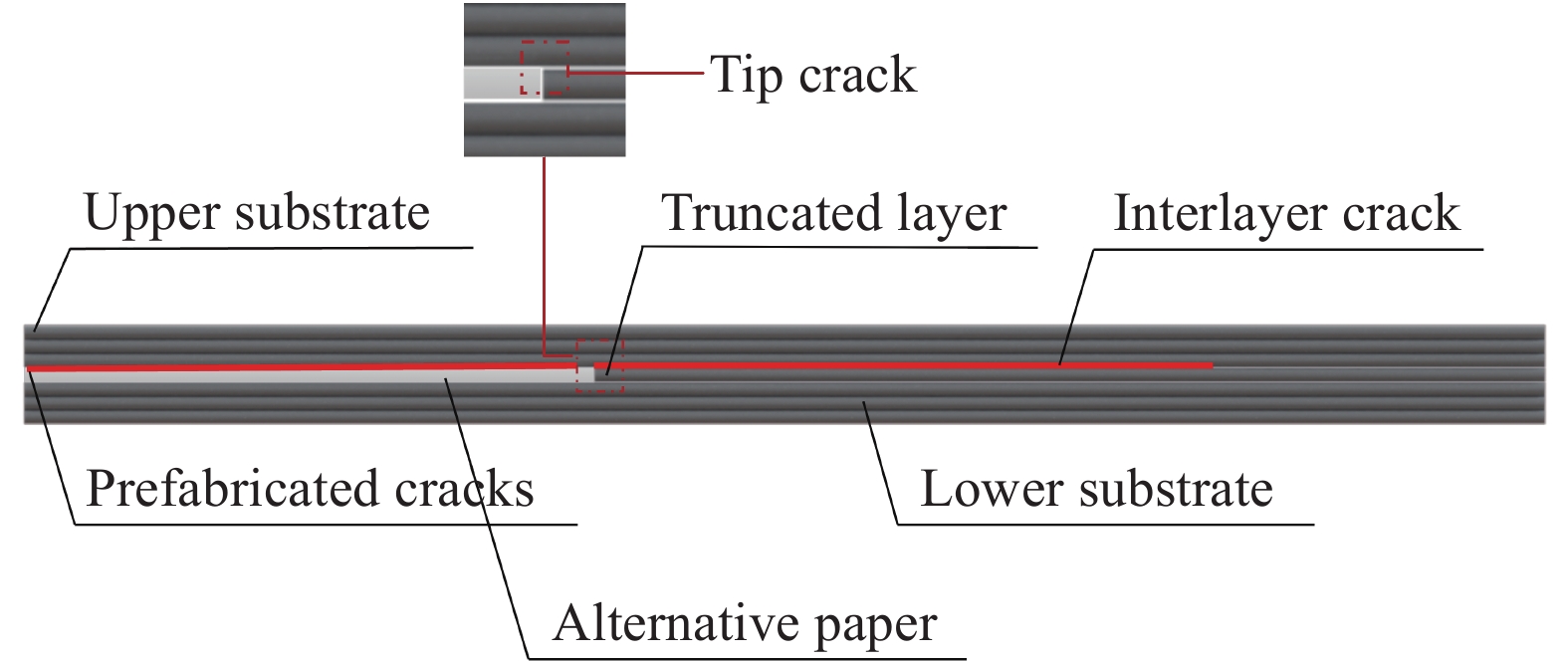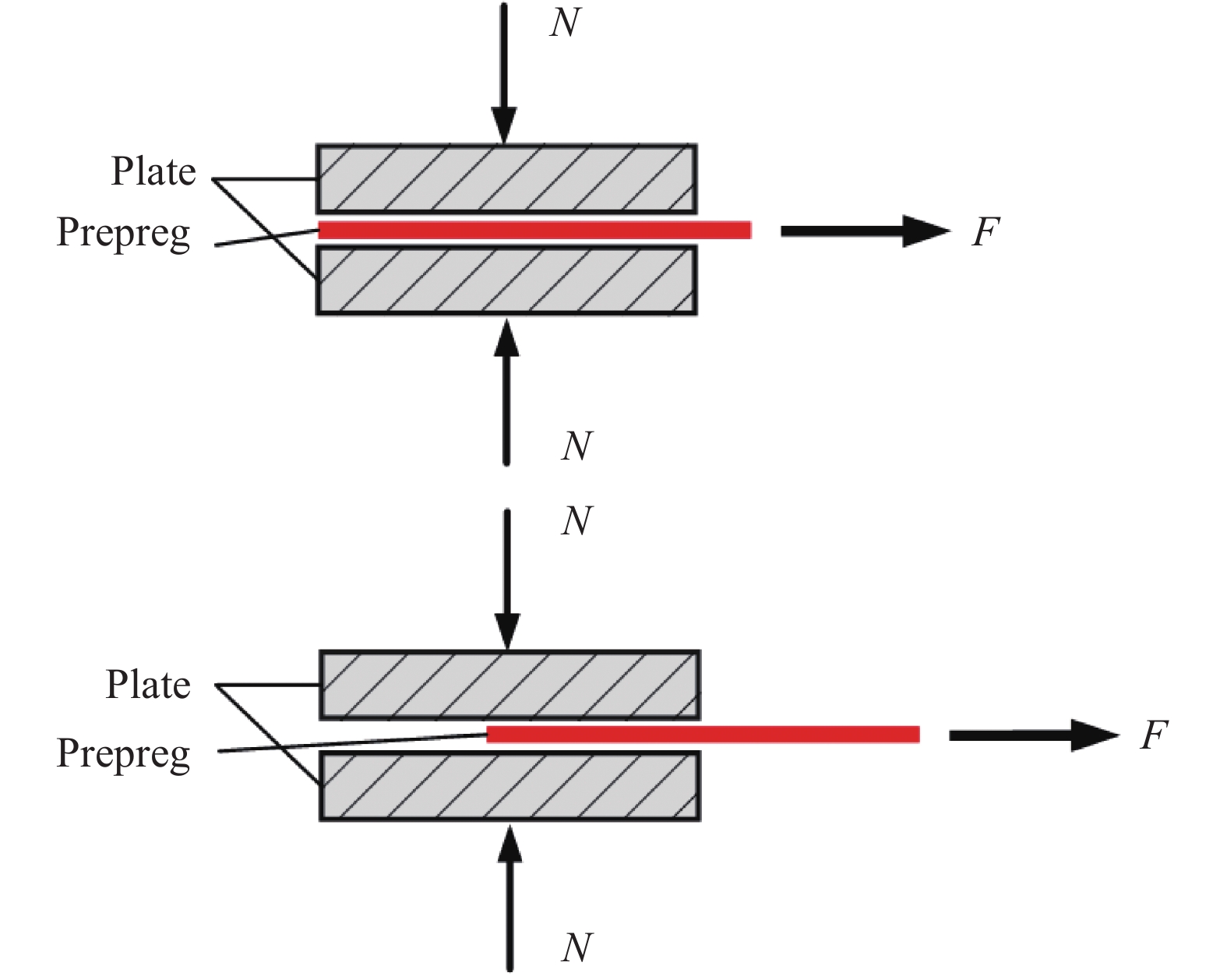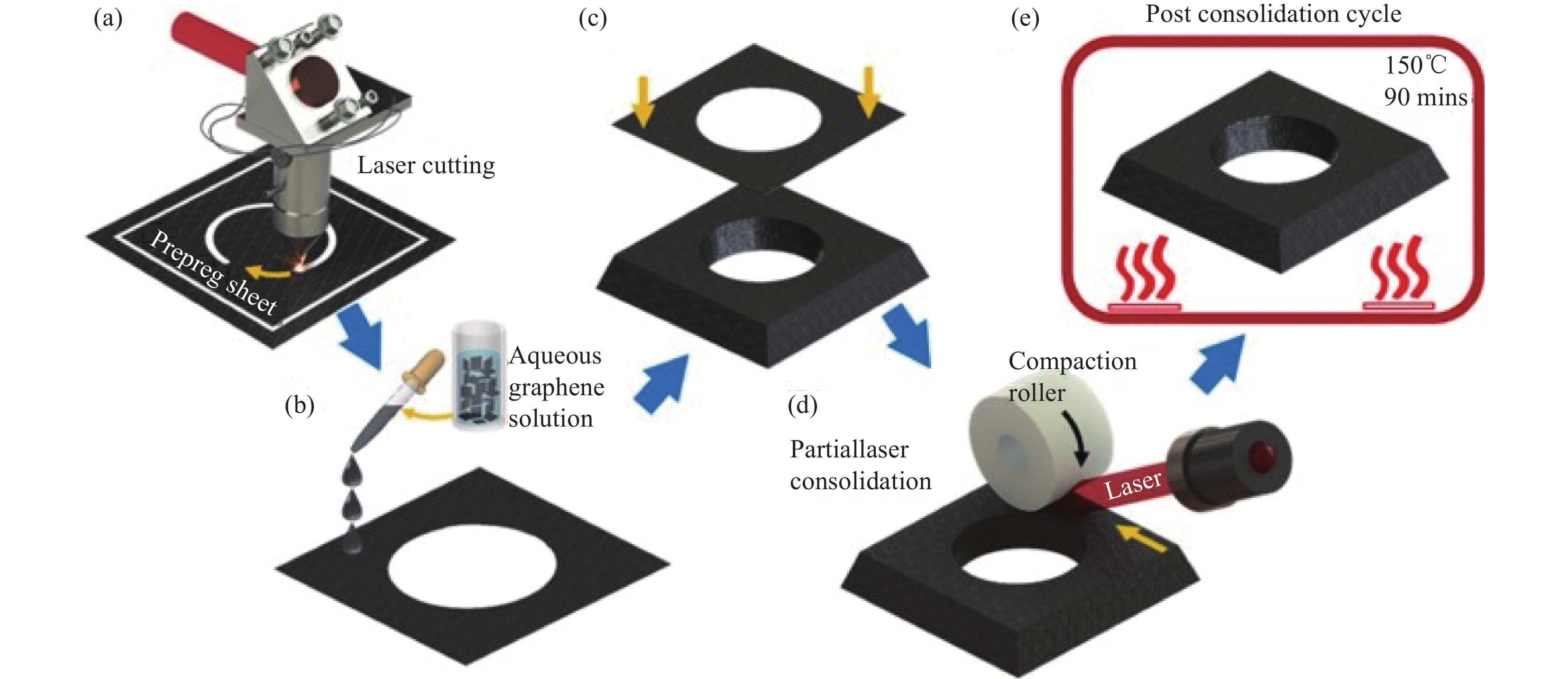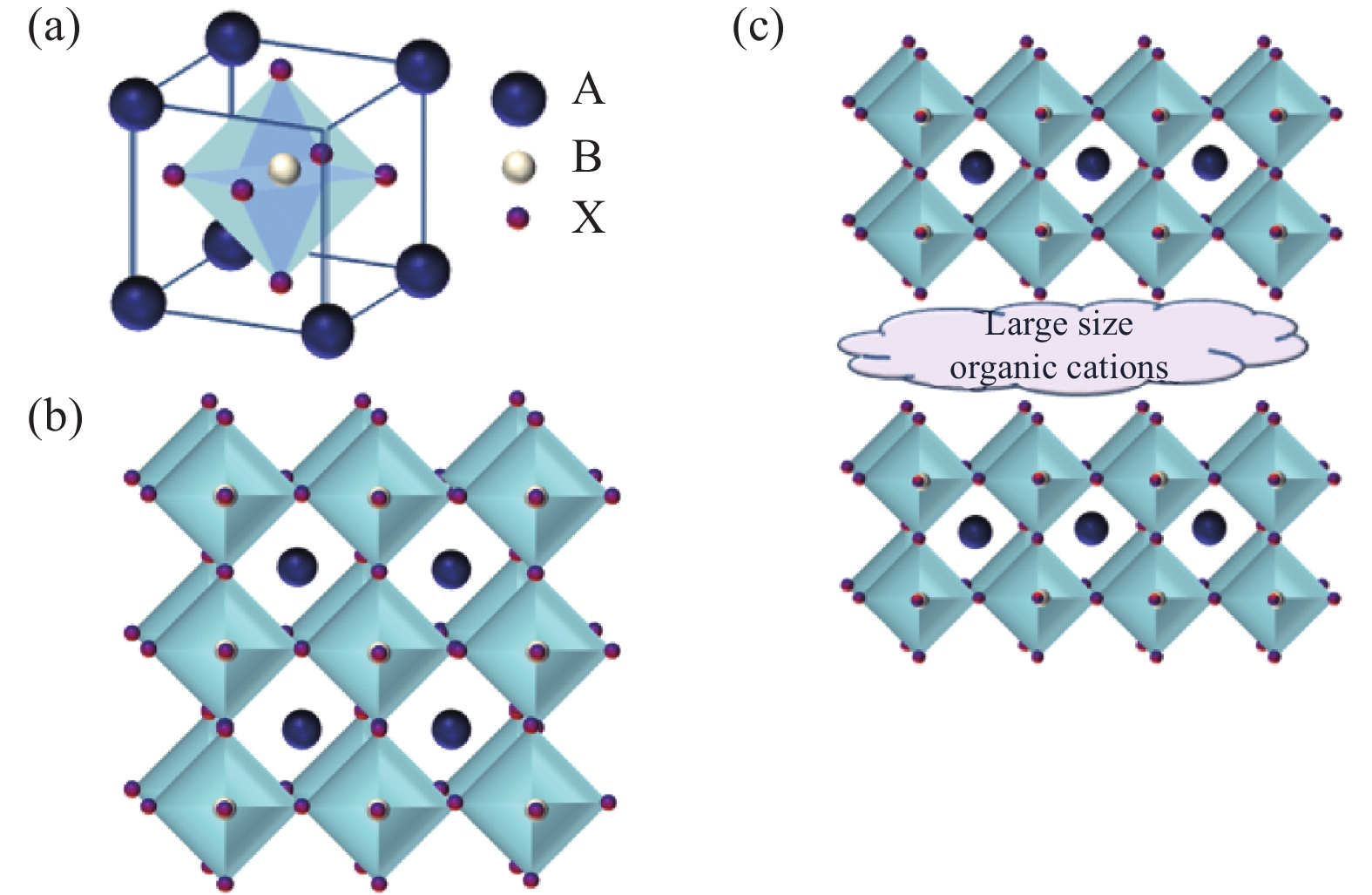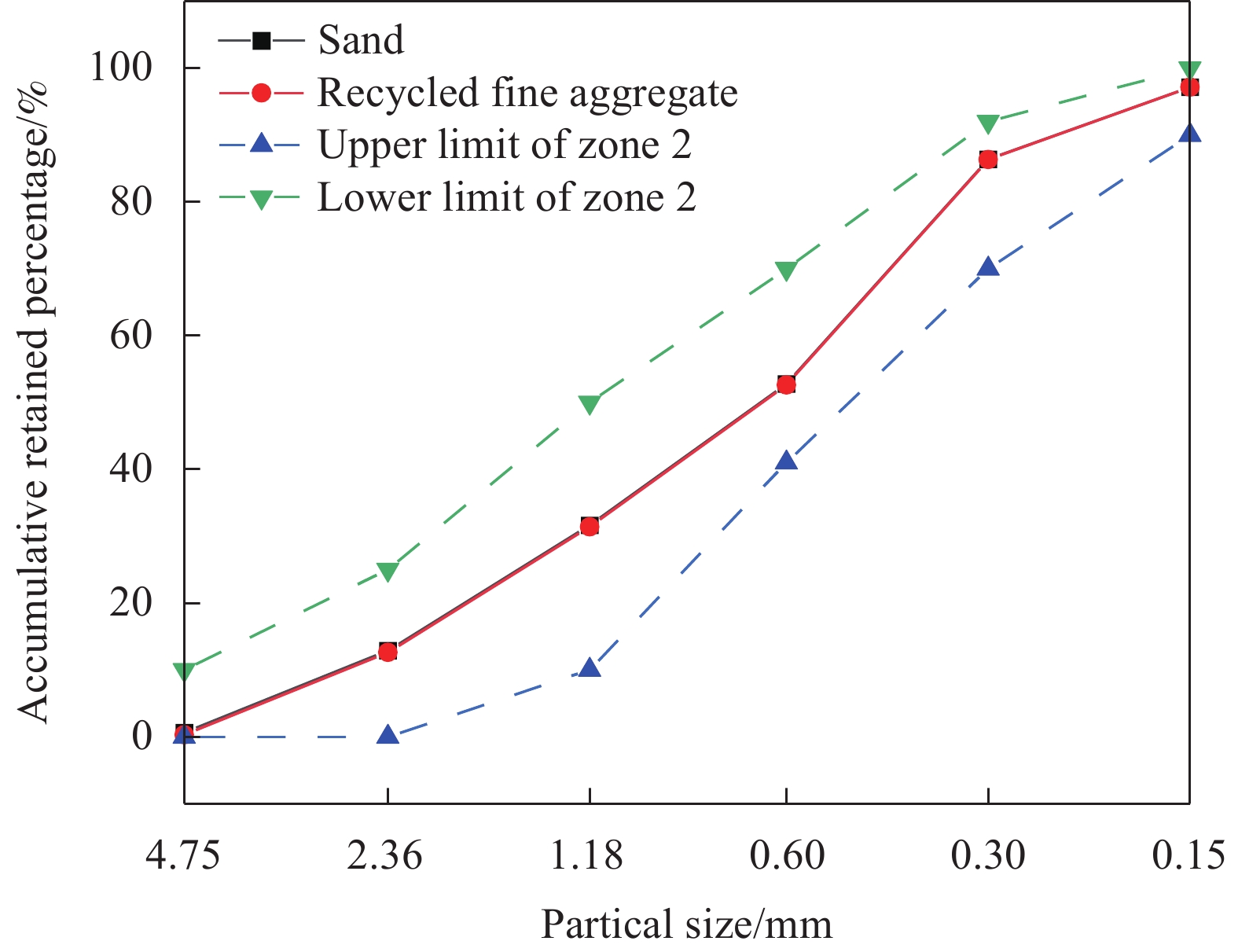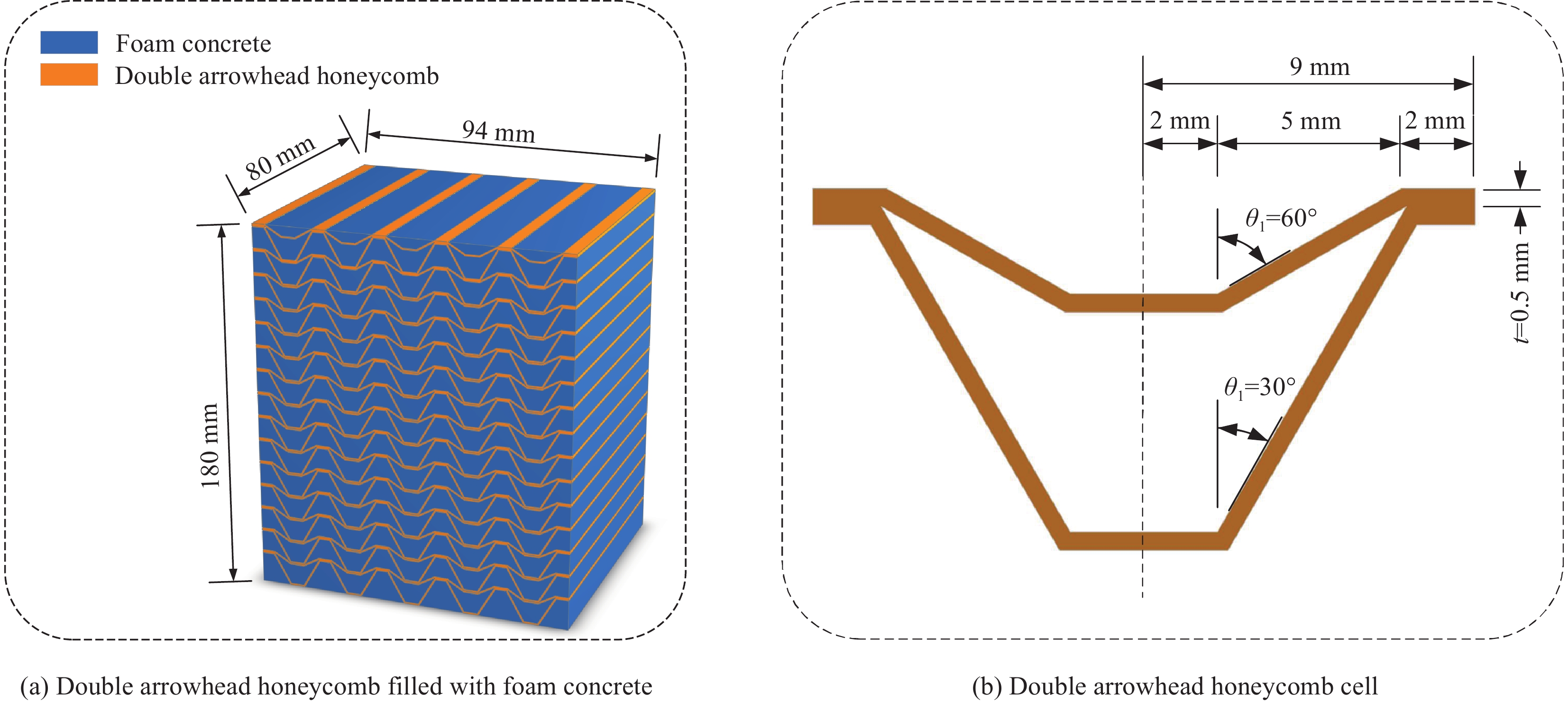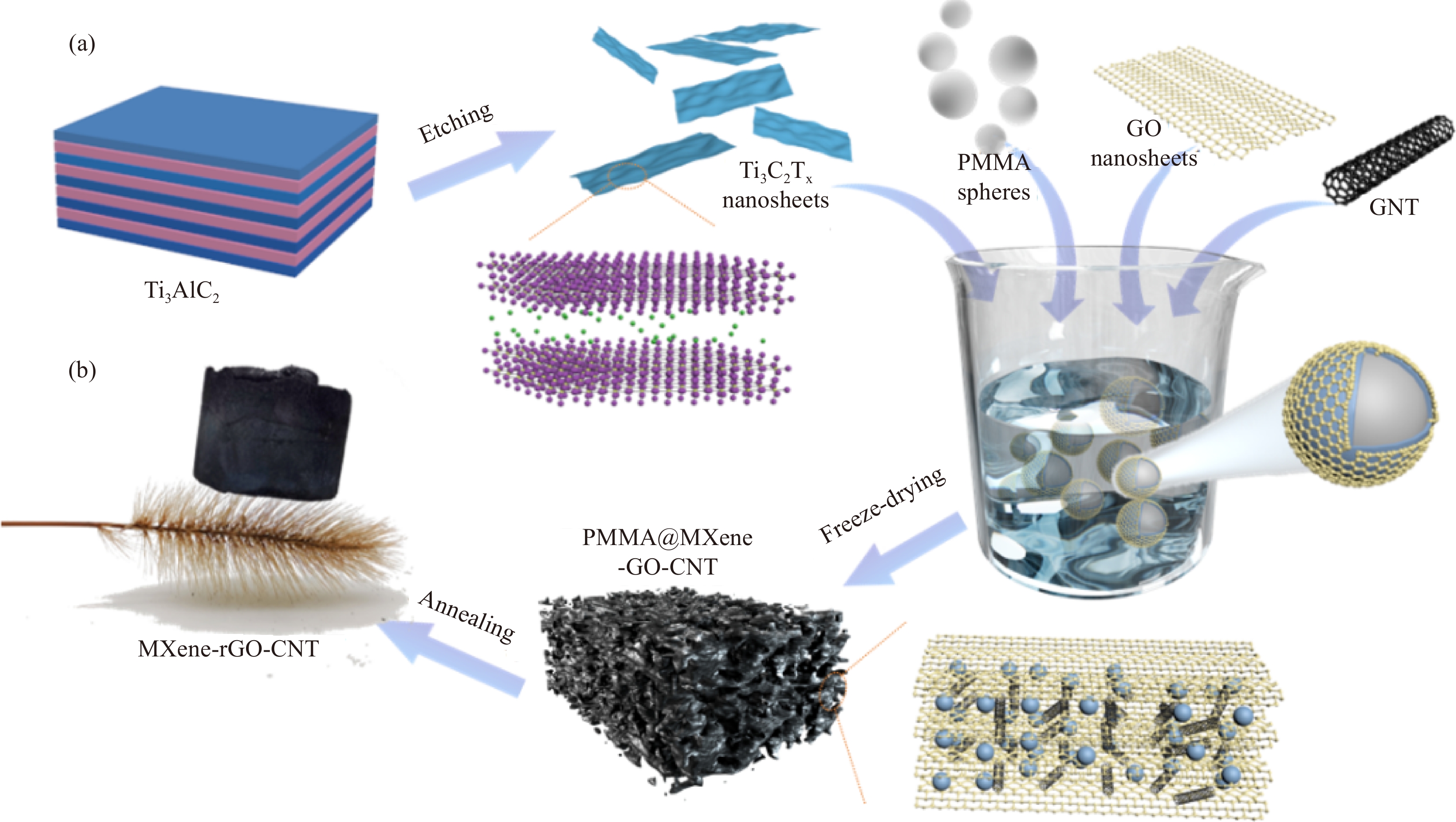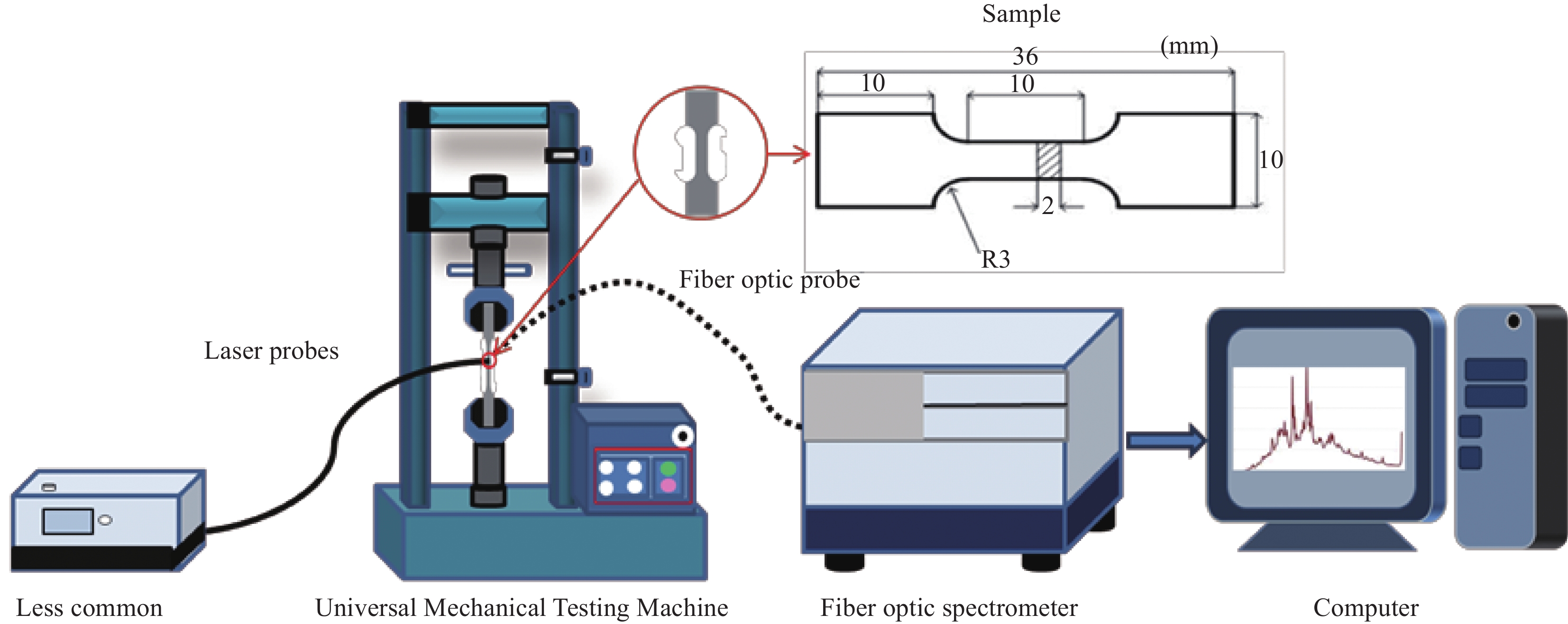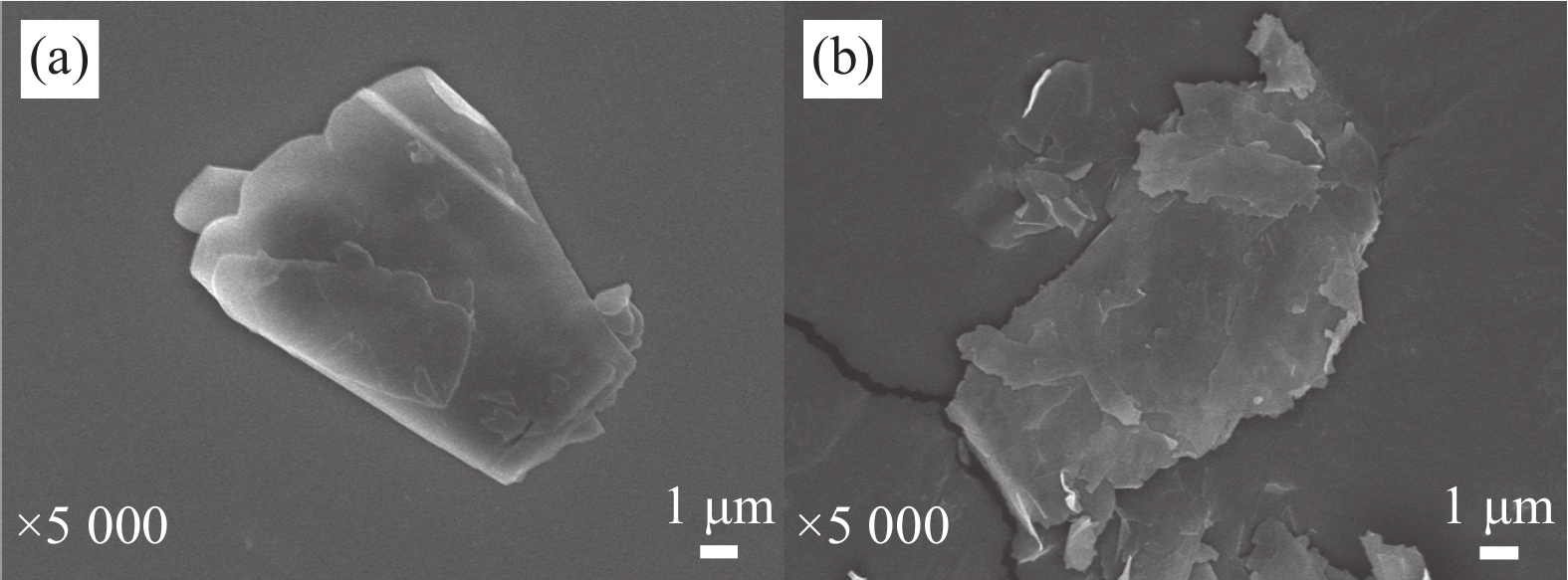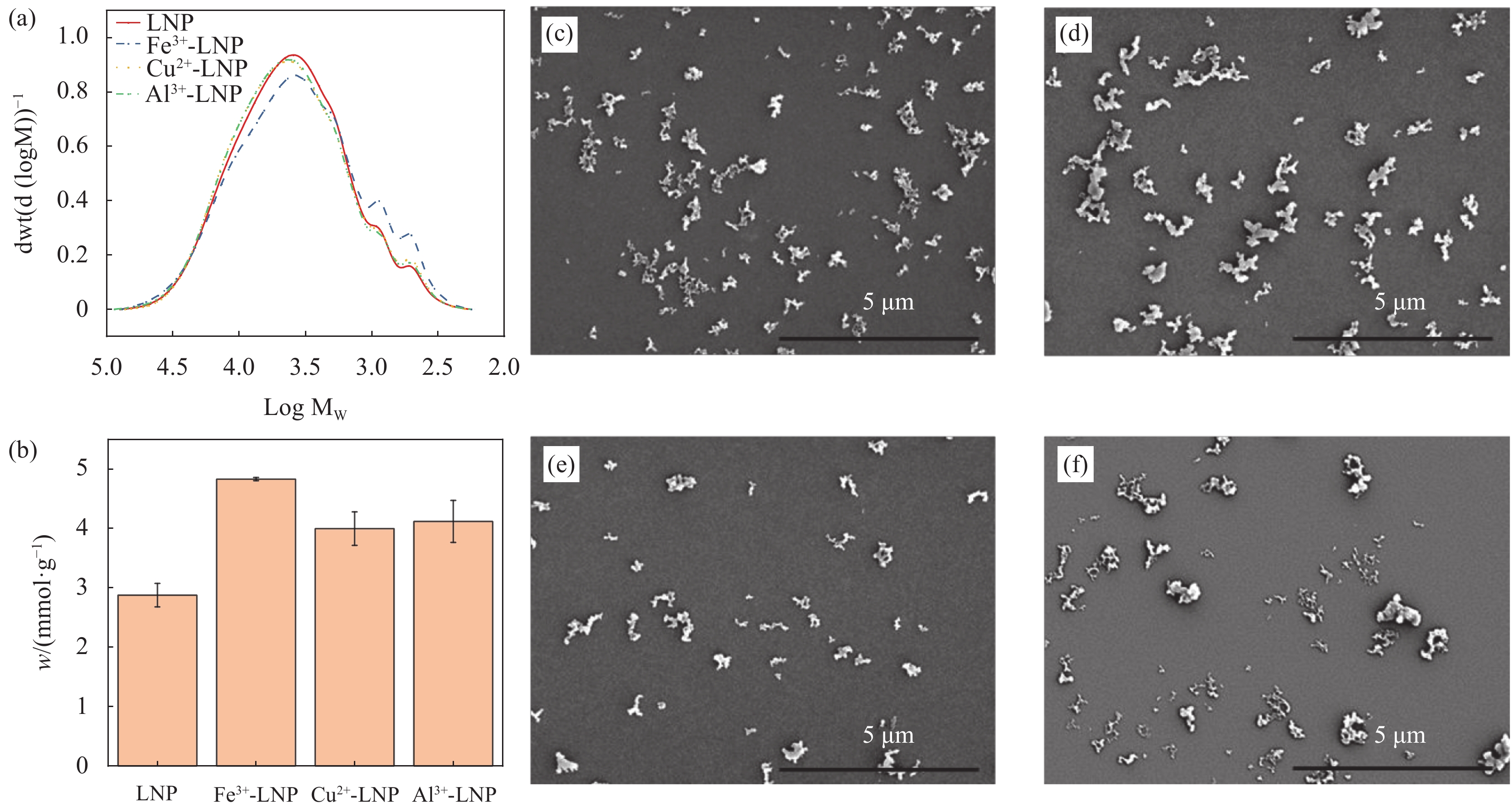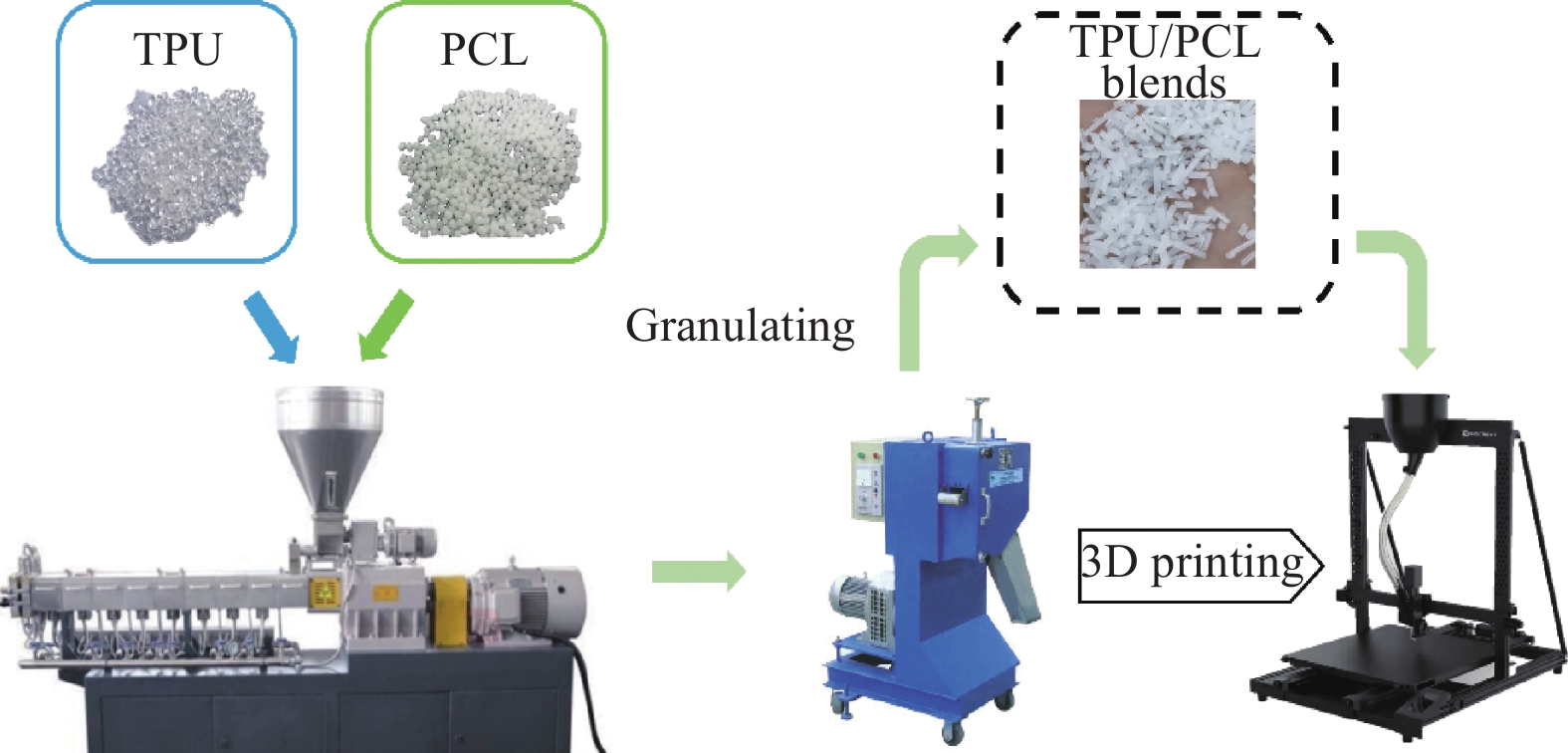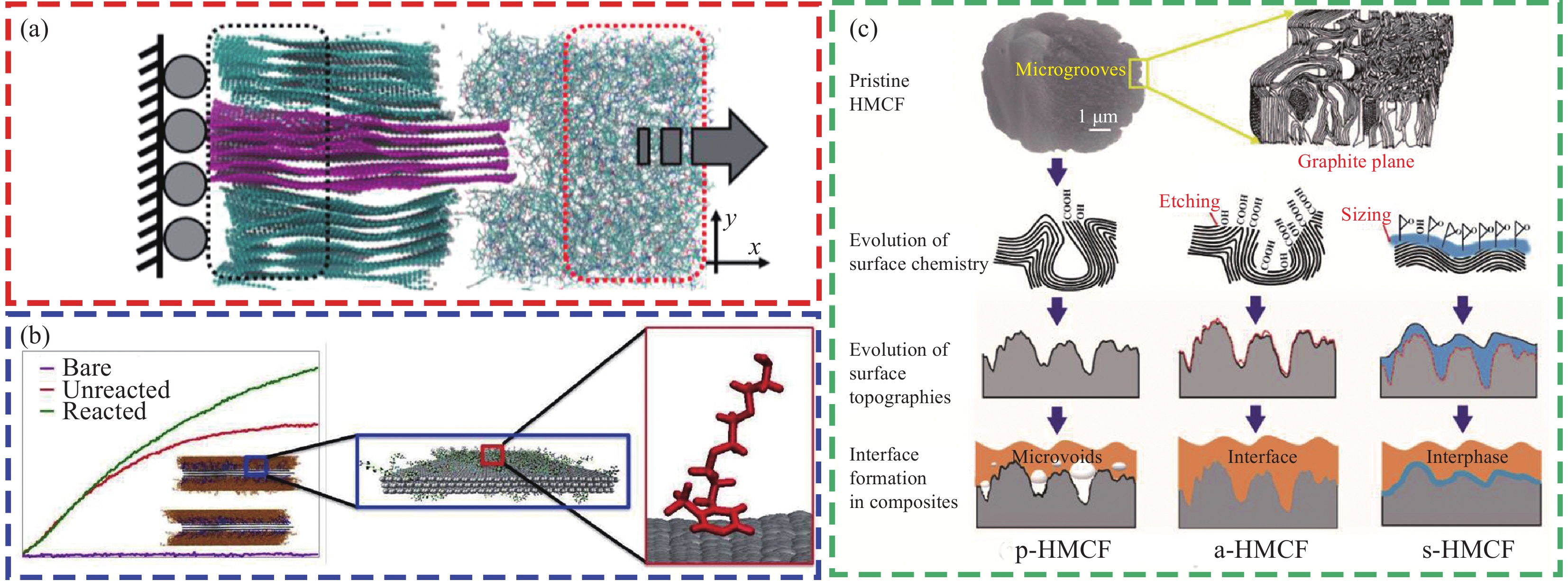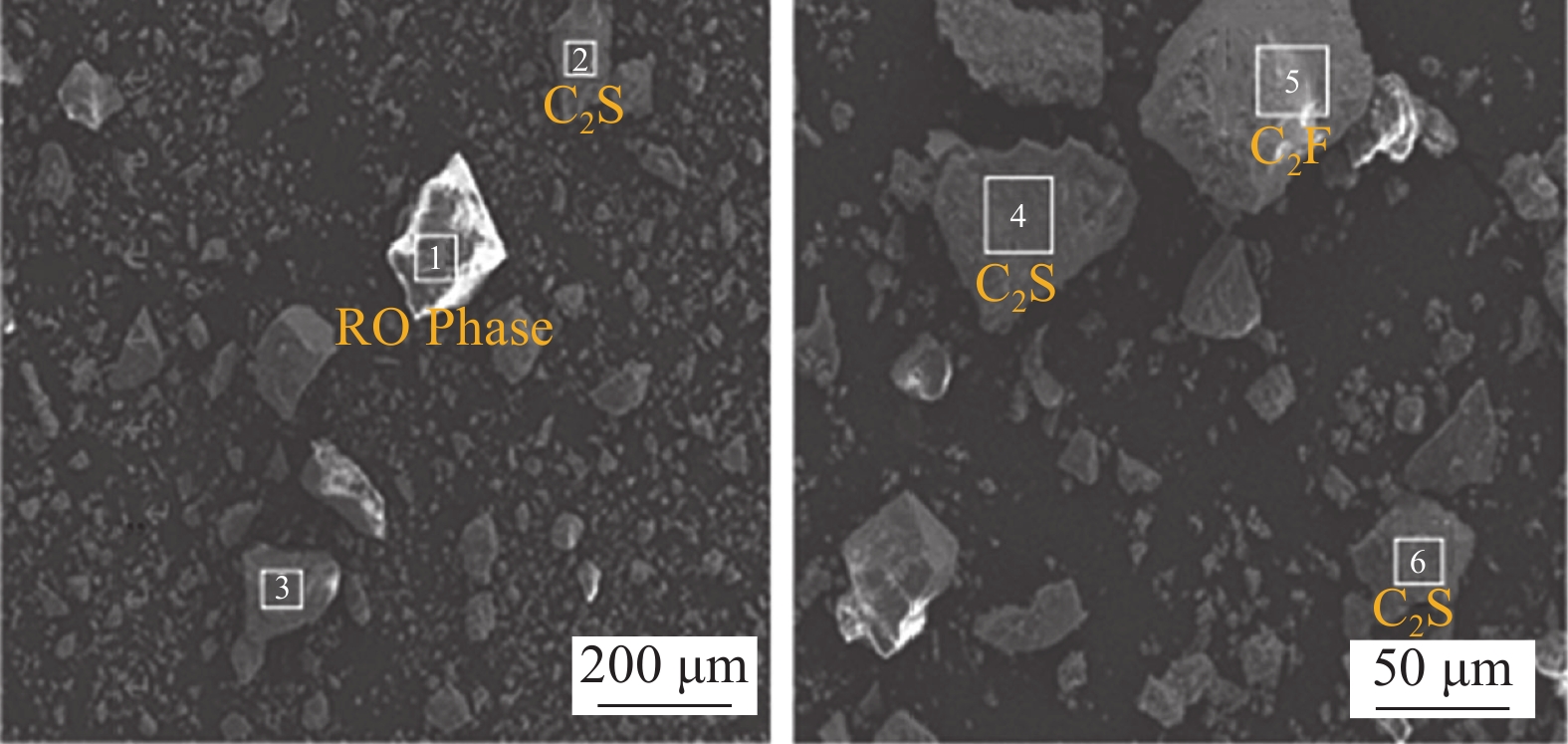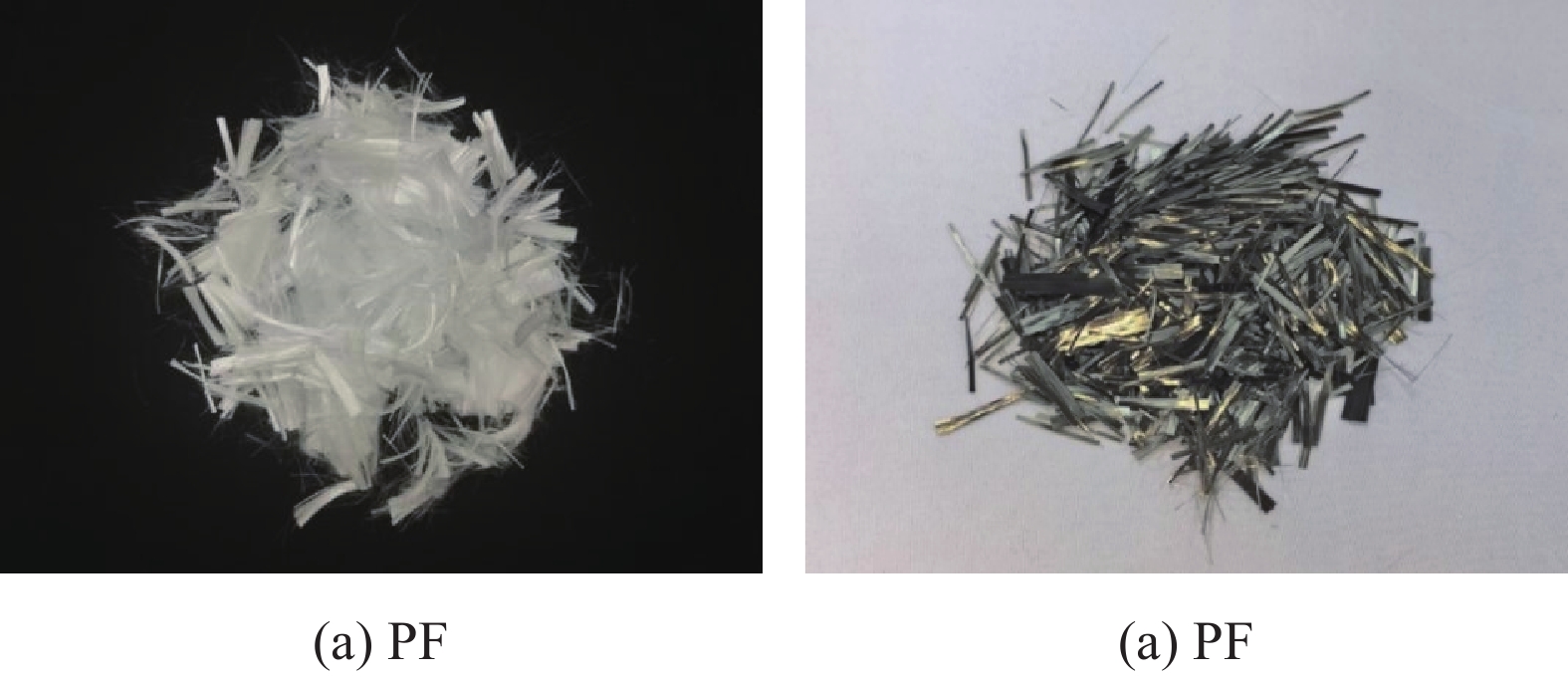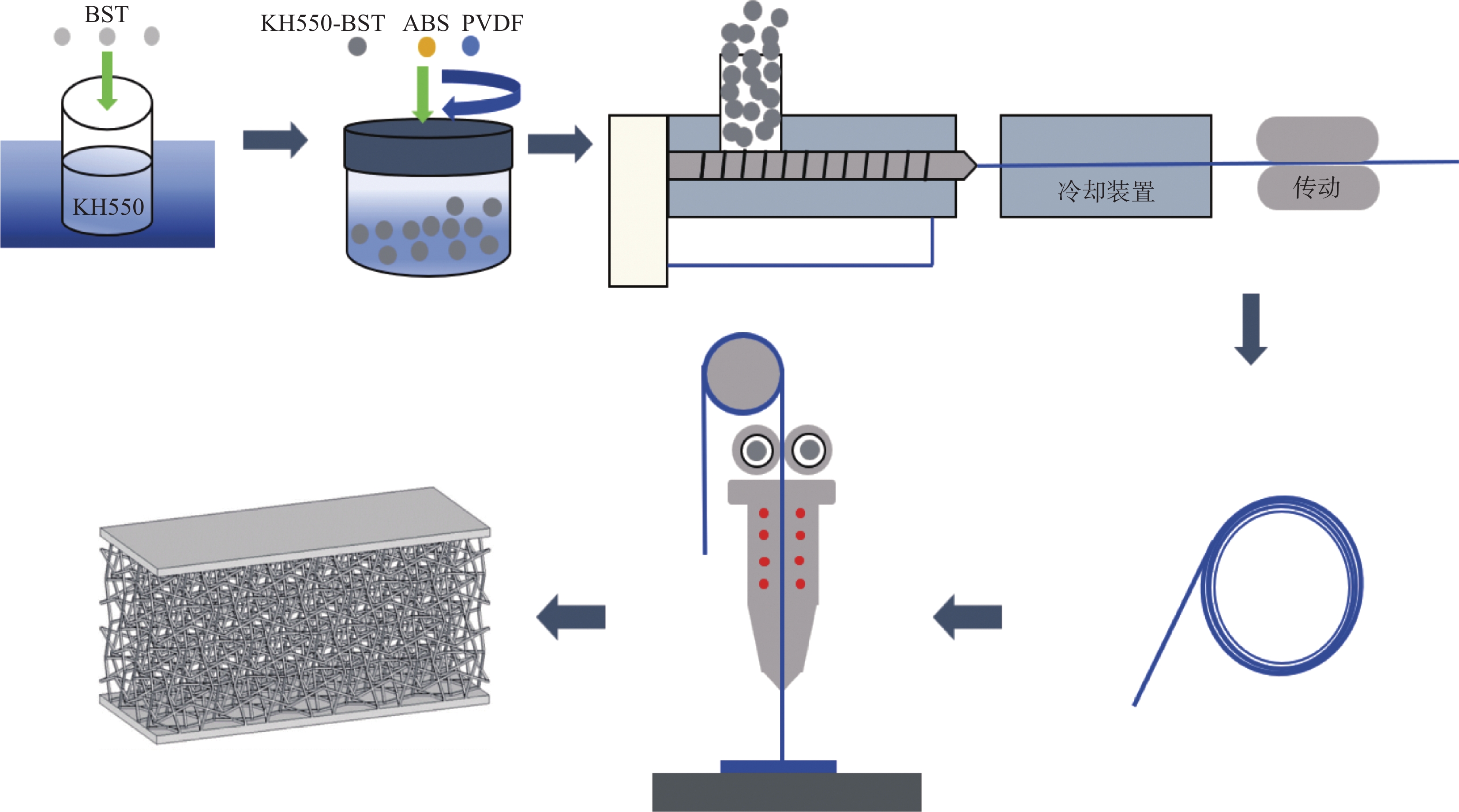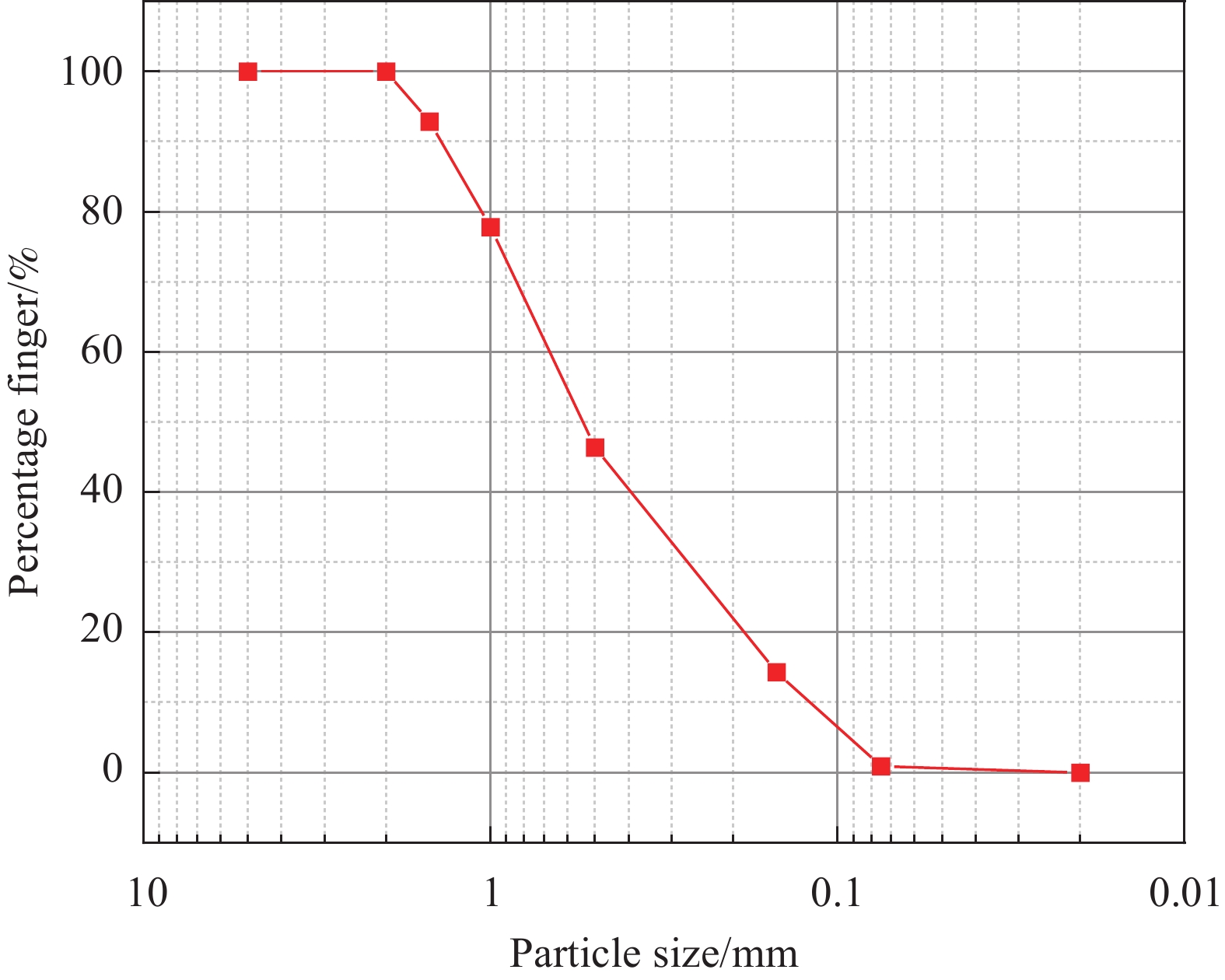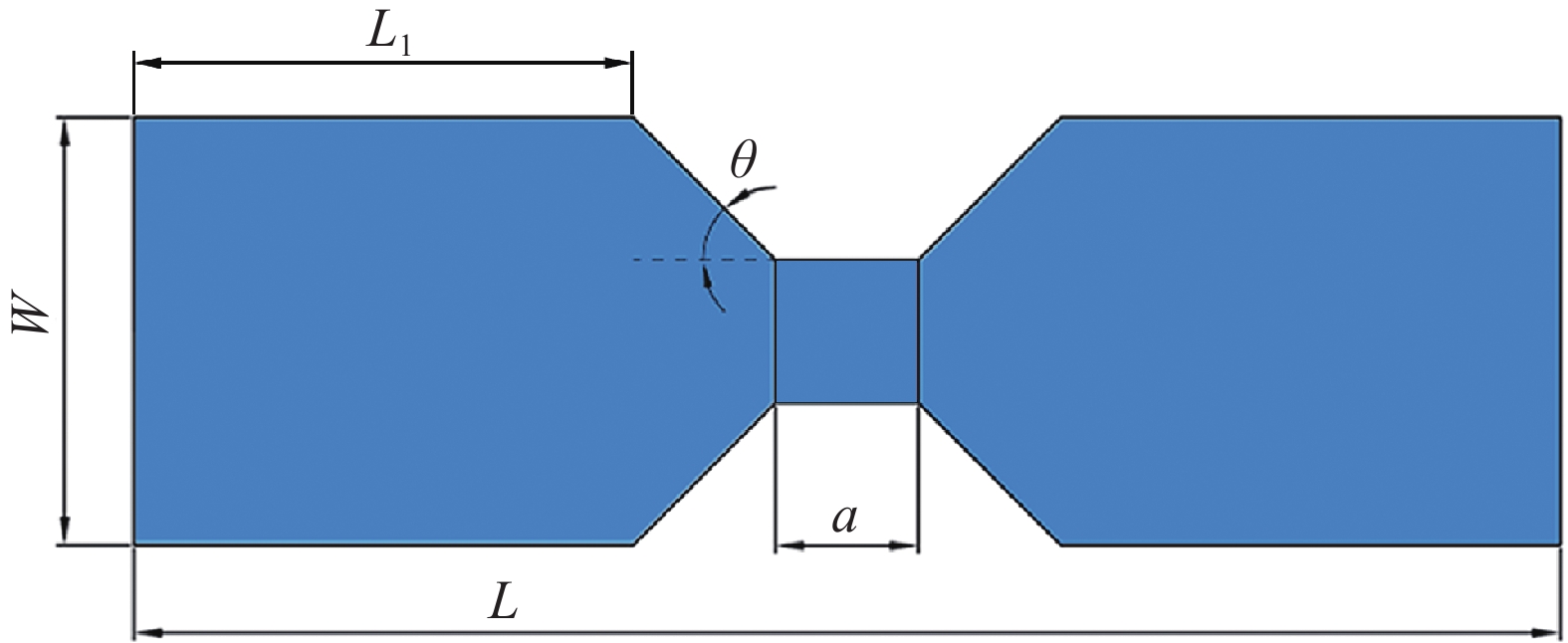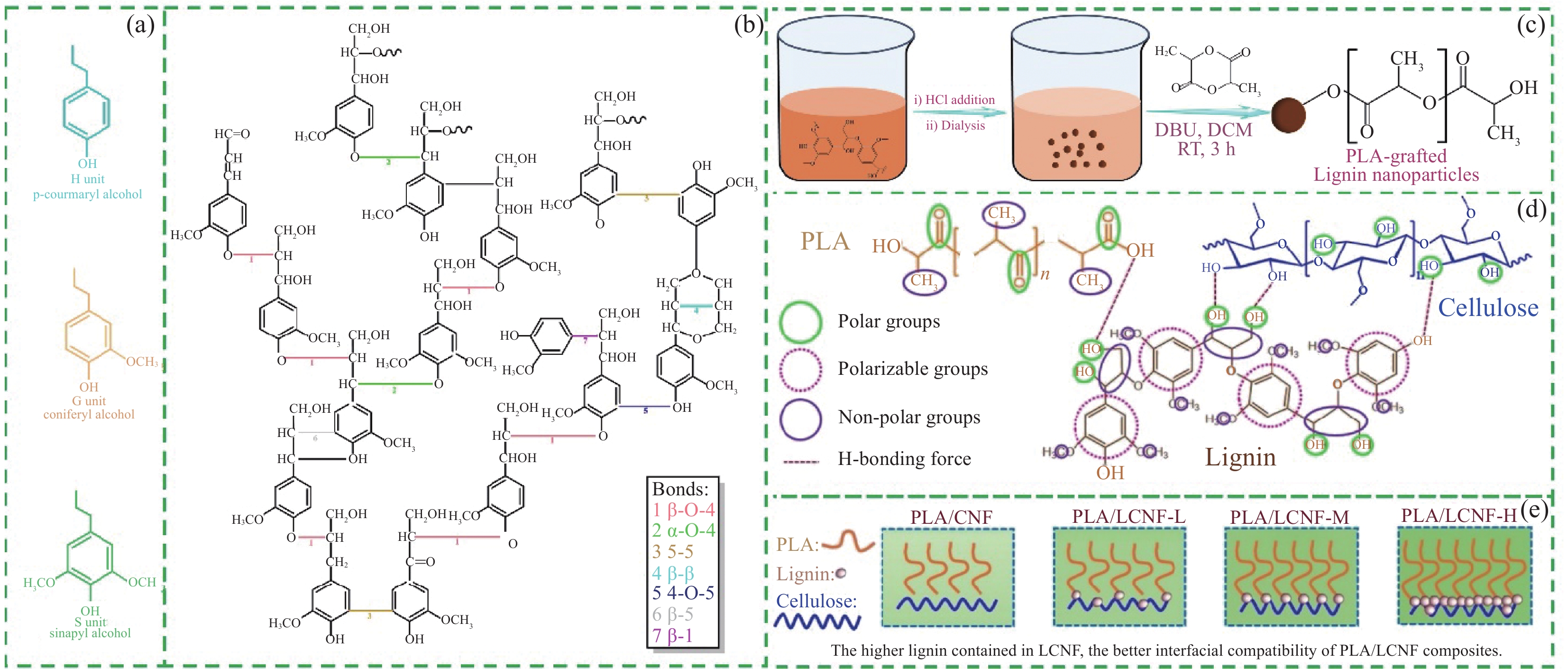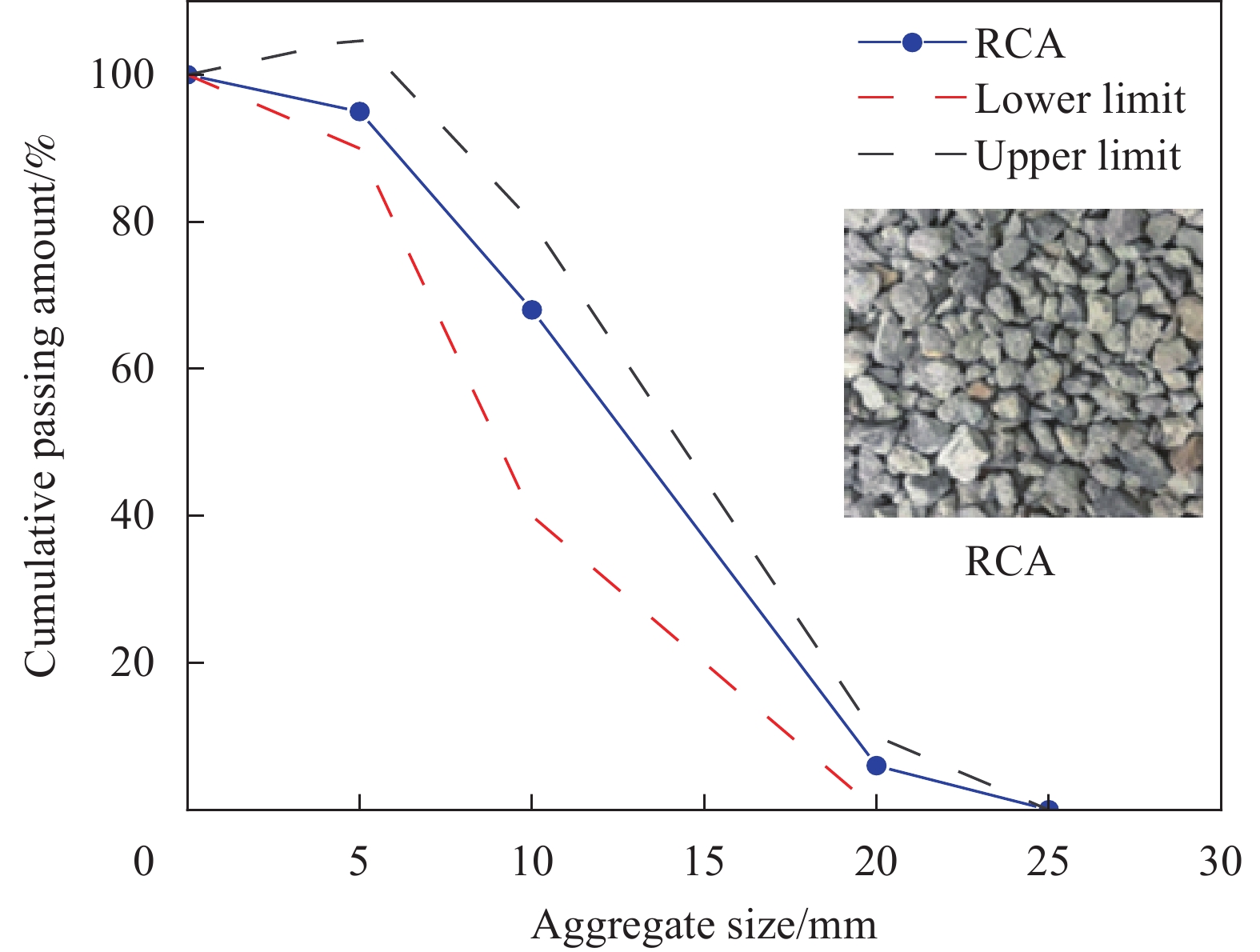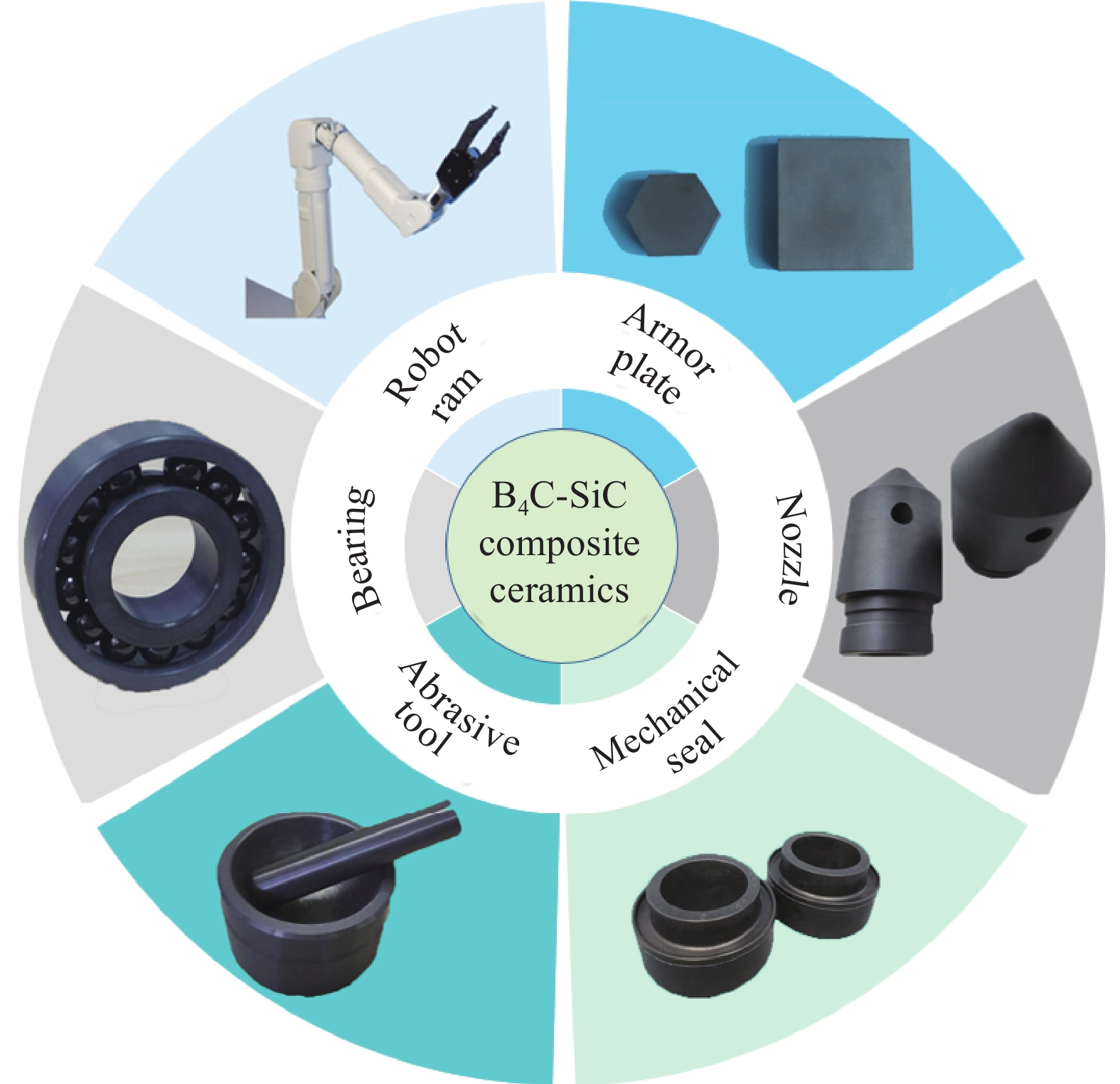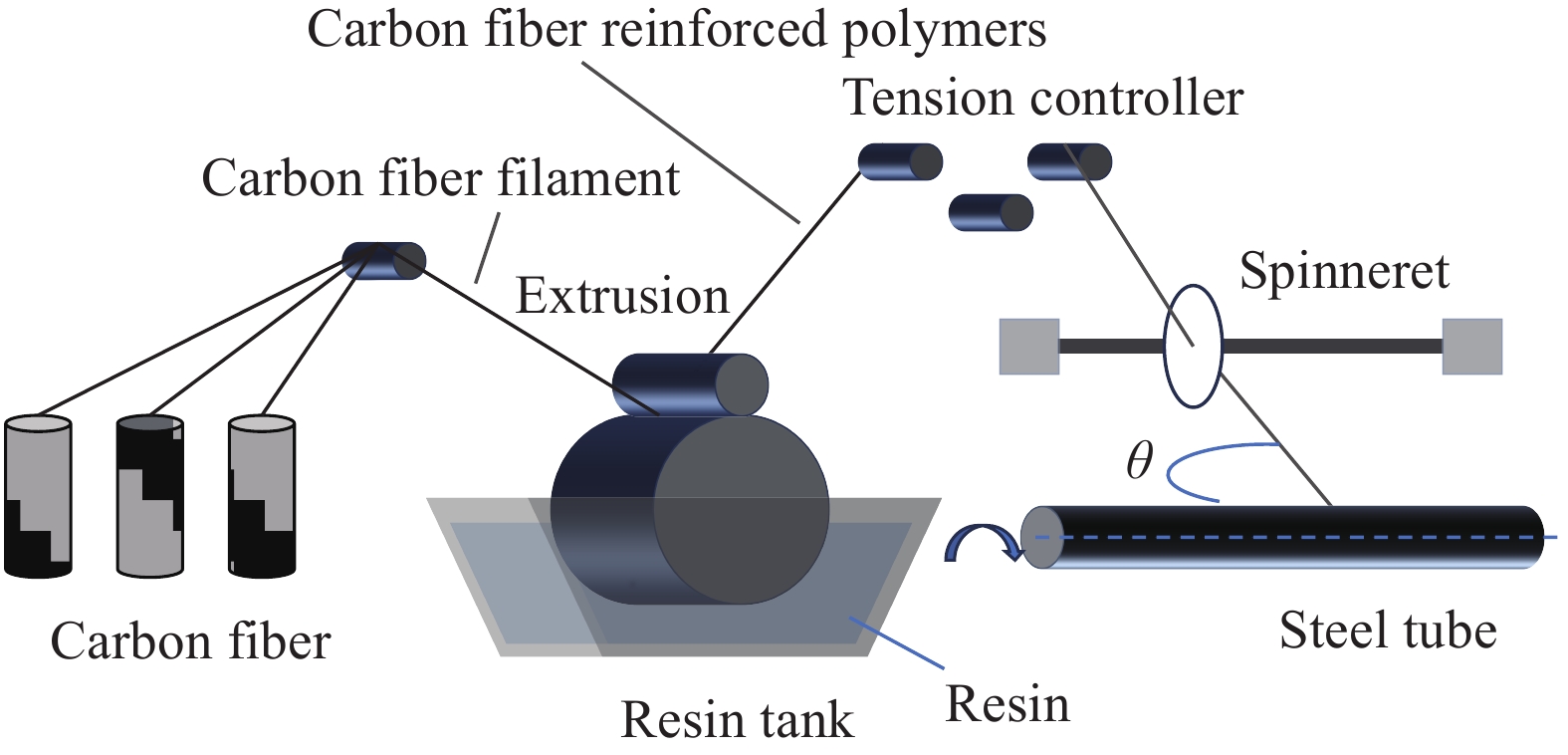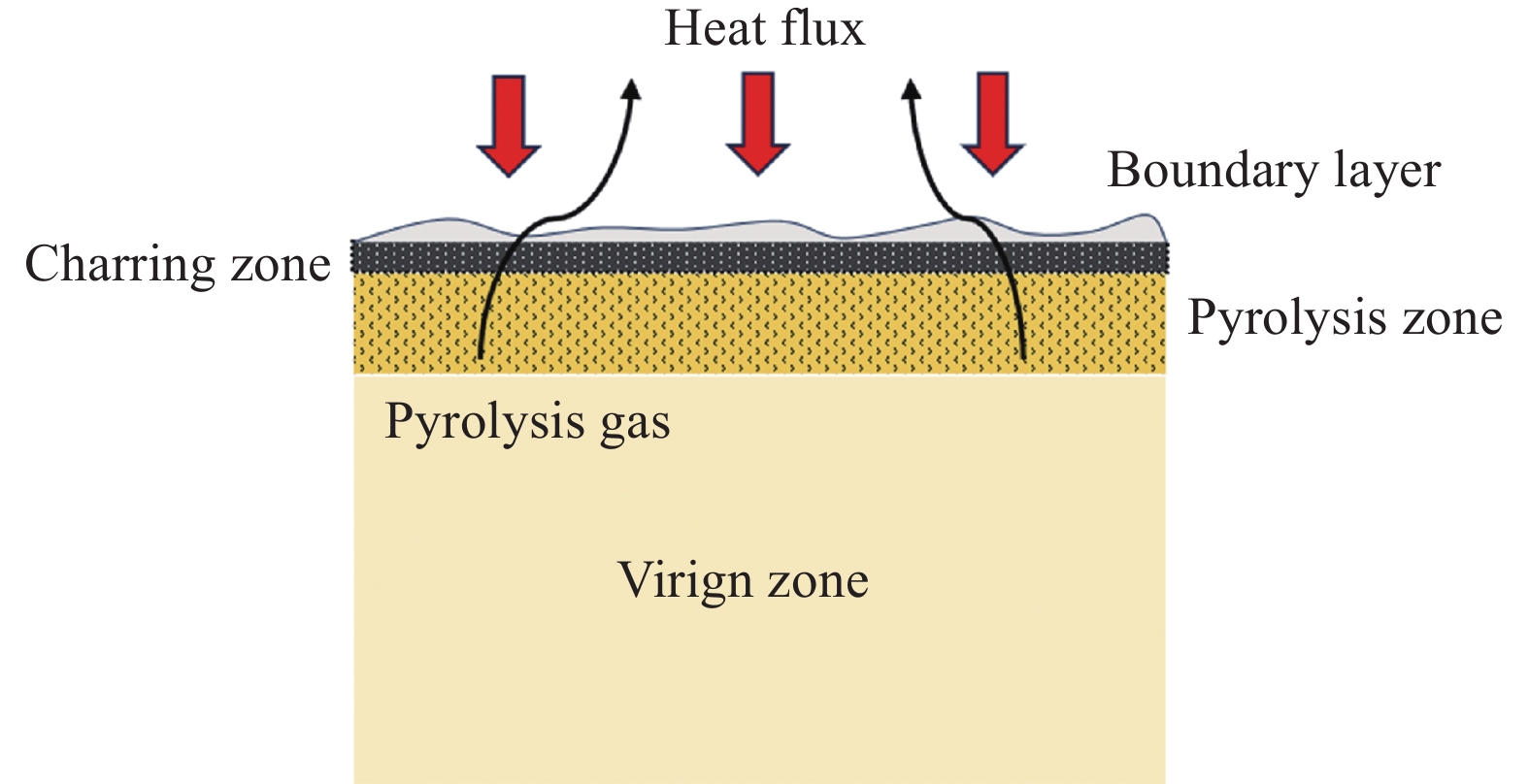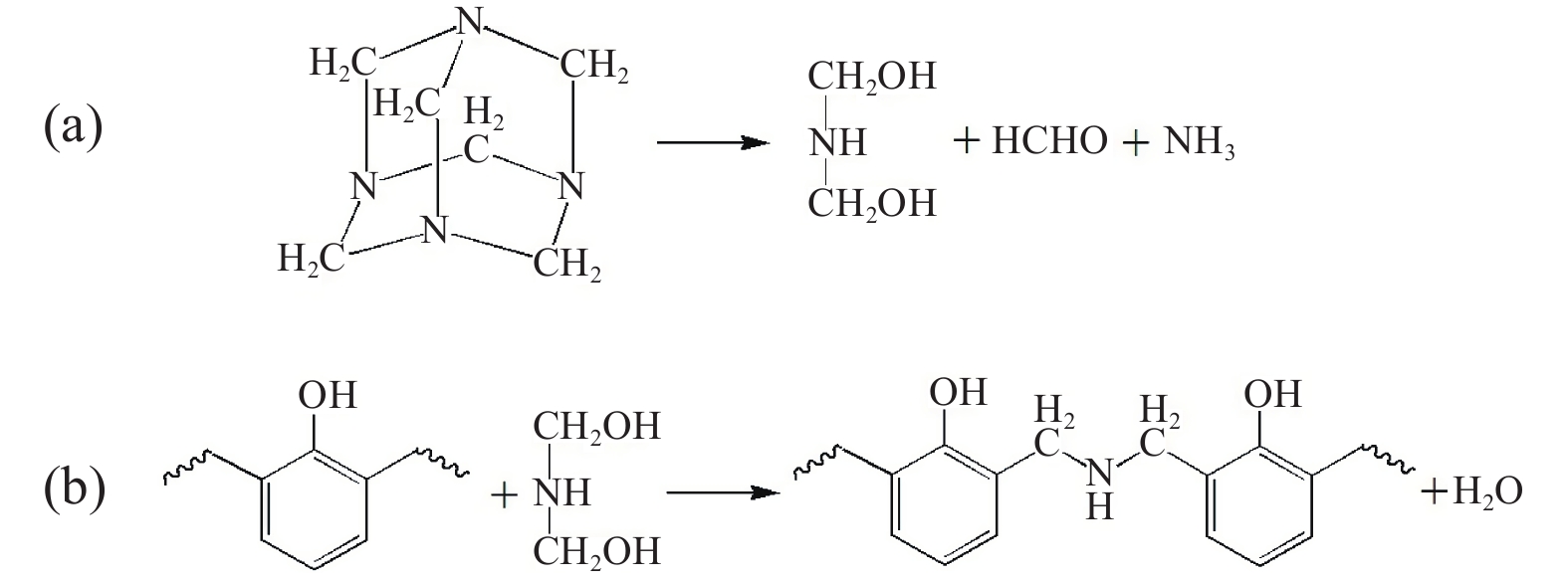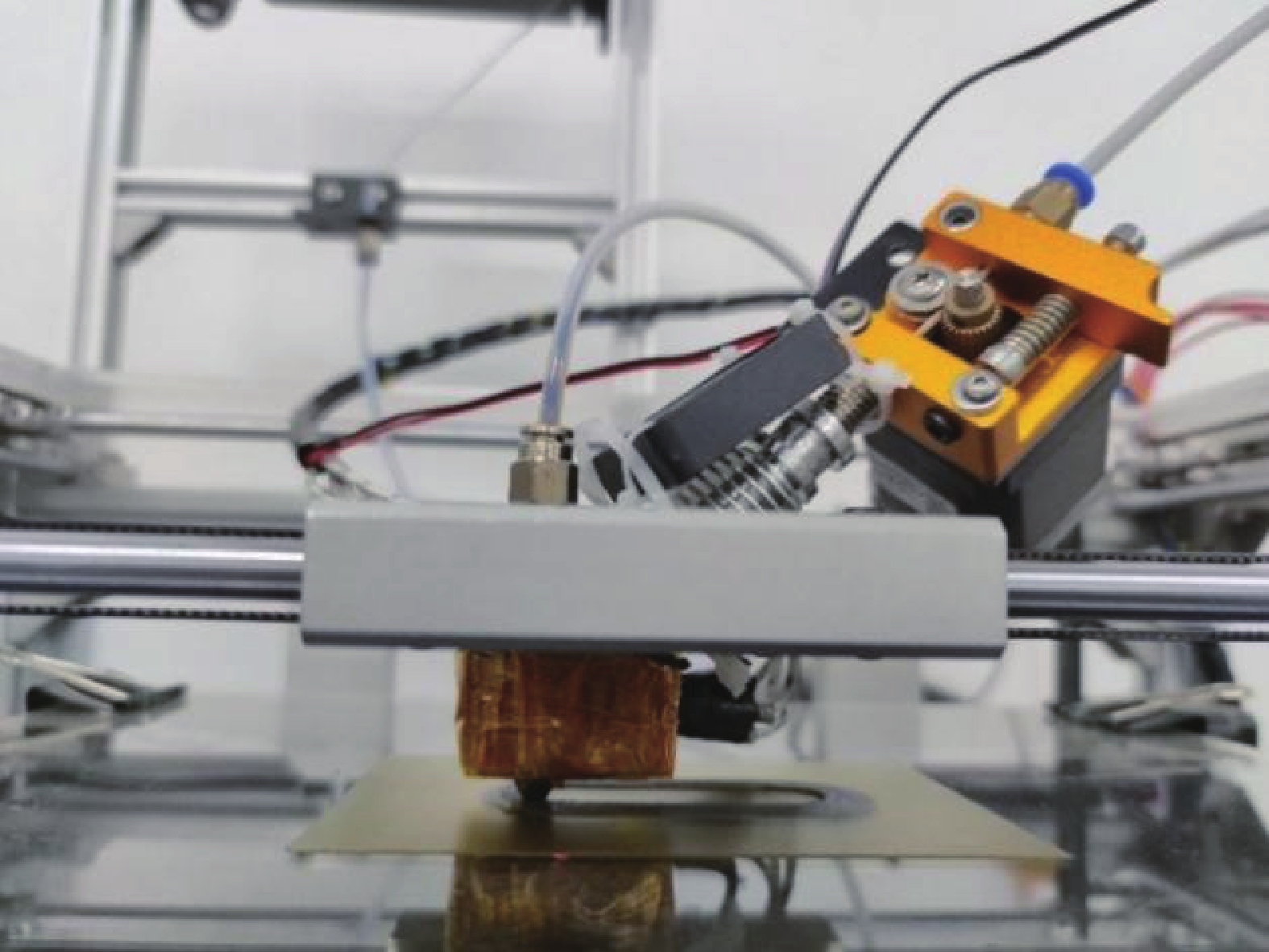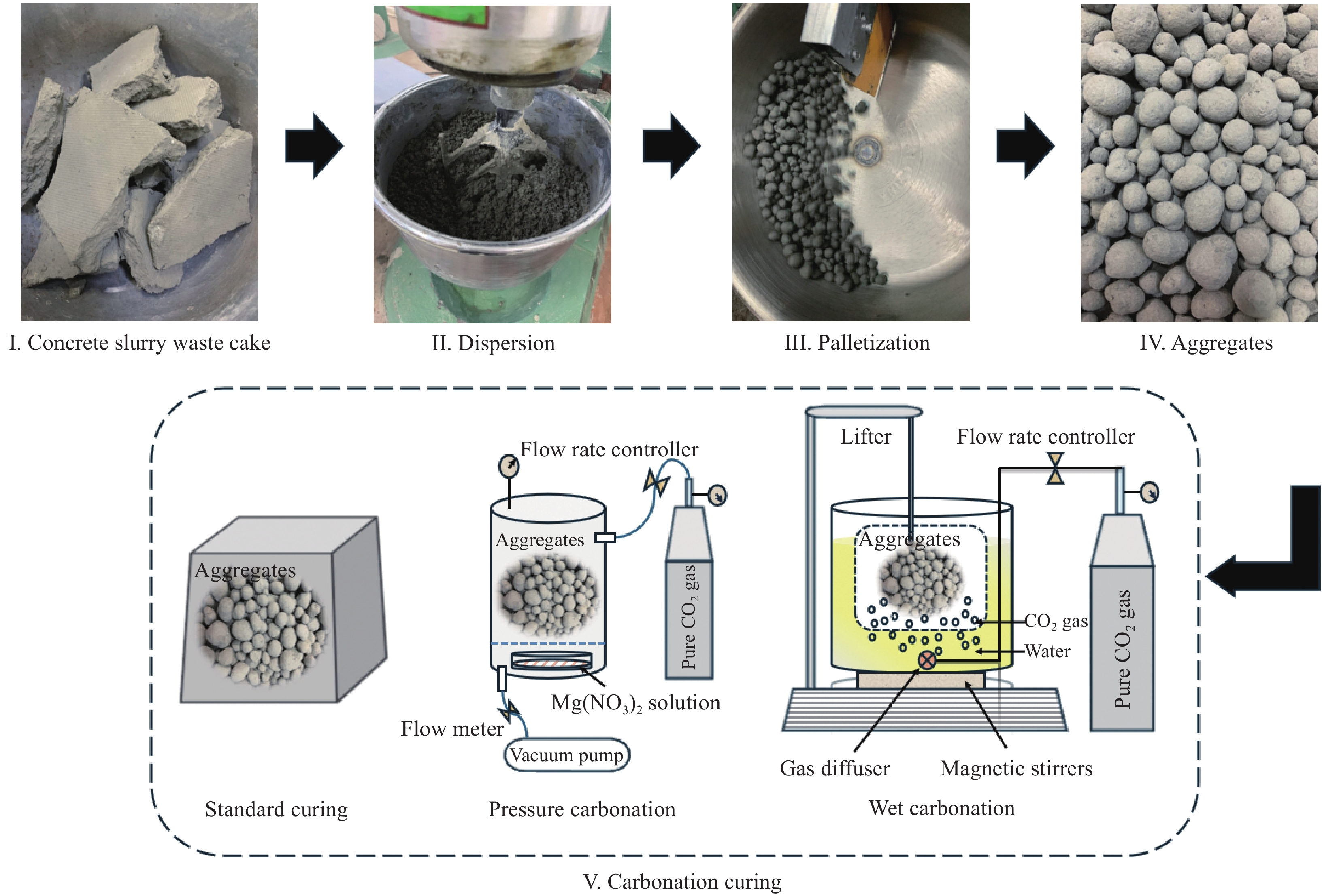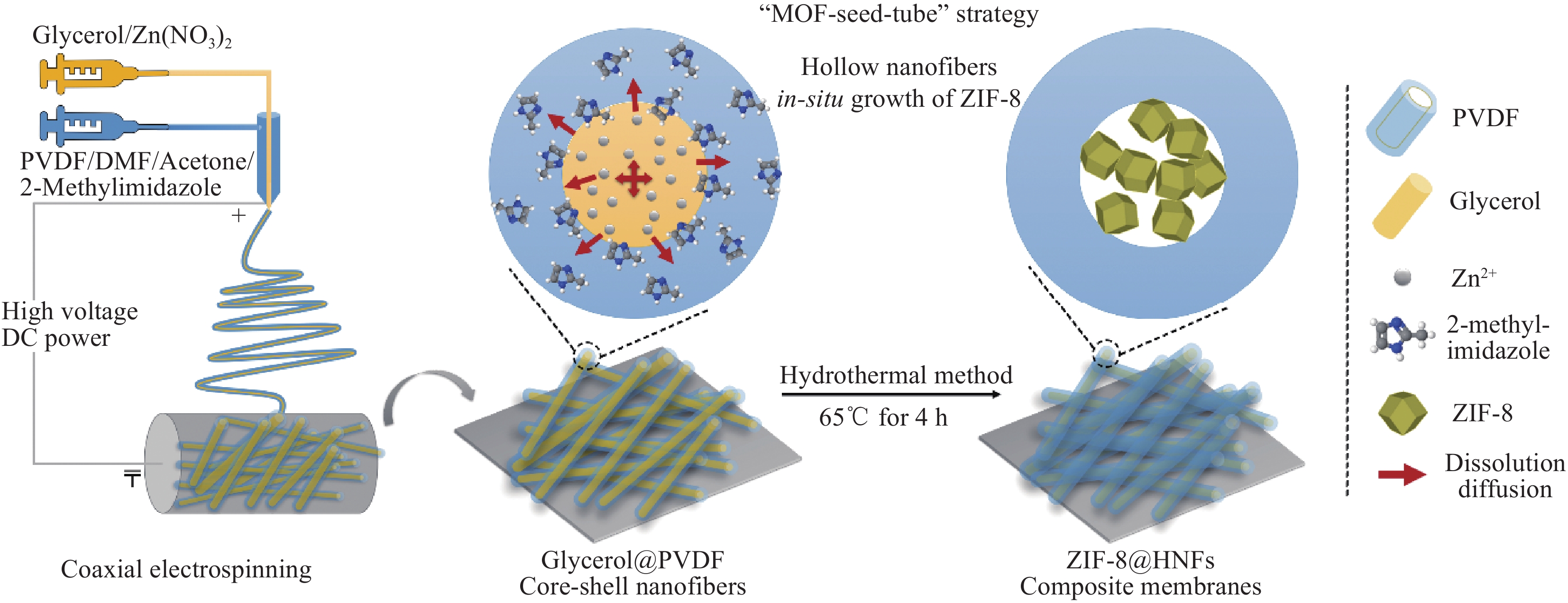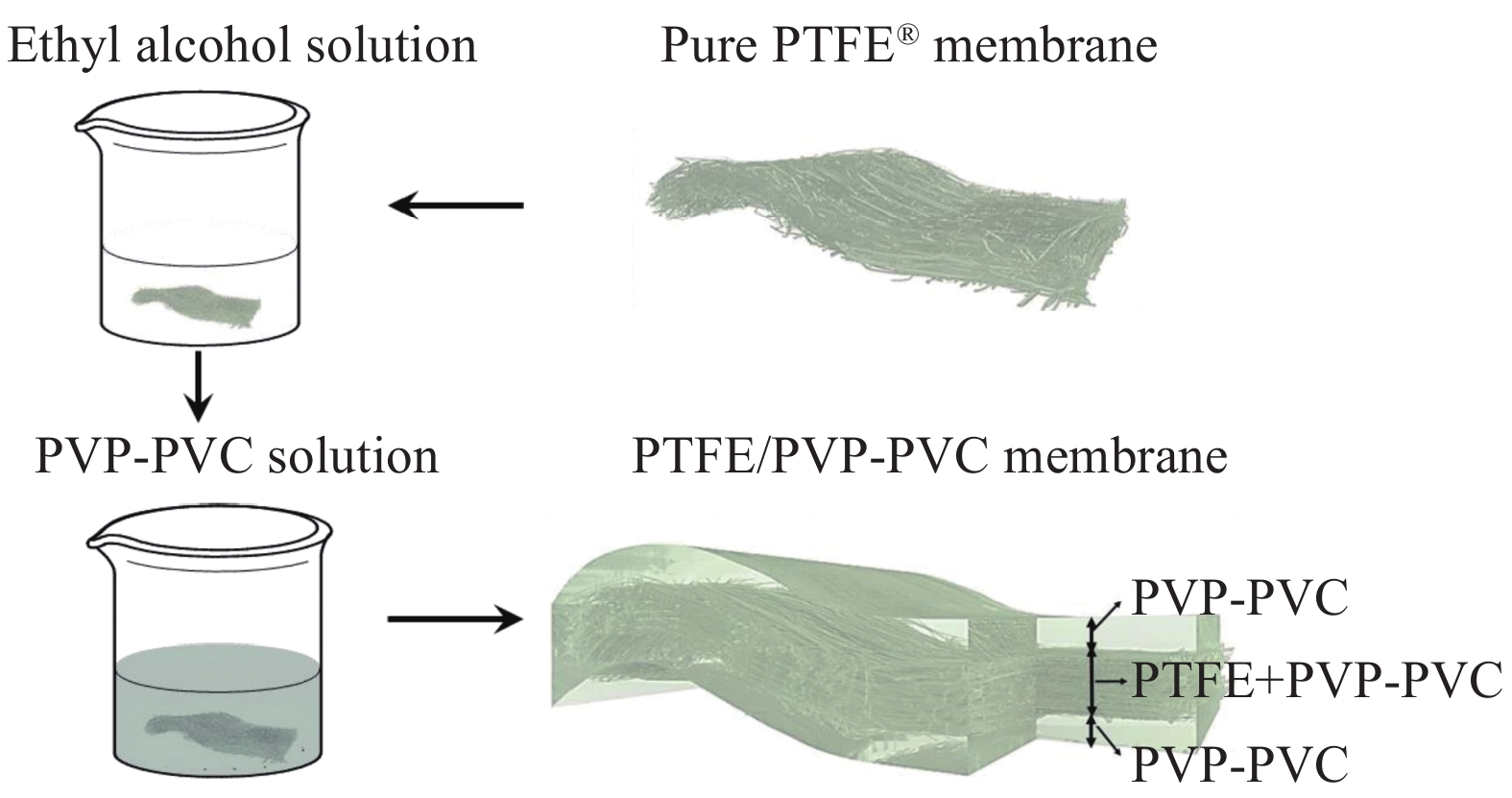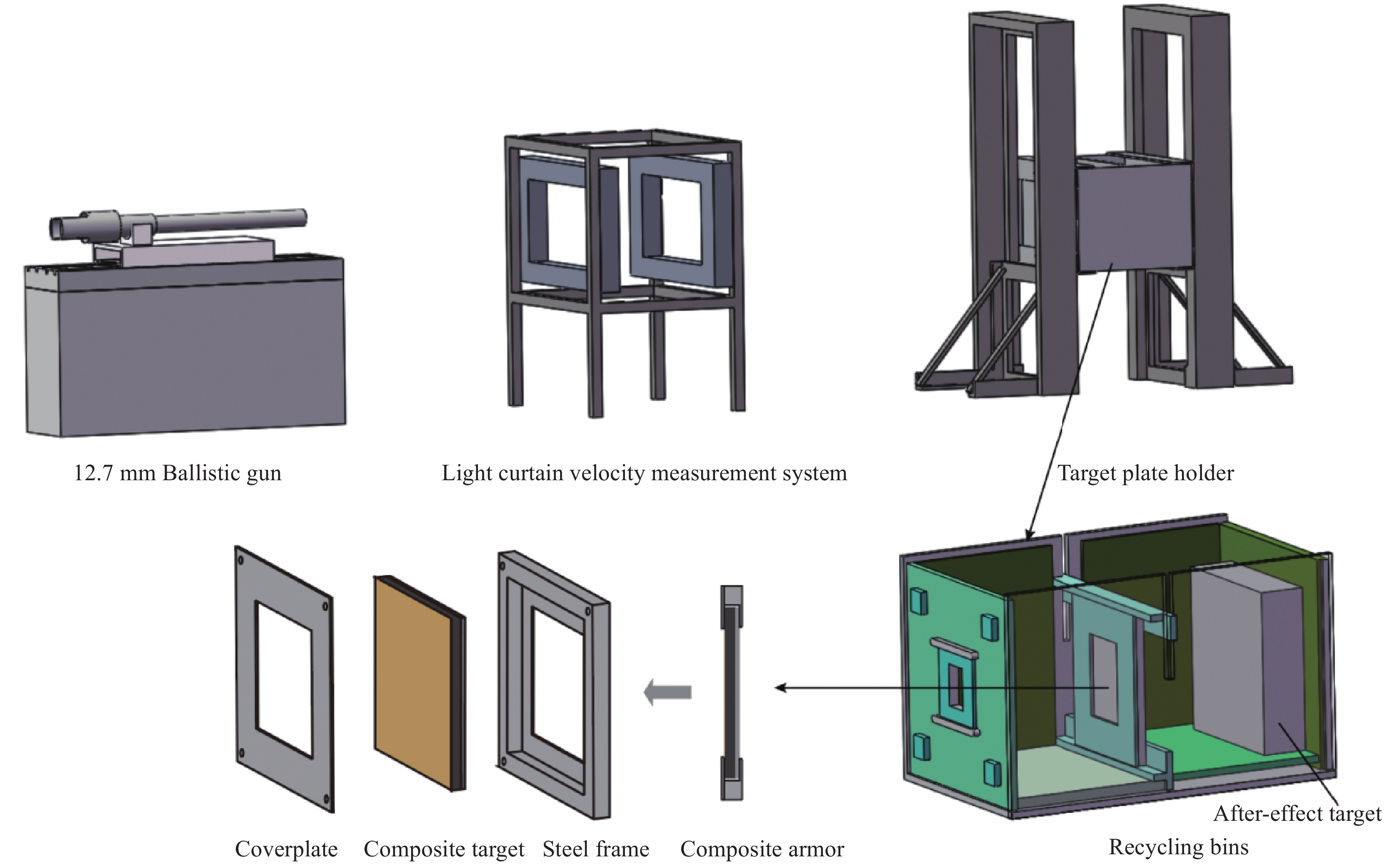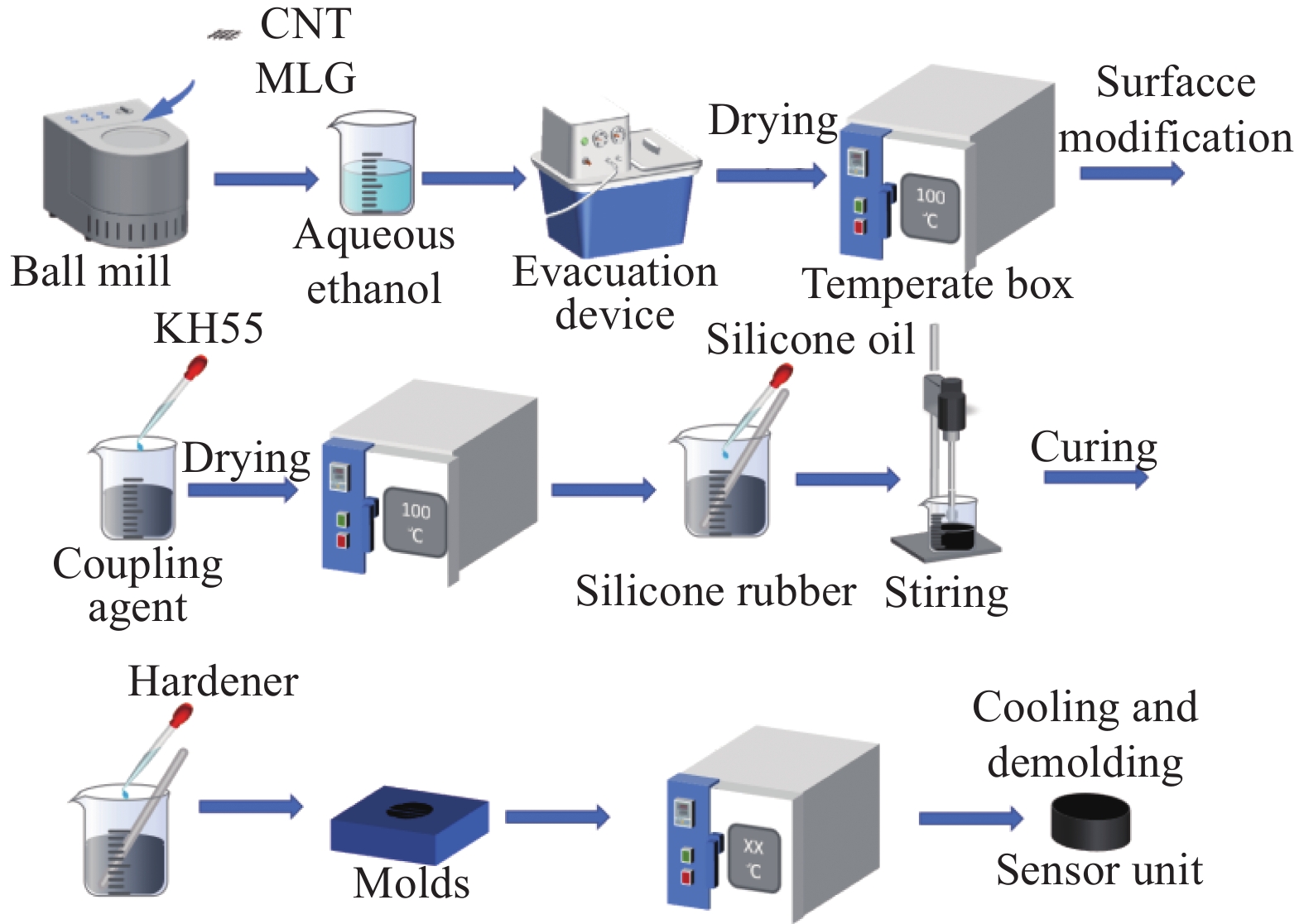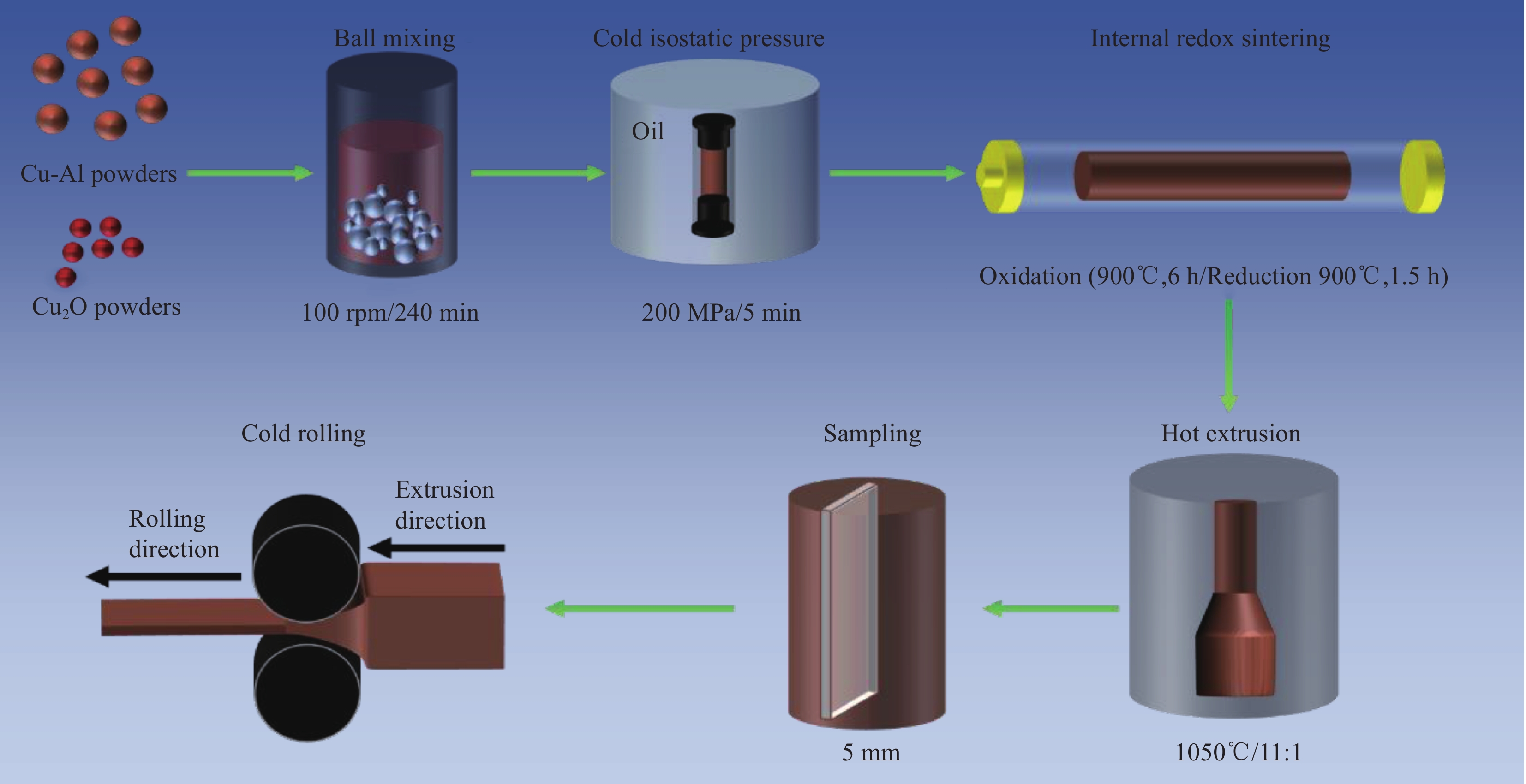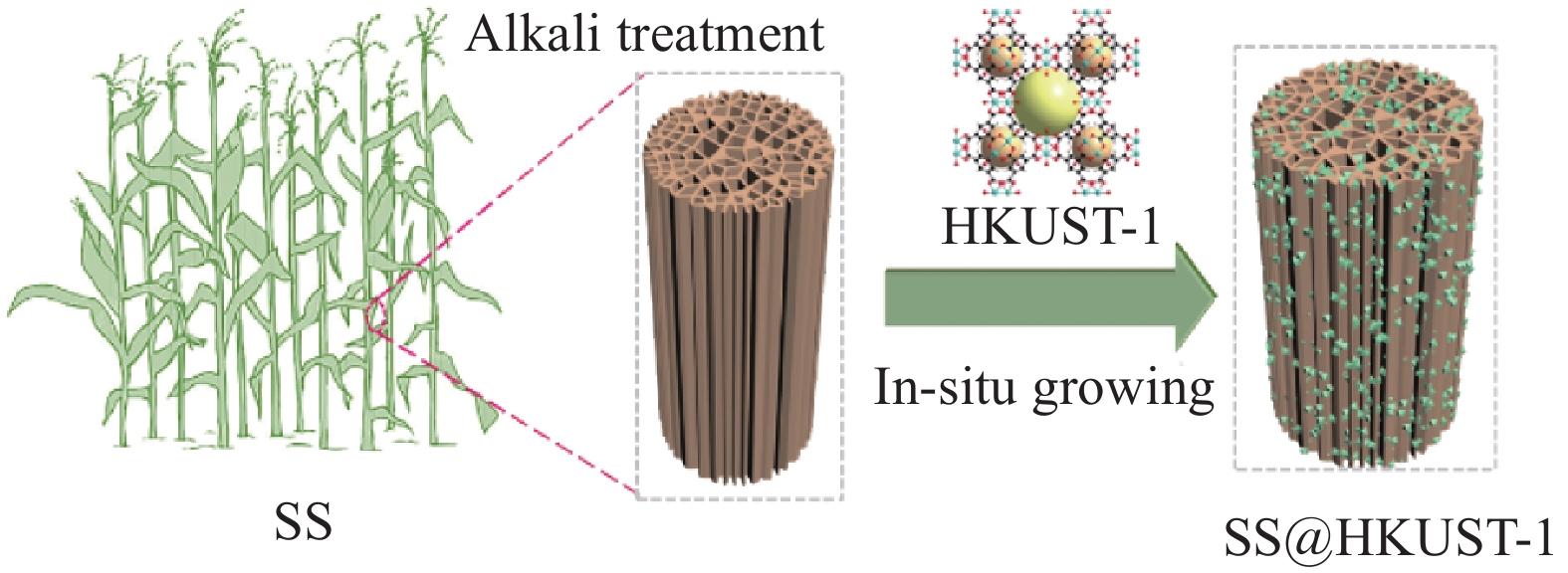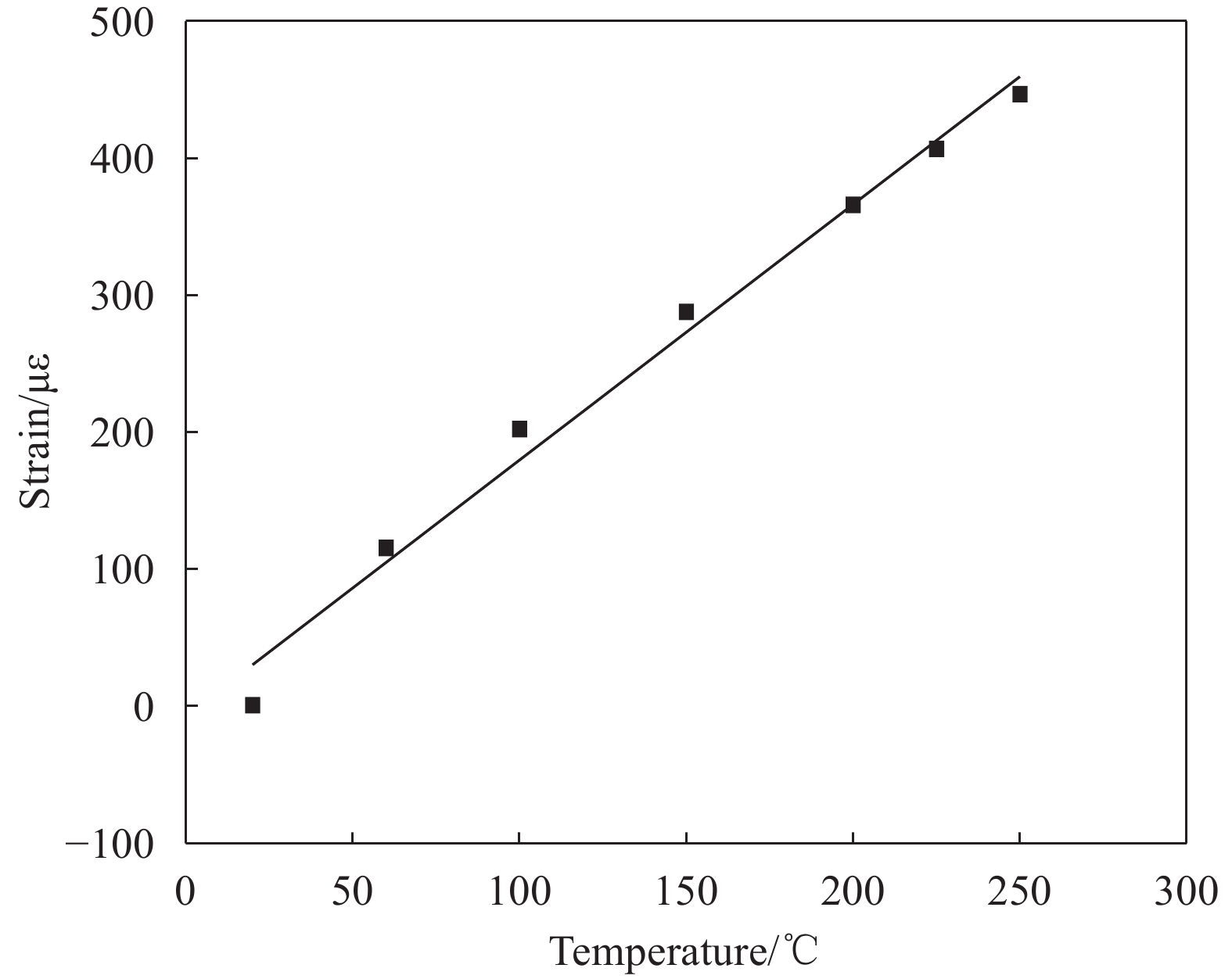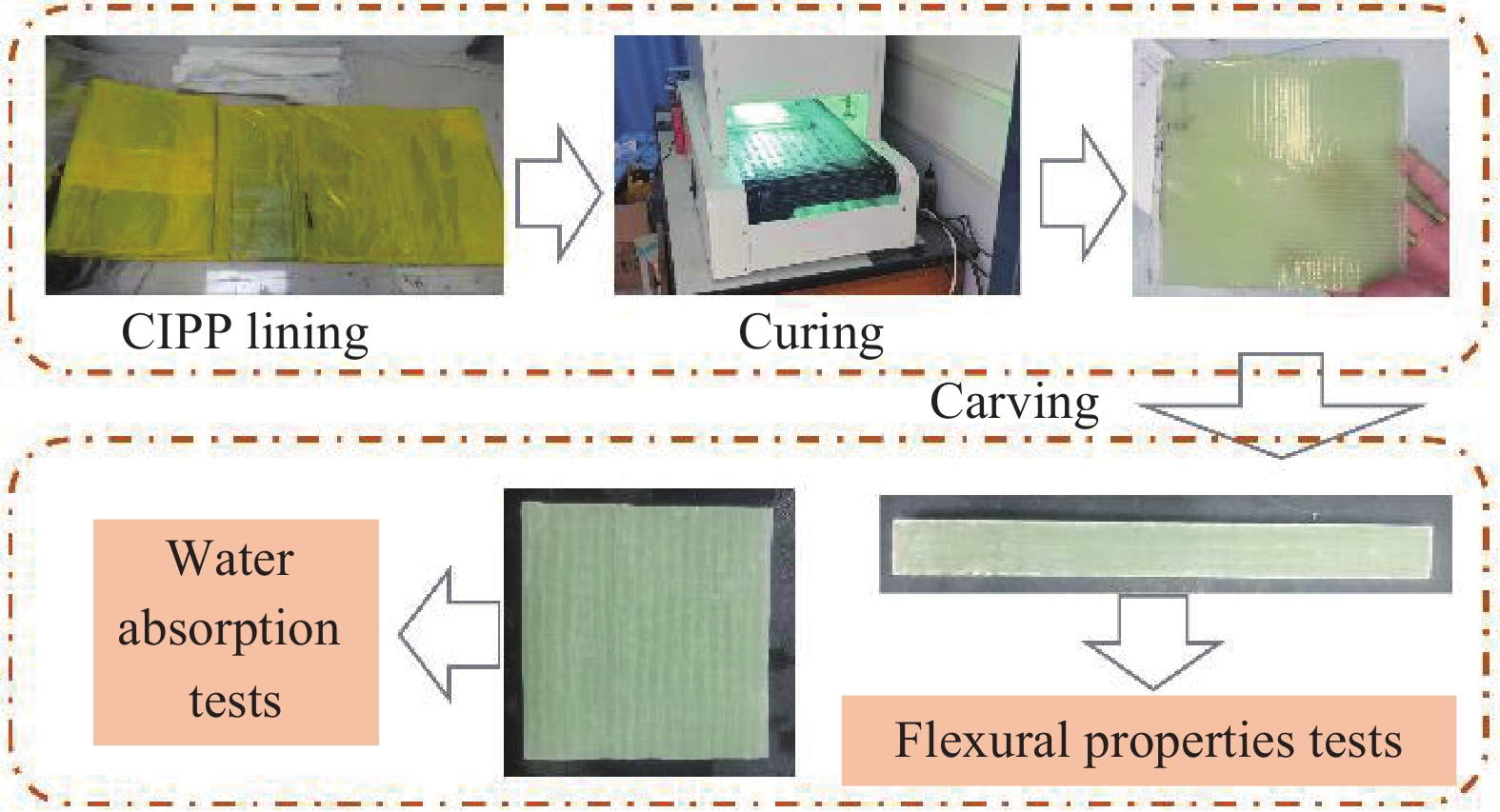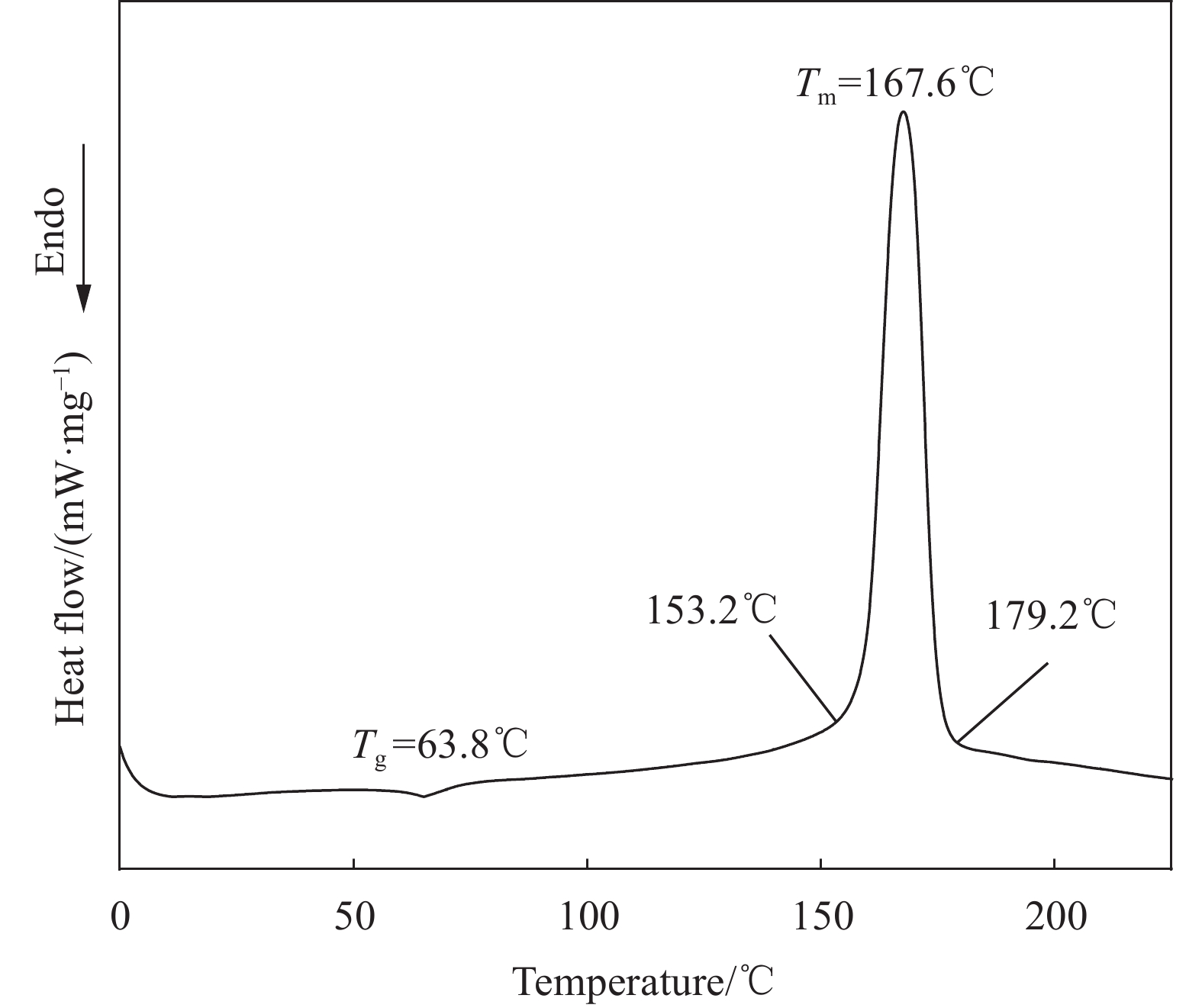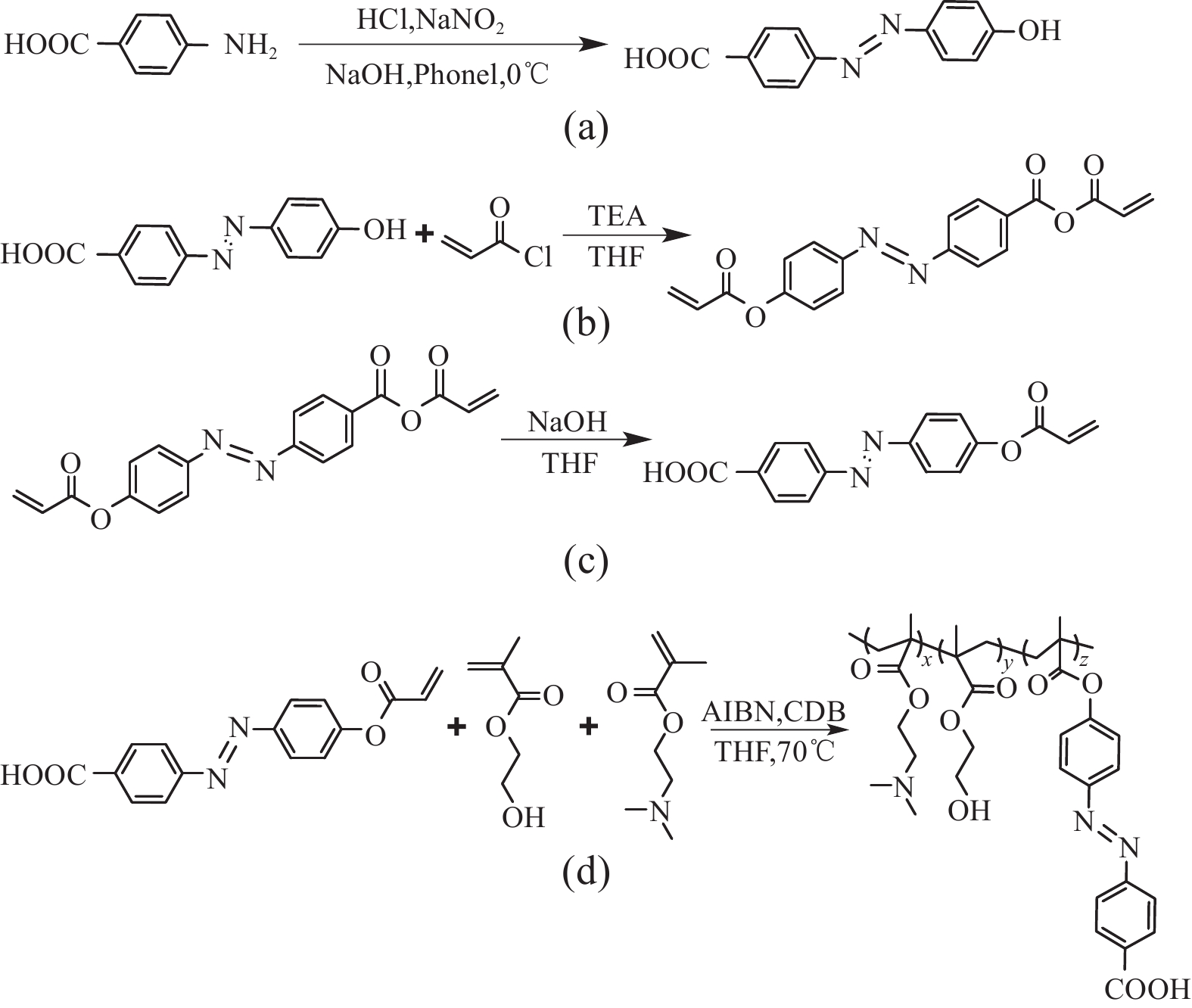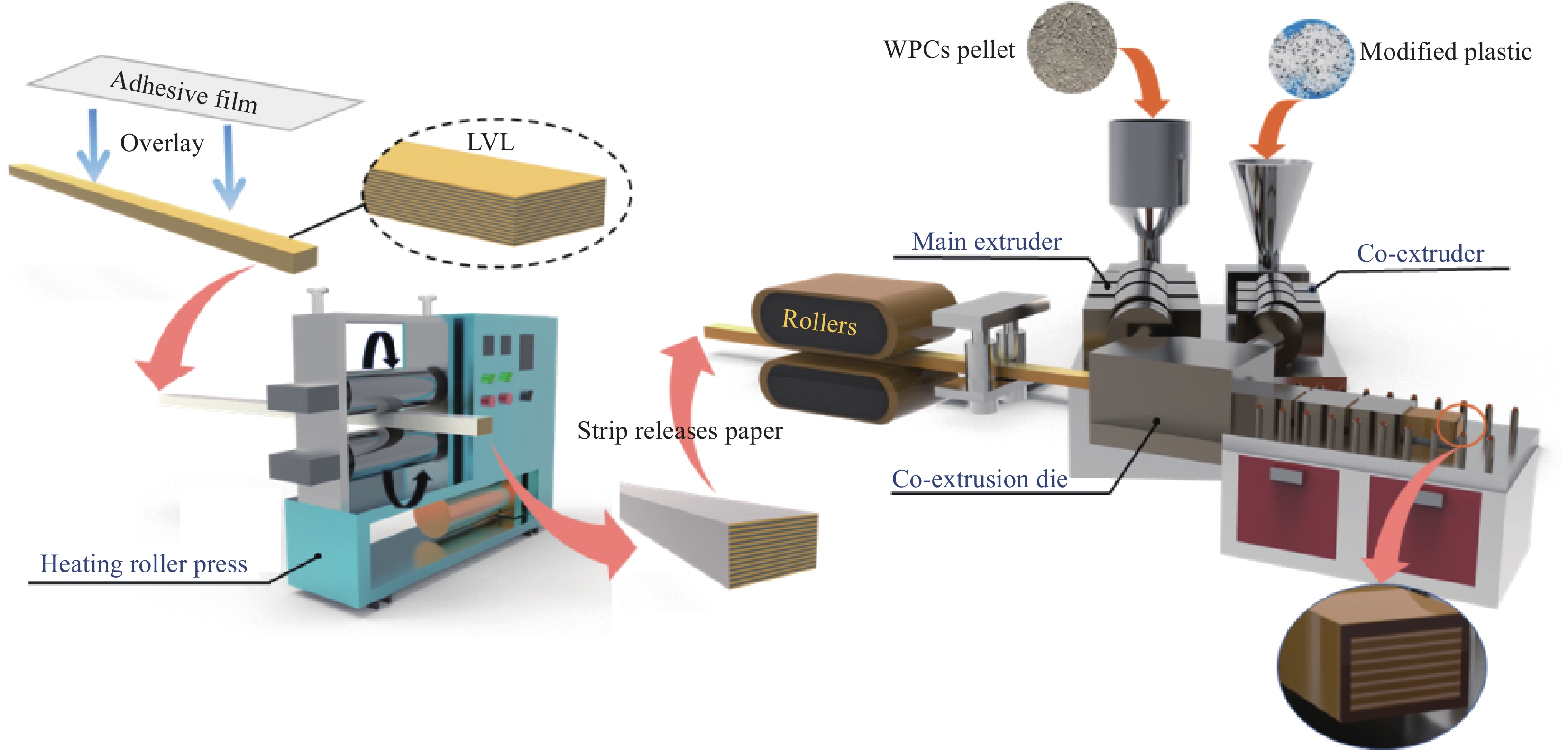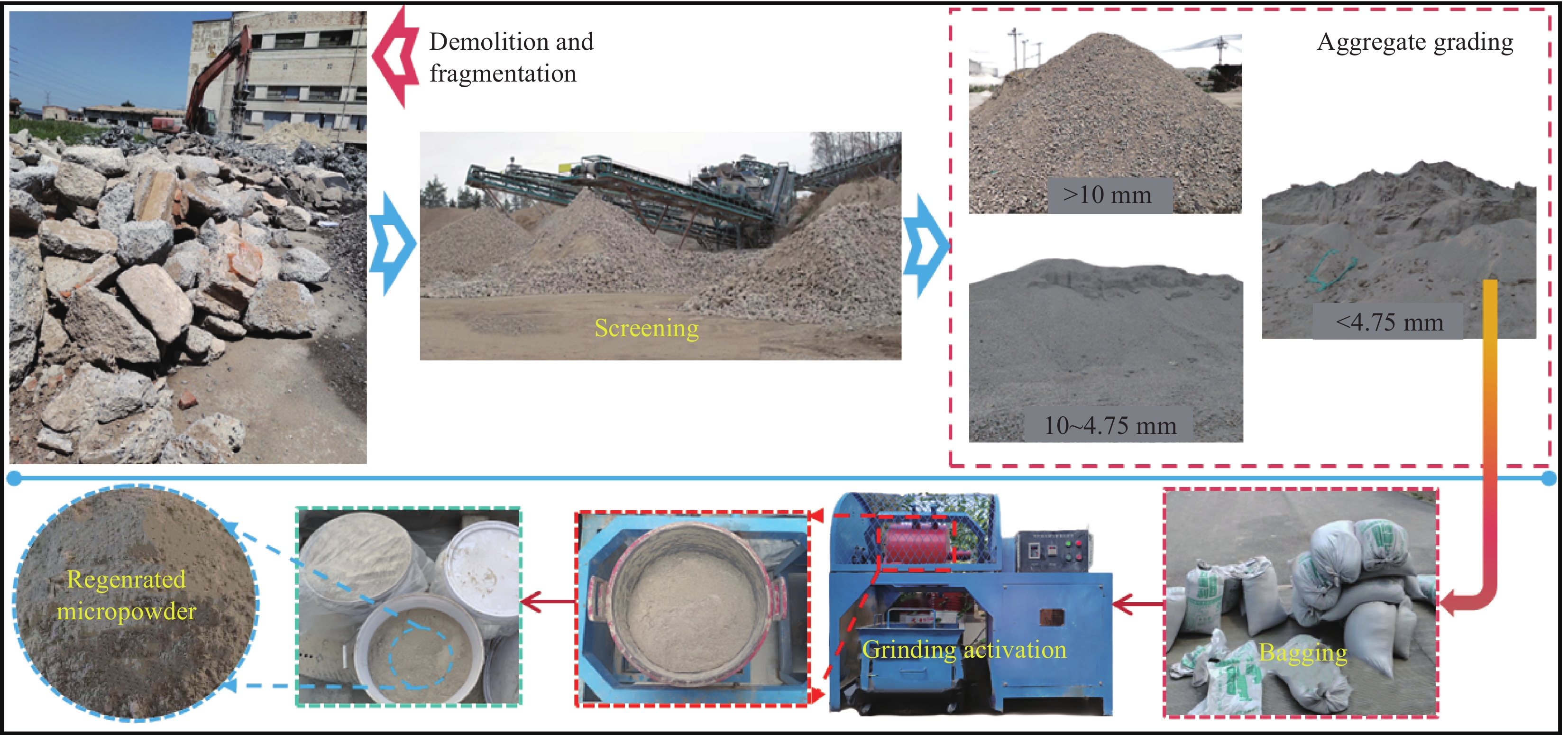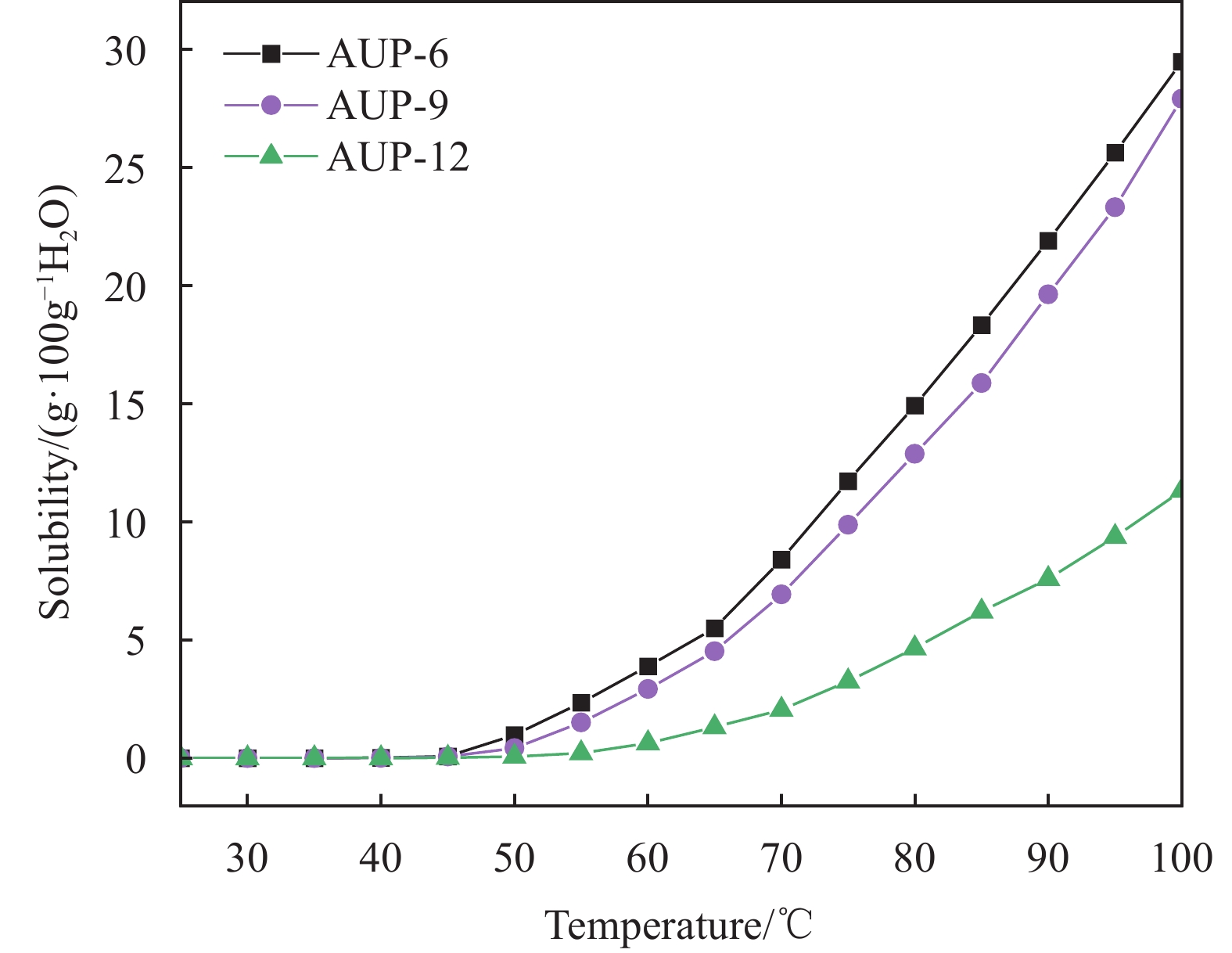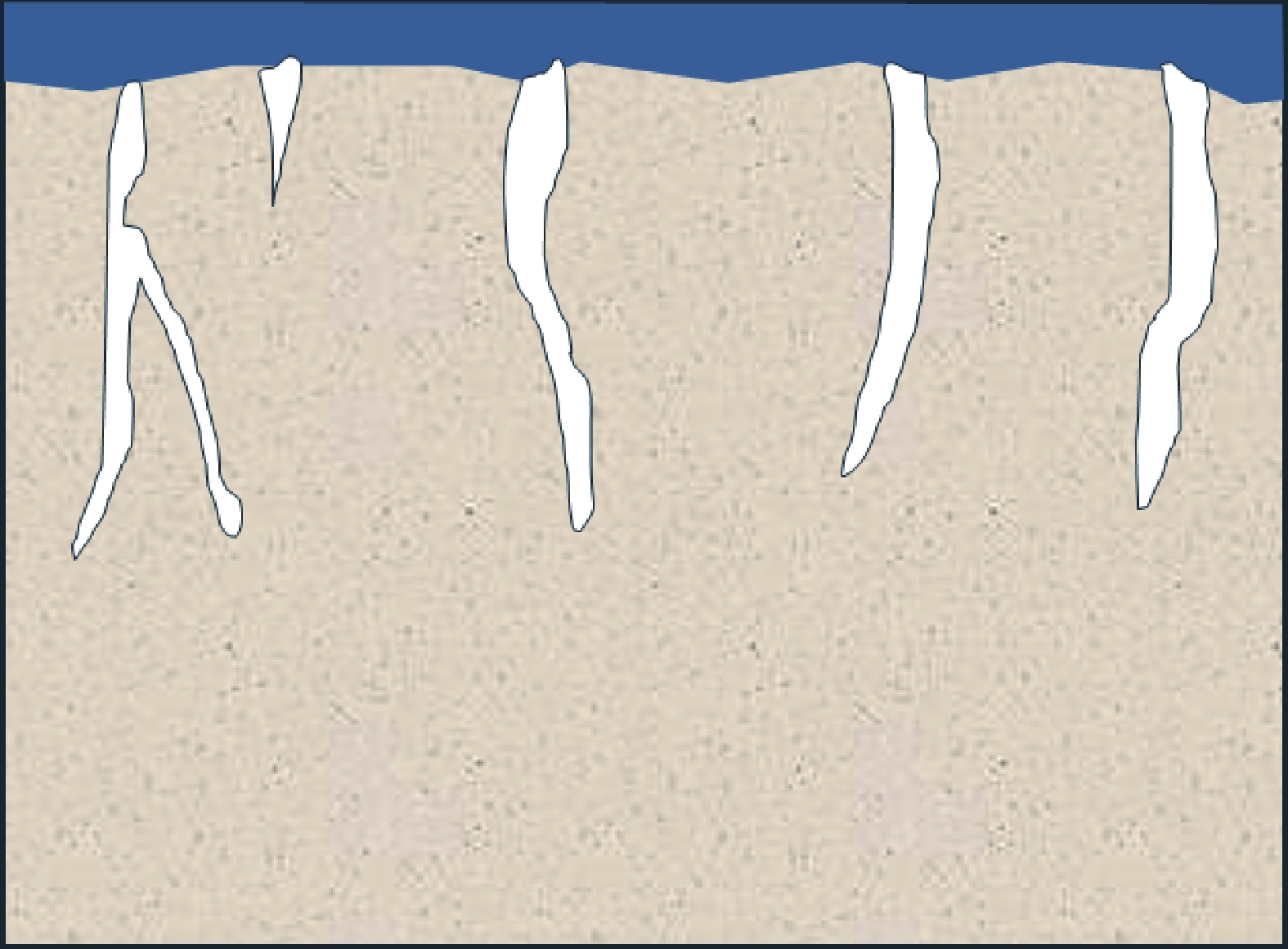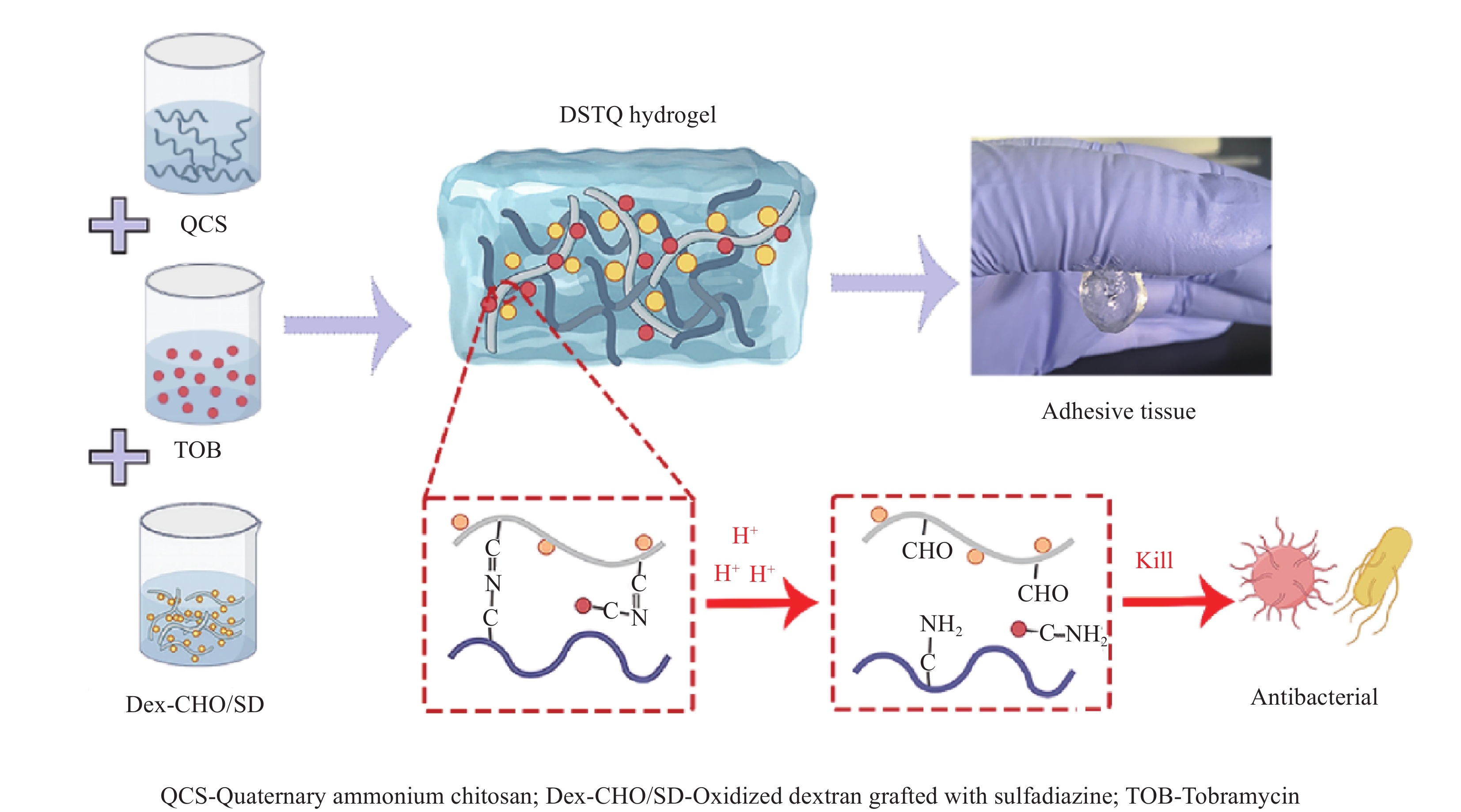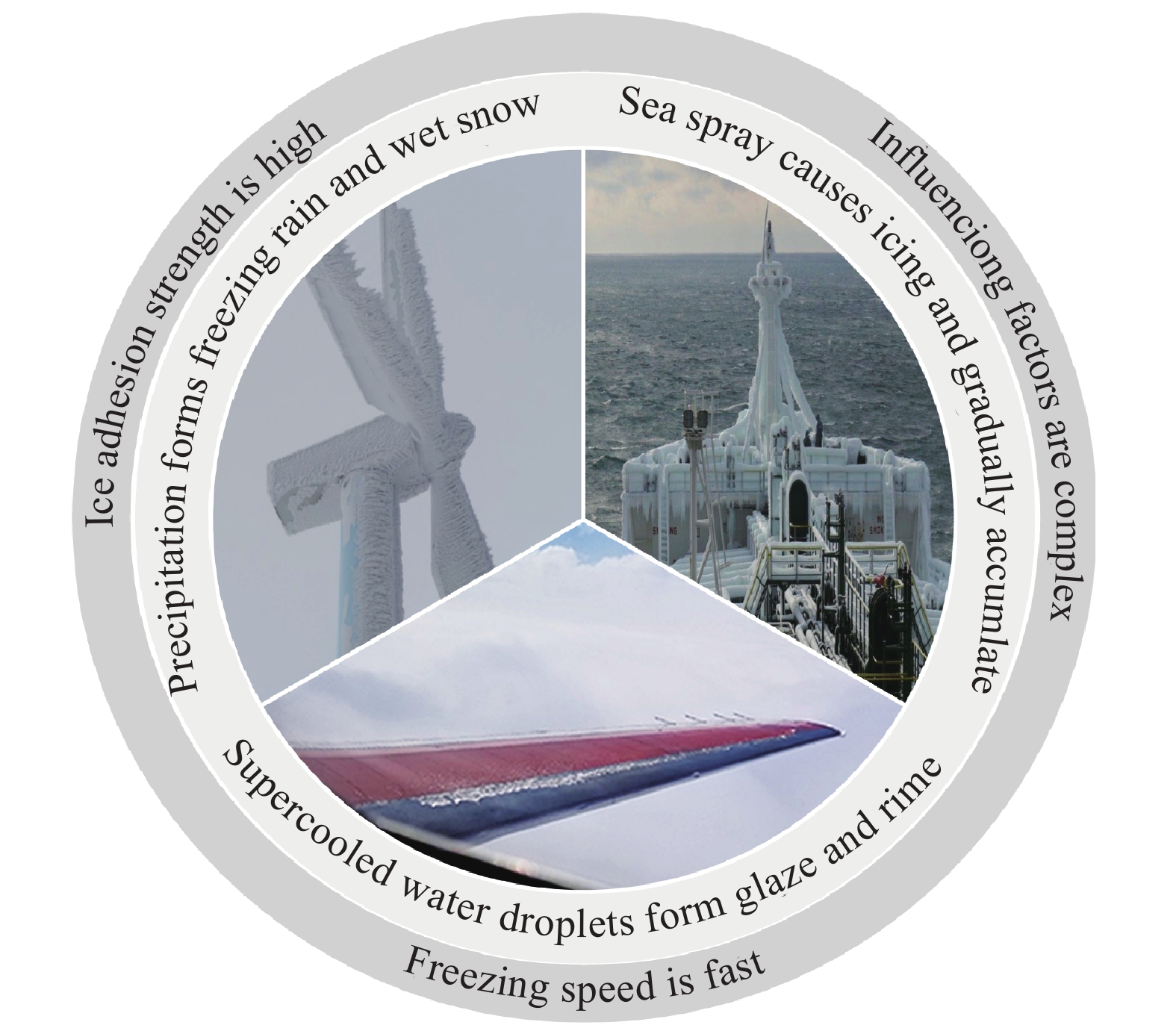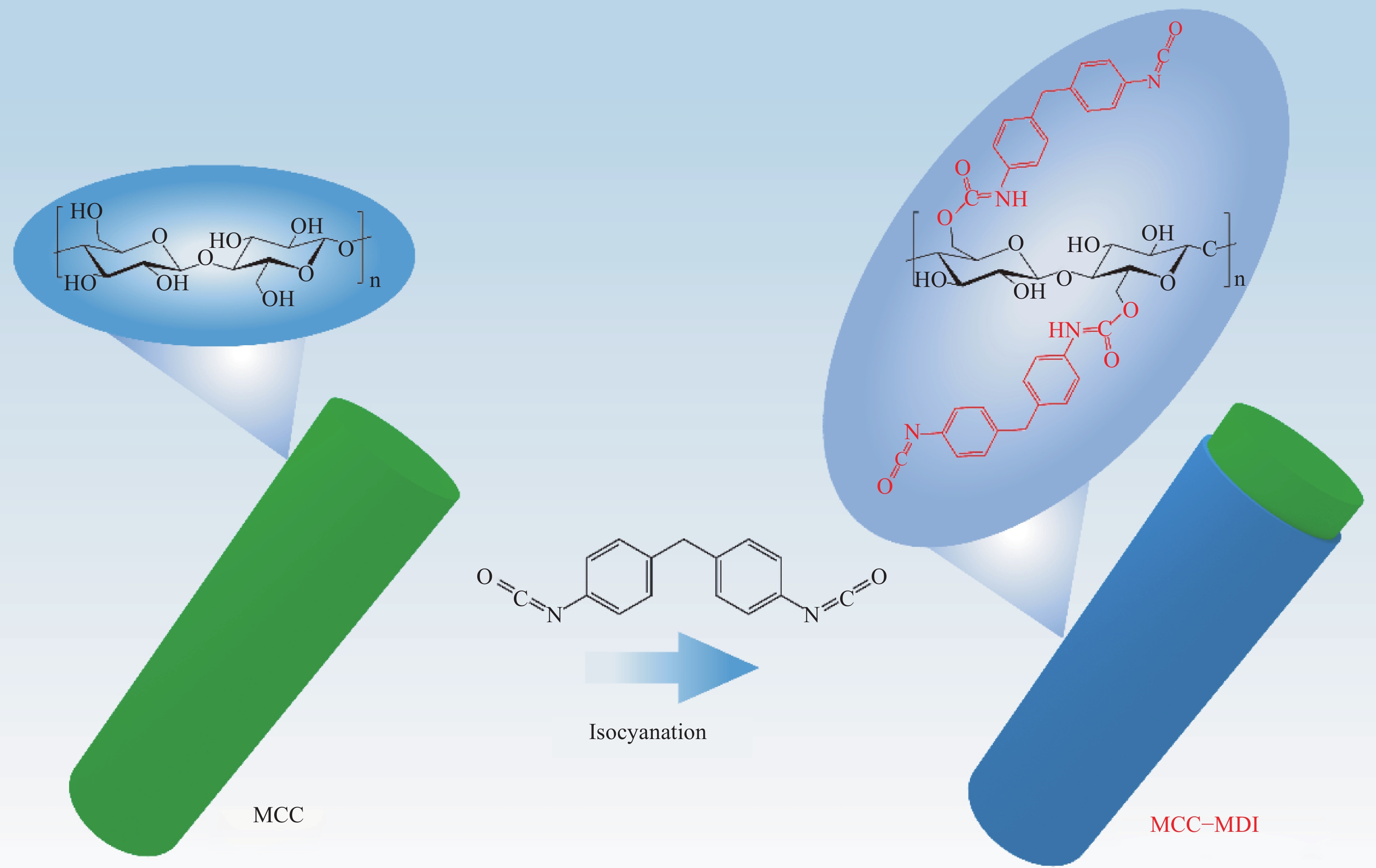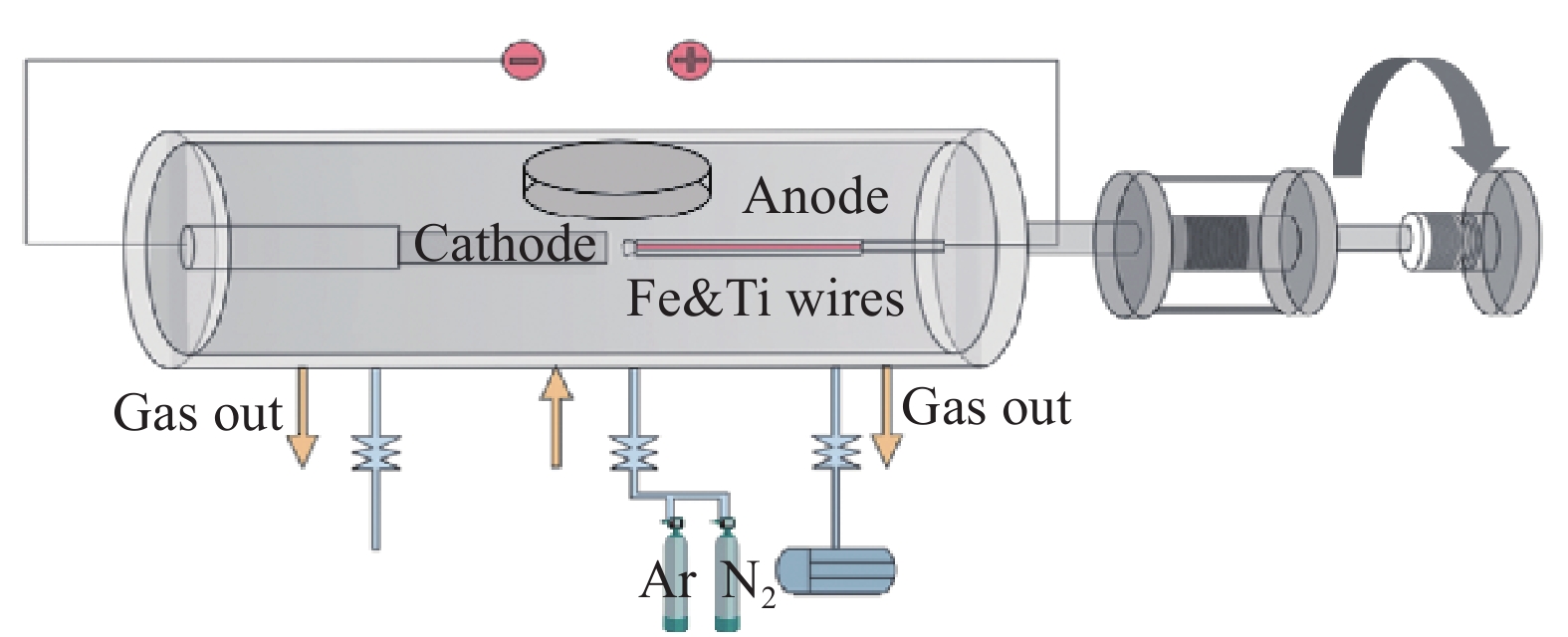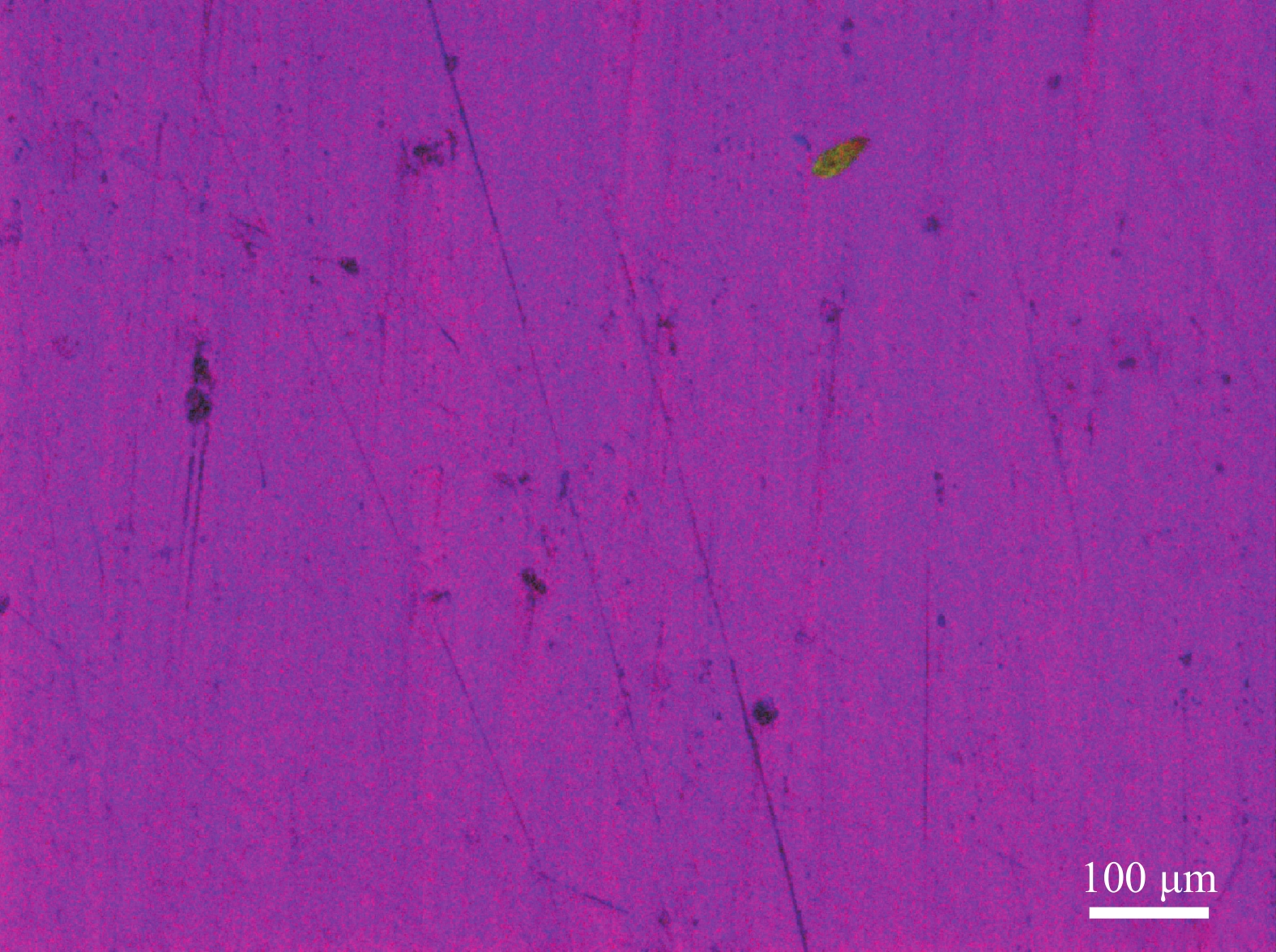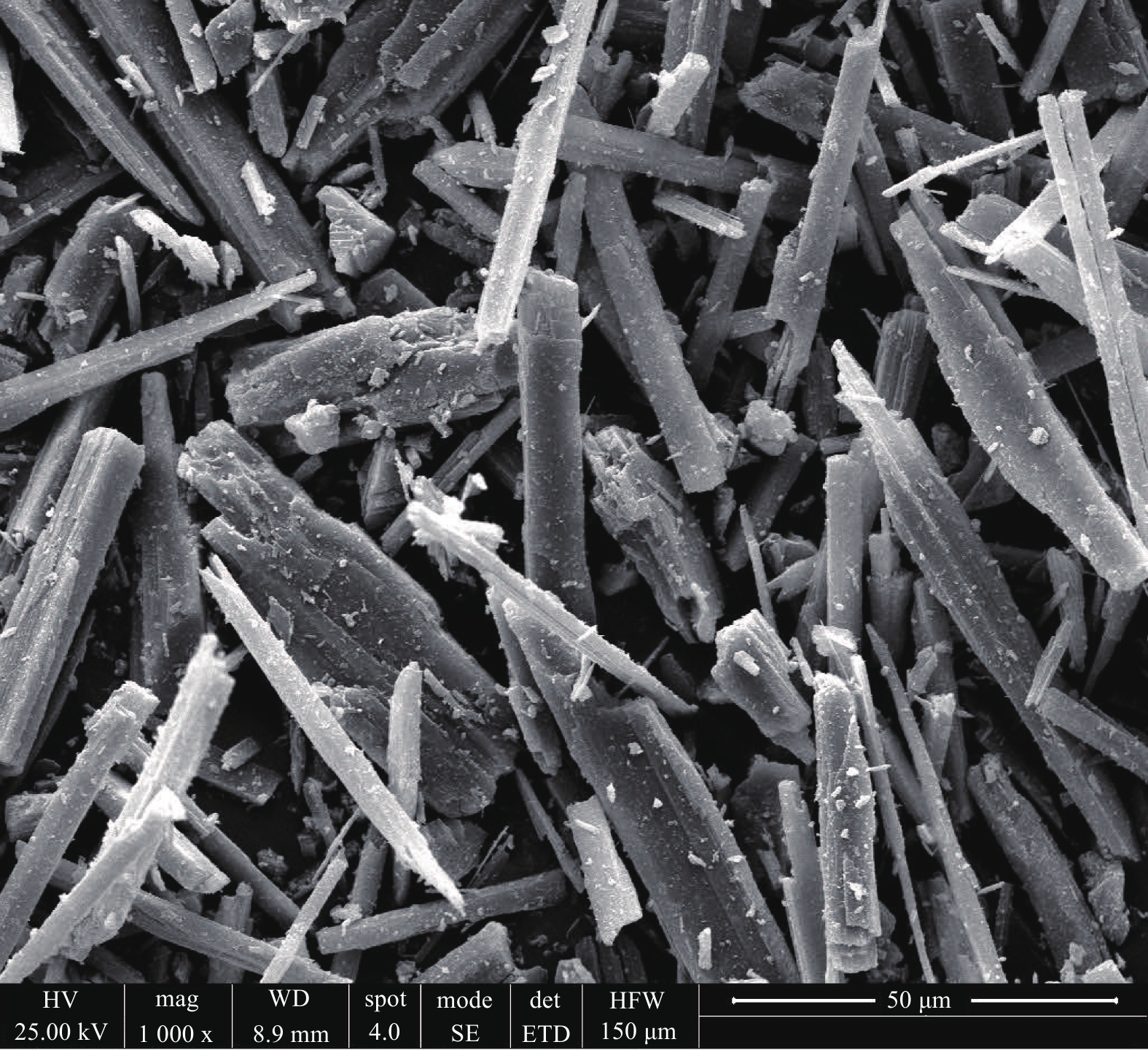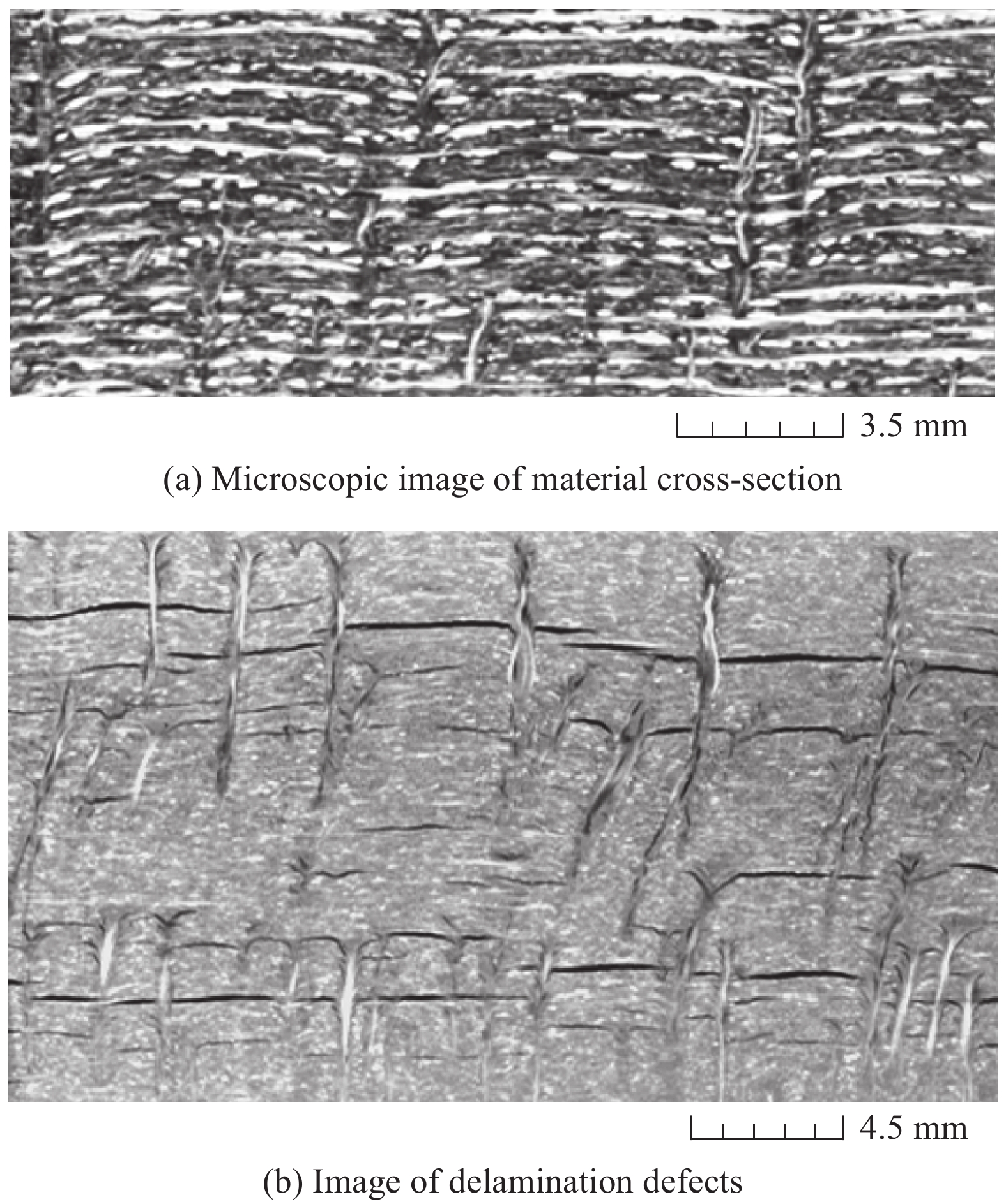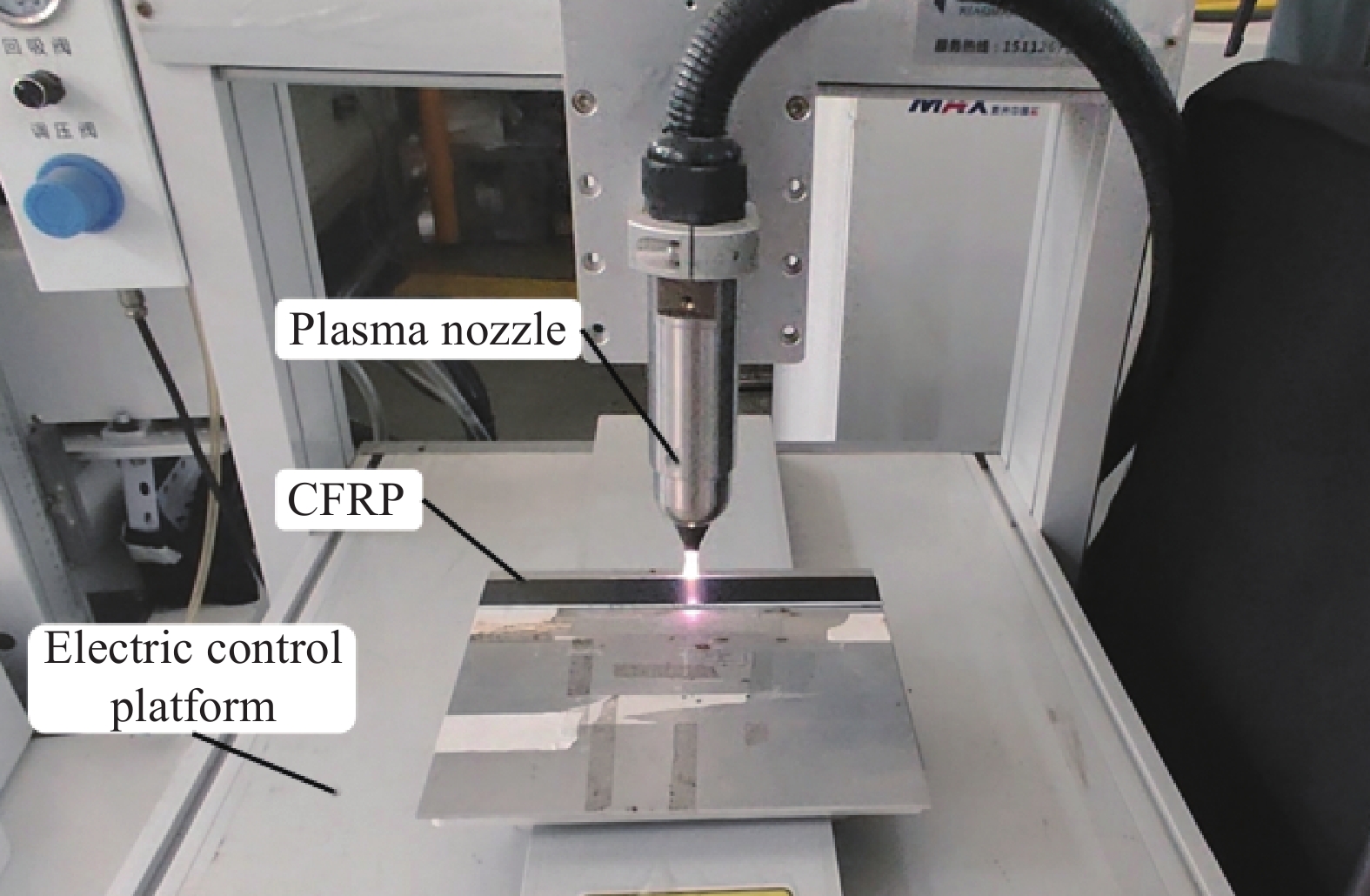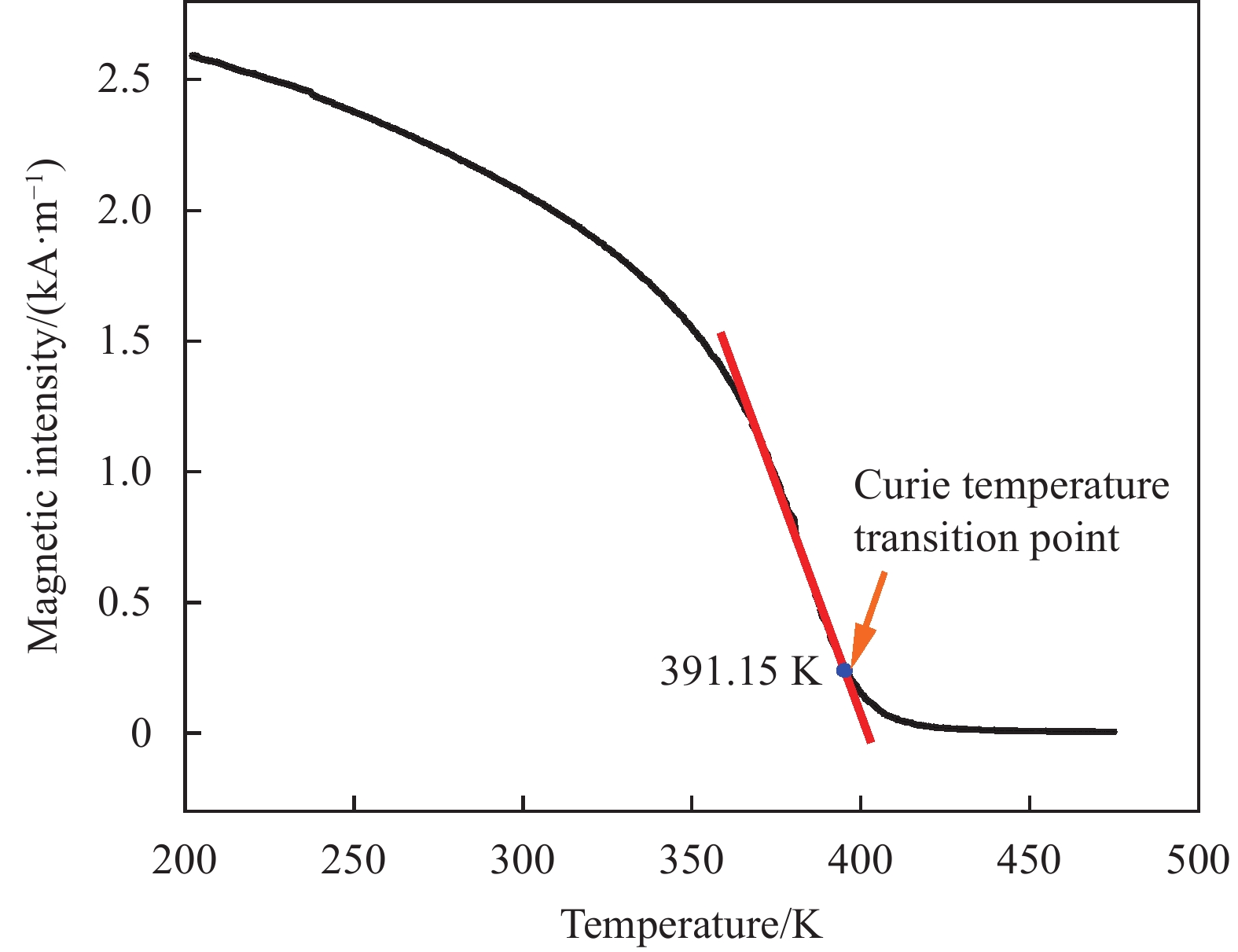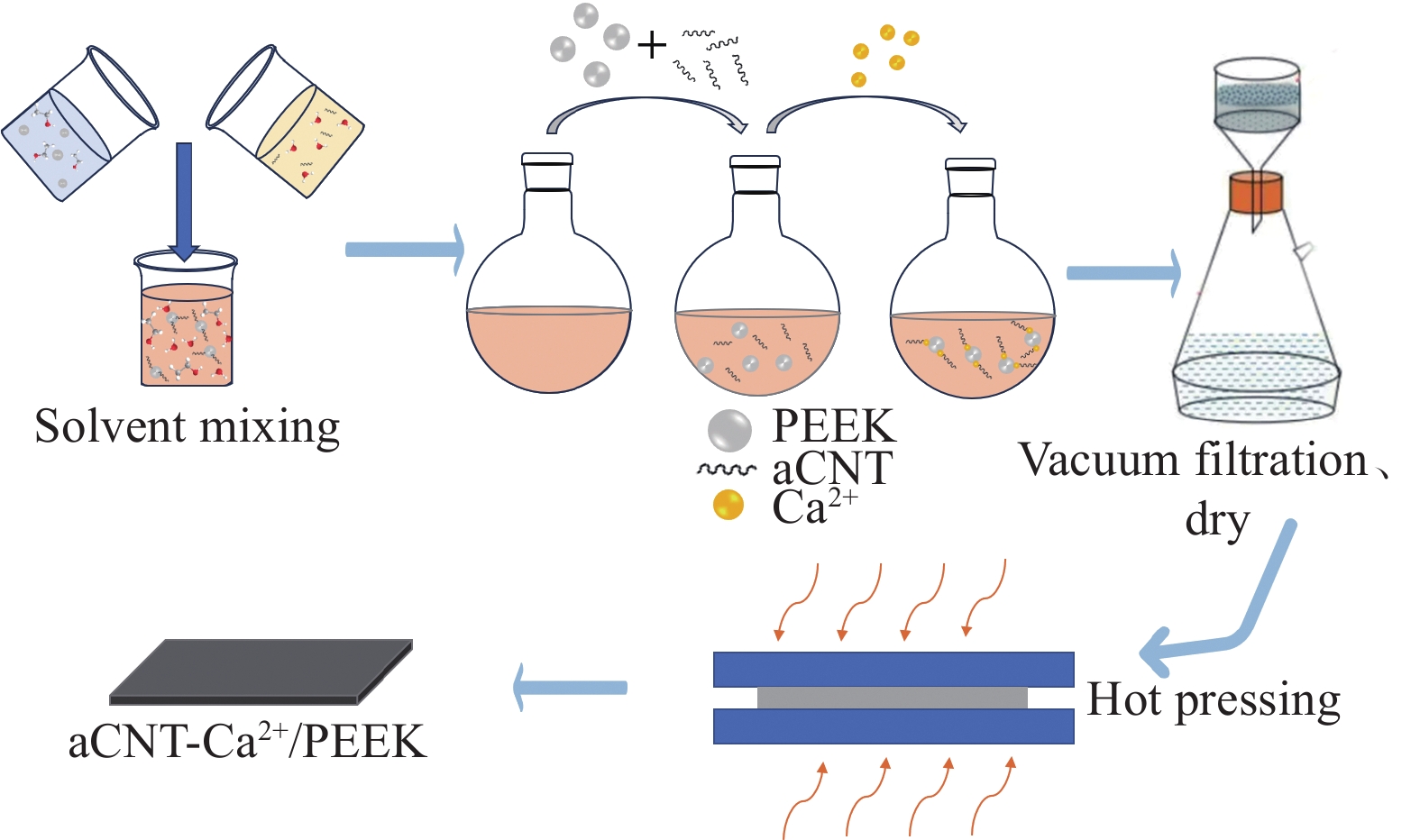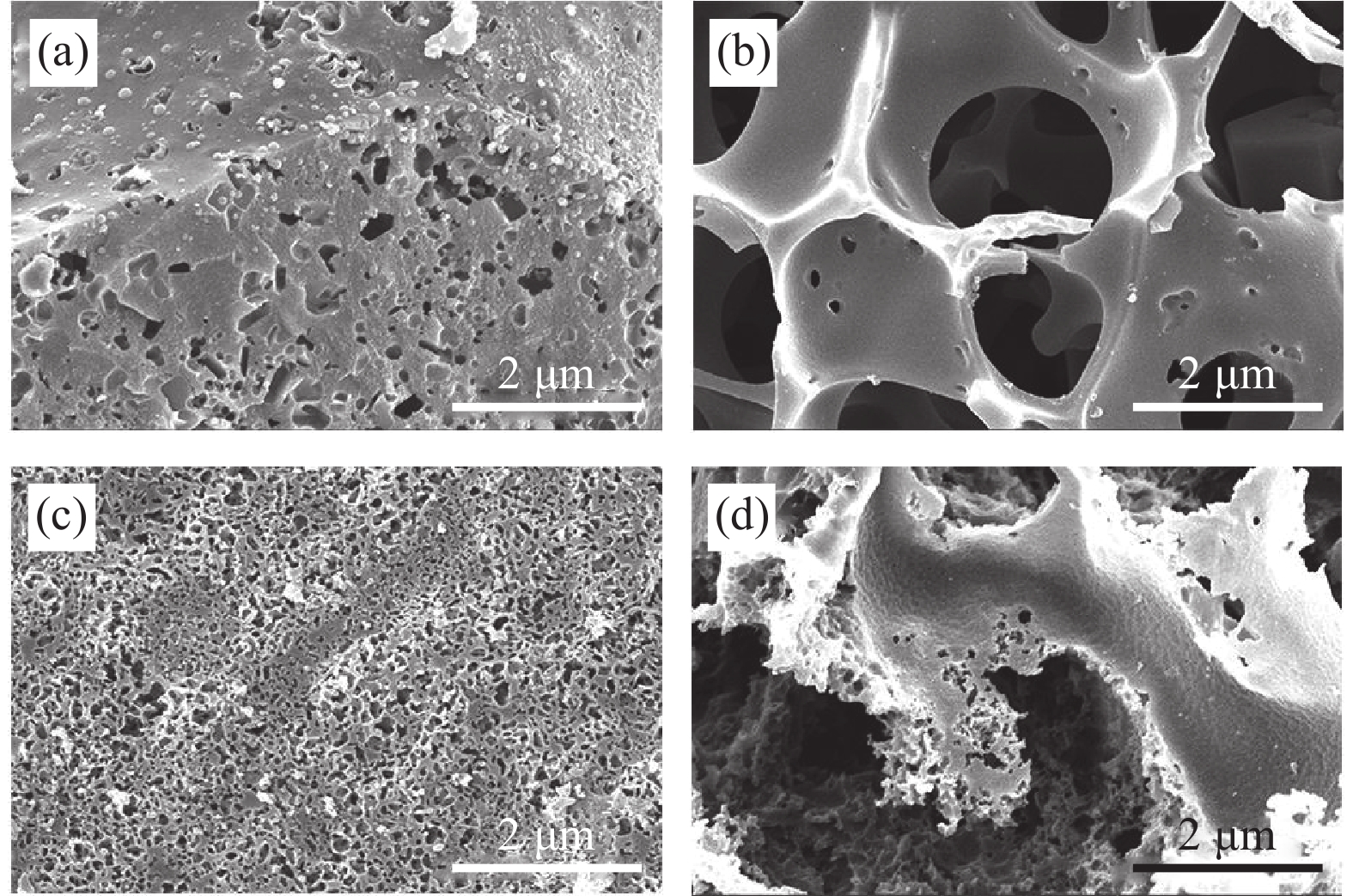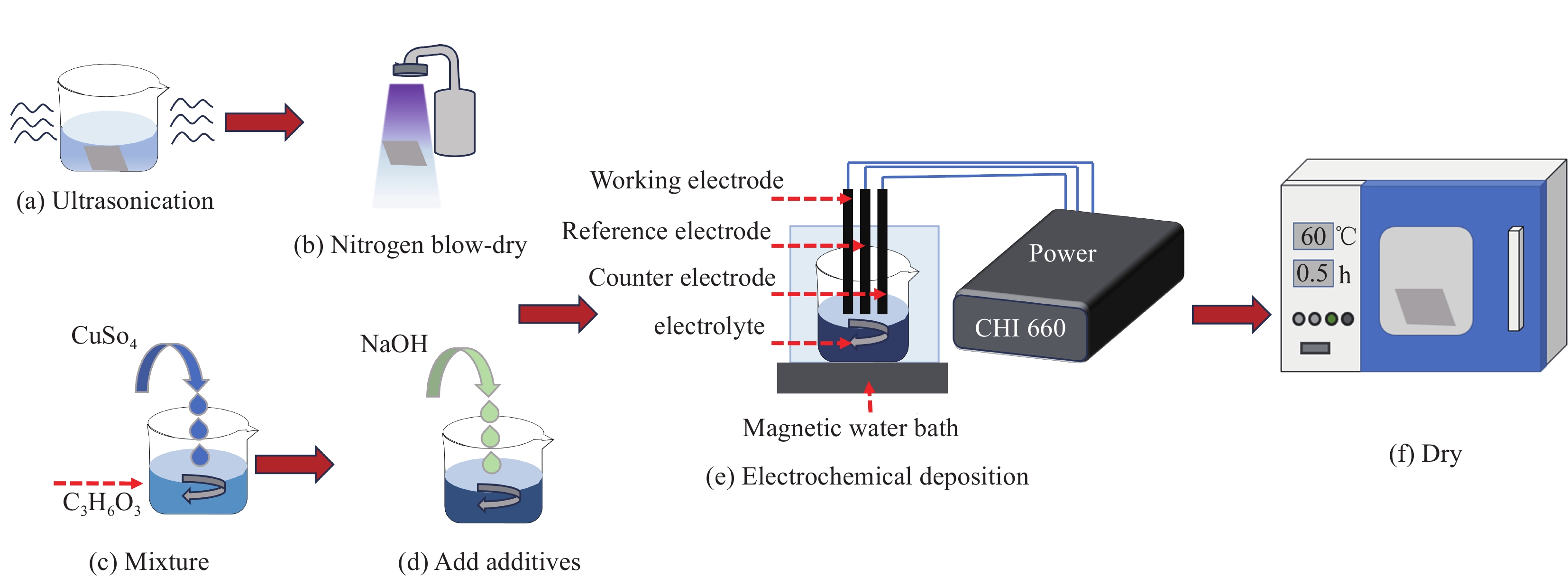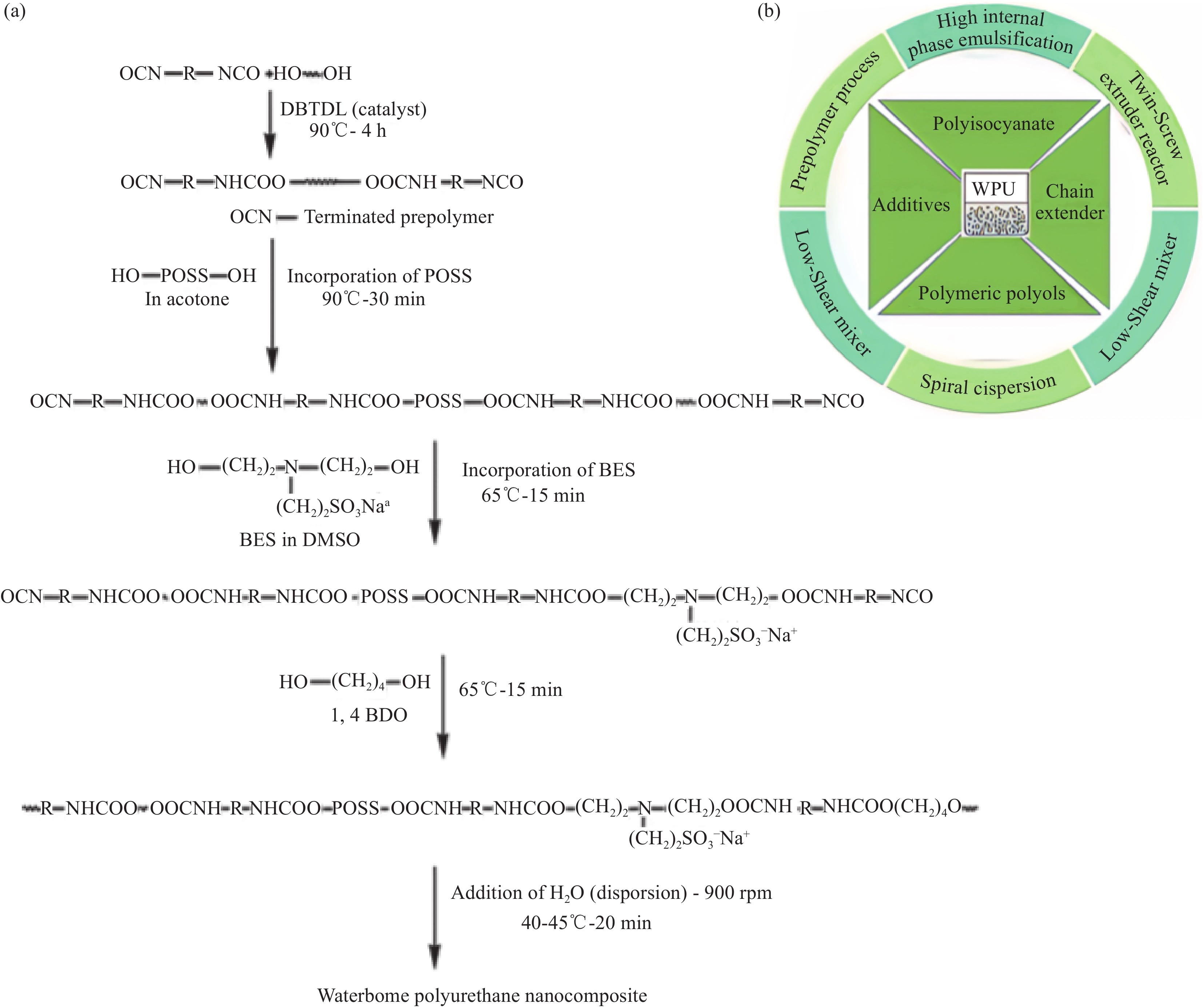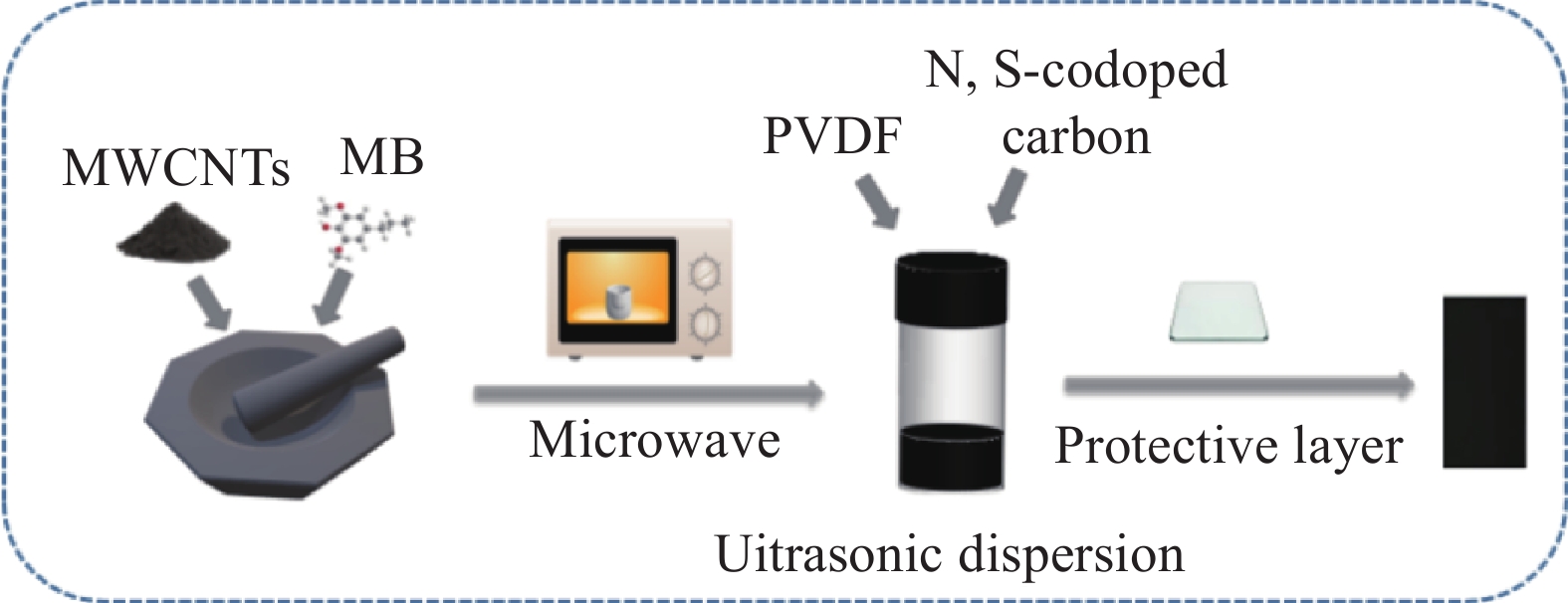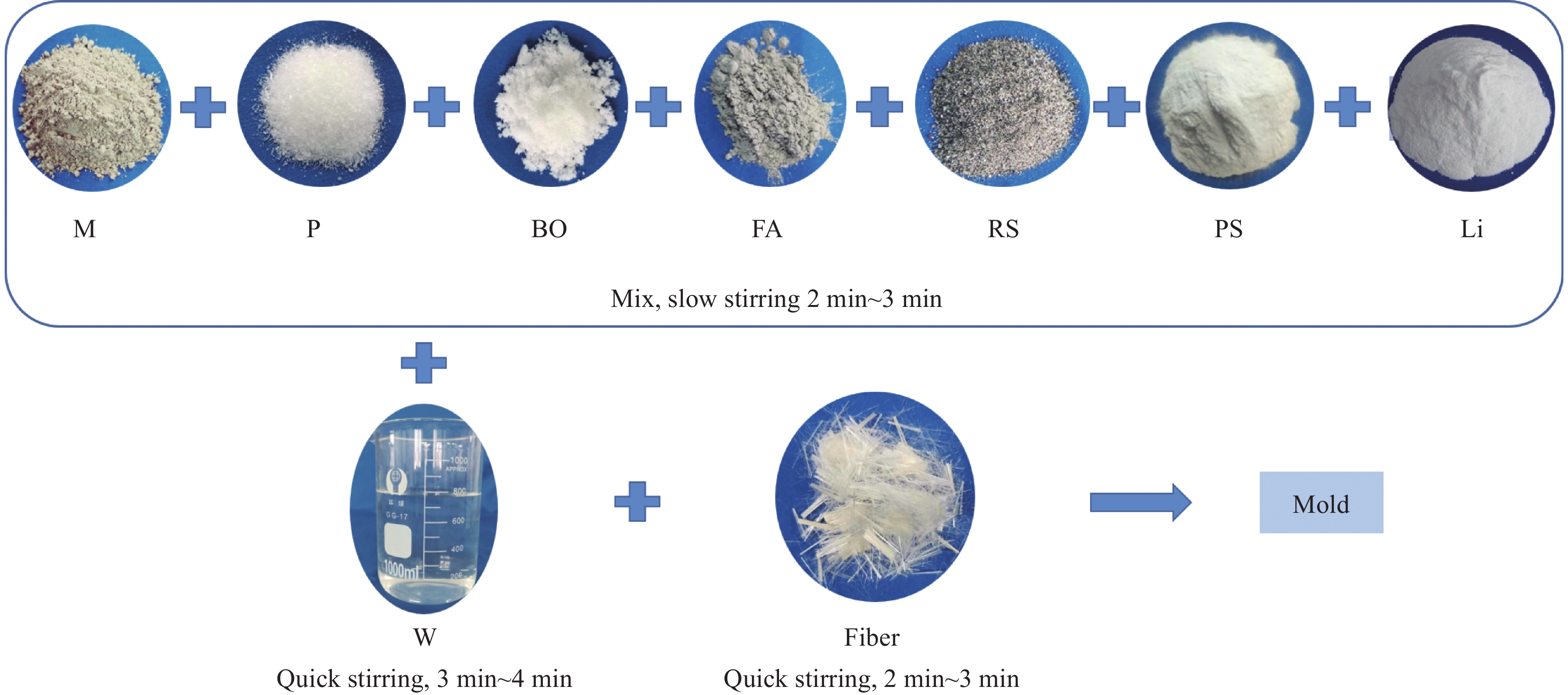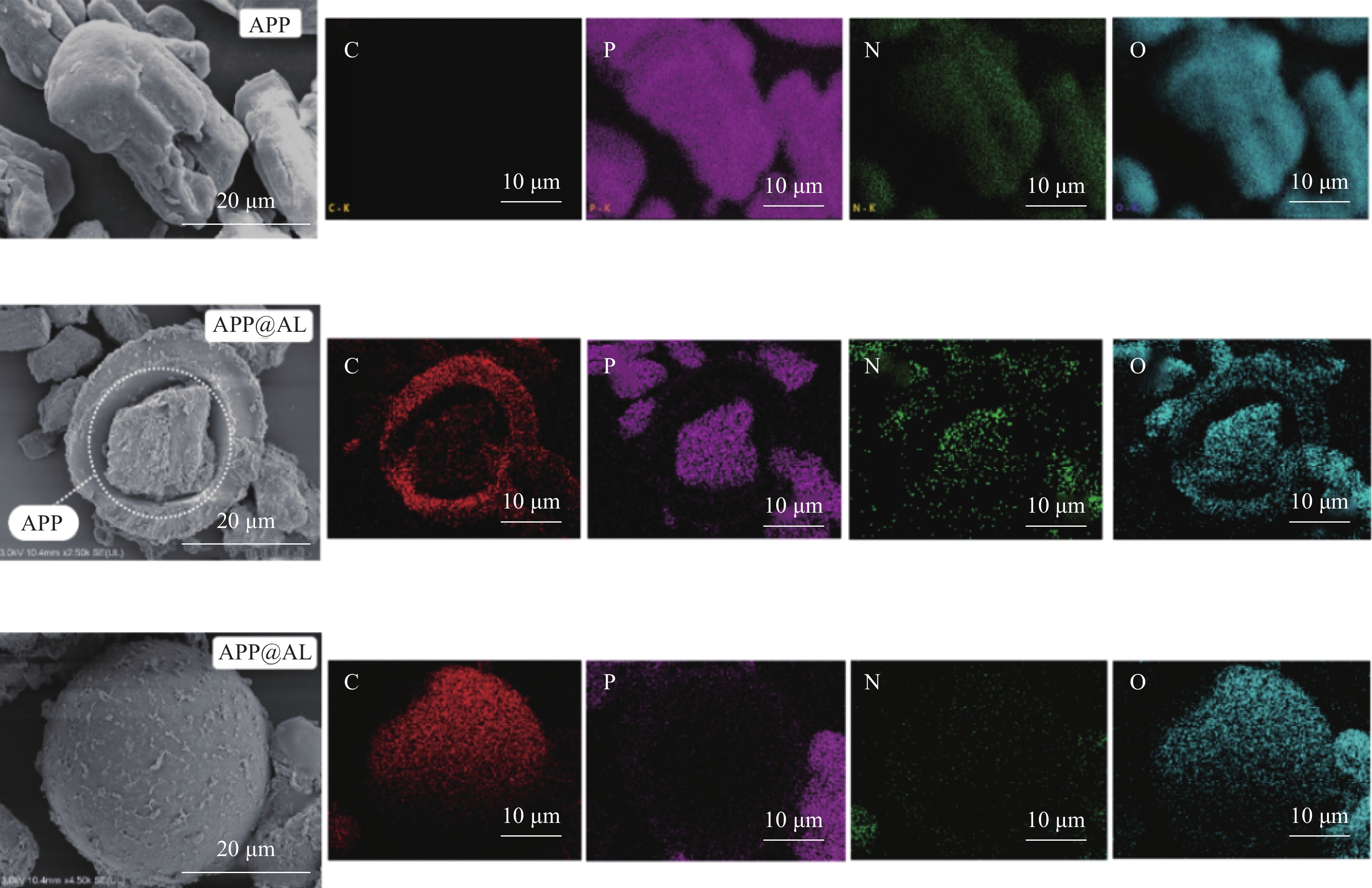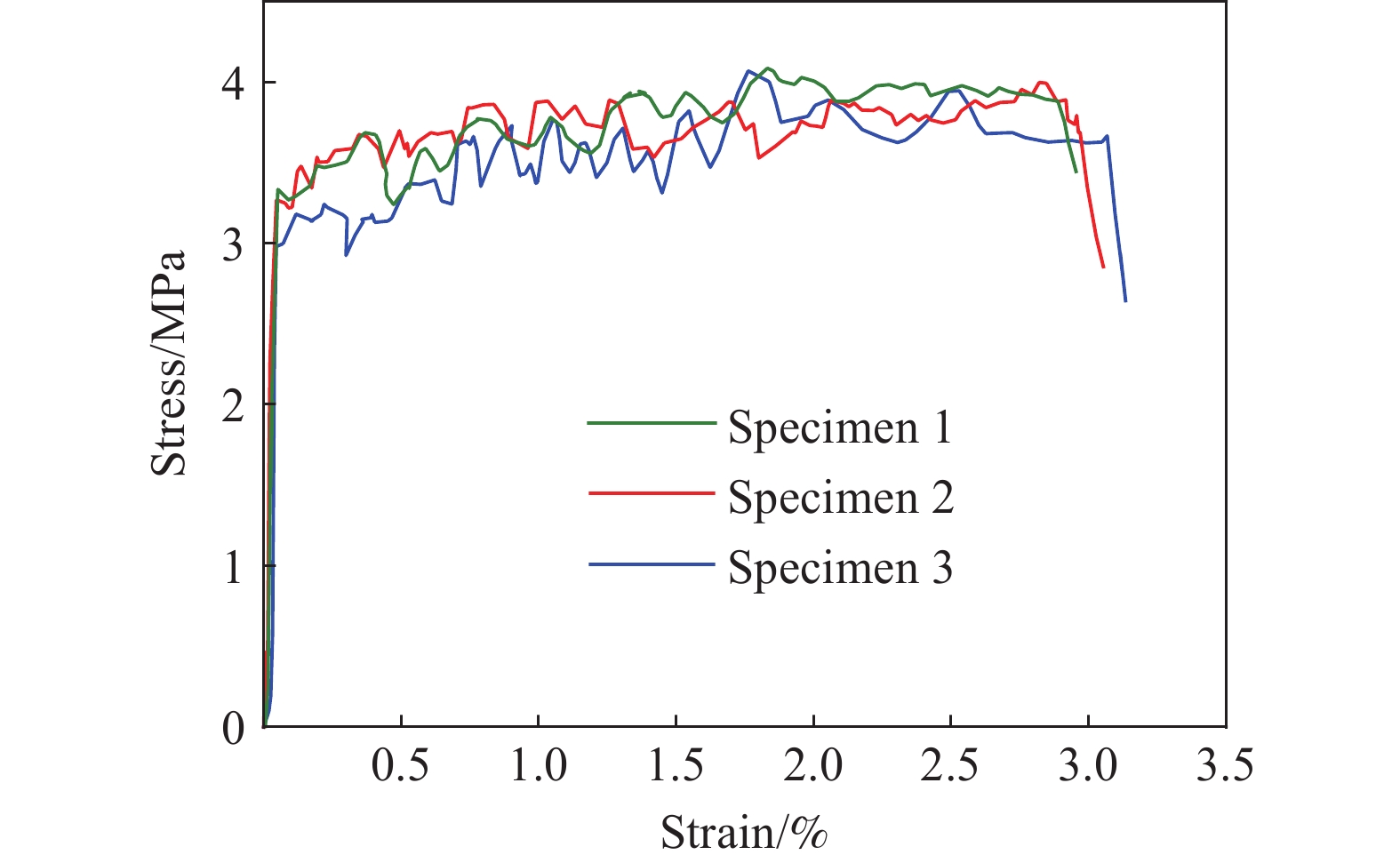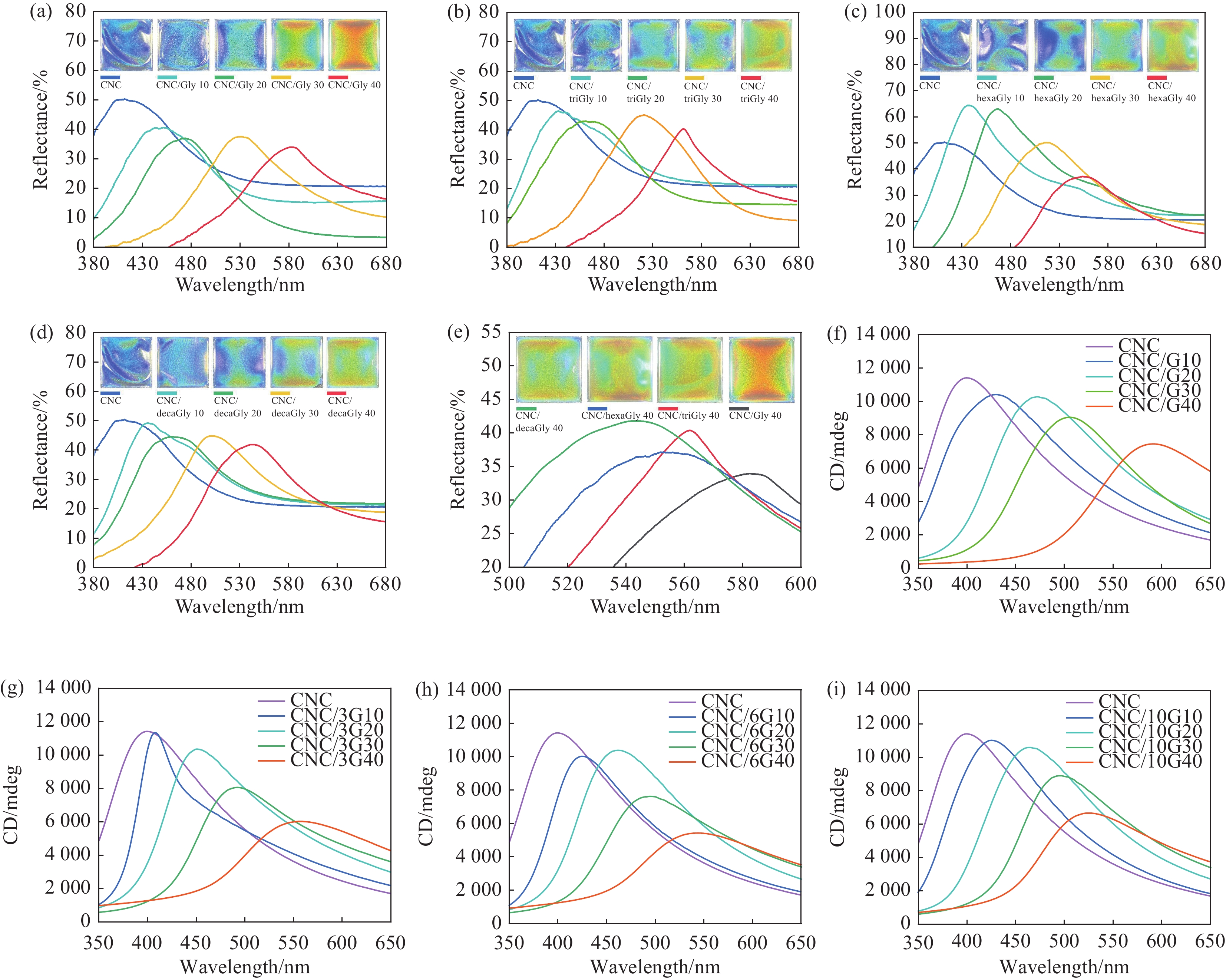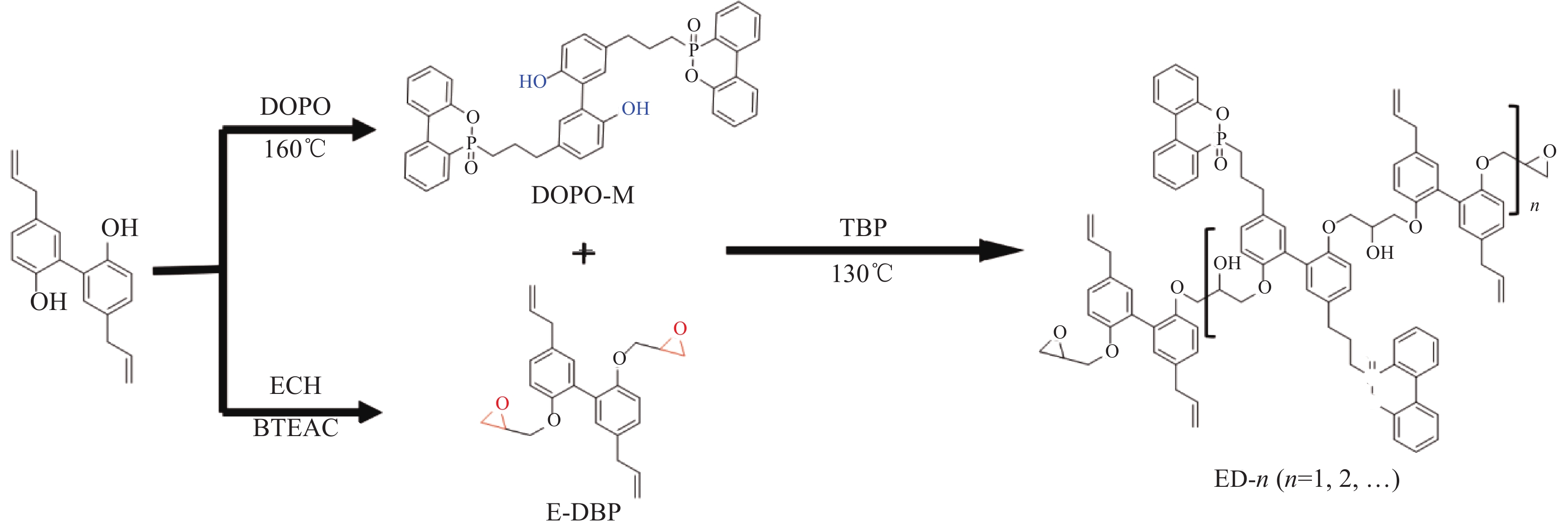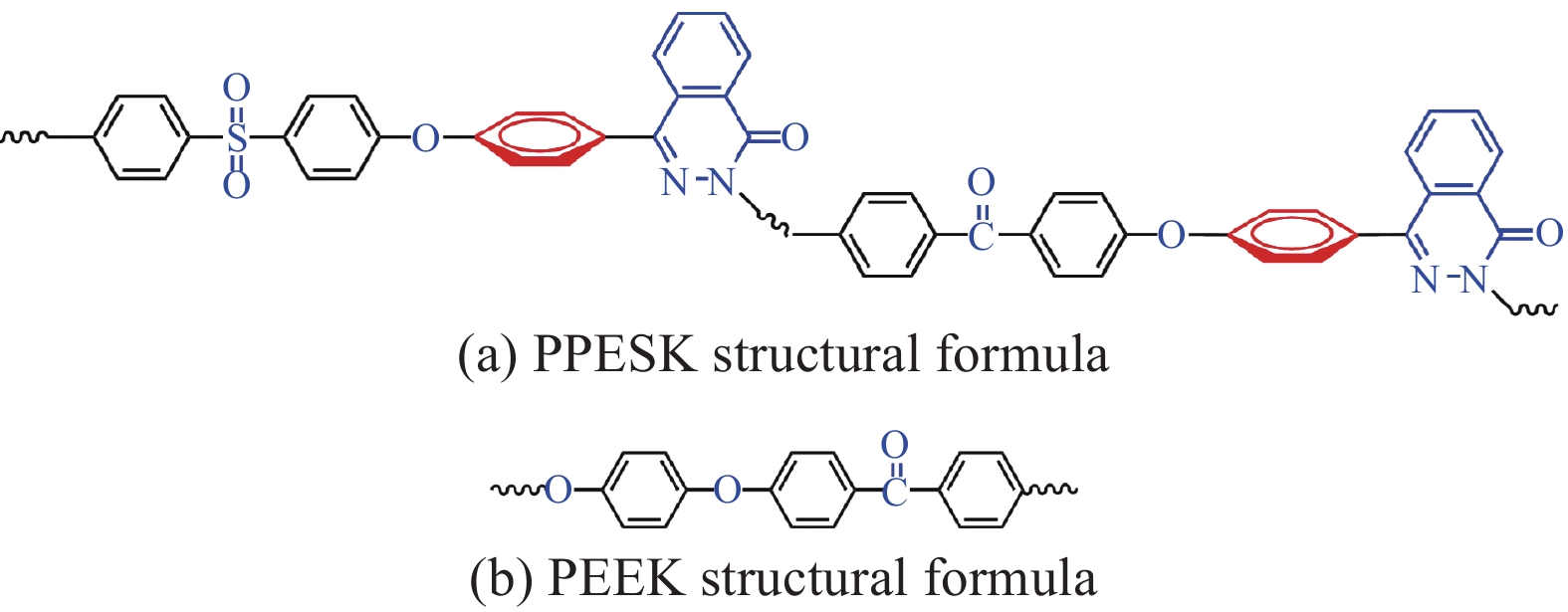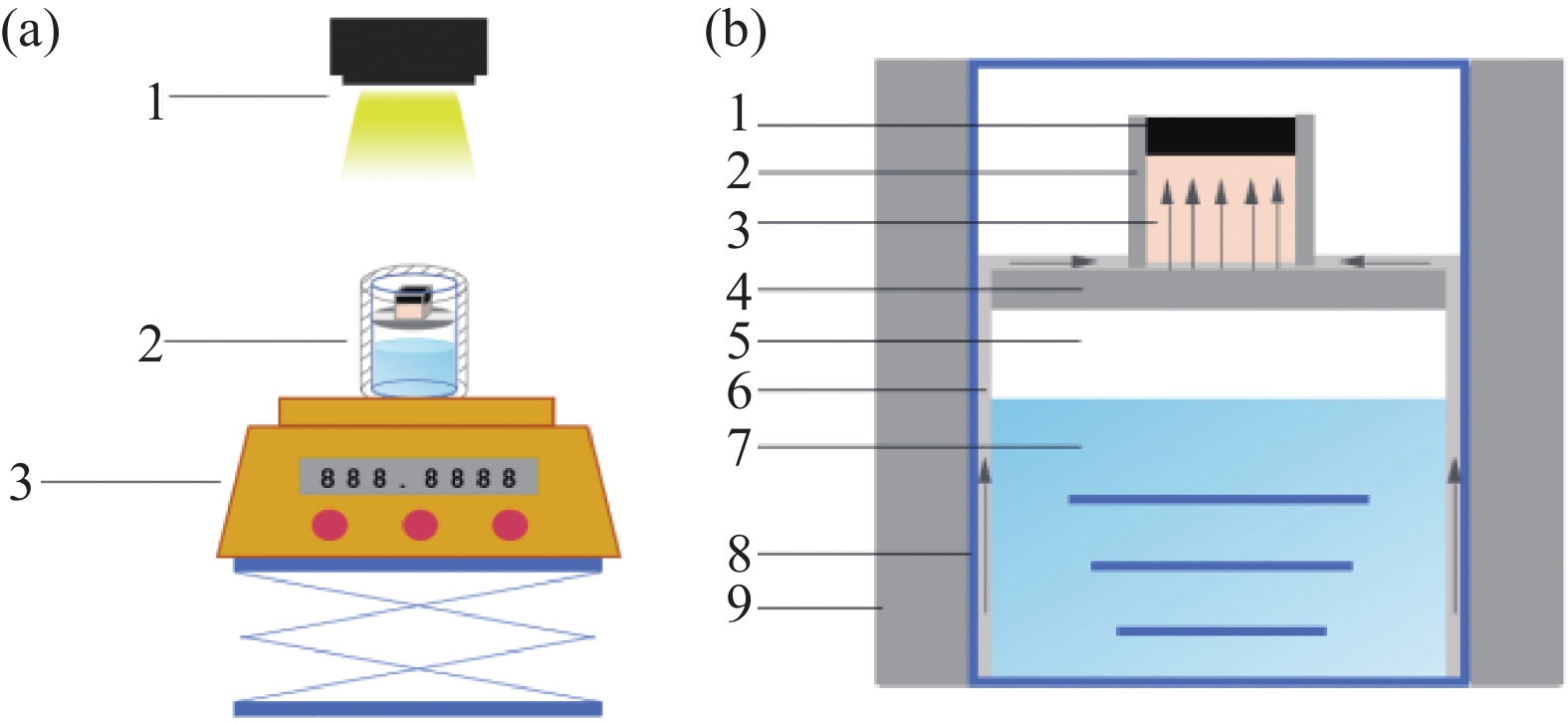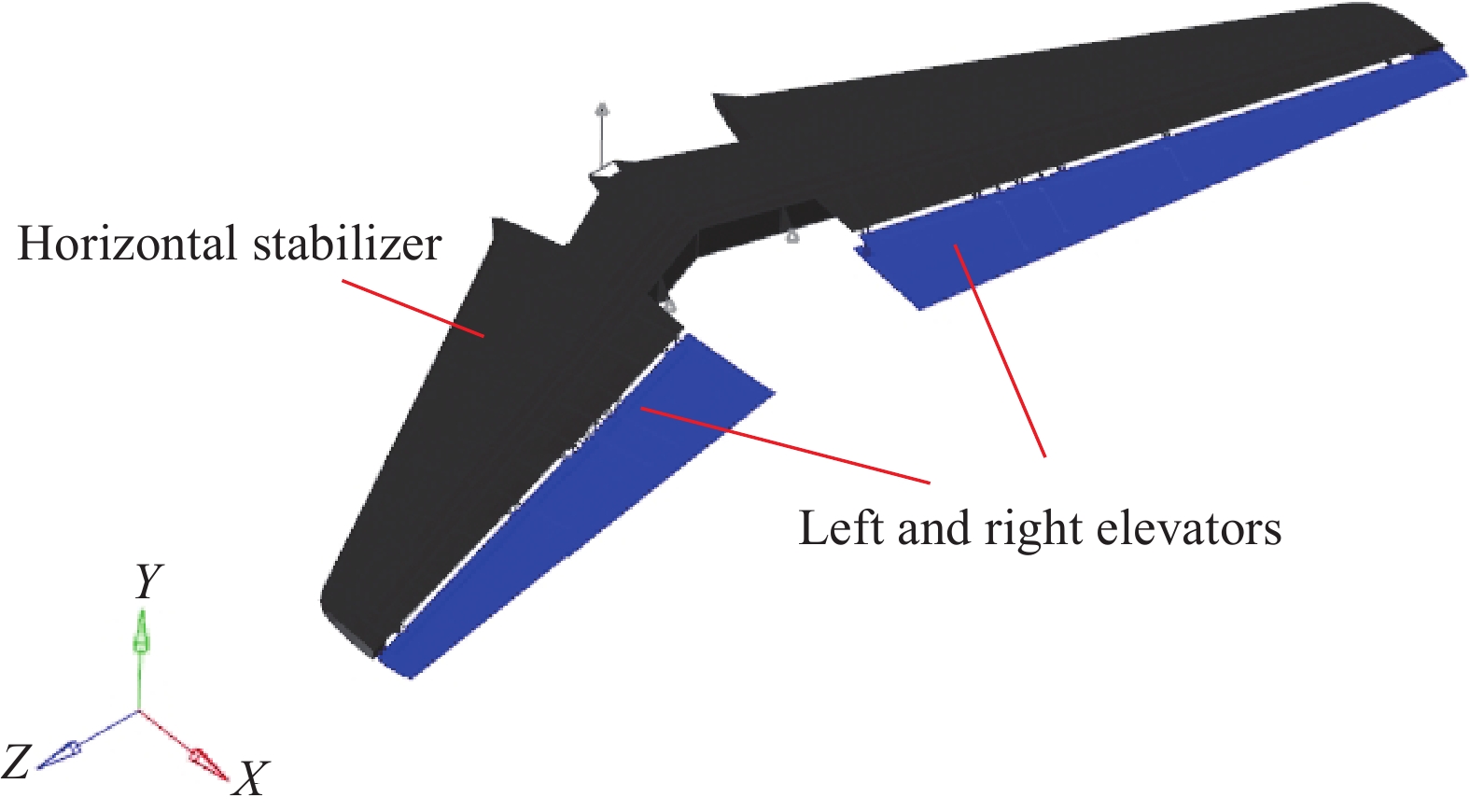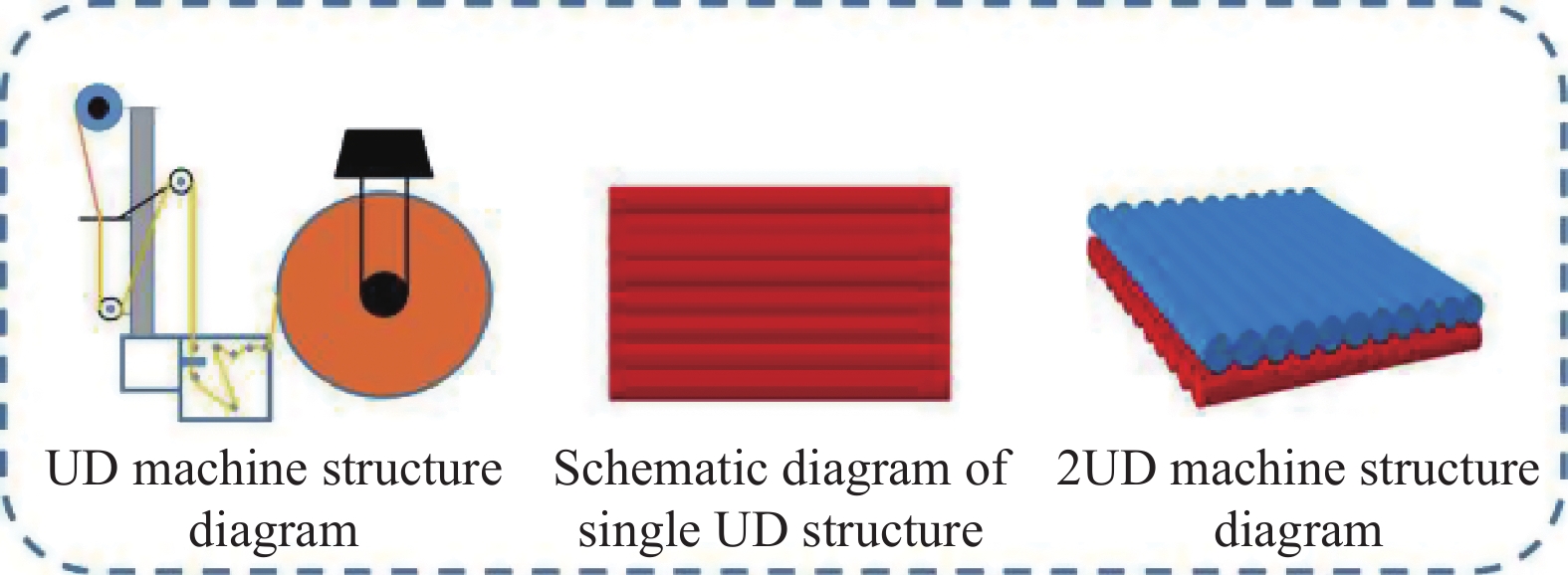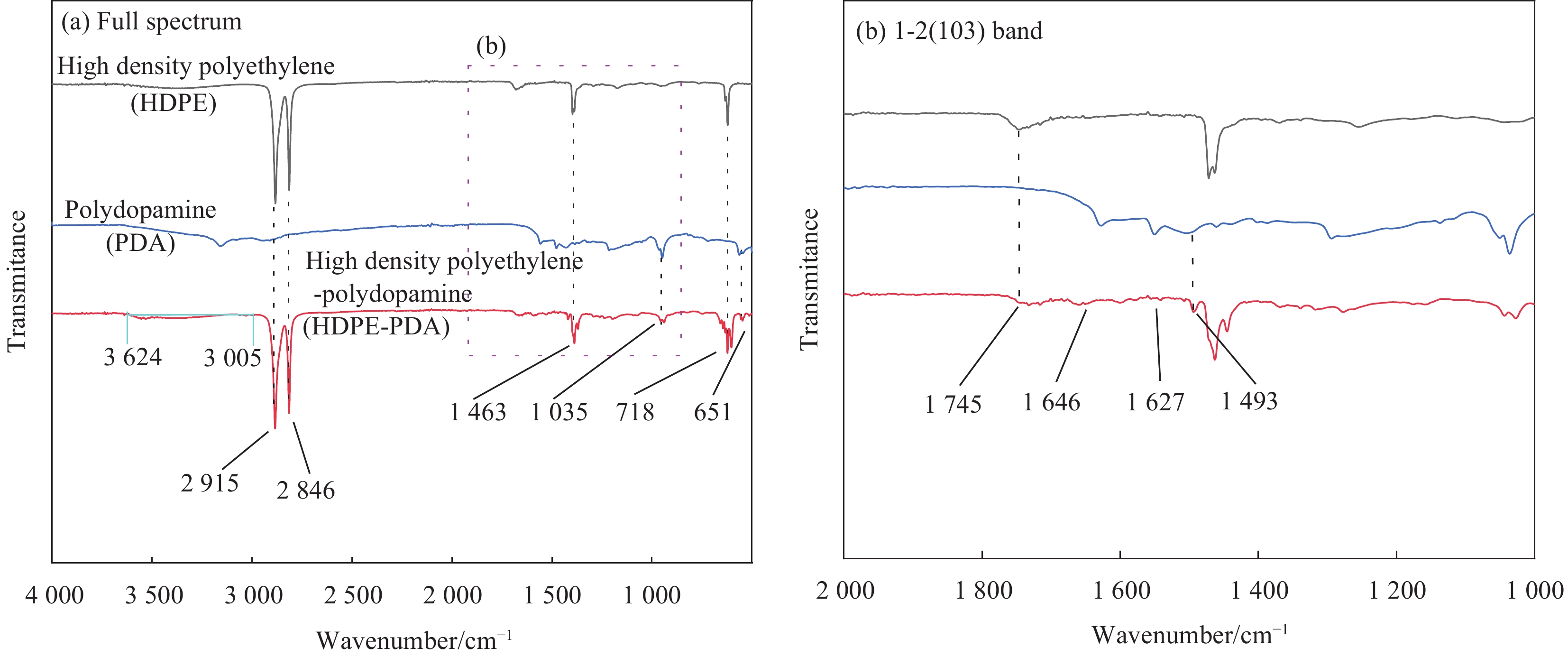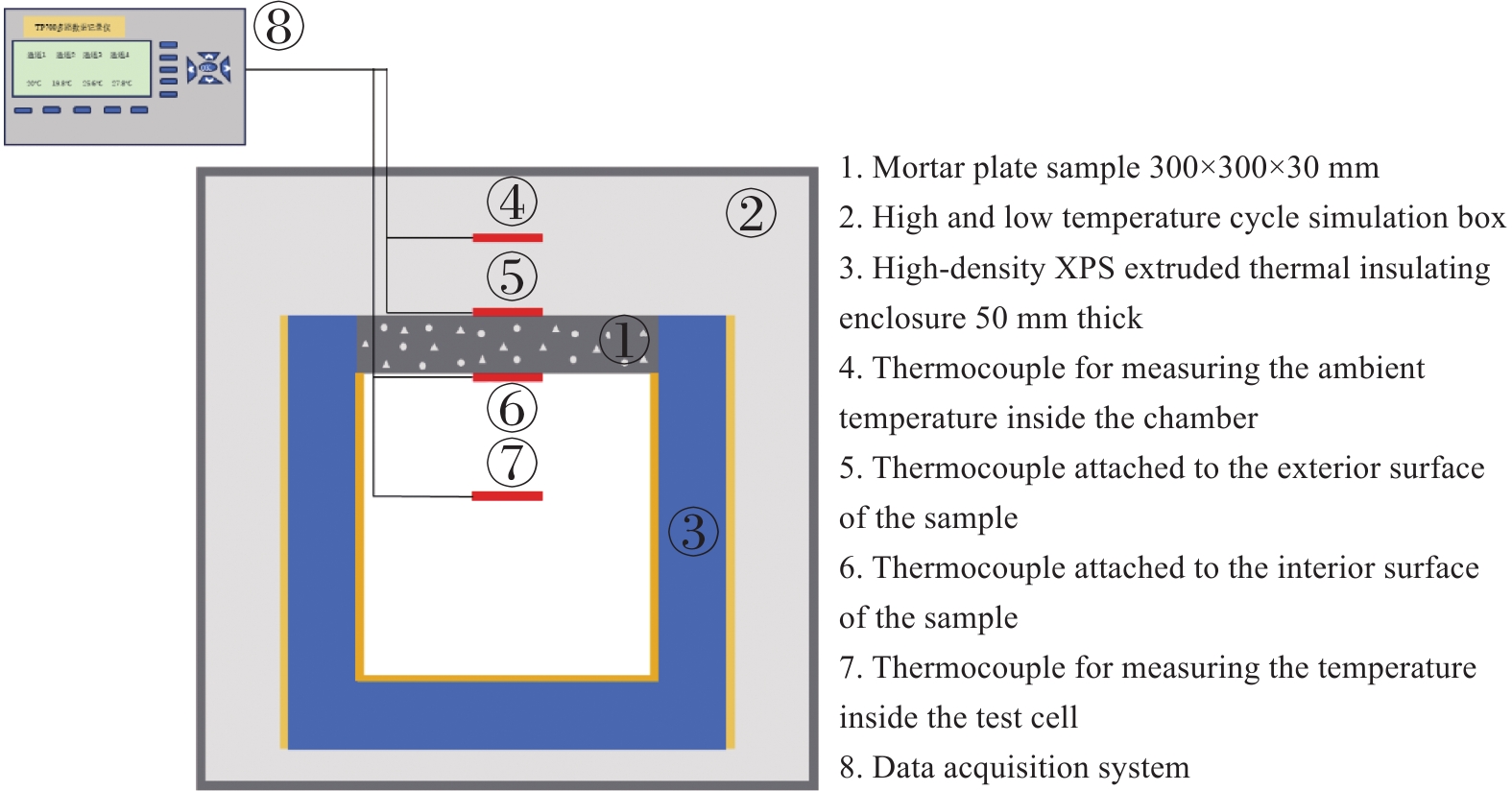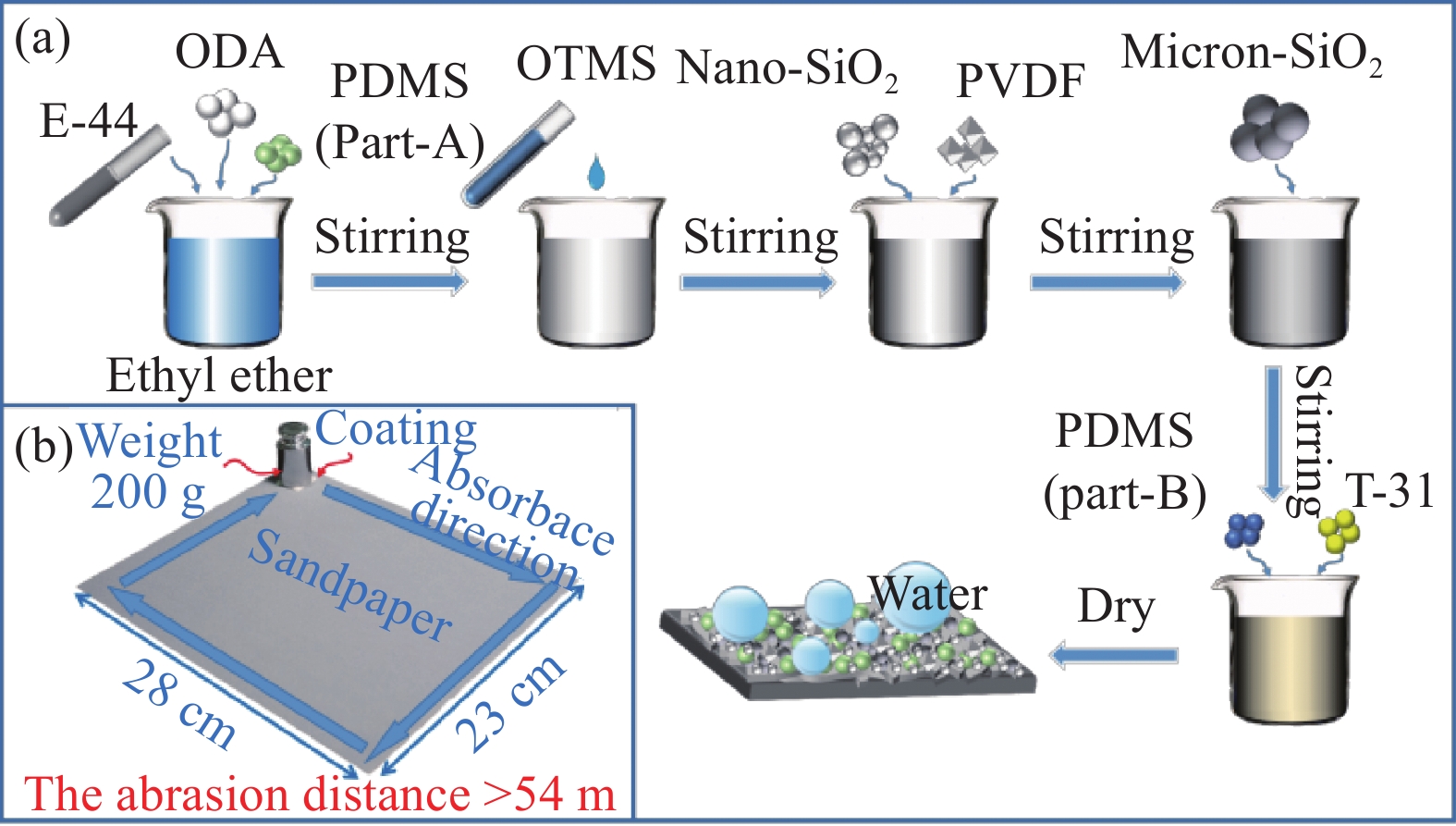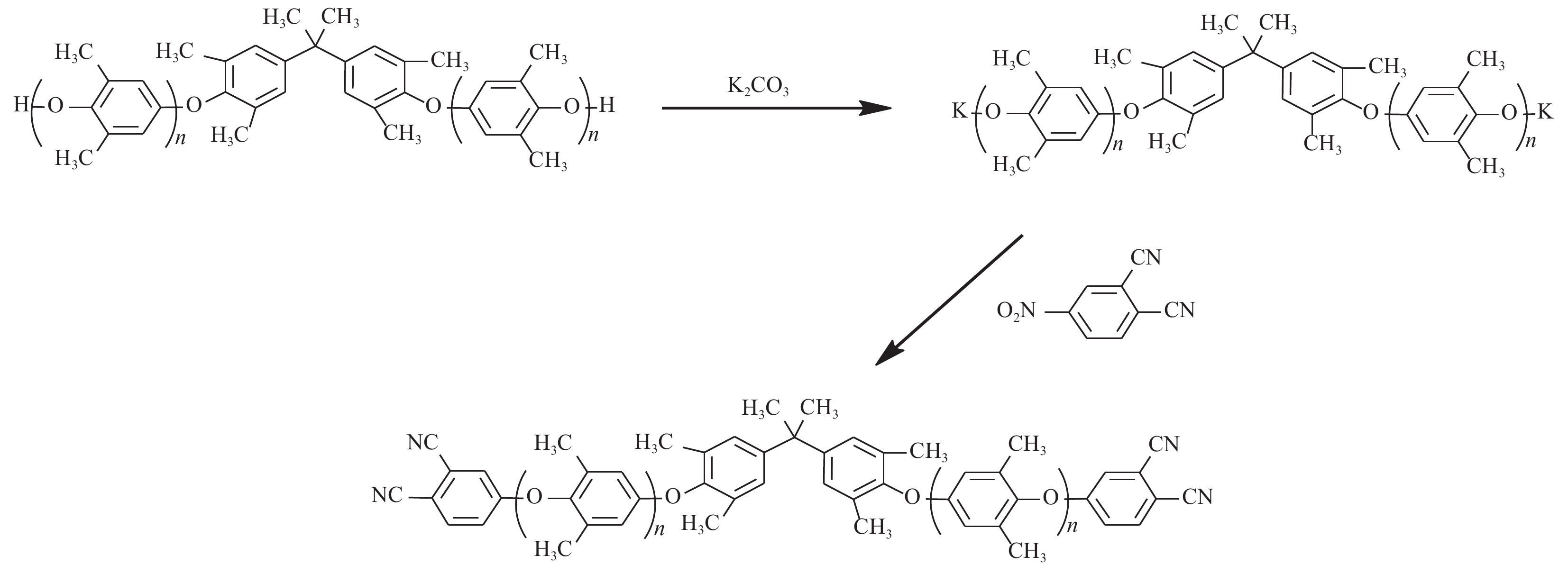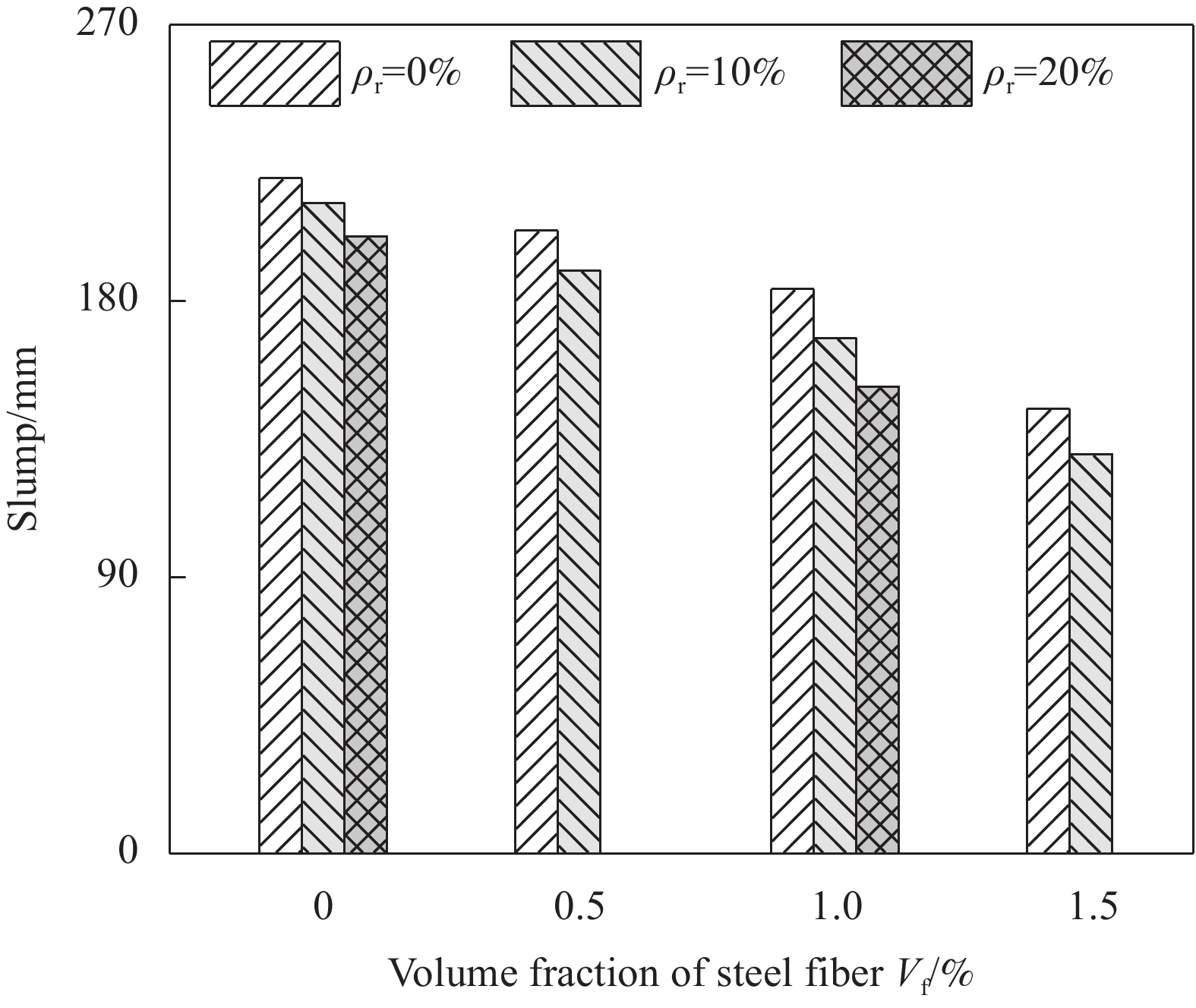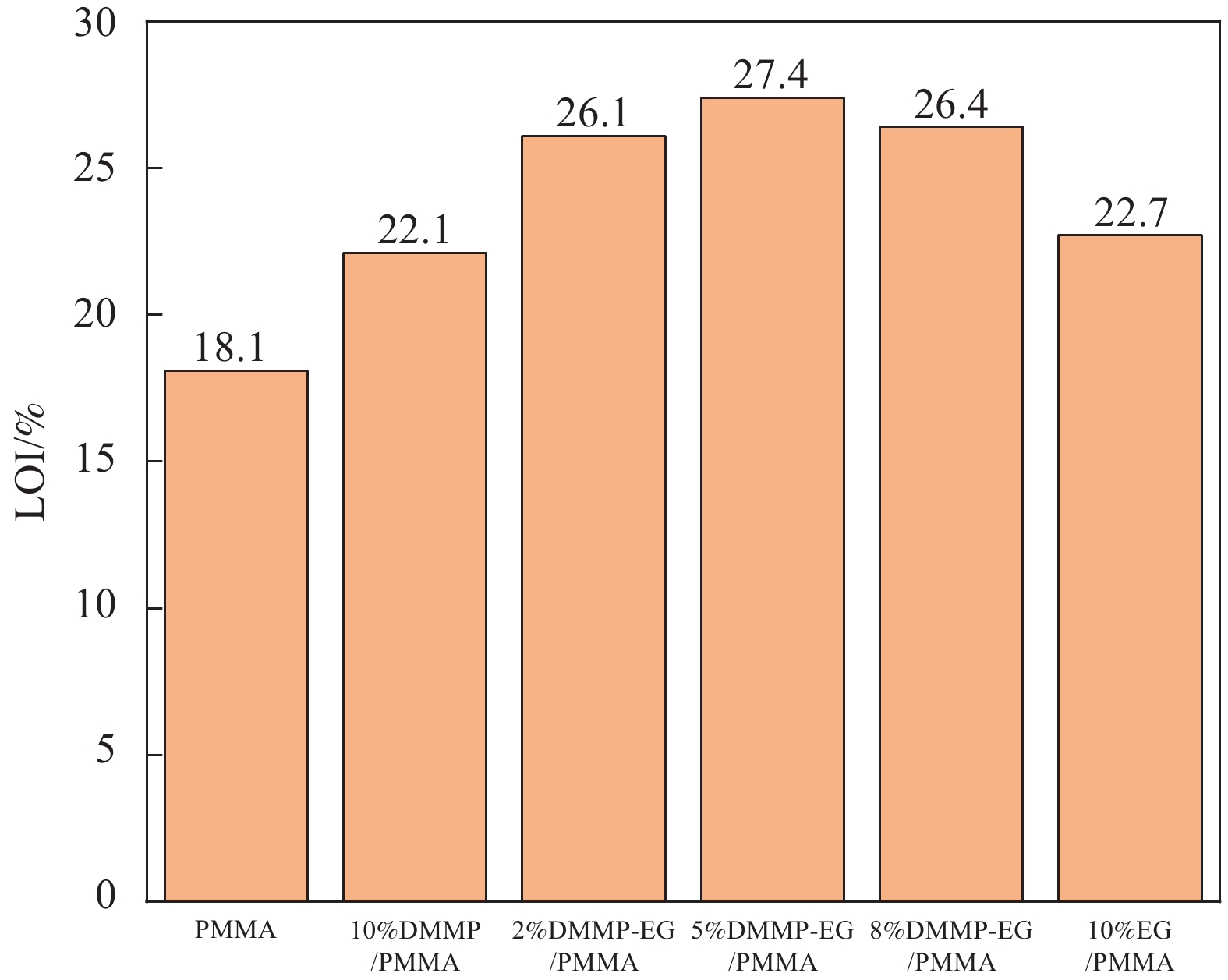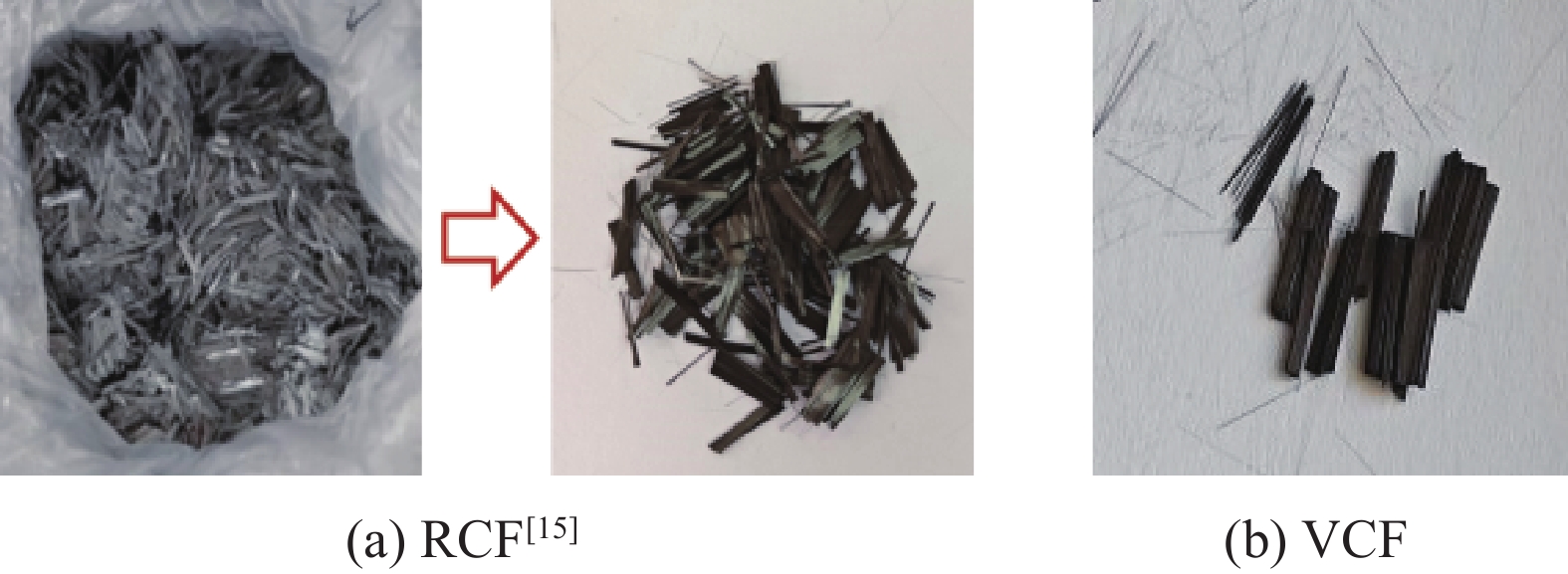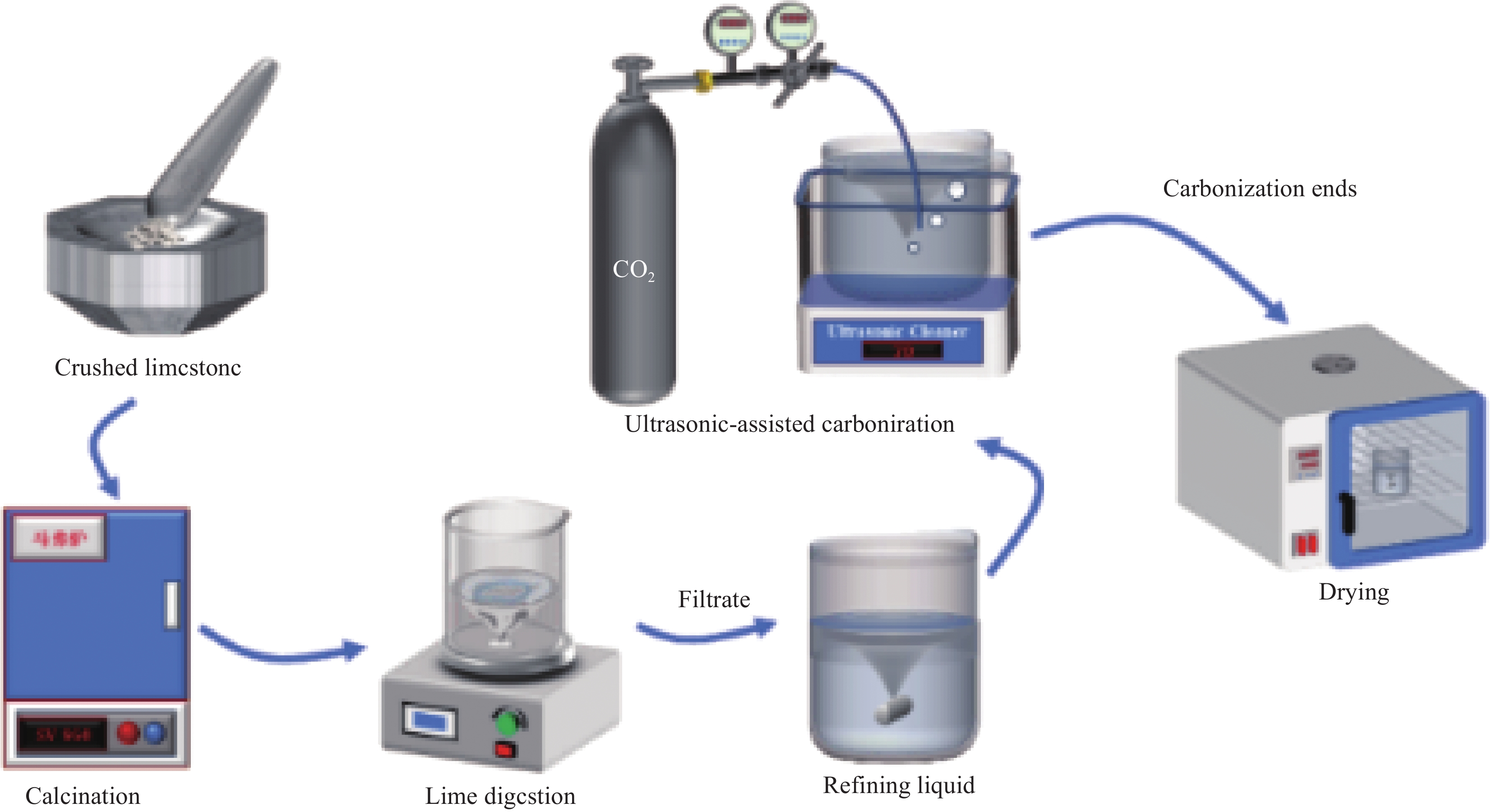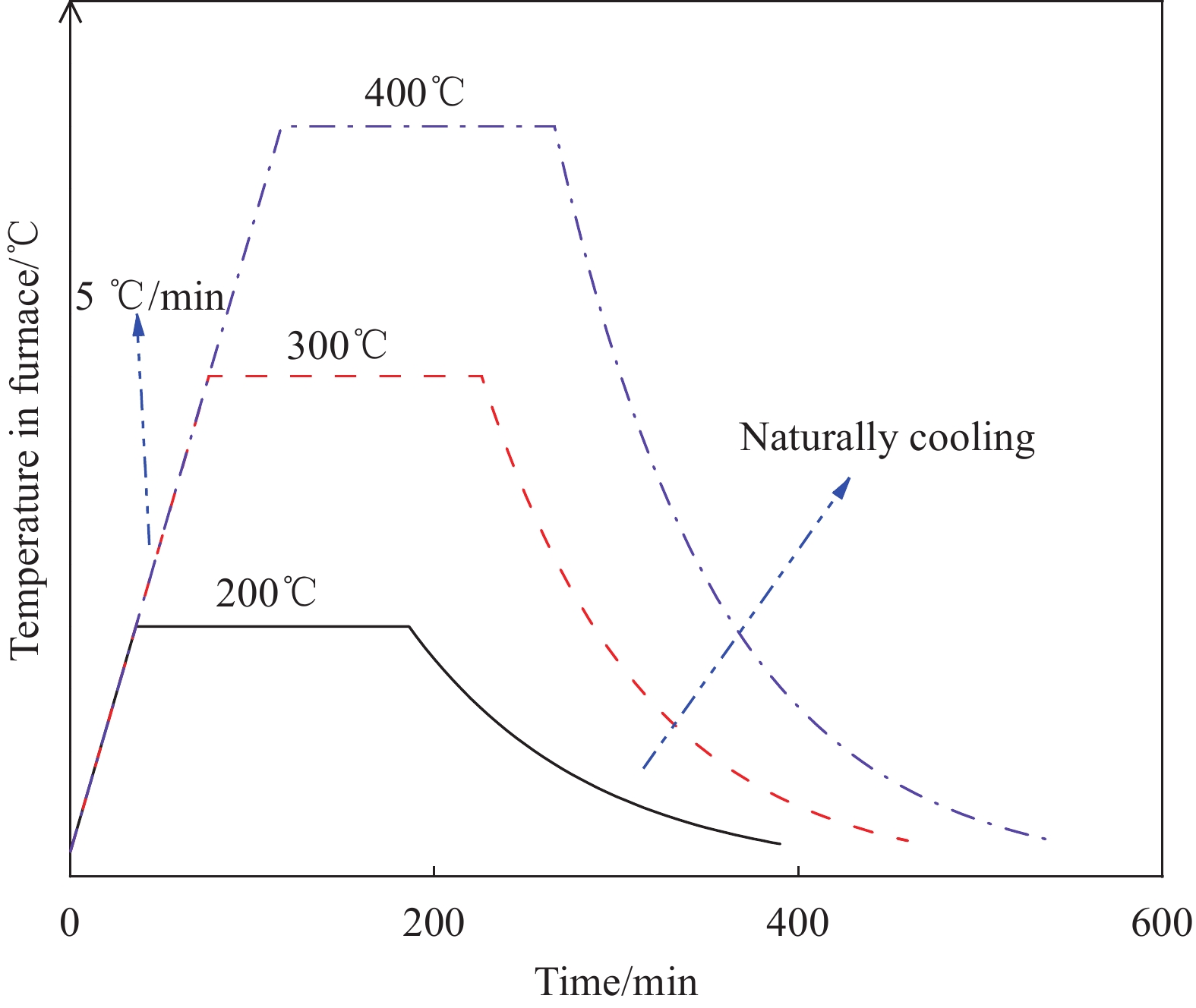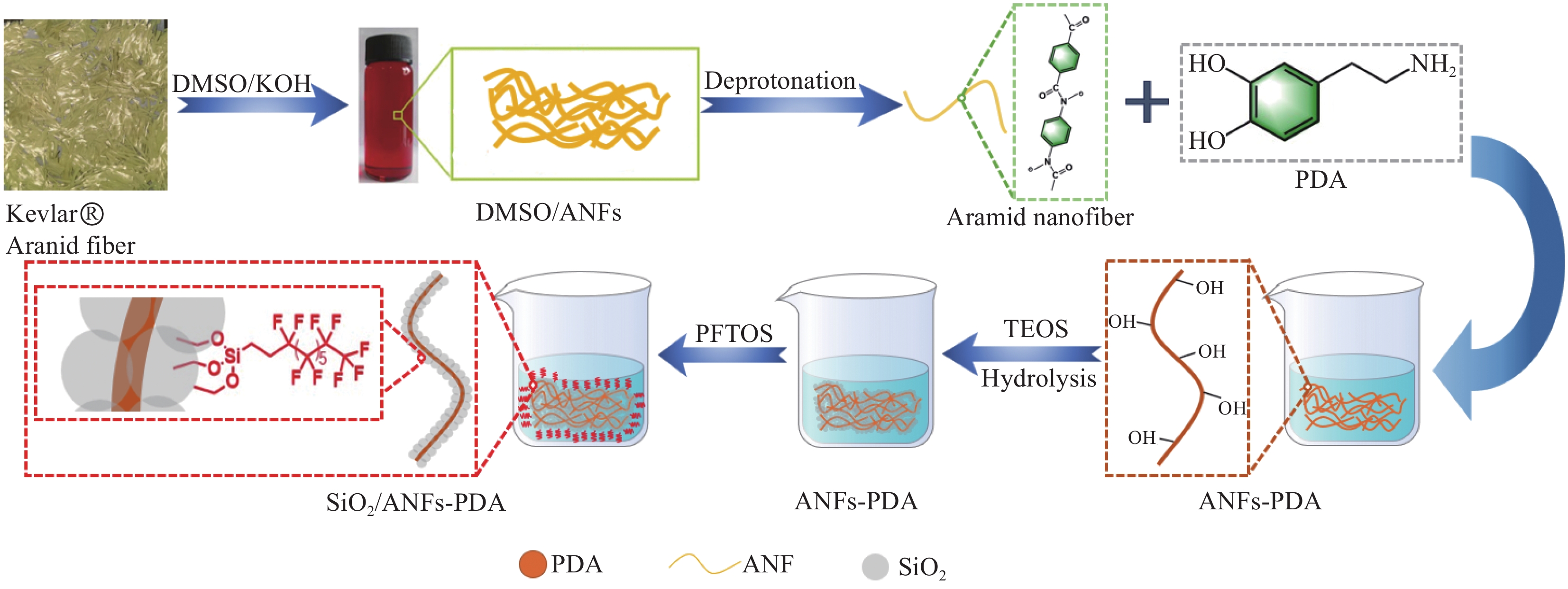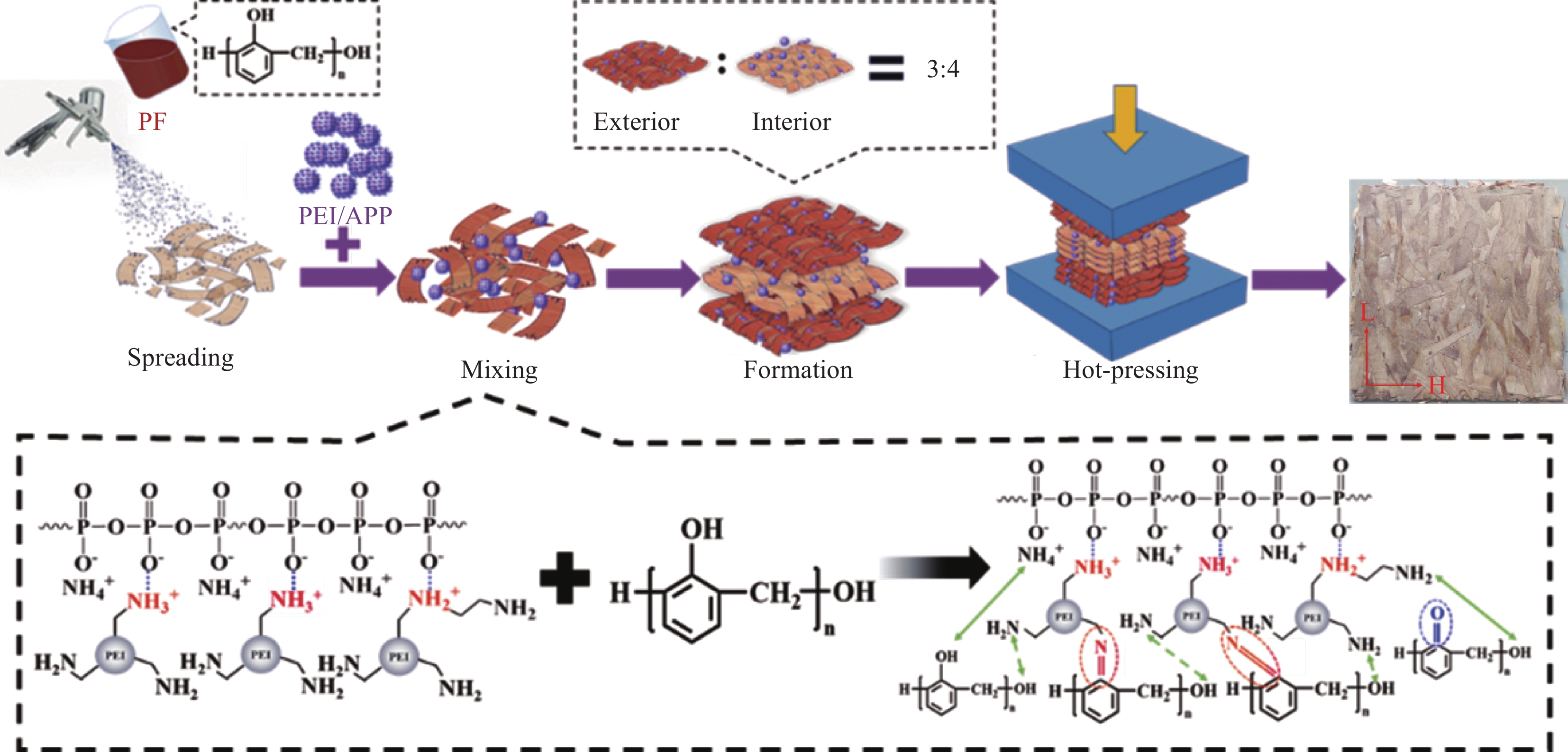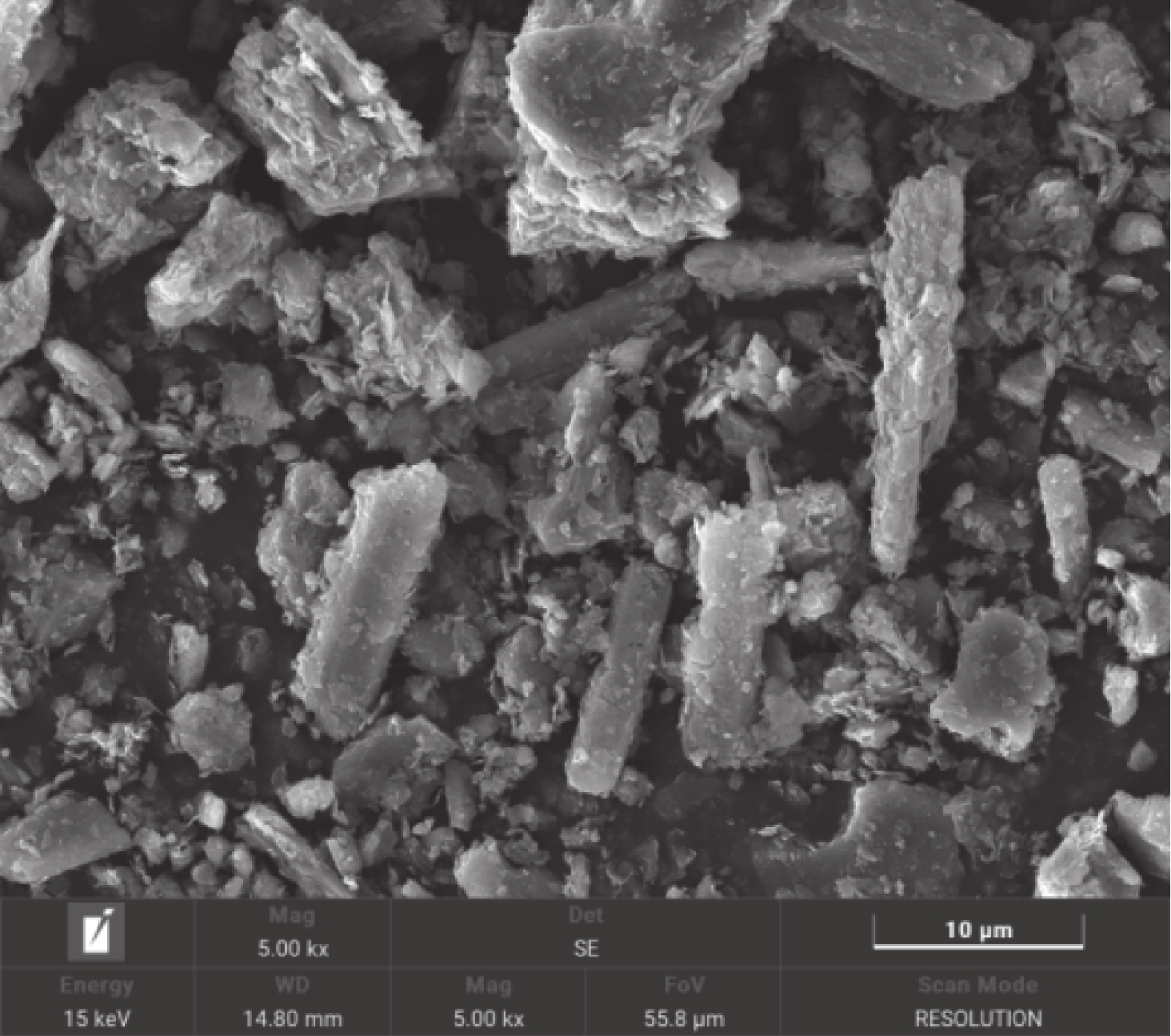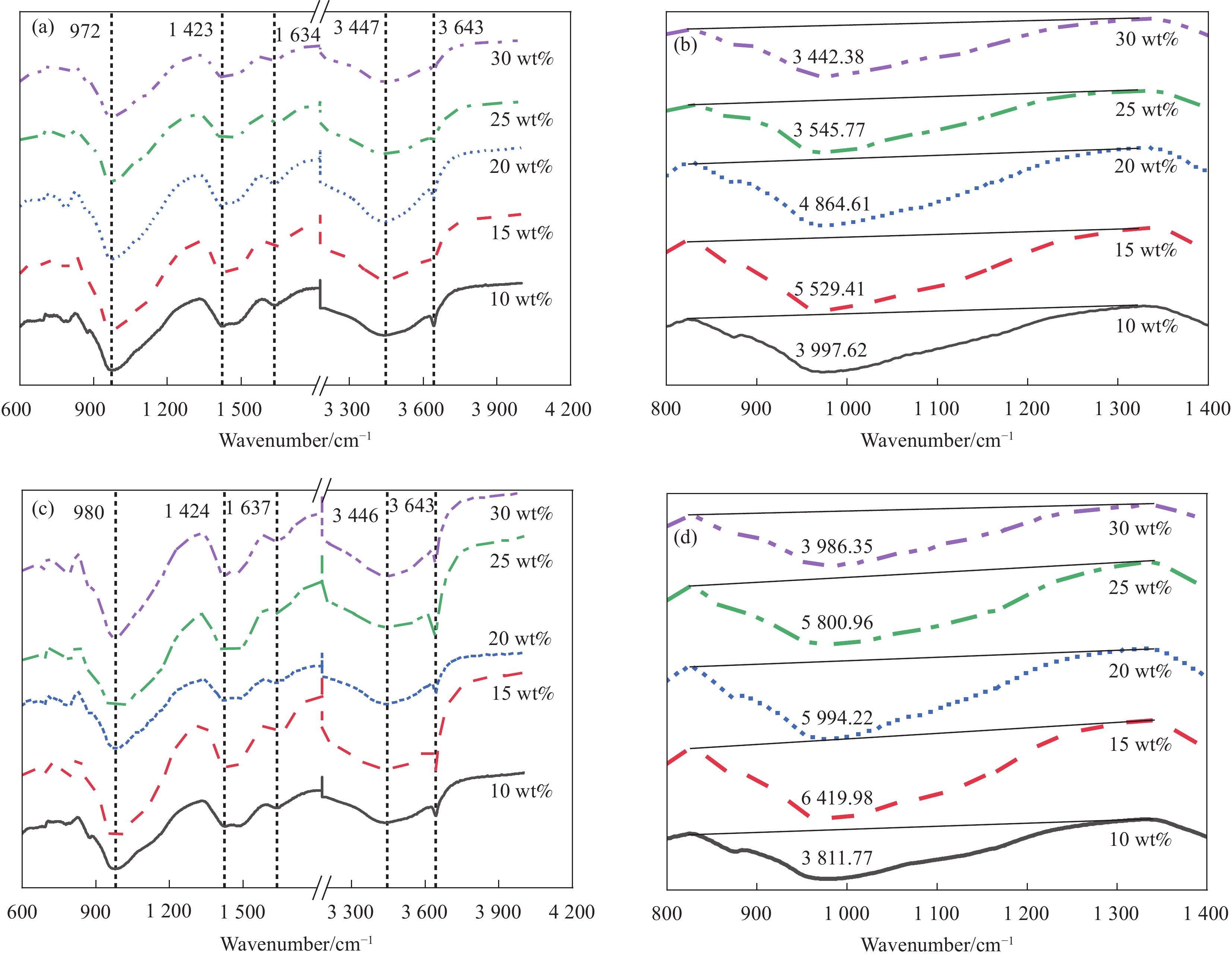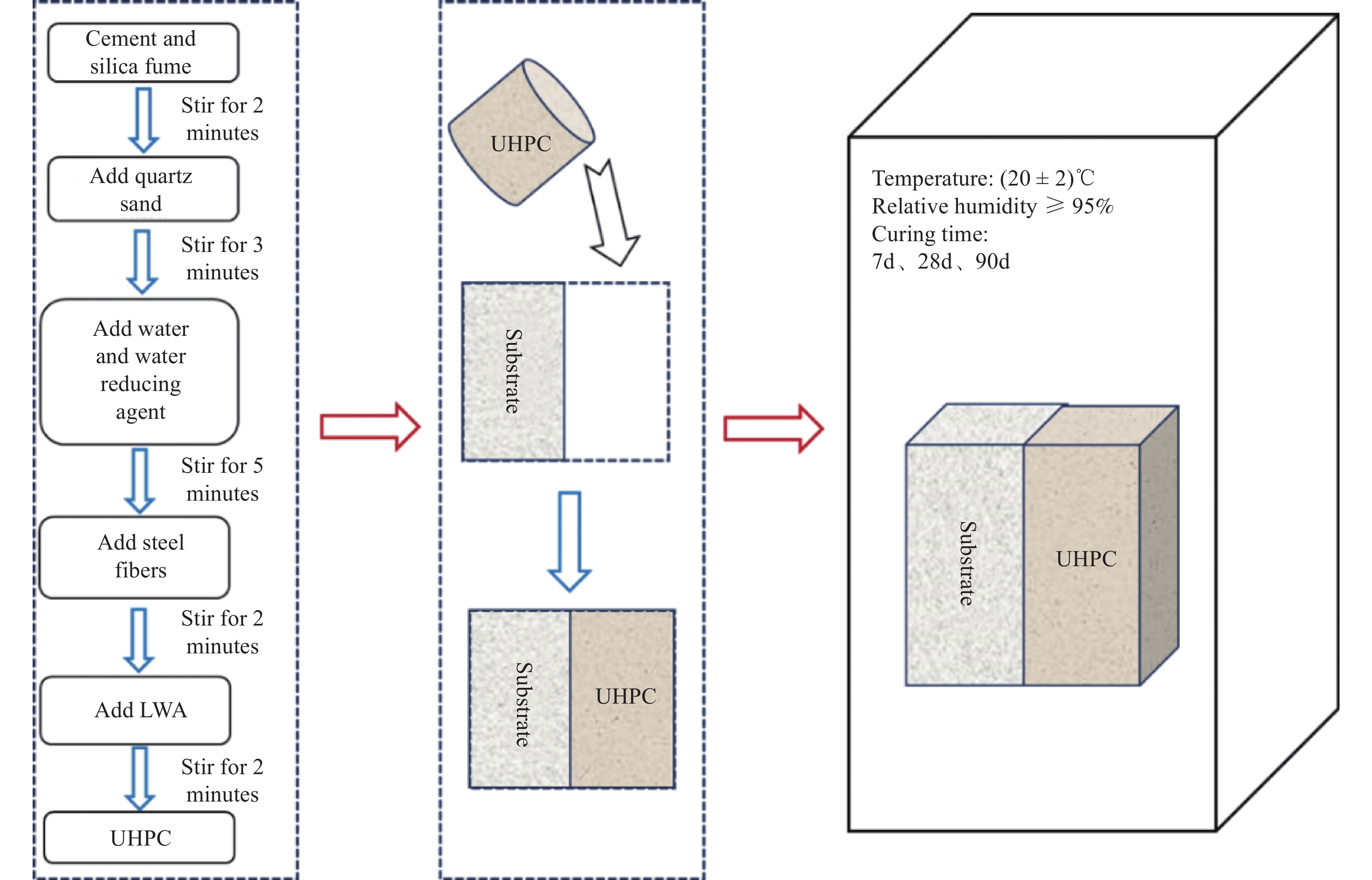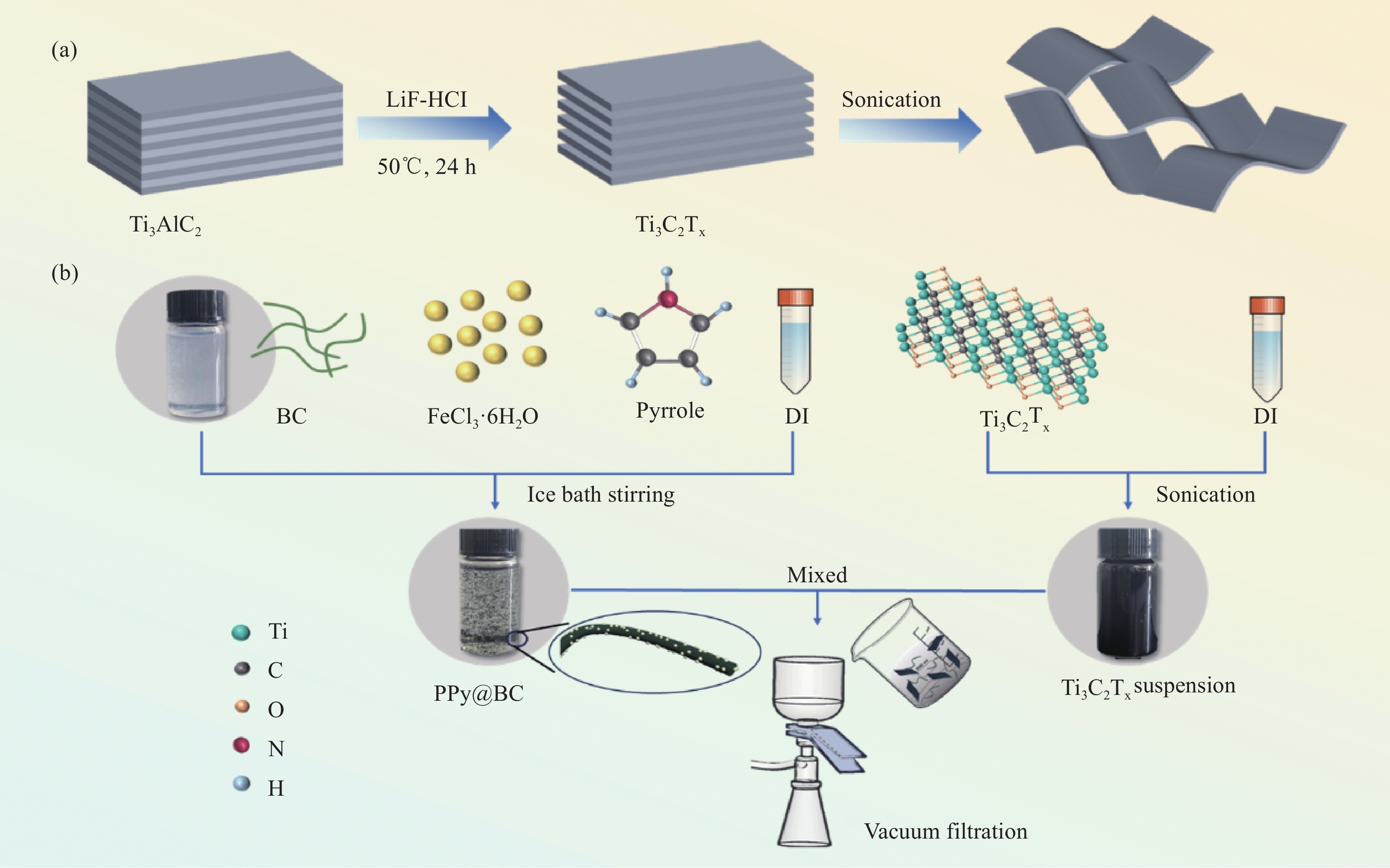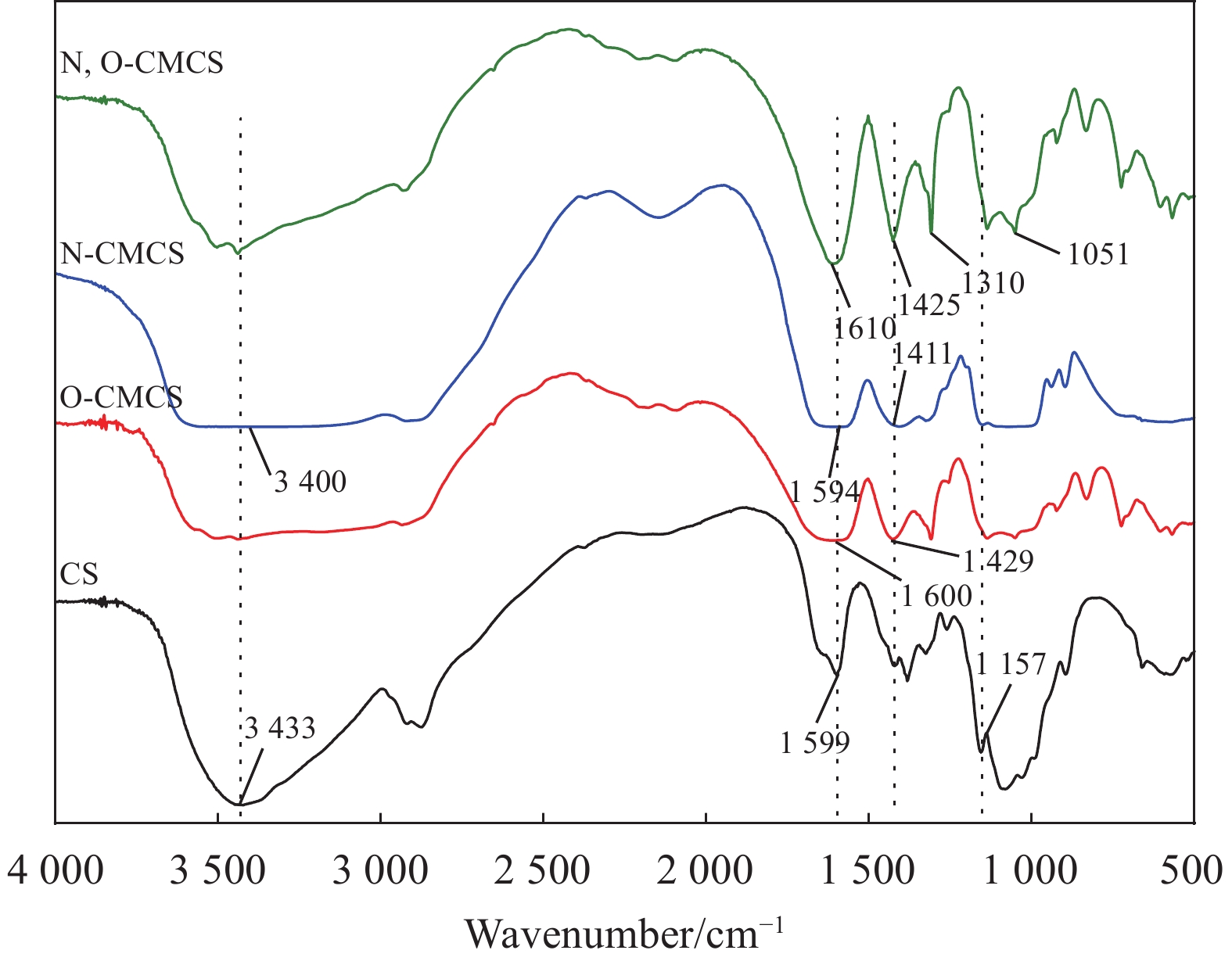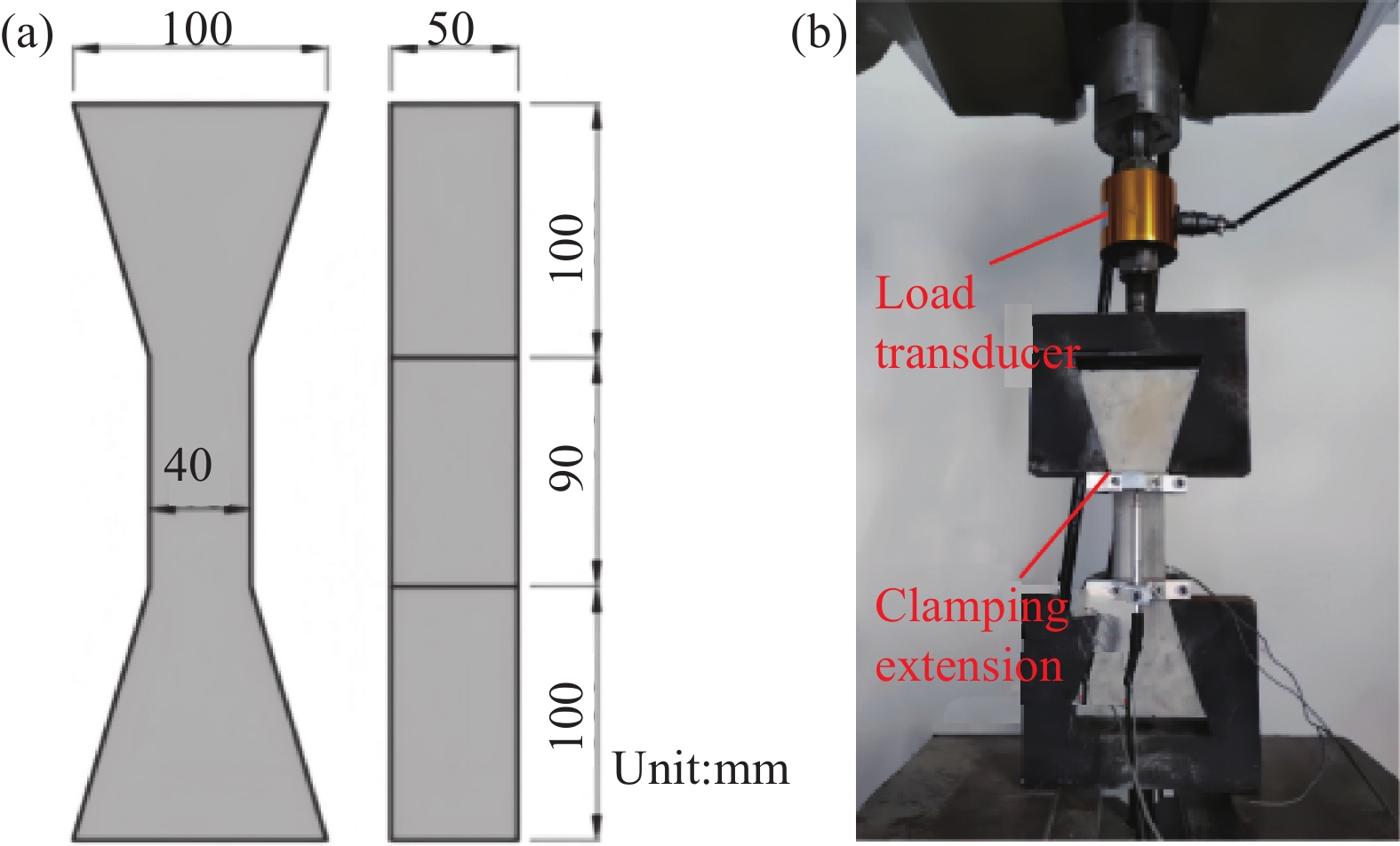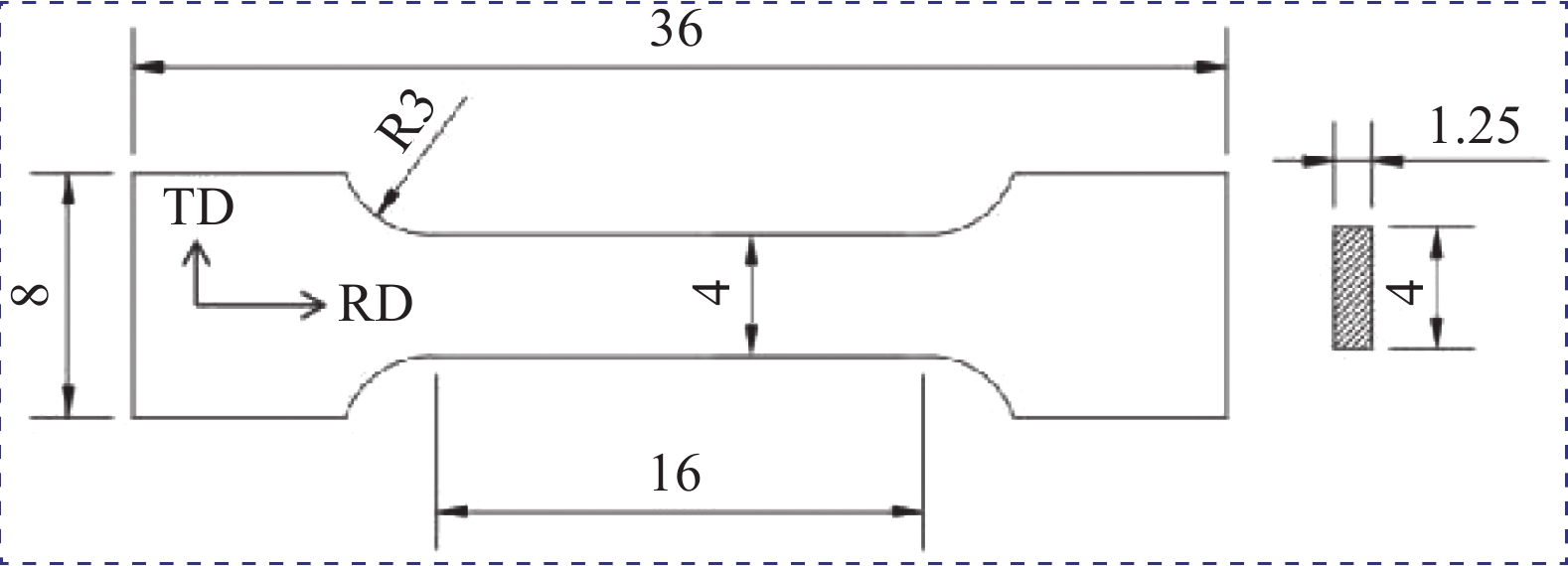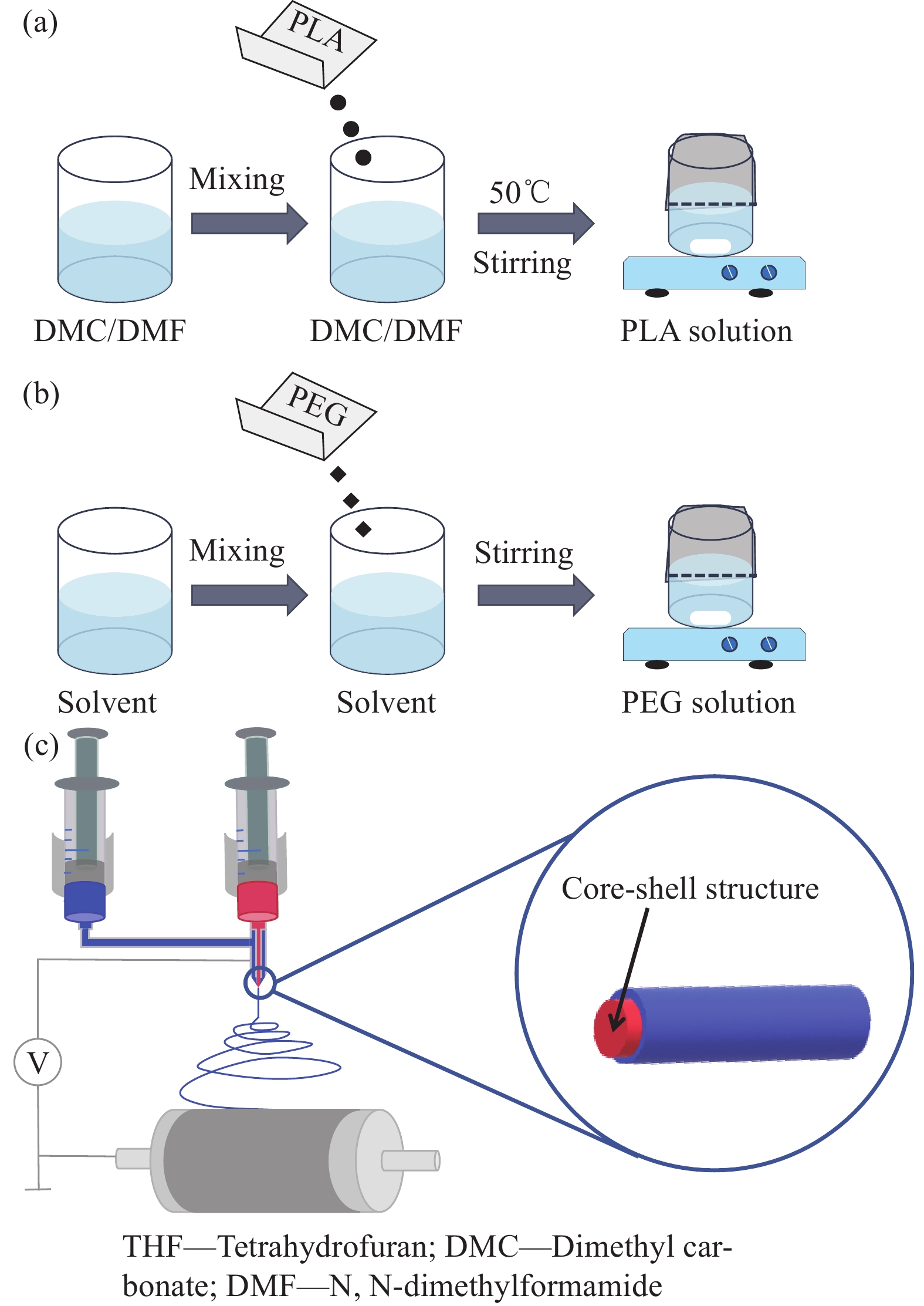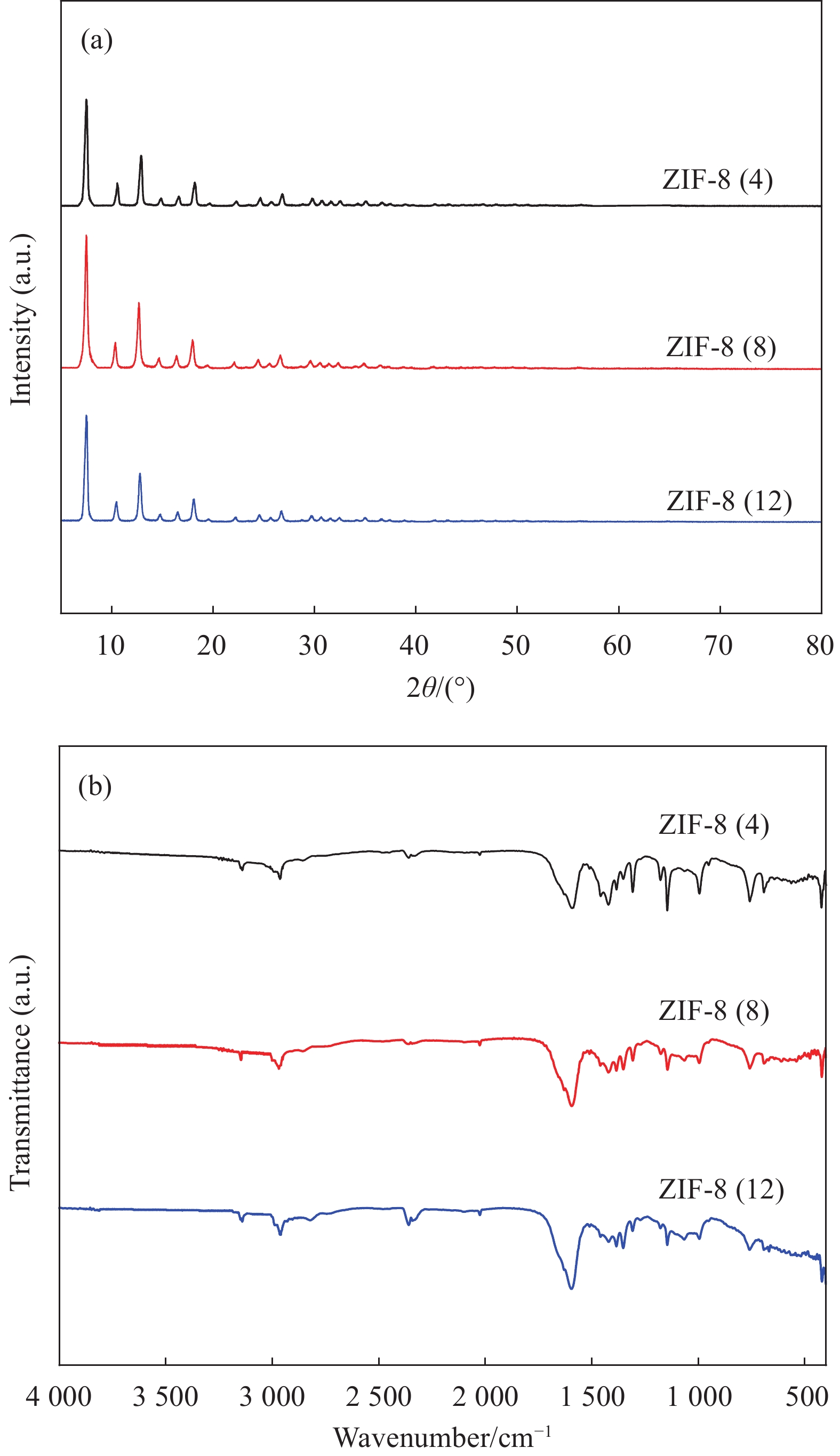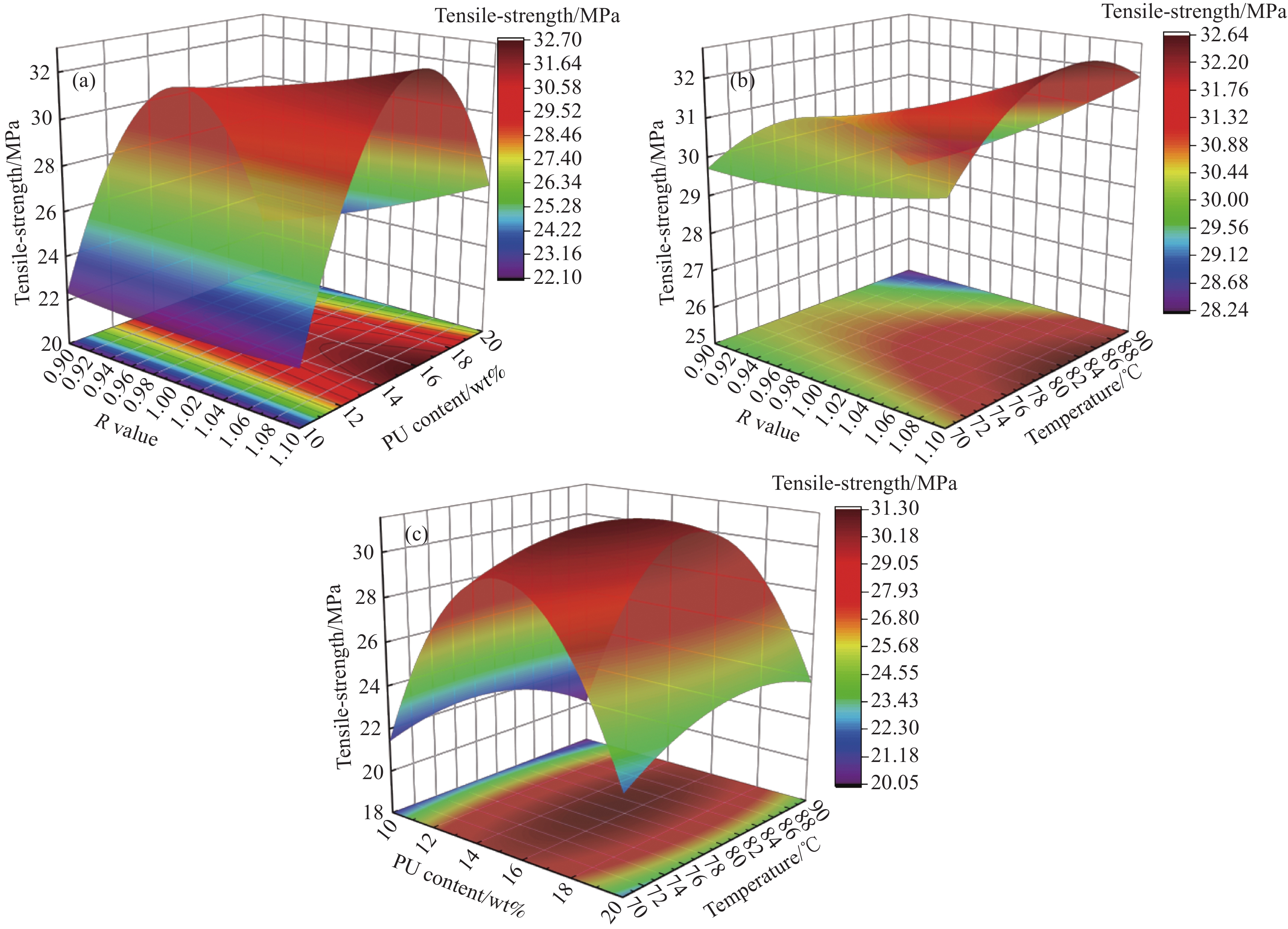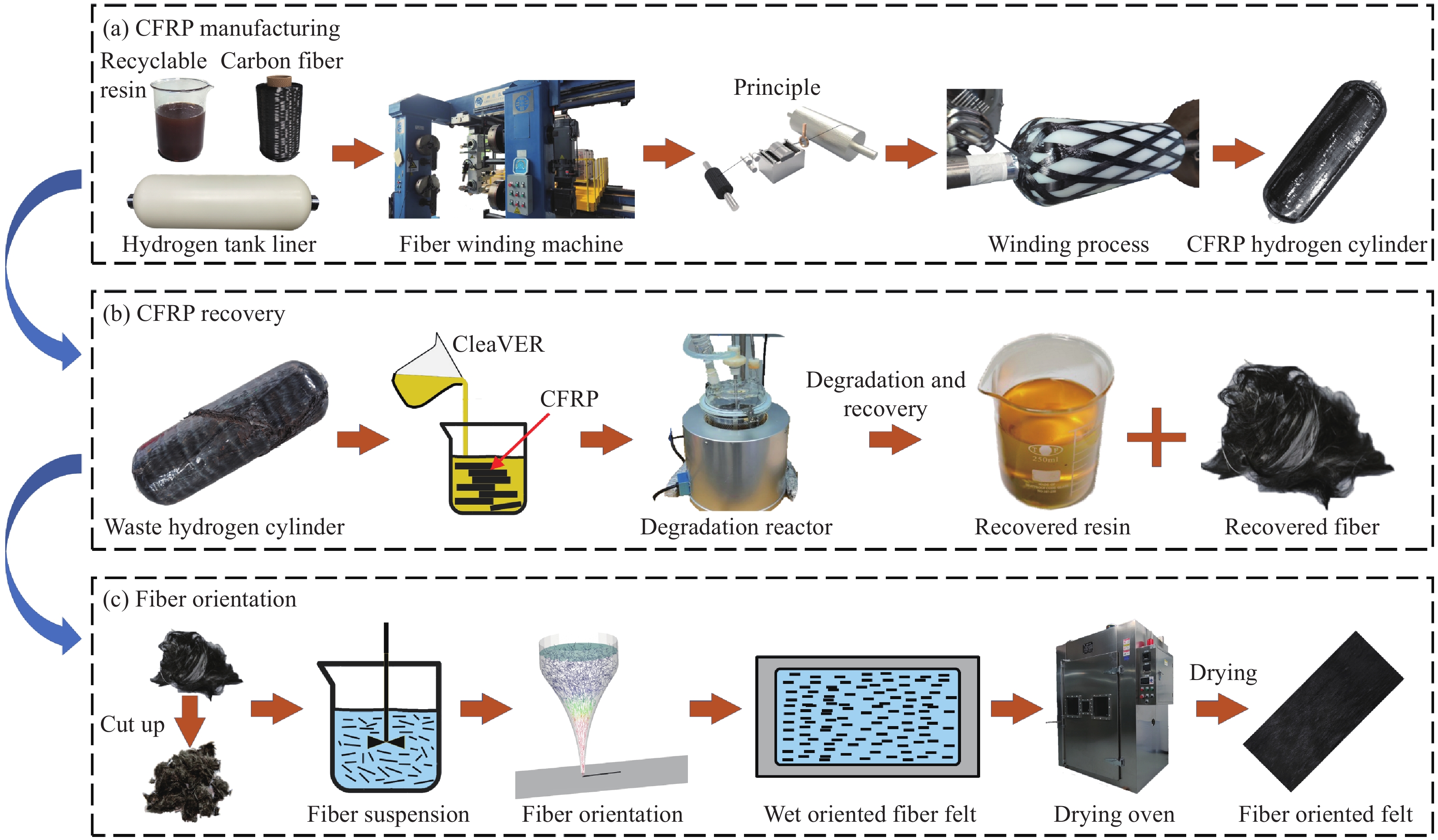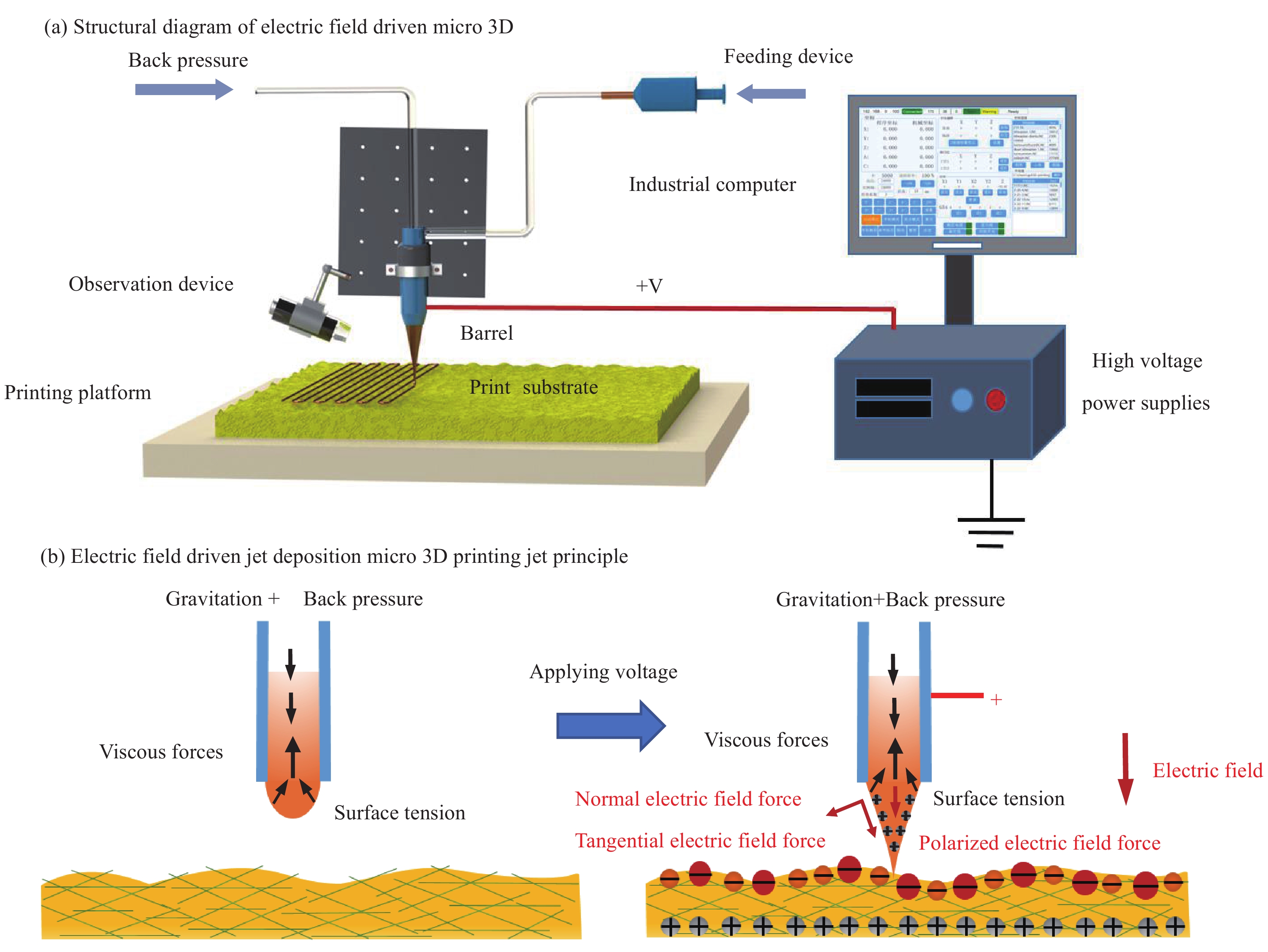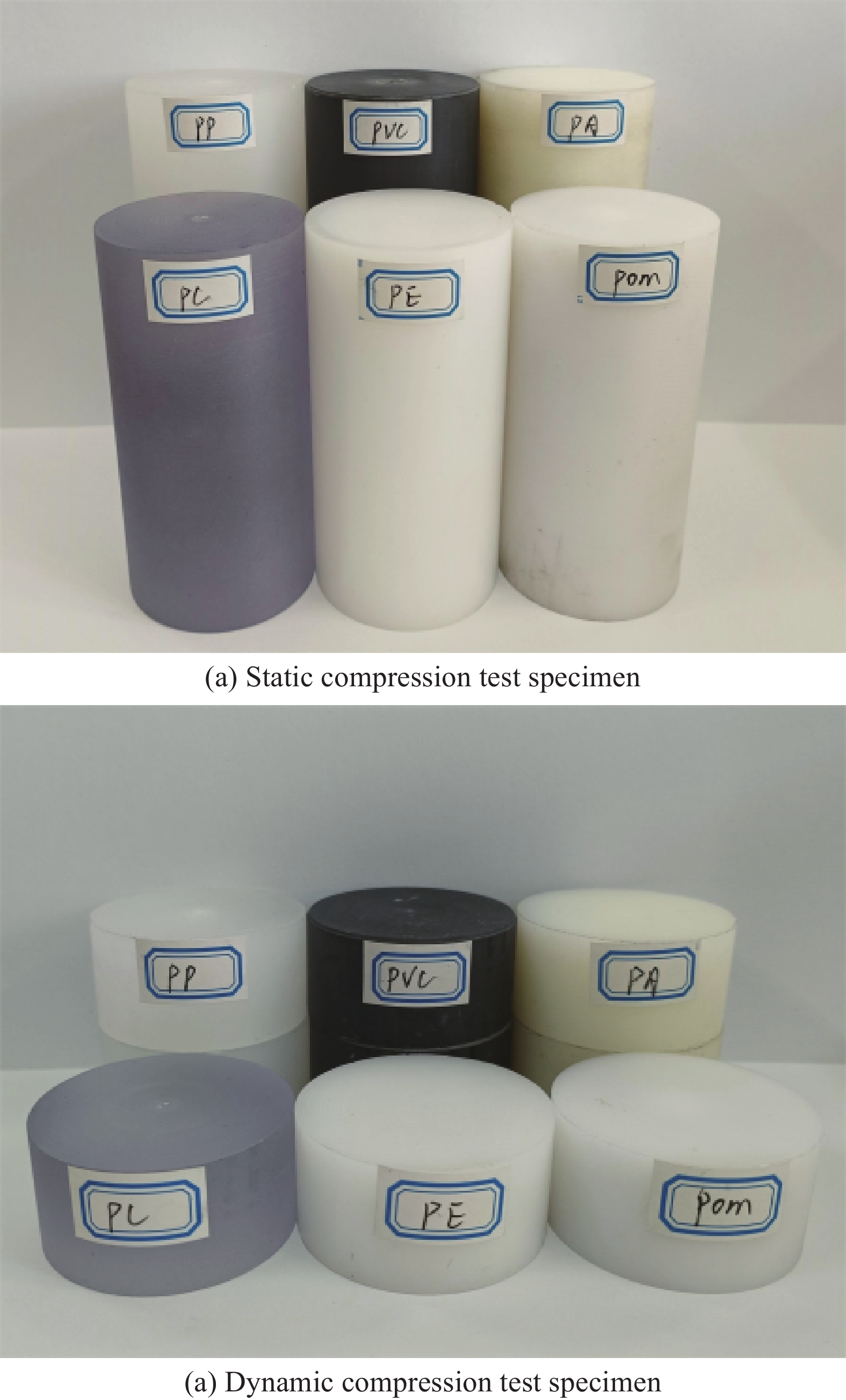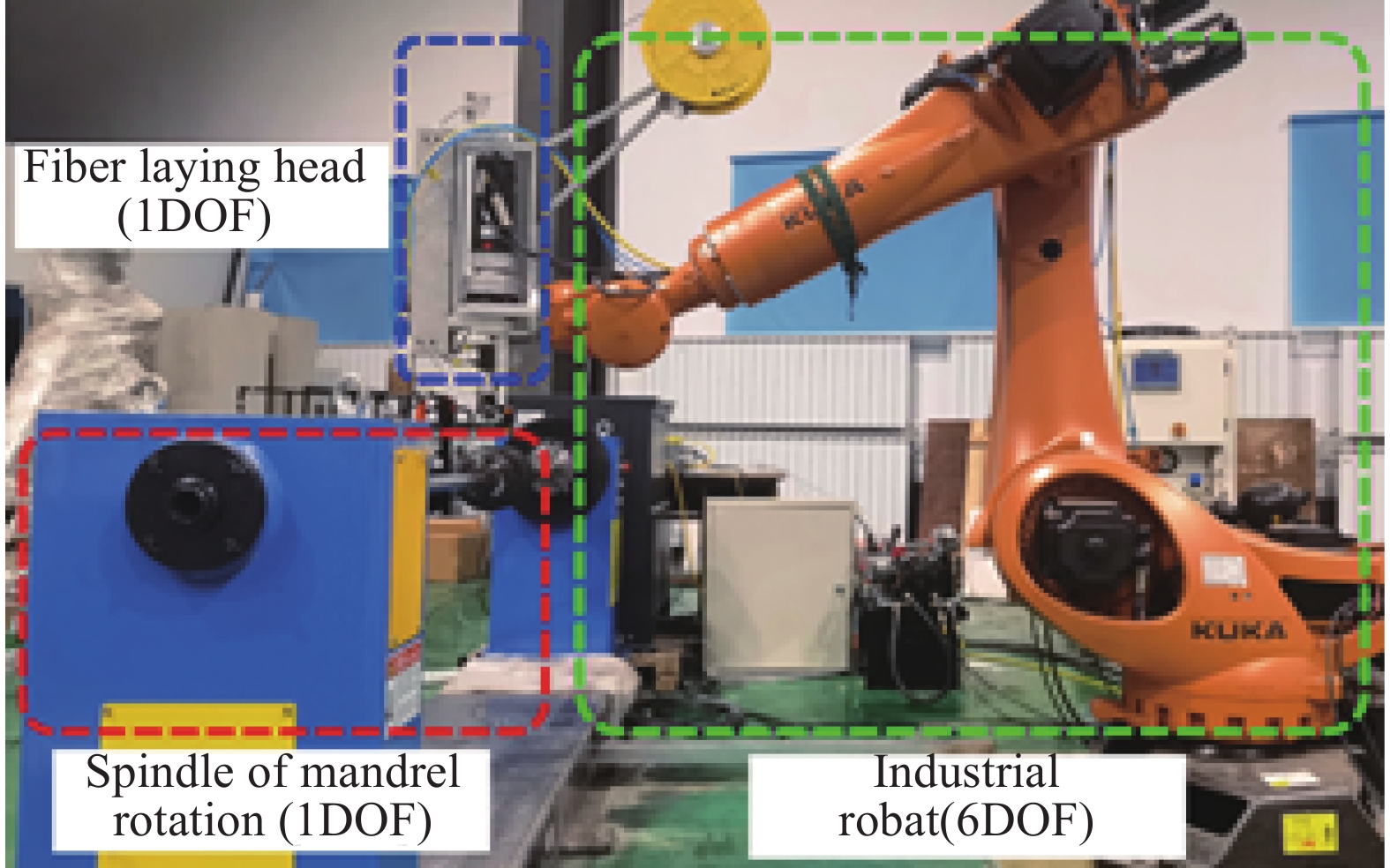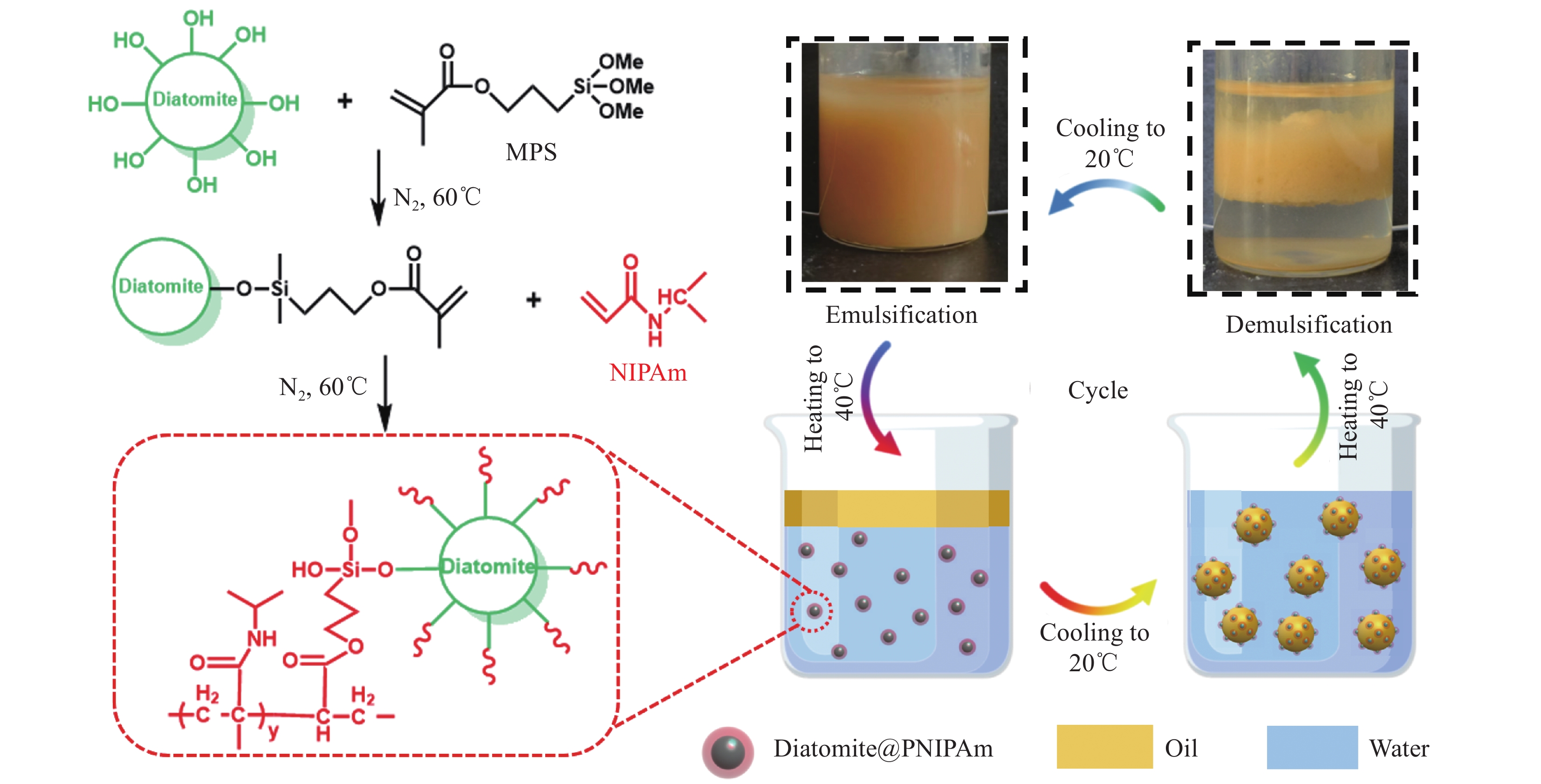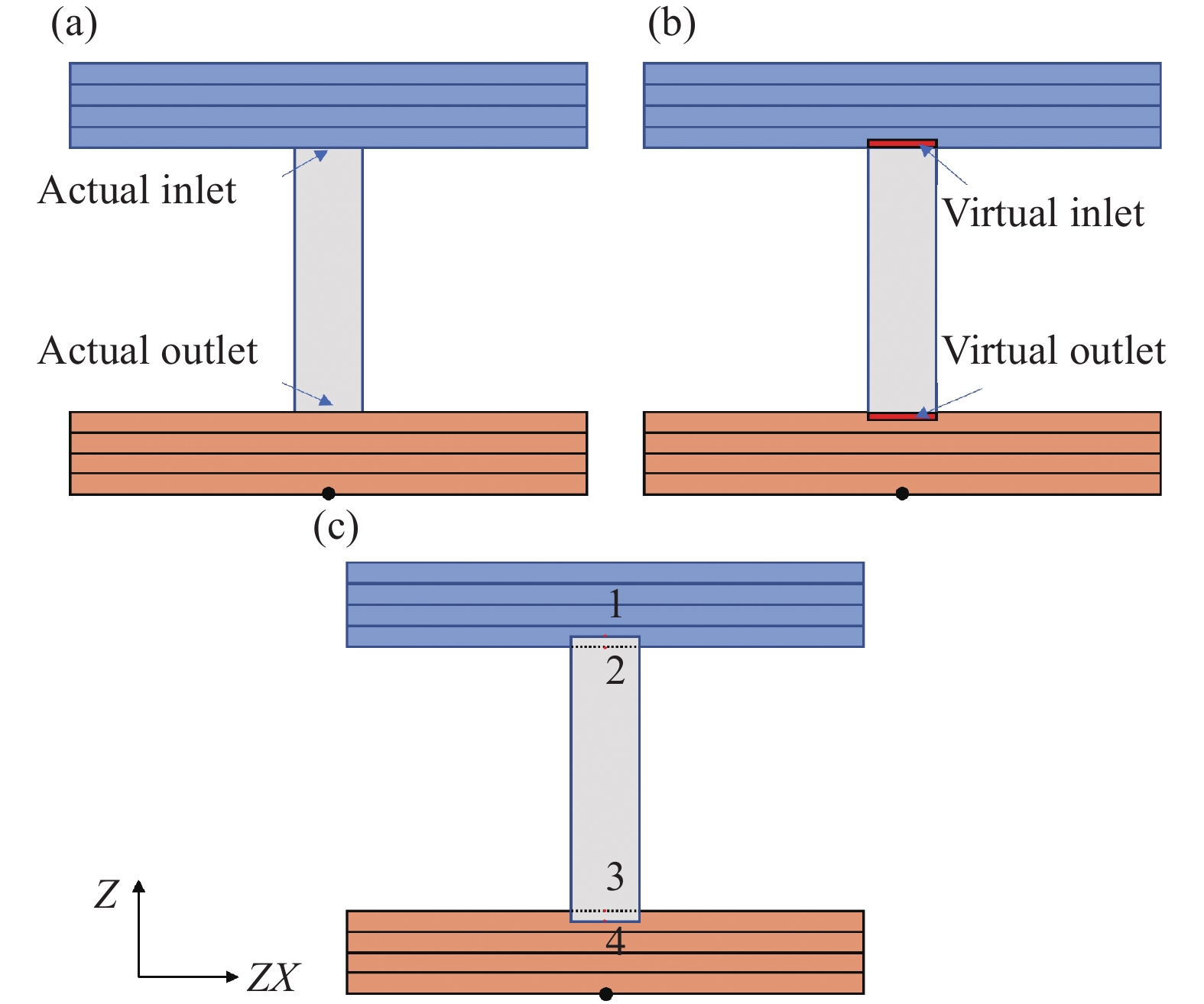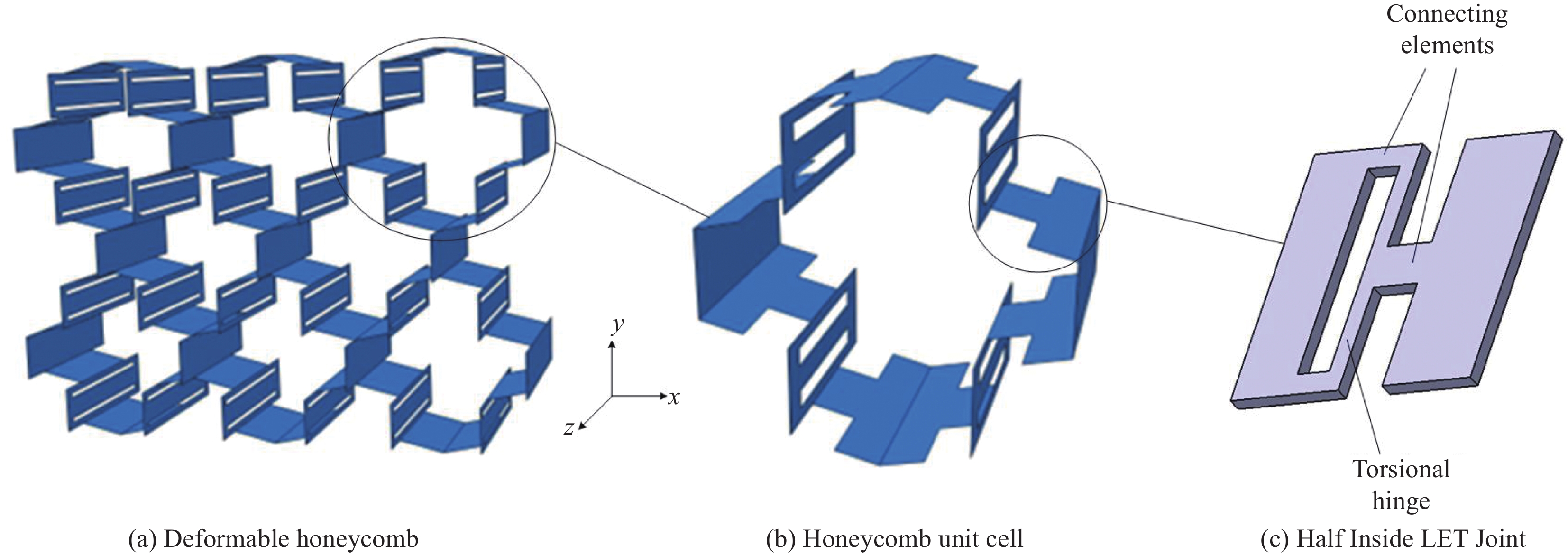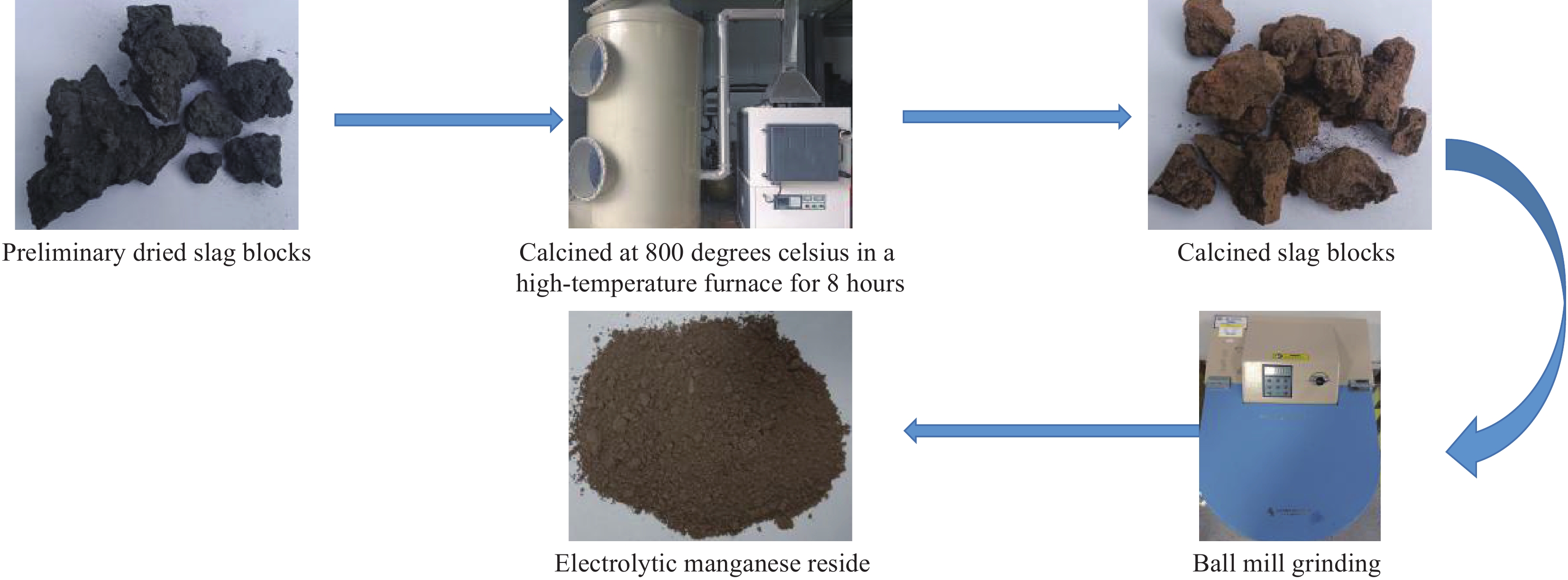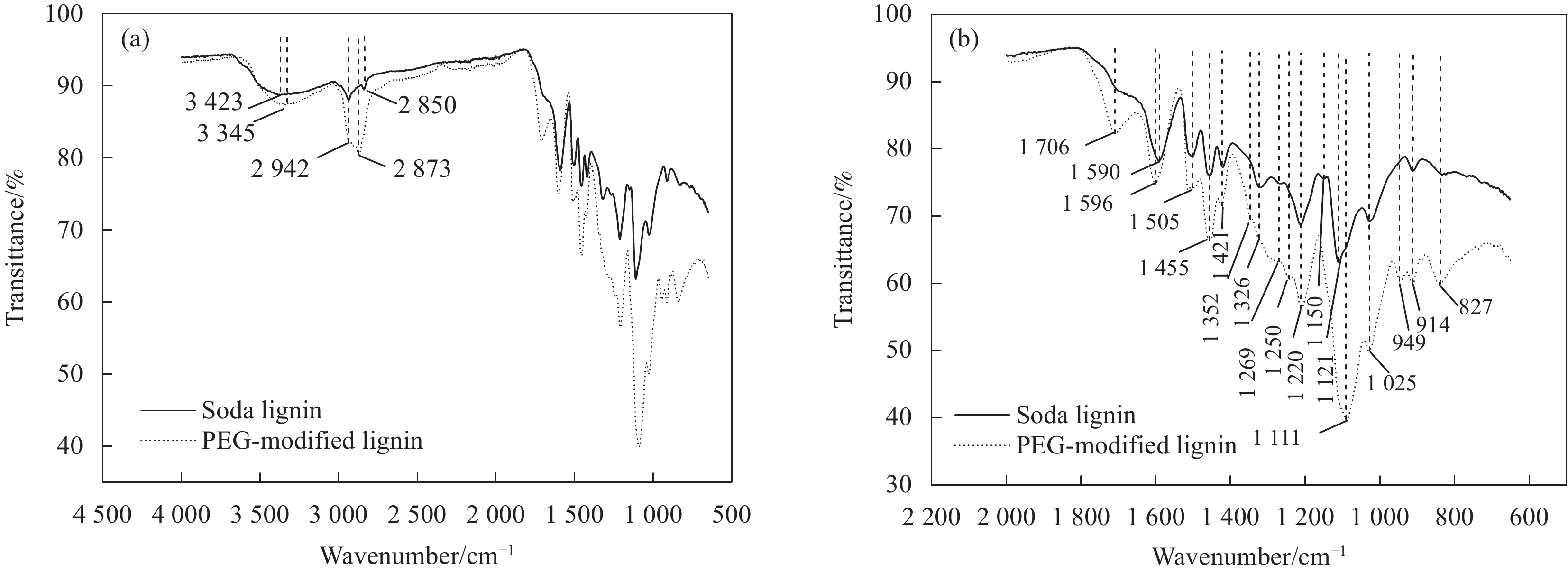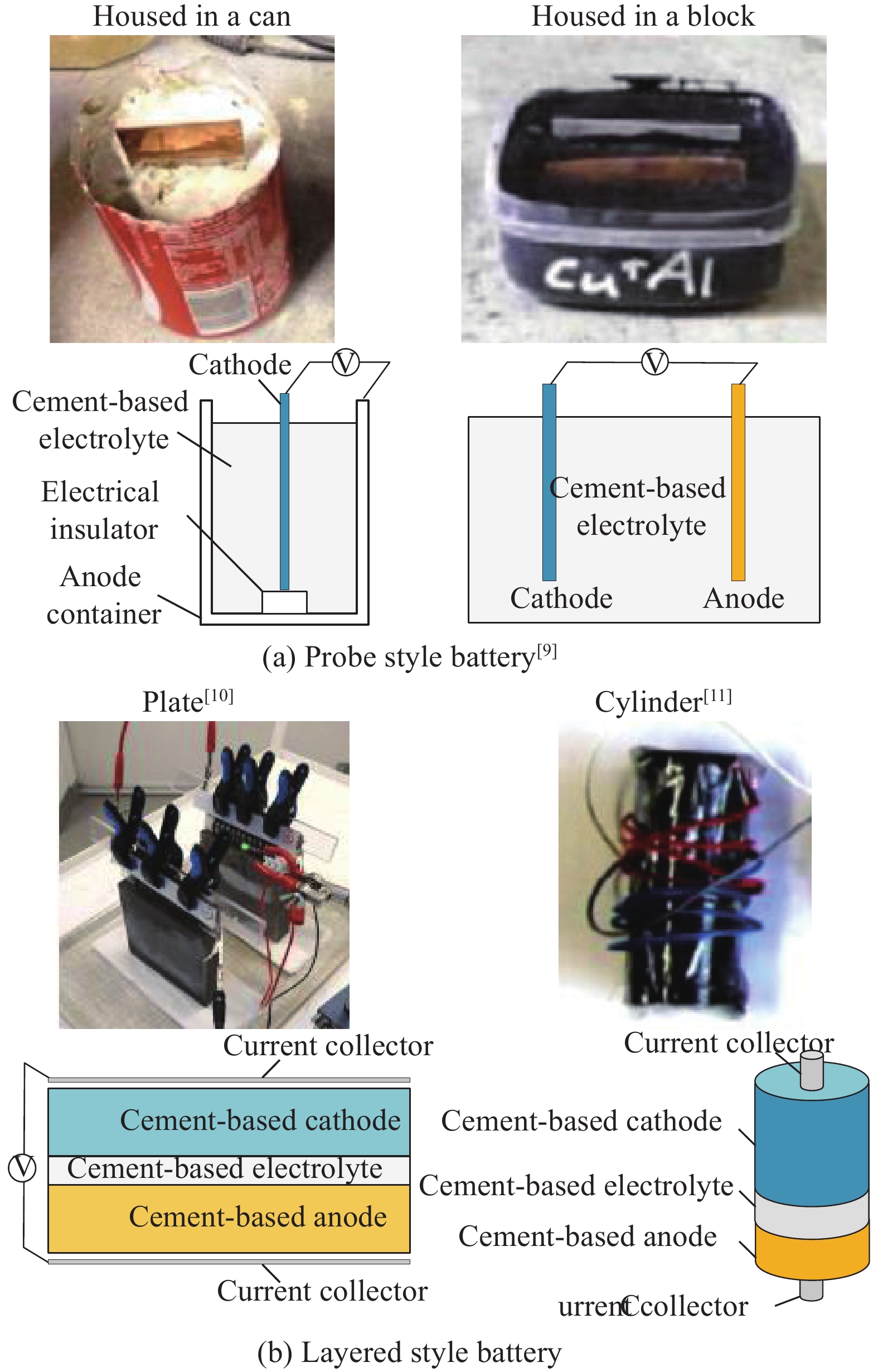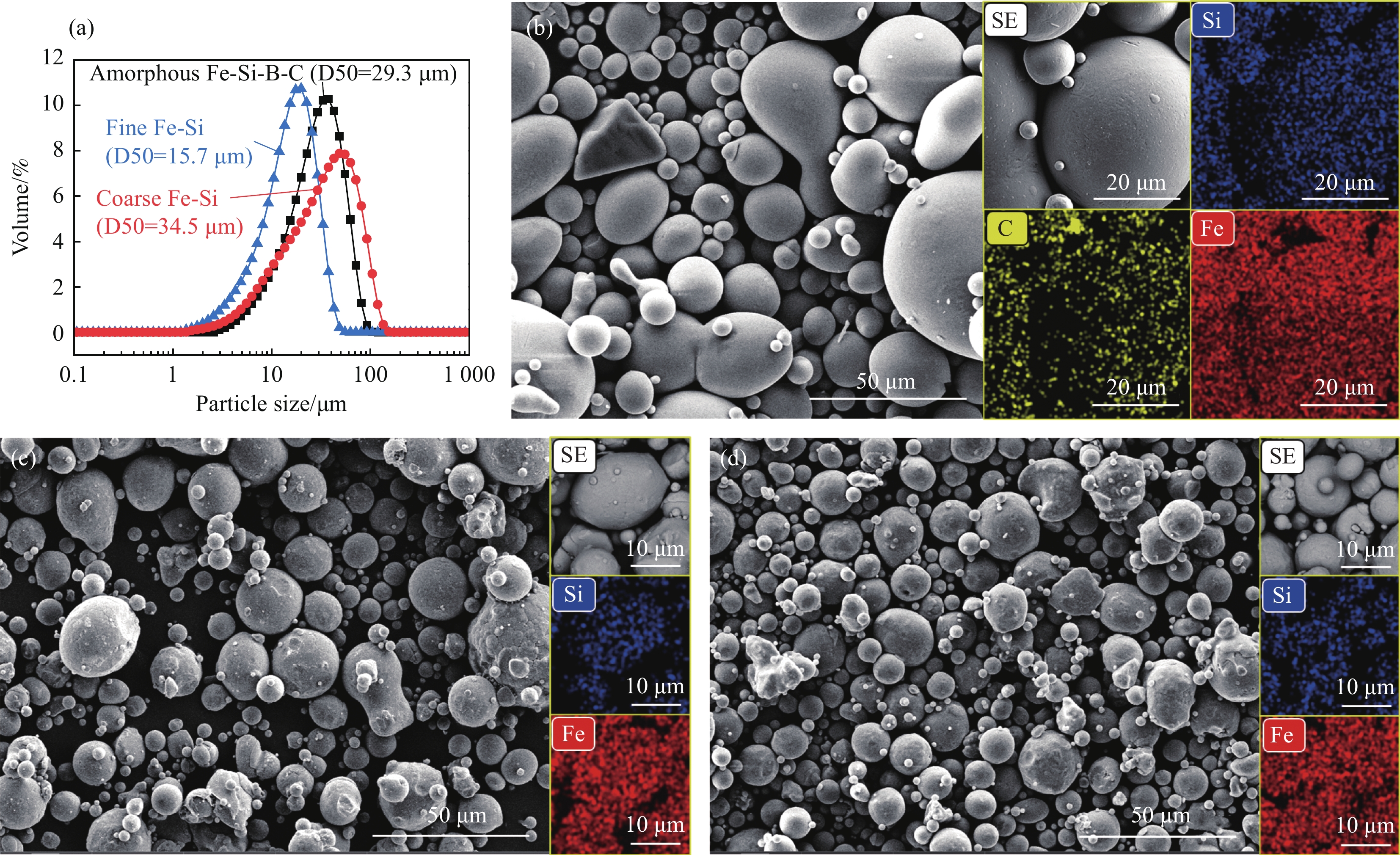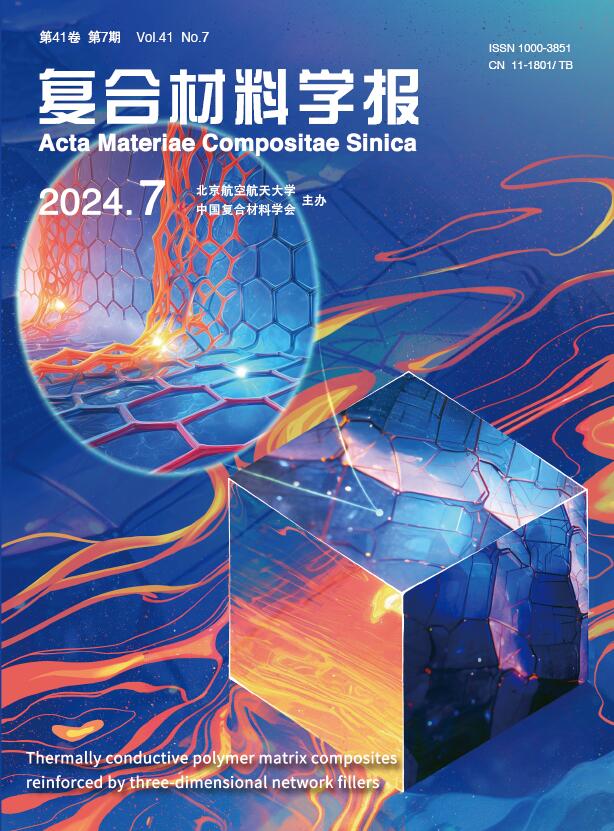Latest Accepted Articles
, Available online
Abstract:
Continuous fiber-reinforced thermoplastic composites offer exceptional mechanical and chemical properties, attracting widespread attention in both academia and industry. To meet the automation requirements for high-performance complex structural components, additive manufacturing technologies for continuous fiber-reinforced thermoplastic composites have garnered significant interest. These manufacturing methods include Fused Deposition Modeling (FDM) and Automated Fiber Placement (AFP). The additive manufacturing process involves multi-scale physical phenomena, presenting a complex interplay that is not yet fully understood. The inherent properties of thermoplastic polymers, such as their high melting points and viscosities, further complicate processing, posing substantial challenges in the control of manufacturing processes. Addressing the intricate mechanical challenges within the manufacturing process can be facilitated through the application of multi-scale process mechanics simulations. The integration of these simulations with theoretical and empirical research aids in forging a clear correlation between manufacturing process parameters and the quality of the final product. This provides theoretical support for optimizing process parameters and equipment module design. However, the implementation of multi-scale process simulation requires in-depth comprehension and precise description of physical phenomena. It also involves the design of sophisticated algorithms and the construction of intricate models, thereby increasing the difficulty and challenge of the simulation. This paper reviews recent studies employing various numerical modeling approaches to investigate the processing mechanisms of continuous fiber reinforced thermoplastic composites during the AFP and FDM processes. It also outlines potential promising directions in the field.
Continuous fiber-reinforced thermoplastic composites offer exceptional mechanical and chemical properties, attracting widespread attention in both academia and industry. To meet the automation requirements for high-performance complex structural components, additive manufacturing technologies for continuous fiber-reinforced thermoplastic composites have garnered significant interest. These manufacturing methods include Fused Deposition Modeling (FDM) and Automated Fiber Placement (AFP). The additive manufacturing process involves multi-scale physical phenomena, presenting a complex interplay that is not yet fully understood. The inherent properties of thermoplastic polymers, such as their high melting points and viscosities, further complicate processing, posing substantial challenges in the control of manufacturing processes. Addressing the intricate mechanical challenges within the manufacturing process can be facilitated through the application of multi-scale process mechanics simulations. The integration of these simulations with theoretical and empirical research aids in forging a clear correlation between manufacturing process parameters and the quality of the final product. This provides theoretical support for optimizing process parameters and equipment module design. However, the implementation of multi-scale process simulation requires in-depth comprehension and precise description of physical phenomena. It also involves the design of sophisticated algorithms and the construction of intricate models, thereby increasing the difficulty and challenge of the simulation. This paper reviews recent studies employing various numerical modeling approaches to investigate the processing mechanisms of continuous fiber reinforced thermoplastic composites during the AFP and FDM processes. It also outlines potential promising directions in the field.
, Available online
Abstract:
Voids have significant influence on the shear properties of carbon fiber/epoxy resin composites. In this paper, carbon fiber/epoxy resin composite laminates with varies porosity were produced by hygroscopic saturation and stepping down the autoclave pressures. Short beam shear (SBS) tests were performed to establish the influence curve of different porosity on SBS strength. The evolution of shear damage induced by voids and the degradation mechanism of SBS strength were both studied by ultrasonic imaging and metallographic observation. The result shows that when the porosity is less than 1.0%, the SBS strength retention rate is about 88.4%~90.8%; when the porosity increases to 1.0%~1.5%, the SBS strength retention rate is about 74.9%~80.6%; when the porosity increases to 1.5-2.0%, the SBS strength retention rate is about 66.3%-71.9%; When the porosity increases to 2.0~3.0%, the SBS strength decreases sharply, and the SBS strength retention rate drops below 50%. The SBS shear failure mode is very sensitive to voids. Shear failure mainly occurs close to void and the surrounding stress concentration. The higher the porosity, the more obvious the promotion effect of voids on crack initiation and propagation, yielding the higher crack density, the earlier crack occurrence time, and the faster propagation speed.
Voids have significant influence on the shear properties of carbon fiber/epoxy resin composites. In this paper, carbon fiber/epoxy resin composite laminates with varies porosity were produced by hygroscopic saturation and stepping down the autoclave pressures. Short beam shear (SBS) tests were performed to establish the influence curve of different porosity on SBS strength. The evolution of shear damage induced by voids and the degradation mechanism of SBS strength were both studied by ultrasonic imaging and metallographic observation. The result shows that when the porosity is less than 1.0%, the SBS strength retention rate is about 88.4%~90.8%; when the porosity increases to 1.0%~1.5%, the SBS strength retention rate is about 74.9%~80.6%; when the porosity increases to 1.5-2.0%, the SBS strength retention rate is about 66.3%-71.9%; When the porosity increases to 2.0~3.0%, the SBS strength decreases sharply, and the SBS strength retention rate drops below 50%. The SBS shear failure mode is very sensitive to voids. Shear failure mainly occurs close to void and the surrounding stress concentration. The higher the porosity, the more obvious the promotion effect of voids on crack initiation and propagation, yielding the higher crack density, the earlier crack occurrence time, and the faster propagation speed.
, Available online
Abstract:
To investigate the mechanical response and fracture characteristics of adhesively bonded titanium alloy structures under mode I loading conditions, this study employed a co-curing method to fabricate repair specimens with single-sided carbon fiber reinforced polymer (CFRP) patches bonded to titanium alloy substrates. The effects of patch thickness, ply orientation, and surface treatment on mode I interfacial fracture mechanics were systematically examined using double cantilever beam (DCB) tests. Peak load and interlaminar fracture toughness were utilized as quantitative metrics to evaluate the overall repair performance. Furthermore, failure modes and fracture surface morphologies at both macroscopic and microscopic scales were analyzed to elucidate the underlying failure mechanisms of mode I static delamination in the titanium alloy/CFRP repaired specimens. The results reveal that increasing the thickness of the patch leads to a rising trend in both the bending stiffness of the specimen and the extent of fiber bridging. The mode I fracture performance of the repair interface improves significantly, with failure modes consistently evolving from adhesive failure of the glue film and cohesive damage to failure at the CRFP interface. For multidirectional laminates, the 0° ply at the bottom of the patch exhibits the strongest constraint on delamination paths, while the 45° ply effectively induces inter-ply crack migration, enhancing the toughening effect. Notably, the two-dimensional woven patch demonstrates the best repair performance. For surface-treated specimens, cohesive failure of the adhesive film is the predominant failure mode. Specifically, sulfuric acid anodization provides the most significant toughening effect, increasing fracture toughness by 3.8% and 1.9% compared to quartz sandblasting and 400# sandpaper abrasion, respectively, and by 19.2% compared to untreated specimens. These conclusions provide references for the optimized design and practical application of damage repair processes under mode I loading conditions for titanium alloy components.
To investigate the mechanical response and fracture characteristics of adhesively bonded titanium alloy structures under mode I loading conditions, this study employed a co-curing method to fabricate repair specimens with single-sided carbon fiber reinforced polymer (CFRP) patches bonded to titanium alloy substrates. The effects of patch thickness, ply orientation, and surface treatment on mode I interfacial fracture mechanics were systematically examined using double cantilever beam (DCB) tests. Peak load and interlaminar fracture toughness were utilized as quantitative metrics to evaluate the overall repair performance. Furthermore, failure modes and fracture surface morphologies at both macroscopic and microscopic scales were analyzed to elucidate the underlying failure mechanisms of mode I static delamination in the titanium alloy/CFRP repaired specimens. The results reveal that increasing the thickness of the patch leads to a rising trend in both the bending stiffness of the specimen and the extent of fiber bridging. The mode I fracture performance of the repair interface improves significantly, with failure modes consistently evolving from adhesive failure of the glue film and cohesive damage to failure at the CRFP interface. For multidirectional laminates, the 0° ply at the bottom of the patch exhibits the strongest constraint on delamination paths, while the 45° ply effectively induces inter-ply crack migration, enhancing the toughening effect. Notably, the two-dimensional woven patch demonstrates the best repair performance. For surface-treated specimens, cohesive failure of the adhesive film is the predominant failure mode. Specifically, sulfuric acid anodization provides the most significant toughening effect, increasing fracture toughness by 3.8% and 1.9% compared to quartz sandblasting and 400# sandpaper abrasion, respectively, and by 19.2% compared to untreated specimens. These conclusions provide references for the optimized design and practical application of damage repair processes under mode I loading conditions for titanium alloy components.
, Available online
Abstract:
Mixed matrix membranes, which combine the flexibility of polymer membranes with the gas separation properties of porous fillers, have attracted much attention in the field of gas separation in recent years. Covalent organic framework materials (COFs) are distinguished by a high specific surface area, high porosity, and facile functionalization. Their all-organic structure exhibits favorable compatibility with polymers, which is regarded as an optimal filler for mixed matrix membranes. Accordingly, in this study, the fluorinated covalent organic framework material TpPa-CF3 was synthesized via a solvothermal method, and TpPa-CF3/6FDA-ODA mixed matrix membranes were prepared through a blending method utilizing TpPa-CF3 as a filler and polyimide 6FDA-ODA as a matrix. The structure and properties of TpPa-CF3 and its mixed matrix membranes were investigated through a series of analytical techniques, including FT-IR, XRD, TGA, SEM, and gas permeability tests. The results showed that the homogeneous pores of TpPa-CF3 provided fast channels for gas molecule transport, the microporous structure of the framework enhanced the interaction of gas molecules with functional groups on the pore walls, and the dipole-quadrupole interactions of C—F bonds with CO2 elevated the interactions of the framework with CO2. At a loading of 5 wt% of TpPa-CF3, the CO₂ and O₂ permeability exhibited an improvement of 149% and 138%, respectively, in comparison to the 6FDA-ODA matrix membrane. Additionally, the CO₂/N₂ and O₂/N₂ separation factors were elevated to 24.4 and 4.8, respectively.
Mixed matrix membranes, which combine the flexibility of polymer membranes with the gas separation properties of porous fillers, have attracted much attention in the field of gas separation in recent years. Covalent organic framework materials (COFs) are distinguished by a high specific surface area, high porosity, and facile functionalization. Their all-organic structure exhibits favorable compatibility with polymers, which is regarded as an optimal filler for mixed matrix membranes. Accordingly, in this study, the fluorinated covalent organic framework material TpPa-CF3 was synthesized via a solvothermal method, and TpPa-CF3/6FDA-ODA mixed matrix membranes were prepared through a blending method utilizing TpPa-CF3 as a filler and polyimide 6FDA-ODA as a matrix. The structure and properties of TpPa-CF3 and its mixed matrix membranes were investigated through a series of analytical techniques, including FT-IR, XRD, TGA, SEM, and gas permeability tests. The results showed that the homogeneous pores of TpPa-CF3 provided fast channels for gas molecule transport, the microporous structure of the framework enhanced the interaction of gas molecules with functional groups on the pore walls, and the dipole-quadrupole interactions of C—F bonds with CO2 elevated the interactions of the framework with CO2. At a loading of 5 wt% of TpPa-CF3, the CO₂ and O₂ permeability exhibited an improvement of 149% and 138%, respectively, in comparison to the 6FDA-ODA matrix membrane. Additionally, the CO₂/N₂ and O₂/N₂ separation factors were elevated to 24.4 and 4.8, respectively.
, Available online
Abstract:
Fiberglass/epoxy honeycomb sandwich composites have become the main materials for interior wall panels of civil aircraft due to their light weight and excellent flame retardant properties. These materials are fire hazardous at high temperatures, so the study of their thermal conductivity is of great significance for aircraft fire protection. Nine kinds of honeycomb sandwich materials with different thicknesses were prepared from glass fiber/epoxy resin prepreg and aramid paper honeycomb core to carry out the thermal conductivity study. Based on Fourier's law and the semi-empirical formula of Swan-Pittman, a theoretical model of heat transfer of fiber-reinforced resin matrix composites was established, and the theoretical value of thermal conductivity of honeycomb sandwich materials was calculated based on the data obtained from the simulation of Finite Element Software. Based on the data obtained from the finite element software simulation, the theoretical value of thermal conductivity of the honeycomb sandwich is calculated. The thermal conductivity tester is used to carry out experiments on the thermal conductivity of honeycomb sandwich materials and compare the experimental and theoretical values. The results show that the theoretical values of the thermal conductivity of honeycomb sandwich materials with different thicknesses at room temperature are in good agreement with the average values of the experiments, and the theoretical model is applicable to the fiber-reinforced resin matrix composites with honeycomb sandwich structure; compared with the thickness of the panels, the honeycomb core is the main factor affecting the thermal conductivity of honeycomb sandwich materials. The porosity of the honeycomb sandwich material is inversely related to the thermal conductivity, and the specific surface area is positively related to the thermal conductivity; with the increase of the height of the honeycomb core, the thermal radiation replaces the thermal conduction to become the main way of heat transfer inside the honeycomb core gradually.
Fiberglass/epoxy honeycomb sandwich composites have become the main materials for interior wall panels of civil aircraft due to their light weight and excellent flame retardant properties. These materials are fire hazardous at high temperatures, so the study of their thermal conductivity is of great significance for aircraft fire protection. Nine kinds of honeycomb sandwich materials with different thicknesses were prepared from glass fiber/epoxy resin prepreg and aramid paper honeycomb core to carry out the thermal conductivity study. Based on Fourier's law and the semi-empirical formula of Swan-Pittman, a theoretical model of heat transfer of fiber-reinforced resin matrix composites was established, and the theoretical value of thermal conductivity of honeycomb sandwich materials was calculated based on the data obtained from the simulation of Finite Element Software. Based on the data obtained from the finite element software simulation, the theoretical value of thermal conductivity of the honeycomb sandwich is calculated. The thermal conductivity tester is used to carry out experiments on the thermal conductivity of honeycomb sandwich materials and compare the experimental and theoretical values. The results show that the theoretical values of the thermal conductivity of honeycomb sandwich materials with different thicknesses at room temperature are in good agreement with the average values of the experiments, and the theoretical model is applicable to the fiber-reinforced resin matrix composites with honeycomb sandwich structure; compared with the thickness of the panels, the honeycomb core is the main factor affecting the thermal conductivity of honeycomb sandwich materials. The porosity of the honeycomb sandwich material is inversely related to the thermal conductivity, and the specific surface area is positively related to the thermal conductivity; with the increase of the height of the honeycomb core, the thermal radiation replaces the thermal conduction to become the main way of heat transfer inside the honeycomb core gradually.
, Available online
Abstract:
Radiative cooling lowers its own temperature by emitting heat into outer space and is a green, low-carbon and sustainable cooling strategy. Most radiative cooling materials have monotonous color appearance, mostly white or transparent, and the addition of traditional colorants will cause the materials to absorb heat and reduce the radiative cooling performance. Cellulose nanocrystal/polyethylene glycol (CNC/PEG) composite radiative cooling films with tunable structural colors were prepared by self-assembly method. And the composite films were combined with cellulose acetate (CA) films with porous structure to obtain structure-colored radiation-cooled bilayer composite films. The results show that the cellulose nanocrystalline composite films have bright structural colors with obvious birefringence phenomenon. With the increase of PEG content, the pitch of the composite film structure increases, and the color changes from blue-green to red. the CNC/PEG structural color composite film has the highest reflectance up to 68.5% in the visible light band, and the emissivity in the atmospheric window band is up to 93%, with an ambient cooling effect of about 3.4 ℃. the CNC/PEG-CA bilayer composite film has the highest reflectance in the visible light band up to 91.8%, and the emissivity in the atmospheric window band is up to 32.2%. Compared with the composite film, the bilayer composite film has better cooling performance, with a temperature difference of about 14.3 ℃ compared with the ambient temperature.In outdoor tests, compared with the ambient temperature, the composite film can achieve a cooling effect of about 2 ℃, and the bilayer composite film can achieve a cooling effect of about 6 ℃.
Radiative cooling lowers its own temperature by emitting heat into outer space and is a green, low-carbon and sustainable cooling strategy. Most radiative cooling materials have monotonous color appearance, mostly white or transparent, and the addition of traditional colorants will cause the materials to absorb heat and reduce the radiative cooling performance. Cellulose nanocrystal/polyethylene glycol (CNC/PEG) composite radiative cooling films with tunable structural colors were prepared by self-assembly method. And the composite films were combined with cellulose acetate (CA) films with porous structure to obtain structure-colored radiation-cooled bilayer composite films. The results show that the cellulose nanocrystalline composite films have bright structural colors with obvious birefringence phenomenon. With the increase of PEG content, the pitch of the composite film structure increases, and the color changes from blue-green to red. the CNC/PEG structural color composite film has the highest reflectance up to 68.5% in the visible light band, and the emissivity in the atmospheric window band is up to 93%, with an ambient cooling effect of about 3.4 ℃. the CNC/PEG-CA bilayer composite film has the highest reflectance in the visible light band up to 91.8%, and the emissivity in the atmospheric window band is up to 32.2%. Compared with the composite film, the bilayer composite film has better cooling performance, with a temperature difference of about 14.3 ℃ compared with the ambient temperature.In outdoor tests, compared with the ambient temperature, the composite film can achieve a cooling effect of about 2 ℃, and the bilayer composite film can achieve a cooling effect of about 6 ℃.
, Available online
Abstract:
Exploring non-precious metal oxygen evolution reaction (OER) electrocatalysts with high activity and stability is pivotal for electrolytic hydrogen production. Herein, we employ a photo-reduction deposition technique to load amorphous cobalt hydrogen phosphate (CoxHyPO4, denoted as Co-Pi) onto the surface of porous NiCo2S4 (NCS) yolk-shell microspheres, successfully fabricating Co-Pi/NCS composite material. Through the integration of density functional theory (DFT) calculations with experimental investigations, the influence of Co-Pi introduction on the electronic structure and electrocatalytic performance of NCS is probed. The formation of heterogeneous interfaces and reconstruction of chemical bonds enhance the conductivity of Co-Pi/NCS, and modulate charge transfer between the catalyst and reaction intermediates, thereby altering adsorption strength and Gibbs free energy of the reaction, ultimately optimizing OER catalytic activity. Consequently, Co-Pi/NCS demonstrates commendable activity and durability, exhibiting low overpotential of 335 mV at current density of 10 mA·cm−2 and maintaining prolonged stability for 14 hours in 1 mol/L KOH solution. This work holds promise for advancing the utilization of transition metal sulfides in electrochemical oxygen production processes.
Exploring non-precious metal oxygen evolution reaction (OER) electrocatalysts with high activity and stability is pivotal for electrolytic hydrogen production. Herein, we employ a photo-reduction deposition technique to load amorphous cobalt hydrogen phosphate (CoxHyPO4, denoted as Co-Pi) onto the surface of porous NiCo2S4 (NCS) yolk-shell microspheres, successfully fabricating Co-Pi/NCS composite material. Through the integration of density functional theory (DFT) calculations with experimental investigations, the influence of Co-Pi introduction on the electronic structure and electrocatalytic performance of NCS is probed. The formation of heterogeneous interfaces and reconstruction of chemical bonds enhance the conductivity of Co-Pi/NCS, and modulate charge transfer between the catalyst and reaction intermediates, thereby altering adsorption strength and Gibbs free energy of the reaction, ultimately optimizing OER catalytic activity. Consequently, Co-Pi/NCS demonstrates commendable activity and durability, exhibiting low overpotential of 335 mV at current density of 10 mA·cm−2 and maintaining prolonged stability for 14 hours in 1 mol/L KOH solution. This work holds promise for advancing the utilization of transition metal sulfides in electrochemical oxygen production processes.
, Available online
Abstract:
A large number of organic pollutants caused serious pollution to the water cycle, and drug-resistant bacteria posed a serious threat to human health. Photocatalytic nanomaterials have become a research hotspot in the field of antibacteria. In this paper, oxygen-doped carbon nitride (O-CN) was prepared by hot polymerization with Urea and formic acid. The optimal proportion of O-CN was mixed with polyvinyl alcohol (PVA) solution, and the polyvinyl alcohol/oxygen-doped carbon nitride (PVA/O-CN) composite nanofiber film was successfully prepared by electrospinning technology. The micro-morphology, structure, photocatalytic bacteriostatic properties and organic pollutant removal properties of O-CN and PVA/O-CN composite films were studied. The results showed that O atom could replace the N position in the triazine ring structure of CN, and the light absorption capacity and the separation rate of electron-hole improved compared with that of CN. PVA/O-CN-0.6 composite nanofiber membrane had the best inhibition effect on E.coli and S.aureus, and the inhibition rates were 96% and 93.7%, respectively. In addition, PVA/O-CN-0.6 composite nanofiber membrane had a good performance in dye removal, and the removal rate of methylene blue (MB) by PVA/O-CN-0.6 reached 97.7% within 4 h. Moreover, the film with excellent mechanical properties, has great application potential in many fields.
A large number of organic pollutants caused serious pollution to the water cycle, and drug-resistant bacteria posed a serious threat to human health. Photocatalytic nanomaterials have become a research hotspot in the field of antibacteria. In this paper, oxygen-doped carbon nitride (O-CN) was prepared by hot polymerization with Urea and formic acid. The optimal proportion of O-CN was mixed with polyvinyl alcohol (PVA) solution, and the polyvinyl alcohol/oxygen-doped carbon nitride (PVA/O-CN) composite nanofiber film was successfully prepared by electrospinning technology. The micro-morphology, structure, photocatalytic bacteriostatic properties and organic pollutant removal properties of O-CN and PVA/O-CN composite films were studied. The results showed that O atom could replace the N position in the triazine ring structure of CN, and the light absorption capacity and the separation rate of electron-hole improved compared with that of CN. PVA/O-CN-0.6 composite nanofiber membrane had the best inhibition effect on E.coli and S.aureus, and the inhibition rates were 96% and 93.7%, respectively. In addition, PVA/O-CN-0.6 composite nanofiber membrane had a good performance in dye removal, and the removal rate of methylene blue (MB) by PVA/O-CN-0.6 reached 97.7% within 4 h. Moreover, the film with excellent mechanical properties, has great application potential in many fields.
, Available online
Abstract:
Jet vane has been widely studied and applied because of its fast response and large attitude Angle rotation. However, the ablation and denudation of jet vane surface seriously restricts its development. In this paper, the typical research progress of jet vane is reviewed, including the flow performance of jet vane, the surface thermal chemical ablation and mechanical erosion of metal and composite materials jet vane structure. In addition, in view of the light composite jet vane is an inevitable trend in the future development, the paper also discusses the ablative and denudation of other relevant composite structures for reference. Based on this, the paper finally puts forward the future development focus of composite jet vane, in order to provide reference for the research, application and development of composite jet vane in China.
Jet vane has been widely studied and applied because of its fast response and large attitude Angle rotation. However, the ablation and denudation of jet vane surface seriously restricts its development. In this paper, the typical research progress of jet vane is reviewed, including the flow performance of jet vane, the surface thermal chemical ablation and mechanical erosion of metal and composite materials jet vane structure. In addition, in view of the light composite jet vane is an inevitable trend in the future development, the paper also discusses the ablative and denudation of other relevant composite structures for reference. Based on this, the paper finally puts forward the future development focus of composite jet vane, in order to provide reference for the research, application and development of composite jet vane in China.
, Available online
Abstract:
Superhydrophobic modification of wood surfaces can effectively limit the shrinkage and swelling of wood, thereby extending the service life of wood products. However, the practical application of superhydrophobic modification of wood surfaces is limited due to the poor stability of the superhydrophobic coating. The stability of the superhydrophobic coating is affected by the microscopic morphology of inorganic nanoparticles in the wood superhydrophobic layer. However, few research has systematically discussed this issue. In this paper, three types of hydroxyapatite nanomaterials (nanospheres, nanorods and nanowires), were used as raw materials for the superhydrophobic modification of wood surfaces by compounding with polydimethylsiloxane and spraying onto the wood surface. The effect of hydroxyapatite morphology on the stability of the superhydrophobic layer on wood was investigated through sandpaper wear, tape stripping, and chemical corrosion tests. The results demonstrate that hydroxyapatite nanospheres with smaller aspect ratios and sizes can efficiently penetrate the cellular walls and cavities of wood. As a result, the superhydrophobic layer prepared from these nanospheres exhibit better hydrophobicity and stability, and the obtained coatings can maintain superhydrophobicity after 15 cycles of sandpaper wearing and tape peeling. These findings provide a theoretical foundation for the development of high-performance and stable wood superhydrophobic coatings.
Superhydrophobic modification of wood surfaces can effectively limit the shrinkage and swelling of wood, thereby extending the service life of wood products. However, the practical application of superhydrophobic modification of wood surfaces is limited due to the poor stability of the superhydrophobic coating. The stability of the superhydrophobic coating is affected by the microscopic morphology of inorganic nanoparticles in the wood superhydrophobic layer. However, few research has systematically discussed this issue. In this paper, three types of hydroxyapatite nanomaterials (nanospheres, nanorods and nanowires), were used as raw materials for the superhydrophobic modification of wood surfaces by compounding with polydimethylsiloxane and spraying onto the wood surface. The effect of hydroxyapatite morphology on the stability of the superhydrophobic layer on wood was investigated through sandpaper wear, tape stripping, and chemical corrosion tests. The results demonstrate that hydroxyapatite nanospheres with smaller aspect ratios and sizes can efficiently penetrate the cellular walls and cavities of wood. As a result, the superhydrophobic layer prepared from these nanospheres exhibit better hydrophobicity and stability, and the obtained coatings can maintain superhydrophobicity after 15 cycles of sandpaper wearing and tape peeling. These findings provide a theoretical foundation for the development of high-performance and stable wood superhydrophobic coatings.
, Available online
Abstract:
To study the compression damage characteristics and damage evolution law of foam concrete under a freeze-thaw environment, a joint test combining uniaxial compression, acoustic emission (AE), and digital image correlation (DIC) technology was carried out on foam concrete with a density of 800 kg/m3. The strain evolution cloud diagram and acoustic emission parameter change characteristics of the foam concrete during the loading process were obtained. The results show that the compression damage process curve of foam concrete presents an obvious staged effect. The more freeze-thaw cycles the specimen experiences, the more pronounced the ductile damage characteristics become. With the increase in the number of freeze-thaw cycles, the area of the strain concentration zone of the specimen monitored by the DIC gradually increases, while the average value of the strain field gradually decreases. Meanwhile, the morphology of surface cracks in the specimen evolves from initial vertical single cracks to tilted shear-type multi-fractures. The proportion of shear cracks in the final damage of foam concrete specimens with 0, 20, 40, 60, and 80 freeze-thaw cycles are 52.5%, 57.8%, 59.2%, 65.3%, and 69.2%, respectively. The stages of decreasing acoustic emission b-value appear in 92.3%, 89.1%, 88.5%, 76.5%, and 72.3% of the loading process, respectively. The freeze-thaw environment can promote the transition from tensile to shear damage in foam concrete, exacerbates the internal damage of foam concrete, and thus induces large-scale rupture phenomena within the material. The results of AE and DIC complement each other, and their combination contributes to a comprehensive understanding of the developmental pattern of microcracks and damage mechanisms in foam concrete.
To study the compression damage characteristics and damage evolution law of foam concrete under a freeze-thaw environment, a joint test combining uniaxial compression, acoustic emission (AE), and digital image correlation (DIC) technology was carried out on foam concrete with a density of 800 kg/m3. The strain evolution cloud diagram and acoustic emission parameter change characteristics of the foam concrete during the loading process were obtained. The results show that the compression damage process curve of foam concrete presents an obvious staged effect. The more freeze-thaw cycles the specimen experiences, the more pronounced the ductile damage characteristics become. With the increase in the number of freeze-thaw cycles, the area of the strain concentration zone of the specimen monitored by the DIC gradually increases, while the average value of the strain field gradually decreases. Meanwhile, the morphology of surface cracks in the specimen evolves from initial vertical single cracks to tilted shear-type multi-fractures. The proportion of shear cracks in the final damage of foam concrete specimens with 0, 20, 40, 60, and 80 freeze-thaw cycles are 52.5%, 57.8%, 59.2%, 65.3%, and 69.2%, respectively. The stages of decreasing acoustic emission b-value appear in 92.3%, 89.1%, 88.5%, 76.5%, and 72.3% of the loading process, respectively. The freeze-thaw environment can promote the transition from tensile to shear damage in foam concrete, exacerbates the internal damage of foam concrete, and thus induces large-scale rupture phenomena within the material. The results of AE and DIC complement each other, and their combination contributes to a comprehensive understanding of the developmental pattern of microcracks and damage mechanisms in foam concrete.
, Available online
Abstract:
Fiber-reinforced resin matrix composites (FRC) are extensively utilized in sectors such as aerospace, rail transportation, and wind energy due to their exceptional properties, including high specific strength, corrosion resistance, and cost-effectiveness. However, during the molding process, these composites undergo complex physical and chemical transformations that inevitably lead to the formation of internal defects. Notably, the rapid thermal cycling associated with additive manufacturing (AM) processes further escalates the likelihood of defect formation. Consequently, research into manufacturing defects and online monitoring is crucial for enhancing the quality of FRC produced through additive manufacturing. This study provides an in-depth summary of the mechanisms behind the formation of defects within the resin matrix of composites, including residual stress, porosity, resin-rich areas, and interfacial defects. It analyzes the impact of these defects on the macroscopic mechanical properties of the composites and elucidates the micro-level origins of each defect type. Subsequently, the paper consolidates online detection techniques based on Fiber Bragg Grating (FBG) sensors, strain and displacement sensors, acoustic emission technology, and thermodynamic monitoring. It discusses the technical characteristics, application scenarios, and limitations of these techniques, aiming to offer insights and references for scientific research in this field.
Fiber-reinforced resin matrix composites (FRC) are extensively utilized in sectors such as aerospace, rail transportation, and wind energy due to their exceptional properties, including high specific strength, corrosion resistance, and cost-effectiveness. However, during the molding process, these composites undergo complex physical and chemical transformations that inevitably lead to the formation of internal defects. Notably, the rapid thermal cycling associated with additive manufacturing (AM) processes further escalates the likelihood of defect formation. Consequently, research into manufacturing defects and online monitoring is crucial for enhancing the quality of FRC produced through additive manufacturing. This study provides an in-depth summary of the mechanisms behind the formation of defects within the resin matrix of composites, including residual stress, porosity, resin-rich areas, and interfacial defects. It analyzes the impact of these defects on the macroscopic mechanical properties of the composites and elucidates the micro-level origins of each defect type. Subsequently, the paper consolidates online detection techniques based on Fiber Bragg Grating (FBG) sensors, strain and displacement sensors, acoustic emission technology, and thermodynamic monitoring. It discusses the technical characteristics, application scenarios, and limitations of these techniques, aiming to offer insights and references for scientific research in this field.
, Available online
Abstract:
The weak interface strength between carbon fiber (CF) and polymer matrix severely limits their practical application in fields such as automotive lightweighting. To address this issue, a series of boehmite/graphene with different content were prepared by hydrothermal method and successfully introduced to the surface of CF via self-assembly method to modify the interface of carbon fiber/epoxy resin composites (CF/EPs). A series of tests were conducted to investigate the mechanical properties of the composites before and after modification and the results showed that the best performance was achieved when the boehmite/graphene mass ratio was 1∶2 (BG-2). Compared with CF/EP, the modified BGCF/EP-2 showed significant enhancements in IFSS (116.1%), ILSS (56.0%), tensile strength (61.1%), and flexural strength (30.4%). Finally, the schematic diagrams of the possible multiscale interfacial modification mechanism in the CF/EPs were further analyzed based on the results of SEM images and contact angle tests.
The weak interface strength between carbon fiber (CF) and polymer matrix severely limits their practical application in fields such as automotive lightweighting. To address this issue, a series of boehmite/graphene with different content were prepared by hydrothermal method and successfully introduced to the surface of CF via self-assembly method to modify the interface of carbon fiber/epoxy resin composites (CF/EPs). A series of tests were conducted to investigate the mechanical properties of the composites before and after modification and the results showed that the best performance was achieved when the boehmite/graphene mass ratio was 1∶2 (BG-2). Compared with CF/EP, the modified BGCF/EP-2 showed significant enhancements in IFSS (116.1%), ILSS (56.0%), tensile strength (61.1%), and flexural strength (30.4%). Finally, the schematic diagrams of the possible multiscale interfacial modification mechanism in the CF/EPs were further analyzed based on the results of SEM images and contact angle tests.
, Available online
Abstract:
In order to study the mechanical properties of coral seawater and sea sand concrete (CSSC) under the combined action of compression and shear, 21 coral seawater and sea sand concrete specimens were designed and manufactured with the compressive stress ratio as the variable parameter. The failure modes of the specimens under the combined action of compression and shear were observed. The influence of compressive stress ratio on the shear strength of CSSC was analyzed in depth, and the shear strength calculation formula and failure criterion were proposed. The results show that with the increase of compressive stress ratio k, the shear strength of CSSC increases approximately in a power function, and the brittle failure characteristics of the specimen gradually weaken. When k increases from 0 to 0.5 with an increment of 0.1, the shear strength increases by 1.53, 2.81, 3.60, 4.32 and 4.67 times, respectively. The shear strength of coral seawater and sea sand concrete is mainly composed of cohesive strength, aggregate interlocking strength and interfacial friction strength, which account for 10%~22%,19%~30% and 50%~69% of the shear strength, respectively. With the increase of the compressive stress ratio, the cohesive strength first increases and then decreases, the aggregate occlusion strength generally shows an upward trend, and the interface friction strength increases approximately linearly. According to the experimental data, the calculation formula of CSSC shear strength is proposed, and the calculated value is in good agreement with the experimental value. Different failure criteria are used to analyze the test data, and it is found that the failure criteria based on the principal stress space are in good agreement with the test results.
In order to study the mechanical properties of coral seawater and sea sand concrete (CSSC) under the combined action of compression and shear, 21 coral seawater and sea sand concrete specimens were designed and manufactured with the compressive stress ratio as the variable parameter. The failure modes of the specimens under the combined action of compression and shear were observed. The influence of compressive stress ratio on the shear strength of CSSC was analyzed in depth, and the shear strength calculation formula and failure criterion were proposed. The results show that with the increase of compressive stress ratio k, the shear strength of CSSC increases approximately in a power function, and the brittle failure characteristics of the specimen gradually weaken. When k increases from 0 to 0.5 with an increment of 0.1, the shear strength increases by 1.53, 2.81, 3.60, 4.32 and 4.67 times, respectively. The shear strength of coral seawater and sea sand concrete is mainly composed of cohesive strength, aggregate interlocking strength and interfacial friction strength, which account for 10%~22%,19%~30% and 50%~69% of the shear strength, respectively. With the increase of the compressive stress ratio, the cohesive strength first increases and then decreases, the aggregate occlusion strength generally shows an upward trend, and the interface friction strength increases approximately linearly. According to the experimental data, the calculation formula of CSSC shear strength is proposed, and the calculated value is in good agreement with the experimental value. Different failure criteria are used to analyze the test data, and it is found that the failure criteria based on the principal stress space are in good agreement with the test results.
, Available online
Abstract:
The sandwich panel structure, known for its lightweight nature, high bending stiffness, and exceptional impact resistance, can be tailored with a core layer of negative Poisson's ratio materials. This design approach yields protective structures with outstanding dynamic characteristics. In this paper, a negative Poisson's ratio biomaterial cellular sandwich plate with positive gradient, negative gradient, symmetric positive gradient and symmetric negative gradient was constructed by changing the vertical and horizontal materials in the cell based on the proposed curved edge concave negative Poisson's ratio biomaterial cell. The comparison between experimental results and simulation results demonstrates the feasibility of the numerical method proposed in this paper. The effects of punch impact velocity and gradient arrangement on the failure mode of sandwich plate, punch contact force and energy absorption were investigated. The results show that the impact failure mode and impact dynamic performance of the sandwich panels are significantly affected by the arrangement mode of core layers. This design can significantly enhance the energy absorption effect of sandwich panels.
The sandwich panel structure, known for its lightweight nature, high bending stiffness, and exceptional impact resistance, can be tailored with a core layer of negative Poisson's ratio materials. This design approach yields protective structures with outstanding dynamic characteristics. In this paper, a negative Poisson's ratio biomaterial cellular sandwich plate with positive gradient, negative gradient, symmetric positive gradient and symmetric negative gradient was constructed by changing the vertical and horizontal materials in the cell based on the proposed curved edge concave negative Poisson's ratio biomaterial cell. The comparison between experimental results and simulation results demonstrates the feasibility of the numerical method proposed in this paper. The effects of punch impact velocity and gradient arrangement on the failure mode of sandwich plate, punch contact force and energy absorption were investigated. The results show that the impact failure mode and impact dynamic performance of the sandwich panels are significantly affected by the arrangement mode of core layers. This design can significantly enhance the energy absorption effect of sandwich panels.
, Available online
Abstract:
The plant fiber, as a natural renewable, biodegradable green and eco-friendly material, has a wide range of sources and abundant reserves, such as forestry wood, bamboo, and crop straw resources. It is widely used in the manufacturing of composite materials, such as fiber-reinforced resins/silicates, with a huge market and broad prospects. The development of transparent functional materials based on plant fibers has scientific significance and research value in breaking through the technical bottleneck of optical opacity for the traditional engineering materials (such as fiberboard and wood plastic composites) and expanding the application range of agricultural and forestry biomass products. The article provides a detailed overview of the latest research progress on fiber-based transparent materials. It systematically summarizes the mechanisms of green bleaching and transparency of plant fiber materials, as well as the characteristics and key difficulties of for the preparation techniques. It has been demonstrated that transparent materials treated with preliminary decolorization and transparency can optimize the process, and achieve the multifunctionality while retaining the characteristics of plant fibers. This article focuses on the mechanics, transparency, haze, flame retardancy, and thermal insulation of plant fiber based transparent materials, and explores the application prospects of fiber transparent materials in energy-saving buildings, optoelectronic devices, and energy storage materials. There is still a lot of systematic research to be promoted in the utilization of plant fiber transparent materials. With the continuous improvement of preparation technology and modification methods, its performance will be further improved, promoting its application in fields such as architecture, optoelectronics, and energy storage.
The plant fiber, as a natural renewable, biodegradable green and eco-friendly material, has a wide range of sources and abundant reserves, such as forestry wood, bamboo, and crop straw resources. It is widely used in the manufacturing of composite materials, such as fiber-reinforced resins/silicates, with a huge market and broad prospects. The development of transparent functional materials based on plant fibers has scientific significance and research value in breaking through the technical bottleneck of optical opacity for the traditional engineering materials (such as fiberboard and wood plastic composites) and expanding the application range of agricultural and forestry biomass products. The article provides a detailed overview of the latest research progress on fiber-based transparent materials. It systematically summarizes the mechanisms of green bleaching and transparency of plant fiber materials, as well as the characteristics and key difficulties of for the preparation techniques. It has been demonstrated that transparent materials treated with preliminary decolorization and transparency can optimize the process, and achieve the multifunctionality while retaining the characteristics of plant fibers. This article focuses on the mechanics, transparency, haze, flame retardancy, and thermal insulation of plant fiber based transparent materials, and explores the application prospects of fiber transparent materials in energy-saving buildings, optoelectronic devices, and energy storage materials. There is still a lot of systematic research to be promoted in the utilization of plant fiber transparent materials. With the continuous improvement of preparation technology and modification methods, its performance will be further improved, promoting its application in fields such as architecture, optoelectronics, and energy storage.
, Available online
Abstract:
The use of composite materials in low-temperature fuel tanks is an effective approach to achieve weight reduction and enhance carrying capacity for launch vehicle structures. However, as the tank is subjected to both ultra-low temperature cycling and mechanical loads during service, it is prone to internal microcrack formation in composite materials, posing a threat to structural safety. In this study, a simple pre-stressing device was used to conduct ultra-low temperature cycling tests on carbon fiber/epoxy orthotropic laminates. The research focused on the initiation and evolution of microcracks in composite laminates under the combined action of pre-stress and ultra-low temperature cycling. The results indicate that the microcrack density at the edge layers of the laminate is generally higher than that in the inner layers, but the central two 90° stacked layers exhibits the maximum microcrack density. Compared to conditions of only low-temperature cycling, the pre-stress results in a higher microcrack density in the laminate under the same number of low-temperature cycles, with a faster growth rate. With an increase in the number of cycles, the growth rate of microcrack density initially accelerates and then slows down, eventually reaching saturation. As the pre-stress level increases, the initiation and propagation rates of microcracks in the laminate are further intensified. This study provides a preliminary insight into the mechanism of microcrack initiation and evolution in composite materials under the coupled action of load and ultra-low temperature cycling, offering meaningful references for the development and application of low-temperature composite material tanks.
The use of composite materials in low-temperature fuel tanks is an effective approach to achieve weight reduction and enhance carrying capacity for launch vehicle structures. However, as the tank is subjected to both ultra-low temperature cycling and mechanical loads during service, it is prone to internal microcrack formation in composite materials, posing a threat to structural safety. In this study, a simple pre-stressing device was used to conduct ultra-low temperature cycling tests on carbon fiber/epoxy orthotropic laminates. The research focused on the initiation and evolution of microcracks in composite laminates under the combined action of pre-stress and ultra-low temperature cycling. The results indicate that the microcrack density at the edge layers of the laminate is generally higher than that in the inner layers, but the central two 90° stacked layers exhibits the maximum microcrack density. Compared to conditions of only low-temperature cycling, the pre-stress results in a higher microcrack density in the laminate under the same number of low-temperature cycles, with a faster growth rate. With an increase in the number of cycles, the growth rate of microcrack density initially accelerates and then slows down, eventually reaching saturation. As the pre-stress level increases, the initiation and propagation rates of microcracks in the laminate are further intensified. This study provides a preliminary insight into the mechanism of microcrack initiation and evolution in composite materials under the coupled action of load and ultra-low temperature cycling, offering meaningful references for the development and application of low-temperature composite material tanks.
, Available online
Abstract:
Carbon fiber reinforced composites (CFRP) have the advantages of light weight, high strength, corrosion resistance, fatigue resistance and wear resistance, and have become a new advanced structural materials for marine engineering. In this paper, the effects of hygrothermal aging on the thermal/mechanical (tensile, flexural and short-beam shear properties) and frictional wear properties of CFRP were investigated. Combined with the analysis of micro-morphology and structure, the degradation mechanisms of mechanical and frictional wear properties of CFRP immersed in the distilled water at 60℃ for up to 90 days were revealed. It was found that the maximum degradation amplitudes of CFRP tensile, flexural and short-beam shear strengths were 5.8%, 13.0%, and 20.9%, due to the destruction of hydrogen bonds and partial covalent bonds of polymer resin chains by water molecules during the hygrothermal aging process, which resulted in the defect creation and the lateral restraint loss of the fiber bundles within the CFRP, ultimately leading to the de-bonding of fiber/resin interfaces. In addition, the thermodynamic and viscoelastic behavior of CFRP in the hygrothermal environment exhibited a nonlinear change, attributing to the coupling effects of positive resin post-curing and negative hygrothermal aging. Compared with those before immersion, the average COFs of CFRP aged for 15, 30, 60, and 90 days decreased by 23.8%, 35.0%, 43.7% and 53.8%, respectively, which was attributed to the friction lubrication of water molecules inside the diffused CFRP acting as friction lubricants during friction, alleviating the wear of the CFRP/abrasive ball interface. The Ws and WSW of CFRP aged for 90 days increased by 254.6% and 114.9% compared with that before aging, which was attributed to the fact that the water molecules forming new hydrogen bonds with the resin matrix were in the bonded water state, reducing inter-chain force between resin molecules and the continuous growth of their internal micro-cracks, resulting in severe fatigue wear.
Carbon fiber reinforced composites (CFRP) have the advantages of light weight, high strength, corrosion resistance, fatigue resistance and wear resistance, and have become a new advanced structural materials for marine engineering. In this paper, the effects of hygrothermal aging on the thermal/mechanical (tensile, flexural and short-beam shear properties) and frictional wear properties of CFRP were investigated. Combined with the analysis of micro-morphology and structure, the degradation mechanisms of mechanical and frictional wear properties of CFRP immersed in the distilled water at 60℃ for up to 90 days were revealed. It was found that the maximum degradation amplitudes of CFRP tensile, flexural and short-beam shear strengths were 5.8%, 13.0%, and 20.9%, due to the destruction of hydrogen bonds and partial covalent bonds of polymer resin chains by water molecules during the hygrothermal aging process, which resulted in the defect creation and the lateral restraint loss of the fiber bundles within the CFRP, ultimately leading to the de-bonding of fiber/resin interfaces. In addition, the thermodynamic and viscoelastic behavior of CFRP in the hygrothermal environment exhibited a nonlinear change, attributing to the coupling effects of positive resin post-curing and negative hygrothermal aging. Compared with those before immersion, the average COFs of CFRP aged for 15, 30, 60, and 90 days decreased by 23.8%, 35.0%, 43.7% and 53.8%, respectively, which was attributed to the friction lubrication of water molecules inside the diffused CFRP acting as friction lubricants during friction, alleviating the wear of the CFRP/abrasive ball interface. The Ws and WSW of CFRP aged for 90 days increased by 254.6% and 114.9% compared with that before aging, which was attributed to the fact that the water molecules forming new hydrogen bonds with the resin matrix were in the bonded water state, reducing inter-chain force between resin molecules and the continuous growth of their internal micro-cracks, resulting in severe fatigue wear.
, Available online
Abstract:
In order to reveal the mechanism of hygro-thermal stability and solve the problem of insufficient coupling effect, the design and experimental verification of carbon fiber/epoxy resin (CF/EP) multi-coupled laminates with extension-twisting coupling effect were carried out. The geometric factors of the laminates were introduced, and the conditions for hygro-thermal stability of the multi-coupled laminates with extension-twisting coupling effect were deduced. Based on these conditions, the optimal design model of multi-coupled laminates with extension-twisting coupling effect was established. Genetic algorithm-sequential quadratic program (GA-SQP) hybrid optimization algorithm was used to optimize the stacking sequence of the laminates with the maximum extension-twisting coupling effect. Based on three-dimension digital image correlation (3D-DIC), the extension-twisting coupling effect of the laminates was measured. The numerical simulation and experimental results show that the multi-coupled laminates with extension-twisting effect will not undergo curing deformation when the stacking sequences meet the conditions of hygro-thermal stability. The introduction of multi-coupling effects can significantly improve the extension-twisting coupling effect of laminates and maximum increase is over 30%.
In order to reveal the mechanism of hygro-thermal stability and solve the problem of insufficient coupling effect, the design and experimental verification of carbon fiber/epoxy resin (CF/EP) multi-coupled laminates with extension-twisting coupling effect were carried out. The geometric factors of the laminates were introduced, and the conditions for hygro-thermal stability of the multi-coupled laminates with extension-twisting coupling effect were deduced. Based on these conditions, the optimal design model of multi-coupled laminates with extension-twisting coupling effect was established. Genetic algorithm-sequential quadratic program (GA-SQP) hybrid optimization algorithm was used to optimize the stacking sequence of the laminates with the maximum extension-twisting coupling effect. Based on three-dimension digital image correlation (3D-DIC), the extension-twisting coupling effect of the laminates was measured. The numerical simulation and experimental results show that the multi-coupled laminates with extension-twisting effect will not undergo curing deformation when the stacking sequences meet the conditions of hygro-thermal stability. The introduction of multi-coupling effects can significantly improve the extension-twisting coupling effect of laminates and maximum increase is over 30%.
, Available online
Abstract:
Utilizing fly ash cenosphere, which is a coal-based waste, as a substitute for cement to prepare concrete can effectively mitigate its negative environmental effect. A surface etching process for fly ash cenosphere was proposed in this paper, and nano-silica was also adopted to coordinatively reinforce concrete performance. The microstructure morphology and phase composition of the cenosphere before and after surface etching were compared using scanning electron microscopy and X-ray diffraction and the influence of the surface etched cenosphere on the hydration properties was characterized by thermogravimetric testing to determine the effectiveness of the proposed etching procedure. The effects of surface etched cenosphere and nano silica were studied using compression and split-tensile tests and scanning electron microscopy-energy dispersive spectroscopy. Results show that the etching procedure proposed in this paper accelerates the release of Si and Al elements inside fly ash cenosphere. The etched micro-pores provide effective paths for water migration, enabling fly ash cenosphere to have internal curing effect and increased pozzolanic activity. Thus, cement hydration and mechanical properties of concrete are significantly improved. However, when the dosage of fly ash cenosphere increases to 40%, the negative impact of the hollow structure of fly ash cenosphere is more significant, resulting in decreased concrete strengths. Furthermore, the synergistic enhancing effect of surface etched cenosphere and nano silica is significant with increased Si/Ca and Al/Ca ratios at the interface, which improves the composition of hydration products and optimizes the interfacial transition zone and thus benefits the microstructure and strength development of concrete.
Utilizing fly ash cenosphere, which is a coal-based waste, as a substitute for cement to prepare concrete can effectively mitigate its negative environmental effect. A surface etching process for fly ash cenosphere was proposed in this paper, and nano-silica was also adopted to coordinatively reinforce concrete performance. The microstructure morphology and phase composition of the cenosphere before and after surface etching were compared using scanning electron microscopy and X-ray diffraction and the influence of the surface etched cenosphere on the hydration properties was characterized by thermogravimetric testing to determine the effectiveness of the proposed etching procedure. The effects of surface etched cenosphere and nano silica were studied using compression and split-tensile tests and scanning electron microscopy-energy dispersive spectroscopy. Results show that the etching procedure proposed in this paper accelerates the release of Si and Al elements inside fly ash cenosphere. The etched micro-pores provide effective paths for water migration, enabling fly ash cenosphere to have internal curing effect and increased pozzolanic activity. Thus, cement hydration and mechanical properties of concrete are significantly improved. However, when the dosage of fly ash cenosphere increases to 40%, the negative impact of the hollow structure of fly ash cenosphere is more significant, resulting in decreased concrete strengths. Furthermore, the synergistic enhancing effect of surface etched cenosphere and nano silica is significant with increased Si/Ca and Al/Ca ratios at the interface, which improves the composition of hydration products and optimizes the interfacial transition zone and thus benefits the microstructure and strength development of concrete.
, Available online
Abstract:
The interfacial properties of high-modulus carbon fiber (HMCF) composites have always been the key to their applications, and surface modification of HMCF is one of the important ways to improve the interfacial properties. Graphene nanosheets (GNP) were introduced into the surface of HMCF by electrophoretic deposition, and the surface morphology and surface chemical state of HMCF before and after modification were characterized by scanning electron microscopy (SEM) and X-ray photoelectron spectroscopy (XPS), and the interlaminar shear strength (ILSS) and moisture absorption rate of HMCF reinforced epoxy resin composites before and after modification were tested. The results show that the surface electrophoretic deposition of GNP by HMCF can not only improve the interfacial properties of the reinforced epoxy resin composites, but also reduce the moisture absorption rate of the composites. When the GNP concentration was 0.5 mg/mL and the electrophoretic deposition voltage was 10 V, the interlaminar shear performance of the composites increased by 8.8% to 75.6 MPa, and the moisture absorption rate was reduced by 9.5% compared with the unmodified sample after 30 days of storage at 90°C and 80 RH%, and the interlayer shear performance remained at 67.8 MPa after 60 days of storage. Both interfacial and hygrothermal properties of the modified HMCF comosites have been improved.
The interfacial properties of high-modulus carbon fiber (HMCF) composites have always been the key to their applications, and surface modification of HMCF is one of the important ways to improve the interfacial properties. Graphene nanosheets (GNP) were introduced into the surface of HMCF by electrophoretic deposition, and the surface morphology and surface chemical state of HMCF before and after modification were characterized by scanning electron microscopy (SEM) and X-ray photoelectron spectroscopy (XPS), and the interlaminar shear strength (ILSS) and moisture absorption rate of HMCF reinforced epoxy resin composites before and after modification were tested. The results show that the surface electrophoretic deposition of GNP by HMCF can not only improve the interfacial properties of the reinforced epoxy resin composites, but also reduce the moisture absorption rate of the composites. When the GNP concentration was 0.5 mg/mL and the electrophoretic deposition voltage was 10 V, the interlaminar shear performance of the composites increased by 8.8% to 75.6 MPa, and the moisture absorption rate was reduced by 9.5% compared with the unmodified sample after 30 days of storage at 90°C and 80 RH%, and the interlayer shear performance remained at 67.8 MPa after 60 days of storage. Both interfacial and hygrothermal properties of the modified HMCF comosites have been improved.
, Available online
Abstract:
The theoretical specific capacity of polyvalent copper-based oxides is considerable, but their conductivity and stability are inadequate. Graphite phase carbon nitride (g-C3N4) exhibits good stability, high nitrogen content and simple synthesis method; however, its capacitance performance is poor. Biochar possesses a substantial specific surface area, relatively good electrical conductivity and rigid structure. To fully leverage the advantages of single phase and compensate for their respective shortcomings, a two-phase compound g-C3N4/C with porous structure was synthesized. Urea was served as the precursor of g-C3N4, and pleurorus eryngii was selected as the template. Subsequently, CuO was uniformly anchored on the surface and pores of g-C3N4/C through hydrothermal method, resulting in three-phase CuO-g-C3N4/C. Electrochemical testing reveals that the maximum specific capacitance of CuO-g-C3N4/C reaches 262.8F/g, with a capacitance retention rate of 97% after 2000 constant current charge-discharge cycles. CuO-g-C3N4/C consistently exhibits excellent charge and discharge performance across different current densities, showcasing superior capacitance and stability of CuO-g-C3N4/C. This highlights that the combination of CuO and g-C3N4/C in a three-phase structure not only enhances the conductivity of CuO, but also enhances the capacitive performance of g-C3N4, thereby improving the energy storage performance, electrical conductivity and stability of the overall material.
The theoretical specific capacity of polyvalent copper-based oxides is considerable, but their conductivity and stability are inadequate. Graphite phase carbon nitride (g-C3N4) exhibits good stability, high nitrogen content and simple synthesis method; however, its capacitance performance is poor. Biochar possesses a substantial specific surface area, relatively good electrical conductivity and rigid structure. To fully leverage the advantages of single phase and compensate for their respective shortcomings, a two-phase compound g-C3N4/C with porous structure was synthesized. Urea was served as the precursor of g-C3N4, and pleurorus eryngii was selected as the template. Subsequently, CuO was uniformly anchored on the surface and pores of g-C3N4/C through hydrothermal method, resulting in three-phase CuO-g-C3N4/C. Electrochemical testing reveals that the maximum specific capacitance of CuO-g-C3N4/C reaches 262.8F/g, with a capacitance retention rate of 97% after 2000 constant current charge-discharge cycles. CuO-g-C3N4/C consistently exhibits excellent charge and discharge performance across different current densities, showcasing superior capacitance and stability of CuO-g-C3N4/C. This highlights that the combination of CuO and g-C3N4/C in a three-phase structure not only enhances the conductivity of CuO, but also enhances the capacitive performance of g-C3N4, thereby improving the energy storage performance, electrical conductivity and stability of the overall material.
, Available online
Abstract:
As a one-dimensional sensor, yarn-based flexible strain sensor has good flexibility, braidability and stretchability, which makes it have great application advantages in human motion monitoring. The preparation methods of yarn-based flexible strain sensors mainly include filature method, spinning method, finishing method and composite method, and the preparation process and research progress of various yarn-based flexible strain sensors are expounded from the preparation method, and the characteristics, advantages and disadvantages of various preparation methods are summarized, and finally the future research direction of yarn-based flexible strain sensors is proposed, which provides a reference for further preparation and research of such sensors.
As a one-dimensional sensor, yarn-based flexible strain sensor has good flexibility, braidability and stretchability, which makes it have great application advantages in human motion monitoring. The preparation methods of yarn-based flexible strain sensors mainly include filature method, spinning method, finishing method and composite method, and the preparation process and research progress of various yarn-based flexible strain sensors are expounded from the preparation method, and the characteristics, advantages and disadvantages of various preparation methods are summarized, and finally the future research direction of yarn-based flexible strain sensors is proposed, which provides a reference for further preparation and research of such sensors.
, Available online
Abstract:
Graphene film has been widely studied in the field of electromagnetic interference (EMI) shielding due to its unique layered structure, high conductivity, and good flexibility. However, graphene film has a large skin depth, which makes it difficult to balance high shielding effectiveness (SE) and thin thickness. To solve the above problems, the surface modification of graphene film and the design of multi-layer impedance mismatch interface were carried out based on the transmission line theory. The model of metal-graphene multilayer heterostructure was established for electromagnetic simulation. The influence of structural parameters on the EMI shielding performance was studied. According to the simulation model, Ag-graphene-Ag sandwich composite films (A-G-A CF) were fabricated by magnetron sputtering, and their EMI shielding performance and mechanism were investigated. After depositing Ag on graphene film, the conductivity increases by nearly two orders of magnitude, making the skin depth significantly decrease and the SE in 4~18 GHz increase from 24 dB to 44 dB. Moreover, the sandwich structure enhances the electromagnetic loss of the film and further improves the SE to 51 dB. With the increase of metal coating thickness, the SE of A-G-A CF gradually increases. The SE of A-G-A CF with a metal coating thickness of about 580 nm is as high as 65 dB, which can shield more than 99.9999% of electromagnetic wave energy.
Graphene film has been widely studied in the field of electromagnetic interference (EMI) shielding due to its unique layered structure, high conductivity, and good flexibility. However, graphene film has a large skin depth, which makes it difficult to balance high shielding effectiveness (SE) and thin thickness. To solve the above problems, the surface modification of graphene film and the design of multi-layer impedance mismatch interface were carried out based on the transmission line theory. The model of metal-graphene multilayer heterostructure was established for electromagnetic simulation. The influence of structural parameters on the EMI shielding performance was studied. According to the simulation model, Ag-graphene-Ag sandwich composite films (A-G-A CF) were fabricated by magnetron sputtering, and their EMI shielding performance and mechanism were investigated. After depositing Ag on graphene film, the conductivity increases by nearly two orders of magnitude, making the skin depth significantly decrease and the SE in 4~18 GHz increase from 24 dB to 44 dB. Moreover, the sandwich structure enhances the electromagnetic loss of the film and further improves the SE to 51 dB. With the increase of metal coating thickness, the SE of A-G-A CF gradually increases. The SE of A-G-A CF with a metal coating thickness of about 580 nm is as high as 65 dB, which can shield more than 99.9999% of electromagnetic wave energy.
, Available online
Abstract:
The composite cylindrical grid structures exhibit quite a few features and complex structural characteristics, and its precision in manufacturing is restricted due to the curing deformation. Based on the viscoelasticity of the bismaleimide resin, high temperature creep tensile testing of the aerospace 802 bismaleimide resin was performed, confirming the existence of unrecoverable viscous flow strain after the unloading of the bismaleimide resin creep. The micro component material mechanism was revealed to reduce the process curing deformation of large composite grid structures through hot sizing. The deformation energy increment theory for composite grid structures was derived and established. The process of hot sizing load application, relaxation, and rebound of composite grid structures was simulated. The correction rebound profile of grid structures was determined, comparing with experimental results to verify the effectiveness of the deformation energy increment theory. The failure of internal stress, number of correction points and process conditions based on time temperature equivalence of hot sizing composite grid structure was analyzed. A complete process for the deformation simulation method of hot sizing deformation control for composite grid structures formed.
The composite cylindrical grid structures exhibit quite a few features and complex structural characteristics, and its precision in manufacturing is restricted due to the curing deformation. Based on the viscoelasticity of the bismaleimide resin, high temperature creep tensile testing of the aerospace 802 bismaleimide resin was performed, confirming the existence of unrecoverable viscous flow strain after the unloading of the bismaleimide resin creep. The micro component material mechanism was revealed to reduce the process curing deformation of large composite grid structures through hot sizing. The deformation energy increment theory for composite grid structures was derived and established. The process of hot sizing load application, relaxation, and rebound of composite grid structures was simulated. The correction rebound profile of grid structures was determined, comparing with experimental results to verify the effectiveness of the deformation energy increment theory. The failure of internal stress, number of correction points and process conditions based on time temperature equivalence of hot sizing composite grid structure was analyzed. A complete process for the deformation simulation method of hot sizing deformation control for composite grid structures formed.
, Available online
Abstract:
To improve the mechanical properties of steel fiber reinforced ultra-high performance concrete (UHPFRC), a new composite modification method of steel fiber surfaces was proposed using silane coupling agent KH550 and nano-SiO2 particles. Four parameters, including the mass ratio of ethanol to water (We:Wd), the content of KH550 (wt%), the content of nano-SiO2 (wt%), and the water bath temperature (Twb), were considered for the orthogonal design of proportions (L9(34)). Firstly, four mixtures with good solution stability were selected for fiber surface modification. The FTIR and SEM were then used to analyze the composition and morphology of the coatings. Finally, the optimal modification process parameters were determined based on the bending and compressive strength of UHPFRC specimens at 28 days. The results show that: (1) the ratio of We:Wd is the main factor affecting the stability of the solution, and the optimal modification parameters are: We:Wd = 3, KH550 (wt%) = 10%, Nano-SiO2 (wt%) = 0.5%, and Twb = 80℃ ; (2) the FTIR results exhibit characteristic peaks of Fe-O-Si, indicating successful bonding of KH550 and Nano-SiO2 on the steel fiber surfaces; (3) the SEM results indicate uniform distributions of composite coatings without aggregation of Nano-SiO2 particles on the fiber surfaces modified by the optimal parameters; (4) for the fiber volume fractions of 1%, 1.5%, and 2%, the bending strength (28MPa, 30.5MPa and 37MPa) and compressive strength (133.3MPa, 151.7MPa and 163.9MPa) of UHPFRC specimens with optimally-modified fibers are increased by 40.4%, 28.5%, 32.7%, and 7.5%, 8.3%, 13%, respectively, compared to the specimens with untreated fibers; (5) the composite modification technique significantly improves the fiber-matrix interfaces, as demonstrated by more tortuous and complex crack morphologies in the specimens with fiber volume fractions of 1.5% and 2%.
To improve the mechanical properties of steel fiber reinforced ultra-high performance concrete (UHPFRC), a new composite modification method of steel fiber surfaces was proposed using silane coupling agent KH550 and nano-SiO2 particles. Four parameters, including the mass ratio of ethanol to water (We:Wd), the content of KH550 (wt%), the content of nano-SiO2 (wt%), and the water bath temperature (Twb), were considered for the orthogonal design of proportions (L9(34)). Firstly, four mixtures with good solution stability were selected for fiber surface modification. The FTIR and SEM were then used to analyze the composition and morphology of the coatings. Finally, the optimal modification process parameters were determined based on the bending and compressive strength of UHPFRC specimens at 28 days. The results show that: (1) the ratio of We:Wd is the main factor affecting the stability of the solution, and the optimal modification parameters are: We:Wd = 3, KH550 (wt%) = 10%, Nano-SiO2 (wt%) = 0.5%, and Twb = 80℃ ; (2) the FTIR results exhibit characteristic peaks of Fe-O-Si, indicating successful bonding of KH550 and Nano-SiO2 on the steel fiber surfaces; (3) the SEM results indicate uniform distributions of composite coatings without aggregation of Nano-SiO2 particles on the fiber surfaces modified by the optimal parameters; (4) for the fiber volume fractions of 1%, 1.5%, and 2%, the bending strength (28MPa, 30.5MPa and 37MPa) and compressive strength (133.3MPa, 151.7MPa and 163.9MPa) of UHPFRC specimens with optimally-modified fibers are increased by 40.4%, 28.5%, 32.7%, and 7.5%, 8.3%, 13%, respectively, compared to the specimens with untreated fibers; (5) the composite modification technique significantly improves the fiber-matrix interfaces, as demonstrated by more tortuous and complex crack morphologies in the specimens with fiber volume fractions of 1.5% and 2%.
, Available online
Abstract:
Solid-phase prelithiation technology has become one of the commonly used prelithiation methods for silicon-oxygen anode materials due to its simple preparation process, environmental friendliness, and excellent prelithiation effect. This paper reviews the solid-phase prelithiation technology for silicon-oxygen materials (SiOx), categorizing the lithium sources used in solid- phase prelithiation techniques. A comparative analysis of various solid-phase prelithiation methods is conducted in terms of electrochemical performance, process complexity, and environmental friendliness. The paper summarizes the enhancement effects of lithium source wet coating on SiOx and the component regulation of lithium metasilicate (Li2SiO3) on solid-phase prelithiation performance. Based on this, it discusses the existing problems, solutions, and new development directions of solid-phase prelithiation technology, and forecasts the application trends of solid-phase prelithiation in SiOx for lithium-ion batteries.
Solid-phase prelithiation technology has become one of the commonly used prelithiation methods for silicon-oxygen anode materials due to its simple preparation process, environmental friendliness, and excellent prelithiation effect. This paper reviews the solid-phase prelithiation technology for silicon-oxygen materials (SiOx), categorizing the lithium sources used in solid- phase prelithiation techniques. A comparative analysis of various solid-phase prelithiation methods is conducted in terms of electrochemical performance, process complexity, and environmental friendliness. The paper summarizes the enhancement effects of lithium source wet coating on SiOx and the component regulation of lithium metasilicate (Li2SiO3) on solid-phase prelithiation performance. Based on this, it discusses the existing problems, solutions, and new development directions of solid-phase prelithiation technology, and forecasts the application trends of solid-phase prelithiation in SiOx for lithium-ion batteries.
, Available online
Abstract:
Linalool has good antibacterial and antifungal properties, but is volatile and thermally unstable. Halloysite nanotubes (HNTs) are often used as nanocarriers because of their special hollow pore structure and their ability to protect and release active substances. Therefore, the study of HNTs loaded with linalool (LNL) was carried out and antimicrobial tests were performed. Preparation of linalool acidified halloysite nanotubes (L-AC-HNTs) as a novel antibacterial and antifungal agent by loading LNL into the lumen of 3 mol/L hydrochloric acid acidified halloysite nanotubes (AC-HNTs) using a vacuum-negative pressure method. The inhibitory effects of different additive amounts of L-AC-HNTs were investigated on Escherichia coli, Staphylococcus aureus, Aspergillus niger, and Penicillium oryzae, which are commonly found in bamboo products. The thermal stability and slow-release properties of the additive were also tested and characterised. The results showed that 1.5% (W/V) of L-AC-HNTs had the best inhibitory effect on the above bacteria and fungi, and the inhibition rate reached 100%. The peak thermal decomposition rate of L-AC-HNTs reached 279.9℃, which was 81.5℃ higher than that of the pure LNL, and the retention rate of LNL after volatilisation of the AC-HNTs at 50℃ for 72 h was 94.6%, with only the loss of LNL. 94.6%, with only 3.4% loss, while the retention rate of pure LNL was 8%, and the LNL loading increased from 5.0% to 15.6% at the highest after acid etching.The broad-spectrum bacteriostatic property and thermal stability of L-AC-HNTs provide references to its application in bamboo products.
Linalool has good antibacterial and antifungal properties, but is volatile and thermally unstable. Halloysite nanotubes (HNTs) are often used as nanocarriers because of their special hollow pore structure and their ability to protect and release active substances. Therefore, the study of HNTs loaded with linalool (LNL) was carried out and antimicrobial tests were performed. Preparation of linalool acidified halloysite nanotubes (L-AC-HNTs) as a novel antibacterial and antifungal agent by loading LNL into the lumen of 3 mol/L hydrochloric acid acidified halloysite nanotubes (AC-HNTs) using a vacuum-negative pressure method. The inhibitory effects of different additive amounts of L-AC-HNTs were investigated on Escherichia coli, Staphylococcus aureus, Aspergillus niger, and Penicillium oryzae, which are commonly found in bamboo products. The thermal stability and slow-release properties of the additive were also tested and characterised. The results showed that 1.5% (W/V) of L-AC-HNTs had the best inhibitory effect on the above bacteria and fungi, and the inhibition rate reached 100%. The peak thermal decomposition rate of L-AC-HNTs reached 279.9℃, which was 81.5℃ higher than that of the pure LNL, and the retention rate of LNL after volatilisation of the AC-HNTs at 50℃ for 72 h was 94.6%, with only the loss of LNL. 94.6%, with only 3.4% loss, while the retention rate of pure LNL was 8%, and the LNL loading increased from 5.0% to 15.6% at the highest after acid etching.The broad-spectrum bacteriostatic property and thermal stability of L-AC-HNTs provide references to its application in bamboo products.
, Available online
Abstract:
In order to quantitatively evaluate the surface damage degree of foamed concrete under freeze-thaw environment and study its damage evolution characteristics, three-dimensional structured light scanning test, uniaxial compression test and relative dynamic elastic modulus test were carried out on foamed concrete with densities of 600 kg/cm3 and 800 kg/cm3. Geomagic Studio and Cloud Compare software were used to process three-dimensional point cloud data. Based on the parameters of slope root mean square Z2, structural coefficient SF, roughness profile coefficient Rp and three-dimensional roughness coefficient R3p, the surface morphology and damage characteristics of foamed concrete under freeze-thaw environment were quantitatively analyzed. The results show that the surface damage of foamed concrete develops stage by stage, and the failure process shows the characteristics of spalling layer by layer and gradually developing from the middle to both sides. The surface morphology parameters of foam concrete are positively correlated with the number of freeze-thaw cycles. The damage rate of low-density foam concrete is faster. After 20 freeze-thaw cycles, the Z2 value of 600 kg/cm3 specimen is 35.44 % larger than that of 600 kg/cm3 specimen. The grey correlation degree between the morphological parameters of 800 kg/cm3 foam concrete and the compressive strength is higher, which is above 0.62. There is a linear relationship between the Z2 value and the compressive strength retention rate, and the correlation coefficient is above 0.91.
In order to quantitatively evaluate the surface damage degree of foamed concrete under freeze-thaw environment and study its damage evolution characteristics, three-dimensional structured light scanning test, uniaxial compression test and relative dynamic elastic modulus test were carried out on foamed concrete with densities of 600 kg/cm3 and 800 kg/cm3. Geomagic Studio and Cloud Compare software were used to process three-dimensional point cloud data. Based on the parameters of slope root mean square Z2, structural coefficient SF, roughness profile coefficient Rp and three-dimensional roughness coefficient R3p, the surface morphology and damage characteristics of foamed concrete under freeze-thaw environment were quantitatively analyzed. The results show that the surface damage of foamed concrete develops stage by stage, and the failure process shows the characteristics of spalling layer by layer and gradually developing from the middle to both sides. The surface morphology parameters of foam concrete are positively correlated with the number of freeze-thaw cycles. The damage rate of low-density foam concrete is faster. After 20 freeze-thaw cycles, the Z2 value of 600 kg/cm3 specimen is 35.44 % larger than that of 600 kg/cm3 specimen. The grey correlation degree between the morphological parameters of 800 kg/cm3 foam concrete and the compressive strength is higher, which is above 0.62. There is a linear relationship between the Z2 value and the compressive strength retention rate, and the correlation coefficient is above 0.91.
, Available online
Abstract:
The rapid hemostasis and healing of wounds after trauma hold great significance to solve the bleeding caused by accidents. Therefore, the development and application of related hemostatic materials have attracted much attention. Biomass-derived materials such as proteins including keratin, silk fibroin, collagen and polysaccharides including cellulose, chitosan, and alginic acid are favored by researchers because of their non-toxicity, low antigenicity, good biocompatibility, and biodegradability, and have shown unprecedented application value in the field of hemostasis. In this paper, the latest research results on the design, the preparation and the application of biomass hemostatic materials are comprehensively reviewed, and their development prospects are prospected, which will provide ideas for the development and practical application of new high-efficiency hemostatic materials.
The rapid hemostasis and healing of wounds after trauma hold great significance to solve the bleeding caused by accidents. Therefore, the development and application of related hemostatic materials have attracted much attention. Biomass-derived materials such as proteins including keratin, silk fibroin, collagen and polysaccharides including cellulose, chitosan, and alginic acid are favored by researchers because of their non-toxicity, low antigenicity, good biocompatibility, and biodegradability, and have shown unprecedented application value in the field of hemostasis. In this paper, the latest research results on the design, the preparation and the application of biomass hemostatic materials are comprehensively reviewed, and their development prospects are prospected, which will provide ideas for the development and practical application of new high-efficiency hemostatic materials.
, Available online
Abstract:
To explore the pore characteristics and uniaxial compression mechanical properties of basalt fiber reinforced foam concrete (BFRFC) with varied densities and fiber mixtures, this study carries out X-ray computed tomography (X-CT) and uniaxial compression tests on samples featuring three types of fiber mixtures at two different densities. It examines the pore and fiber distribution within these samples and leverages MATLAB to develop a three-dimensional reconstruction model of BFRFC's microstructure. Additionally, a progressive damage model, grounded in Hashin's failure criteria and damage variables, has been formulated. The uniaxial compression test simulations were executed using Comsol's finite element software. The findings indicate that BFRFC's pore diameter follows a lognormal distribution. Notably, both porosity and average pore diameter exhibit a decrease with increasing density and fibre content; within BFRFC, the polar angle of the fibers predominantly ranges from 15° to 90°, whereas the azimuthal angle is uniformly distributed across 0° to 360°. The microstructure-based simulation model of BFRFC, integrated with the progressive damage model that accounts for the material's softening characteristics, proves effective in simulating the material's progressive damage. Furthermore, the microstructure-based simulation model, when coupled with the progressive damage model that considers the softening traits of the material, accurately simulates the uniaxial compression behavior of BFRFC. The incorporation of basalt fibers into BFRFC notably enhances its mechanical properties, such as peak strength and energy absorption capacity. Moreover, during the uniaxial compression process, the material's mechanical response is progressively relayed from the outer to the inner layers, enhancing its structural integrity and resilience.
To explore the pore characteristics and uniaxial compression mechanical properties of basalt fiber reinforced foam concrete (BFRFC) with varied densities and fiber mixtures, this study carries out X-ray computed tomography (X-CT) and uniaxial compression tests on samples featuring three types of fiber mixtures at two different densities. It examines the pore and fiber distribution within these samples and leverages MATLAB to develop a three-dimensional reconstruction model of BFRFC's microstructure. Additionally, a progressive damage model, grounded in Hashin's failure criteria and damage variables, has been formulated. The uniaxial compression test simulations were executed using Comsol's finite element software. The findings indicate that BFRFC's pore diameter follows a lognormal distribution. Notably, both porosity and average pore diameter exhibit a decrease with increasing density and fibre content; within BFRFC, the polar angle of the fibers predominantly ranges from 15° to 90°, whereas the azimuthal angle is uniformly distributed across 0° to 360°. The microstructure-based simulation model of BFRFC, integrated with the progressive damage model that accounts for the material's softening characteristics, proves effective in simulating the material's progressive damage. Furthermore, the microstructure-based simulation model, when coupled with the progressive damage model that considers the softening traits of the material, accurately simulates the uniaxial compression behavior of BFRFC. The incorporation of basalt fibers into BFRFC notably enhances its mechanical properties, such as peak strength and energy absorption capacity. Moreover, during the uniaxial compression process, the material's mechanical response is progressively relayed from the outer to the inner layers, enhancing its structural integrity and resilience.
, Available online
Abstract:
The application of Gel-polymer electrolyte (GPE) provides a promising scheme for improving the safety of lithium-sulfur batteries and inhibiting the shuttle effect. The gel polymer electrolyte can improve the charge transfer obstruction and uneven lithium deposition caused by the high interface impedance between the all-solid electrolyte and the double electrode, and effectively solve the defects such as fast capacity decay and poor cycle stability. In this paper, two different technological means, in-situ polymerization and non-in-situ polymerization, are introduced for the preparation of gel polymer electrolytes in lithium-sulfur batteries. The methods of improving the gel polymer electrolyte base by different synthetic processes are described, and the "benefits" brought by different processes are analyzed, and the application of real-time and accurate in-situ characterization instruments in lithium-sulfur batteries is introduced. It is pointed out that in situ advanced characterization technology can guide the electrode material design of lithium sulfur battery and provide researchers with more suitable synthesis technology of gel polymer electrolyte for industrialization.
The application of Gel-polymer electrolyte (GPE) provides a promising scheme for improving the safety of lithium-sulfur batteries and inhibiting the shuttle effect. The gel polymer electrolyte can improve the charge transfer obstruction and uneven lithium deposition caused by the high interface impedance between the all-solid electrolyte and the double electrode, and effectively solve the defects such as fast capacity decay and poor cycle stability. In this paper, two different technological means, in-situ polymerization and non-in-situ polymerization, are introduced for the preparation of gel polymer electrolytes in lithium-sulfur batteries. The methods of improving the gel polymer electrolyte base by different synthetic processes are described, and the "benefits" brought by different processes are analyzed, and the application of real-time and accurate in-situ characterization instruments in lithium-sulfur batteries is introduced. It is pointed out that in situ advanced characterization technology can guide the electrode material design of lithium sulfur battery and provide researchers with more suitable synthesis technology of gel polymer electrolyte for industrialization.
, Available online
Abstract:
A novel approach to structural health monitoring of compressed structures leveraging the intelligent properties of carbon fiber Reinforced Polymer (CFRP) was investigated. Smart CFRP strips were attached to the side surfaces of the axially compressed concrete column at various angles, and the electrical resistance of these strips under both monotonic and cyclic compression at different off-axial angles were analyzed. The findings reveal that the resistance of smart CFRP strips throughout the entire monotonic loading process correlates with the changes of the monitored structure, undergoing initial gradual changes, rapid changes at middle stage, and a sharp change upon the structural failure. The resistance changes partly reverse after failure. Under cyclic loading, the resistance shows periodic variations, with the resistance changes primarily being reversible, except for a small amount of irreversible resistance that occurs during the first loading cycle. Additionally, the off-axial angle,\begin{document}$ \mathrm{\;\beta } $\end{document} \begin{document}$ \mathrm{\;\beta } $\end{document} \begin{document}$ \mathrm{\;\beta } $\end{document} \begin{document}$ \mathrm{\;\beta } $\end{document}
A novel approach to structural health monitoring of compressed structures leveraging the intelligent properties of carbon fiber Reinforced Polymer (CFRP) was investigated. Smart CFRP strips were attached to the side surfaces of the axially compressed concrete column at various angles, and the electrical resistance of these strips under both monotonic and cyclic compression at different off-axial angles were analyzed. The findings reveal that the resistance of smart CFRP strips throughout the entire monotonic loading process correlates with the changes of the monitored structure, undergoing initial gradual changes, rapid changes at middle stage, and a sharp change upon the structural failure. The resistance changes partly reverse after failure. Under cyclic loading, the resistance shows periodic variations, with the resistance changes primarily being reversible, except for a small amount of irreversible resistance that occurs during the first loading cycle. Additionally, the off-axial angle,
, Available online
Abstract:
The large-scale use of antibiotics poses a significant threat to the natural environment and human health, so there is an urgent need to explore an efficient and green degradation method. In this study, Mn, P-doped corn stover biochar (Mn/P-C) was prepared for the degradation of norfloxacin (NOR) by activated permonosulfate (PMS). Compared with pure biochar BC, P-doped biochar (P-C), Mn/P-C has a larger defect structure and abundant surface oxygen-containing functional groups. Under the conditions of pH 2.84, PMS 3 mmol/L, and catalyst dosing 1 g/L, the NOR removal reached 94% within 80 min reaction time, and the degradation reaction rate of the system was 0.034 min−1. The catalyst characterization, quenching experiments, and electron paramagnetic resonance (EPR) experiments demonstrated that, in the Mn/P-C-activated PMS system, the NOR was mainly removed via SO4•− and O2•−radicals as well as the 1O2 non-radical pathway generated on the catalyst surface were degraded. In addition, Mn/P-C is effective in a wide pH range, has high reusability and stability, and does not cause secondary pollution to the environment due to its good magnetic properties. This study confirms that doping Mn and P can effectively improve the efficacy of biochar-activated PMS for NOR degradation, which provides a new idea for the optimization of carbon-based materials as well as their application in persulfate activation.
The large-scale use of antibiotics poses a significant threat to the natural environment and human health, so there is an urgent need to explore an efficient and green degradation method. In this study, Mn, P-doped corn stover biochar (Mn/P-C) was prepared for the degradation of norfloxacin (NOR) by activated permonosulfate (PMS). Compared with pure biochar BC, P-doped biochar (P-C), Mn/P-C has a larger defect structure and abundant surface oxygen-containing functional groups. Under the conditions of pH 2.84, PMS 3 mmol/L, and catalyst dosing 1 g/L, the NOR removal reached 94% within 80 min reaction time, and the degradation reaction rate of the system was 0.034 min−1. The catalyst characterization, quenching experiments, and electron paramagnetic resonance (EPR) experiments demonstrated that, in the Mn/P-C-activated PMS system, the NOR was mainly removed via SO4•− and O2•−radicals as well as the 1O2 non-radical pathway generated on the catalyst surface were degraded. In addition, Mn/P-C is effective in a wide pH range, has high reusability and stability, and does not cause secondary pollution to the environment due to its good magnetic properties. This study confirms that doping Mn and P can effectively improve the efficacy of biochar-activated PMS for NOR degradation, which provides a new idea for the optimization of carbon-based materials as well as their application in persulfate activation.
, Available online
Abstract:
Magnesium-based alloys, as "third-generation biomedical materials", have attracted the attention of many scholars for their excellent biocompatibility and degradability. In the context of traditional medical bone implant devices, which are difficult to degrade, it shows its unique potential. However, it is difficult to predict its performance in clinical applications due to the unknown rate of corrosion damage and degradation under the stress and corrosive effects of the human body fluid environment after implantation. Therefore, in order to prevent premature fracture failure due to excessive degradation, a numerical model applied to the prediction of corrosion performance of metals was developed in this study to investigate the in vitro corrosion behaviour of AZ31B magnesium alloy splints, and the stress-corrosion susceptibility of the splints was assessed by in vitro corrosion tests, and several sets of tests were conducted to obtain data to calibrate the model parameters. The results show that the established model can accurately predict the corrosion damage, degradation rate, and mechanical property damage of implants under different stress loads. Therefore, the stress corrosion model has the potential as a numerical simulation tool to accurately predict corrosion behaviour while optimising the degradation rate of implants. In addition, the procedures and methods of the proposed model are applicable to the stress corrosion prediction of splints with different alloy compositions and mul- tiple application scenarios, which can help to achieve an accurate regulation of the degradation rate of implant materials.
Magnesium-based alloys, as "third-generation biomedical materials", have attracted the attention of many scholars for their excellent biocompatibility and degradability. In the context of traditional medical bone implant devices, which are difficult to degrade, it shows its unique potential. However, it is difficult to predict its performance in clinical applications due to the unknown rate of corrosion damage and degradation under the stress and corrosive effects of the human body fluid environment after implantation. Therefore, in order to prevent premature fracture failure due to excessive degradation, a numerical model applied to the prediction of corrosion performance of metals was developed in this study to investigate the in vitro corrosion behaviour of AZ31B magnesium alloy splints, and the stress-corrosion susceptibility of the splints was assessed by in vitro corrosion tests, and several sets of tests were conducted to obtain data to calibrate the model parameters. The results show that the established model can accurately predict the corrosion damage, degradation rate, and mechanical property damage of implants under different stress loads. Therefore, the stress corrosion model has the potential as a numerical simulation tool to accurately predict corrosion behaviour while optimising the degradation rate of implants. In addition, the procedures and methods of the proposed model are applicable to the stress corrosion prediction of splints with different alloy compositions and mul- tiple application scenarios, which can help to achieve an accurate regulation of the degradation rate of implant materials.
, Available online
Abstract:
Since the preparation of the first perovskite solar cell device, the photoelectric conversion efficiency of perovskite solar cells has jumped from 3.8% to 26.1%, making them a favorable competitor for the next generation of commercial solar cells. In the past decade, tin oxide has become the preferred electron transport layer material for n-i-p perovskite solar cells due to its suitable band structure, good electron transfer performance, simple preparation process, and good chemical stability. Although tin oxide electron transport layer has many advantages, there are still issues that need to be improved in terms of electron transport performance, such as energy level shift between the transport layer and the perovskite layer, interface defects causing significant loss of photo generated carriers, and poor film-forming performance that is prone to pinholes. In view of this, this article summarizes the main reasons for the formation of the above problems, and analyzes the research results of different solution doping processes such as metal ion doping, halogen ion doping, organic molecule doping, and nanoparticle doping. It elucidates the advantages and disadvantages of different doping processes in solving the defects of solution based tin oxide thin films and their applications in perovskite battery devices, and makes prospects for optimizing the performance of doped tin oxide transport layers in perovskite devices.
Since the preparation of the first perovskite solar cell device, the photoelectric conversion efficiency of perovskite solar cells has jumped from 3.8% to 26.1%, making them a favorable competitor for the next generation of commercial solar cells. In the past decade, tin oxide has become the preferred electron transport layer material for n-i-p perovskite solar cells due to its suitable band structure, good electron transfer performance, simple preparation process, and good chemical stability. Although tin oxide electron transport layer has many advantages, there are still issues that need to be improved in terms of electron transport performance, such as energy level shift between the transport layer and the perovskite layer, interface defects causing significant loss of photo generated carriers, and poor film-forming performance that is prone to pinholes. In view of this, this article summarizes the main reasons for the formation of the above problems, and analyzes the research results of different solution doping processes such as metal ion doping, halogen ion doping, organic molecule doping, and nanoparticle doping. It elucidates the advantages and disadvantages of different doping processes in solving the defects of solution based tin oxide thin films and their applications in perovskite battery devices, and makes prospects for optimizing the performance of doped tin oxide transport layers in perovskite devices.
, Available online
Abstract:
The use of steel fibers and recycled rubber aggregate to prepare concrete can achieve the utilization of solid waste resources and ensure its good mechanical properties. In this paper, the flexural performance evolution of steel fiber reinforced rubber concrete (SFRRC) under the extreme conditions of ultra-low temperature (up to −196℃) was investigated, and seven groups of beam specimens with different ratios of steel fiber reinforced rubber concrete were designed to carry out four-point bending tests after low-temperature deep-cooling treatment to analyze the effect of ultra-low temperature on the flexural properties of SFRRC. It is demonstrated that with the increase of steel fiber and rubber volume admixture, the flexural strength of SFRRC is significantly increased at room temperature. As the temperature decreases, the bending and tensile strength of steel fiber reinforced rubber concrete is significantly improved, and when the temperature decreases to −196℃, its bending strength can be improved by 151.6%. Meanwhile the SFRRC toughness decreases in the ultra-low temperature environments. The research results provide support for the optimal design of steel fiber reinforced rubber concrete and its application in ultra-low temperature engineering.
The use of steel fibers and recycled rubber aggregate to prepare concrete can achieve the utilization of solid waste resources and ensure its good mechanical properties. In this paper, the flexural performance evolution of steel fiber reinforced rubber concrete (SFRRC) under the extreme conditions of ultra-low temperature (up to −196℃) was investigated, and seven groups of beam specimens with different ratios of steel fiber reinforced rubber concrete were designed to carry out four-point bending tests after low-temperature deep-cooling treatment to analyze the effect of ultra-low temperature on the flexural properties of SFRRC. It is demonstrated that with the increase of steel fiber and rubber volume admixture, the flexural strength of SFRRC is significantly increased at room temperature. As the temperature decreases, the bending and tensile strength of steel fiber reinforced rubber concrete is significantly improved, and when the temperature decreases to −196℃, its bending strength can be improved by 151.6%. Meanwhile the SFRRC toughness decreases in the ultra-low temperature environments. The research results provide support for the optimal design of steel fiber reinforced rubber concrete and its application in ultra-low temperature engineering.
, Available online
Abstract:
Carbon quantum dots (CDs) are a new class of small fluorescent carbon nanoparticles with a particle size of less than 10 nm, which have been widely used in the fields of bioimaging, biosensing and disease detection.CDs have the characteristics of small particle size, good biocompatibility, excitation wavelength dependent photoluminescence (PL), photoelectron transfer, chemical inerts and low toxicity, which are very promising materials for nanobiotechnology. CDs doped with metal or heteroatom has the advantages of simple preparation, good biocompatibility and excellent performance, and has great advantages in biochemical, biological and biomedical fields. In this review, the research progress, synthesis methods and applications of metal or heteroatom doped CDs are summarized, and the current challenges and future prospects of metal or heteroatom doped CDs are discussed.
Carbon quantum dots (CDs) are a new class of small fluorescent carbon nanoparticles with a particle size of less than 10 nm, which have been widely used in the fields of bioimaging, biosensing and disease detection.CDs have the characteristics of small particle size, good biocompatibility, excitation wavelength dependent photoluminescence (PL), photoelectron transfer, chemical inerts and low toxicity, which are very promising materials for nanobiotechnology. CDs doped with metal or heteroatom has the advantages of simple preparation, good biocompatibility and excellent performance, and has great advantages in biochemical, biological and biomedical fields. In this review, the research progress, synthesis methods and applications of metal or heteroatom doped CDs are summarized, and the current challenges and future prospects of metal or heteroatom doped CDs are discussed.
, Available online
Abstract:
BS-PA-Al, BS-PA-Ni and BS-PA-Zn hydrogel flame retardant coating materials were prepared respectively using polyvinyl alcohol (PVA)/chitosan (CS) including aluminum hypophosphite (AHP) as hydrogel matrix, and employing basalt (BS) after NaOH pretreatment, KH550 grafting modification and phytic acid co-precipitation act as flame retardant filler. The effects of modified basalt/hydrogel composite coating on flame retarding and mechanical properties of wood were analyzed by thermogravimetric test, cone calorimetric test and vertical combustion test after coating on wood surface respectively. The results show that, due to the dilution of combustible gas and the increase of carbon layer density, the flame retardant properties of BS-PA-Al, BS-PA-Ni and BS-PA-Zn hydrogel flame retardant coated wood have been significantly improved. Among them, the flame retardant properties and mechanical properties of BS-PA-Ni have reached the best, and its UL-94 test has reached V-0 level. The residual carbon rate increased to 27.3%, while the pHRR, THR and TSP decreased by 64.2%, 32.7% and 51.3%, respectively. In addition, when the thickness of the coating is 300 μm, the mechanical properties (tensile strength) of BS-PA-Ni enhanced to 80.4%, and the adhesion strength of the hydrogel on the wood reaches 3.4 MPa.
BS-PA-Al, BS-PA-Ni and BS-PA-Zn hydrogel flame retardant coating materials were prepared respectively using polyvinyl alcohol (PVA)/chitosan (CS) including aluminum hypophosphite (AHP) as hydrogel matrix, and employing basalt (BS) after NaOH pretreatment, KH550 grafting modification and phytic acid co-precipitation act as flame retardant filler. The effects of modified basalt/hydrogel composite coating on flame retarding and mechanical properties of wood were analyzed by thermogravimetric test, cone calorimetric test and vertical combustion test after coating on wood surface respectively. The results show that, due to the dilution of combustible gas and the increase of carbon layer density, the flame retardant properties of BS-PA-Al, BS-PA-Ni and BS-PA-Zn hydrogel flame retardant coated wood have been significantly improved. Among them, the flame retardant properties and mechanical properties of BS-PA-Ni have reached the best, and its UL-94 test has reached V-0 level. The residual carbon rate increased to 27.3%, while the pHRR, THR and TSP decreased by 64.2%, 32.7% and 51.3%, respectively. In addition, when the thickness of the coating is 300 μm, the mechanical properties (tensile strength) of BS-PA-Ni enhanced to 80.4%, and the adhesion strength of the hydrogel on the wood reaches 3.4 MPa.
, Available online
Abstract:
Carbon fiber is a high-performance material known for its strong photothermal and electrothermal conversion properties, enabling efficient conversion of sunlight and electrical energy into thermal energy. Despite its current utilization primarily based on its low density, high strength, and modulus, this paper reviews the ongoing research on enhancing the application of carbon fiber in interfacial water evaporation. The review focuses on two key aspects: carbon fiber's photothermal properties and optoelectronic coupling. It addresses the challenges posed by carbon fiber's smooth, dense surface and low surface energy, proposing various solutions. Furthermore, it explores advancements in developing carbon fiber interfacial evaporators through strategies such as bionic structures, multi-stage designs, incorporation of other photothermal materials, and carbon fiber recycling. Finally, the paper outlines future prospects for leveraging carbon fibers in interfacial evaporation applications.
Carbon fiber is a high-performance material known for its strong photothermal and electrothermal conversion properties, enabling efficient conversion of sunlight and electrical energy into thermal energy. Despite its current utilization primarily based on its low density, high strength, and modulus, this paper reviews the ongoing research on enhancing the application of carbon fiber in interfacial water evaporation. The review focuses on two key aspects: carbon fiber's photothermal properties and optoelectronic coupling. It addresses the challenges posed by carbon fiber's smooth, dense surface and low surface energy, proposing various solutions. Furthermore, it explores advancements in developing carbon fiber interfacial evaporators through strategies such as bionic structures, multi-stage designs, incorporation of other photothermal materials, and carbon fiber recycling. Finally, the paper outlines future prospects for leveraging carbon fibers in interfacial evaporation applications.
, Available online
Abstract:
Graphene coated ferronitride magnetic nanoparticles (G@FeN-MP) were modified by CO2 plasma surface modification technology to obtain graphene oxide coated ferronitride magnetic nanoparticles (GO@FeN-MP). Zinc sulfide modified graphene oxide coated ferronitride magnetic nanoparticles (ZnS-GO@FeN-MP) were prepared by solvothermal method, and the composites were characterized by X-ray diffraction (XRD), X-ray photoelectron spectroscopy (XPS), transmission electron microscopy (TEM), Fourier transform infrared spectroscopy (FTIR), ultraviolet visible spectroscopy (UV), photoluminescence spectroscopy (PL) and Raman spectroscopy (Raman), and concurrent cytotoxicity assessment of A549 cells and the coupled application of ZnS-GO@FeN-MP secondary antibodies have unveiled their potential in experimental biological functions, with study results affirming the excellent biocompatibility of this nanocomposite material.
Graphene coated ferronitride magnetic nanoparticles (G@FeN-MP) were modified by CO2 plasma surface modification technology to obtain graphene oxide coated ferronitride magnetic nanoparticles (GO@FeN-MP). Zinc sulfide modified graphene oxide coated ferronitride magnetic nanoparticles (ZnS-GO@FeN-MP) were prepared by solvothermal method, and the composites were characterized by X-ray diffraction (XRD), X-ray photoelectron spectroscopy (XPS), transmission electron microscopy (TEM), Fourier transform infrared spectroscopy (FTIR), ultraviolet visible spectroscopy (UV), photoluminescence spectroscopy (PL) and Raman spectroscopy (Raman), and concurrent cytotoxicity assessment of A549 cells and the coupled application of ZnS-GO@FeN-MP secondary antibodies have unveiled their potential in experimental biological functions, with study results affirming the excellent biocompatibility of this nanocomposite material.
, Available online
Abstract:
Ni/SiC ceramic metal-based nanocomposites exhibits outstanding mechanical properties and radiation resistance, making it a promising candidate for essential structural materials in molten salt reactors. This study utilized molecular dynamics simulation to investigate the influence of uniaxial tensile rate and volume fraction (VF) of SiC on the tensile mechanical properties of Ni/SiC nanocomposites, as well as to reveal the deformation mechanism during uniaxial tensile. The results demonstrate a semi-logarithmic relationship between the Young’s modulus and strain rate of Ni/SiC composites, with the yield strength being correlated to the tensile rate. When the tensile rate was less than 1×109/s, the yield strength remained essentially unchanged. However, when the tensile rate exceeded this threshold, the yield strength increased with the increase in tensile rate. Additionally, the VF of SiC significantly influenced the tensile mechanical properties of Ni/SiC nanocomposites, with critical volume fraction (CVF) of SiC calculated to be 0.299±0.04. When VF of SiC was below the CVF, the uniaxial tensile properties of Ni/SiC nanocomposites were mainly determined by the properties of the Ni matrix, and strain hardening was not observed. The deformation mechanism was attributed to the release a large number of dislocations at the Ni-Ni interface, demonstrating excellent plasticity. Conversely, when the VF of SiC exceeds the critical value, the mechanical behavior of Ni/SiC nanocomposites was primarily affected by SiC, leading to increased strain hardening and brittleness. The initial cracks formed at the Ni-Ni interface and propagated with increasing strain, with the slip of the Ni-Ni interface and the rotation of SiC grains are identified as the main reasons for the plastic deformation of Ni/SiC. These findings contribute to a better understanding of the mechanical properties of Ni/SiC composites and their potential applications, offering valuable guidance for the selection of structural materials for molten salt reactors.
Ni/SiC ceramic metal-based nanocomposites exhibits outstanding mechanical properties and radiation resistance, making it a promising candidate for essential structural materials in molten salt reactors. This study utilized molecular dynamics simulation to investigate the influence of uniaxial tensile rate and volume fraction (VF) of SiC on the tensile mechanical properties of Ni/SiC nanocomposites, as well as to reveal the deformation mechanism during uniaxial tensile. The results demonstrate a semi-logarithmic relationship between the Young’s modulus and strain rate of Ni/SiC composites, with the yield strength being correlated to the tensile rate. When the tensile rate was less than 1×109/s, the yield strength remained essentially unchanged. However, when the tensile rate exceeded this threshold, the yield strength increased with the increase in tensile rate. Additionally, the VF of SiC significantly influenced the tensile mechanical properties of Ni/SiC nanocomposites, with critical volume fraction (CVF) of SiC calculated to be 0.299±0.04. When VF of SiC was below the CVF, the uniaxial tensile properties of Ni/SiC nanocomposites were mainly determined by the properties of the Ni matrix, and strain hardening was not observed. The deformation mechanism was attributed to the release a large number of dislocations at the Ni-Ni interface, demonstrating excellent plasticity. Conversely, when the VF of SiC exceeds the critical value, the mechanical behavior of Ni/SiC nanocomposites was primarily affected by SiC, leading to increased strain hardening and brittleness. The initial cracks formed at the Ni-Ni interface and propagated with increasing strain, with the slip of the Ni-Ni interface and the rotation of SiC grains are identified as the main reasons for the plastic deformation of Ni/SiC. These findings contribute to a better understanding of the mechanical properties of Ni/SiC composites and their potential applications, offering valuable guidance for the selection of structural materials for molten salt reactors.
, Available online
Abstract:
Polymeric materials are inherently flammable and prone to oxidation. Traditional intumescent flame retardants exhibit drawbacks, including significant moisture absorption, limited flame-retardant efficacy, and suboptimal matrix compatibility. To address these challenges, a trinity intumescent flame retardant (PTA-PA) was synthesized, integrating the principles of gas-phase and condensed-phase flame retardation. This study examined the influence of varying PTA-PA concentrations on the flame resistance and mechanical properties of polyurea (PUA). It entailed analyzing combustion and pyrolysis byproducts to elucidate the mechanism of flame retardance provided by these novel agents. Additionally, the study correlated the introduction of PTA-PA with enhancements in thermal stability, flame retardance, and overall fire safety of the composites. The findings indicate that the PUA composite with a 20.0wt% loading of PTA-PA (PUA-4) exhibits increased thermal stability, evidenced by a residual carbon content of 21.9% at 800℃. Notably, the vertical burn rating of PUA-4 improved from V-2 to V-0, the limiting oxygen index (LOI) rose from 22.2% to 28.4%, and the rates of line ablation, peak heat release, and total heat release diminished by 19.8%, 71.7%, and 18.3%, respectively. This investigation provides a theoretical and empirical foundation for developing advanced flame-retardant polymeric composites.
Polymeric materials are inherently flammable and prone to oxidation. Traditional intumescent flame retardants exhibit drawbacks, including significant moisture absorption, limited flame-retardant efficacy, and suboptimal matrix compatibility. To address these challenges, a trinity intumescent flame retardant (PTA-PA) was synthesized, integrating the principles of gas-phase and condensed-phase flame retardation. This study examined the influence of varying PTA-PA concentrations on the flame resistance and mechanical properties of polyurea (PUA). It entailed analyzing combustion and pyrolysis byproducts to elucidate the mechanism of flame retardance provided by these novel agents. Additionally, the study correlated the introduction of PTA-PA with enhancements in thermal stability, flame retardance, and overall fire safety of the composites. The findings indicate that the PUA composite with a 20.0wt% loading of PTA-PA (PUA-4) exhibits increased thermal stability, evidenced by a residual carbon content of 21.9% at 800℃. Notably, the vertical burn rating of PUA-4 improved from V-2 to V-0, the limiting oxygen index (LOI) rose from 22.2% to 28.4%, and the rates of line ablation, peak heat release, and total heat release diminished by 19.8%, 71.7%, and 18.3%, respectively. This investigation provides a theoretical and empirical foundation for developing advanced flame-retardant polymeric composites.
, Available online
Abstract:
Polylactic acid (PLA) is a biodegradable and biocompatible polymer. Because of its good mechanical properties and outstanding thermoplasticity, it has excellent potential for substitution of petroleum-based polymers. However, the slow crystallization rate, low crystallization and poor heat resistance of PLA, seriously restrict its wide application and development. It has been established that formation of stereocomplex (SC) crystallites is an effective way to improve the various performance of PLA. Nevertheless, SC crystallites are difficult to controllable formation in the actual production and application of PLA. As a green nucleating agent, carbon material could adjust the SC crystallization. This paper describes the crystal structures of HC and SC formed by PLA, sorts out the researches about carbon additives on the effect of SC crystallization and discusses the possible mechanism for carbon additives promoting SC crystallization of PLA. Finally, the current challenges are pointed out and the future research directions are prospected.
Polylactic acid (PLA) is a biodegradable and biocompatible polymer. Because of its good mechanical properties and outstanding thermoplasticity, it has excellent potential for substitution of petroleum-based polymers. However, the slow crystallization rate, low crystallization and poor heat resistance of PLA, seriously restrict its wide application and development. It has been established that formation of stereocomplex (SC) crystallites is an effective way to improve the various performance of PLA. Nevertheless, SC crystallites are difficult to controllable formation in the actual production and application of PLA. As a green nucleating agent, carbon material could adjust the SC crystallization. This paper describes the crystal structures of HC and SC formed by PLA, sorts out the researches about carbon additives on the effect of SC crystallization and discusses the possible mechanism for carbon additives promoting SC crystallization of PLA. Finally, the current challenges are pointed out and the future research directions are prospected.
, Available online
Abstract:
Ceramic-matrix composite (CMC) inherits the advantages of high temperature resistance and corrosion resistance, overcomes the brittleness of monolithic ceramic, and possesses lower density, better high-temperature durability strength and better designability compared with the superalloys, and is the ideal material for the new generation of aeroengine thermal structures. Since the 1980s, Europe and the United States and other developed countries after millions of hours of testing, assessment, and validation, has proved that revolutionary change as substituting a CMC in place of a superalloy has come. This paper systematically analyzes different preparation processes and physical/mechanical properties of CMCs, the structural design, component assessment and engineering applications of CMC in the hot-section components of aeroengines combustion chambers, turbines, and exhaust systems, and establishes the relationships between the CMC preparation process, mechanical properties, component design and engineering applications. From the airworthiness point of view, the airworthiness certification requirements, airworthiness design and compliance validation methods of CMC components are also given. Case studies were also conducted for the CMC mixer and center body of SAFRAN (France) and the CMC turbine shroud of GE (USA).
Ceramic-matrix composite (CMC) inherits the advantages of high temperature resistance and corrosion resistance, overcomes the brittleness of monolithic ceramic, and possesses lower density, better high-temperature durability strength and better designability compared with the superalloys, and is the ideal material for the new generation of aeroengine thermal structures. Since the 1980s, Europe and the United States and other developed countries after millions of hours of testing, assessment, and validation, has proved that revolutionary change as substituting a CMC in place of a superalloy has come. This paper systematically analyzes different preparation processes and physical/mechanical properties of CMCs, the structural design, component assessment and engineering applications of CMC in the hot-section components of aeroengines combustion chambers, turbines, and exhaust systems, and establishes the relationships between the CMC preparation process, mechanical properties, component design and engineering applications. From the airworthiness point of view, the airworthiness certification requirements, airworthiness design and compliance validation methods of CMC components are also given. Case studies were also conducted for the CMC mixer and center body of SAFRAN (France) and the CMC turbine shroud of GE (USA).
, Available online
Abstract:
In NiCo2S4, Ni and Co will participate in the charging-discharging process at the same time to obtain higher specific discharge capacity and energy density. Moreover, it is helpful to promote the further development of electrode materials by analyzing the contribution rates of double layer capacitance and pseudocapacitance in NiCo2S4. The spherical electrode material of nickel cobaltate (NiCo2S4) with excellent electrochemical performance was prepared through hydrothermal synthesis method using cobaltous acetate as Co source, nickel acetate as Ni source and thioacetamide as precipitant. The phase, morphology, composition and pore structure of NiCo2S4 were characterized using X-ray diffraction, X-ray photoelectron spectroscopy, scanning electron microscopy, transmission electron microscopy, mapping and N2 adsorption-desorption techniques. Besides, the electrochemical behavior in KOH electrolyte was investigated. The results display that the spherical NiCo2S4 is successfully prepared and the ratio of Ni, Co and S is 1∶2.1∶4.2. NiCo2S4 is a cubic phase polycrystal and the lattice constant is 0.9387 nm. In the lattice of NiCo2S4, Ni and Co exist in the form of Ni2+/Ni3+and Co2+/Co3+. The pore volume of NiCo2S4 is 0.402 cm3/g and the proportion of mesoporous pores is 90.6%. In KOH solution, both of double layer capacitance and pseudocapacitance are generated and the ratios are 60.6% and 39.4%. When the current density is 0.2 A/g, the specific discharge capacity is 409.7 F/g, energy density is 14.2 W·h/kg. After 10000 cycles, the capacity retention is 90.3%.
In NiCo2S4, Ni and Co will participate in the charging-discharging process at the same time to obtain higher specific discharge capacity and energy density. Moreover, it is helpful to promote the further development of electrode materials by analyzing the contribution rates of double layer capacitance and pseudocapacitance in NiCo2S4. The spherical electrode material of nickel cobaltate (NiCo2S4) with excellent electrochemical performance was prepared through hydrothermal synthesis method using cobaltous acetate as Co source, nickel acetate as Ni source and thioacetamide as precipitant. The phase, morphology, composition and pore structure of NiCo2S4 were characterized using X-ray diffraction, X-ray photoelectron spectroscopy, scanning electron microscopy, transmission electron microscopy, mapping and N2 adsorption-desorption techniques. Besides, the electrochemical behavior in KOH electrolyte was investigated. The results display that the spherical NiCo2S4 is successfully prepared and the ratio of Ni, Co and S is 1∶2.1∶4.2. NiCo2S4 is a cubic phase polycrystal and the lattice constant is 0.9387 nm. In the lattice of NiCo2S4, Ni and Co exist in the form of Ni2+/Ni3+and Co2+/Co3+. The pore volume of NiCo2S4 is 0.402 cm3/g and the proportion of mesoporous pores is 90.6%. In KOH solution, both of double layer capacitance and pseudocapacitance are generated and the ratios are 60.6% and 39.4%. When the current density is 0.2 A/g, the specific discharge capacity is 409.7 F/g, energy density is 14.2 W·h/kg. After 10000 cycles, the capacity retention is 90.3%.
, Available online
Abstract:
Aiming at the problem of weak interfacial binding force between the absorbent microcapsule (SA) with calcium alginate as shell and epoxy resin E-51 as core and cement matrix, silane coupling agent was used to modify the surface of SA microcapsule to improve its interfacial binding with cement matrix, so as to improve the self-healing effect. By means of SEM, microhardness and drawing test, the interface bonding was analyzed from micro, mesoscopic to macro scale, and the self-healing effect was evaluated by the recovery rate of compressive strength and water permeability resistance of the mortar specimen after damage repair. The results show that the interface bond between SA and cement matrix is closer after modification with coupling agent KH792, the microhardness at the interface is increased by 159%, and the interface bond strength is increased by 67%. For the mortar mixed with 4wt% (cement mass) SA, the compressive strength recovery rate after load damage is 103%, and the seepage resistance recovery rate after water pressure damage is 118%. The surface modification of silane coupling agent significantly improved the interface bonding between SA and cement matrix, and the self-healing effect of cement-based materials was enhanced.
Aiming at the problem of weak interfacial binding force between the absorbent microcapsule (SA) with calcium alginate as shell and epoxy resin E-51 as core and cement matrix, silane coupling agent was used to modify the surface of SA microcapsule to improve its interfacial binding with cement matrix, so as to improve the self-healing effect. By means of SEM, microhardness and drawing test, the interface bonding was analyzed from micro, mesoscopic to macro scale, and the self-healing effect was evaluated by the recovery rate of compressive strength and water permeability resistance of the mortar specimen after damage repair. The results show that the interface bond between SA and cement matrix is closer after modification with coupling agent KH792, the microhardness at the interface is increased by 159%, and the interface bond strength is increased by 67%. For the mortar mixed with 4wt% (cement mass) SA, the compressive strength recovery rate after load damage is 103%, and the seepage resistance recovery rate after water pressure damage is 118%. The surface modification of silane coupling agent significantly improved the interface bonding between SA and cement matrix, and the self-healing effect of cement-based materials was enhanced.
, Available online
Abstract:
Evaluating the mechanical performance of polymer modified mortar (PMM) is essential to ensure safe usage. To efficiently and accurately obtain PMM with excellent mechanical properties, a backpropagation neural network (BPNN) prediction model with a topology structure of 6-14-2 was designed and optimized using a genetic algorithm (GA). The input layer of the GA-BPNN model comprised cement, cellulose ether, dispersible polymer powder, antifoam, limestone powder, and fly ash content, with the output layer encompassing compressive strength and bond strength. The dataset consisted of 520 data points, of which 60% was used to build the model and 40% to validate the model. Experimental flexural strength, compressive strength, and bond strength were taken as the evaluation indicators for PMM's mechanical properties. The relationship between raw materials and PMM mechanical properties was determined through correlation matrix analysis and principal component analysis, along with comparative analysis of mechanical performance indicators. The results indicate that at 7 d and 28 d, the development of PMM mechanical properties is positively correlated with dispersible polymer powder and antifoam. At 7 d, limestone powder and fly ash are negatively correlated with compressive and flexural strength, while cellulose ether is positively correlated with bond strength. At 28 d, cement is negatively correlated with compressive, bond, and flexural strength, and positively correlated with limestone powder and fly ash. The GA optimization algorithm can significantly enhance the prediction accuracy of the BPNN model. The predictive performance indicators of GA-BPNN for compressive strength and bond strength are R2 = 0.918、RMAE = 17.507、RMAPE = 0.299、RRMSE = 7.849; R2 = 0.922、RMAE = 17.101、RMAPE = 0.282、RRMSE = 8.077. Thus, GA-BPNN can provide accurate predictions for the mechanical performance of PMM and guide its mix design, which is of great significance for engineering practice.
Evaluating the mechanical performance of polymer modified mortar (PMM) is essential to ensure safe usage. To efficiently and accurately obtain PMM with excellent mechanical properties, a backpropagation neural network (BPNN) prediction model with a topology structure of 6-14-2 was designed and optimized using a genetic algorithm (GA). The input layer of the GA-BPNN model comprised cement, cellulose ether, dispersible polymer powder, antifoam, limestone powder, and fly ash content, with the output layer encompassing compressive strength and bond strength. The dataset consisted of 520 data points, of which 60% was used to build the model and 40% to validate the model. Experimental flexural strength, compressive strength, and bond strength were taken as the evaluation indicators for PMM's mechanical properties. The relationship between raw materials and PMM mechanical properties was determined through correlation matrix analysis and principal component analysis, along with comparative analysis of mechanical performance indicators. The results indicate that at 7 d and 28 d, the development of PMM mechanical properties is positively correlated with dispersible polymer powder and antifoam. At 7 d, limestone powder and fly ash are negatively correlated with compressive and flexural strength, while cellulose ether is positively correlated with bond strength. At 28 d, cement is negatively correlated with compressive, bond, and flexural strength, and positively correlated with limestone powder and fly ash. The GA optimization algorithm can significantly enhance the prediction accuracy of the BPNN model. The predictive performance indicators of GA-BPNN for compressive strength and bond strength are R2 = 0.918、RMAE = 17.507、RMAPE = 0.299、RRMSE = 7.849; R2 = 0.922、RMAE = 17.101、RMAPE = 0.282、RRMSE = 8.077. Thus, GA-BPNN can provide accurate predictions for the mechanical performance of PMM and guide its mix design, which is of great significance for engineering practice.
Flexural properties and microstructure of recycled carbon fiber concrete with different morphologies
, Available online
Abstract:
Green materials can be prepared by incorporating recycled carbon fibers (RCF) into concrete, which is an effective way to realize the recycling of carbon fiber reinforced composite solid waste. In order to investigate the effect of RCF on the flexural properties of concrete, RCF from three different manufacturers were incorporated into concrete at different contents and lengths. Four-point bending tests were carried out to analyze the failure modes, load-deflection curves and flexural strength of recycled carbon fiber reinforced concrete (RCFC). A new method for determining the initial cracking point was proposed, and the flexural toughness was evaluated. The intrinsic causes were explained at the microscopic level in combination with SEM. A new bending strength prediction formula was proposed based on the porosity measured by MIP. The results show that RCF can improve the failure mode and improve the flexural strength and toughness, with a maximum increase of 38.67% in flexural strength and 70.14% in flexural toughness index I20. The effects of different forms of RCFC specimens on the flexural strength, flexural toughness index, equivalent flexural strength and flexural toughness ratio are not the same, which is mainly related to the apparent morphology of RCF. From the perspective of flexural toughness, the best performance is achieved when 1.5 wt% RCF-A with a length of 12 mm is incorporated. The research conclusions and calculation methods can provide reference for the performance enhancement and application of RCFC.
Green materials can be prepared by incorporating recycled carbon fibers (RCF) into concrete, which is an effective way to realize the recycling of carbon fiber reinforced composite solid waste. In order to investigate the effect of RCF on the flexural properties of concrete, RCF from three different manufacturers were incorporated into concrete at different contents and lengths. Four-point bending tests were carried out to analyze the failure modes, load-deflection curves and flexural strength of recycled carbon fiber reinforced concrete (RCFC). A new method for determining the initial cracking point was proposed, and the flexural toughness was evaluated. The intrinsic causes were explained at the microscopic level in combination with SEM. A new bending strength prediction formula was proposed based on the porosity measured by MIP. The results show that RCF can improve the failure mode and improve the flexural strength and toughness, with a maximum increase of 38.67% in flexural strength and 70.14% in flexural toughness index I20. The effects of different forms of RCFC specimens on the flexural strength, flexural toughness index, equivalent flexural strength and flexural toughness ratio are not the same, which is mainly related to the apparent morphology of RCF. From the perspective of flexural toughness, the best performance is achieved when 1.5 wt% RCF-A with a length of 12 mm is incorporated. The research conclusions and calculation methods can provide reference for the performance enhancement and application of RCFC.
, Available online
Abstract:
In order to explore the impact resistance of bio-inspired bi-directional corrugated lattice structure (BBCLS), ANSYS/LSDYNA finite element analysis software was used to establish the finite element numerical model under the impact load, and the existing test results were compared with the numerical simulation results to verify the effectiveness of the model. On this basis, the effects of different impact velocities on the stress distribution, deformation mode, bearing capacity and energy absorption characteristics of BBCLS were studied, and compared with the traditional body-centered cubic lattice structure (BCC). The effects of the geometric parameters such as amplitude, ripple number and cell wall thickness on the impact resistance of BBCLS were further analyzed using the numerical model. The results show that the carrying capacity, total energy absorption and specific energy of BBCLS under impact load are obviously superior to the traditional BCC lattice structure. The impact dynamic response of BBCLS is mainly related to impact velocity and microstructure geometry parameters. At low speed impact, BBCLS presents an overall deformation pattern. The structure changes to the local deformation mode during the impact of medium and high speed. With the increase of impact velocity, the increase of amplitude, ripple number and cell wall thickness can make the stress distribution of the structure under impact load uniform, and effectively increase the platform stress at the impact end. In addition, the change of microstructure geometric parameters has a significant effect on the specific absorption energy of the structure and the overall specific absorption energy. As the number of ripples increases, the bearing capacity, stiffness and energy absorption of BBCLS are greatly improved. When the number of ripples is 8, the impact velocity reaches 100 m/s. Compared with the number of ripples, the impact velocity is 10 m/s, which is 201.36% higher than the energy absorption. The results provide a mechanical basis for the study of impact deformation failure and energy absorption effects of bionic lattice structures.
In order to explore the impact resistance of bio-inspired bi-directional corrugated lattice structure (BBCLS), ANSYS/LSDYNA finite element analysis software was used to establish the finite element numerical model under the impact load, and the existing test results were compared with the numerical simulation results to verify the effectiveness of the model. On this basis, the effects of different impact velocities on the stress distribution, deformation mode, bearing capacity and energy absorption characteristics of BBCLS were studied, and compared with the traditional body-centered cubic lattice structure (BCC). The effects of the geometric parameters such as amplitude, ripple number and cell wall thickness on the impact resistance of BBCLS were further analyzed using the numerical model. The results show that the carrying capacity, total energy absorption and specific energy of BBCLS under impact load are obviously superior to the traditional BCC lattice structure. The impact dynamic response of BBCLS is mainly related to impact velocity and microstructure geometry parameters. At low speed impact, BBCLS presents an overall deformation pattern. The structure changes to the local deformation mode during the impact of medium and high speed. With the increase of impact velocity, the increase of amplitude, ripple number and cell wall thickness can make the stress distribution of the structure under impact load uniform, and effectively increase the platform stress at the impact end. In addition, the change of microstructure geometric parameters has a significant effect on the specific absorption energy of the structure and the overall specific absorption energy. As the number of ripples increases, the bearing capacity, stiffness and energy absorption of BBCLS are greatly improved. When the number of ripples is 8, the impact velocity reaches 100 m/s. Compared with the number of ripples, the impact velocity is 10 m/s, which is 201.36% higher than the energy absorption. The results provide a mechanical basis for the study of impact deformation failure and energy absorption effects of bionic lattice structures.
, Available online
Abstract:
Pointing to the diffusion behavior of atom and the law of phase transition in metal interface for stainless steel and carbon steel, a further research is of great significance for improving the quality of metallurgical bonding and realizing the property regulation of product. In this paper, based on the kind of material calculation method of molecular dynamics, cell models including carbon steel BCC-Fe and stainless steel FCC-Fe were established apart under COMPASS force field. And NVT and NPT systems were also employed in the two different stages of high-temperature insulation with the temperature of 1423K and continuous compression with the stress of 2 GPa and 4 GPa, respectively. On this base, the change behavior of non-congruent metal interface was simulated through the indicators of interfacial microstructure, the mean-squared displacement distribution, the radial displacement function and the interface elemental distribution. The results show that the phase transition of BCC-Fe→FCC-Fe happens to occur in the carbon steel side during the high-temperature insulation stage, accompaning the space transition of P1→FM-3M in a disordered and long-range diffusion process. During the loading relaxation stage of 200ps, the boundary atoms are embedded in each other until the inferface forms a unified face-centered cubic crystal. With the increase of pressure, the interface structure produces a large number of slips and misalignments along the most densely-rowed crystal face of (111), and the two groups of atoms could success an effective diffusion and migration.
Pointing to the diffusion behavior of atom and the law of phase transition in metal interface for stainless steel and carbon steel, a further research is of great significance for improving the quality of metallurgical bonding and realizing the property regulation of product. In this paper, based on the kind of material calculation method of molecular dynamics, cell models including carbon steel BCC-Fe and stainless steel FCC-Fe were established apart under COMPASS force field. And NVT and NPT systems were also employed in the two different stages of high-temperature insulation with the temperature of 1423K and continuous compression with the stress of 2 GPa and 4 GPa, respectively. On this base, the change behavior of non-congruent metal interface was simulated through the indicators of interfacial microstructure, the mean-squared displacement distribution, the radial displacement function and the interface elemental distribution. The results show that the phase transition of BCC-Fe→FCC-Fe happens to occur in the carbon steel side during the high-temperature insulation stage, accompaning the space transition of P1→FM-3M in a disordered and long-range diffusion process. During the loading relaxation stage of 200ps, the boundary atoms are embedded in each other until the inferface forms a unified face-centered cubic crystal. With the increase of pressure, the interface structure produces a large number of slips and misalignments along the most densely-rowed crystal face of (111), and the two groups of atoms could success an effective diffusion and migration.
, Available online
Abstract:
Band-gap semitransparent perovskite solar cells have excellent photoelectric performance and optical transmittance, which makes them have unique application advantages in photovoltaic building integration, laminated devices, wearable electronic devices and other fields. However, due to the band gap absorption loss of the photosensitive layer, the interface reflection of the functional layer, and the mismatch of the electrode refractive index, the absorption and conversion of photons in the device are limited, resulting in optical energy loss and reduced light utilization. In order to improve the performance of semitransparent perovskite solar cells, it is necessary to deeply study the photophysical characteristics and photon transmission path to improve the Photoelectric conversion efficiency. In this paper, the relevant mechanisms and regulatory strategies of photophysical properties of semitransparent perovskite solar cells are systematically summarized. Firstly, the propagation path of photon is analyzed theoretically. Then, the light management strategy around reducing optical loss is discussed. Finally, the current application challenges and future research directions of translucent perovskite solar cells are prospected.
Band-gap semitransparent perovskite solar cells have excellent photoelectric performance and optical transmittance, which makes them have unique application advantages in photovoltaic building integration, laminated devices, wearable electronic devices and other fields. However, due to the band gap absorption loss of the photosensitive layer, the interface reflection of the functional layer, and the mismatch of the electrode refractive index, the absorption and conversion of photons in the device are limited, resulting in optical energy loss and reduced light utilization. In order to improve the performance of semitransparent perovskite solar cells, it is necessary to deeply study the photophysical characteristics and photon transmission path to improve the Photoelectric conversion efficiency. In this paper, the relevant mechanisms and regulatory strategies of photophysical properties of semitransparent perovskite solar cells are systematically summarized. Firstly, the propagation path of photon is analyzed theoretically. Then, the light management strategy around reducing optical loss is discussed. Finally, the current application challenges and future research directions of translucent perovskite solar cells are prospected.
, Available online
Abstract:
To address the challenges associated with low sensitivity, complex production processes, and insufficient breathability of flexible sensors, this study developed a three-dimensional nonwoven material made of polyethylene-polypropylene (Ethylene-Propylene Side By Side, ES)/polyester (PET) fibers through needle punching and thermal bonding techniques. The material was then impregnated with carbon nanotubes (CNTs), leading to the successful development of a high-performance CNT impregnating three-dimensional thermally bonded nonwoven-based pressure sensor. The impact of different CNT impregnation processes on sensor performance was comparatively analyzed. The findings indicate that the three-dimensional ES/PET nonwoven-based flexible pressure sensor exhibits a high sensitivity of up to 0.375 kPa−1 and a detection range of 0-214.53 kPa. After 2100 compression cycles, the sensor demonstrate excellent stability and repeatability, with a response time of 48 ms and a recovery time of 122 ms. In practical applications, this sensor can accurately identify subtle physiological activities such as breathing, swallowing, and finger bending, showing potential for widespread use in sports, medical, and virtual reality fields.
To address the challenges associated with low sensitivity, complex production processes, and insufficient breathability of flexible sensors, this study developed a three-dimensional nonwoven material made of polyethylene-polypropylene (Ethylene-Propylene Side By Side, ES)/polyester (PET) fibers through needle punching and thermal bonding techniques. The material was then impregnated with carbon nanotubes (CNTs), leading to the successful development of a high-performance CNT impregnating three-dimensional thermally bonded nonwoven-based pressure sensor. The impact of different CNT impregnation processes on sensor performance was comparatively analyzed. The findings indicate that the three-dimensional ES/PET nonwoven-based flexible pressure sensor exhibits a high sensitivity of up to 0.375 kPa−1 and a detection range of 0-214.53 kPa. After 2100 compression cycles, the sensor demonstrate excellent stability and repeatability, with a response time of 48 ms and a recovery time of 122 ms. In practical applications, this sensor can accurately identify subtle physiological activities such as breathing, swallowing, and finger bending, showing potential for widespread use in sports, medical, and virtual reality fields.
, Available online
Abstract:
To ensure the safety and reliability of concrete in a negative temperature environment, mechanical property testing, ultrasonic wave velocity testing, scanning electron microscopy (SEM), and X-ray diffraction (XRD) combined with Rietveld refinement quantitative analysis and other methods were used to study the properties of sulfoaluminate concrete modified with different nanosized SiO2 (NS) admixtures under constant negative temperature (−10°C) curing conditions. The results show that the strength of sulfoaluminate concrete increases and then decreases with the increase of NS dosage and reaches the maximum strength at 2% NS dosage; When the curing temperature changes from negative temperature to room temperature, the ultrasonic wave velocity first decreases and then increases, and the ultrasonic wave velocity increase rate of rehydration (elevated section) after mixing NS is higher than that of the blank group, in which the ultrasonic wave velocity increase rate of the concrete with 2% NS admixture is the fastest; SEM and XRD found that with the increase of NS dosage, the internal pore structure of concrete becomes denser,and the relative content of calcium alumina (AFt) rises gradually,the 2% NS admixture AFt content is the highest, indicating that NS can promote the hydration of sulfoaluminate concrete under negative temperature environment.
To ensure the safety and reliability of concrete in a negative temperature environment, mechanical property testing, ultrasonic wave velocity testing, scanning electron microscopy (SEM), and X-ray diffraction (XRD) combined with Rietveld refinement quantitative analysis and other methods were used to study the properties of sulfoaluminate concrete modified with different nanosized SiO2 (NS) admixtures under constant negative temperature (−10°C) curing conditions. The results show that the strength of sulfoaluminate concrete increases and then decreases with the increase of NS dosage and reaches the maximum strength at 2% NS dosage; When the curing temperature changes from negative temperature to room temperature, the ultrasonic wave velocity first decreases and then increases, and the ultrasonic wave velocity increase rate of rehydration (elevated section) after mixing NS is higher than that of the blank group, in which the ultrasonic wave velocity increase rate of the concrete with 2% NS admixture is the fastest; SEM and XRD found that with the increase of NS dosage, the internal pore structure of concrete becomes denser,and the relative content of calcium alumina (AFt) rises gradually,the 2% NS admixture AFt content is the highest, indicating that NS can promote the hydration of sulfoaluminate concrete under negative temperature environment.
, Available online
Abstract:
In this paper, MoO3 was in-situ grown on g-C3N4 (CN) by hydrothermal method, followed by the electrodeposition of Cu2O to construct a ternary MoO3-Cu2O/CN composite photocatalyst. The catalyst was characterized by XRD, SEM, TEM, XPS and FTIR, which proved the successful preparation of the composite photocatalyst. Taking tetracycline as the target pollutant, the degradation effect of the prepared photocatalyst on tetracycline and the action mechanism of the photocatalyst were investigated. The results showed that 1.5 MoO3-Cu2O-100/CN composite had the best degradation effect of tetracycline at 150 min under visible light, up to 97.75%. They are 2.2 and 1.5 times of CN (45.28%) and 1.5 MoO3/CN (63.24%) respectively. The mechanism was investigated by free radical capture experiment and electron paramagnetic resonance spectroscopy (EPR). It was confirmed that hydroxyl radical (·OH) and superoxide radical (·O2−) were the main active substances in the photocatalytic process. The valence band and conduction band positions of CN, MoO3, and Cu2O are calculated based on various tests. It is shown that the double Z-type heterojunction is formed by the ternary composite photocatalyst. At the same time, the improvement of photocatalytic activity is mainly due to the construction of double Z mechanism, which widens the visible light absorption range, retains the hole electrons with high REDOX ability, and reduces the recombination rate of photogenerated electrons and holes. The results of stability test show that the catalytic degradation rate of tetracycline is still over 90% after four cycles, which has excellent stability and can be recycled.The results of stability test show that the catalytic degradation rate of tetracycline is still over 90% after four cycles, which has excellent stability and can be recycled.
In this paper, MoO3 was in-situ grown on g-C3N4 (CN) by hydrothermal method, followed by the electrodeposition of Cu2O to construct a ternary MoO3-Cu2O/CN composite photocatalyst. The catalyst was characterized by XRD, SEM, TEM, XPS and FTIR, which proved the successful preparation of the composite photocatalyst. Taking tetracycline as the target pollutant, the degradation effect of the prepared photocatalyst on tetracycline and the action mechanism of the photocatalyst were investigated. The results showed that 1.5 MoO3-Cu2O-100/CN composite had the best degradation effect of tetracycline at 150 min under visible light, up to 97.75%. They are 2.2 and 1.5 times of CN (45.28%) and 1.5 MoO3/CN (63.24%) respectively. The mechanism was investigated by free radical capture experiment and electron paramagnetic resonance spectroscopy (EPR). It was confirmed that hydroxyl radical (·OH) and superoxide radical (·O2−) were the main active substances in the photocatalytic process. The valence band and conduction band positions of CN, MoO3, and Cu2O are calculated based on various tests. It is shown that the double Z-type heterojunction is formed by the ternary composite photocatalyst. At the same time, the improvement of photocatalytic activity is mainly due to the construction of double Z mechanism, which widens the visible light absorption range, retains the hole electrons with high REDOX ability, and reduces the recombination rate of photogenerated electrons and holes. The results of stability test show that the catalytic degradation rate of tetracycline is still over 90% after four cycles, which has excellent stability and can be recycled.The results of stability test show that the catalytic degradation rate of tetracycline is still over 90% after four cycles, which has excellent stability and can be recycled.
, Available online
Abstract:
Stimuli-responsive pesticide controlled release systems provide a powerful strategy for improving pesticide utilization efficiency and reducing environmental pollution. In this study, based on the preparation of porous calcium carbonate microspheres (CaCO3) by co-precipitation method, porous calcium carbonate microspheres loaded with pyrimethanil (Az) were obtained by impregnation and adsorption method (Az/CaCO3), and the surface of the composite microspheres was further encapsulated with a tannic acid-Cu2+ complex, which constructed a pyrimethanil controlled-release system with dual pH-responsiveness (Az/CaCO3@TA-Cu). Physicochemical performance studies showed successful preparation of Az/CaCO3@TA-Cu microspheres with 16.42% drug loading. The results of simulated release studies showed that Az/CaCO3@TA-Cu had good pH-controlled release properties, with a cumulative release rate of 36.99% in phosphate buffer solution at pH = 7 for 96 h, whereas the cumulative release rates at pH = 5 and pH = 9 were 74.32% and 58.79%, respectively. Mycelial growth rate experiments showed that Az/CaCO3@TA-Cu had a better inhibitory effect on the growth of Fusarium graminearum, with median inhibitory concentrations of 6.58 and 3.28 times that of pure Az and Az/CaCO3. In addition, wheat germination and zebrafish survival statistics showed that Az/CaCO3@TA-Cu exhibited superior biosafety relative to Az/CaCO3 and pure Az.
Stimuli-responsive pesticide controlled release systems provide a powerful strategy for improving pesticide utilization efficiency and reducing environmental pollution. In this study, based on the preparation of porous calcium carbonate microspheres (CaCO3) by co-precipitation method, porous calcium carbonate microspheres loaded with pyrimethanil (Az) were obtained by impregnation and adsorption method (Az/CaCO3), and the surface of the composite microspheres was further encapsulated with a tannic acid-Cu2+ complex, which constructed a pyrimethanil controlled-release system with dual pH-responsiveness (Az/CaCO3@TA-Cu). Physicochemical performance studies showed successful preparation of Az/CaCO3@TA-Cu microspheres with 16.42% drug loading. The results of simulated release studies showed that Az/CaCO3@TA-Cu had good pH-controlled release properties, with a cumulative release rate of 36.99% in phosphate buffer solution at pH = 7 for 96 h, whereas the cumulative release rates at pH = 5 and pH = 9 were 74.32% and 58.79%, respectively. Mycelial growth rate experiments showed that Az/CaCO3@TA-Cu had a better inhibitory effect on the growth of Fusarium graminearum, with median inhibitory concentrations of 6.58 and 3.28 times that of pure Az and Az/CaCO3. In addition, wheat germination and zebrafish survival statistics showed that Az/CaCO3@TA-Cu exhibited superior biosafety relative to Az/CaCO3 and pure Az.
, Available online
Abstract:
The reinforcement method of externally applied carbon fiber reinforced polymer (CFRP) is often ineffective due to premature debonding of CFRP. This situation can be improved by placing a layer of engineered cementitious composite (ECC) between CFRP and concrete. In order to investigate the factors affecting the bond performance of externally applied CFRP-ECC, twenty specimens were subjected to double shear tests, and the factors considered included whether the ECC surface was polished or not, the tensile strength of ECC, the width and thickness of CFRP, the length of adhesion, and the shear modulus of the adhesive layer, etc. The results show that the ECC surface is not polished, and the ECC is not polished. The results show that ECC surface sanding has a significant effect on the bond relationship, and the ultimate loads of the sanded group of specimens increase by 58.34% to 101.44%. Increasing the thickness of CFRP is a very effective way to improve the bonding performance of ECC-CFRP. Increasing the thickness of CFRP from 0.127 mm to 0.217 mm increases the ultimate load by 54.34%. Increasing the tensile strength of ECC from 0.8 MPa to 2.8 MPa increases the ultimate load by 25.40%. When the tensile strength exceeds 2.8 MPa, the holding length in the ECC becomes shorter due to the higher strength of the ECC, which leads to the reduction of the effective bond length, and ultimately leads to the reduction of the ultimate load. In addition, the shear modulus of the bond layer has a small effect on the bond relationship.
The reinforcement method of externally applied carbon fiber reinforced polymer (CFRP) is often ineffective due to premature debonding of CFRP. This situation can be improved by placing a layer of engineered cementitious composite (ECC) between CFRP and concrete. In order to investigate the factors affecting the bond performance of externally applied CFRP-ECC, twenty specimens were subjected to double shear tests, and the factors considered included whether the ECC surface was polished or not, the tensile strength of ECC, the width and thickness of CFRP, the length of adhesion, and the shear modulus of the adhesive layer, etc. The results show that the ECC surface is not polished, and the ECC is not polished. The results show that ECC surface sanding has a significant effect on the bond relationship, and the ultimate loads of the sanded group of specimens increase by 58.34% to 101.44%. Increasing the thickness of CFRP is a very effective way to improve the bonding performance of ECC-CFRP. Increasing the thickness of CFRP from 0.127 mm to 0.217 mm increases the ultimate load by 54.34%. Increasing the tensile strength of ECC from 0.8 MPa to 2.8 MPa increases the ultimate load by 25.40%. When the tensile strength exceeds 2.8 MPa, the holding length in the ECC becomes shorter due to the higher strength of the ECC, which leads to the reduction of the effective bond length, and ultimately leads to the reduction of the ultimate load. In addition, the shear modulus of the bond layer has a small effect on the bond relationship.
, Available online
Abstract:
Advanced ceramics and composites have been widely used in aerospace applications because of their excellent performance, at present, the use of three-dimensional (3D) printing technology to achieve rapid, efficient, and low-cost preparation of such materials has become a central issue. Compared with the traditional process, the 3D printing of ceramic materials is generally faced with the problem of their inherent brittleness and low damage tolerance. Therefore, the incorporation of fiber reinforcements in printed parts to overcome the challenges of poor fracture toughness of advanced ceramics has become a hot topics and frontier. Here, we systematically summarize recently developed direct ink writing (DIW) technologies for printing fiber reinforced ceramic matrix composites (FRCMC), focus on the relationship between the processing, structure, and properties of DIW-FRCMCs, comprehensively analyze the ceramic ink design process, the fiber introduction method, the densification technologies and the important properties of the printed parts. In the last, the important issues were pointed out and future research directions were prospected.
Advanced ceramics and composites have been widely used in aerospace applications because of their excellent performance, at present, the use of three-dimensional (3D) printing technology to achieve rapid, efficient, and low-cost preparation of such materials has become a central issue. Compared with the traditional process, the 3D printing of ceramic materials is generally faced with the problem of their inherent brittleness and low damage tolerance. Therefore, the incorporation of fiber reinforcements in printed parts to overcome the challenges of poor fracture toughness of advanced ceramics has become a hot topics and frontier. Here, we systematically summarize recently developed direct ink writing (DIW) technologies for printing fiber reinforced ceramic matrix composites (FRCMC), focus on the relationship between the processing, structure, and properties of DIW-FRCMCs, comprehensively analyze the ceramic ink design process, the fiber introduction method, the densification technologies and the important properties of the printed parts. In the last, the important issues were pointed out and future research directions were prospected.
, Available online
Abstract:
Polylactic acid (PLA) has promising applications in the field of air filtration due to its biodegradability. However, its low electrical activity and susceptibility to high humidity environments lead to insufficient filtration efficiency. To address this issue, structured and ultra-small-sized (~500 nm) metal-organic framework MOF-5 was synthesized using microwave-assisted methods. Subsequently, different loading amounts of MOF-5 were anchored onto the surface of PLA fibers through electrospinning-spraying technology (PLA/MOF). At a loading amount of 8wt%, the dielectric constant and surface potential were 2.3 times and 3 times higher than those of Pure PLA nanofiber membranes, respectively. The electrical activity of PLA/MOF nanofiber membranes was significantly enhanced, with a frictional electricity output voltage of up to 65.8 V. Compared to Pure PLA nanofiber membranes, PLA/MOF nanofiber membranes exhibited a greatly improved filtration efficiency for PM0.3, both exceeding 96%. In a high-humidity environment (RH=90%) with an air flow rate of 85 L/min, the filtration efficiency of PLA/MOF nanofiber membranes with 8wt% loading could also reach over 90%. This MOF-functionalized nanofiber membrane, which enhances the electrical activity of PLA, holds great potential for applications in the field of human respiratory safety, especially in filtering out PM0.3 in high-humidity environments.
Polylactic acid (PLA) has promising applications in the field of air filtration due to its biodegradability. However, its low electrical activity and susceptibility to high humidity environments lead to insufficient filtration efficiency. To address this issue, structured and ultra-small-sized (~500 nm) metal-organic framework MOF-5 was synthesized using microwave-assisted methods. Subsequently, different loading amounts of MOF-5 were anchored onto the surface of PLA fibers through electrospinning-spraying technology (PLA/MOF). At a loading amount of 8wt%, the dielectric constant and surface potential were 2.3 times and 3 times higher than those of Pure PLA nanofiber membranes, respectively. The electrical activity of PLA/MOF nanofiber membranes was significantly enhanced, with a frictional electricity output voltage of up to 65.8 V. Compared to Pure PLA nanofiber membranes, PLA/MOF nanofiber membranes exhibited a greatly improved filtration efficiency for PM0.3, both exceeding 96%. In a high-humidity environment (RH=90%) with an air flow rate of 85 L/min, the filtration efficiency of PLA/MOF nanofiber membranes with 8wt% loading could also reach over 90%. This MOF-functionalized nanofiber membrane, which enhances the electrical activity of PLA, holds great potential for applications in the field of human respiratory safety, especially in filtering out PM0.3 in high-humidity environments.
, Available online
Abstract:
The limited absorption of visible light and high recombination rate of photogenerated electron-hole pairs impede the practical application of CeVO4 in photocatalysis. The unique π-conjugated structure of carbon dots(CDs) endows them with exceptional capabilities for the storing and transferring photogenerated electrons. Herein, CDs/CeVO4 was successfully synthesized by two-step method of hydrothermal and co-precipitation, resulting in a significant enhancement of photogenerated carrier transfer and separation efficiency with the incorporation of CDs. Under visible light irradiation, CDs/CeVO4 exhibit enhanced activity towards PMS for the degradation of tetracycline hydrochloride(TC), resulting in a 90 % degradation rate of TC after 60 minutes of reaction. The reaction rate constant is 4.1 times higher than that of CeVO4. XPS, UV-Vis DRS, and time-resolved fluorescence spectra demonstrate that CDs/CeVO4 exhibits a narrower band gap, an enhanced capacity for absorbing visible light, and a 15.1-fold increase in the fluorescence lifetime compared to CeVO4. The results of EPR and XPS tests confirm the presence of abundant oxygen vacancies in CDs/CeVO4, thereby further enhancing their capacity for activating PMS. Capture experiments of active substances show that h+、SO4·−和·OH are the active species in the reaction system, and a plausible degradation mechanism was proposed. After five cycles of experiments, the degradation rate decrease slightly, showing good photocatalytic performance. This work provide a new strategy for the degradation of organic pollutants in wastewater.
The limited absorption of visible light and high recombination rate of photogenerated electron-hole pairs impede the practical application of CeVO4 in photocatalysis. The unique π-conjugated structure of carbon dots(CDs) endows them with exceptional capabilities for the storing and transferring photogenerated electrons. Herein, CDs/CeVO4 was successfully synthesized by two-step method of hydrothermal and co-precipitation, resulting in a significant enhancement of photogenerated carrier transfer and separation efficiency with the incorporation of CDs. Under visible light irradiation, CDs/CeVO4 exhibit enhanced activity towards PMS for the degradation of tetracycline hydrochloride(TC), resulting in a 90 % degradation rate of TC after 60 minutes of reaction. The reaction rate constant is 4.1 times higher than that of CeVO4. XPS, UV-Vis DRS, and time-resolved fluorescence spectra demonstrate that CDs/CeVO4 exhibits a narrower band gap, an enhanced capacity for absorbing visible light, and a 15.1-fold increase in the fluorescence lifetime compared to CeVO4. The results of EPR and XPS tests confirm the presence of abundant oxygen vacancies in CDs/CeVO4, thereby further enhancing their capacity for activating PMS. Capture experiments of active substances show that h+、SO4·−和·OH are the active species in the reaction system, and a plausible degradation mechanism was proposed. After five cycles of experiments, the degradation rate decrease slightly, showing good photocatalytic performance. This work provide a new strategy for the degradation of organic pollutants in wastewater.
, Available online
Abstract:
Currently, the pollution of global water resources and the scarcity of fresh water are increasingly severe. The pressing need for research on purifying and reusing unconventional water resources such as seawater, brackish water, industrial wastewater, and domestic sewage necessitates an effective, environmentally friendly, and low-carbon solution strategy that harnesses the synergistic effect of specialized wetting materials and photothermal conversion. This paper begins by summarizing the research status of conventional water purification materials while highlighting their advantages, disadvantages, and challenges in current technology. Subsequently, it systematically discusses the action mechanism and research progress of individual specialized wetting materials and photothermal conversion materials in the field of water purification. Furthermore, it thoroughly analyzes the synergistic mechanism and working principle between specialized wetting effects and photothermal effects at an application level in water purification. The analysis includes examining their advantages in solar energy utilization, benefits to water purification processes, sustainability performance aspects as well as application scenarios. Additionally summarized is an analysis of the current application status of super-wetted photothermal composites within the field of water purification. Finally, this paper expounds upon existing limitations while prospecting future prospects for super-wetted photothermal composites within the realm of water purification.
Currently, the pollution of global water resources and the scarcity of fresh water are increasingly severe. The pressing need for research on purifying and reusing unconventional water resources such as seawater, brackish water, industrial wastewater, and domestic sewage necessitates an effective, environmentally friendly, and low-carbon solution strategy that harnesses the synergistic effect of specialized wetting materials and photothermal conversion. This paper begins by summarizing the research status of conventional water purification materials while highlighting their advantages, disadvantages, and challenges in current technology. Subsequently, it systematically discusses the action mechanism and research progress of individual specialized wetting materials and photothermal conversion materials in the field of water purification. Furthermore, it thoroughly analyzes the synergistic mechanism and working principle between specialized wetting effects and photothermal effects at an application level in water purification. The analysis includes examining their advantages in solar energy utilization, benefits to water purification processes, sustainability performance aspects as well as application scenarios. Additionally summarized is an analysis of the current application status of super-wetted photothermal composites within the field of water purification. Finally, this paper expounds upon existing limitations while prospecting future prospects for super-wetted photothermal composites within the realm of water purification.
, Available online
Abstract:
Metal-organic frameworks (MOFs) have attracted much attention due to their large specific surface area, high porosity, easy modification, large number of active sites and porous structures, and have been widely used in many fields, such as gas storage, sensors, catalysts and other fields. However, due to its inherent defects, their further practical applications in the above fields have been limited. Noble metal nanomaterials have excellent electrical conductivity, good catalysis and unique LSPR effect. Therefore, researchers have delicately constructed nanocomposite structural materials by combining noble metal nanomaterials and MOFs in various forms in recent years. Due to the synergistic effect of the two, a series of novel characteristics have been generated, enriching the application fields of MOFs materials and significantly improving their performance. In this paper, the application progress of Au, Ag, Pt and other noble metal /MOFs nanocomposite structural materials in catalysis, sensing, biomedicine and hydrogen storage in recent years is reviewed, which provides new ideas for preparing new nanocomposite materials and exploring new applications.
Metal-organic frameworks (MOFs) have attracted much attention due to their large specific surface area, high porosity, easy modification, large number of active sites and porous structures, and have been widely used in many fields, such as gas storage, sensors, catalysts and other fields. However, due to its inherent defects, their further practical applications in the above fields have been limited. Noble metal nanomaterials have excellent electrical conductivity, good catalysis and unique LSPR effect. Therefore, researchers have delicately constructed nanocomposite structural materials by combining noble metal nanomaterials and MOFs in various forms in recent years. Due to the synergistic effect of the two, a series of novel characteristics have been generated, enriching the application fields of MOFs materials and significantly improving their performance. In this paper, the application progress of Au, Ag, Pt and other noble metal /MOFs nanocomposite structural materials in catalysis, sensing, biomedicine and hydrogen storage in recent years is reviewed, which provides new ideas for preparing new nanocomposite materials and exploring new applications.
, Available online
Abstract:
Vanadium dioxide (VO2) exhibits an insulator-metal phase transition near 68 ℃, coupled with a sudden alteration in near-infrared light transmittance, rendering it highly promising for intelligent energy-saving windows. Despite extensive research in recent years on preparation methods, phase transition mechanisms, and enhancement of dimming capabilities for VO2, practical applications face numerous challenges. These include its high intrinsic phase transition temperature, low visible light transmittance (Tlum) , inefficient regulation of solar energy (∆Tsol) , poor weather resistance, and limited color comfort (brownish-yellow hue) . Addressing these challenges, researchers worldwide have conducted extensive investigations, with composite structures emerging as a promising avenue for enhancing the overall performance of VO2 and advancing its practical applications. However, there remains a paucity of comprehensive reviews on VO2-based composite structures. This paper provides a synthesis and discussion of the preparation methods and performance research progress in the field of smart windows of VO2-based composite structures, while also exploring the future prospects of VO2-based composite structures.
Vanadium dioxide (VO2) exhibits an insulator-metal phase transition near 68 ℃, coupled with a sudden alteration in near-infrared light transmittance, rendering it highly promising for intelligent energy-saving windows. Despite extensive research in recent years on preparation methods, phase transition mechanisms, and enhancement of dimming capabilities for VO2, practical applications face numerous challenges. These include its high intrinsic phase transition temperature, low visible light transmittance (Tlum) , inefficient regulation of solar energy (∆Tsol) , poor weather resistance, and limited color comfort (brownish-yellow hue) . Addressing these challenges, researchers worldwide have conducted extensive investigations, with composite structures emerging as a promising avenue for enhancing the overall performance of VO2 and advancing its practical applications. However, there remains a paucity of comprehensive reviews on VO2-based composite structures. This paper provides a synthesis and discussion of the preparation methods and performance research progress in the field of smart windows of VO2-based composite structures, while also exploring the future prospects of VO2-based composite structures.
, Available online
Abstract:
The uniaxial compression-acoustic emission tests were carried out on four different basalt fiber admixture (0%, 0.15%, 0.30%, and 0.45%) foam concrete (BFRFC) specimens at 600 and 1000 densities in different freeze-thaw environments (0, 20, 40, 60, and 80 freeze-thaw cycles) to investigate the effects of density, fiber admixture, and number of freeze-thaw cycles on the uniaxial compression performance of BFRFC. The compression damage model was established based on the acoustic emission and uniaxial compression parameters to quantitatively analyze the damage of BFRFC under different freezing and thawing cycles. The results show that: BFRFC has obvious stages in the compression process, which are divided into four stages of dense, elastic, yield and platform, and the acoustic emission characteristics show three stages of contact, steep increase and slow increase; the strength loss rate of each specimen under different numbers of freezing and thawing cycles ranges from 3.4% to 63.6%; the freezing and thawing environment would reduce the activity of acoustic emission, which would seriously affect the mechanical properties of BFRFC; basalt fiber doping causes the cumulative ringing number of the specimen to increase and then decrease, which could slow down the loss of peak strength to a certain extent; Freeze-thaw cycle accelerates the crack development, basalt fibers could effectively inhibit the development of cracks, but the fiber agglomeration phenomenon is highlighted at high doping, and the internal damage is aggravated; The damage of the BFRFC in the pre-pressure stage is low, and the damage development is accelerated at the relative peak stress of more than 0.7, until the damage is damaged.
The uniaxial compression-acoustic emission tests were carried out on four different basalt fiber admixture (0%, 0.15%, 0.30%, and 0.45%) foam concrete (BFRFC) specimens at 600 and 1000 densities in different freeze-thaw environments (0, 20, 40, 60, and 80 freeze-thaw cycles) to investigate the effects of density, fiber admixture, and number of freeze-thaw cycles on the uniaxial compression performance of BFRFC. The compression damage model was established based on the acoustic emission and uniaxial compression parameters to quantitatively analyze the damage of BFRFC under different freezing and thawing cycles. The results show that: BFRFC has obvious stages in the compression process, which are divided into four stages of dense, elastic, yield and platform, and the acoustic emission characteristics show three stages of contact, steep increase and slow increase; the strength loss rate of each specimen under different numbers of freezing and thawing cycles ranges from 3.4% to 63.6%; the freezing and thawing environment would reduce the activity of acoustic emission, which would seriously affect the mechanical properties of BFRFC; basalt fiber doping causes the cumulative ringing number of the specimen to increase and then decrease, which could slow down the loss of peak strength to a certain extent; Freeze-thaw cycle accelerates the crack development, basalt fibers could effectively inhibit the development of cracks, but the fiber agglomeration phenomenon is highlighted at high doping, and the internal damage is aggravated; The damage of the BFRFC in the pre-pressure stage is low, and the damage development is accelerated at the relative peak stress of more than 0.7, until the damage is damaged.
, Available online
Abstract:
In order to study the performance evolution of carbon fiber reinforced epoxy composites under moisture absorption coupling four-point bending load, a four-point bending loading fixture was self-designed to provide the load condition, and 5 times concentration of seawater simulating moisture environment was coupled to simulate the service condition. The damage initiation and propagation process of composite under mechanical loading were monitored in situ by self-designed crack observation system. The effects of different pretreatment conditions on mechanical properties and damage modes were compared and analyzed. The loading area and equal bending moment area of composite under four-point bending pretreatment conditions were evaluated by four-point bending, three-point bending and short beam shearing test, respectively. The results show that the four-point bending property is decreased after pretreatment, the composite is damaged at one end of the loading at first, and then the load continues to decline for several times until the final failure occurs. There is no obvious change in the short beam shearing performance of the equal bending moment section. The three-point bending mechanical test results show that the pretreatment has no significant stress concentration effect on the equal bending moment area. Thus, the pretreatment conditions had a significant effect on the loading area but insignificant on the equal bending moment area. Multiple fracture propagation was observed on the loading area during the failure process, accompanied by interlayer crack propagation.
In order to study the performance evolution of carbon fiber reinforced epoxy composites under moisture absorption coupling four-point bending load, a four-point bending loading fixture was self-designed to provide the load condition, and 5 times concentration of seawater simulating moisture environment was coupled to simulate the service condition. The damage initiation and propagation process of composite under mechanical loading were monitored in situ by self-designed crack observation system. The effects of different pretreatment conditions on mechanical properties and damage modes were compared and analyzed. The loading area and equal bending moment area of composite under four-point bending pretreatment conditions were evaluated by four-point bending, three-point bending and short beam shearing test, respectively. The results show that the four-point bending property is decreased after pretreatment, the composite is damaged at one end of the loading at first, and then the load continues to decline for several times until the final failure occurs. There is no obvious change in the short beam shearing performance of the equal bending moment section. The three-point bending mechanical test results show that the pretreatment has no significant stress concentration effect on the equal bending moment area. Thus, the pretreatment conditions had a significant effect on the loading area but insignificant on the equal bending moment area. Multiple fracture propagation was observed on the loading area during the failure process, accompanied by interlayer crack propagation.
, Available online
Abstract:
Combining photocatalytic activity with superhydrophobicity, on the one hand, the surface superhydrophobicity can be utilized to carry away pollutants through water droplets, and on the other hand, photocatalysis can degrade organic pollutants and maintain the superhydrophobicity of the materials. A robust and wear-resistant PMHS/TBT-Quartz Sand-TiO2 photocatalytic self-cleaning film-forming coating was prepared by constructing a micro- and nano-scrubber structure with Quartz Sand made from cave slag in synergy with TiO2, and using poly(methylhydrosiloxane) (PMHS) and tetrabutyl titanate (TBT) as the low-surface-energy substances. The results show that the contact angle of the coating is 154.4°, and the rolling angle is less than 10°. TiO2 is effectively loaded onto the surface of quartz sand, and an excellent micro and nano rough structure is constructed. The coating has excellent photocatalytic activity, which can degrade small organic molecules on the surface to remove nitrogen oxides in the air. In addition, the coating remains environmentally stable after continuous friction damage, long-term UV exposure, freeze-thaw cycles and other forms of damage.
Combining photocatalytic activity with superhydrophobicity, on the one hand, the surface superhydrophobicity can be utilized to carry away pollutants through water droplets, and on the other hand, photocatalysis can degrade organic pollutants and maintain the superhydrophobicity of the materials. A robust and wear-resistant PMHS/TBT-Quartz Sand-TiO2 photocatalytic self-cleaning film-forming coating was prepared by constructing a micro- and nano-scrubber structure with Quartz Sand made from cave slag in synergy with TiO2, and using poly(methylhydrosiloxane) (PMHS) and tetrabutyl titanate (TBT) as the low-surface-energy substances. The results show that the contact angle of the coating is 154.4°, and the rolling angle is less than 10°. TiO2 is effectively loaded onto the surface of quartz sand, and an excellent micro and nano rough structure is constructed. The coating has excellent photocatalytic activity, which can degrade small organic molecules on the surface to remove nitrogen oxides in the air. In addition, the coating remains environmentally stable after continuous friction damage, long-term UV exposure, freeze-thaw cycles and other forms of damage.
, Available online
Abstract:
To investigate the influence of different sizes of ettringite on the early strength performance of foundry sand, various sizes of ettringite (AFt-0, AFt-1, and AFt-2) were first prepared using different dispersants. The prepared series of AFt were characterized by infrared spectroscopy (IR), X-ray diffraction (XRD), and scanning electron microscopy (SEM). Comparative analyses were conducted on the mechanical properties, microscopic morphology, hydration heat of cement, and setting time of foundry sand using different analytical methods to assess the effects of various sizes of ettringite on the foundry sand. The results show that adding dispersants could control the size of ettringite and improve its suspension stability in solution. The addition of ettringite of different sizes could enhance the early compressive strength of foundry sand, with a greater increase observed as the size of ettringite decreases. Specifically, incorporating AFt-2 into the foundry sand increases the compressive strength by 225% compared to the blank sample at the same age, approaching the compressive strength of the blank sample at 1 day. Microscopic structural analysis of the foundry sand also reveals that with decreasing ettringite size, the early formation of ettringite in the foundry sand increases, which facilitates the formation of an early skeleton system in the foundry sand. Hydration heat analysis further indicates that as the size of ettringite decreases, the rate of cement hydration accelerates, leading to a shorter cement setting time.
To investigate the influence of different sizes of ettringite on the early strength performance of foundry sand, various sizes of ettringite (AFt-0, AFt-1, and AFt-2) were first prepared using different dispersants. The prepared series of AFt were characterized by infrared spectroscopy (IR), X-ray diffraction (XRD), and scanning electron microscopy (SEM). Comparative analyses were conducted on the mechanical properties, microscopic morphology, hydration heat of cement, and setting time of foundry sand using different analytical methods to assess the effects of various sizes of ettringite on the foundry sand. The results show that adding dispersants could control the size of ettringite and improve its suspension stability in solution. The addition of ettringite of different sizes could enhance the early compressive strength of foundry sand, with a greater increase observed as the size of ettringite decreases. Specifically, incorporating AFt-2 into the foundry sand increases the compressive strength by 225% compared to the blank sample at the same age, approaching the compressive strength of the blank sample at 1 day. Microscopic structural analysis of the foundry sand also reveals that with decreasing ettringite size, the early formation of ettringite in the foundry sand increases, which facilitates the formation of an early skeleton system in the foundry sand. Hydration heat analysis further indicates that as the size of ettringite decreases, the rate of cement hydration accelerates, leading to a shorter cement setting time.
, Available online
Abstract:
: CdxZn1-xS solid solution and CeO2/CdxZn1-xS heterojunction were prepared by solvothermal method, and the crystal shape, morphology, structure and elemental composition were characterized by XRD, SEM and XPS. The hydrogen production properties of CdxZn1-xS solid solution and CeO2/CdxZn1-xS heterojunction were studied under visible light irradiation. The hydrogen production rate of Cd0.3Zn0.7S heterojunction was 3.86 mmol·g−1·h−1, which was 4.85 and 11.03 times that of CdS and ZnS, respectively. When the CeO2 loading ratio was 10%, the CeO2/Cd0.3Zn0.7S heterojunction had the best photocatalytic performance, and the hydrogen production rate was 7.89 mmol·g−1·h−1, which was 40.25 and 2.04 times of that of CeO2 and Cd0.3Zn0.7S solid solutions, respectively. Under light, the electrons of CeO2 migrate to CdxZn1-xS, making the part of the heterojunction interface near CeO2 positively charged, while the part of the heterojunction interface near CdxZn1-xS negatively charged, forming an internal electric field, which enhanced the carrier separation and migration performance.
: CdxZn1-xS solid solution and CeO2/CdxZn1-xS heterojunction were prepared by solvothermal method, and the crystal shape, morphology, structure and elemental composition were characterized by XRD, SEM and XPS. The hydrogen production properties of CdxZn1-xS solid solution and CeO2/CdxZn1-xS heterojunction were studied under visible light irradiation. The hydrogen production rate of Cd0.3Zn0.7S heterojunction was 3.86 mmol·g−1·h−1, which was 4.85 and 11.03 times that of CdS and ZnS, respectively. When the CeO2 loading ratio was 10%, the CeO2/Cd0.3Zn0.7S heterojunction had the best photocatalytic performance, and the hydrogen production rate was 7.89 mmol·g−1·h−1, which was 40.25 and 2.04 times of that of CeO2 and Cd0.3Zn0.7S solid solutions, respectively. Under light, the electrons of CeO2 migrate to CdxZn1-xS, making the part of the heterojunction interface near CeO2 positively charged, while the part of the heterojunction interface near CdxZn1-xS negatively charged, forming an internal electric field, which enhanced the carrier separation and migration performance.
, Available online
Abstract:
As an emerging high-performance fiber, aramid fiber has a variety of excellent and unique properties, and has a wide range of applications in advanced composite materials, protective products, high-performance structural materials and other fields. The surface inertness of aramid fiber leads to poor interfacial bonding performance of its composites. In order to meet the development and application of high-performance aramid composites, the research on surface modification of aramid fiber is in the ascendant. In this paper, the development status and research progress of aramid fiber surface modification technology in recent years are reviewed. The effects of different surface modification technologies on the interfacial properties of aramid fiber and its composites are discussed. The modification effects of different modification methods and their industrialization prospects are compared. The main problems existing in the surface modification technology of aramid fiber are analyzed, and the possible development direction of interface treatment technology of aramid fiber and its composites in the future is discussed from the perspective of industrialization.
As an emerging high-performance fiber, aramid fiber has a variety of excellent and unique properties, and has a wide range of applications in advanced composite materials, protective products, high-performance structural materials and other fields. The surface inertness of aramid fiber leads to poor interfacial bonding performance of its composites. In order to meet the development and application of high-performance aramid composites, the research on surface modification of aramid fiber is in the ascendant. In this paper, the development status and research progress of aramid fiber surface modification technology in recent years are reviewed. The effects of different surface modification technologies on the interfacial properties of aramid fiber and its composites are discussed. The modification effects of different modification methods and their industrialization prospects are compared. The main problems existing in the surface modification technology of aramid fiber are analyzed, and the possible development direction of interface treatment technology of aramid fiber and its composites in the future is discussed from the perspective of industrialization.
, Available online
Abstract:
The overuse of traditional antibiotics and antimicrobial agents has led to the growth of a large number of drug-resistant bacteria, which represents a serious threat to public safety and human health. Therefore, there is an urgent need to develop new-generation antimicrobial materials to cope with the hazards posed by drug-resistant bacteria. In this study, magnetic ZnFe2O4 nanorods were synthesised using ferric chloride (FeCl3), zinc chloride (ZnCl2) and sodium acetate (NaOAc) as raw materials. Silver nanoparticles (Ag NPs) with an average particle size of 8.8 nm were then adsorbed onto the surface of ZnFe2O4, resulting in the formation of ZnFe2O4@Ag magnetic nanocomposites.This material can effectively prevent the agglomeration of Ag NPs, while the small diameter of the nanoparticles significantly enhances the antibacterial activity of the composite material, and the introduction of Zn and Fe elements can improve biocompatibility. The composite material was systematically characterized using TEM, XPS, XRD, UV-Vis, FT-IR, and VSM, among others. The antibacterial activity and mechanism of the composite material were studied against Gram-negative Escherichia coli (E. coli) and Gram-positive Staphylococcus aureus (S. aureus) as test bacteria. Experimental results show that ZnFe2O4@Ag has an antibacterial activity of 99.9% against E. coli and S. aureus within 60 minutes at a concentration of 200 μg/mL. The mechanism of antibacterial action indicates that ZnFe2O4@Ag disrupts the bacterial cell walls and membranes, causing leakage of bacterial contents and ions, thereby leading to osmotic imbalance and resulting in bacterial death. At the same time, the biocompatibility of this composite material is significantly improved compared to Ag NPs alone.
The overuse of traditional antibiotics and antimicrobial agents has led to the growth of a large number of drug-resistant bacteria, which represents a serious threat to public safety and human health. Therefore, there is an urgent need to develop new-generation antimicrobial materials to cope with the hazards posed by drug-resistant bacteria. In this study, magnetic ZnFe2O4 nanorods were synthesised using ferric chloride (FeCl3), zinc chloride (ZnCl2) and sodium acetate (NaOAc) as raw materials. Silver nanoparticles (Ag NPs) with an average particle size of 8.8 nm were then adsorbed onto the surface of ZnFe2O4, resulting in the formation of ZnFe2O4@Ag magnetic nanocomposites.This material can effectively prevent the agglomeration of Ag NPs, while the small diameter of the nanoparticles significantly enhances the antibacterial activity of the composite material, and the introduction of Zn and Fe elements can improve biocompatibility. The composite material was systematically characterized using TEM, XPS, XRD, UV-Vis, FT-IR, and VSM, among others. The antibacterial activity and mechanism of the composite material were studied against Gram-negative Escherichia coli (E. coli) and Gram-positive Staphylococcus aureus (S. aureus) as test bacteria. Experimental results show that ZnFe2O4@Ag has an antibacterial activity of 99.9% against E. coli and S. aureus within 60 minutes at a concentration of 200 μg/mL. The mechanism of antibacterial action indicates that ZnFe2O4@Ag disrupts the bacterial cell walls and membranes, causing leakage of bacterial contents and ions, thereby leading to osmotic imbalance and resulting in bacterial death. At the same time, the biocompatibility of this composite material is significantly improved compared to Ag NPs alone.
, Available online
Abstract:
With the advent of the 5G era, the widespread use of various electronic devices has led to serious electromagnetic pollution problems. It is urgent to develop high-performance electromagnetic wave absorption materials to solve the above problems. In our work, nickel zinc ferrite (Ni0.6Zn0.4Fe2O4) nanoparticles were grown on reduced graphene oxide (rGO) sheets by a simple in situ growth method, and a series of Ni0.6Zn0.4Fe2O4/rGO (NZFO/rGO) absorbers were prepared by adjusting the dosage of rGO. The minimum reflection loss (RL) of NZFO/rGO-1:0.5 at 11.24 GHz is −60.72 dB with the matching thickness of 2.98 mm. In addition, when 5 wt% NZFO/rGO-1:0.5 composites were used to prepare the modified epoxy resin coating, the minimum RL value of the cement-based materials coated the coating is −42.2 dB, which is 90.95% lower than the minimum RL value of pure epoxy resin specimen; When the dosage is 3 wt%, the effective absorption bandwidth (EAB) value is 8.88 GHz, and the absorption bandwidth can reach 13.2 GHz when the RL value is less than −5 dB.
With the advent of the 5G era, the widespread use of various electronic devices has led to serious electromagnetic pollution problems. It is urgent to develop high-performance electromagnetic wave absorption materials to solve the above problems. In our work, nickel zinc ferrite (Ni0.6Zn0.4Fe2O4) nanoparticles were grown on reduced graphene oxide (rGO) sheets by a simple in situ growth method, and a series of Ni0.6Zn0.4Fe2O4/rGO (NZFO/rGO) absorbers were prepared by adjusting the dosage of rGO. The minimum reflection loss (RL) of NZFO/rGO-1:0.5 at 11.24 GHz is −60.72 dB with the matching thickness of 2.98 mm. In addition, when 5 wt% NZFO/rGO-1:0.5 composites were used to prepare the modified epoxy resin coating, the minimum RL value of the cement-based materials coated the coating is −42.2 dB, which is 90.95% lower than the minimum RL value of pure epoxy resin specimen; When the dosage is 3 wt%, the effective absorption bandwidth (EAB) value is 8.88 GHz, and the absorption bandwidth can reach 13.2 GHz when the RL value is less than −5 dB.
, Available online
Abstract:
Conductive hydrogel is one novel flexible material with outstanding conductivity, flexibility and skin-friendliness, which has made great progress in flexible electronics recently. However, similar to traditional hydrogels, the applications of conductive hydrogels in extreme environments still face limitations. To extend the operational temperature range of hydrogels, some researchers have paid attention to the dehydration/freezing behavior of hydrogels, resulting in the successful design and fabrication of a series of hydrogels with moisturizing and anti-freezing properties. In this review, the strategies for improving the temperature tolerance of hydrogels are summarized, and the potential mechanisms of moisturizing and anti-freezing hydrogels are described in detail. Furthermore, the applications of environmentally stable hydrogels in the field of flexible electronics are discussed, including motion perception, health monitoring, intelligent recognition and human-computer interaction. Additionally, the opportunities and challenges faced by the moisturizing and anti-freezing hydrogels are deliberated, with the objective of stimulating innovative approaches towards weather-resistant hydrogel development. By advancing the development of modern hydrogels with excellent comprehensive performance, the aim is to facilitate their broader practical application in extreme environments.
Conductive hydrogel is one novel flexible material with outstanding conductivity, flexibility and skin-friendliness, which has made great progress in flexible electronics recently. However, similar to traditional hydrogels, the applications of conductive hydrogels in extreme environments still face limitations. To extend the operational temperature range of hydrogels, some researchers have paid attention to the dehydration/freezing behavior of hydrogels, resulting in the successful design and fabrication of a series of hydrogels with moisturizing and anti-freezing properties. In this review, the strategies for improving the temperature tolerance of hydrogels are summarized, and the potential mechanisms of moisturizing and anti-freezing hydrogels are described in detail. Furthermore, the applications of environmentally stable hydrogels in the field of flexible electronics are discussed, including motion perception, health monitoring, intelligent recognition and human-computer interaction. Additionally, the opportunities and challenges faced by the moisturizing and anti-freezing hydrogels are deliberated, with the objective of stimulating innovative approaches towards weather-resistant hydrogel development. By advancing the development of modern hydrogels with excellent comprehensive performance, the aim is to facilitate their broader practical application in extreme environments.
, Available online
Abstract:
The multi-walled carbon nanotubes (MWCNTs) and anatase nano-titanium dioxide (NT) are excellent fillers for the preparation of self-sensing cement-based materials. Moreover, compared with ordinary Portland cement, sulfoaluminate cement has the advantages of low carbon, corrosion resistance and rapid strength development, and the cement-based material can obtain more stable self-sensing performance when used as a matrix. Therefore, this paper prepared sulfoaluminate cement mortar specimens using NT and MWCNTs in either single-addition or double-addition form. Then, the effects of different conductive fillers on the mechanical properties, electrical properties and self-sensing properties of the sulfoaluminate cementitious composites were studied at 3d, and the mechanisms were analyzed by SEM-EDS. The results show that the early mechanical properties of sulphoaluminate cementitious composites were significantly improved by adding NT. Compared to the control group, the compressive strength, flexural strength, splitting tensile strength, and compressive toughness of the cementitious composites with NT increased by 28.36%, 10.67%, 47.76%, and 9.53% , respectively. The single-addition of MWCNTs has the most significant effect on improving the conductivity. Compared with the control group, the DC resistivity and AC resistivity at a frequency of 100 kHz decreased by 46.91% and 63.87%, respectively. The double-addition of MWCNTs-NT has the most significant effect on improving the self-sensing properties of the sulfoaluminate cementitious composites. Compared with the control group, the maximum fractional change in resistivity, stress and strain sensitivity of the sulfoaluminate cementitious composites with MWCNTs-NT under monotonic compression load and splitting tensile load increased by 235%, 211%, 313%, and 44%, 65%, 648%, respectively. SEM-EDS showed that in terms of compactness, the mortar with NT> control group> mortar with MWCNTs-NT > mortar with MWCNTs, and in terms of the sensitivity of conductive network changes, the mortar with MWCNTs-NT > mortar with NT > mortar with MWCNTs.
The multi-walled carbon nanotubes (MWCNTs) and anatase nano-titanium dioxide (NT) are excellent fillers for the preparation of self-sensing cement-based materials. Moreover, compared with ordinary Portland cement, sulfoaluminate cement has the advantages of low carbon, corrosion resistance and rapid strength development, and the cement-based material can obtain more stable self-sensing performance when used as a matrix. Therefore, this paper prepared sulfoaluminate cement mortar specimens using NT and MWCNTs in either single-addition or double-addition form. Then, the effects of different conductive fillers on the mechanical properties, electrical properties and self-sensing properties of the sulfoaluminate cementitious composites were studied at 3d, and the mechanisms were analyzed by SEM-EDS. The results show that the early mechanical properties of sulphoaluminate cementitious composites were significantly improved by adding NT. Compared to the control group, the compressive strength, flexural strength, splitting tensile strength, and compressive toughness of the cementitious composites with NT increased by 28.36%, 10.67%, 47.76%, and 9.53% , respectively. The single-addition of MWCNTs has the most significant effect on improving the conductivity. Compared with the control group, the DC resistivity and AC resistivity at a frequency of 100 kHz decreased by 46.91% and 63.87%, respectively. The double-addition of MWCNTs-NT has the most significant effect on improving the self-sensing properties of the sulfoaluminate cementitious composites. Compared with the control group, the maximum fractional change in resistivity, stress and strain sensitivity of the sulfoaluminate cementitious composites with MWCNTs-NT under monotonic compression load and splitting tensile load increased by 235%, 211%, 313%, and 44%, 65%, 648%, respectively. SEM-EDS showed that in terms of compactness, the mortar with NT> control group> mortar with MWCNTs-NT > mortar with MWCNTs, and in terms of the sensitivity of conductive network changes, the mortar with MWCNTs-NT > mortar with NT > mortar with MWCNTs.
, Available online
Abstract:
Carbon nitride (CN) is one of the most promising non-metal catalysts currently, but its photocatalytic activity is not ideal due to its poor carrier separation efficiency within molecules caused by its unique electronic structure. In order to improve its photocatalytic performance, N-doped g-C3N4(NCN) was firstly prepared by high temperature condensation method using urea and citric acid as raw materials. Then, the CoS2-modified NCN composites (NCN/CoS2) were successfully prepared by photodeposition. The introduction of CoS2 effectively enhances the photogenerated carrier separation efficiency of carbon nitride. At the same time, N doping effectively regulates the band gap of carbon nitride and broadens the visible light response range of carbon nitride. The photocatalytic hydrogen production results show that under visible light irradiation (λ > 420 nm), the NCN/10CoS2 presents the best photocatalytic hydrogen production performance (73.8 μmol·g−1·h−1), which is 4.9 and 10.4 times higher than that of NCN (15.0 μmol·g−1·h−1) and g-C3N4/10CoS2 (7.1 μmol·g−1·h−1), respectively.
Carbon nitride (CN) is one of the most promising non-metal catalysts currently, but its photocatalytic activity is not ideal due to its poor carrier separation efficiency within molecules caused by its unique electronic structure. In order to improve its photocatalytic performance, N-doped g-C3N4(NCN) was firstly prepared by high temperature condensation method using urea and citric acid as raw materials. Then, the CoS2-modified NCN composites (NCN/CoS2) were successfully prepared by photodeposition. The introduction of CoS2 effectively enhances the photogenerated carrier separation efficiency of carbon nitride. At the same time, N doping effectively regulates the band gap of carbon nitride and broadens the visible light response range of carbon nitride. The photocatalytic hydrogen production results show that under visible light irradiation (λ > 420 nm), the NCN/10CoS2 presents the best photocatalytic hydrogen production performance (73.8 μmol·g−1·h−1), which is 4.9 and 10.4 times higher than that of NCN (15.0 μmol·g−1·h−1) and g-C3N4/10CoS2 (7.1 μmol·g−1·h−1), respectively.
, Available online
Abstract:
The influence of process parameters in fused deposition modeling and annealing heat treatment on the microfiber orientation of short carbon fiber-reinforced nylon 6 was investigated in the study, as well as the differences in fiber orientation after fused deposition modeling for this material with varying carbon fiber slenderness ratio. Microscopic observations were conducted on single-layer-single-fiber samples, and Image J software was used to measure the planar fiber orientation angles. Histograms of planar fiber orientation under different process parameters were obtained and fitted with normal curves for comparative analysis. The experimental results indicate that with increasing printing speed, the number of fibers oriented in the printing direction first rises and then falls, reaching a peak at V=40 mm/s, with a standard deviation σ of 11.14 and a frequency peak of 0.42. Additionally, the tensile modulus follows a similar trend, and Pearson correlation analysis reveals a strong correlation between the two. Fiber orientation consistency does not improve with an increase in carbon fiber slenderness ratio, but is related to the retained slenderness ratio in the specimen. At different annealing temperatures, the impact on fiber orientation is more pronounced when the annealing temperature is between the glass transition temperature and the crystallization temperature, with the optimal effect achieved at 150℃ with a standard deviation of 6.39 and peak frequency of 0.54.
The influence of process parameters in fused deposition modeling and annealing heat treatment on the microfiber orientation of short carbon fiber-reinforced nylon 6 was investigated in the study, as well as the differences in fiber orientation after fused deposition modeling for this material with varying carbon fiber slenderness ratio. Microscopic observations were conducted on single-layer-single-fiber samples, and Image J software was used to measure the planar fiber orientation angles. Histograms of planar fiber orientation under different process parameters were obtained and fitted with normal curves for comparative analysis. The experimental results indicate that with increasing printing speed, the number of fibers oriented in the printing direction first rises and then falls, reaching a peak at V=40 mm/s, with a standard deviation σ of 11.14 and a frequency peak of 0.42. Additionally, the tensile modulus follows a similar trend, and Pearson correlation analysis reveals a strong correlation between the two. Fiber orientation consistency does not improve with an increase in carbon fiber slenderness ratio, but is related to the retained slenderness ratio in the specimen. At different annealing temperatures, the impact on fiber orientation is more pronounced when the annealing temperature is between the glass transition temperature and the crystallization temperature, with the optimal effect achieved at 150℃ with a standard deviation of 6.39 and peak frequency of 0.54.
, Available online
Abstract:
Bio-based conductive hydrogel is a conductive material prepared by introducing biomass material and conductive medium into hydrogel, which is widely used in the field of flexible electronic devices due to its advantages such as good biocompatibility and skin friendliness. This review introduces three common types of bio-based conductive hydrogels, namely, protein-based, polysaccharide-based, and nucleic acid-based, according to the categories of bio-matrix, analyzes the conductive mechanisms of different bio-based materials and their respective unique functions, and introduces the applications of bio-based conductive hydrogels in flexible electronic devices, such as flexible sensors, flexible electrochemical energy storage devices, friction nano-generators, and biomimetic flexible electronic devices, etc., and finally provides a comprehensive overview of the development trend of bio-based conductive hydrogels. Finally, the development trend of bio-based conductive hydrogels is summarised and outlooked.
Bio-based conductive hydrogel is a conductive material prepared by introducing biomass material and conductive medium into hydrogel, which is widely used in the field of flexible electronic devices due to its advantages such as good biocompatibility and skin friendliness. This review introduces three common types of bio-based conductive hydrogels, namely, protein-based, polysaccharide-based, and nucleic acid-based, according to the categories of bio-matrix, analyzes the conductive mechanisms of different bio-based materials and their respective unique functions, and introduces the applications of bio-based conductive hydrogels in flexible electronic devices, such as flexible sensors, flexible electrochemical energy storage devices, friction nano-generators, and biomimetic flexible electronic devices, etc., and finally provides a comprehensive overview of the development trend of bio-based conductive hydrogels. Finally, the development trend of bio-based conductive hydrogels is summarised and outlooked.
, Available online
Abstract:
Antibiotics, which have high water solubility, high chemical stability, potential carcinogenicity, obvious ecotoxicity, and difficult biodegradation, pose a serious threat to the sustainability of the aquatic environment and human health. Therefore, it is crucial to establish effective methods to remove antibiotic contaminants from water. Magnetic biochar composites have attracted much attention in the oxidative degradation of antibiotic contaminants due to their excellent catalytic capacity for activation of persulfate and recyclability. In this review, we aim to summarize the research progress of magnetic biochar composites activated persulfate degradation of antibiotics. First, we summarize magnetic biochar composites from different biomass sources and their commonly prepared methods. Then, the mechanism of activated persulfate degradation of antibiotic pollutants by magnetic biochar composites and their degradation behaviors for different types of antibiotics were explored. Finally, the challenges and prospects for future research are proposed in response to other current issues arising from antibiotic contamination.
Antibiotics, which have high water solubility, high chemical stability, potential carcinogenicity, obvious ecotoxicity, and difficult biodegradation, pose a serious threat to the sustainability of the aquatic environment and human health. Therefore, it is crucial to establish effective methods to remove antibiotic contaminants from water. Magnetic biochar composites have attracted much attention in the oxidative degradation of antibiotic contaminants due to their excellent catalytic capacity for activation of persulfate and recyclability. In this review, we aim to summarize the research progress of magnetic biochar composites activated persulfate degradation of antibiotics. First, we summarize magnetic biochar composites from different biomass sources and their commonly prepared methods. Then, the mechanism of activated persulfate degradation of antibiotic pollutants by magnetic biochar composites and their degradation behaviors for different types of antibiotics were explored. Finally, the challenges and prospects for future research are proposed in response to other current issues arising from antibiotic contamination.
, Available online
Abstract:
The continuous carbon fiber reinforced silicon carbide matrix composite (SiCf/SiC) has become an important thermal structural material for the next generation of aerospace engines due to its advantages of lightweight, high-temperature resistance, and high damage tolerance. However, the long fatigue test cycles and high costs severely limit the in-depth understanding and engineering applications of complex microstructures of SiCf/SiC. To fully exploit the advantages and tunability of SiCf/SiC, and to achieve the prediction of structural load response and optimization design, this study analyzed the fatigue life curves of unidirectional, orthogonal, and two-dimensional braiding SiCf/SiC using fatigue hysteresis models and progressive damage theory. The sensitivity evaluations of SiCf/SiC fatigue life were achieved by adjusting parameters such as interfacial shear stress (±20%), fiber strength (±5%), fiber Weibull modulus (±1%), and fiber volume fraction (±5%) through bias processing. The resulting upper and lower bounds of the fatigue life curves enveloped the primary experimental results. Based on the above analysis, a method for fitting fatigue life curves was verified, controlling hazard estimation and conservative estimation with damage parameters. The practicality of this method for practical engineering evaluation was demonstrated with simulated structures of SiCf/SiC turbine blades.
The continuous carbon fiber reinforced silicon carbide matrix composite (SiCf/SiC) has become an important thermal structural material for the next generation of aerospace engines due to its advantages of lightweight, high-temperature resistance, and high damage tolerance. However, the long fatigue test cycles and high costs severely limit the in-depth understanding and engineering applications of complex microstructures of SiCf/SiC. To fully exploit the advantages and tunability of SiCf/SiC, and to achieve the prediction of structural load response and optimization design, this study analyzed the fatigue life curves of unidirectional, orthogonal, and two-dimensional braiding SiCf/SiC using fatigue hysteresis models and progressive damage theory. The sensitivity evaluations of SiCf/SiC fatigue life were achieved by adjusting parameters such as interfacial shear stress (±20%), fiber strength (±5%), fiber Weibull modulus (±1%), and fiber volume fraction (±5%) through bias processing. The resulting upper and lower bounds of the fatigue life curves enveloped the primary experimental results. Based on the above analysis, a method for fitting fatigue life curves was verified, controlling hazard estimation and conservative estimation with damage parameters. The practicality of this method for practical engineering evaluation was demonstrated with simulated structures of SiCf/SiC turbine blades.
, Available online
Abstract:
To study the axial tensile softening characteristics and the intrinsic fracture mechanism of Polyvinyl Alcohol (PVA) fiber-reinforced concrete specimens cured in Super Absorbent Polymer (SAP) at different temperatures, the study was carried out by uniaxial tensile test using MTS universal testing machine, and the variation rules of the axial tensile mechanical properties, damage morphology, stress-displacement curves, fracture energies, critical cracks, and characteristic lengths of the concrete were analyzed. Based on the test curves, the softening model proposed by Hordijk and Li was used for fitting, and the relevant parameter laws and concrete softening characteristics were analyzed. The test results show that: the concrete specimen is tensile fracture at the weak point, and the fracture location is randomly distributed along the axial direction; with the increase of temperature, the softening section after the peak of the stress-displacement curve is more gentle, and the stress decreases slower; the synergistic effect of SAP and PVA fibers at room temperature can improve the toughness of the concrete better, and too much mixing amount of PVA fibers will accelerate the damage of the concrete at high temperatures; The fracture energy of the concrete generally decreases with the increase of temperature, and the characteristic length ranges from 970.6 mm to 2110.2 mm. With the increase of PVA fiber content, the characteristic length generally increases first and then decreases, while the critical crack length generally increases with the increase of temperature. The research results show that the temperature effect has a significant influence on the strength, fracture properties, and synergistic effect of SAP and PVA fibers in concrete, leading to changes in the failure mode and inherent fracture mechanism of concrete. Adding an appropriate amount of SAP and PVA fibers can improve the crack resistance and toughness of concrete specimens, while an excessive amount of PVA fibers can accelerate the damage of concrete at high temperatures. By comparison, it is found that the Hordijk model can better simulate the softening curve of internally cured fiber-reinforced concrete axial tensile tests at different temperatures.
To study the axial tensile softening characteristics and the intrinsic fracture mechanism of Polyvinyl Alcohol (PVA) fiber-reinforced concrete specimens cured in Super Absorbent Polymer (SAP) at different temperatures, the study was carried out by uniaxial tensile test using MTS universal testing machine, and the variation rules of the axial tensile mechanical properties, damage morphology, stress-displacement curves, fracture energies, critical cracks, and characteristic lengths of the concrete were analyzed. Based on the test curves, the softening model proposed by Hordijk and Li was used for fitting, and the relevant parameter laws and concrete softening characteristics were analyzed. The test results show that: the concrete specimen is tensile fracture at the weak point, and the fracture location is randomly distributed along the axial direction; with the increase of temperature, the softening section after the peak of the stress-displacement curve is more gentle, and the stress decreases slower; the synergistic effect of SAP and PVA fibers at room temperature can improve the toughness of the concrete better, and too much mixing amount of PVA fibers will accelerate the damage of the concrete at high temperatures; The fracture energy of the concrete generally decreases with the increase of temperature, and the characteristic length ranges from 970.6 mm to 2110.2 mm. With the increase of PVA fiber content, the characteristic length generally increases first and then decreases, while the critical crack length generally increases with the increase of temperature. The research results show that the temperature effect has a significant influence on the strength, fracture properties, and synergistic effect of SAP and PVA fibers in concrete, leading to changes in the failure mode and inherent fracture mechanism of concrete. Adding an appropriate amount of SAP and PVA fibers can improve the crack resistance and toughness of concrete specimens, while an excessive amount of PVA fibers can accelerate the damage of concrete at high temperatures. By comparison, it is found that the Hordijk model can better simulate the softening curve of internally cured fiber-reinforced concrete axial tensile tests at different temperatures.
, Available online
Abstract:
Flexible resistive strain sensors, as an important category of flexible sensors, have been widely applied across various fields due to their good flexibility, simple structure, and easy data readout. In existing studies, conductive fillers used in composite materials for filled strain sensors mainly consist of metallic conductive powders and carbon-based conductive powders, with few reports on the use of conductive polymers alone. Polypyrrole (PPy) nanotubes were synthesized by chemical oxidation polymerization using methyl orange (MO) as a dopant and anhydrous ferric chloride (FeCl3) as an oxidant, with a high conductivity of up to 121.70 S·cm-1. PPy nanotubes were used as conductive fillers and thickeners, and polydimethylsiloxane (PDMS) was used as the matrix to prepare printing ink by mechanical blending. The printability and rheological properties of the ink were characterized using a direct-writing 3D printer and an intelligent rheometer. The 3D printed samples were characterized and tested using scanning electron microscopy (SEM), intelligent tensile tester, digital multimeter, differential scanning calorimeter (DSC) and other instruments to investigate the effect of PPy nanotube concentration on the microstructure, electrical properties, mechanical properties, differential thermal properties, dynamic thermodynamic properties, and strain sensing properties of PPy/PDMS composite materials. The results show that the ink exhibits good printability when the concentration of PPy nanotubes reaches 7~9 wt%. The ink with 7 wt% shows superior performance in 20-layer continuous printing tests, with the printed dumbbell-shaped tensile specimens achieving a tensile strength of 3.02 MPa and an elongation at break of 178.64%, and a high gauge factor (GF) of 36.14. In 100-cycle tensile tests, the ink shows low resistance signal peak stability coefficient (α, 1.714) and shoulder peak proportion (Psp, 9.8%). It also exhibits good durability and stability in 1000-cycle tensile tests. The skin sensor patches made from this ink exhibit good signal stability and repeatability in monitoring finger, wrist, elbow, and knee joint movements, indicating that 3D-printed PPy/PDMS composites have potential applications in flexible electronics, wearable devices, and human motion monitoring.
Flexible resistive strain sensors, as an important category of flexible sensors, have been widely applied across various fields due to their good flexibility, simple structure, and easy data readout. In existing studies, conductive fillers used in composite materials for filled strain sensors mainly consist of metallic conductive powders and carbon-based conductive powders, with few reports on the use of conductive polymers alone. Polypyrrole (PPy) nanotubes were synthesized by chemical oxidation polymerization using methyl orange (MO) as a dopant and anhydrous ferric chloride (FeCl3) as an oxidant, with a high conductivity of up to 121.70 S·cm-1. PPy nanotubes were used as conductive fillers and thickeners, and polydimethylsiloxane (PDMS) was used as the matrix to prepare printing ink by mechanical blending. The printability and rheological properties of the ink were characterized using a direct-writing 3D printer and an intelligent rheometer. The 3D printed samples were characterized and tested using scanning electron microscopy (SEM), intelligent tensile tester, digital multimeter, differential scanning calorimeter (DSC) and other instruments to investigate the effect of PPy nanotube concentration on the microstructure, electrical properties, mechanical properties, differential thermal properties, dynamic thermodynamic properties, and strain sensing properties of PPy/PDMS composite materials. The results show that the ink exhibits good printability when the concentration of PPy nanotubes reaches 7~9 wt%. The ink with 7 wt% shows superior performance in 20-layer continuous printing tests, with the printed dumbbell-shaped tensile specimens achieving a tensile strength of 3.02 MPa and an elongation at break of 178.64%, and a high gauge factor (GF) of 36.14. In 100-cycle tensile tests, the ink shows low resistance signal peak stability coefficient (α, 1.714) and shoulder peak proportion (Psp, 9.8%). It also exhibits good durability and stability in 1000-cycle tensile tests. The skin sensor patches made from this ink exhibit good signal stability and repeatability in monitoring finger, wrist, elbow, and knee joint movements, indicating that 3D-printed PPy/PDMS composites have potential applications in flexible electronics, wearable devices, and human motion monitoring.
, Available online
Abstract:
In order to study the bond-slip behavior of the interface between prefabricated ultra-high performance concrete (UHPC) and normal concrete (NC), 12 sets of UHPC-NC bond specimens were tested using double-sided shear tests with the density and spacing of shear studs on the prefabricated UHPC surface as the experimental parameters. The results show that, after the shear studs being installed on the formwork, there are three main failure modes of the specimens, namely (a) shear failure of UHPC-NC bond surface and UHPC shear studs; (b) shear failure of UHPC-NC bond surface and simultaneous shear and peeling failure of UHPC shear studs; and (c) shear failure of UHPC-NC bond surface and axial compression failure of NC matrix. The density and distribution interval of shear studs have a significant impact on the shear strength of UHPC-NC bond surface, especially the shear stud density. The shear strength on the bond surface increases parabolically with the density of shear studs. Under the same density of shear stud, the specimens with larger distribution interval of shear stud have a 19.04%-41.74% increase in shear strength on the bond surface, compared to the specimens with smaller distribution interval. On the basis of existing models and experimental results, a calculation formula for the shear strength of prefabricated UHPC-NC bond surface is established. It considers the failure modes of bond surface and the shear testing methods. The calculated results are in good agreement with the experimental values. This can provide a reference for the interface design of UHPC-NC composite specimens.
In order to study the bond-slip behavior of the interface between prefabricated ultra-high performance concrete (UHPC) and normal concrete (NC), 12 sets of UHPC-NC bond specimens were tested using double-sided shear tests with the density and spacing of shear studs on the prefabricated UHPC surface as the experimental parameters. The results show that, after the shear studs being installed on the formwork, there are three main failure modes of the specimens, namely (a) shear failure of UHPC-NC bond surface and UHPC shear studs; (b) shear failure of UHPC-NC bond surface and simultaneous shear and peeling failure of UHPC shear studs; and (c) shear failure of UHPC-NC bond surface and axial compression failure of NC matrix. The density and distribution interval of shear studs have a significant impact on the shear strength of UHPC-NC bond surface, especially the shear stud density. The shear strength on the bond surface increases parabolically with the density of shear studs. Under the same density of shear stud, the specimens with larger distribution interval of shear stud have a 19.04%-41.74% increase in shear strength on the bond surface, compared to the specimens with smaller distribution interval. On the basis of existing models and experimental results, a calculation formula for the shear strength of prefabricated UHPC-NC bond surface is established. It considers the failure modes of bond surface and the shear testing methods. The calculated results are in good agreement with the experimental values. This can provide a reference for the interface design of UHPC-NC composite specimens.
, Available online
Abstract:
The inherent flammability of polyethylene terephthalate (PET) poses a considerable THReat to human lives and property, yet conventional flame retardants fail to adequately address both flame resistance and melt-drop concerns. To effectively enhance both the flame retardancy and melt-drop resistance of PET, a novel nanocarbon- method. The morphology structure and thermal stability of CNSs-BA were characterized. The flame retardancy of based composite flame retardant, CNSs-BA, was prepared by grafting aromatic Schiff bases (BA) on the surface of carbon nanospheres (CNSs), and the composite was prepared by introducing CNSs-BA into PET via melt blending CNSs-BA/PET composites and its flame retardant mechanism were investigated. The results show that the CNSs-BA with the addition of just 2.0wt.% of CNSs-BA, the limiting oxygen index (LOI) of the CNSs-BA/PET composite increased significantly from 21.0% to 28.1%, achieving a UL-94 V-0 flame retardant grade. Furthermore, the peak heat exhibit a spherical shape with a particle size approximating 50 nm and possess remarkable thermal stability. Notably, release rate was reduced by an impressive 46.3%. The investigation into the flame retardant mechanism revealed that the CNSs-BA/PET composite exhibits a typical condensed-phase flame retardant behavior. The introduction of CNSs-BA greatly enhances the char formation of PET, with the high-temperature char residual of the composite increasing by 55.4% compared to pure PET, and the actual value of char formation exceeds the theoretical value. Moreover, the addition of CNSs-BA flame retardant triggers high-temperature crosslinking in PET after melting, leading to a substantial improvement in the density, continuity and thermal stability of the char layer formed during the combustion of the CNSs-BA/PET composite.
The inherent flammability of polyethylene terephthalate (PET) poses a considerable THReat to human lives and property, yet conventional flame retardants fail to adequately address both flame resistance and melt-drop concerns. To effectively enhance both the flame retardancy and melt-drop resistance of PET, a novel nanocarbon- method. The morphology structure and thermal stability of CNSs-BA were characterized. The flame retardancy of based composite flame retardant, CNSs-BA, was prepared by grafting aromatic Schiff bases (BA) on the surface of carbon nanospheres (CNSs), and the composite was prepared by introducing CNSs-BA into PET via melt blending CNSs-BA/PET composites and its flame retardant mechanism were investigated. The results show that the CNSs-BA with the addition of just 2.0wt.% of CNSs-BA, the limiting oxygen index (LOI) of the CNSs-BA/PET composite increased significantly from 21.0% to 28.1%, achieving a UL-94 V-0 flame retardant grade. Furthermore, the peak heat exhibit a spherical shape with a particle size approximating 50 nm and possess remarkable thermal stability. Notably, release rate was reduced by an impressive 46.3%. The investigation into the flame retardant mechanism revealed that the CNSs-BA/PET composite exhibits a typical condensed-phase flame retardant behavior. The introduction of CNSs-BA greatly enhances the char formation of PET, with the high-temperature char residual of the composite increasing by 55.4% compared to pure PET, and the actual value of char formation exceeds the theoretical value. Moreover, the addition of CNSs-BA flame retardant triggers high-temperature crosslinking in PET after melting, leading to a substantial improvement in the density, continuity and thermal stability of the char layer formed during the combustion of the CNSs-BA/PET composite.
, Available online
Abstract:
In recent years, there has been a concerted effort to explore novel lead-free inorganic perovskite materials with the aim of matching the performance of lead-based perovskite solar cells. In this work, relatively high quality lead-free inorganic Cs3Bi2I9 films were successfully prepared for the first time using a layered alternating evaporation technique for BiI3 and CsI films. By doping KI into the Cs3Bi2I9 films through vacuum evaporation, it results in a reduced bandgap and an increased exciton lifetime. The above two thin-films were used as active layers to fabricate solar cells with the structure of ITO/CuPc/active layer/C60/Al. In order to improve the performance of this type of solar cell, numerical simulations of devices based on Cs3Bi2I9 thin-films were conducted using the SCAPS-1D solar cell simulation software to obtain the optimal device parameters. After optimizing the thickness of each functional layer of the simulated device and increasing the doping concentration of the donor in the active layer, only a modest maximum power conversion efficiency of 8.62% was achieved. Subsequently, other suitable hole and electron transport materials were chosen to optimize the device structure. The best simulated device exhibited a power conversion efficiency of 25.66%. This work provides theoretical guidance for the subsequent experimental preparation of Cs3Bi2I9 thin-film solar cells.
In recent years, there has been a concerted effort to explore novel lead-free inorganic perovskite materials with the aim of matching the performance of lead-based perovskite solar cells. In this work, relatively high quality lead-free inorganic Cs3Bi2I9 films were successfully prepared for the first time using a layered alternating evaporation technique for BiI3 and CsI films. By doping KI into the Cs3Bi2I9 films through vacuum evaporation, it results in a reduced bandgap and an increased exciton lifetime. The above two thin-films were used as active layers to fabricate solar cells with the structure of ITO/CuPc/active layer/C60/Al. In order to improve the performance of this type of solar cell, numerical simulations of devices based on Cs3Bi2I9 thin-films were conducted using the SCAPS-1D solar cell simulation software to obtain the optimal device parameters. After optimizing the thickness of each functional layer of the simulated device and increasing the doping concentration of the donor in the active layer, only a modest maximum power conversion efficiency of 8.62% was achieved. Subsequently, other suitable hole and electron transport materials were chosen to optimize the device structure. The best simulated device exhibited a power conversion efficiency of 25.66%. This work provides theoretical guidance for the subsequent experimental preparation of Cs3Bi2I9 thin-film solar cells.
, Available online
Abstract:
Poor solvent resistance is one of the important factors restricting the development and application of silicone rubber, and fluorine modification is one of the effective means to solve this problem. Vinyl-containing polysiloxane (Vi-PSi) was prepared by potassium tert-butanol induced cyclosiloxane anionic ring-opening, and Vinyl-containing perfluoropolyether-b-polysiloxane block copolymer (PFPE-b-PMVS) was grafted with perfluoroether siloxane. Its structure was determined by FT IR and 1H NMR. The effects of PFPE-b-PMVS on mechanical properties, vulcanization properties, solvent resistance and thermal stability of methyl vinyl silicone rubber (MVQ) were studied. The results show that with the increase of PFPE-b-PMVS content, the tensile strength of modified MVQ increases first and then decreases after high temperature vulcanization crosslinking. When the addition of PFPE-b-PMVS is 2%, the tensile strength and elongation at break can reach 11.38 MPa and 396%. The coke time (t10) and positive vulcanization time (t90) decreased with the increase of PFPE-b-PMVS. The solvent resistance decreased with the increase of PFPE-b-PMVS. When the PFPE-b-PMVS added amount was 20%, the adsorption solvent in p-xylene solvent was 83.22% lower than that in unmodified MVQ. The 10% thermogravimetric temperature decreased with the increase of the dosage of PFPE-b-PMVS.
Poor solvent resistance is one of the important factors restricting the development and application of silicone rubber, and fluorine modification is one of the effective means to solve this problem. Vinyl-containing polysiloxane (Vi-PSi) was prepared by potassium tert-butanol induced cyclosiloxane anionic ring-opening, and Vinyl-containing perfluoropolyether-b-polysiloxane block copolymer (PFPE-b-PMVS) was grafted with perfluoroether siloxane. Its structure was determined by FT IR and 1H NMR. The effects of PFPE-b-PMVS on mechanical properties, vulcanization properties, solvent resistance and thermal stability of methyl vinyl silicone rubber (MVQ) were studied. The results show that with the increase of PFPE-b-PMVS content, the tensile strength of modified MVQ increases first and then decreases after high temperature vulcanization crosslinking. When the addition of PFPE-b-PMVS is 2%, the tensile strength and elongation at break can reach 11.38 MPa and 396%. The coke time (t10) and positive vulcanization time (t90) decreased with the increase of PFPE-b-PMVS. The solvent resistance decreased with the increase of PFPE-b-PMVS. When the PFPE-b-PMVS added amount was 20%, the adsorption solvent in p-xylene solvent was 83.22% lower than that in unmodified MVQ. The 10% thermogravimetric temperature decreased with the increase of the dosage of PFPE-b-PMVS.
, Available online
Abstract:
Featured with high energy density and sound safety, solid-state lithium-ion battery is the key to breaking through the bottleneck shackling battery technology, gathering wide attention from academia and industry. Solid-state electrolytes are the core of solid-state batteries, among which polyethylene oxide (PEO) polymer solid-state electrolyte excels at improving electrode interface compatibility and is one of the most potential electrolyte materials. This paper systematically elucidated the synergistic effect of PEO with inorganic modified fillers and its influence on ion transport and interfacial compatibility of composite solid-state electrolytes. Following an overview of the PEO-based composite solid-state electrolyte, the mechanism of ion transport was discussed. Then, the design, preparation, performance, and mechanism of PEO-inert filler and PEO-active filler composite solid-state electrolyte systems were reviewed respectively. Finally, an outlook on the future development and optimization design of composite solid-state polymer electrolytes was presented.
Featured with high energy density and sound safety, solid-state lithium-ion battery is the key to breaking through the bottleneck shackling battery technology, gathering wide attention from academia and industry. Solid-state electrolytes are the core of solid-state batteries, among which polyethylene oxide (PEO) polymer solid-state electrolyte excels at improving electrode interface compatibility and is one of the most potential electrolyte materials. This paper systematically elucidated the synergistic effect of PEO with inorganic modified fillers and its influence on ion transport and interfacial compatibility of composite solid-state electrolytes. Following an overview of the PEO-based composite solid-state electrolyte, the mechanism of ion transport was discussed. Then, the design, preparation, performance, and mechanism of PEO-inert filler and PEO-active filler composite solid-state electrolyte systems were reviewed respectively. Finally, an outlook on the future development and optimization design of composite solid-state polymer electrolytes was presented.
, Available online
Abstract:
Graphene/Ca(OH)2 nanocomposite has a good consolidation effect on weathered marble artifacts. Preparation of this kind of material with excellent performance at lower temperatures plays an important role on its cost reduction and popularization. In this study, a series of graphene/Ca(OH)2 nanocomposites were prepared by adjusting the reaction temperature and addition of graphene quantum dot. The morphology, composition, relative kinetic stability, carbonation reaction and reinforcement property were studied by transmission electron microscope, laser particle analyzer, Raman spectroscopy, Fourier-transform infrared spectroscopy, UV-visible spectrometer, X-ray diffractometer, scanning electron microscope, colorimeter, mercury injection apparatus, leeb hardness tester and ultrasonic tester. The results showed that the appropriate increase of reaction temperature was conducive to the improvement of combination and the reduction of nanoparticle size. The products obtained at 80℃ exhibited good relative kinetic stability, fast carbonation rate and excellent reinforcement property, while the materials prepared at 90℃ and above grew into spherical crystals and did not show better properties, may due to the influence of calcium hydroxide transform to vaterite.
Graphene/Ca(OH)2 nanocomposite has a good consolidation effect on weathered marble artifacts. Preparation of this kind of material with excellent performance at lower temperatures plays an important role on its cost reduction and popularization. In this study, a series of graphene/Ca(OH)2 nanocomposites were prepared by adjusting the reaction temperature and addition of graphene quantum dot. The morphology, composition, relative kinetic stability, carbonation reaction and reinforcement property were studied by transmission electron microscope, laser particle analyzer, Raman spectroscopy, Fourier-transform infrared spectroscopy, UV-visible spectrometer, X-ray diffractometer, scanning electron microscope, colorimeter, mercury injection apparatus, leeb hardness tester and ultrasonic tester. The results showed that the appropriate increase of reaction temperature was conducive to the improvement of combination and the reduction of nanoparticle size. The products obtained at 80℃ exhibited good relative kinetic stability, fast carbonation rate and excellent reinforcement property, while the materials prepared at 90℃ and above grew into spherical crystals and did not show better properties, may due to the influence of calcium hydroxide transform to vaterite.
, Available online
Abstract:
To address challenges related to dynamic anti-wetting, mechanical durability, and chemical resistance due to UV oxidation faced by flexible superhydrophobic membrane materials in outdoor anti-icing applications, this paper presents a study on the fabrication and performance of a photothermal self-healing superhydrophobic membrane (PTHSHM). The membrane was prepared by fluorinated-graphene/TiO2/ SiO2 nanoparticles and dispersing them in a thermoplastic polyurethane (TPU) matrix, followed by optimizing laser processing parameters to achieve the hydrophobic modification. The PTHSHM exhibited impressive performance in terms of dynamic anti-wetting, maintaining a water contact angle of 156.4° even after 1000 cycles of stretching with a 400% strain. Moreover, it demonstrated efficient self-healing abilities, achieving a healing efficiency of 97.6% in 8 minutes under 0.4 W/cm−2 infrared illumination. Moreover, the membrane showed strong resistance to chemical damage, retaining a water contact angle of at least 155° after 10 cycles of oxygen plasma etching and repair. In anti-icing tests, the delayed freezing time and ice adhesion strength of PTHSHM is measured as 350 s and 55 kPa. A 20 μL ice droplet melted and rolled off in 77 s under 0.1 W/cm2 sunlight. Overall, the PTHSHM displays excellent mechanical and chemical durability, along with significant advantages in delaying ice formation and facilitating ice removal, making it a promising candidate for various outdoor anti-icing applications.
To address challenges related to dynamic anti-wetting, mechanical durability, and chemical resistance due to UV oxidation faced by flexible superhydrophobic membrane materials in outdoor anti-icing applications, this paper presents a study on the fabrication and performance of a photothermal self-healing superhydrophobic membrane (PTHSHM). The membrane was prepared by fluorinated-graphene/TiO2/ SiO2 nanoparticles and dispersing them in a thermoplastic polyurethane (TPU) matrix, followed by optimizing laser processing parameters to achieve the hydrophobic modification. The PTHSHM exhibited impressive performance in terms of dynamic anti-wetting, maintaining a water contact angle of 156.4° even after 1000 cycles of stretching with a 400% strain. Moreover, it demonstrated efficient self-healing abilities, achieving a healing efficiency of 97.6% in 8 minutes under 0.4 W/cm−2 infrared illumination. Moreover, the membrane showed strong resistance to chemical damage, retaining a water contact angle of at least 155° after 10 cycles of oxygen plasma etching and repair. In anti-icing tests, the delayed freezing time and ice adhesion strength of PTHSHM is measured as 350 s and 55 kPa. A 20 μL ice droplet melted and rolled off in 77 s under 0.1 W/cm2 sunlight. Overall, the PTHSHM displays excellent mechanical and chemical durability, along with significant advantages in delaying ice formation and facilitating ice removal, making it a promising candidate for various outdoor anti-icing applications.
, Available online
Abstract:
The development of thermal conductivity materials that can be quickly repaired has attracted increasing attention. However, due to the trade-off between thermal conductivity and self-healing properties of materials, it is challenging to prepare thermal conductivity polyurea composites with self-healing properties. To solve this problem, this paper proposes to construct self-healing polyurea (D-PUA) flexible membrane by using the double dynamic network of hydrogen bonds and dynamic imine bonds. The dynamic breaking and reconstruction of hydrogen bonds and imine bonds dissipates energy continuously, which makes D-PUA have good elasticity and self-repair. The experimental results demonstrate that scratches on the D-PUA film can be completely repaired in a short time (60 ℃, 8 min), and the repair efficiency of tensile strength reaching 84.62% after 72 h of cutting and healing. The GNP/D-PUA composite membrane with self-healing, thermal conductivity and recyclability was prepared by incorporating graphene (GNP) as a filler. Due to the high thermal conductivity of graphene itself, the in-plane thermal conductivity of the composite film is 2.57 W·m−1·K−1 when the GNP content is 10 wt%, which is 571% higher than that of the pure film. GNP10/D-PUA can also heal scratches at 90 ℃ for 60 min, and the repair efficiency of tensile strength after 72 h of cutting and healing is 83.94%. Additionally, due to the presence of dynamic bonds, there is no significant mechanical loss after five hot pressing remodeling of the composite film, and the repair rate of in-plane thermal conductivity is above 80.93% in all cases.
The development of thermal conductivity materials that can be quickly repaired has attracted increasing attention. However, due to the trade-off between thermal conductivity and self-healing properties of materials, it is challenging to prepare thermal conductivity polyurea composites with self-healing properties. To solve this problem, this paper proposes to construct self-healing polyurea (D-PUA) flexible membrane by using the double dynamic network of hydrogen bonds and dynamic imine bonds. The dynamic breaking and reconstruction of hydrogen bonds and imine bonds dissipates energy continuously, which makes D-PUA have good elasticity and self-repair. The experimental results demonstrate that scratches on the D-PUA film can be completely repaired in a short time (60 ℃, 8 min), and the repair efficiency of tensile strength reaching 84.62% after 72 h of cutting and healing. The GNP/D-PUA composite membrane with self-healing, thermal conductivity and recyclability was prepared by incorporating graphene (GNP) as a filler. Due to the high thermal conductivity of graphene itself, the in-plane thermal conductivity of the composite film is 2.57 W·m−1·K−1 when the GNP content is 10 wt%, which is 571% higher than that of the pure film. GNP10/D-PUA can also heal scratches at 90 ℃ for 60 min, and the repair efficiency of tensile strength after 72 h of cutting and healing is 83.94%. Additionally, due to the presence of dynamic bonds, there is no significant mechanical loss after five hot pressing remodeling of the composite film, and the repair rate of in-plane thermal conductivity is above 80.93% in all cases.
, Available online
Abstract:
To investigate the impact of combined temperature and humidity curing conditions on the failure modes and delamination mechanisms of CFRP-bonded steel interfaces, this study conducted double-shear bonding tests on CFRP-steel composites, considering multiple factors such as temperature, humidity, bonding length, and adhesive layer thickness. The influence on the interfacial bonding performance of CFRP-steel interfaces was analyzed comprehensively, and the axial strain distribution of CFRP during static tensile processes was monitored using 3D-DIC technology. The findings reveal that peak bonding load is higher under curing conditions of 60℃ and 60% relative humidity, whereas low temperature and high humidity environments are more prone to cause failure at the steel-adhesive interface. Both increased temperature and humidity resulted in a reduction in interfacial shear stress peak values and an increase in slip, illustrating the impact of temperature and humidity on the ductility and adhesive properties of the interface. Additionally, it was found that an increase in bonding length helps disperse stress across a wider area, and a thinner adhesive layer contributes to higher interfacial shear stress peaks and improved stress distribution. Lastly, based on the experimental data, a simplified trilinear shear-slip model was derived using the smoothing method, providing theoretical support and design reference for the engineering application of CFRP-reinforced steel structures.
To investigate the impact of combined temperature and humidity curing conditions on the failure modes and delamination mechanisms of CFRP-bonded steel interfaces, this study conducted double-shear bonding tests on CFRP-steel composites, considering multiple factors such as temperature, humidity, bonding length, and adhesive layer thickness. The influence on the interfacial bonding performance of CFRP-steel interfaces was analyzed comprehensively, and the axial strain distribution of CFRP during static tensile processes was monitored using 3D-DIC technology. The findings reveal that peak bonding load is higher under curing conditions of 60℃ and 60% relative humidity, whereas low temperature and high humidity environments are more prone to cause failure at the steel-adhesive interface. Both increased temperature and humidity resulted in a reduction in interfacial shear stress peak values and an increase in slip, illustrating the impact of temperature and humidity on the ductility and adhesive properties of the interface. Additionally, it was found that an increase in bonding length helps disperse stress across a wider area, and a thinner adhesive layer contributes to higher interfacial shear stress peaks and improved stress distribution. Lastly, based on the experimental data, a simplified trilinear shear-slip model was derived using the smoothing method, providing theoretical support and design reference for the engineering application of CFRP-reinforced steel structures.
, Available online
Abstract:
UV curable waterborne polyurethane (UV-WPUA) is a green, environmentally friendly, efficient and high performance polymer coating suitable for a wide range of substrates such as plastics, metals, paper, leather and so on. However, waterborne polyurethane itself is insulated, and with the accumulation of static charges, it can have adverse effects on equipment and human health, and even cause dangerous situations such as explosions and fires. Therefore, endowing waterborne polyurethane with anti-static properties has become a current hot topic. This study used conductive carbon black (CB) as a conductive filler for UV-WPUA to prepare UV curable coatings with anti-static properties. The surface resistivity of the coating can be further reduced by adding MOF-801, an organic framework material with varying levels of content. Fourier transform infrared spectroscopy (FT-IR) and nuclear magnetic resonance (1H NMR) were used to determine the structure of UV-WPUA. Scanning electron microscopy (SEM) and X-ray diffraction (XRD) were used to determine the structure and microscopic morphology of MOF-801 and the dispersion of the MOF-801-CB/UV-WPUA coating. The results showed that the experiments were successful in synthesising UV-WPUA emulsion and MOF-801 materials. Under the constant temperature of 25℃ and humidity of 67% in the laboratory,the surface resistivity of the coating was 2.3×106 Ω when the mass content of CB was 15 wt%. When 1 wt% MOF-801 is added to this coating, the surface resistivity of the coating decreases to 1.7×105 Ω, the conversion of double bond is 70%, and the coating has good hardness and adhesion, meeting the requirements of anti-static coatings. It can be demonstrated that the addition of organic framework materials can further improve the antistatic performance of UV-cured coatings.
UV curable waterborne polyurethane (UV-WPUA) is a green, environmentally friendly, efficient and high performance polymer coating suitable for a wide range of substrates such as plastics, metals, paper, leather and so on. However, waterborne polyurethane itself is insulated, and with the accumulation of static charges, it can have adverse effects on equipment and human health, and even cause dangerous situations such as explosions and fires. Therefore, endowing waterborne polyurethane with anti-static properties has become a current hot topic. This study used conductive carbon black (CB) as a conductive filler for UV-WPUA to prepare UV curable coatings with anti-static properties. The surface resistivity of the coating can be further reduced by adding MOF-801, an organic framework material with varying levels of content. Fourier transform infrared spectroscopy (FT-IR) and nuclear magnetic resonance (1H NMR) were used to determine the structure of UV-WPUA. Scanning electron microscopy (SEM) and X-ray diffraction (XRD) were used to determine the structure and microscopic morphology of MOF-801 and the dispersion of the MOF-801-CB/UV-WPUA coating. The results showed that the experiments were successful in synthesising UV-WPUA emulsion and MOF-801 materials. Under the constant temperature of 25℃ and humidity of 67% in the laboratory,the surface resistivity of the coating was 2.3×106 Ω when the mass content of CB was 15 wt%. When 1 wt% MOF-801 is added to this coating, the surface resistivity of the coating decreases to 1.7×105 Ω, the conversion of double bond is 70%, and the coating has good hardness and adhesion, meeting the requirements of anti-static coatings. It can be demonstrated that the addition of organic framework materials can further improve the antistatic performance of UV-cured coatings.
, Available online
Abstract:
Polyetheretherketone (PEEK) composites have excellent impact resistance and thus have important potential application value in aviation field. However, the molding temperature of PEEK composites is too high for carbon fiber (CF) with epoxy sizing agent, which will result in the decomposition of sizing agent and further cause the reduction of interface strength and deterioration of load transfer. It will affect the application of PEEK composites. The effect of high-temperature gas-phase oxidation of CFs on the tensile and interlaminar shear properties of PEEK composites was systematically studied. CFs oxidized under different conditions were firstly prepared and characterized by XPS, IGC, bundle tensile testing to study the effect of oxidation on surface activity, surface energy and mechanical properties of CFs. The results show that appropriate oxidation conditions are beneficial to improving surface activity and surface energy of the CFs, while oxidation will decrease the tensile strength of CFs. CF/PEEK prepregs were prepared using the melt method, and the tensile properties and interlaminar shear properties of the composites were compared between untreated fibers and oxidized fibers. The results show that after oxidation, the 0° tensile strength decreases by more than 20%, indicating that high-temperature oxidation of CFs will cause fiber damage; the difference in 90° tensile strength does not exceed 10%, and the difference in interlaminar shear strength is less than 5%, indicating that the high-temperature oxidation of CFs failed to improve the interface properties of the composites. The above results show that adding the high-temperature oxidation process of CFs to the prepreg preparation process is not conducive to improve composite properties.
Polyetheretherketone (PEEK) composites have excellent impact resistance and thus have important potential application value in aviation field. However, the molding temperature of PEEK composites is too high for carbon fiber (CF) with epoxy sizing agent, which will result in the decomposition of sizing agent and further cause the reduction of interface strength and deterioration of load transfer. It will affect the application of PEEK composites. The effect of high-temperature gas-phase oxidation of CFs on the tensile and interlaminar shear properties of PEEK composites was systematically studied. CFs oxidized under different conditions were firstly prepared and characterized by XPS, IGC, bundle tensile testing to study the effect of oxidation on surface activity, surface energy and mechanical properties of CFs. The results show that appropriate oxidation conditions are beneficial to improving surface activity and surface energy of the CFs, while oxidation will decrease the tensile strength of CFs. CF/PEEK prepregs were prepared using the melt method, and the tensile properties and interlaminar shear properties of the composites were compared between untreated fibers and oxidized fibers. The results show that after oxidation, the 0° tensile strength decreases by more than 20%, indicating that high-temperature oxidation of CFs will cause fiber damage; the difference in 90° tensile strength does not exceed 10%, and the difference in interlaminar shear strength is less than 5%, indicating that the high-temperature oxidation of CFs failed to improve the interface properties of the composites. The above results show that adding the high-temperature oxidation process of CFs to the prepreg preparation process is not conducive to improve composite properties.
, Available online
Abstract:
Further improving the activity and stability of Pt catalysts for oxygen reduction reaction (ORR) is the key to promote the commercialization of proton exchange membrane fuel cells (PEMFCs). In this paper, porous carbon nanofibers (PCNF) with a diameter of about 200 nm were prepared by electrospinning and followed carbonization, which were mixed with carbon black (CB) as a hybrid support for Pt catalysts, and the catalysts Pt/PCNF-CB were prepared by means of ethylene glycol reduction method. The electrocatalytic activity and stability of Pt/PCNF-CB for ORR was investigated by comparing it with commercial Pt/C. When the CB content in the support was 40%, PCNF and CB could disperse uniformly to construct a unique three-dimensional through structure, and the Pt/PCNF-CB-40 prepared from this hybrid support shows excellent ORR electrocatalytic activity in acidic electrolyte with higher onset potential (0.975 V) and half-wave potential (0.781 V) compared with commercial Pt/C. Meanwhile, the Pt/PCNF-CB-40-based membrane electrode assembly (MEA) exhibits higher output performance with a peak power density of up to 599 mW·cm−2 at low Pt loading, which is a 19% improvement over the commercial Pt/C, and the maximum power density is only lost by 21% after 30 k of accelerated stress test (AST) (0.6 V-0.95 V), compared with the loss of the commercial Pt/C by 41%, demonstrating that the hybrid support formed by PCNF and CB has a positive effect on improving electrocatalytic activity and stability.
Further improving the activity and stability of Pt catalysts for oxygen reduction reaction (ORR) is the key to promote the commercialization of proton exchange membrane fuel cells (PEMFCs). In this paper, porous carbon nanofibers (PCNF) with a diameter of about 200 nm were prepared by electrospinning and followed carbonization, which were mixed with carbon black (CB) as a hybrid support for Pt catalysts, and the catalysts Pt/PCNF-CB were prepared by means of ethylene glycol reduction method. The electrocatalytic activity and stability of Pt/PCNF-CB for ORR was investigated by comparing it with commercial Pt/C. When the CB content in the support was 40%, PCNF and CB could disperse uniformly to construct a unique three-dimensional through structure, and the Pt/PCNF-CB-40 prepared from this hybrid support shows excellent ORR electrocatalytic activity in acidic electrolyte with higher onset potential (0.975 V) and half-wave potential (0.781 V) compared with commercial Pt/C. Meanwhile, the Pt/PCNF-CB-40-based membrane electrode assembly (MEA) exhibits higher output performance with a peak power density of up to 599 mW·cm−2 at low Pt loading, which is a 19% improvement over the commercial Pt/C, and the maximum power density is only lost by 21% after 30 k of accelerated stress test (AST) (0.6 V-0.95 V), compared with the loss of the commercial Pt/C by 41%, demonstrating that the hybrid support formed by PCNF and CB has a positive effect on improving electrocatalytic activity and stability.
, Available online
Abstract:
Utilizing the sol-gel method, this study presents the fabrication of carbon nanotubes/organic silicon resin (CNT/OSR) aerogels and quartz fibre-reinforced CNT/silicon (QF/SC) composites incorporating varying proportions of multi-wall carbon nanotubes. The investigation focuses on discerning the influence of CNT content on the microstructural, thermal, and wave absorption properties of silicone aerogels and their composites. Results demonstrate the favorable compatibility of modified CNT with silicone resin, facilitating the establishment of micro-conductive and thermal conductive pathways. Remarkable enhancement in thermal stability of the modified resin is observed, notably with a 111.1℃ increase in Td10 when the CNT mass fraction constitutes 15wt% of the silicone resin. Moreover, the thermal conductivity of QF/SC composites spans from 0.054 to 0.075 W/(m·K), with a maximum rear temperature of 145.1℃ attained after 600 s exposure at 1000℃. Furthermore, the introduction of carbon nanotubes substantially augments the dielectric properties of QF/SC composites, leading to peak reflectance and effective bandwidth measurements within the range of 8-18 GHz, registering at -29 dB and 3 GHz, respectively. This research anticipates fostering novel applications in aerospace science and industry.
Utilizing the sol-gel method, this study presents the fabrication of carbon nanotubes/organic silicon resin (CNT/OSR) aerogels and quartz fibre-reinforced CNT/silicon (QF/SC) composites incorporating varying proportions of multi-wall carbon nanotubes. The investigation focuses on discerning the influence of CNT content on the microstructural, thermal, and wave absorption properties of silicone aerogels and their composites. Results demonstrate the favorable compatibility of modified CNT with silicone resin, facilitating the establishment of micro-conductive and thermal conductive pathways. Remarkable enhancement in thermal stability of the modified resin is observed, notably with a 111.1℃ increase in Td10 when the CNT mass fraction constitutes 15wt% of the silicone resin. Moreover, the thermal conductivity of QF/SC composites spans from 0.054 to 0.075 W/(m·K), with a maximum rear temperature of 145.1℃ attained after 600 s exposure at 1000℃. Furthermore, the introduction of carbon nanotubes substantially augments the dielectric properties of QF/SC composites, leading to peak reflectance and effective bandwidth measurements within the range of 8-18 GHz, registering at -29 dB and 3 GHz, respectively. This research anticipates fostering novel applications in aerospace science and industry.
, Available online
Abstract:
Mixed matrix membranes (MMMs) show strong competitiveness in the field of gas separation due to their simple preparation method and excellent comprehensive performance. In order to improve the compatibility between fillers and polymer matrix, a series of flower-like polyimide(PI)/polyimide and their thermally rearranged (TR) mixed matrix membranes were prepared by in situ polymerization method, using the flower-like polyimide synthesized from solvothermal method as fillers and the hydroxyl-containing polyimide as matrix, followed by thermal imidization and thermal rearrangement treatment. Because the polyimide filler and matrix can form better compatibility because of their similar chemical structures, the mixed matrix membranes showed superior gas separation performance. When the doping content of the flower-like PI particles was 3wt%, the mixed matrix membrane TR-3wt% exhibited a d-spacing value of 0.64 nm, and the gas permeabilities of H2, CO2, O2, CH4 and N2 were respectively increased by 61.36%, 67.90%, 81.58%, 37.88%, and 51.72% compared to the TR membrane. Moreover, the ideal selectivity of O2/N2 was 5.49, close to the 2015 Upper Limit. The selectivity of CO2/CH4 reached 22.36, exceeding the 2008 Robeson Upper Limit. Therefore, this design strategy will provide a certain reference for the interface design of MMMs.
Mixed matrix membranes (MMMs) show strong competitiveness in the field of gas separation due to their simple preparation method and excellent comprehensive performance. In order to improve the compatibility between fillers and polymer matrix, a series of flower-like polyimide(PI)/polyimide and their thermally rearranged (TR) mixed matrix membranes were prepared by in situ polymerization method, using the flower-like polyimide synthesized from solvothermal method as fillers and the hydroxyl-containing polyimide as matrix, followed by thermal imidization and thermal rearrangement treatment. Because the polyimide filler and matrix can form better compatibility because of their similar chemical structures, the mixed matrix membranes showed superior gas separation performance. When the doping content of the flower-like PI particles was 3wt%, the mixed matrix membrane TR-3wt% exhibited a d-spacing value of 0.64 nm, and the gas permeabilities of H2, CO2, O2, CH4 and N2 were respectively increased by 61.36%, 67.90%, 81.58%, 37.88%, and 51.72% compared to the TR membrane. Moreover, the ideal selectivity of O2/N2 was 5.49, close to the 2015 Upper Limit. The selectivity of CO2/CH4 reached 22.36, exceeding the 2008 Robeson Upper Limit. Therefore, this design strategy will provide a certain reference for the interface design of MMMs.
, Available online
Abstract:
With the emergence of drug-resistant bacteria, the medical value of bacteriostatic agents represented by traditional antibiotics is gradually decreasing, so there is an urgent need to develo novel antimicrobials to solve the problems of bacterial drug resistance and improve the efficacy of antibiotics. In this paper, we prepared cuprous oxide nanoparticles (Cu2O/CuO) from [Cu(NO3)2·3H2O] and N2H4·H2O, and then loaded kanamycin sulfate onto the cuprous oxide nanoparticles by the impregnation method. Finally, kanamycin sulfate (Kanamycin) was loaded onto the cuprous oxide nanocomposites by the "impregnation method" to obtain Kanamycin-coordinated Cu2O/CuO (Cu2O/CuO-Kanamycin) nanocomposites, and theMorphological structure, elemental content and bonding mode of the Cu2O/CuO-Kanamycin composites were systematically characterised. Gram-negative Escherichia coli (E. coli), Gram-positive Staphylococcus aureus (S. aureus) and Kanamycin-resistant Salmonella (D-Salm) were used as model organisms to study the bacterial inhibition efficiency of Cu2O/CuO-Kanamycin composites and their mechanism of action. The characterisation results showed that the prepared solid cubic Cu2O/CuO structure, which is relatively stable due to the small contact area with air, can be mutually attracted and ligated with the —OH group of kanamycin. The inhibitory activities showed that the Cu2O/CuO kanamycin complexes exhibited more than 99% inhibition of E. coli, S. aureus and D-Salm within 20 min at a concentration of 50 µg/ml, with a higher susceptibility to E. coli. The mechanism of bacterial inhibition showed that the composites killed the bacteria mainly by disrupting the structure of the bacterial cell wall. This study not only enhances the medicinal value of traditional antibiotics and significantly improves the antimicrobial performance against drug-resistant bacteria, but also provides a broad scientific basis for the fields of medical materials and environmental hygiene.
With the emergence of drug-resistant bacteria, the medical value of bacteriostatic agents represented by traditional antibiotics is gradually decreasing, so there is an urgent need to develo novel antimicrobials to solve the problems of bacterial drug resistance and improve the efficacy of antibiotics. In this paper, we prepared cuprous oxide nanoparticles (Cu2O/CuO) from [Cu(NO3)2·3H2O] and N2H4·H2O, and then loaded kanamycin sulfate onto the cuprous oxide nanoparticles by the impregnation method. Finally, kanamycin sulfate (Kanamycin) was loaded onto the cuprous oxide nanocomposites by the "impregnation method" to obtain Kanamycin-coordinated Cu2O/CuO (Cu2O/CuO-Kanamycin) nanocomposites, and theMorphological structure, elemental content and bonding mode of the Cu2O/CuO-Kanamycin composites were systematically characterised. Gram-negative Escherichia coli (E. coli), Gram-positive Staphylococcus aureus (S. aureus) and Kanamycin-resistant Salmonella (D-Salm) were used as model organisms to study the bacterial inhibition efficiency of Cu2O/CuO-Kanamycin composites and their mechanism of action. The characterisation results showed that the prepared solid cubic Cu2O/CuO structure, which is relatively stable due to the small contact area with air, can be mutually attracted and ligated with the —OH group of kanamycin. The inhibitory activities showed that the Cu2O/CuO kanamycin complexes exhibited more than 99% inhibition of E. coli, S. aureus and D-Salm within 20 min at a concentration of 50 µg/ml, with a higher susceptibility to E. coli. The mechanism of bacterial inhibition showed that the composites killed the bacteria mainly by disrupting the structure of the bacterial cell wall. This study not only enhances the medicinal value of traditional antibiotics and significantly improves the antimicrobial performance against drug-resistant bacteria, but also provides a broad scientific basis for the fields of medical materials and environmental hygiene.
, Available online
Abstract:
This paper is aimed at the problem of reducing carbon emissions of cement and its composites under the Carbon Peaking and Carbon Neutrality Goals. This study used corn straw waste (CSW) as raw material to develop a three-step process of pretreatment-pyrolysis-grinding to prepare a sustainable corn straw ash (CSA) material that can be used as supplementary cementing materials. The study focused on studying the effects of pretreatment methods (untreated, distilled water washing, hydrochloric acid washing), pyrolysis temperature (500℃, 600℃, 700℃) and pyrolysis durations (1 h, 2 h, 3 h) on CSA activity, as well as the effects of different pretreatment types and blending amounts of CSA on the performance of prepared mortars. The experimental results showed that the content of SiO2 of CSA increased with the enhancement of pyrolysis temperature and duration. And the effect of pyrolysis temperature on SiO2 crystallization was much greater than that of pyrolysis durations. The incorporation of 5 wt% CSA increased the compressive strength of mortar by 11.7%. The incorporation of over 5 wt% CSA decreased the compressive strength due to the porous structure of CSA. The incorporation of untreated, distilled water washing and hydrochloric acid washing CSA demonstrated caused the C-S-H morphology in the cement matrix to change from honeycomb and fibrous to dense gel. The CSA treated by acid washing and pyrolysis at 600℃ for 2 h showed excellent pozzolanic activity and can be used as good supplementary cementing materials.
This paper is aimed at the problem of reducing carbon emissions of cement and its composites under the Carbon Peaking and Carbon Neutrality Goals. This study used corn straw waste (CSW) as raw material to develop a three-step process of pretreatment-pyrolysis-grinding to prepare a sustainable corn straw ash (CSA) material that can be used as supplementary cementing materials. The study focused on studying the effects of pretreatment methods (untreated, distilled water washing, hydrochloric acid washing), pyrolysis temperature (500℃, 600℃, 700℃) and pyrolysis durations (1 h, 2 h, 3 h) on CSA activity, as well as the effects of different pretreatment types and blending amounts of CSA on the performance of prepared mortars. The experimental results showed that the content of SiO2 of CSA increased with the enhancement of pyrolysis temperature and duration. And the effect of pyrolysis temperature on SiO2 crystallization was much greater than that of pyrolysis durations. The incorporation of 5 wt% CSA increased the compressive strength of mortar by 11.7%. The incorporation of over 5 wt% CSA decreased the compressive strength due to the porous structure of CSA. The incorporation of untreated, distilled water washing and hydrochloric acid washing CSA demonstrated caused the C-S-H morphology in the cement matrix to change from honeycomb and fibrous to dense gel. The CSA treated by acid washing and pyrolysis at 600℃ for 2 h showed excellent pozzolanic activity and can be used as good supplementary cementing materials.
, Available online
Abstract:
For breaking the endowed paradox between dielectric constant and breakdown strength of polymer dielectric films and optimizing the dielectric properties and breakdown strength at high temperatures under electric field. polyimide (PI) solution and aramid nanofiber film (ANFm) were utilized to construct all-organic sandwich-structured PI-ANF-PI (P-A-P) dielectric films via “dipping and pulling” process. Due to the top and bottom PI layers reduced the surface roughness of ANFm as well as the formation of electron-hole pairs, the leakage current density of the P-A-P film was effectively suppressed. When the concentration of PI solution was 7 wt%, the breakdown strength of P-A-P-7 film reached 411.6 MV/m and 350.7 MV/m at 25℃ and 150℃, respectively, which was 58.4% and 44.7% higher than that of single-layer ANFm. Moreover, on account of the reduction of space-charge polarization, the dielectric stability and insulating performance of P-A-P film significantly improved. The obtained results demonstrate that the insulating layers on both surfaces of ANFm contribute to improving the breakdown strength and decreasing the leakage current density. Hence, this work provides a novel approach and a new idea for the development of all-organic high-temperature dielectric films.
For breaking the endowed paradox between dielectric constant and breakdown strength of polymer dielectric films and optimizing the dielectric properties and breakdown strength at high temperatures under electric field. polyimide (PI) solution and aramid nanofiber film (ANFm) were utilized to construct all-organic sandwich-structured PI-ANF-PI (P-A-P) dielectric films via “dipping and pulling” process. Due to the top and bottom PI layers reduced the surface roughness of ANFm as well as the formation of electron-hole pairs, the leakage current density of the P-A-P film was effectively suppressed. When the concentration of PI solution was 7 wt%, the breakdown strength of P-A-P-7 film reached 411.6 MV/m and 350.7 MV/m at 25℃ and 150℃, respectively, which was 58.4% and 44.7% higher than that of single-layer ANFm. Moreover, on account of the reduction of space-charge polarization, the dielectric stability and insulating performance of P-A-P film significantly improved. The obtained results demonstrate that the insulating layers on both surfaces of ANFm contribute to improving the breakdown strength and decreasing the leakage current density. Hence, this work provides a novel approach and a new idea for the development of all-organic high-temperature dielectric films.
, Available online
Abstract:
More and more attention is being paid to the filtration failure and the following disposal issues of filter media with its wide application of baghouse dust removal technology. In this paper, TG-IR-GC/MS and DMA are used to investigate the pyrolysis and dynamic mechanical properties of polytetrafluoroethylene (PTFE) fiber needle punched filter media in comparison with aramid fiber filter media, with the aim to provide the guidance of rational application and disposal of PTFE filter media. The results showed that PTFE decomposed at 550°C in air, producing harmful gases such as carbonyl fluoride, tetrafluoroethylene, and hexafluoropropylene. Compared to PTFE and aramid fiber woven fabric reinforced aramid fiber filter media, the tensile strength of PTFE woven fabric reinforced PTFE fiber needle punched filter media was decreased significantly with the increase of heating temperature. In addition, PTFE filter media exhibited poor creep resistance while PTFE fiber woven fabric reinforced aramid fiber filter media had good creep resistance at low stress level, and aramid woven fabric reinforced aramid fiber filter media exhibited good creep resistance even at higher stress level.
More and more attention is being paid to the filtration failure and the following disposal issues of filter media with its wide application of baghouse dust removal technology. In this paper, TG-IR-GC/MS and DMA are used to investigate the pyrolysis and dynamic mechanical properties of polytetrafluoroethylene (PTFE) fiber needle punched filter media in comparison with aramid fiber filter media, with the aim to provide the guidance of rational application and disposal of PTFE filter media. The results showed that PTFE decomposed at 550°C in air, producing harmful gases such as carbonyl fluoride, tetrafluoroethylene, and hexafluoropropylene. Compared to PTFE and aramid fiber woven fabric reinforced aramid fiber filter media, the tensile strength of PTFE woven fabric reinforced PTFE fiber needle punched filter media was decreased significantly with the increase of heating temperature. In addition, PTFE filter media exhibited poor creep resistance while PTFE fiber woven fabric reinforced aramid fiber filter media had good creep resistance at low stress level, and aramid woven fabric reinforced aramid fiber filter media exhibited good creep resistance even at higher stress level.
, Available online
Abstract:
In order to test and analyze the mode Ⅱ inter-layer fracture toughness of additive manufacturing carbon fiber reinforced polymer (CFRP), and quantitatively evaluate the influence of printing parameters on the mode Ⅱ fracture toughness, then promote the application of additive manufacturing CFRP technology in bridge structure, experimental and simulation methods were used to carry out the relevant explorations, during this study. Firstly, the printing process was optimized and a novel method for preparing inter-layer pre-cracks was proposed, namely missing layer replacement method. Meanwhile, the influence of two types of key printing parameters (Printing temperature and printing speed) on the mode Ⅱ inter-layer fracture toughness of additive manufacturing CFRP was studied. Secondly, based on the cohesive zone theory, simulation models of the end notched flexure (ENF) test specimens with pre-cracks under various printing conditions were established. In addition, a comparative analysis between simulation results and test data was carried out. The results indicate that the influence of two key printing parameters on the mode II inter-layer fracture toughness of additive manufacturing CFRP are significant, and the influence of printing temperature is stronger. When the printing temperature increases from 245℃ to 285℃, the variation range of peak force test data is 18%~27%, and the variation range of inter-layer fracture toughness is 14%~32%. When the speed increases from 20 mm/s to 60 mm/s, the variation range of peak force test data is 4%~31%, and the variation range of inter-layer fracture toughness is 4%~16%. Moreover, the relative errors between simulation results and test data are controlled within 10%, which indicates that the test data in this study is reasonable and stable, so the missing layer replacement method has strong practicality for preparing additive manufacturing CFRP specimens with pre-cracks. In addition, the simulation method of traditional process composites is also suitable for the simulation analysis of additive manufacturing CFRP. Therefore, this method can provide technical support for the subsequent quantitative evaluation of inter-layer mechanical properties of additive manufacturing CFRP bridge structures.
In order to test and analyze the mode Ⅱ inter-layer fracture toughness of additive manufacturing carbon fiber reinforced polymer (CFRP), and quantitatively evaluate the influence of printing parameters on the mode Ⅱ fracture toughness, then promote the application of additive manufacturing CFRP technology in bridge structure, experimental and simulation methods were used to carry out the relevant explorations, during this study. Firstly, the printing process was optimized and a novel method for preparing inter-layer pre-cracks was proposed, namely missing layer replacement method. Meanwhile, the influence of two types of key printing parameters (Printing temperature and printing speed) on the mode Ⅱ inter-layer fracture toughness of additive manufacturing CFRP was studied. Secondly, based on the cohesive zone theory, simulation models of the end notched flexure (ENF) test specimens with pre-cracks under various printing conditions were established. In addition, a comparative analysis between simulation results and test data was carried out. The results indicate that the influence of two key printing parameters on the mode II inter-layer fracture toughness of additive manufacturing CFRP are significant, and the influence of printing temperature is stronger. When the printing temperature increases from 245℃ to 285℃, the variation range of peak force test data is 18%~27%, and the variation range of inter-layer fracture toughness is 14%~32%. When the speed increases from 20 mm/s to 60 mm/s, the variation range of peak force test data is 4%~31%, and the variation range of inter-layer fracture toughness is 4%~16%. Moreover, the relative errors between simulation results and test data are controlled within 10%, which indicates that the test data in this study is reasonable and stable, so the missing layer replacement method has strong practicality for preparing additive manufacturing CFRP specimens with pre-cracks. In addition, the simulation method of traditional process composites is also suitable for the simulation analysis of additive manufacturing CFRP. Therefore, this method can provide technical support for the subsequent quantitative evaluation of inter-layer mechanical properties of additive manufacturing CFRP bridge structures.
, Available online
Abstract:
Basalt fibers (BF) possess outstanding mechanical properties, corrosion resistance, and thermal stability, making them widely utilized in various sectors of the national economy. However, due to the insulating nature of basalt fibers, their application in areas such as electromagnetic shielding and electrostatic protection is limited. The investigation introduces a method for preparing conductive basalt fibers, which not only enhances the conductivity of basalt fibers but also improves the tensile strength. It is an efficient, low-cost, and environmentally friendly preparation method. The method utilizes pyrrole monomers (Py), iron chloride oxidant (FeCl3), and the dopant sodium 5-sulfosalicylate (NaSSA) as raw materials. Conductive polypyrrole (PPy) is deposited on the surface of basalt fibers through in-situ polymerization. Different concentrations of Py, FeCl3, and NaSSA are investigated as parameters to study their effects on the conductivity of basalt fibers. Through the in-situ polymerization method, basalt fibers gradually change from brown to black, with a uniform, stable, and thick polypyrrole coating on the surface. The polypyrrole particles exhibit a high doping level, bipolaron ratio, and conjugated chain length, indicating a well-defined structure. In terms of electrical conductivity, the resistance of polypyrrole-modified basalt fibers decreases to a minimum of 8 × 10−3 Ω·cm, demonstrating excellent conductivity after modification. In terms of mechanical properties, the tensile strength of the fibers is maximally increased by 20.6%, highlighting the significant advantages of the method in preserving fiber structure and enhancing fiber mechanical performance. It was verified by variability analysis and Weibull distribution modeling. The investigation provides a new opportunity for expanding the application of basalt fibers and achieving functionalized basalt fiber composite materials.
Basalt fibers (BF) possess outstanding mechanical properties, corrosion resistance, and thermal stability, making them widely utilized in various sectors of the national economy. However, due to the insulating nature of basalt fibers, their application in areas such as electromagnetic shielding and electrostatic protection is limited. The investigation introduces a method for preparing conductive basalt fibers, which not only enhances the conductivity of basalt fibers but also improves the tensile strength. It is an efficient, low-cost, and environmentally friendly preparation method. The method utilizes pyrrole monomers (Py), iron chloride oxidant (FeCl3), and the dopant sodium 5-sulfosalicylate (NaSSA) as raw materials. Conductive polypyrrole (PPy) is deposited on the surface of basalt fibers through in-situ polymerization. Different concentrations of Py, FeCl3, and NaSSA are investigated as parameters to study their effects on the conductivity of basalt fibers. Through the in-situ polymerization method, basalt fibers gradually change from brown to black, with a uniform, stable, and thick polypyrrole coating on the surface. The polypyrrole particles exhibit a high doping level, bipolaron ratio, and conjugated chain length, indicating a well-defined structure. In terms of electrical conductivity, the resistance of polypyrrole-modified basalt fibers decreases to a minimum of 8 × 10−3 Ω·cm, demonstrating excellent conductivity after modification. In terms of mechanical properties, the tensile strength of the fibers is maximally increased by 20.6%, highlighting the significant advantages of the method in preserving fiber structure and enhancing fiber mechanical performance. It was verified by variability analysis and Weibull distribution modeling. The investigation provides a new opportunity for expanding the application of basalt fibers and achieving functionalized basalt fiber composite materials.
, Available online
Abstract:
Inter-ply slipping is one of the important mechanisms in prepreg stacking preforming, and the research of inter-ply slipping mechanism can effectively predict and control the defects such as wrinkling and tearing, which is of great theoretical significance to improve the mechanical properties and service life of composites. At present, the research on inter-ply slipping mechanism mainly involves inter-ply slipping tests and the construction of inter-ply slipping models. The most commonly used test method is to conduct inter-ply slipping test using the homemade measuring device under different prepreg layups and process conditions. In terms of model construction, according to the characteristics of the inter-ply slipping model, the model can be classified into three categories: early mixed models, phenomenological models based on Stribeck theory and empirical models. In this paper, firstly, the classification of inter-ply slipping devices is reviewed, and the advantages and disadvantages of each type of device are dissected. And then the research results such as the characterization of inter-ply slipping performance and the construction of models are introduced in detail. Finally, the development direction of inter-ply slipping in the resin-matrix composite forming is looked forward to.
Inter-ply slipping is one of the important mechanisms in prepreg stacking preforming, and the research of inter-ply slipping mechanism can effectively predict and control the defects such as wrinkling and tearing, which is of great theoretical significance to improve the mechanical properties and service life of composites. At present, the research on inter-ply slipping mechanism mainly involves inter-ply slipping tests and the construction of inter-ply slipping models. The most commonly used test method is to conduct inter-ply slipping test using the homemade measuring device under different prepreg layups and process conditions. In terms of model construction, according to the characteristics of the inter-ply slipping model, the model can be classified into three categories: early mixed models, phenomenological models based on Stribeck theory and empirical models. In this paper, firstly, the classification of inter-ply slipping devices is reviewed, and the advantages and disadvantages of each type of device are dissected. And then the research results such as the characterization of inter-ply slipping performance and the construction of models are introduced in detail. Finally, the development direction of inter-ply slipping in the resin-matrix composite forming is looked forward to.
, Available online
Abstract:
Carbon Fiber Reinforced Composite (CFRP) has the characteristics of light weight, high strength, high temperature resistance, corrosion resistance, fatigue resistance, excellent thermodynamic properties, etc. It is an ideal raw material for parts and components in aerospace, military equipment, medical equipment, rail transit and new energy industries. Carbon fiber prepreg is an intermediate product in the preparation of CFRP, and its quality determines the final performance of the composite. Additive manufacturing can rapidly shape complex parts at low cost, so the research and development of carbon fiber prepreg for additive manufacturing technology has become a research hotspot. The preparation of carbon fiber prepreg for additive manufacturing can be divided into unwinding, yarn spreading, modification, impregnation and cooling winding. This paper summarizes the research status of the preparation technology of carbon fiber prepreg for additive manufacturing, summarizes the principle and characteristics of different processes, and explains in detail the influence of different processes on carbon fiber prepreg for additive manufacturing and even composite materials. Finally, the existing problems in the preparation process of carbon fiber prepreg for additive manufacturing are summarized and its development direction is prospected.
Carbon Fiber Reinforced Composite (CFRP) has the characteristics of light weight, high strength, high temperature resistance, corrosion resistance, fatigue resistance, excellent thermodynamic properties, etc. It is an ideal raw material for parts and components in aerospace, military equipment, medical equipment, rail transit and new energy industries. Carbon fiber prepreg is an intermediate product in the preparation of CFRP, and its quality determines the final performance of the composite. Additive manufacturing can rapidly shape complex parts at low cost, so the research and development of carbon fiber prepreg for additive manufacturing technology has become a research hotspot. The preparation of carbon fiber prepreg for additive manufacturing can be divided into unwinding, yarn spreading, modification, impregnation and cooling winding. This paper summarizes the research status of the preparation technology of carbon fiber prepreg for additive manufacturing, summarizes the principle and characteristics of different processes, and explains in detail the influence of different processes on carbon fiber prepreg for additive manufacturing and even composite materials. Finally, the existing problems in the preparation process of carbon fiber prepreg for additive manufacturing are summarized and its development direction is prospected.
, Available online
Abstract:
The endocrine disruptor Bisphenol A(BPA) poses a potential threat to environmental ecological safety, for which a suitable treatment method needs to be found. Based on the advantages of high reactivity, chemical stability and pollutant removal efficiency of CoN co-doped material, CoN co-doped biochar(CoNC) composites with high PMS activation efficiency were prepared by Co and N co-doping with fir sawdust biochar as raw material. And the activation of peroxymonosulphate(PMS) by CoNC for the removal of BPA from environmental water has been investigated. Compared to C, NC, and CoC materials, CoNC showed improved surface roughness, more defect sites, reduced charge transfer resistance, and improved structural surface area and pore structure, with a specific surface area of 70.31 m2 /g. The effects of different Co and N doping ratios, initial solution pH, and co-existing anions on the removal efficiency of BPA were also investigated. The results showed that the PMS/CoNC system exhibited excellent BPA removal compared to the original material. Under the conditions of initial solution pH 7, 0.2 g/L CoNC material, 0.3 mmol/L PMS concentration, and BPA concentration of 20 mg/L in the simulated water, the BPA removal reached 95% in 30 min. The capture experiments and electrochemical characterization showed that PMS/CoNC degraded BPA mainly through the non-radical pathway of direct charge transfer. This study provides a reference for optimising the catalytic performance of biochar and its BPA degradation in advanced oxidation technology.
The endocrine disruptor Bisphenol A(BPA) poses a potential threat to environmental ecological safety, for which a suitable treatment method needs to be found. Based on the advantages of high reactivity, chemical stability and pollutant removal efficiency of CoN co-doped material, CoN co-doped biochar(CoNC) composites with high PMS activation efficiency were prepared by Co and N co-doping with fir sawdust biochar as raw material. And the activation of peroxymonosulphate(PMS) by CoNC for the removal of BPA from environmental water has been investigated. Compared to C, NC, and CoC materials, CoNC showed improved surface roughness, more defect sites, reduced charge transfer resistance, and improved structural surface area and pore structure, with a specific surface area of 70.31 m2 /g. The effects of different Co and N doping ratios, initial solution pH, and co-existing anions on the removal efficiency of BPA were also investigated. The results showed that the PMS/CoNC system exhibited excellent BPA removal compared to the original material. Under the conditions of initial solution pH 7, 0.2 g/L CoNC material, 0.3 mmol/L PMS concentration, and BPA concentration of 20 mg/L in the simulated water, the BPA removal reached 95% in 30 min. The capture experiments and electrochemical characterization showed that PMS/CoNC degraded BPA mainly through the non-radical pathway of direct charge transfer. This study provides a reference for optimising the catalytic performance of biochar and its BPA degradation in advanced oxidation technology.
, Available online
Abstract:
Halide perovskite exhibits exceptional optical properties, including robust light absorption, high carrier mobility, elevated fluorescence quantum yield, prolonged carrier lifetime, remarkable photoelectric conversion coefficient, and adjustable band gap. These attributes render it highly promising for diverse applications in light-emitting diodes, solar cells, detection sensors, anti-counterfeiting and other fields. However, the susceptibility of halide perovskite to external factors such as temperature, humidity, and light compromises its stability. It causes decomposition, crystal structure change, phase transition, etc., which leads to the weakening of its optical properties and limits its application.Consequently, enhancing the stability of halide perovskite remains a crucial avenue of research. This article begins by introducing the structure of halide perovskite and analyzing the external factors that impact its stability. Then, it provides an overview of recent advancements in improving the stability of halide perovskite through polymeric ligand modification(Natural polymers and synthetic polymers). Finally, it outlines existing challenges in current research on halide perovskite nanomaterials while also offering insights into future research directions.
Halide perovskite exhibits exceptional optical properties, including robust light absorption, high carrier mobility, elevated fluorescence quantum yield, prolonged carrier lifetime, remarkable photoelectric conversion coefficient, and adjustable band gap. These attributes render it highly promising for diverse applications in light-emitting diodes, solar cells, detection sensors, anti-counterfeiting and other fields. However, the susceptibility of halide perovskite to external factors such as temperature, humidity, and light compromises its stability. It causes decomposition, crystal structure change, phase transition, etc., which leads to the weakening of its optical properties and limits its application.Consequently, enhancing the stability of halide perovskite remains a crucial avenue of research. This article begins by introducing the structure of halide perovskite and analyzing the external factors that impact its stability. Then, it provides an overview of recent advancements in improving the stability of halide perovskite through polymeric ligand modification(Natural polymers and synthetic polymers). Finally, it outlines existing challenges in current research on halide perovskite nanomaterials while also offering insights into future research directions.
, Available online
Abstract:
To explore the influence of carbonated aggregate on the mechanical properties of fully recycled aggregate concrete (FRAC), FRAC using NS composite carbonated recycled aggregate was prepared in this paper. Macroscopic mechanical properties of FRAC including compressive strength, splitting tensile strength and flexural strength were tested, the microscopic mechanical properties of FRAC were tested by nano-indentation. Combined with SEM microscopic test, the multiple interface strengthening mechanism of carbonated fully recycled aggregate concrete (CFRAC) was revealed. The results show that NS composite carbonation can achieve efficient carbonation modification of recycled aggregate, and the mechanical properties of CFRAC are significantly improved. The maximum increase of compressive strength, splitting tensile strength and flexural strength are 33.12%, 48.73% and 24.53%, respectively. The average elastic modulus and micro-hardness of CFRAC are significantly improved, and the maximum increase are 171.05% and 62.96%, respectively. The micro-mechanical properties of old mortar and aggregate-old mortar interface transition zone (ITZ1) are increased most significantly. The strengthening mechanism of CFRAC is revealed by ' aggregate wall effect ' and ' ITZ carbonation strengthening effect '. The results can provide theoretical support for the research on the quality improvement of recycled aggregate and application of FRAC.
To explore the influence of carbonated aggregate on the mechanical properties of fully recycled aggregate concrete (FRAC), FRAC using NS composite carbonated recycled aggregate was prepared in this paper. Macroscopic mechanical properties of FRAC including compressive strength, splitting tensile strength and flexural strength were tested, the microscopic mechanical properties of FRAC were tested by nano-indentation. Combined with SEM microscopic test, the multiple interface strengthening mechanism of carbonated fully recycled aggregate concrete (CFRAC) was revealed. The results show that NS composite carbonation can achieve efficient carbonation modification of recycled aggregate, and the mechanical properties of CFRAC are significantly improved. The maximum increase of compressive strength, splitting tensile strength and flexural strength are 33.12%, 48.73% and 24.53%, respectively. The average elastic modulus and micro-hardness of CFRAC are significantly improved, and the maximum increase are 171.05% and 62.96%, respectively. The micro-mechanical properties of old mortar and aggregate-old mortar interface transition zone (ITZ1) are increased most significantly. The strengthening mechanism of CFRAC is revealed by ' aggregate wall effect ' and ' ITZ carbonation strengthening effect '. The results can provide theoretical support for the research on the quality improvement of recycled aggregate and application of FRAC.
, Available online
Abstract:
To improve the mechanical and energy absorption performance of sandwich structures, a double arrowhead structure filled with foam concrete was proposed. The double arrowhead structure was prepared and filled with low density foam concrete of various strength. The deformation mode, mechanical properties, and energy absorption performance of the foam concrete-filled double arrowhead structure under quasi-static compression were experimentally obtained. Furthermore, a numerical model validated by test results was employed to investigate the influence of important factors such as cell wall thickness, strength of foam concrete and cell angle on the compression performance of the filled structure. The results suggest that if properly designed, the double arrowhead structure is able to effectively confine the foam concrete. The reasonable matching between the double arrowhead structure and foam concrete can benefit the interaction between the two to improve the energy absorption performance. The increment in mean crushing strength of double arrowhead structure filled with foam concrete increases with the strength of the foam concrete. The structure filled with foam concrete of strength 0.46 MPa exhibits the maximum specific energy absorption for cell wall thickness 0.2 mm, and the structure filled with foam concrete of strength 1.02 MPa exhibits the maximum specific energy absorption for cell wall thickness 0.4 mm. Increasing the cell wall thickness promotes the increment in mean crushing strength and specific energy absorption. Adjusting the cell angle enables the tuning of the increment in average crushing strength and specific energy absorption.
To improve the mechanical and energy absorption performance of sandwich structures, a double arrowhead structure filled with foam concrete was proposed. The double arrowhead structure was prepared and filled with low density foam concrete of various strength. The deformation mode, mechanical properties, and energy absorption performance of the foam concrete-filled double arrowhead structure under quasi-static compression were experimentally obtained. Furthermore, a numerical model validated by test results was employed to investigate the influence of important factors such as cell wall thickness, strength of foam concrete and cell angle on the compression performance of the filled structure. The results suggest that if properly designed, the double arrowhead structure is able to effectively confine the foam concrete. The reasonable matching between the double arrowhead structure and foam concrete can benefit the interaction between the two to improve the energy absorption performance. The increment in mean crushing strength of double arrowhead structure filled with foam concrete increases with the strength of the foam concrete. The structure filled with foam concrete of strength 0.46 MPa exhibits the maximum specific energy absorption for cell wall thickness 0.2 mm, and the structure filled with foam concrete of strength 1.02 MPa exhibits the maximum specific energy absorption for cell wall thickness 0.4 mm. Increasing the cell wall thickness promotes the increment in mean crushing strength and specific energy absorption. Adjusting the cell angle enables the tuning of the increment in average crushing strength and specific energy absorption.
, Available online
Abstract:
The controllable metastructure can adjust the band gap characteristic of the structure according to the target requirements, and realize the controllable adjustment of structural vibration reduction under different working conditions. It has a wide application prospect in aerospace, rail transit and other engineering fields. A new controllable metastructure configuration was proposed, which can simultaneously generate two kinds of band gaps, local resonance and Bragg scattering. The band gap can be effectively controlled by applying displacement. The finite element model of the structure was established by COMSOL software. The energy band distribution of four controllable metastructure configurations and the regulation of band gap characteristics under external displacement excitation were studied. The vibration transmission characteristics of the structure were tested and compared with the numerical results. The results show that the four-oscillator composite band gap controllable metastructure has three complete band gaps in the range of 0-800 Hz. The first-order band gap range is as low as 134.48-287.53 Hz, the second-order band gap range is 307.26-447.81 Hz, and the third-order band gap range is 662.44-679.43 Hz. The band gap characteristics of four cell configurations were compared and analyzed. In a certain frequency range, as the number of oscillators increases, the number of band gaps decreases, the bandwidth increases, and the band gap position gradually moves up. The application of structural displacement can effectively control the structural band gap. As the displacement value increases, the low-frequency local resonance band gap in the structure changes little, and the center frequency of the Bragg band gap gradually moves up, and a new band gap appears. This study shows that the structure has good vibration reduction characteristics in the band gap range. The results show that the designed composite band gap controllable metastructure can realize the regulation of the composite band gap, which provides a useful reference for the research of metastructure vibration reduction design.
The controllable metastructure can adjust the band gap characteristic of the structure according to the target requirements, and realize the controllable adjustment of structural vibration reduction under different working conditions. It has a wide application prospect in aerospace, rail transit and other engineering fields. A new controllable metastructure configuration was proposed, which can simultaneously generate two kinds of band gaps, local resonance and Bragg scattering. The band gap can be effectively controlled by applying displacement. The finite element model of the structure was established by COMSOL software. The energy band distribution of four controllable metastructure configurations and the regulation of band gap characteristics under external displacement excitation were studied. The vibration transmission characteristics of the structure were tested and compared with the numerical results. The results show that the four-oscillator composite band gap controllable metastructure has three complete band gaps in the range of 0-800 Hz. The first-order band gap range is as low as 134.48-287.53 Hz, the second-order band gap range is 307.26-447.81 Hz, and the third-order band gap range is 662.44-679.43 Hz. The band gap characteristics of four cell configurations were compared and analyzed. In a certain frequency range, as the number of oscillators increases, the number of band gaps decreases, the bandwidth increases, and the band gap position gradually moves up. The application of structural displacement can effectively control the structural band gap. As the displacement value increases, the low-frequency local resonance band gap in the structure changes little, and the center frequency of the Bragg band gap gradually moves up, and a new band gap appears. This study shows that the structure has good vibration reduction characteristics in the band gap range. The results show that the designed composite band gap controllable metastructure can realize the regulation of the composite band gap, which provides a useful reference for the research of metastructure vibration reduction design.
, Available online
Abstract:
With the continuous development of science and technology, "strong absorption, broadband, lightweight" electromagnetic interference shielding materials need to be developed. In this paper, three-dimensional hollow MXene-reduced graphene oxide (rGO)-carbon nanotube (MXene-rGO-CNT) composites were prepared by a sacrificial template method using polymethyl methacrylate (PMMA) microspheres and ice templates, and material morphology, structure and electromagnetic interference shielding properties of the composites were characterized. The results show that the construction of rich microporous structure reduces the agglomeration of MXene flakes and the density of the composites (below 0.26 g/cm3). Meanwhile, the interconnected porous structure can cause multiple reflections and scattering of electromagnetic waves, enhancing the electromagnetic interference shielding performance of the composite material. The MXene-rGO-CNT composites exhibit good electromagnetic interference shielding performance over a wide frequency range measured from 1~18 GHz, with a high electromagnetic interference shielding effectiveness of 54 dB at peak value. This work provides a convenient method for preparing nanocomposites for efficient electromagnetic interference shielding applications.
With the continuous development of science and technology, "strong absorption, broadband, lightweight" electromagnetic interference shielding materials need to be developed. In this paper, three-dimensional hollow MXene-reduced graphene oxide (rGO)-carbon nanotube (MXene-rGO-CNT) composites were prepared by a sacrificial template method using polymethyl methacrylate (PMMA) microspheres and ice templates, and material morphology, structure and electromagnetic interference shielding properties of the composites were characterized. The results show that the construction of rich microporous structure reduces the agglomeration of MXene flakes and the density of the composites (below 0.26 g/cm3). Meanwhile, the interconnected porous structure can cause multiple reflections and scattering of electromagnetic waves, enhancing the electromagnetic interference shielding performance of the composite material. The MXene-rGO-CNT composites exhibit good electromagnetic interference shielding performance over a wide frequency range measured from 1~18 GHz, with a high electromagnetic interference shielding effectiveness of 54 dB at peak value. This work provides a convenient method for preparing nanocomposites for efficient electromagnetic interference shielding applications.
, Available online
Abstract:
Composite materials typically fail due to the accumulation and release of stress during the cyclic loading process of external loads. Therefore, stress-strain monitoring plays a crucial role in the assessment of the lifespan and failure prediction of fiber-reinforced aluminum-based composite materials. However, it is challenging to visually characterize stress and strain in the deformation zone of composite materials. Using the fluorescence properties of rare earth ions for stress-strain detection is a feasible approach. The advantage of this method lies in the rich and sharp fluorescence spectra of rare earth ions, which are easy to observe and are highly sensitive to stress. In this study, Eu3+ and Tb3+ were selected as luminescent centers and incorporated into YAG-ZrO2 composite fibers, hereinafter referred to as (YAG:Eu3+/Tb3+-ZrO2)cf These were combined with 2024 aluminum powder through hot pressing and sintering to create (YAG:Eu3+/Tb3+-ZrO2)cf-reinforced aluminum-based composite materials. Dynamic tensile fluorescence sensing was used to characterize the luminescent properties of (YAG:Eu3+/Tb3+-ZrO2)cf -reinforced aluminum-based composite materials under dynamic tensile conditions. Additionally, the change in emission spectrum centroid wavelength with stress was investigated to study the luminescence sensing mechanism of internal stress. The results indicate that with increasing tensile stress, Eu3+ displays a systematic red shift in the 5D0-7F1 transition, Tb3+ exhibits a consistent blue shift in the 5D4-7F5 transition, while with Eu3+ demonstrating higher sensing accuracy. This study provides insights into the development of stress sensor materials based on Eu3+ and Tb3+.
Composite materials typically fail due to the accumulation and release of stress during the cyclic loading process of external loads. Therefore, stress-strain monitoring plays a crucial role in the assessment of the lifespan and failure prediction of fiber-reinforced aluminum-based composite materials. However, it is challenging to visually characterize stress and strain in the deformation zone of composite materials. Using the fluorescence properties of rare earth ions for stress-strain detection is a feasible approach. The advantage of this method lies in the rich and sharp fluorescence spectra of rare earth ions, which are easy to observe and are highly sensitive to stress. In this study, Eu3+ and Tb3+ were selected as luminescent centers and incorporated into YAG-ZrO2 composite fibers, hereinafter referred to as (YAG:Eu3+/Tb3+-ZrO2)cf These were combined with 2024 aluminum powder through hot pressing and sintering to create (YAG:Eu3+/Tb3+-ZrO2)cf-reinforced aluminum-based composite materials. Dynamic tensile fluorescence sensing was used to characterize the luminescent properties of (YAG:Eu3+/Tb3+-ZrO2)cf -reinforced aluminum-based composite materials under dynamic tensile conditions. Additionally, the change in emission spectrum centroid wavelength with stress was investigated to study the luminescence sensing mechanism of internal stress. The results indicate that with increasing tensile stress, Eu3+ displays a systematic red shift in the 5D0-7F1 transition, Tb3+ exhibits a consistent blue shift in the 5D4-7F5 transition, while with Eu3+ demonstrating higher sensing accuracy. This study provides insights into the development of stress sensor materials based on Eu3+ and Tb3+.
, Available online
Abstract:
To address the issue of poor inherent thermal conductivity in polymer-based composites, this study employed a simple, efficient, and industrially viable kneading method to construct an ordered orientation structure within a polyolefin elastomer (POE) matrix, resulting in a flexible phase-change composite material with outstanding comprehensive performance. Under the strong shear field of the kneader, paraffin wax (PW) and boron nitride (BN) were oriented and arranged along the shear field direction within the POE matrix, facilitating the construction of thermal conduction pathways. When the graphene nanoplatelets (GNPs) and BN content were 2wt% and 25wt%, respectively, the thermal conductivity (λ) of the PW-2wt%GNPs-25wt%BN/POE phase-change composite material increased from 1.01 W·m−1·K−1 (PW/POE) to 2.59 W·m−1·K−1, representing a 156% enhancement. Moreover, the PW-2wt%GNPs-25wt%BN/POE phase-change composite material exhibited excellent tensile strength (18.3 MPa) and elongation at break (720%), with no signs of rupture after bending and folding into complex shapes, and demonstrated good recoverability in 10 cycles of tensile testing. Furthermore, adding 30wt% PW can endow PW-2wt%GNPs-25wt%BN/POE composite material with a certain enthalpy value of 44.1 J·g−1. Under an illumination intensity of 80 mW cm−2, the temperature inside a bottle coated with the PW-2wt%GNPs-25wt%BN/POE composite material reached 54.3°C, which was 20°C higher than that of the PW/POE without GNPs. Moreover, under illumination conditions, the PW-2wt%GNPs-25wt%BN/POE composite material exhibited excellent light-driven recoverable performance, suggesting its potential application in photothermal conversion, and thereby possessing significant potential for practical applications and industrial production.
To address the issue of poor inherent thermal conductivity in polymer-based composites, this study employed a simple, efficient, and industrially viable kneading method to construct an ordered orientation structure within a polyolefin elastomer (POE) matrix, resulting in a flexible phase-change composite material with outstanding comprehensive performance. Under the strong shear field of the kneader, paraffin wax (PW) and boron nitride (BN) were oriented and arranged along the shear field direction within the POE matrix, facilitating the construction of thermal conduction pathways. When the graphene nanoplatelets (GNPs) and BN content were 2wt% and 25wt%, respectively, the thermal conductivity (λ) of the PW-2wt%GNPs-25wt%BN/POE phase-change composite material increased from 1.01 W·m−1·K−1 (PW/POE) to 2.59 W·m−1·K−1, representing a 156% enhancement. Moreover, the PW-2wt%GNPs-25wt%BN/POE phase-change composite material exhibited excellent tensile strength (18.3 MPa) and elongation at break (720%), with no signs of rupture after bending and folding into complex shapes, and demonstrated good recoverability in 10 cycles of tensile testing. Furthermore, adding 30wt% PW can endow PW-2wt%GNPs-25wt%BN/POE composite material with a certain enthalpy value of 44.1 J·g−1. Under an illumination intensity of 80 mW cm−2, the temperature inside a bottle coated with the PW-2wt%GNPs-25wt%BN/POE composite material reached 54.3°C, which was 20°C higher than that of the PW/POE without GNPs. Moreover, under illumination conditions, the PW-2wt%GNPs-25wt%BN/POE composite material exhibited excellent light-driven recoverable performance, suggesting its potential application in photothermal conversion, and thereby possessing significant potential for practical applications and industrial production.
, Available online
Abstract:
Lignin nanoparticles (LNP) was isolated from wheat straw using metal chloride-catalyzed maleic acid pretreatment in this study. With the addition of metal chlorides, LNP with small particle size, high carboxyl content (4.83 mmol/g), good dispersion and containing different metal ions were prepared. Subsequently, LNP was added as reinforcing agents to CNF, and the composite films were successfully prepared by vacuum filtration method. The surface morphology, optical property, surface chromaticity value and mechanical property of pure CNF and composite films are compared and analyzed. The results show that the composite films could achieve more than 95% UVA shielding ratio and 99% UVB shielding ratio when LNP content is only 3wt%. Meanwhile, the addition of LNP significantly increase the tensile strength of composite film (up to 188.5 MPa). The interaction forces between CNF and different LNPs (276~ 406 nN) are all higher than those between CNFs (202 nN) as measured using AFM, which is consistent with the improvement in tensile strength of the composite films. In summary, LNP containing metal ions are introduced into CNF films to construct super-strong network with metal ion cross-linking and hydrogen bonding interactions, which provides a new idea for the development of lignin-reinforced cellulose-based film materials.
Lignin nanoparticles (LNP) was isolated from wheat straw using metal chloride-catalyzed maleic acid pretreatment in this study. With the addition of metal chlorides, LNP with small particle size, high carboxyl content (4.83 mmol/g), good dispersion and containing different metal ions were prepared. Subsequently, LNP was added as reinforcing agents to CNF, and the composite films were successfully prepared by vacuum filtration method. The surface morphology, optical property, surface chromaticity value and mechanical property of pure CNF and composite films are compared and analyzed. The results show that the composite films could achieve more than 95% UVA shielding ratio and 99% UVB shielding ratio when LNP content is only 3wt%. Meanwhile, the addition of LNP significantly increase the tensile strength of composite film (up to 188.5 MPa). The interaction forces between CNF and different LNPs (276~ 406 nN) are all higher than those between CNFs (202 nN) as measured using AFM, which is consistent with the improvement in tensile strength of the composite films. In summary, LNP containing metal ions are introduced into CNF films to construct super-strong network with metal ion cross-linking and hydrogen bonding interactions, which provides a new idea for the development of lignin-reinforced cellulose-based film materials.
, Available online
Abstract:
Esophageal stents were widely used in the clinical therapy of esophageal diseases. However, commercial esophageal stents had fixed sizes and cannot be personalized according to esophageal geometry of patient. A thermoplastic polyurethane (TPU)/polycaprolactone (PCL) blend esophageal stent was prepared by melt blending combined with 3D printing technology. Based on the adjustment of TPU/PCL component ratio, the mechanical properties of the stent were regulated. The physicochemical properties of TPU/PCL blends and the key parameters of the stents were investigated by differential scanning calorimetry, thermogravimetric analysis, mechanical tests, in vitro degradation tests and cytotoxicity assays. The results show that the TPU/PCL blends exhibit favorable compatibility and mechanical properties, and the cellular activity is 72.9% with no potential toxicity to cells. The weight of the stents is less than 2%, and the mechanical properties do not change significantly after 8-week in vitro degradation test. The superior mechanical and biologic features of 3D printed TPU/PCL blended stent demonstrate the potential application in the clinical personalized treatment of esophageal stenosis.
Esophageal stents were widely used in the clinical therapy of esophageal diseases. However, commercial esophageal stents had fixed sizes and cannot be personalized according to esophageal geometry of patient. A thermoplastic polyurethane (TPU)/polycaprolactone (PCL) blend esophageal stent was prepared by melt blending combined with 3D printing technology. Based on the adjustment of TPU/PCL component ratio, the mechanical properties of the stent were regulated. The physicochemical properties of TPU/PCL blends and the key parameters of the stents were investigated by differential scanning calorimetry, thermogravimetric analysis, mechanical tests, in vitro degradation tests and cytotoxicity assays. The results show that the TPU/PCL blends exhibit favorable compatibility and mechanical properties, and the cellular activity is 72.9% with no potential toxicity to cells. The weight of the stents is less than 2%, and the mechanical properties do not change significantly after 8-week in vitro degradation test. The superior mechanical and biologic features of 3D printed TPU/PCL blended stent demonstrate the potential application in the clinical personalized treatment of esophageal stenosis.
, Available online
Abstract:
Carbon fiber reinforced thermoplastic composites (CRTP) exhibit excellent properties including light weight, high strength, and high modulus, making them highly promising for applications in automotive, aerospace, military, and wind power industries. Several methods have been employed to modify the surface of carbon fiber (CF) in order to enhance the interfacial bonding between CF and thermoplastic resins, aiming to achieve composites with superior properties. This paper introduced the current theory of interfacial enhancement for carbon fiber reinforced composites, summarized the recent research progress in CF surface modification technology and interfacial bonding, and reviewed the advantages and disadvantages of different surface modification technologies and the impact on the properties of prepared CRTP.
Carbon fiber reinforced thermoplastic composites (CRTP) exhibit excellent properties including light weight, high strength, and high modulus, making them highly promising for applications in automotive, aerospace, military, and wind power industries. Several methods have been employed to modify the surface of carbon fiber (CF) in order to enhance the interfacial bonding between CF and thermoplastic resins, aiming to achieve composites with superior properties. This paper introduced the current theory of interfacial enhancement for carbon fiber reinforced composites, summarized the recent research progress in CF surface modification technology and interfacial bonding, and reviewed the advantages and disadvantages of different surface modification technologies and the impact on the properties of prepared CRTP.
, Available online
Abstract:
The crystalline red phosphorus nanoribbons (cRP NRs) are a new type of material with banded structure, which gives the crystalline red phosphorus nanoribbons unique physical and chemical properties, and makes it have a wide application prospect in the field of photocatalysis. However, the application of cRP NRs in photocatalysis is affected by the problems such as the fast recombination of photogenerated electron holes and the single type of free radicals. In order to improve the photocatalytic degradation efficiency of cRP NRs, the iron-based MOF material MIL-101-NH2 has the advantages of high specific surface area and porosity, and the material was modified by constructing heterojunction. In this paper, we have successfully synthesized cRP NRs with MIL-101-NH2 organic framework materials by solvothermal method. Subsequently, the composite was characterized by SEM and TEM, and the successful composite of cRP NRs and MIL-101-NH2 was confirmed by element distribution scanning and XRD characteristic peaks. In the comparative experiment of photocatalytic degradation of tetracycline, cRP NRs/MIL-101-NH2 showed excellent degradation efficiency, degrading about 80% after 90 min of light. Then, XPS spectral analysis, band gap measurement, Mott-Schottky curve determination and free radical trapping experiments were carried out, and it was confirmed that cRP NRs/MIL-101-NH2 formed Z-scheme heterojunction.
The crystalline red phosphorus nanoribbons (cRP NRs) are a new type of material with banded structure, which gives the crystalline red phosphorus nanoribbons unique physical and chemical properties, and makes it have a wide application prospect in the field of photocatalysis. However, the application of cRP NRs in photocatalysis is affected by the problems such as the fast recombination of photogenerated electron holes and the single type of free radicals. In order to improve the photocatalytic degradation efficiency of cRP NRs, the iron-based MOF material MIL-101-NH2 has the advantages of high specific surface area and porosity, and the material was modified by constructing heterojunction. In this paper, we have successfully synthesized cRP NRs with MIL-101-NH2 organic framework materials by solvothermal method. Subsequently, the composite was characterized by SEM and TEM, and the successful composite of cRP NRs and MIL-101-NH2 was confirmed by element distribution scanning and XRD characteristic peaks. In the comparative experiment of photocatalytic degradation of tetracycline, cRP NRs/MIL-101-NH2 showed excellent degradation efficiency, degrading about 80% after 90 min of light. Then, XPS spectral analysis, band gap measurement, Mott-Schottky curve determination and free radical trapping experiments were carried out, and it was confirmed that cRP NRs/MIL-101-NH2 formed Z-scheme heterojunction.
, Available online
Abstract:
Microbially induced calcium carbonate precipitation (MICP) is a novel environmentally friendly treatment technology, which shows broad prospects in solid waste treatment and utilization due to its unique mineralization and bio-enzymatic catalysis mechanism. Based on the hydration characteristics of steel slag, this paper explores the influence of carbonation conditions and enzymatic characteristics on carbonate nucleation, analyzes and summarizes the research progress on the reaction mechanism of MICP and carbonation, phase evolution of steel slag in bio-carbonation modification, carbonate nucleation, and crystal growth. Furthermore, from the perspectives of mechanical properties, hydration heat, and volume stability, the impact mechanism of modified steel slag on the hydration characteristics of cement-based cementitious materials is further reviewed. The paper points out the current deficiencies in microorganism-carbonation technology in the research of steel slag modification, providing valuable references for achieving low-pollution and high-quality utilization of steel slag.
Microbially induced calcium carbonate precipitation (MICP) is a novel environmentally friendly treatment technology, which shows broad prospects in solid waste treatment and utilization due to its unique mineralization and bio-enzymatic catalysis mechanism. Based on the hydration characteristics of steel slag, this paper explores the influence of carbonation conditions and enzymatic characteristics on carbonate nucleation, analyzes and summarizes the research progress on the reaction mechanism of MICP and carbonation, phase evolution of steel slag in bio-carbonation modification, carbonate nucleation, and crystal growth. Furthermore, from the perspectives of mechanical properties, hydration heat, and volume stability, the impact mechanism of modified steel slag on the hydration characteristics of cement-based cementitious materials is further reviewed. The paper points out the current deficiencies in microorganism-carbonation technology in the research of steel slag modification, providing valuable references for achieving low-pollution and high-quality utilization of steel slag.
, Available online
Abstract:
The pore characteristics of hybrid basalt-polypropylene fiber-reinforced concrete (HBPRC) was tested by Nuclear Magnetic Resonance (NMR). The effects of basalt fiber (BF) and polypropylene fiber (PF) as well as their blends on the compressive strength, porosity, pore size distribution and tortuosity of HBPRC were analyzed comparatively. The fractal dimensions of the pore structure in four pore-size regions were quantified based on the T2 spectra of NMR and pore structure fractal theory. The results show that with the addition of BF, the T2 spectrum reflects that the appropriate amount of BF can reduce the porosity of concrete, and it is beneficial to reduce the percentage of large pore volume. But as the PF content increases, the T2 spectral area increases and there is a tendency for the pores of the concrete to become larger. Incorporation of BF-PF hybrid fibers produces a positive synergistic effect on the pore characteristics of concrete. The synergistic effect is optimal when the dosage of both BF and PF is 0.05%, which improves the compressive strength by 3.52%, reduces the porosity by 1.47%, increases the volume percentage of gel pores by 8.76%, increases the tortuosity by 8.20%, and reduces the volume percentage of large pores by 5.30%, and optimizes the distribution of pore size, as compared with ordinary concrete. There are obvious fractal characteristics in the pore structure of HBPRC, and the fractal dimensions of the pore structure of HBPRC increases sequentially in the region of transition pores, capillary pores, and large pores. In addition, the larger the fractal dimension, the greater the compressive strength. It is concluded from the microscopic analysis that the bonding state and distribution of fibers in the concrete matrix are the main reasons affecting the pore fractal characteristics of HBPRC.
The pore characteristics of hybrid basalt-polypropylene fiber-reinforced concrete (HBPRC) was tested by Nuclear Magnetic Resonance (NMR). The effects of basalt fiber (BF) and polypropylene fiber (PF) as well as their blends on the compressive strength, porosity, pore size distribution and tortuosity of HBPRC were analyzed comparatively. The fractal dimensions of the pore structure in four pore-size regions were quantified based on the T2 spectra of NMR and pore structure fractal theory. The results show that with the addition of BF, the T2 spectrum reflects that the appropriate amount of BF can reduce the porosity of concrete, and it is beneficial to reduce the percentage of large pore volume. But as the PF content increases, the T2 spectral area increases and there is a tendency for the pores of the concrete to become larger. Incorporation of BF-PF hybrid fibers produces a positive synergistic effect on the pore characteristics of concrete. The synergistic effect is optimal when the dosage of both BF and PF is 0.05%, which improves the compressive strength by 3.52%, reduces the porosity by 1.47%, increases the volume percentage of gel pores by 8.76%, increases the tortuosity by 8.20%, and reduces the volume percentage of large pores by 5.30%, and optimizes the distribution of pore size, as compared with ordinary concrete. There are obvious fractal characteristics in the pore structure of HBPRC, and the fractal dimensions of the pore structure of HBPRC increases sequentially in the region of transition pores, capillary pores, and large pores. In addition, the larger the fractal dimension, the greater the compressive strength. It is concluded from the microscopic analysis that the bonding state and distribution of fibers in the concrete matrix are the main reasons affecting the pore fractal characteristics of HBPRC.
, Available online
Abstract:
Barium-strontium titanate(BST)/Polyvinylidene fluoride(PVDF)-based functional composites have attracted extensive attention due to their excellent dielectric tunability and machinability properties. However, it is difficult for BST/PVDF composites to form complex shapes by traditional processes, which greatly limits their application. In this paper, BST/PVDF-Acrylonitrile butadiene styrene ternary copolymer(ABS)composites were prepared by Fused Deposition Modeling (FDM) additive manufacturing method, and the influence of process parameters on the volume change rate, density, dielectric and mechanical properties of the materials was explored through orthogonal experimental design. The results showed that when the printing temperature is higher than 240°C, the dimensional stability deteriorates and the relative density decreases, and the importance of process parameters was in the order of printing temperature> platform temperature > printing speed. It was found that, under the optimized FDM processing parameters with the printing temperature of 240°C, the platform temperature of 100°C and the printing speed of 30 mm/s, BST/PVDF-ABS composite has the best dielectric and mechanical properties, with the dielectric constant of 11.20, the dielectric loss of 0.0138 and the tensile strength of 35.03 MPa. This paper elucidates the mechanism of the influence of printing parameters on dielectric properties, enriches the preparation process technology of ceramic/polymer functional composite materials, and provides a technical basis for the design and preparation of structure-function integrated devices.
Barium-strontium titanate(BST)/Polyvinylidene fluoride(PVDF)-based functional composites have attracted extensive attention due to their excellent dielectric tunability and machinability properties. However, it is difficult for BST/PVDF composites to form complex shapes by traditional processes, which greatly limits their application. In this paper, BST/PVDF-Acrylonitrile butadiene styrene ternary copolymer(ABS)composites were prepared by Fused Deposition Modeling (FDM) additive manufacturing method, and the influence of process parameters on the volume change rate, density, dielectric and mechanical properties of the materials was explored through orthogonal experimental design. The results showed that when the printing temperature is higher than 240°C, the dimensional stability deteriorates and the relative density decreases, and the importance of process parameters was in the order of printing temperature> platform temperature > printing speed. It was found that, under the optimized FDM processing parameters with the printing temperature of 240°C, the platform temperature of 100°C and the printing speed of 30 mm/s, BST/PVDF-ABS composite has the best dielectric and mechanical properties, with the dielectric constant of 11.20, the dielectric loss of 0.0138 and the tensile strength of 35.03 MPa. This paper elucidates the mechanism of the influence of printing parameters on dielectric properties, enriches the preparation process technology of ceramic/polymer functional composite materials, and provides a technical basis for the design and preparation of structure-function integrated devices.
, Available online
Abstract:
To study the durability of sand under the action of dry and wet cycling, the fiber reinforcement method to improve EICP was studied. Utilizing the waste mask as fiber reinforcement after crushing, the unconfined compressive strength, mass loss rate, soaking water absorption rate, and calcium carbonate content of sand under different fibers content and different dry-wet cycles were studied. Additionally, the method of EICP combined with polypropylene fiber solidification of sand soil was integrated with scanning electronic microscopy under the microscope. The results demonstrate that the improved sand soil's unconfined compressive strength gradually decreases as the number of dry-wet cycles increases. At the minimum sample strength loss rate at the fibers content of 0.2% set, too few fibers are unable to form the "bridge effect" and too many fibers are too prone to clustering. Additionally, the fibers reinforcement can significantly increase the production of calcium carbonate in EICP-solidified sand soil and can also play a role in fixing calcium carbide crystals. The number of wet-dry cycles causes the quality loss rate to first decline before increasing and the rate is lowest when the fibers content is 0.2%; following the addition of polypropylene fibers, more calcium carbide is generated to fill in gaps and lessen the erosion effect of water flow in the dry-wet circulation.
To study the durability of sand under the action of dry and wet cycling, the fiber reinforcement method to improve EICP was studied. Utilizing the waste mask as fiber reinforcement after crushing, the unconfined compressive strength, mass loss rate, soaking water absorption rate, and calcium carbonate content of sand under different fibers content and different dry-wet cycles were studied. Additionally, the method of EICP combined with polypropylene fiber solidification of sand soil was integrated with scanning electronic microscopy under the microscope. The results demonstrate that the improved sand soil's unconfined compressive strength gradually decreases as the number of dry-wet cycles increases. At the minimum sample strength loss rate at the fibers content of 0.2% set, too few fibers are unable to form the "bridge effect" and too many fibers are too prone to clustering. Additionally, the fibers reinforcement can significantly increase the production of calcium carbonate in EICP-solidified sand soil and can also play a role in fixing calcium carbide crystals. The number of wet-dry cycles causes the quality loss rate to first decline before increasing and the rate is lowest when the fibers content is 0.2%; following the addition of polypropylene fibers, more calcium carbide is generated to fill in gaps and lessen the erosion effect of water flow in the dry-wet circulation.
, Available online
Abstract:
This paper proposes a novel cruciform multistable composite laminate achieved by cross-laying two unsymmetric rectangular laminates and introducing a notch design. The notch design resolves the issue of large stiffness within the co-curing area of laminates resulting from co-curing process. A finite element model of the cruciform multistable composite laminate was established, and specimens were fabricated by autoclave process. The feasibility of the notch design was validated through simulation and experimental results. In addition, the effects of the co-curing area, notch angle and rectangular aspect ratio on the stable configurations of the cruciform multistable laminates were further investigated. The result shows that the co-curing area demonstrates a linear relationship with the maximum out-of-plane displacement of configuration Ⅰ. The notch angle significantly impacts Configuration Ⅱ, whereas the aspect ratio of the laminate plays a crucial role in Configuration Ⅰ.
This paper proposes a novel cruciform multistable composite laminate achieved by cross-laying two unsymmetric rectangular laminates and introducing a notch design. The notch design resolves the issue of large stiffness within the co-curing area of laminates resulting from co-curing process. A finite element model of the cruciform multistable composite laminate was established, and specimens were fabricated by autoclave process. The feasibility of the notch design was validated through simulation and experimental results. In addition, the effects of the co-curing area, notch angle and rectangular aspect ratio on the stable configurations of the cruciform multistable laminates were further investigated. The result shows that the co-curing area demonstrates a linear relationship with the maximum out-of-plane displacement of configuration Ⅰ. The notch angle significantly impacts Configuration Ⅱ, whereas the aspect ratio of the laminate plays a crucial role in Configuration Ⅰ.
, Available online
Abstract:
Carbon fiber reinforced plastics (CFRPs) are widely used in national defense science and technology and have become the protective materials for main load-bearing components and some structures. Research on their fragment penetration resistance provides a basis for scientific researchers to improve the performance of CFRPs and design protective structures. To study the damage mechanism and ballistic limit velocity of CFRP target plates penetrated by fragments, numerical simulations and tests were conducted on 8g cubic steel fragments penetrating CFRP target plates with thicknesses of 5 mm, 10 mm and 15 mm, respectively. The numerical simulation of the ballistic limit velocities of the fragments penetrating CFRP target plates and the six-projectile ballistic limit velocities were obtained, and the maximum error between the numerical simulation of the ballistic limit velocity and the six-projectile ballistic limit velocity was 6.21%. A large number of different impact velocities and corresponding residual velocities were obtained by numerical simulations. Based on the THOR formula, the residual velocity model of the fragments penetrating CFRP target plates and the ballistic limit calculation formula were established. The ballistic limit formula was verified experimentally, and the six-projectile ballistic limits under different working conditions were selected and compared with the theoretical calculated values. The results show that under the same working condition, the maximum error between the test and calculated results is 4.54%.
Carbon fiber reinforced plastics (CFRPs) are widely used in national defense science and technology and have become the protective materials for main load-bearing components and some structures. Research on their fragment penetration resistance provides a basis for scientific researchers to improve the performance of CFRPs and design protective structures. To study the damage mechanism and ballistic limit velocity of CFRP target plates penetrated by fragments, numerical simulations and tests were conducted on 8g cubic steel fragments penetrating CFRP target plates with thicknesses of 5 mm, 10 mm and 15 mm, respectively. The numerical simulation of the ballistic limit velocities of the fragments penetrating CFRP target plates and the six-projectile ballistic limit velocities were obtained, and the maximum error between the numerical simulation of the ballistic limit velocity and the six-projectile ballistic limit velocity was 6.21%. A large number of different impact velocities and corresponding residual velocities were obtained by numerical simulations. Based on the THOR formula, the residual velocity model of the fragments penetrating CFRP target plates and the ballistic limit calculation formula were established. The ballistic limit formula was verified experimentally, and the six-projectile ballistic limits under different working conditions were selected and compared with the theoretical calculated values. The results show that under the same working condition, the maximum error between the test and calculated results is 4.54%.
, Available online
Abstract:
Plant fibers, composed of carbohydrates, phenolic substances, and terpenes, take the form of fibrous or fluffy strands, exhibiting a wide range of varieties and abundant resources. These fibers possess the advantages of high specific strength, biodegradability, and renewability, making them a sustainable source of natural green biomass. Utilizing plant fibers as reinforcement materials in resin-based composites not only facilitates the efficient and valuable use of plant fiber resources, thus enhancing the comprehensive application performance of composites, but also contributes to cost reduction in composite manufacturing. In recent years, research into various types of plant fiber-reinforced biodegradable composites has attracted considerable attention. This paper reviews the latest advancements in plant fiber reinforcement in three biodegradable polymer matrices: polylactic acid (PLA), poly(butylene adipate-co-terephthalate) (PBAT), and poly(butylene succinate) (PBS). It provides an analysis and comparison of the overall performance of these different composites, offering insights into their application potential and forecasting future trends.
Plant fibers, composed of carbohydrates, phenolic substances, and terpenes, take the form of fibrous or fluffy strands, exhibiting a wide range of varieties and abundant resources. These fibers possess the advantages of high specific strength, biodegradability, and renewability, making them a sustainable source of natural green biomass. Utilizing plant fibers as reinforcement materials in resin-based composites not only facilitates the efficient and valuable use of plant fiber resources, thus enhancing the comprehensive application performance of composites, but also contributes to cost reduction in composite manufacturing. In recent years, research into various types of plant fiber-reinforced biodegradable composites has attracted considerable attention. This paper reviews the latest advancements in plant fiber reinforcement in three biodegradable polymer matrices: polylactic acid (PLA), poly(butylene adipate-co-terephthalate) (PBAT), and poly(butylene succinate) (PBS). It provides an analysis and comparison of the overall performance of these different composites, offering insights into their application potential and forecasting future trends.
, Available online
Abstract:
Compared with natural coarse aggregate, the basic physical properties of recycled coarse aggregate are relatively poor due to the inevitable damage in the crushing process and the attached old mortar, and the mechanical properties and durability of the prepared recycled aggregate concrete (RAC) are worse due to its formed multiple interface structures. To further improve the performance of RAC, based on this, the mechanical properties and water absorption behavior of fully recycled coarse aggregate concrete (FRAC) modified by different nano-SiO2 (NS) and nano-CaCO3 (NC) single-mixed or compound-mixed were respectively investigated. The NS content (S) was 1%, 2% and 3%, and the NC content (C) was 1%, 3% and 5%. The modification effect of single/compound-mixed nanomaterials on the micromorphology was characterized by SEM observation. The results show that the compressive strength and splitting tensile strength of RAC increase with the addition of nanomaterials within the appropriate incorporation range no matter the single-mixed and multiple-mixed forms. However, when the NC content reaches up to 5%, excessive low-carbon hydrated calcium carboaluminate will be generated, and the RAC strength will decrease to a certain extent after agglomeration, but the overall strength is still higher than that before modification, the effect of 3%NS single admixture can be achieved when the complex admixture ratio is 1%NS and 3%NC. The cumulative mass of capillary water absorption and water absorption rate of RAC decrease with the increase of nanomaterial content. In general, the improvement effect of compound mixing is better than that of single mixing, and the optimal content of nanomaterial is 3% in this study. The results of SEM observation also further confirm that when the mixture amount of the two nanomaterials is 3% (S3C3), the least internal pores and microcracks and the denser interfacial transition zone (ITZ) in RAC indicate the better modification effect of the nanomaterials.
Compared with natural coarse aggregate, the basic physical properties of recycled coarse aggregate are relatively poor due to the inevitable damage in the crushing process and the attached old mortar, and the mechanical properties and durability of the prepared recycled aggregate concrete (RAC) are worse due to its formed multiple interface structures. To further improve the performance of RAC, based on this, the mechanical properties and water absorption behavior of fully recycled coarse aggregate concrete (FRAC) modified by different nano-SiO2 (NS) and nano-CaCO3 (NC) single-mixed or compound-mixed were respectively investigated. The NS content (S) was 1%, 2% and 3%, and the NC content (C) was 1%, 3% and 5%. The modification effect of single/compound-mixed nanomaterials on the micromorphology was characterized by SEM observation. The results show that the compressive strength and splitting tensile strength of RAC increase with the addition of nanomaterials within the appropriate incorporation range no matter the single-mixed and multiple-mixed forms. However, when the NC content reaches up to 5%, excessive low-carbon hydrated calcium carboaluminate will be generated, and the RAC strength will decrease to a certain extent after agglomeration, but the overall strength is still higher than that before modification, the effect of 3%NS single admixture can be achieved when the complex admixture ratio is 1%NS and 3%NC. The cumulative mass of capillary water absorption and water absorption rate of RAC decrease with the increase of nanomaterial content. In general, the improvement effect of compound mixing is better than that of single mixing, and the optimal content of nanomaterial is 3% in this study. The results of SEM observation also further confirm that when the mixture amount of the two nanomaterials is 3% (S3C3), the least internal pores and microcracks and the denser interfacial transition zone (ITZ) in RAC indicate the better modification effect of the nanomaterials.
, Available online
Abstract:
B4C-SiC composite ceramics combine the properties of boron carbide (B4C) and silicon carbide (SiC) and have good physical and mechanical properties. Compared with monolithic B4C ceramics, B4C-SiC composite ceramics have improved fracture toughness. Compared with monolithic SiC ceramics, B4C-SiC composite ceramics possess increased hardness. B4C-SiC composite ceramics are expected to replace monolithic B4C ceramics and monolithic SiC ceramics to be widely used in engineering fields. The mechanical properties of B4C-SiC composite ceramics are related to the particle dispersion uniformity of B4C-SiC composite powders. Meanwhile, the mechanical properties of B4C-SiC composite ceramics are also influenced by their microstructure and phase composition. In order to reduce the sintering temperature of B4C-SiC composite ceramics, sintering additives are often added to the raw materials. The commonly used sintering additives include carbon, oxides, borides, carbides, metallic elements, and non-metallic elements (excluding carbon). The mechanisms by which different sintering additives promote the sintering of B4C-SiC composite ceramics vary. At the same time, these sintering additives affect the microstructure of B4C-SiC composite ceramics, which in turn affects their mechanical properties. Based on the research results of mechanical properties of B4C-SiC composite ceramics in recent years, the influencing factors of mechanical properties of B4C-SiC composite ceramics are summarized in this review from the aspects of B4C-SiC composite powders, microstructure, phase composition, and sintering additives, so as to provide a basis for the design and investigation of B4C-SiC composite ceramics.
B4C-SiC composite ceramics combine the properties of boron carbide (B4C) and silicon carbide (SiC) and have good physical and mechanical properties. Compared with monolithic B4C ceramics, B4C-SiC composite ceramics have improved fracture toughness. Compared with monolithic SiC ceramics, B4C-SiC composite ceramics possess increased hardness. B4C-SiC composite ceramics are expected to replace monolithic B4C ceramics and monolithic SiC ceramics to be widely used in engineering fields. The mechanical properties of B4C-SiC composite ceramics are related to the particle dispersion uniformity of B4C-SiC composite powders. Meanwhile, the mechanical properties of B4C-SiC composite ceramics are also influenced by their microstructure and phase composition. In order to reduce the sintering temperature of B4C-SiC composite ceramics, sintering additives are often added to the raw materials. The commonly used sintering additives include carbon, oxides, borides, carbides, metallic elements, and non-metallic elements (excluding carbon). The mechanisms by which different sintering additives promote the sintering of B4C-SiC composite ceramics vary. At the same time, these sintering additives affect the microstructure of B4C-SiC composite ceramics, which in turn affects their mechanical properties. Based on the research results of mechanical properties of B4C-SiC composite ceramics in recent years, the influencing factors of mechanical properties of B4C-SiC composite ceramics are summarized in this review from the aspects of B4C-SiC composite powders, microstructure, phase composition, and sintering additives, so as to provide a basis for the design and investigation of B4C-SiC composite ceramics.
, Available online
Abstract:
In this study, the damage performance of carbon fiber reinforced polymer (CFRP) strengthened Q345 steel tubes under bending loads was researched. Through three-point bending tests, the bending strength and energy absorption performance under different reinforcement methods were evaluated using energy characteristic analysis. Additionally, using acoustic emission (AE) techniques, the reinforcement effects of different CFRP layup methods on steel tubes were comparatively analyzed, as well as exploring the evolution of acoustic characteristics of internal damage and bending failure. Finally, a damage classification model optimized by the bat algorithm (BA) for the least squares support vector machine (LSSVM) was proposed. The study finds that CFRP winding layers increasing can significantly enhance the bending strength and energy absorption capacity of the steel tubes, but increasing the winding angle will reduce the structural performance. By comparing the acoustic emission signals of specimens under different reinforcement methods, the effectiveness of acoustic emission technology in revealing the damage modes of carbon fiber reinforced steel tubes during bending was confirmed. Analysis of energy probability density and maximum likelihood estimation shows that, the composite tubes acoustic emission energy follow a power-law distribution at different energy levels, with the energy distribution exponent increasing with the increase of CFRP winding layers and decreasing with the increase of winding angle. The BA-LSSVM model was established to classify the degree of damage during the specimens damage process, with an accuracy of over 98%.
In this study, the damage performance of carbon fiber reinforced polymer (CFRP) strengthened Q345 steel tubes under bending loads was researched. Through three-point bending tests, the bending strength and energy absorption performance under different reinforcement methods were evaluated using energy characteristic analysis. Additionally, using acoustic emission (AE) techniques, the reinforcement effects of different CFRP layup methods on steel tubes were comparatively analyzed, as well as exploring the evolution of acoustic characteristics of internal damage and bending failure. Finally, a damage classification model optimized by the bat algorithm (BA) for the least squares support vector machine (LSSVM) was proposed. The study finds that CFRP winding layers increasing can significantly enhance the bending strength and energy absorption capacity of the steel tubes, but increasing the winding angle will reduce the structural performance. By comparing the acoustic emission signals of specimens under different reinforcement methods, the effectiveness of acoustic emission technology in revealing the damage modes of carbon fiber reinforced steel tubes during bending was confirmed. Analysis of energy probability density and maximum likelihood estimation shows that, the composite tubes acoustic emission energy follow a power-law distribution at different energy levels, with the energy distribution exponent increasing with the increase of CFRP winding layers and decreasing with the increase of winding angle. The BA-LSSVM model was established to classify the degree of damage during the specimens damage process, with an accuracy of over 98%.
, Available online
Abstract:
To address the challenge of handling the thermal boundary conditions in thermal response process of phenolic resin impregnated quartz fiber composites (PISF), a three-dimensional fluid-heat-ablation multi-field coupled model was established. The transient temperature distribution of the material during heating and heat dissipation under high-temperature environment was predicted, and the volume and surface ablation processes were simulated. The influence of various parameters on the heat transfer process of PISF was analyzed. The results indicate that with the increase of time, the surface temperature of the material gradually increases, and the heat flux entering the model decreases. The center point of the heated surface experiences the maximum heat flux and exhibits the most significant ablation. Ablation begins at about 3.6 s. After the material surface being heated, it rapidly decomposes, leading to a peak in gas production rate. Subsequently, due to the surface thermal resistance effect, the gas production rate gradually decreases. Under certain conditions, increasing the thermal conductivity will reduce the ablation regression rate and increase gas production rate, resulting in a higher back temperature, which is unfavorable to thermal insulation of the material. Increasing the specific heat will reduce the ablation regression rate and gas production rate, resulting in a lower back temperature, which is beneficial to thermal insulation of the material. Significantly increasing the permeability will enhance fluid flow heat transfer, increase the ablation regression rate and gas generation rate, resulting in a higher back temperature, which is unfavorable to thermal insulation of the material. The research results contribute to a better understanding of the pyrolysis thermal response process of PISF and provide reference for the optimization design of thermal protection materials.
To address the challenge of handling the thermal boundary conditions in thermal response process of phenolic resin impregnated quartz fiber composites (PISF), a three-dimensional fluid-heat-ablation multi-field coupled model was established. The transient temperature distribution of the material during heating and heat dissipation under high-temperature environment was predicted, and the volume and surface ablation processes were simulated. The influence of various parameters on the heat transfer process of PISF was analyzed. The results indicate that with the increase of time, the surface temperature of the material gradually increases, and the heat flux entering the model decreases. The center point of the heated surface experiences the maximum heat flux and exhibits the most significant ablation. Ablation begins at about 3.6 s. After the material surface being heated, it rapidly decomposes, leading to a peak in gas production rate. Subsequently, due to the surface thermal resistance effect, the gas production rate gradually decreases. Under certain conditions, increasing the thermal conductivity will reduce the ablation regression rate and increase gas production rate, resulting in a higher back temperature, which is unfavorable to thermal insulation of the material. Increasing the specific heat will reduce the ablation regression rate and gas production rate, resulting in a lower back temperature, which is beneficial to thermal insulation of the material. Significantly increasing the permeability will enhance fluid flow heat transfer, increase the ablation regression rate and gas generation rate, resulting in a higher back temperature, which is unfavorable to thermal insulation of the material. The research results contribute to a better understanding of the pyrolysis thermal response process of PISF and provide reference for the optimization design of thermal protection materials.
, Available online
Abstract:
In order to investigate the compressive mechanical properties of fiber-reinforced autoclaved aerated concrete (FAAC) under cyclic loading, a total of 11 sets of prismatic specimens were designed for uniaxial monotonic and cyclic compression tests. The effects of fiber types (basalt fiber, BF, carbon fiber, CF) and fiber content on the mechanical performance indicators of FAAC such as failure mode, stress-strain curve characteristics, plastic strain, stiffness degradation rate, and stress degradation rate, were analyzed. The research results indicate that the failure mode of FAAC under cyclic loading contains oblique shear failure and vertical splitting failure, and with the fiber content increasing, the failure mode of FAAC turns from shear failure to splitting failure. When the fiber content is 0.4%, the peak stresses of FAAC reach their maximum values, the peak stresses of BF/AAC under monotonic and cyclic loading increase 24.29% and 29.16%, respectively, while that of CF/AAC increase 31.45% and 37.81%, respectively. When the fiber content is 0.5%, the peak strains of FAAC reach their maximum values, the peak strains of BF/AAC under monotonic and cyclic loading increase 28.12% and 28.77%, respectively, while that of CF/AAC increase 37.17% and 41.50%, respectively. Both BF and CF slightly improve the cumulative plastic strain of AAC, but there is no significant relationship between fiber content, unloading stiffness, and stress degradation rate. Based on the experimental results, a power function is used to fit the relationship between the standardized plastic stain and unloading strain. Simplified double line models for stress degradation rate, unloading and reloading curves are proposed. Finally, the stress-strain curve calculation equation for FAAC under cyclic loading is established.
In order to investigate the compressive mechanical properties of fiber-reinforced autoclaved aerated concrete (FAAC) under cyclic loading, a total of 11 sets of prismatic specimens were designed for uniaxial monotonic and cyclic compression tests. The effects of fiber types (basalt fiber, BF, carbon fiber, CF) and fiber content on the mechanical performance indicators of FAAC such as failure mode, stress-strain curve characteristics, plastic strain, stiffness degradation rate, and stress degradation rate, were analyzed. The research results indicate that the failure mode of FAAC under cyclic loading contains oblique shear failure and vertical splitting failure, and with the fiber content increasing, the failure mode of FAAC turns from shear failure to splitting failure. When the fiber content is 0.4%, the peak stresses of FAAC reach their maximum values, the peak stresses of BF/AAC under monotonic and cyclic loading increase 24.29% and 29.16%, respectively, while that of CF/AAC increase 31.45% and 37.81%, respectively. When the fiber content is 0.5%, the peak strains of FAAC reach their maximum values, the peak strains of BF/AAC under monotonic and cyclic loading increase 28.12% and 28.77%, respectively, while that of CF/AAC increase 37.17% and 41.50%, respectively. Both BF and CF slightly improve the cumulative plastic strain of AAC, but there is no significant relationship between fiber content, unloading stiffness, and stress degradation rate. Based on the experimental results, a power function is used to fit the relationship between the standardized plastic stain and unloading strain. Simplified double line models for stress degradation rate, unloading and reloading curves are proposed. Finally, the stress-strain curve calculation equation for FAAC under cyclic loading is established.
, Available online
Abstract:
The conventional thermosetting phenolic resin exhibits significant brittleness. This paper utilized hexamethylenetetramine (HMTA) to chemically toughen phenolic resins. And the comprehensive effect of carbon nanotube synergistic modification on improving the heat-resistant properties of the phenolic resin was also examined. The results indicate that the mechanical properties of the HMTA-modified phenolic resin present a tendency of first increasing and then decreasing with the increase of the HMTA content. The highest mechanical properties are observed in the modified phenolic resin with 2.5wt% HMTA, as its compression strength reaches up to 393 MPa and the bending strength up to 149 MPa, representing increases of 24% and 62%, respectively, compared to the unmodified phenolic resin matrix. The fracture morphology reveals that the low content of HMTA creates numerous "sea-island" structures within the modified phenolic matrix, which significantly contributes to the improvement of the mechanical properties of the phenolic matrix. However, HMTA can lead to an obvious decrease in the heat-resistance of phenolic resins. Adding carbon nanotubes to the 2.5wt% HMTA toughened phenolic system can increase the Td5 of the resin system to the level of the unmodified phenolic resin, while also exhibiting excellent toughened mechanical properties. This lays an important foundation for the design and development of new structural/thermal protection integrated phenolic resin matrices and their composites.
The conventional thermosetting phenolic resin exhibits significant brittleness. This paper utilized hexamethylenetetramine (HMTA) to chemically toughen phenolic resins. And the comprehensive effect of carbon nanotube synergistic modification on improving the heat-resistant properties of the phenolic resin was also examined. The results indicate that the mechanical properties of the HMTA-modified phenolic resin present a tendency of first increasing and then decreasing with the increase of the HMTA content. The highest mechanical properties are observed in the modified phenolic resin with 2.5wt% HMTA, as its compression strength reaches up to 393 MPa and the bending strength up to 149 MPa, representing increases of 24% and 62%, respectively, compared to the unmodified phenolic resin matrix. The fracture morphology reveals that the low content of HMTA creates numerous "sea-island" structures within the modified phenolic matrix, which significantly contributes to the improvement of the mechanical properties of the phenolic matrix. However, HMTA can lead to an obvious decrease in the heat-resistance of phenolic resins. Adding carbon nanotubes to the 2.5wt% HMTA toughened phenolic system can increase the Td5 of the resin system to the level of the unmodified phenolic resin, while also exhibiting excellent toughened mechanical properties. This lays an important foundation for the design and development of new structural/thermal protection integrated phenolic resin matrices and their composites.
, Available online
Abstract:
As flexible actuators and sensors, ion exchange polymer-metal composites (IPMCs) are widely used in bionic machinery, medical devices and other fields. Actuation is the main application of the IPMC, and IPMC actuators have bottlenecks such as low output power and unstable actuation. Sensing is another important application, and IPMC sensors endure some defects such as low induced voltage and large interference. For actuator, we discussed the modification techniques and driving characteristics of different polymer electrolytes, and focused on the structure-activity relationship of that, the compositions and structures the electrolytes determine their physical properties (e.g. ion exchange capacity, water uptake, mechanical property), subsequently determine their electromechanical properties (e.g. displacement, force outputs). For sensor, we discussed the optimization technologies of IPMC sensing properties (e.g. amplitude and stability of the induced voltage) from three aspects of electrode shape, electrolyte membrane structure and electrolyte ion size. We also discussed IPMC’s future research.
As flexible actuators and sensors, ion exchange polymer-metal composites (IPMCs) are widely used in bionic machinery, medical devices and other fields. Actuation is the main application of the IPMC, and IPMC actuators have bottlenecks such as low output power and unstable actuation. Sensing is another important application, and IPMC sensors endure some defects such as low induced voltage and large interference. For actuator, we discussed the modification techniques and driving characteristics of different polymer electrolytes, and focused on the structure-activity relationship of that, the compositions and structures the electrolytes determine their physical properties (e.g. ion exchange capacity, water uptake, mechanical property), subsequently determine their electromechanical properties (e.g. displacement, force outputs). For sensor, we discussed the optimization technologies of IPMC sensing properties (e.g. amplitude and stability of the induced voltage) from three aspects of electrode shape, electrolyte membrane structure and electrolyte ion size. We also discussed IPMC’s future research.
, Available online
Abstract:
In this study, continuous carbon fiber-reinforced poly-ether-ether-ketone composite (CCF/PEEK) with filament pre-impregnation(prepreg) treatment was investigated. Employing synchrotron radiation μCT characterization, the failure modes and mechanisms at the fiber/resin interface and interlayers during tensile/bending processes were analyzed. Combined with defect and tensile mechanical property analyses, the impact of prepreg on the structure and mechanical properties of CCF/PEEK materials was elucidated. The results revealed that due to inadequate impregnation and interlayer temperature gradients, defects existed at both the fiber/resin interface and interlayers in the prepreg sample, evolving into interlaminar cracks under tensile/bending loads, while fiber debonding and pull-out occurred in the original sample. After prepreg treatment, the average tensile strength of the samples increased by 17.21%, and the porosity decreased by 56.6%. The resin fully infiltrated the fiber bundles, significantly enhancing the fiber/resin interface bonding and mechanical properties of the material.
In this study, continuous carbon fiber-reinforced poly-ether-ether-ketone composite (CCF/PEEK) with filament pre-impregnation(prepreg) treatment was investigated. Employing synchrotron radiation μCT characterization, the failure modes and mechanisms at the fiber/resin interface and interlayers during tensile/bending processes were analyzed. Combined with defect and tensile mechanical property analyses, the impact of prepreg on the structure and mechanical properties of CCF/PEEK materials was elucidated. The results revealed that due to inadequate impregnation and interlayer temperature gradients, defects existed at both the fiber/resin interface and interlayers in the prepreg sample, evolving into interlaminar cracks under tensile/bending loads, while fiber debonding and pull-out occurred in the original sample. After prepreg treatment, the average tensile strength of the samples increased by 17.21%, and the porosity decreased by 56.6%. The resin fully infiltrated the fiber bundles, significantly enhancing the fiber/resin interface bonding and mechanical properties of the material.
, Available online
Abstract:
In this study, an artificial aggregate (AA) with excellent performance was prepared from concrete waste slurry (CSW) as raw material using cold-bonding granulation technology combined with a carbonation reinforcement process, and lightweight aggregate high-strength concrete (LAHC) was developed, focusing on the physical properties, mechanical properties, and microstructure of the aggregate, as well as the workability, mechanical properties, and shrinkage properties of the LAHC. The study results demonstrate that using cold bonding technology combined with a carbonation enhancement process to produce AA from CSW as a raw material is feasible. The particle size distribution of the spherical artificial aggregate mainly ranges between 4.75 mm and 14 mm. The aggregates have loose bulk densities of 950-1100 kg/m³, water absorption rates of 9.96%-12.89% at 1 hour, individual pellet strengths of 13.68-15.64 MPa, and cylinder compressive strengths of 8.18-9.17 MPa; pressurized carbonization 3 d for AA individual pellet strength and cylinder compressive strength increase by approximately 14% and 12%, wet carbonization 10 min increases by approximately 9% and 8%, the water absorption rate decreases by approximately 23% and 14%, respectively, wet carbonization shows higher efficiency advantages; prepared artificial LAHC 28 d compressive strength up to 45.2 MPa, flexural strength 4.7 MPa, and the 28 d compressive strength of the prepared artificial LAHC can reach 45.2 MPa, flexural strength 4.7 MPa, density 1807.6 kg/m3, which meets the requirements of LAHC; the spherical AA itself has a certain water-reducing function, and pre-wetting treatment can help to alleviate the problem of shrinkage of the LAHC, and the pre-wetted AA in 24 h can reduce the shrinkage rate of the concrete in 90 d by 10.0%. The research results provide a reference for the new generation of sustainable concrete materials.
In this study, an artificial aggregate (AA) with excellent performance was prepared from concrete waste slurry (CSW) as raw material using cold-bonding granulation technology combined with a carbonation reinforcement process, and lightweight aggregate high-strength concrete (LAHC) was developed, focusing on the physical properties, mechanical properties, and microstructure of the aggregate, as well as the workability, mechanical properties, and shrinkage properties of the LAHC. The study results demonstrate that using cold bonding technology combined with a carbonation enhancement process to produce AA from CSW as a raw material is feasible. The particle size distribution of the spherical artificial aggregate mainly ranges between 4.75 mm and 14 mm. The aggregates have loose bulk densities of 950-1100 kg/m³, water absorption rates of 9.96%-12.89% at 1 hour, individual pellet strengths of 13.68-15.64 MPa, and cylinder compressive strengths of 8.18-9.17 MPa; pressurized carbonization 3 d for AA individual pellet strength and cylinder compressive strength increase by approximately 14% and 12%, wet carbonization 10 min increases by approximately 9% and 8%, the water absorption rate decreases by approximately 23% and 14%, respectively, wet carbonization shows higher efficiency advantages; prepared artificial LAHC 28 d compressive strength up to 45.2 MPa, flexural strength 4.7 MPa, and the 28 d compressive strength of the prepared artificial LAHC can reach 45.2 MPa, flexural strength 4.7 MPa, density 1807.6 kg/m3, which meets the requirements of LAHC; the spherical AA itself has a certain water-reducing function, and pre-wetting treatment can help to alleviate the problem of shrinkage of the LAHC, and the pre-wetted AA in 24 h can reduce the shrinkage rate of the concrete in 90 d by 10.0%. The research results provide a reference for the new generation of sustainable concrete materials.
, Available online
Abstract:
A protonated graphite carbon nitride (P-g-C3N4) coated graphene oxide (GO) composite material (GO@P-g-C3N4) was prepared via electrostatic self-assembly method, and its application in photocatalytic antibacterial activities was investigated. The micro morphologyies, crystalline structures, and photoelectric properties of the GO@P-g-C3N4 composite material were characterized by SEM, TEM, XRD, XPS, Raman, UV-Vis DRS and steady-state/transient fluorescence spectroscopy (PL), etc. The structure of GO@P-g-C3N4 composite material was optimized by adjusting the content of P-g-C3N4. Under simulated solar light irradiation conditions, E. coli and S. aureus were used as experimental targets to study the photocatalytic antibacterial performance of GO@P-g-C3N4 composites with different P-g-C3N4 contents and the influence of irradiation times on antibacterial performance. It was found that GO@P-g-C3N4-80% composite material synthesized with a mass ratio of 1∶4 between GO and P-g-C3N4 exhibited antibacterial rates against E. coli and S. aureus of 98.80% and 95.99%, respectively after 100 minutes of illumination; after 150 minutes of illumination, antibacterial rates against both E.coli and S.aureus exceeded 99%, demonstrating significantly better antibacterial performance compared to individual GO or P-g-C3N4.
A protonated graphite carbon nitride (P-g-C3N4) coated graphene oxide (GO) composite material (GO@P-g-C3N4) was prepared via electrostatic self-assembly method, and its application in photocatalytic antibacterial activities was investigated. The micro morphologyies, crystalline structures, and photoelectric properties of the GO@P-g-C3N4 composite material were characterized by SEM, TEM, XRD, XPS, Raman, UV-Vis DRS and steady-state/transient fluorescence spectroscopy (PL), etc. The structure of GO@P-g-C3N4 composite material was optimized by adjusting the content of P-g-C3N4. Under simulated solar light irradiation conditions, E. coli and S. aureus were used as experimental targets to study the photocatalytic antibacterial performance of GO@P-g-C3N4 composites with different P-g-C3N4 contents and the influence of irradiation times on antibacterial performance. It was found that GO@P-g-C3N4-80% composite material synthesized with a mass ratio of 1∶4 between GO and P-g-C3N4 exhibited antibacterial rates against E. coli and S. aureus of 98.80% and 95.99%, respectively after 100 minutes of illumination; after 150 minutes of illumination, antibacterial rates against both E.coli and S.aureus exceeded 99%, demonstrating significantly better antibacterial performance compared to individual GO or P-g-C3N4.
, Available online
Abstract:
Based on the wastes of fly ash (FA) and chitosan (CS), FA-CS composite flame-retardant filler was prepared and introduced into the water-based intumescent fireproof coating system to strengthen the fire-resistant limit and heat-insulating property of the coating. The FA-CS composite was observed and characterized by the techniques of FT-IR, XRD, SEM, etc. Then the fire resistance and heat insulation ability of the coating were evaluated by large-plate experiments, back-temperature curves and microstructure and thus revealed its fire-retardant and flame-retardant mechanism. Large-plate experiments showed that on the premise that the external flame temperature was maintained at 1000±50℃ and the combustion time is 60 min, compared with the Waterborne intumescent system(WIS), FA/WIS, and CS/WIS coatings, the FA-CS/WIS coating exhibited a higher expansion multiplier (10.2 times) and lower backside temperature (279℃), thus demonstrating excellent ability to block the heat transfer and flame washout. In addition, SEM analysis of the surface morphology of the intumescent layer of the coating showed that the FA-CS/WIS coating had a denser and smoother surface compared with the other coatings. In brief, The excellent flame retardant and fire-resistant properties of the FA-CS/WIS coating were mainly attributed to (a) the acidification and gasification of the intumescent flame retardant system of the coating material, which gradually formed the intumescent layer; (b) the participation of chitosan in the charcoal-forming reaction of the intumescent layer, which promoted the intumescent multiplication; and (c) Fly ash with excellent heat-resistant properties in the residual charcoal after combustion is used as a temperature-resistant material to fill in the pores of the expansion layer, which increases the thermal stability and barrier capacity of the expansion layer.
Based on the wastes of fly ash (FA) and chitosan (CS), FA-CS composite flame-retardant filler was prepared and introduced into the water-based intumescent fireproof coating system to strengthen the fire-resistant limit and heat-insulating property of the coating. The FA-CS composite was observed and characterized by the techniques of FT-IR, XRD, SEM, etc. Then the fire resistance and heat insulation ability of the coating were evaluated by large-plate experiments, back-temperature curves and microstructure and thus revealed its fire-retardant and flame-retardant mechanism. Large-plate experiments showed that on the premise that the external flame temperature was maintained at 1000±50℃ and the combustion time is 60 min, compared with the Waterborne intumescent system(WIS), FA/WIS, and CS/WIS coatings, the FA-CS/WIS coating exhibited a higher expansion multiplier (10.2 times) and lower backside temperature (279℃), thus demonstrating excellent ability to block the heat transfer and flame washout. In addition, SEM analysis of the surface morphology of the intumescent layer of the coating showed that the FA-CS/WIS coating had a denser and smoother surface compared with the other coatings. In brief, The excellent flame retardant and fire-resistant properties of the FA-CS/WIS coating were mainly attributed to (a) the acidification and gasification of the intumescent flame retardant system of the coating material, which gradually formed the intumescent layer; (b) the participation of chitosan in the charcoal-forming reaction of the intumescent layer, which promoted the intumescent multiplication; and (c) Fly ash with excellent heat-resistant properties in the residual charcoal after combustion is used as a temperature-resistant material to fill in the pores of the expansion layer, which increases the thermal stability and barrier capacity of the expansion layer.
, Available online
Abstract:
The color microsphere(CMS) is micro and nano polymers with small particle size, large specific surface area, monodispersity, stable and bright color, etc., which are widely used in the fields of environmental protection, medical, electronics, agriculture, food, cosmetics, and so on. Currently, the comprehensive analysis of the key factors affecting the encapsulation effect of the CMS is lacking. Meanwhile, there is still a wide gap between the types and applications of the CMS in China and abroad. Thus, strengthening the basic research and technical research of the CMS is one of the top priorities. Dyes/pigments (D/P) encapsulation is a very important part in the synthesis of the CMS. In addition to considering the basic properties of stability and color brightness of the CMS, it is also necessary to scientifically evaluate the encapsulation effect of the D/P. This paper introduces the aggregation mechanism and arrangement form of the D/P in solution, the influence of the interaction between the D/P and microsphere (MS) substrates on encapsulation and the mechanism of action. Focuses on the key factors and mechanisms of the encapsulation in the synthesis of the CMS comprehensively from the aspects of polymerization method, the D/P structure and MS substrate. Then, the evaluation methods of the D/P encapsulation effect, which are more mature at present, are summarized. Finally, the future research direction of the D/P encapsulation technology for the CMS is predicted.
The color microsphere(CMS) is micro and nano polymers with small particle size, large specific surface area, monodispersity, stable and bright color, etc., which are widely used in the fields of environmental protection, medical, electronics, agriculture, food, cosmetics, and so on. Currently, the comprehensive analysis of the key factors affecting the encapsulation effect of the CMS is lacking. Meanwhile, there is still a wide gap between the types and applications of the CMS in China and abroad. Thus, strengthening the basic research and technical research of the CMS is one of the top priorities. Dyes/pigments (D/P) encapsulation is a very important part in the synthesis of the CMS. In addition to considering the basic properties of stability and color brightness of the CMS, it is also necessary to scientifically evaluate the encapsulation effect of the D/P. This paper introduces the aggregation mechanism and arrangement form of the D/P in solution, the influence of the interaction between the D/P and microsphere (MS) substrates on encapsulation and the mechanism of action. Focuses on the key factors and mechanisms of the encapsulation in the synthesis of the CMS comprehensively from the aspects of polymerization method, the D/P structure and MS substrate. Then, the evaluation methods of the D/P encapsulation effect, which are more mature at present, are summarized. Finally, the future research direction of the D/P encapsulation technology for the CMS is predicted.
, Available online
Abstract:
The flexible composite membranes materials based on metal organic frameworks (MOFs) play a significant role in many fields such as gas separation, pollutant removal and controlled drug release system. Utilizing coaxial electrospinning technology, the composite nanofibers of core-shell structure was prepared by mixing organic ligand 2-methylimidazole (2-mI) in polyvinylidene fluoride (PVDF) polymer solution as shell spinning solution, and adding zinc ion to glycerol as core spinning solution. With hydrothermal synthesis, the glycerol in the core layer dissolves to form a hollow structure, while the zinc ion diffuses outward and contacts the organic ligands on the inner surface of the polymer shell layer at the same time. The in-situ growth of ZIF-8 MOF crystals inside PVDF hollow nanofibers (HNFs) were obtained as the ZIF-8@HNFs flexible composite membrane material. The effect of different metal salt and ligand proportions, different hydrothermal growth time and temperature on the formation of ZIF-8 in HNFs were studied. The molar ratio of zinc ion and 2-mI ligand was 1:40, and the hydrothermal growth condition was at 65℃ for 4 h with water as solvent, which proved to be the optimal preparation circumstance. The structure and performance of ZIF-8@HNFs was characterized by X-ray diffraction (XRD), scanning electron microscopy (SEM), Fourier transform infrared spectroscopy (FT-IR), thermogravimetry analysis (TGA) and the nitrogen adsorption-desorption test, etc. The results indicated that the ZIF-8 crystals were in-situ synthesized and loaded inside the PVDF HNFs with 3.351% content. The Brunner-Emmet-Teller measurements (BET) surface area was 38.189 m2/g, the pore volume was 0.204 cm3/g and the pore size distribution were at 4.678 nm and 7.573 nm. Furthermore, the ZIF-8@HNFs still maintains its structural stability after being treated with 200℃ high temperature, multiple bending and soaking with water or alkali solution for 4 h. The characteristic of ZIF-8 that itself can dissociate under acidic conditions, which makes the ZIF-8@HNFs flexible composite membrane material potentially valuable in areas such as contaminant adsorption-desorption and controlled drug release system.
The flexible composite membranes materials based on metal organic frameworks (MOFs) play a significant role in many fields such as gas separation, pollutant removal and controlled drug release system. Utilizing coaxial electrospinning technology, the composite nanofibers of core-shell structure was prepared by mixing organic ligand 2-methylimidazole (2-mI) in polyvinylidene fluoride (PVDF) polymer solution as shell spinning solution, and adding zinc ion to glycerol as core spinning solution. With hydrothermal synthesis, the glycerol in the core layer dissolves to form a hollow structure, while the zinc ion diffuses outward and contacts the organic ligands on the inner surface of the polymer shell layer at the same time. The in-situ growth of ZIF-8 MOF crystals inside PVDF hollow nanofibers (HNFs) were obtained as the ZIF-8@HNFs flexible composite membrane material. The effect of different metal salt and ligand proportions, different hydrothermal growth time and temperature on the formation of ZIF-8 in HNFs were studied. The molar ratio of zinc ion and 2-mI ligand was 1:40, and the hydrothermal growth condition was at 65℃ for 4 h with water as solvent, which proved to be the optimal preparation circumstance. The structure and performance of ZIF-8@HNFs was characterized by X-ray diffraction (XRD), scanning electron microscopy (SEM), Fourier transform infrared spectroscopy (FT-IR), thermogravimetry analysis (TGA) and the nitrogen adsorption-desorption test, etc. The results indicated that the ZIF-8 crystals were in-situ synthesized and loaded inside the PVDF HNFs with 3.351% content. The Brunner-Emmet-Teller measurements (BET) surface area was 38.189 m2/g, the pore volume was 0.204 cm3/g and the pore size distribution were at 4.678 nm and 7.573 nm. Furthermore, the ZIF-8@HNFs still maintains its structural stability after being treated with 200℃ high temperature, multiple bending and soaking with water or alkali solution for 4 h. The characteristic of ZIF-8 that itself can dissociate under acidic conditions, which makes the ZIF-8@HNFs flexible composite membrane material potentially valuable in areas such as contaminant adsorption-desorption and controlled drug release system.
, Available online
Abstract:
Proton exchange membrane fuel cell (PEMFC) operating above 100℃ can overcome the defects of low temperature operation, improve the ability of platinum catalyst to resist CO poisoning, accelerate electrode kinetics, simplify hydrothermal management system and improve heat recycling. In order to achieve both high proton conductivity and excellent mechanical properties of phosphoric acid (PA)-doped high temperature Proton exchange membrane (HT-PEM), we prepared a series of polytetrafluoroethylene (PTFE®)-reinforced polyvinylpyrrolidone-polyvinyl chloride (PVP-PVC) composite membranes. By adjusting the ratio of PVP and PVC, the best composite membrane was found, and its physical and chemical properties were tested and characterized. SEM results showed that PVP-PVC was uniformly filled into the pores of PTFE® membrane without bubbles and holes. The results of proton conductivity and mechanical property test show that PTFE® enhanced membrane has good tensile strength and dimensional stability, and the proton conductivity increases with the increase of PVP content in the composite membrane. As a result, the proton conductivity of PA-doped PTFE® reinforced composite membrane i.e. the mass ratio of PVP to PVC is 4 is as high as 0.161 S·cm−1 at 160℃, and the maximum tensile strength of the membrane at room temperature is 15.6 MPa. At 160℃, the peak power density of the composite membrane is about 359 mW·cm−2. These results indicate that PA-doped PTFE-reinforced composite membranes have the potential to be used as HT-PEM.
Proton exchange membrane fuel cell (PEMFC) operating above 100℃ can overcome the defects of low temperature operation, improve the ability of platinum catalyst to resist CO poisoning, accelerate electrode kinetics, simplify hydrothermal management system and improve heat recycling. In order to achieve both high proton conductivity and excellent mechanical properties of phosphoric acid (PA)-doped high temperature Proton exchange membrane (HT-PEM), we prepared a series of polytetrafluoroethylene (PTFE®)-reinforced polyvinylpyrrolidone-polyvinyl chloride (PVP-PVC) composite membranes. By adjusting the ratio of PVP and PVC, the best composite membrane was found, and its physical and chemical properties were tested and characterized. SEM results showed that PVP-PVC was uniformly filled into the pores of PTFE® membrane without bubbles and holes. The results of proton conductivity and mechanical property test show that PTFE® enhanced membrane has good tensile strength and dimensional stability, and the proton conductivity increases with the increase of PVP content in the composite membrane. As a result, the proton conductivity of PA-doped PTFE® reinforced composite membrane i.e. the mass ratio of PVP to PVC is 4 is as high as 0.161 S·cm−1 at 160℃, and the maximum tensile strength of the membrane at room temperature is 15.6 MPa. At 160℃, the peak power density of the composite membrane is about 359 mW·cm−2. These results indicate that PA-doped PTFE-reinforced composite membranes have the potential to be used as HT-PEM.
, Available online
Abstract:
Ceramic-fiber composite target plates are commonly used armored structures in current lightweight protection engineering. While a substantial amount of research has been conducted by scholars worldwide on the ballistic performance of composite armor, there has been relatively little study on the fracture characteristics during the interaction process between hard core projectiles and ceramic-fiber composite target plates. The fragmentation patterns of the core and ceramic materials have a significant correlation with the protective performance of the overall composite armor.In this study, 12.7 mm armor-piercing incendiary rounds were fired to penetrate SiC ceramic-fiber composite target plates. Under similar areal density conditions of the composite target plates, three different thickness ratios of Kevlar/SiC-carbon fiber reinforced epoxy resin-based composites (T300) and ultra-high molecular weight polyethylene (UHMWPE) composite target plates were designed. By observing the overall failure morphology of the recovered core and ceramic-fiber composite target plates, the primary damage modes of the core and fiber laminates were analyzed. Moreover, multi-stage sieving and weighing processes were performed on the recovered core and ceramic fragments to investigate the mass distribution of core and ceramics in accordance with power-law distribution under different thickness ratios.The experimental results indicate that the combination of 9 mm SiC+4 mm T300+10 mm UHMWPE exhibits optimal resistance to penetration among the three different thickness ratios tested. Replacing 1mm thick SiC ceramic with 1mm thick carbon fiber T300 not only reduces weight but also enhances the protective capability of the composite armor.The failure and fracture modes of the composite target plates include the formation of ceramic cones and radial cracks in ceramics under high-speed impact. The UHMWPE laminate experiences interlayer separation induced by tensile waves, permanent plastic deformation at the backside protrusion, and perforation failure primarily due to shear forces. The damage form of the carbon fiber T300 laminate mainly comprises brittle cross-shaped fractures caused by shear forces, accompanied by the detachment of impacted fragments. The head of the core predominantly exhibits crushing abrasion fractures, while larger core fragments experience combined shear and tensile stresses resulting in shear failure fractures.An ideal model for ceramic-fiber composite armor involves incorporating highly rigid elastic materials behind ceramics, while selecting backplates with high tensile strength and good impact toughness.
Ceramic-fiber composite target plates are commonly used armored structures in current lightweight protection engineering. While a substantial amount of research has been conducted by scholars worldwide on the ballistic performance of composite armor, there has been relatively little study on the fracture characteristics during the interaction process between hard core projectiles and ceramic-fiber composite target plates. The fragmentation patterns of the core and ceramic materials have a significant correlation with the protective performance of the overall composite armor.In this study, 12.7 mm armor-piercing incendiary rounds were fired to penetrate SiC ceramic-fiber composite target plates. Under similar areal density conditions of the composite target plates, three different thickness ratios of Kevlar/SiC-carbon fiber reinforced epoxy resin-based composites (T300) and ultra-high molecular weight polyethylene (UHMWPE) composite target plates were designed. By observing the overall failure morphology of the recovered core and ceramic-fiber composite target plates, the primary damage modes of the core and fiber laminates were analyzed. Moreover, multi-stage sieving and weighing processes were performed on the recovered core and ceramic fragments to investigate the mass distribution of core and ceramics in accordance with power-law distribution under different thickness ratios.The experimental results indicate that the combination of 9 mm SiC+4 mm T300+10 mm UHMWPE exhibits optimal resistance to penetration among the three different thickness ratios tested. Replacing 1mm thick SiC ceramic with 1mm thick carbon fiber T300 not only reduces weight but also enhances the protective capability of the composite armor.The failure and fracture modes of the composite target plates include the formation of ceramic cones and radial cracks in ceramics under high-speed impact. The UHMWPE laminate experiences interlayer separation induced by tensile waves, permanent plastic deformation at the backside protrusion, and perforation failure primarily due to shear forces. The damage form of the carbon fiber T300 laminate mainly comprises brittle cross-shaped fractures caused by shear forces, accompanied by the detachment of impacted fragments. The head of the core predominantly exhibits crushing abrasion fractures, while larger core fragments experience combined shear and tensile stresses resulting in shear failure fractures.An ideal model for ceramic-fiber composite armor involves incorporating highly rigid elastic materials behind ceramics, while selecting backplates with high tensile strength and good impact toughness.
, Available online
Abstract:
Boron nitride (BN) exhibited poor compatibility with epoxy resin (EP) due to its inert surface, and its flame-retardant efficiency in EP was low. In this study, a coordination compound (FeD) was synthesized by a reaction between 9,10-dihydro-9-oxa-10-phosphaphenanthrene-10-oxide derivative (DMZ) and Fe(NO3)3. FeD was grown in situ on the surface of BN to prepare a flame-retardant functionalized boron nitride hybrid (FeD/BN). FeD/BN was incorporated into EP to prepare thermally conductive and flame-retardant EP composites. Limiting oxygen index (LOI) and vertical burning (UL-94) tests indicate that EP composite with 15 wt% FeD/BN achieves a V-0 rating in the UL-94 test with a LOI value of of 33.2%. Cone calorimetry test results show that the peak heat release rate, total heat release and total smoke release of the composite decrease by 28.2%, 18.9% and 30.1%, respectively compared to those of pure EP. Thermal conductivity of 15(Fe/B)/EP is 235% higher than that of pure EP. Tensile and impact strengths of 15(Fe-B)/EP are enhanced compared with those of pure EP.
Boron nitride (BN) exhibited poor compatibility with epoxy resin (EP) due to its inert surface, and its flame-retardant efficiency in EP was low. In this study, a coordination compound (FeD) was synthesized by a reaction between 9,10-dihydro-9-oxa-10-phosphaphenanthrene-10-oxide derivative (DMZ) and Fe(NO3)3. FeD was grown in situ on the surface of BN to prepare a flame-retardant functionalized boron nitride hybrid (FeD/BN). FeD/BN was incorporated into EP to prepare thermally conductive and flame-retardant EP composites. Limiting oxygen index (LOI) and vertical burning (UL-94) tests indicate that EP composite with 15 wt% FeD/BN achieves a V-0 rating in the UL-94 test with a LOI value of of 33.2%. Cone calorimetry test results show that the peak heat release rate, total heat release and total smoke release of the composite decrease by 28.2%, 18.9% and 30.1%, respectively compared to those of pure EP. Thermal conductivity of 15(Fe/B)/EP is 235% higher than that of pure EP. Tensile and impact strengths of 15(Fe-B)/EP are enhanced compared with those of pure EP.
, Available online
Abstract:
Radiative cooling is a zero-consumption passive cooling technology, which can realize cooling via infrared radiation, showing great application in mitigating global warming and energy consumption. To date, traditional daytime radiative cooling materials are produced from petroleum, such as photonics, optical metamaterials, inorganic coatings, which are costly, complex to process, and unrenewable. Biomass cellulose show great application in daytime radiative cooling field due to its high infrared emissivity, renewable, and easy processable property. In this paper, based on the fundamental principle of radiative cooling, the physical and optical mechanism of daytime radiative cooling was firstly discussed. We divided the cellulose based daytime radiative cooling materials into cooling films, cooling fabrics, cooling aerogels, and cooling structural materials based on the structure and morphology. We also elucidated the mechanism of the influence of different structures of cellulose on the daytime radiative cooling performance at the micro and nano scales. Finally, the future research and development direction of cellulose-based radiative cooling materials are discussed: the biomass based daytime radiative cooling materials with high cooling power and dynamic/smart function is highly demand in the future.
Radiative cooling is a zero-consumption passive cooling technology, which can realize cooling via infrared radiation, showing great application in mitigating global warming and energy consumption. To date, traditional daytime radiative cooling materials are produced from petroleum, such as photonics, optical metamaterials, inorganic coatings, which are costly, complex to process, and unrenewable. Biomass cellulose show great application in daytime radiative cooling field due to its high infrared emissivity, renewable, and easy processable property. In this paper, based on the fundamental principle of radiative cooling, the physical and optical mechanism of daytime radiative cooling was firstly discussed. We divided the cellulose based daytime radiative cooling materials into cooling films, cooling fabrics, cooling aerogels, and cooling structural materials based on the structure and morphology. We also elucidated the mechanism of the influence of different structures of cellulose on the daytime radiative cooling performance at the micro and nano scales. Finally, the future research and development direction of cellulose-based radiative cooling materials are discussed: the biomass based daytime radiative cooling materials with high cooling power and dynamic/smart function is highly demand in the future.
, Available online
Abstract:
To enhance the preparation process of flexible pressure sensors and improve their sensitivity characteristics, objective measures must be taken. This study identified the main factors affecting performance through a sensitivity analysis model. The sensitivity performance of the flexible sensing unit was optimized by adjusting the parameters of multi-walled carbon nanotubes (MWCNTs), multilayered graphene (MLGs), mixing time, and molding temperature using mechanical co-mingling. The study utilized the central combinatorial method (CCD) in design of experiments (DOE) for multi-factor experimental design. The interaction effects of the multi-factors were analyzed using response surface methodology (RSM) and support vector machine (SVR), based on single-factor analysis. Sensitivity prediction models were established accordingly. The two models were evaluated and finalized based on the coefficient of determination (\begin{document}$ {R}^{2} $\end{document}
To enhance the preparation process of flexible pressure sensors and improve their sensitivity characteristics, objective measures must be taken. This study identified the main factors affecting performance through a sensitivity analysis model. The sensitivity performance of the flexible sensing unit was optimized by adjusting the parameters of multi-walled carbon nanotubes (MWCNTs), multilayered graphene (MLGs), mixing time, and molding temperature using mechanical co-mingling. The study utilized the central combinatorial method (CCD) in design of experiments (DOE) for multi-factor experimental design. The interaction effects of the multi-factors were analyzed using response surface methodology (RSM) and support vector machine (SVR), based on single-factor analysis. Sensitivity prediction models were established accordingly. The two models were evaluated and finalized based on the coefficient of determination (
, Available online
Abstract:
Along with the large consumption of fossil energy, the human living environment is seriously threatened. Among them, the proportion of building energy consumption in the total energy consumption continues to rise, and the passive cooling technology that effectively manages the heat transfer of buildings has become a focus of attention. Radiative cooling technology can reflect sunlight and radiate heat to outer space through the "atmospheric window" to spontaneously cool the surface of objects. Because it can realize radiative cooling without consuming any energy, it has been widely concerned by researchers at home and abroad. In recent years, the application of radiative cooling technology in the field of construction has developed rapidly. The main problems are complex preparation process, high production cost and easy to be affected by external environment. Based on the principle of radiative cooling, this paper summarizes the relevant researches of radiative cooling materials in buildings in recent years, focuses on the preparation process of radiative cooling materials and the main factors affecting the performance of radiative cooling materials, and further elaborates the application of radiative cooling materials in buildings according to the classification of energy saving of active buildings and energy saving of passive buildings. Finally, the existing problems and the future research direction are summarized and prospected. It is pointed out that future research should focus on exploring the simple process of radiation cooling materials that can be prepared in large quantities, developing low-cost and multi-functional integrated application products, and establishing specific standards and regulations.
Along with the large consumption of fossil energy, the human living environment is seriously threatened. Among them, the proportion of building energy consumption in the total energy consumption continues to rise, and the passive cooling technology that effectively manages the heat transfer of buildings has become a focus of attention. Radiative cooling technology can reflect sunlight and radiate heat to outer space through the "atmospheric window" to spontaneously cool the surface of objects. Because it can realize radiative cooling without consuming any energy, it has been widely concerned by researchers at home and abroad. In recent years, the application of radiative cooling technology in the field of construction has developed rapidly. The main problems are complex preparation process, high production cost and easy to be affected by external environment. Based on the principle of radiative cooling, this paper summarizes the relevant researches of radiative cooling materials in buildings in recent years, focuses on the preparation process of radiative cooling materials and the main factors affecting the performance of radiative cooling materials, and further elaborates the application of radiative cooling materials in buildings according to the classification of energy saving of active buildings and energy saving of passive buildings. Finally, the existing problems and the future research direction are summarized and prospected. It is pointed out that future research should focus on exploring the simple process of radiation cooling materials that can be prepared in large quantities, developing low-cost and multi-functional integrated application products, and establishing specific standards and regulations.
, Available online
Abstract:
Superhydrophobic / superoleophobic phenomenon in nature have attracted extensive attention from researchers in surface interface science, micro-nano manufacturing, nano coating and other fields, and have shown great application prospects in people's production and life. Based on the basic wettability theory, this paper introduces the main types of micro-nano rough structures on superoleophobic surfaces and the principle of reducing surface energy. The relationship between the micro-nano rough structure, chemical modification, and wettability also be explored, and the main methods for preparing superamphiphobic surfaces are summarized. Finally, the main applications status of the superamphiphobic surface are summarized, and the shortcomings and defects of the superamphiphobic surface are analyzed. Likewise, the future development direction of the superamphiphobic surface is prospected.
Superhydrophobic / superoleophobic phenomenon in nature have attracted extensive attention from researchers in surface interface science, micro-nano manufacturing, nano coating and other fields, and have shown great application prospects in people's production and life. Based on the basic wettability theory, this paper introduces the main types of micro-nano rough structures on superoleophobic surfaces and the principle of reducing surface energy. The relationship between the micro-nano rough structure, chemical modification, and wettability also be explored, and the main methods for preparing superamphiphobic surfaces are summarized. Finally, the main applications status of the superamphiphobic surface are summarized, and the shortcomings and defects of the superamphiphobic surface are analyzed. Likewise, the future development direction of the superamphiphobic surface is prospected.
, Available online
Abstract:
In order to further enhance the room temperature mechanical properties of Al2O3 composites, 0.57wt%Al2O3/Cu composites were prepared by internal oxidation method. The effects of different cold-rolling deformation on the microstructure, electrical conductivity, and mechanical properties of Al2O3/Cu composites were studied, focusing on the contribution of various strengthening mechanisms to the strength of composite under different amounts of deformation. The results show that the grains of Al2O3/Cu composites gradually change to elongated fiber-like structure with increasing cold rolling deformation, and the average grain size decreases from 2.82 μm (initial state) to 0.56 μm (90% deformation). The mechanical properties of the composites gradually improve with increasing cold rolling deformation, peaking at 60% deformation, with a strength of 544 MPa and a hardness of 156 HV, which are increased by 35% and 14%, respectively, while the electrical conductivity only decreases from 85 %IACS to 83 %IACS. This is due to the interaction between nanoscale Al2O3 particles and dislocations during cold deformation, grain boundary strengthening and dislocation strengthening gradually increase, and the calculated contributions values of grain boundary strengthening and dislocation strengthening increase from 160 MPa and 47 MPa to 264 MPa and 141 MPa, respectively. When the deformation exceeds 60%, the grain size (0.56μm) and dislocation density (3.5×1014m−2) tend to stabilize, the contribution of dislocation strengthening and grain boundary strengthening reaches its peak, and the mechanical properties are optimal.
In order to further enhance the room temperature mechanical properties of Al2O3 composites, 0.57wt%Al2O3/Cu composites were prepared by internal oxidation method. The effects of different cold-rolling deformation on the microstructure, electrical conductivity, and mechanical properties of Al2O3/Cu composites were studied, focusing on the contribution of various strengthening mechanisms to the strength of composite under different amounts of deformation. The results show that the grains of Al2O3/Cu composites gradually change to elongated fiber-like structure with increasing cold rolling deformation, and the average grain size decreases from 2.82 μm (initial state) to 0.56 μm (90% deformation). The mechanical properties of the composites gradually improve with increasing cold rolling deformation, peaking at 60% deformation, with a strength of 544 MPa and a hardness of 156 HV, which are increased by 35% and 14%, respectively, while the electrical conductivity only decreases from 85 %IACS to 83 %IACS. This is due to the interaction between nanoscale Al2O3 particles and dislocations during cold deformation, grain boundary strengthening and dislocation strengthening gradually increase, and the calculated contributions values of grain boundary strengthening and dislocation strengthening increase from 160 MPa and 47 MPa to 264 MPa and 141 MPa, respectively. When the deformation exceeds 60%, the grain size (0.56μm) and dislocation density (3.5×1014m−2) tend to stabilize, the contribution of dislocation strengthening and grain boundary strengthening reaches its peak, and the mechanical properties are optimal.
, Available online
Abstract:
With the rapid growth of drug-resistant bacteria, organic bacteriostatic agents have been unable to meet the needs of social public health. High-activity composite bacteriostatic agents can not only retain the properties of single components, but also show more excellent antibacterial properties, thus becoming an important research direction of antibacterial materials. In this study, a novel structure Cu2S@Sodium 3-(benzothiazol-2-ylthio)-1-propanesulfonate (Cu2S@SBPF) material, Transmission electron microscopy (TEM), X-ray diffraction (XRD), ultraviolet visible spectrophotometer (UV-vis), Fourier transform infrared spectrometer (FT-IR) and X-ray photoelectron spectroscopy analyzer (XPS) were used to characterize the micromorphology, structure and elemental composition of the samples. The antibacterial properties of the composite against Gram-negative bacteria E. coli, Gram-positive bacteria S. aureus and drug-resistant bacteria T-Salmonella were investigated. The results showed that the antibacterial rate of the composite at the concentration of 500 µg/mL to E. coli, S. aureus and T-Salmonella reached 99.99% at 60 min, and the composite was the most sensitive to E. coli. The antibacterial mechanism showed that the composite material could destroy the cell wall of bacteria into the interior of bacteria, inhibit bacterial respiration, and eventually cause bacterial death. This result is expected to provide a new solution to solve the problem of bacterial drug resistance.
With the rapid growth of drug-resistant bacteria, organic bacteriostatic agents have been unable to meet the needs of social public health. High-activity composite bacteriostatic agents can not only retain the properties of single components, but also show more excellent antibacterial properties, thus becoming an important research direction of antibacterial materials. In this study, a novel structure Cu2S@Sodium 3-(benzothiazol-2-ylthio)-1-propanesulfonate (Cu2S@SBPF) material, Transmission electron microscopy (TEM), X-ray diffraction (XRD), ultraviolet visible spectrophotometer (UV-vis), Fourier transform infrared spectrometer (FT-IR) and X-ray photoelectron spectroscopy analyzer (XPS) were used to characterize the micromorphology, structure and elemental composition of the samples. The antibacterial properties of the composite against Gram-negative bacteria E. coli, Gram-positive bacteria S. aureus and drug-resistant bacteria T-Salmonella were investigated. The results showed that the antibacterial rate of the composite at the concentration of 500 µg/mL to E. coli, S. aureus and T-Salmonella reached 99.99% at 60 min, and the composite was the most sensitive to E. coli. The antibacterial mechanism showed that the composite material could destroy the cell wall of bacteria into the interior of bacteria, inhibit bacterial respiration, and eventually cause bacterial death. This result is expected to provide a new solution to solve the problem of bacterial drug resistance.
, Available online
Abstract:
Tetracycline (TC) is a refractory broad-spectrum antibiotic, that is widely present in the waste discharged from animal husbandry, which will cause serious pollution to the ecological environment of water bodies after discharge, and it can be effectively removed by adsorption. In this work, sorghum straw (SS) was used as the substrate to prepare SS@HKUST-1 composites by in-situ growth of MOFs (HKUST-1) on the surface of SS for the adsorption and removal of TC, investigating the adsorption behaviour and adsorption mechanism of composites on TC. The results showed that the adsorption capacity reached 95mg/g when pH=7, T=25℃ and the load capacity of HKUST-1 is 31%. The adsorption process conforms to the pseudo-second-order kinetic model, and the adsorption isotherm conforms to the Freundlich model, which suggested the existence of multimolecular layer chemisorption between TC and adsorbent. Therefore, SS@HKUST-1 had a good application prospect for tetracycline removal in water.
Tetracycline (TC) is a refractory broad-spectrum antibiotic, that is widely present in the waste discharged from animal husbandry, which will cause serious pollution to the ecological environment of water bodies after discharge, and it can be effectively removed by adsorption. In this work, sorghum straw (SS) was used as the substrate to prepare SS@HKUST-1 composites by in-situ growth of MOFs (HKUST-1) on the surface of SS for the adsorption and removal of TC, investigating the adsorption behaviour and adsorption mechanism of composites on TC. The results showed that the adsorption capacity reached 95mg/g when pH=7, T=25℃ and the load capacity of HKUST-1 is 31%. The adsorption process conforms to the pseudo-second-order kinetic model, and the adsorption isotherm conforms to the Freundlich model, which suggested the existence of multimolecular layer chemisorption between TC and adsorbent. Therefore, SS@HKUST-1 had a good application prospect for tetracycline removal in water.
, Available online
Abstract:
During the curing process of composites, residual strain will inevitably occur, which will change continuously with the curing of composites, and residual strain is the main reason leading to the final curing deformation of materials. The concentration of residual strain may cause cracks and lamination of composites, which will bring difficulties to the assembly of composite components and affect the performance of components. It is of great significance to study the in-situ detection method of curing residual strain of composites. In this study, a strain gauge in-situ detection method for curing residual strain of composites is established, and a piece-wise curing residual stress and strain gauge data processing method is proposed. The curing of composites is divided into two stages at the gel point of composites. For these two stages, different processing methods are adopted for in-situ strain gauge detection data. The strain changes in the direction of 0° and 90° were measured and compared with the results of fiber Bragg grating (FBG) in situ, which revealed the formation mechanism of the cured residual strain of the composite. The results show that the piece-wise processing of in-situ strain gauge data is basically consistent with the results of FBG, which can effectively analyze the evolution law of residual strain during solidification of composites.
During the curing process of composites, residual strain will inevitably occur, which will change continuously with the curing of composites, and residual strain is the main reason leading to the final curing deformation of materials. The concentration of residual strain may cause cracks and lamination of composites, which will bring difficulties to the assembly of composite components and affect the performance of components. It is of great significance to study the in-situ detection method of curing residual strain of composites. In this study, a strain gauge in-situ detection method for curing residual strain of composites is established, and a piece-wise curing residual stress and strain gauge data processing method is proposed. The curing of composites is divided into two stages at the gel point of composites. For these two stages, different processing methods are adopted for in-situ strain gauge detection data. The strain changes in the direction of 0° and 90° were measured and compared with the results of fiber Bragg grating (FBG) in situ, which revealed the formation mechanism of the cured residual strain of the composite. The results show that the piece-wise processing of in-situ strain gauge data is basically consistent with the results of FBG, which can effectively analyze the evolution law of residual strain during solidification of composites.
, Available online
Abstract:
Cured-in-place-pipe (CIPP) lining is used to repair drainage pipes corroded by biological sulfuric acid and is also used in municipal sea drainage pipes. However, the durability of glass fiber reinforced methacrylate-based composite materials used in CIPP lining in sulfuric acid and seawater environments is unclear. This study established two aging conditions: 0.5% sulfuric acid and simulated seawater, with the temperature of 80°C to accelerate aging. Pure water was used as a control. Characterization and testing methods such as water absorption test, three-point bending test, contact angle analysis, SEM, and FTIR were used for the study to evaluate the aging behavior of glass fiber reinforced methacrylate-based CIPP lining. The results show that the bending strength decreases by 57.9%, 58.4%, and 57.4% respectively, after accelerated aging in 0.5% sulfuric acid, simulated seawater, and pure water for 1440 hours. While the bending modulus does not show a significant decrease. The hydroxyl group generated by the hydrolysis of the ester bond is partially oxidized to a carbonyl group, causing the resin to turn yellow after aging. Sulfuric acid deteriorates the resin surface and reduces the wettability, and also promotes water diffusion by corroding the surface glass fiber. The crystallization of salt in seawater hinders the diffusion of water and severely damages the resin layer on the material surface, leading to enhanced wettability. To enhance CIPP lining durability, efforts should focus on inhibiting moisture diffusion and degradation at the interface. This study can provide a reference basis for the durability evaluation of methacrylate used in CIPP repair materials.
Cured-in-place-pipe (CIPP) lining is used to repair drainage pipes corroded by biological sulfuric acid and is also used in municipal sea drainage pipes. However, the durability of glass fiber reinforced methacrylate-based composite materials used in CIPP lining in sulfuric acid and seawater environments is unclear. This study established two aging conditions: 0.5% sulfuric acid and simulated seawater, with the temperature of 80°C to accelerate aging. Pure water was used as a control. Characterization and testing methods such as water absorption test, three-point bending test, contact angle analysis, SEM, and FTIR were used for the study to evaluate the aging behavior of glass fiber reinforced methacrylate-based CIPP lining. The results show that the bending strength decreases by 57.9%, 58.4%, and 57.4% respectively, after accelerated aging in 0.5% sulfuric acid, simulated seawater, and pure water for 1440 hours. While the bending modulus does not show a significant decrease. The hydroxyl group generated by the hydrolysis of the ester bond is partially oxidized to a carbonyl group, causing the resin to turn yellow after aging. Sulfuric acid deteriorates the resin surface and reduces the wettability, and also promotes water diffusion by corroding the surface glass fiber. The crystallization of salt in seawater hinders the diffusion of water and severely damages the resin layer on the material surface, leading to enhanced wettability. To enhance CIPP lining durability, efforts should focus on inhibiting moisture diffusion and degradation at the interface. This study can provide a reference basis for the durability evaluation of methacrylate used in CIPP repair materials.
, Available online
Abstract:
Three-dimensional braided thermoplastic composites are characterized by easier recycling and shorter production cycles. Among them, polylactic acid (PLA) has received wide attention for its better biocompatibility and lower cost. The hot pressing (HP) process has a high degree of design freedom, however, the adoption of the HP process for the preparation of Three-dimensional braided PLA composites may destroy the braided structure due to the extrusion of the preform during mold closure, resulting in the uneven distribution of the fibers, destroying the interfacial properties, and leading to the degradation of the mechanical properties. As a self-reinforcing technology, hot drawing (HD) can effectively improve the crystallinity of PLA and the mechanical properties of composites by applying a tensile force in the axial direction of the Three-dimensional braided preforms based on the HP process. In this experiment, the glass fiber (GF) reinforced PLA composites were prepared and tested by two molding processes, HD and HP, respectively, and it was found that: the shear strength of HD composites compared with HP composites was 33.03% higher, the bending strength was 26.92% higher, the tensile strength was 39.67% higher, and the degree of crystallinity was increased by 20.03%, and the thermal stability was slightly improved. improved thermal stability. The hot drawing process promoted the orderly arrangement of PLA molecular crystals along the axial direction and the growth of nuclei, which led to a simpler arrangement of PLA molecular chains and improved the crystallinity of PLA, as well as the mechanical properties of the composites. Combining macroscopic as well as 3D profile observation, it is found that the HD process improves the problem of damage to the braided structure, ensures the integrity of the Three-dimensional braided knots, and arranges the GF fiber bundles in an orderly manner, which is conducive to the improvement of the overall performance of the composites.
Three-dimensional braided thermoplastic composites are characterized by easier recycling and shorter production cycles. Among them, polylactic acid (PLA) has received wide attention for its better biocompatibility and lower cost. The hot pressing (HP) process has a high degree of design freedom, however, the adoption of the HP process for the preparation of Three-dimensional braided PLA composites may destroy the braided structure due to the extrusion of the preform during mold closure, resulting in the uneven distribution of the fibers, destroying the interfacial properties, and leading to the degradation of the mechanical properties. As a self-reinforcing technology, hot drawing (HD) can effectively improve the crystallinity of PLA and the mechanical properties of composites by applying a tensile force in the axial direction of the Three-dimensional braided preforms based on the HP process. In this experiment, the glass fiber (GF) reinforced PLA composites were prepared and tested by two molding processes, HD and HP, respectively, and it was found that: the shear strength of HD composites compared with HP composites was 33.03% higher, the bending strength was 26.92% higher, the tensile strength was 39.67% higher, and the degree of crystallinity was increased by 20.03%, and the thermal stability was slightly improved. improved thermal stability. The hot drawing process promoted the orderly arrangement of PLA molecular crystals along the axial direction and the growth of nuclei, which led to a simpler arrangement of PLA molecular chains and improved the crystallinity of PLA, as well as the mechanical properties of the composites. Combining macroscopic as well as 3D profile observation, it is found that the HD process improves the problem of damage to the braided structure, ensures the integrity of the Three-dimensional braided knots, and arranges the GF fiber bundles in an orderly manner, which is conducive to the improvement of the overall performance of the composites.
, Available online
Abstract:
The interface is an important component and a weak link of composite materials/structures, and its mechanical properties have an important influence on the overall mechanical behaviors and functions of composites. Phenomenological interfacial constitutive laws have played an important role in solving various problems of materials and structures with interfaces, but they neglect the complex damage and failure processes at the mesoscopic scale. With the development and application of multiphase binders, important progress has been made in the field of multi-scale modeling and analysis of the interface. Firstly, interfaces are classified based on their geometrical configurations. Then, the fundamental problems of interface multiscale modeling are clarified, and modeling methods and key issues in interface multiscale modeling are summarized. Research progresses in both one-way and two-way multiscale modeling of the interface are reviewed. Finally, the problems that need to be further studied in interface multiscale modeling are prospected.
The interface is an important component and a weak link of composite materials/structures, and its mechanical properties have an important influence on the overall mechanical behaviors and functions of composites. Phenomenological interfacial constitutive laws have played an important role in solving various problems of materials and structures with interfaces, but they neglect the complex damage and failure processes at the mesoscopic scale. With the development and application of multiphase binders, important progress has been made in the field of multi-scale modeling and analysis of the interface. Firstly, interfaces are classified based on their geometrical configurations. Then, the fundamental problems of interface multiscale modeling are clarified, and modeling methods and key issues in interface multiscale modeling are summarized. Research progresses in both one-way and two-way multiscale modeling of the interface are reviewed. Finally, the problems that need to be further studied in interface multiscale modeling are prospected.
, Available online
Abstract:
Smart materials are materials that have abilitys to sense, respond and adapt to their environments. With the continuous development of science and technology, smart materials are more and more widely used in various fields, and have very broad prospects for development in the future. In this paper, one kind of azobenzene compound containing polymerizable groups was synthesized. This azobenzene compound was used as photoresponsive unit and dimethylaminoethyl methacrylate as a pH responsive unit, they can copolymerize with hydroxyethyl methacrylate to form terpolymer by one step reversible addition-fragmentation chain transfer polymerization (RAFT) method, which has smart dual response to light and pH. When stimulated by different conditions, the maximum contact angle change of the polymer coating can reach 120.2°, and the contact angle can still restore to the initial state after multiple transformations between hydrophilic and hydrophobic. It shows that the material has excellent reversible stimulus responsiveness ability. When the polymer was coated on the non-woven fabric to make light /pH dual-responsive oil-water separation membrane, it can undergo a reversible transition between hydrophilic and hydrophobic, so as to achieve the selective separation of oil and water, the single separation efficiency can reach 96.3% and 95.8%, respec-tively. This kind of stimulus responsibility to light and pH can be used in areas such as liquid transport and oil-water separation in complex environments, and have great potential for smart water-oil separation application.
Smart materials are materials that have abilitys to sense, respond and adapt to their environments. With the continuous development of science and technology, smart materials are more and more widely used in various fields, and have very broad prospects for development in the future. In this paper, one kind of azobenzene compound containing polymerizable groups was synthesized. This azobenzene compound was used as photoresponsive unit and dimethylaminoethyl methacrylate as a pH responsive unit, they can copolymerize with hydroxyethyl methacrylate to form terpolymer by one step reversible addition-fragmentation chain transfer polymerization (RAFT) method, which has smart dual response to light and pH. When stimulated by different conditions, the maximum contact angle change of the polymer coating can reach 120.2°, and the contact angle can still restore to the initial state after multiple transformations between hydrophilic and hydrophobic. It shows that the material has excellent reversible stimulus responsiveness ability. When the polymer was coated on the non-woven fabric to make light /pH dual-responsive oil-water separation membrane, it can undergo a reversible transition between hydrophilic and hydrophobic, so as to achieve the selective separation of oil and water, the single separation efficiency can reach 96.3% and 95.8%, respec-tively. This kind of stimulus responsibility to light and pH can be used in areas such as liquid transport and oil-water separation in complex environments, and have great potential for smart water-oil separation application.
, Available online
Abstract:
To address the problems of low interfacial bonding strength between sub-surface wood-plastic composites (WPCs) and solid wood in the core layer of new multi-phase co-extruded composites and easy interfacial peeling in the process of use leading to the reduction of the mechanical properties and service life of the composites, this paper adopts a polyurethane hot-melt adhesive film (TPU) and an ethylene acrylic acid copolymer adhesive film (EAA) to wrap veneer laminated lumber (LVL) with plastic/wood-plastic. Multi-co-extruded composites (Co-WPCs-LVL) with high interfacial bond strength were prepared. The results showed that both TPU and EAA could effectively improve the interfacial bonding strength between WPCs layer and core layer LVL, and the interfacial bonding strength decreased gradually with the increase of the melting point of the adhesive film, among which, the interfacial bonding strength between WPCs and LVL introduced with TPU (melting point of 80℃) and EAA (melting point of 95℃) was increased by 27 and 56 times, respectively, relative to that of the untreated group. The EAA could significantly increase the interfacial bonding strength of the water resistance of the interface between WPCs and LVL, and the interface did not peel off after the Type II impregnation experiment. It proves that the adhesive film can penetrate into the surface of LVL and react with hydroxyl group (-OH) under the extrusion at high temperature, and at the same time, it can mix and diffuse with the molecular chain of polyethylene to form a strong interfacial bond. After artificially accelerated aging, the WPCs and LVL in the adhesive film treatment group still had high interfacial bonding strength, and the residual rate of interfacial bonding strength increased with the increase of melting point, among which the experimental group of EAA (melting point of 135℃) showed the best interfacial durability, and the residual rate of interfacial bonding strength reached 97.25%.
To address the problems of low interfacial bonding strength between sub-surface wood-plastic composites (WPCs) and solid wood in the core layer of new multi-phase co-extruded composites and easy interfacial peeling in the process of use leading to the reduction of the mechanical properties and service life of the composites, this paper adopts a polyurethane hot-melt adhesive film (TPU) and an ethylene acrylic acid copolymer adhesive film (EAA) to wrap veneer laminated lumber (LVL) with plastic/wood-plastic. Multi-co-extruded composites (Co-WPCs-LVL) with high interfacial bond strength were prepared. The results showed that both TPU and EAA could effectively improve the interfacial bonding strength between WPCs layer and core layer LVL, and the interfacial bonding strength decreased gradually with the increase of the melting point of the adhesive film, among which, the interfacial bonding strength between WPCs and LVL introduced with TPU (melting point of 80℃) and EAA (melting point of 95℃) was increased by 27 and 56 times, respectively, relative to that of the untreated group. The EAA could significantly increase the interfacial bonding strength of the water resistance of the interface between WPCs and LVL, and the interface did not peel off after the Type II impregnation experiment. It proves that the adhesive film can penetrate into the surface of LVL and react with hydroxyl group (-OH) under the extrusion at high temperature, and at the same time, it can mix and diffuse with the molecular chain of polyethylene to form a strong interfacial bond. After artificially accelerated aging, the WPCs and LVL in the adhesive film treatment group still had high interfacial bonding strength, and the residual rate of interfacial bonding strength increased with the increase of melting point, among which the experimental group of EAA (melting point of 135℃) showed the best interfacial durability, and the residual rate of interfacial bonding strength reached 97.25%.
, Available online
Abstract:
In order to improve the adsorption capacity of bentonite, polyethyleneimine (PEI) was introduced onto the surface of 3-aminopropyltriethoxysilane (APTES)-modified bentonite (APTES/Bent) by crosslinking reaction to prepare PEI-crosslinked bentonite (PEI-APTES/Bent-4), which was characterised by FTIR, XRD and SEM. Taking Cr(Ⅵ) in water as the adsorption target, the adsorption performance of PEI-APTES/Bent-4 was investigated, and its adsorption mechanism and recyclability were explored. The results showed that PEI was successfully grafted onto the surface of bentonite, and the abundant active groups of PEI dramatically promoted the removal of Cr(VI). The optimum pH for adsorption was 2, and the adsorption capacity decreased with increasing pH. The adsorption of Cr(Ⅵ) by PEI-APTES/Bent-4 conformed to the Langmuir isotherm model and pseudo-second-order kinetic model, and the adsorption process was chemical adsorption and monolayer adsorption. The maximum theoretical adsorption capacity reached 137.50 mg·g−1 at 313 K. Thermodynamic studies indicated that the adsorption was a spontaneous endothermic process. Based on the adsorption experiments, FTIR and XPS analysis, it is speculated that the adsorption mechanism of PEI-APTES/Bent-4 for Cr(VI) is mainly electrostatic interaction, reduction, and chelation. After six cycles, the adsorbent still maintained good adsorption performance. PEI-APTES/Bent-4 has broad application prospects for the removal of Cr(Ⅵ) from water.
In order to improve the adsorption capacity of bentonite, polyethyleneimine (PEI) was introduced onto the surface of 3-aminopropyltriethoxysilane (APTES)-modified bentonite (APTES/Bent) by crosslinking reaction to prepare PEI-crosslinked bentonite (PEI-APTES/Bent-4), which was characterised by FTIR, XRD and SEM. Taking Cr(Ⅵ) in water as the adsorption target, the adsorption performance of PEI-APTES/Bent-4 was investigated, and its adsorption mechanism and recyclability were explored. The results showed that PEI was successfully grafted onto the surface of bentonite, and the abundant active groups of PEI dramatically promoted the removal of Cr(VI). The optimum pH for adsorption was 2, and the adsorption capacity decreased with increasing pH. The adsorption of Cr(Ⅵ) by PEI-APTES/Bent-4 conformed to the Langmuir isotherm model and pseudo-second-order kinetic model, and the adsorption process was chemical adsorption and monolayer adsorption. The maximum theoretical adsorption capacity reached 137.50 mg·g−1 at 313 K. Thermodynamic studies indicated that the adsorption was a spontaneous endothermic process. Based on the adsorption experiments, FTIR and XPS analysis, it is speculated that the adsorption mechanism of PEI-APTES/Bent-4 for Cr(VI) is mainly electrostatic interaction, reduction, and chelation. After six cycles, the adsorbent still maintained good adsorption performance. PEI-APTES/Bent-4 has broad application prospects for the removal of Cr(Ⅵ) from water.
, Available online
Abstract:
In order to replace ordinary Portland cement (OPC) as an supplementary cementitious material (SCM) for large-scale application of recycled powder (RP). The purpose of this study is to construct RP/multi-component composite cementitious material (MCCM). The strength development, phase structure evolution and microstructure of RP/MCCM were studied by compressive strength test and microscopic test methods such as XRD, FT-IR, SEM, BSE-EDS and TEM. The life cycle assessment (LCA) method was used to analyze the carbon emission reduction benefits of RP/MCCM. It indicates that after grinding activation, the 28 d compressive strength increased by 7.6% on the basis of unactivated value when the RP content was 30% (R30). After RP incorporation, the Al—OH is enhanced, the C—O and\begin{document}$\text{CO}_{3}^{2-} $\end{document}
In order to replace ordinary Portland cement (OPC) as an supplementary cementitious material (SCM) for large-scale application of recycled powder (RP). The purpose of this study is to construct RP/multi-component composite cementitious material (MCCM). The strength development, phase structure evolution and microstructure of RP/MCCM were studied by compressive strength test and microscopic test methods such as XRD, FT-IR, SEM, BSE-EDS and TEM. The life cycle assessment (LCA) method was used to analyze the carbon emission reduction benefits of RP/MCCM. It indicates that after grinding activation, the 28 d compressive strength increased by 7.6% on the basis of unactivated value when the RP content was 30% (R30). After RP incorporation, the Al—OH is enhanced, the C—O and
, Available online
Abstract:
Phytic acid (PA) is a very promising phosphorus-based aqueous bio-based flame retardant, but its treatment of wood alone has problems such as easy loss of PA and high release of combustion smoke. This challenge can be mitigated to some extent by compounding with other nitrogen and boron flame retardants. However, due to the strong acidity of PA, PA and its complex flame retardants used in wood fire-retardant treatment may cause wood degradation, which in turn affects its mechanical strength. In this study, a new type of phosphorus-nitrogen flame retardant, amidinourea phytate (AUP), was synthesised from PA and dicyandiamide. The physicochemical properties of AUP was characterised using FTIR, XRD, XPS and TG. The effects of AUP on the pyrolysis and combustion behaviours of poplar wood were investigated by TG, Py-GC/MS, limiting oxygen index tester and CONE, and the flame retardant mechanism was explored. The results showed that the AUP flame retardant wood showed excellent flame retardant and smoke suppression properties at a lower weight gain rate (8.73%) than the PA flame retardant wood with a weight gain rate of 14.8%, and the loss resistance was better; the LOI value of the AUP flame retardant wood was 34.8%, which was 54.0% higher than that of the untreated wood; the total heat release and the total amount of smoke production were reduced by 57.7% and 65.7%, respectively, and the charcoal rate was increased by 148%, and the residual charcoal structure was more compact. The total heat release and total smoke production were reduced by 57.7% and 65.7% respectively, and the char formation rate was increased by 148%, and the residual char structure was denser, with the effect of cohesive phase and gas phase. In addition, the impact strength of AUP flame retardant wood increased by 58.5% compared with that of untreated wood, while that of PA flame retardant wood decreased by 29.2%.
Phytic acid (PA) is a very promising phosphorus-based aqueous bio-based flame retardant, but its treatment of wood alone has problems such as easy loss of PA and high release of combustion smoke. This challenge can be mitigated to some extent by compounding with other nitrogen and boron flame retardants. However, due to the strong acidity of PA, PA and its complex flame retardants used in wood fire-retardant treatment may cause wood degradation, which in turn affects its mechanical strength. In this study, a new type of phosphorus-nitrogen flame retardant, amidinourea phytate (AUP), was synthesised from PA and dicyandiamide. The physicochemical properties of AUP was characterised using FTIR, XRD, XPS and TG. The effects of AUP on the pyrolysis and combustion behaviours of poplar wood were investigated by TG, Py-GC/MS, limiting oxygen index tester and CONE, and the flame retardant mechanism was explored. The results showed that the AUP flame retardant wood showed excellent flame retardant and smoke suppression properties at a lower weight gain rate (8.73%) than the PA flame retardant wood with a weight gain rate of 14.8%, and the loss resistance was better; the LOI value of the AUP flame retardant wood was 34.8%, which was 54.0% higher than that of the untreated wood; the total heat release and the total amount of smoke production were reduced by 57.7% and 65.7%, respectively, and the charcoal rate was increased by 148%, and the residual charcoal structure was more compact. The total heat release and total smoke production were reduced by 57.7% and 65.7% respectively, and the char formation rate was increased by 148%, and the residual char structure was denser, with the effect of cohesive phase and gas phase. In addition, the impact strength of AUP flame retardant wood increased by 58.5% compared with that of untreated wood, while that of PA flame retardant wood decreased by 29.2%.
, Available online
Abstract:
Concrete, a typical heterogeneous porous material, is susceptible to the erosion of ionic media in the environment. This erosion leads to the corrosion of concrete and its internal steel bars, consequently affecting the performance of concrete structures and shortening their service life. Among various protective measures, the application of surface anti-corrosion coatings stands out as the most economical and effective method to prevent concrete corrosion and extend the service life of concrete structures. This paper systematically summarizes four types of concrete surface anti-corrosion coatings: surface film-forming, pore-sealing, hydrophobic impregnation, and multi-functional surface treatment coatings. The protection mechanism, corrosion resistance, and existing problems and shortcomings of each coating are discussed. The influence of different modification methods on the enhancement effect of anti-corrosion coatings on concrete surfaces is analyzed emphatically: organic/inorganic composite coatings can achieve complementary advantages and significantly improve the overall performance of coatings. The low polarity of organic silicon and organic fluorine reduces the surface energy of the modified polymer, thereby significantly improving the hydrophobicity and chemical stability of the coating. Adding nanoparticles can improve the mechanical properties and durability of coatings. The construction of special nanostructures can improve the agglomeration of nanoparticles and enhance the hydrophobicity of coatings. Looking forward, the focus of research is on developing efficient, safe, low-cost, and adaptable concrete surface anti-corrosion coatings. This includes exploring the combination of waterborne protective coatings and renewable materials, nano-composite modified new coatings and self-healing coatings.
Concrete, a typical heterogeneous porous material, is susceptible to the erosion of ionic media in the environment. This erosion leads to the corrosion of concrete and its internal steel bars, consequently affecting the performance of concrete structures and shortening their service life. Among various protective measures, the application of surface anti-corrosion coatings stands out as the most economical and effective method to prevent concrete corrosion and extend the service life of concrete structures. This paper systematically summarizes four types of concrete surface anti-corrosion coatings: surface film-forming, pore-sealing, hydrophobic impregnation, and multi-functional surface treatment coatings. The protection mechanism, corrosion resistance, and existing problems and shortcomings of each coating are discussed. The influence of different modification methods on the enhancement effect of anti-corrosion coatings on concrete surfaces is analyzed emphatically: organic/inorganic composite coatings can achieve complementary advantages and significantly improve the overall performance of coatings. The low polarity of organic silicon and organic fluorine reduces the surface energy of the modified polymer, thereby significantly improving the hydrophobicity and chemical stability of the coating. Adding nanoparticles can improve the mechanical properties and durability of coatings. The construction of special nanostructures can improve the agglomeration of nanoparticles and enhance the hydrophobicity of coatings. Looking forward, the focus of research is on developing efficient, safe, low-cost, and adaptable concrete surface anti-corrosion coatings. This includes exploring the combination of waterborne protective coatings and renewable materials, nano-composite modified new coatings and self-healing coatings.
, Available online
Abstract:
To develop a novel wound dressing with multiple functionalities and pH-responsiveness, a combination of quaternary ammonium chitosan (QCS), oxidized dextran grafted with sulfadiazine (Dex-CHO/SD), and tobramycin(TOB) was employed to fabricate the DSTQ hydrogel through Schiff base bonding and hydrogen bonding. The hydrogel formation relied on Schiff base bonding and hydrogen bonding. The morphology, degradation, bacteriostatic, cytocompatibility, and hemocompatibility properties of the hydrogels were analyzed. The results indicated that the 3D pore structure of DSTQ hydrogel could respond to pH drops caused by infections and degrade, facilitating drug release. The inhibition rate of DSTQ hydrogel against Pseudomonas aeruginosa was significantly higher than that of Staphylococcus aureus. DSTQ hydrogel exhibited low toxicity, high biosafety, and cell viability above 95% after three days of co-culture with L929 cells. Additionally, it demonstrated excellent hemocompatibility, with a hemolysis rate below 5%. Furthermore, cells exhibited rapid migration on the material's surface, promoting wound healing. When loaded with growth factors, DSTQ hydrogel demonstrated good anti-inflammatory effects. These findings suggest that DSTQ hydrogel can be an effective wound-dressing option in clinical settings.
To develop a novel wound dressing with multiple functionalities and pH-responsiveness, a combination of quaternary ammonium chitosan (QCS), oxidized dextran grafted with sulfadiazine (Dex-CHO/SD), and tobramycin(TOB) was employed to fabricate the DSTQ hydrogel through Schiff base bonding and hydrogen bonding. The hydrogel formation relied on Schiff base bonding and hydrogen bonding. The morphology, degradation, bacteriostatic, cytocompatibility, and hemocompatibility properties of the hydrogels were analyzed. The results indicated that the 3D pore structure of DSTQ hydrogel could respond to pH drops caused by infections and degrade, facilitating drug release. The inhibition rate of DSTQ hydrogel against Pseudomonas aeruginosa was significantly higher than that of Staphylococcus aureus. DSTQ hydrogel exhibited low toxicity, high biosafety, and cell viability above 95% after three days of co-culture with L929 cells. Additionally, it demonstrated excellent hemocompatibility, with a hemolysis rate below 5%. Furthermore, cells exhibited rapid migration on the material's surface, promoting wound healing. When loaded with growth factors, DSTQ hydrogel demonstrated good anti-inflammatory effects. These findings suggest that DSTQ hydrogel can be an effective wound-dressing option in clinical settings.
, Available online
Abstract:
Icing can seriously affect the safety and stability of various aspects of social life such as traffic vehicles, large buildings and industrial production, causing economic losses and even endangering personal safety. Therefore, it is of great value to carry out research on anti-/de-icing materials and technologies. With the rapid development of new equipment and technologies, smart anti-/de-icing technology with functions such as icing sensing detection, self-diagnose and control, and external field driven response has provided new ideas for solving surface icing problems. In this paper, firstly, the principles of icing in air environment, terrestrial environment and marine environment were described. On the basis of summarizing the advantages and disadvantages of active and passive anti-/de-icing technologies, in combination with the characteristics of smart anti-/de-icing technology, the icing detection mechanism of microwave resonant sensor, capacitive sensor and optical fiber sensor was introduced. And the applications of smart technology in anti-/de-icing systems were analyzed, discussing in detail the smart hybrid anti-/de-icing system composed of electric heating and low-interfacial toughness coatings, the DBD plasma actuator with integrated functions of icing detection and anti-/de-icing, and the dynamic anti-/de-icing system composed of shape memory polymers. What’s more, smart anti-/de-icing coatings for photothermal driven response and temperature driven response were also outlined. Finally, the future research directions and development trends of smart technology in anti-/de-icing were prospected.
Icing can seriously affect the safety and stability of various aspects of social life such as traffic vehicles, large buildings and industrial production, causing economic losses and even endangering personal safety. Therefore, it is of great value to carry out research on anti-/de-icing materials and technologies. With the rapid development of new equipment and technologies, smart anti-/de-icing technology with functions such as icing sensing detection, self-diagnose and control, and external field driven response has provided new ideas for solving surface icing problems. In this paper, firstly, the principles of icing in air environment, terrestrial environment and marine environment were described. On the basis of summarizing the advantages and disadvantages of active and passive anti-/de-icing technologies, in combination with the characteristics of smart anti-/de-icing technology, the icing detection mechanism of microwave resonant sensor, capacitive sensor and optical fiber sensor was introduced. And the applications of smart technology in anti-/de-icing systems were analyzed, discussing in detail the smart hybrid anti-/de-icing system composed of electric heating and low-interfacial toughness coatings, the DBD plasma actuator with integrated functions of icing detection and anti-/de-icing, and the dynamic anti-/de-icing system composed of shape memory polymers. What’s more, smart anti-/de-icing coatings for photothermal driven response and temperature driven response were also outlined. Finally, the future research directions and development trends of smart technology in anti-/de-icing were prospected.
, Available online
Abstract:
With the increasing depletion of petrochemical resources and the improvement of people's awareness of environmental protection, the green and sustainable development of grease is extremely urgent. In this study, environmental-friendly cellulose-based lubricating grease was prepared by surface isocyanate modification using natural and renewable microcrystalline cellulose as raw material. The grafting effect on the surface of cellulose was analyzed using FTIR, SEM, XRD, and TG methods. The rheological and tribological properties of cellulose based lubricating grease were studied using a rheometer and a four ball tribotester. The research results indicate that after modification with isocyanate, cellulose greatly improves its thickening ability on base oil. Compared to pure cellulose-based grease, the shear resistance of modified cellulose-based grease has been improved, and the critical point and flow point are significantly increased. Moreover, the two types of lubricating greases exhibit similar viscoelastic laws, with a linear viscoelastic function decreasing with increasing temperature in the range of 0-50 ℃; In the range of 50-100 ℃, the linear viscoelastic function increases with increasing temperature. The wear resistance of modified cellulose-based grease has been improved, and the wear spot diameter has decreased from 0.873 mm to 0.820 mm.
With the increasing depletion of petrochemical resources and the improvement of people's awareness of environmental protection, the green and sustainable development of grease is extremely urgent. In this study, environmental-friendly cellulose-based lubricating grease was prepared by surface isocyanate modification using natural and renewable microcrystalline cellulose as raw material. The grafting effect on the surface of cellulose was analyzed using FTIR, SEM, XRD, and TG methods. The rheological and tribological properties of cellulose based lubricating grease were studied using a rheometer and a four ball tribotester. The research results indicate that after modification with isocyanate, cellulose greatly improves its thickening ability on base oil. Compared to pure cellulose-based grease, the shear resistance of modified cellulose-based grease has been improved, and the critical point and flow point are significantly increased. Moreover, the two types of lubricating greases exhibit similar viscoelastic laws, with a linear viscoelastic function decreasing with increasing temperature in the range of 0-50 ℃; In the range of 50-100 ℃, the linear viscoelastic function increases with increasing temperature. The wear resistance of modified cellulose-based grease has been improved, and the wear spot diameter has decreased from 0.873 mm to 0.820 mm.
, Available online
Abstract:
Fe/C composites have attracted much attention due to their excellent microwave absorption properties, but their impedance matching and matched thickness need to be further optimised. In this paper, TiC was introduced on the basis of the preparation of nitrogen-doped carbon nanohorns (Fe@NCNHs) encapsulating Fe nanoparticles by high-temperature plasma discharge method, and N-doped carbon nanohorns (TiC/Fe@NCNHs) composites encapsulating TiC and Fe nanoparticles were successfully synthesised. This composite material has good impedance matching and various loss mechanisms such as dielectric loss, magnetic loss, reflection loss, etc., and exhibits good electromagnetic wave attenuation performance. The experimental results show that the optimum wave-absorbing performance is achieved when the loadings of Fe and TiC nanoparticles are 9 wt% and 7 wt%, respectively. At a frequency of 17.66 GHz with a matched thickness of 1.4 mm, the minimum reflection loss reaches -41.66 dB and the effective absorption bandwidth is 4.85 GHz (13.15-18 GHz). In this study, the problem of poor impedance matching of Fe/C composites is solved, and the electromagnetic wave attenuation performance is further optimised, and the TiC/Fe@NCNHs wave-absorbing materials are obtained as "thin, light, wide and strong".
Fe/C composites have attracted much attention due to their excellent microwave absorption properties, but their impedance matching and matched thickness need to be further optimised. In this paper, TiC was introduced on the basis of the preparation of nitrogen-doped carbon nanohorns (Fe@NCNHs) encapsulating Fe nanoparticles by high-temperature plasma discharge method, and N-doped carbon nanohorns (TiC/Fe@NCNHs) composites encapsulating TiC and Fe nanoparticles were successfully synthesised. This composite material has good impedance matching and various loss mechanisms such as dielectric loss, magnetic loss, reflection loss, etc., and exhibits good electromagnetic wave attenuation performance. The experimental results show that the optimum wave-absorbing performance is achieved when the loadings of Fe and TiC nanoparticles are 9 wt% and 7 wt%, respectively. At a frequency of 17.66 GHz with a matched thickness of 1.4 mm, the minimum reflection loss reaches -41.66 dB and the effective absorption bandwidth is 4.85 GHz (13.15-18 GHz). In this study, the problem of poor impedance matching of Fe/C composites is solved, and the electromagnetic wave attenuation performance is further optimised, and the TiC/Fe@NCNHs wave-absorbing materials are obtained as "thin, light, wide and strong".
, Available online
Abstract:
3D printed concrete has the advantages of green environmental protection, efficient and intelligent production, labor saving, and no formwork, and is one of the important ways to promote the industrialization and upgrading of the construction industry to intelligent and digital development. Corresponding to the three important stages of 3D printing for concrete: pumping, extrusion and construction, the printability that determines the success of its preparation mainly includes pumpability, extrudability and buildability. However, there are contradictions and balances between these characteristics, and they are closely related to rheological properties. Therefore, the rheological properties of concrete are vital important factors for 3D printed concrete, and it is also the main factor restricting the wide application of 3D printing technology in civil engineering. At present, there are many researches on the rheological properties of 3D printed concrete, however, there is still no comprehensive understanding for the key research directions such as the test scheme and influencing factors of the rheological properties of 3D printed concrete. Therefore, this paper first reviewed the test protocols, measuring ranges and models for rheological parameters (yield stress, plastic viscosity and thixotropy) of 3D printed concrete; Secondly, the factors affecting rheological properties of 3D printed concrete were analyzed, influencing factors include raw material properties, mix proportion, printing parameters and temperature, and the method of controlling rheological parameters is obtained. Finally, the problems in the research of 3D printed concrete rheological properties are pointed out and improvement measures are proposed, as well as its development trend and application prospect are prospected.
3D printed concrete has the advantages of green environmental protection, efficient and intelligent production, labor saving, and no formwork, and is one of the important ways to promote the industrialization and upgrading of the construction industry to intelligent and digital development. Corresponding to the three important stages of 3D printing for concrete: pumping, extrusion and construction, the printability that determines the success of its preparation mainly includes pumpability, extrudability and buildability. However, there are contradictions and balances between these characteristics, and they are closely related to rheological properties. Therefore, the rheological properties of concrete are vital important factors for 3D printed concrete, and it is also the main factor restricting the wide application of 3D printing technology in civil engineering. At present, there are many researches on the rheological properties of 3D printed concrete, however, there is still no comprehensive understanding for the key research directions such as the test scheme and influencing factors of the rheological properties of 3D printed concrete. Therefore, this paper first reviewed the test protocols, measuring ranges and models for rheological parameters (yield stress, plastic viscosity and thixotropy) of 3D printed concrete; Secondly, the factors affecting rheological properties of 3D printed concrete were analyzed, influencing factors include raw material properties, mix proportion, printing parameters and temperature, and the method of controlling rheological parameters is obtained. Finally, the problems in the research of 3D printed concrete rheological properties are pointed out and improvement measures are proposed, as well as its development trend and application prospect are prospected.
, Available online
Abstract:
Coal tar pitch has the advantages of high carbon content, controllability and economy, and broad application prospects in preparing carbon materials and carbon composites. Using pitch to modify the interface of silicon monoxide is an effective strategy to inhibit the expansion of silicon monoxide itself and improve the first Coulomb efficiency and cycle stability. To improve the bonding performance between pitch and matrix materials, this study prepared anode materials by adding binders. Firstly, we prepared a modified pitch with a high softening point, high coking value, and good rheology by air crosslinking at low temperatures. The precursor (SiO@PVP@pitch) was prepared b, using polyvinylpyrrolidone (PVP) as a binder and infiltrating combined with silicon monoxide and modified pitch. Through in-situ polymerization, the modified pitch is converted into mesophase pitch and then carbonized at high temperature to obtain SiO/C composites, so that the carbon coating has certain mechanical strength and electrical conductivity. The results of the polarizing microscope show that the carbon coating has a good streamlined structure and the fiber is more delicate. High-resolution transmission electron microscopy (HRTEM) results show that there is a carbon coating layer containing graphite lattice with a thickness of about 90-100 nm on the surface of SiO. The synthesized SiO/C - 5∶3 - 4 h composites showed excellent performance. It has a high specific capacity of 550 mA·h/g at 0.5 A/g, a reversible capacity of 660 mA·h/g, and a capacity retention rate of 83.33 % after 200 cycles. The capacity is 472.8 mA·h/g at 1.5 A/g. Electrochemical impedance spectroscopy (EIS) results also prove that the carbon coating layer can effectively improve the conductivity of the composite material, thereby enhancing the cycle stability of the SiO electrode.
Coal tar pitch has the advantages of high carbon content, controllability and economy, and broad application prospects in preparing carbon materials and carbon composites. Using pitch to modify the interface of silicon monoxide is an effective strategy to inhibit the expansion of silicon monoxide itself and improve the first Coulomb efficiency and cycle stability. To improve the bonding performance between pitch and matrix materials, this study prepared anode materials by adding binders. Firstly, we prepared a modified pitch with a high softening point, high coking value, and good rheology by air crosslinking at low temperatures. The precursor (SiO@PVP@pitch) was prepared b, using polyvinylpyrrolidone (PVP) as a binder and infiltrating combined with silicon monoxide and modified pitch. Through in-situ polymerization, the modified pitch is converted into mesophase pitch and then carbonized at high temperature to obtain SiO/C composites, so that the carbon coating has certain mechanical strength and electrical conductivity. The results of the polarizing microscope show that the carbon coating has a good streamlined structure and the fiber is more delicate. High-resolution transmission electron microscopy (HRTEM) results show that there is a carbon coating layer containing graphite lattice with a thickness of about 90-100 nm on the surface of SiO. The synthesized SiO/C - 5∶3 - 4 h composites showed excellent performance. It has a high specific capacity of 550 mA·h/g at 0.5 A/g, a reversible capacity of 660 mA·h/g, and a capacity retention rate of 83.33 % after 200 cycles. The capacity is 472.8 mA·h/g at 1.5 A/g. Electrochemical impedance spectroscopy (EIS) results also prove that the carbon coating layer can effectively improve the conductivity of the composite material, thereby enhancing the cycle stability of the SiO electrode.
, Available online
Abstract:
The physical and chemical properties of wollastonite were optimized through dry modification with silane, and the effects of modification temperature, time, and silane dosage on the modification effect of wollastonite were explored. Infrared spectroscopy was used to characterize the surface functional groups of wollastonite and modified wollastonite. PA6 composite materials were prepared by filling wollastonite and modified wollastonite powder in polyamide 6 (PA 6), and the impact strength, tensile strength, flexural strength, and flexural modulus of the composite materials were tested. The microscopic mechanism of wollastonite modified by SCA1113 (3-Aminopropyltriethoxysilane)was analyzed using molecular simulation. The results show that the optimize modification process conditions of wollastonite are the modification temperature of 80°, the modification time of 20 minutes, and the silane dosage of 0.8%. Unmodified wollastonite filled nylon 6 can improve the rigidity of the composite material but reduce its toughness compared to pure nylon 6 samples, while modified wollastonite filled nylon 6 can simultaneously improve the rigidity and toughness of the material; When silane SCA1113 modifies wollastonite, its reactivity does not come from inside the wollastonite crystal, and the crystal surface (100) is the most reactive, and silane SCA1113 and wollastonite surface are adsorbed to form Si-O-Ca bond.
The physical and chemical properties of wollastonite were optimized through dry modification with silane, and the effects of modification temperature, time, and silane dosage on the modification effect of wollastonite were explored. Infrared spectroscopy was used to characterize the surface functional groups of wollastonite and modified wollastonite. PA6 composite materials were prepared by filling wollastonite and modified wollastonite powder in polyamide 6 (PA 6), and the impact strength, tensile strength, flexural strength, and flexural modulus of the composite materials were tested. The microscopic mechanism of wollastonite modified by SCA1113 (3-Aminopropyltriethoxysilane)was analyzed using molecular simulation. The results show that the optimize modification process conditions of wollastonite are the modification temperature of 80°, the modification time of 20 minutes, and the silane dosage of 0.8%. Unmodified wollastonite filled nylon 6 can improve the rigidity of the composite material but reduce its toughness compared to pure nylon 6 samples, while modified wollastonite filled nylon 6 can simultaneously improve the rigidity and toughness of the material; When silane SCA1113 modifies wollastonite, its reactivity does not come from inside the wollastonite crystal, and the crystal surface (100) is the most reactive, and silane SCA1113 and wollastonite surface are adsorbed to form Si-O-Ca bond.
, Available online
Abstract:
The low-density thermal protection and insulation material is an important constituent material on aerospace craft thermal protection system. The material is low density, high porosity, and low thermal conductivity, with lightweight and excellent thermal protection and insulation performance. However, the material and its microscopic structure characteristics cause difficulties on non-destructive testing on the internal defects. The regular ultrasonic transmission testing is unsuitable, and the infrared testing is less effective. To detect the delamination defect of low-density thermal protection and insulation material, which is composed of quartz needled fabric and phenolic resin, the research on air-coupled ultrasonic testing is carried out. The microstructure of the material was analyzed by X-ray micro-CT detection. The relationship between delamination defect sound pressure transmittance and air gap thickness was estimated. The material specimens with densities of 0.4, 0.5, 0.6, 0.7 g/cm3 were made. The research of air-coupled ultrasonic testing on the specimens with probe frequencies of 50, 140, 200 kHz was performed. The result shows, the air-coupled ultrasonic testing is effective on delamination defect detection of low-density thermal protection and insulation material. The suitable detection frequency and detectability are both related to the material density and the material homogeneity. When the material thickness is 30 mm, the delamination defect air gap thickness is 0.3 mm, the probe frequency is 50 kHz, and the material density is within 0.4~0.7 g/cm3, the delamination defect with diameter greater than 30 mm can be detected.
The low-density thermal protection and insulation material is an important constituent material on aerospace craft thermal protection system. The material is low density, high porosity, and low thermal conductivity, with lightweight and excellent thermal protection and insulation performance. However, the material and its microscopic structure characteristics cause difficulties on non-destructive testing on the internal defects. The regular ultrasonic transmission testing is unsuitable, and the infrared testing is less effective. To detect the delamination defect of low-density thermal protection and insulation material, which is composed of quartz needled fabric and phenolic resin, the research on air-coupled ultrasonic testing is carried out. The microstructure of the material was analyzed by X-ray micro-CT detection. The relationship between delamination defect sound pressure transmittance and air gap thickness was estimated. The material specimens with densities of 0.4, 0.5, 0.6, 0.7 g/cm3 were made. The research of air-coupled ultrasonic testing on the specimens with probe frequencies of 50, 140, 200 kHz was performed. The result shows, the air-coupled ultrasonic testing is effective on delamination defect detection of low-density thermal protection and insulation material. The suitable detection frequency and detectability are both related to the material density and the material homogeneity. When the material thickness is 30 mm, the delamination defect air gap thickness is 0.3 mm, the probe frequency is 50 kHz, and the material density is within 0.4~0.7 g/cm3, the delamination defect with diameter greater than 30 mm can be detected.
, Available online
Abstract:
Atmospheric pressure plasma modification has been commonly applied to improving the adhesive bonding performance of carbon fiber reinforced polymer (CFRP). However, plasma modification generally induces a high temperature on material surface, and causes thermal deformation, internal stress, and even damage to the CFRP. Therefore, it is necessary to further optimize the process parameters of plasma modification effects to meet the requirements of engineering application. This article uses air as the source of atmospheric pressure plasma to study surface temperature of CFRP under different process parameters. The functional relationship was established between surface temperature, nozzle height, and scanning speed, achieving accurate prediction for plasma-induced surface temperature (root mean square error of 2.7℃, maximum deviation of 5.4℃). Then, the scanning path of plasma modification was further optimized to reduce the cumulative effect of heat during the modification process. Based on the test results of plasma modification on the bonding performance of CFRP, the optimal process parameters were determined for plasma modification to control the surface treatment temperature less than 150℃, i.e. a nozzle height of 16 mm, a scanning speed of 45 mm/s, and a scanning spacing of 16mm, where the surface temperature of CFRP is measured as 143.9℃. Consequently, the Mode-I fracture toughness is increased to 425 J/m2 (approximately 534.3% higher than the original state), and the failure mode is improved from interface to mixed failure. The research results aim to find the optimal process of parameters plasma modification with consideration of surface temperature and adhesive bonding performance, which provides valuable and practical information to the engineering application of plasma modification processes for CFRP materials.
Atmospheric pressure plasma modification has been commonly applied to improving the adhesive bonding performance of carbon fiber reinforced polymer (CFRP). However, plasma modification generally induces a high temperature on material surface, and causes thermal deformation, internal stress, and even damage to the CFRP. Therefore, it is necessary to further optimize the process parameters of plasma modification effects to meet the requirements of engineering application. This article uses air as the source of atmospheric pressure plasma to study surface temperature of CFRP under different process parameters. The functional relationship was established between surface temperature, nozzle height, and scanning speed, achieving accurate prediction for plasma-induced surface temperature (root mean square error of 2.7℃, maximum deviation of 5.4℃). Then, the scanning path of plasma modification was further optimized to reduce the cumulative effect of heat during the modification process. Based on the test results of plasma modification on the bonding performance of CFRP, the optimal process parameters were determined for plasma modification to control the surface treatment temperature less than 150℃, i.e. a nozzle height of 16 mm, a scanning speed of 45 mm/s, and a scanning spacing of 16mm, where the surface temperature of CFRP is measured as 143.9℃. Consequently, the Mode-I fracture toughness is increased to 425 J/m2 (approximately 534.3% higher than the original state), and the failure mode is improved from interface to mixed failure. The research results aim to find the optimal process of parameters plasma modification with consideration of surface temperature and adhesive bonding performance, which provides valuable and practical information to the engineering application of plasma modification processes for CFRP materials.
, Available online
Abstract:
Hard magnetic soft materials are a new type of magnetically driven composite materials, in which the hard magnetic soft continuum is characterized by fast response, large deformation, and good biosafety, and has gained wide attention in the fields of biomedicine, bionics, and soft body tentacles. However, the existing hard magnetic soft continuum is magnetized by pulsed magnetic field with a single magnetic domain mode, which is difficult to meet the demand of complex deformation, in addition, how to solve the problem of optimizing the design of magnetic domains of hard magnetic soft continuum under the complex deformation is also an important challenge nowadays. In order to address this problem, this paper developed a hard magnetic soft continuum based on chromium dioxide, and realized the reconfigurable programming of complex magnetic domain patterns through laser direct writing. Then, for the design issues of magnetic domain according to different deformation requirements, optimization design was carried out on dimensions, magnetic powder content, and magnetic domain orientation. Finally, the optimized design of magnetic domains for various deformation requirements was verified by experiments and demonstrated functionally.
Hard magnetic soft materials are a new type of magnetically driven composite materials, in which the hard magnetic soft continuum is characterized by fast response, large deformation, and good biosafety, and has gained wide attention in the fields of biomedicine, bionics, and soft body tentacles. However, the existing hard magnetic soft continuum is magnetized by pulsed magnetic field with a single magnetic domain mode, which is difficult to meet the demand of complex deformation, in addition, how to solve the problem of optimizing the design of magnetic domains of hard magnetic soft continuum under the complex deformation is also an important challenge nowadays. In order to address this problem, this paper developed a hard magnetic soft continuum based on chromium dioxide, and realized the reconfigurable programming of complex magnetic domain patterns through laser direct writing. Then, for the design issues of magnetic domain according to different deformation requirements, optimization design was carried out on dimensions, magnetic powder content, and magnetic domain orientation. Finally, the optimized design of magnetic domains for various deformation requirements was verified by experiments and demonstrated functionally.
, Available online
Abstract:
Polyether ether ketone (PEEK) is a high-performance engineering polymer that has garnered attention from researchers because of its remarkable specific strength, good corrosion resistance, and high temperature resistance. However, its insulating qualities restrict its use in applications like electromagnetic absorption, anti-static, and sensing applications. CNT reinforcement has been acknowledged as a successful technique for concurrently enhancing the mechanical properties and electrical conductivity of PEEK. Nevertheless, because of the high inertness of the PEEK and CNT surfaces as well as the different dispersing systems, it is difficult to disperse CNT in the PEEK matrix. This has a significant negative effect on the performance of CNT/PEEK composites. Based on this, in this study, ethanol-deionized water binary solvent was used to improve the dispersion of acidified CNT (aCNT) and PEEK powders. Calcium ion (Ca2+) was then used as an intermediate to bridge aCNT and PEEK to prepare aCNT-Ca2+/PEEK composite powders, which were then hot-pressed to produce highly conductive, mechanically enhanced aCNT/PEEK composites. FTIR, XPS, and Zeta potential experiments were used to thoroughly analyze the mechanism of Ca2+ bridging PEEK with aCNT. The findings demonstrate that, with the addition of Ca2+, aCNT can uniformly adsorb on the surface of PEEK, which produces a composite powder with a core-shell structure. By hot pressing this composite powder, a multi-channel three-dimensional conductive network may be produced. The obtained composite exhibits a conductivity of 9.9×10−4 S/cm at the conductive percolation threshold of 1.5 wt%, which is over 12 orders of magnitude higher than the conductivity of pure PEEK resin; the conductivity increased to 3.5 × 10−2 S/cm at a 5 wt% aCNT concentration. The composites reached their maximum tensile strength of 92.87 MPa at a 1 wt% filler, a 15.7% increase over the pure PEEK resin. Furthermore, the conductive composite exhibits good temperature-sensitivity qualities, and its temperature-conductivity paths remain consistent across different heating methods and multiple heating processes, demonstrating stable sensing characteristics. Therefore, the aCNT-Ca2+/PEEK composites show great promise in temperature sensing, mechanical enhancement, and electrical conductivity.
Polyether ether ketone (PEEK) is a high-performance engineering polymer that has garnered attention from researchers because of its remarkable specific strength, good corrosion resistance, and high temperature resistance. However, its insulating qualities restrict its use in applications like electromagnetic absorption, anti-static, and sensing applications. CNT reinforcement has been acknowledged as a successful technique for concurrently enhancing the mechanical properties and electrical conductivity of PEEK. Nevertheless, because of the high inertness of the PEEK and CNT surfaces as well as the different dispersing systems, it is difficult to disperse CNT in the PEEK matrix. This has a significant negative effect on the performance of CNT/PEEK composites. Based on this, in this study, ethanol-deionized water binary solvent was used to improve the dispersion of acidified CNT (aCNT) and PEEK powders. Calcium ion (Ca2+) was then used as an intermediate to bridge aCNT and PEEK to prepare aCNT-Ca2+/PEEK composite powders, which were then hot-pressed to produce highly conductive, mechanically enhanced aCNT/PEEK composites. FTIR, XPS, and Zeta potential experiments were used to thoroughly analyze the mechanism of Ca2+ bridging PEEK with aCNT. The findings demonstrate that, with the addition of Ca2+, aCNT can uniformly adsorb on the surface of PEEK, which produces a composite powder with a core-shell structure. By hot pressing this composite powder, a multi-channel three-dimensional conductive network may be produced. The obtained composite exhibits a conductivity of 9.9×10−4 S/cm at the conductive percolation threshold of 1.5 wt%, which is over 12 orders of magnitude higher than the conductivity of pure PEEK resin; the conductivity increased to 3.5 × 10−2 S/cm at a 5 wt% aCNT concentration. The composites reached their maximum tensile strength of 92.87 MPa at a 1 wt% filler, a 15.7% increase over the pure PEEK resin. Furthermore, the conductive composite exhibits good temperature-sensitivity qualities, and its temperature-conductivity paths remain consistent across different heating methods and multiple heating processes, demonstrating stable sensing characteristics. Therefore, the aCNT-Ca2+/PEEK composites show great promise in temperature sensing, mechanical enhancement, and electrical conductivity.
, Available online
Abstract:
Biomimetic structures can overcome the shortcomings of traditional structures and materials, and break through some difficulties to achieve high performance and functions. Additive manufacturing (3D printing) technology can achieve the formation of complex structures, making it possible to prepare biomimetic structures with superior mechanical properties and more diverse functions. With the continuous development of additive manufacturing technology, the combination of additive manufacturing technology and biomimetic structure design is receiving increasing interests. Simultaneously, additive manufactured biomimetic structures have good mechanical properties and functions, that has attracted attentions in the fields such as aerospace, rail transportation, mechanical industry, and biomedical engineering, etc. This article summarizes the research progress on 3D printed biomimetic structures in recent years, majorly focusing on mechanical performance optimization and functionality. The optimized mechanical properties mainly include energy absorption, high strength, and high stiffness, while the functions are related to sensing, driving, medicine and so on. Finally, this article provides an outlook on the advantages, existing research limitations, and future development of additive manufactured biomimetic structures.
Biomimetic structures can overcome the shortcomings of traditional structures and materials, and break through some difficulties to achieve high performance and functions. Additive manufacturing (3D printing) technology can achieve the formation of complex structures, making it possible to prepare biomimetic structures with superior mechanical properties and more diverse functions. With the continuous development of additive manufacturing technology, the combination of additive manufacturing technology and biomimetic structure design is receiving increasing interests. Simultaneously, additive manufactured biomimetic structures have good mechanical properties and functions, that has attracted attentions in the fields such as aerospace, rail transportation, mechanical industry, and biomedical engineering, etc. This article summarizes the research progress on 3D printed biomimetic structures in recent years, majorly focusing on mechanical performance optimization and functionality. The optimized mechanical properties mainly include energy absorption, high strength, and high stiffness, while the functions are related to sensing, driving, medicine and so on. Finally, this article provides an outlook on the advantages, existing research limitations, and future development of additive manufactured biomimetic structures.
, Available online
Abstract:
Short fiber reinforced polymer composites (SFRPC) possess complex microscale structures, and understanding the fiber orientation distribution (FOD) within the SFRPC is a prerequisite for mechanical modeling of short fiber composites. However, the statistical analysis of fiber orientation requires collecting a large amount of fiber orientation information, and traditional manual annotation and retrieval of micrographs are costly and time-consuming, making it challenging to ensure both statistical efficiency and accuracy. In this study, image analysis algorithms were employed to capture geometric features of fiber cross-sections, and a corresponding image processing technique for FOD was developed, enabling the rapid statistical analysis of FOD information. The reasonable range of key parameters in image analysis algorithms was explored, and microstructure characterization was conducted on short glass fiber-reinforced and short carbon fiber-reinforced polyetherimide (SGF/PEI and SCF/PEI) composites fabricated using extrusion and injection molding processes. The statistical fiber orientation information was then incorporated into the laminate analogy approach (LAA) and Fu-Lauke model frameworks to predict the modulus and strength of the two composites with different volume fractions. The predicted results exhibited good agreement with finite element simulation results and experimental tensile test data. By combining the image processing technique for FOD with the prediction methods for composite mechanical properties, this study is helpful to more efficient and accurate understanding of the structure-property relationship of short fiber reinforced composites, providing valuable guidance for composite structural design.
Short fiber reinforced polymer composites (SFRPC) possess complex microscale structures, and understanding the fiber orientation distribution (FOD) within the SFRPC is a prerequisite for mechanical modeling of short fiber composites. However, the statistical analysis of fiber orientation requires collecting a large amount of fiber orientation information, and traditional manual annotation and retrieval of micrographs are costly and time-consuming, making it challenging to ensure both statistical efficiency and accuracy. In this study, image analysis algorithms were employed to capture geometric features of fiber cross-sections, and a corresponding image processing technique for FOD was developed, enabling the rapid statistical analysis of FOD information. The reasonable range of key parameters in image analysis algorithms was explored, and microstructure characterization was conducted on short glass fiber-reinforced and short carbon fiber-reinforced polyetherimide (SGF/PEI and SCF/PEI) composites fabricated using extrusion and injection molding processes. The statistical fiber orientation information was then incorporated into the laminate analogy approach (LAA) and Fu-Lauke model frameworks to predict the modulus and strength of the two composites with different volume fractions. The predicted results exhibited good agreement with finite element simulation results and experimental tensile test data. By combining the image processing technique for FOD with the prediction methods for composite mechanical properties, this study is helpful to more efficient and accurate understanding of the structure-property relationship of short fiber reinforced composites, providing valuable guidance for composite structural design.
, Available online
Abstract:
With the promotion of environmental awareness and the proposal of the national "paper instead of plastic" policy, researchers have been working to develop more environmentally friendly materials to replace petroleum-based materials. Biomass resources are one of the main renewable resources that are expected to partially replace petroleum resources because of their extensive sources. In this paper, the recent research progress of bio-based composites (cellulose, starch, hemicelluloses, chitosan, collagen) with high oxygen inhibition potential is reviewed. Two common methods of modification of biobased materials (film substrate modification and film surface modification) are introduced. The theory and mechanism of oxygen molecular infiltration are briefly summarized. Finally, the current applications of some potential bio-based composites in food, medicine, advanced functional materials and other fields are briefly summarized, and the existing problems are briefly summarized. Finally, the development direction and trend of bio-based materials in the future are prospected.
With the promotion of environmental awareness and the proposal of the national "paper instead of plastic" policy, researchers have been working to develop more environmentally friendly materials to replace petroleum-based materials. Biomass resources are one of the main renewable resources that are expected to partially replace petroleum resources because of their extensive sources. In this paper, the recent research progress of bio-based composites (cellulose, starch, hemicelluloses, chitosan, collagen) with high oxygen inhibition potential is reviewed. Two common methods of modification of biobased materials (film substrate modification and film surface modification) are introduced. The theory and mechanism of oxygen molecular infiltration are briefly summarized. Finally, the current applications of some potential bio-based composites in food, medicine, advanced functional materials and other fields are briefly summarized, and the existing problems are briefly summarized. Finally, the development direction and trend of bio-based materials in the future are prospected.
, Available online
Abstract:
Environmental problems caused by the use of fossil fuels have become increasingly serious, and the development of clean energy devices and renewable energy has become an inevitable trend. In this paper, coffee grounds carbon/MnO2 composite was prepared by a simple one-step activation method, and its application in zinc-ion hybrid capacitors (ZHSC) field was discussed. BET test showed that the specific surface area of coffee grounds carbon /MnO2 composite was 550.25 m2/g, and the total pore volume was 0.6284 cm3/g. Electrochemical tests showed that electrode displayed excellent specific capacitance of 401.5 F/g at a current density of 0.5 A/g and 264 F/g at a current density of 20 A/g, which revealed good rate capability. Meanwhile, ZHSC reaches 74.2 mA·h/g, energy density is 39.1 W·h/kg and power density is 4264 W/kg at 0.5A/g current density. Furthermore, the capacitance retention rate is 98% and the Coulomb efficiency is 98.7% after 5000 charge-discharge cycles, at the current density of 10 A/g, which indicating it has good cyclic stability and reversibility. Therefore, coffee grounds carbon/MnO2 composites provide a new idea for the exploration of biomass carbon and MnO2 composites.
Environmental problems caused by the use of fossil fuels have become increasingly serious, and the development of clean energy devices and renewable energy has become an inevitable trend. In this paper, coffee grounds carbon/MnO2 composite was prepared by a simple one-step activation method, and its application in zinc-ion hybrid capacitors (ZHSC) field was discussed. BET test showed that the specific surface area of coffee grounds carbon /MnO2 composite was 550.25 m2/g, and the total pore volume was 0.6284 cm3/g. Electrochemical tests showed that electrode displayed excellent specific capacitance of 401.5 F/g at a current density of 0.5 A/g and 264 F/g at a current density of 20 A/g, which revealed good rate capability. Meanwhile, ZHSC reaches 74.2 mA·h/g, energy density is 39.1 W·h/kg and power density is 4264 W/kg at 0.5A/g current density. Furthermore, the capacitance retention rate is 98% and the Coulomb efficiency is 98.7% after 5000 charge-discharge cycles, at the current density of 10 A/g, which indicating it has good cyclic stability and reversibility. Therefore, coffee grounds carbon/MnO2 composites provide a new idea for the exploration of biomass carbon and MnO2 composites.
, Available online
Abstract:
Lip language is an effective form of verbal communication for patients with vocal cord injuries, laryngeal and tongue injuries, and hearing loss. Lip-speaking signals are generated by lip and facial muscle movements, which contain a large amount of speech information. The extraction and recognition of lip-speaking signals can be achieved by capturing the muscle movements through flexible pressure sensors, providing a more natural and convenient way of accessible communication for patients with listening and speaking dysfunction. In this study, a piezoresistive flexible pressure sensor was prepared using a two-dimensional material, MXene, and a highly conductive polymer, poly (3,4-ethylenedioxythiophene):poly(styrenesulfonate) (PEDOT:PSS), as composites, and a stretchable and microstructured Ecoflex as a flexible substrate. The piezoresistive sensor demonstrated a high sensitivity of 42.31 kPa−1 and fast response (<150 ms) in the pressure range of 0-2.5 kPa, and shows high stability in 10,000 compression-release cycles. The flexible piezoresistive sensor was attached to the corners of the mouth and captured the muscle movements of the lips, which was combined with a convolutional neural network algorithm to train and test the signals of English words in the Chinese zodiac, with an average accuracy of up to 90.18%. This work increases the versatility of lip recognition systems and lays an important foundation for the direct conversion of lip movement signals into speech or text.
Lip language is an effective form of verbal communication for patients with vocal cord injuries, laryngeal and tongue injuries, and hearing loss. Lip-speaking signals are generated by lip and facial muscle movements, which contain a large amount of speech information. The extraction and recognition of lip-speaking signals can be achieved by capturing the muscle movements through flexible pressure sensors, providing a more natural and convenient way of accessible communication for patients with listening and speaking dysfunction. In this study, a piezoresistive flexible pressure sensor was prepared using a two-dimensional material, MXene, and a highly conductive polymer, poly (3,4-ethylenedioxythiophene):poly(styrenesulfonate) (PEDOT:PSS), as composites, and a stretchable and microstructured Ecoflex as a flexible substrate. The piezoresistive sensor demonstrated a high sensitivity of 42.31 kPa−1 and fast response (<150 ms) in the pressure range of 0-2.5 kPa, and shows high stability in 10,000 compression-release cycles. The flexible piezoresistive sensor was attached to the corners of the mouth and captured the muscle movements of the lips, which was combined with a convolutional neural network algorithm to train and test the signals of English words in the Chinese zodiac, with an average accuracy of up to 90.18%. This work increases the versatility of lip recognition systems and lays an important foundation for the direct conversion of lip movement signals into speech or text.
, Available online
Abstract:
In order to achieve the selective separation of oil-water emulsions by under-liquid superamphiphobic materials, the prepared samples were fabricated by considering two aspects: substrate pore size and wettability, to deal with the phenomenon of difficult separation of oil-water emulsions. In this paper, we used electrochemical constant potential deposition method to deposit the Cu2O film with the rough structure on the surface of stainless steel mesh (SSM), which abbreviated as Cu2O@SSM. The prepared sample of Cu2O@SSM showed the typical characteristics of under-liquid superamphiphobic, and it can easily separate the lotion without the modification of low surface energy materials. According to the size screening effect, the pore size was reduced by coating Cu2O on stainless steel mesh with different meshes, so as to explore the effect of Cu2O@SSM film with different pore sizes on the separation performance of emulsion. Besides, the surface morphology, composition, and wetting performance of the products were characterized using the scanning electron microscopy (SEM), energy dispersive spectroscopy (EDS), X-ray diffraction (XRD), and contact angle measurement, respectively. The water and oil droplets on the surface of Cu2O@SSM showed both superhydrophilic and superoleophilic state with contact angle near to 0° in air. Moreover, the contact angle of underwater superoleophobic and underoil superhydrophobicity exceeded 150°, indicating an under-liquid dual superlyophobic state. By pre-wetting the prepared sample surface with water or oil, the adaptive wettability Cu2O@SSM sample can realize the selective separation of oil-water lotion, and the separation efficiency of oil-water lotion is more than 96 %. The Cu2O@SSM film shows the typical selective separation behaviors, which provides a new idea for the selective separation of oil/water emulsions.
In order to achieve the selective separation of oil-water emulsions by under-liquid superamphiphobic materials, the prepared samples were fabricated by considering two aspects: substrate pore size and wettability, to deal with the phenomenon of difficult separation of oil-water emulsions. In this paper, we used electrochemical constant potential deposition method to deposit the Cu2O film with the rough structure on the surface of stainless steel mesh (SSM), which abbreviated as Cu2O@SSM. The prepared sample of Cu2O@SSM showed the typical characteristics of under-liquid superamphiphobic, and it can easily separate the lotion without the modification of low surface energy materials. According to the size screening effect, the pore size was reduced by coating Cu2O on stainless steel mesh with different meshes, so as to explore the effect of Cu2O@SSM film with different pore sizes on the separation performance of emulsion. Besides, the surface morphology, composition, and wetting performance of the products were characterized using the scanning electron microscopy (SEM), energy dispersive spectroscopy (EDS), X-ray diffraction (XRD), and contact angle measurement, respectively. The water and oil droplets on the surface of Cu2O@SSM showed both superhydrophilic and superoleophilic state with contact angle near to 0° in air. Moreover, the contact angle of underwater superoleophobic and underoil superhydrophobicity exceeded 150°, indicating an under-liquid dual superlyophobic state. By pre-wetting the prepared sample surface with water or oil, the adaptive wettability Cu2O@SSM sample can realize the selective separation of oil-water lotion, and the separation efficiency of oil-water lotion is more than 96 %. The Cu2O@SSM film shows the typical selective separation behaviors, which provides a new idea for the selective separation of oil/water emulsions.
, Available online
Abstract:
Carbon fiber reinforced polymer (CFRP) composites are widely used in steel structure reinforcement through adhesively bonding, making it crucial to inspect CFRP-steel adhesively bonded structures (ABCSS) to ensure their structural integrity and safety. However, the distinct physical properties of CFRP, epoxy resin, and steel pose challenges in accurately detecting internal damages in such specialized hybrid structures. To address this issue, this study proposes an enhanced electromagnetic induction thermography detection method to enhance the detection of internal damages in ABCSS. This method initially utilizes a conventional electromagnetic induction thermography system to obtain surface temperature data of the object under inspection, followed by preprocessing of the surface temperature data. Subsequently, a designed Convolutional autoencoder (CAE) model is employed to extract pixel-level deep thermal features from the preprocessed surface temperature data. Finally, the extracted deep thermal features are utilized to generate enhanced detection results, thereby improving the visibility of damages. Experimental results on ABCSS specimens containing delamination, debonding, and cracks demonstrate that enhanced electromagnetic in-duction thermography effectively enhances the visibility of internal damages. This enhancement contributes to accurately assessing the quality of ABCSS, thereby improving the safety of such structures.
Carbon fiber reinforced polymer (CFRP) composites are widely used in steel structure reinforcement through adhesively bonding, making it crucial to inspect CFRP-steel adhesively bonded structures (ABCSS) to ensure their structural integrity and safety. However, the distinct physical properties of CFRP, epoxy resin, and steel pose challenges in accurately detecting internal damages in such specialized hybrid structures. To address this issue, this study proposes an enhanced electromagnetic induction thermography detection method to enhance the detection of internal damages in ABCSS. This method initially utilizes a conventional electromagnetic induction thermography system to obtain surface temperature data of the object under inspection, followed by preprocessing of the surface temperature data. Subsequently, a designed Convolutional autoencoder (CAE) model is employed to extract pixel-level deep thermal features from the preprocessed surface temperature data. Finally, the extracted deep thermal features are utilized to generate enhanced detection results, thereby improving the visibility of damages. Experimental results on ABCSS specimens containing delamination, debonding, and cracks demonstrate that enhanced electromagnetic in-duction thermography effectively enhances the visibility of internal damages. This enhancement contributes to accurately assessing the quality of ABCSS, thereby improving the safety of such structures.
, Available online
Abstract:
In recent years, flexible sensors have a wide range of applications in wearable electronic devices, healthcare devices, electronic skin and soft robots. Polyurethane (PU) is a class of basic materials used in the field of flexible sensing, with the advantages of elastomer-like, flexibility and compatibility, which can meet the demand for better stretchability, higher sensitivity and wider working range of flexible sensors. However, with the increasing awareness of environmental protection, waterborne polyurethane (WPU) has become a research hotspot in the field of flexible sensing by virtue of its environmental friendliness, low volatility, and ease of handling. In this paper, the recent progress of WPU-based flexible sensing materials is tracked and discussed, including WPU synthesis, flexible sensing principles, and conductive filler types. Finally, the unique multifunctionality of WPU-based flexible sensors and their wide range of applications are summarized, and the future development prospects of WPU-based flexible sensing materials are outlooked.
In recent years, flexible sensors have a wide range of applications in wearable electronic devices, healthcare devices, electronic skin and soft robots. Polyurethane (PU) is a class of basic materials used in the field of flexible sensing, with the advantages of elastomer-like, flexibility and compatibility, which can meet the demand for better stretchability, higher sensitivity and wider working range of flexible sensors. However, with the increasing awareness of environmental protection, waterborne polyurethane (WPU) has become a research hotspot in the field of flexible sensing by virtue of its environmental friendliness, low volatility, and ease of handling. In this paper, the recent progress of WPU-based flexible sensing materials is tracked and discussed, including WPU synthesis, flexible sensing principles, and conductive filler types. Finally, the unique multifunctionality of WPU-based flexible sensors and their wide range of applications are summarized, and the future development prospects of WPU-based flexible sensing materials are outlooked.
, Available online
Abstract:
High performance EMI shielding materials are urgently needed for the increasing electromagnetic radiation. Heteroatom-doped carbon materials are capable of inducing the generation of electric dipoles through the redistribution of charge density, improving polarisation loss and conduction loss, and enhancing electromagnetic shielding effectiveness (EMI SE). N, S co-doped carbon was prepared by microwave carbonization using methylene blue (MB) as nitrogen, sulphur and carbon source, and multi-walled carbon nanotubes (MWCNTs) as conductive backbone and heating layer, and PVDF nanocomposite film was prepared by composite with polyvinylidene fluoride (PVDF). The effects of the mass ratio of MWCNTs to MB, the thickness of the composite film and the filling amount of N, S co-doped carbon on the shielding performance were investigated. Due to the nanocomposite film's good impedance matching and the electromagnetic interference shielding mechanism of polarisation and conduction losses, the composite film prepared when the mass ratio of MWCNTs to MB is 1∶1 (thickness of 0.9 mm, filling amount of 20 wt.%) had a shielding performance of 43.21 dB-45.20 dB in the X-band (8.2-12.4 GHz).At this point, the hardness and modulus of elasticity of the composite film were measured to be 0.25 GPa and 3.60 GPa, respectively, by a nanoindentation system at a strain rate of 0.05 s−1.
High performance EMI shielding materials are urgently needed for the increasing electromagnetic radiation. Heteroatom-doped carbon materials are capable of inducing the generation of electric dipoles through the redistribution of charge density, improving polarisation loss and conduction loss, and enhancing electromagnetic shielding effectiveness (EMI SE). N, S co-doped carbon was prepared by microwave carbonization using methylene blue (MB) as nitrogen, sulphur and carbon source, and multi-walled carbon nanotubes (MWCNTs) as conductive backbone and heating layer, and PVDF nanocomposite film was prepared by composite with polyvinylidene fluoride (PVDF). The effects of the mass ratio of MWCNTs to MB, the thickness of the composite film and the filling amount of N, S co-doped carbon on the shielding performance were investigated. Due to the nanocomposite film's good impedance matching and the electromagnetic interference shielding mechanism of polarisation and conduction losses, the composite film prepared when the mass ratio of MWCNTs to MB is 1∶1 (thickness of 0.9 mm, filling amount of 20 wt.%) had a shielding performance of 43.21 dB-45.20 dB in the X-band (8.2-12.4 GHz).At this point, the hardness and modulus of elasticity of the composite film were measured to be 0.25 GPa and 3.60 GPa, respectively, by a nanoindentation system at a strain rate of 0.05 s−1.
, Available online
Abstract:
Carbon fiber toughened ceramic matrix composites inherit the excellent mechanical properties of carbon fibers and the high oxidation and corrosion resistance of ceramics, become the most promising candidate thermal protection materials for hypersonic vehicles. The high-temperature oxidation mechanisms and damage mechanical behaviors of carbon fiber toughened ceramic matrix composites in coupled service environments are important topics in the study of design, property characteristic and evaluation of thermal protection material. This provides a detailed discussion and summary of the research and analysis methods employed to characterize the oxidation damage of C/SiC and C/ZrB2-SiC composites in three aspects: high-temperature oxidation mechanisms, coupled failure experiment, and high-temperature oxidation model. The limitations and applicability of various research methods are analyzed and evaluated. In addition, the development trend of investigation of oxidation damage in carbon fiber toughened ceramic matrix composites is provided. It lays a theoretical foundation of thermal/mechanical response analysis and performance evaluation of carbon fiber toughened ceramic matrix composites in the thermal/mechanical/oxygen environment.
Carbon fiber toughened ceramic matrix composites inherit the excellent mechanical properties of carbon fibers and the high oxidation and corrosion resistance of ceramics, become the most promising candidate thermal protection materials for hypersonic vehicles. The high-temperature oxidation mechanisms and damage mechanical behaviors of carbon fiber toughened ceramic matrix composites in coupled service environments are important topics in the study of design, property characteristic and evaluation of thermal protection material. This provides a detailed discussion and summary of the research and analysis methods employed to characterize the oxidation damage of C/SiC and C/ZrB2-SiC composites in three aspects: high-temperature oxidation mechanisms, coupled failure experiment, and high-temperature oxidation model. The limitations and applicability of various research methods are analyzed and evaluated. In addition, the development trend of investigation of oxidation damage in carbon fiber toughened ceramic matrix composites is provided. It lays a theoretical foundation of thermal/mechanical response analysis and performance evaluation of carbon fiber toughened ceramic matrix composites in the thermal/mechanical/oxygen environment.
, Available online
Abstract:
In response to the cracking diseases caused by poor tensile deformation of asphalt concrete in road and bridge pavement, and to consider reducing traffic obstacles caused by concrete repair, the high ductility magnesium phosphate cementitious rapid repair material (HD-MPCRRM) was developed. HD-MPCRRM meet the requirements of cubic compressive strength more than 40 MPa, rapid hardening (6 h) and high ductility (ultimate tensile strain more than 0.50%, and average crack width less than 200 μm). Setting time, compressive and flexural strength, cubic compressive strength, and tensile property were tested to optimize the performance of HD-MPCRRM, and then the mixture proportion of HD-MPCRRM was selected. XRD was used to analyze the hydration products of magnesium phosphate cement (MPC), and SEM was adopted to observe the microstructure of MPC, which can reveal the macroscopic performance mechanism. Mass ratio of magnesium oxide (M) to ammonium dihydrogen phosphate (P) and borax content are optimized to make the setting time of MPC more than 10 minutes. By optimizing these factors of fly ash content, curing age, water-cement ratio, type and dosage of early strength agent, and sand-cement ratio, the cubic compressive strength of HD-MPCRRM is 41.9 MPa after 6 hours curing. The ultimate tensile strength is 6.1MPa, the ultimate tensile strain is 1.10%, and the average crack width of HD-MPCRRM is 117 μm. M/P mainly changes the type of hydration products of MPC system. When the value of M/P is small, the hydration products of MPC include schertelite and struvite. Schertelite is an intermediate hydration product, and struvite is a final hydration product. When the value of M/P increases, the schertelite product of MPC will transform into struvite. The hydration product of the MPC system with the addition of fly ash and lithium carbonate is struvite. The development of HD-MPCRRM not only provides an effective method for rapid repair of road and bridge pavements, and using MPC cement replaces Portland cement also can reduce carbon emissions.
In response to the cracking diseases caused by poor tensile deformation of asphalt concrete in road and bridge pavement, and to consider reducing traffic obstacles caused by concrete repair, the high ductility magnesium phosphate cementitious rapid repair material (HD-MPCRRM) was developed. HD-MPCRRM meet the requirements of cubic compressive strength more than 40 MPa, rapid hardening (6 h) and high ductility (ultimate tensile strain more than 0.50%, and average crack width less than 200 μm). Setting time, compressive and flexural strength, cubic compressive strength, and tensile property were tested to optimize the performance of HD-MPCRRM, and then the mixture proportion of HD-MPCRRM was selected. XRD was used to analyze the hydration products of magnesium phosphate cement (MPC), and SEM was adopted to observe the microstructure of MPC, which can reveal the macroscopic performance mechanism. Mass ratio of magnesium oxide (M) to ammonium dihydrogen phosphate (P) and borax content are optimized to make the setting time of MPC more than 10 minutes. By optimizing these factors of fly ash content, curing age, water-cement ratio, type and dosage of early strength agent, and sand-cement ratio, the cubic compressive strength of HD-MPCRRM is 41.9 MPa after 6 hours curing. The ultimate tensile strength is 6.1MPa, the ultimate tensile strain is 1.10%, and the average crack width of HD-MPCRRM is 117 μm. M/P mainly changes the type of hydration products of MPC system. When the value of M/P is small, the hydration products of MPC include schertelite and struvite. Schertelite is an intermediate hydration product, and struvite is a final hydration product. When the value of M/P increases, the schertelite product of MPC will transform into struvite. The hydration product of the MPC system with the addition of fly ash and lithium carbonate is struvite. The development of HD-MPCRRM not only provides an effective method for rapid repair of road and bridge pavements, and using MPC cement replaces Portland cement also can reduce carbon emissions.
, Available online
Abstract:
The efficient separation of oil and water from kitchen waste and industrial wastewater remains challenging. Traditional oil-water separation techniques mainly include gravity settling, centrifugation, adsorption, flotation and electrochemistry, which suffer from low separation efficiency and incomplete separation. How to realize oil-water separation with high efficiency and low cost has become a hot spot of current research. Wood is a sustainable biomaterial and has a multilevel pore structure and abundant hydroxyl functional groups, and its derivatives have super-wetting properties, so it is expected to be a new type of oil-water separation material. By optimizing the internal cell pore size of wood and modifying its superhydrophobic or superhydrophobic surface wettability, the physicochemical filtration and adsorption of wood-based composites on oil-water mixed emulsions can be promoted, and the effective removal of oil from wastewater can be realized. In this paper, the characteristics and hazards of oil-water mixtures and oily wastewater are summarized, and the construction strategies of wood-based porous filtration membranes and adsorbent materials with super-wetting properties (superhydrophobic/underwater superoleophobicity, superhydrophobic/superoleophilic) for the separation of oil-containing wastewater are reviewed systematically, and the progress of the research on wood-based biomass porous materials with super-wetting properties in the field of oil-water separation in recent years is summarized and the problems and potential future research directions of such materials are outlooked. problems and potential future research directions of such materials.
The efficient separation of oil and water from kitchen waste and industrial wastewater remains challenging. Traditional oil-water separation techniques mainly include gravity settling, centrifugation, adsorption, flotation and electrochemistry, which suffer from low separation efficiency and incomplete separation. How to realize oil-water separation with high efficiency and low cost has become a hot spot of current research. Wood is a sustainable biomaterial and has a multilevel pore structure and abundant hydroxyl functional groups, and its derivatives have super-wetting properties, so it is expected to be a new type of oil-water separation material. By optimizing the internal cell pore size of wood and modifying its superhydrophobic or superhydrophobic surface wettability, the physicochemical filtration and adsorption of wood-based composites on oil-water mixed emulsions can be promoted, and the effective removal of oil from wastewater can be realized. In this paper, the characteristics and hazards of oil-water mixtures and oily wastewater are summarized, and the construction strategies of wood-based porous filtration membranes and adsorbent materials with super-wetting properties (superhydrophobic/underwater superoleophobicity, superhydrophobic/superoleophilic) for the separation of oil-containing wastewater are reviewed systematically, and the progress of the research on wood-based biomass porous materials with super-wetting properties in the field of oil-water separation in recent years is summarized and the problems and potential future research directions of such materials are outlooked. problems and potential future research directions of such materials.
, Available online
Abstract:
Postpartum hemorrhage (PPH) is a significant obstetric complication, representing 25% of all obstetric complications. Transcatheter Arterial Embolization (TAE) has been proven to be a rapid and effective method for controlling intractable postpartum hemorrhage. Gelatin sponge embolic agent (Gelatin) is a commonly used interventional embolic agent for PPH. However, it is often challenging to completely block the injured blood vessel, which can lead to inadequate control of active bleeding, such as pseudoaneurysms. The liquid embolic agent (PAA-LDH@PEG200), which comprises polyacrylic acid (PAA), two-dimensional layered double hydroxide (LDH), and Polyethylene glycol 200 (PEG200), can rapidly solidify into a hydrogel to achieve complete vascular occlusion. In the in vitro occlusion model, the nanocomposite PAA-LDH@PEG200 exhibits a displacement pressure of up to 150 kPa in pipes of varying diameters, significantly surpassing the pressure caused by Gelatin occlusion. In addition, PAA-LDH@PEG200 has shown good biocompatibility and biodegradability in vivo and in vitro. The results indicate that the developed liquid embolic agent is poised to replace gelatin sponge particles as a next-generation embolic agent for treating postpartum hemorrhage.
Postpartum hemorrhage (PPH) is a significant obstetric complication, representing 25% of all obstetric complications. Transcatheter Arterial Embolization (TAE) has been proven to be a rapid and effective method for controlling intractable postpartum hemorrhage. Gelatin sponge embolic agent (Gelatin) is a commonly used interventional embolic agent for PPH. However, it is often challenging to completely block the injured blood vessel, which can lead to inadequate control of active bleeding, such as pseudoaneurysms. The liquid embolic agent (PAA-LDH@PEG200), which comprises polyacrylic acid (PAA), two-dimensional layered double hydroxide (LDH), and Polyethylene glycol 200 (PEG200), can rapidly solidify into a hydrogel to achieve complete vascular occlusion. In the in vitro occlusion model, the nanocomposite PAA-LDH@PEG200 exhibits a displacement pressure of up to 150 kPa in pipes of varying diameters, significantly surpassing the pressure caused by Gelatin occlusion. In addition, PAA-LDH@PEG200 has shown good biocompatibility and biodegradability in vivo and in vitro. The results indicate that the developed liquid embolic agent is poised to replace gelatin sponge particles as a next-generation embolic agent for treating postpartum hemorrhage.
, Available online
Abstract:
The fire retardant and smoke suppression performance of thermal insulation materials are crucial factors in ensuring building fire safety. In this study, based on ammonium polyphosphate (APP), a intumescent flame-retardant APP@AL (APP∶MDI∶AL=9∶2∶1) with core-shell structure was prepared by utilizing alkali lignin (AL) and bis(4-isocyanatophenyl) methane (MDI) for its poor interfacial compatibility and smoke suppression performance, and applied to the flame-retardant treatment of rigid polyurethane (RPU) thermal insulation materials (25wt% addition). The structure and composition of APP@AL were analyzed by SEM-EDS, XPS and FT-IR, and the flame retardant and smoke suppression properties were analyzed by CONE and TG instruments. The results show that APP@AL has excellent interfacial compatibility with the RPU matrix. The compressive strength of the APP@AL-modified RPU foam is significantly increased (up to 31.8%) compared with the APP-added RPU foam and the thermal conductivity is reduced (7.0%). CONE test show that mean heat release rate and total heat release were reduced by 27.2 % and 24.4 %, respectively, while smoke suppression was notably enhanced (47.6% reduction in total smoke production and 57.0% reduction in total CO production). TG analysis show that the thermal stability of APP@AL flame retardant is obviously higher than that of APP, and it is more beneficial to build a stable residual char layer. In conclusion, lignin-based intumescent flame retardant has excellent flame retardant and smoke suppression effect on RPU foam insulation materials.
The fire retardant and smoke suppression performance of thermal insulation materials are crucial factors in ensuring building fire safety. In this study, based on ammonium polyphosphate (APP), a intumescent flame-retardant APP@AL (APP∶MDI∶AL=9∶2∶1) with core-shell structure was prepared by utilizing alkali lignin (AL) and bis(4-isocyanatophenyl) methane (MDI) for its poor interfacial compatibility and smoke suppression performance, and applied to the flame-retardant treatment of rigid polyurethane (RPU) thermal insulation materials (25wt% addition). The structure and composition of APP@AL were analyzed by SEM-EDS, XPS and FT-IR, and the flame retardant and smoke suppression properties were analyzed by CONE and TG instruments. The results show that APP@AL has excellent interfacial compatibility with the RPU matrix. The compressive strength of the APP@AL-modified RPU foam is significantly increased (up to 31.8%) compared with the APP-added RPU foam and the thermal conductivity is reduced (7.0%). CONE test show that mean heat release rate and total heat release were reduced by 27.2 % and 24.4 %, respectively, while smoke suppression was notably enhanced (47.6% reduction in total smoke production and 57.0% reduction in total CO production). TG analysis show that the thermal stability of APP@AL flame retardant is obviously higher than that of APP, and it is more beneficial to build a stable residual char layer. In conclusion, lignin-based intumescent flame retardant has excellent flame retardant and smoke suppression effect on RPU foam insulation materials.
, Available online
Abstract:
As a particle-reinforced polymer composite with high inclusion ratio, the macro-mechanical properties of solid propellants depend on their meso-structures. Especially, under external loads, the stress concentration usually happens besides the regions of the initial imperfections and the particle agglomerations, leading to the interfacial debonding between the particles and the polymeric binders, consequently deteriorating macroscopic mechanical properties. How to build a relationship between the microscopic damage states and the macroscopic mechanical performances is the key issue for both the rational usage of the microscopic experimental results of solid propellants and the accurate prediction of structural disasters in solid rocket motors. For this purpose, this article develops an artificial neural network (ANN) based on the framework of continuum mechanics, with the scalar invariant of the deformation gradient tensor as the input and the scalar free energy as the output. Existing free energy functions and damage growth functions are selected as the activation functions of the ANN, and therefore the ANN can naturally satisfy the requirements of the continuum mechanics, including the deformation continuity, the coordinate invariance, and the thermodynamic consistency. These merits can guarantee the rapid convergence of the ANN with sparse training data, and additionally can obtain a bottom-up mapping of the microscopic damage states towards the macroscopic mechanical performances. Finally, using the dataset obtained from finite element analysis, the predictive ability of the ANN on the mechanical properties of solid propellants with different pre-damage states under uniaxial tension, biaxial tension, and pure shear are validated.
As a particle-reinforced polymer composite with high inclusion ratio, the macro-mechanical properties of solid propellants depend on their meso-structures. Especially, under external loads, the stress concentration usually happens besides the regions of the initial imperfections and the particle agglomerations, leading to the interfacial debonding between the particles and the polymeric binders, consequently deteriorating macroscopic mechanical properties. How to build a relationship between the microscopic damage states and the macroscopic mechanical performances is the key issue for both the rational usage of the microscopic experimental results of solid propellants and the accurate prediction of structural disasters in solid rocket motors. For this purpose, this article develops an artificial neural network (ANN) based on the framework of continuum mechanics, with the scalar invariant of the deformation gradient tensor as the input and the scalar free energy as the output. Existing free energy functions and damage growth functions are selected as the activation functions of the ANN, and therefore the ANN can naturally satisfy the requirements of the continuum mechanics, including the deformation continuity, the coordinate invariance, and the thermodynamic consistency. These merits can guarantee the rapid convergence of the ANN with sparse training data, and additionally can obtain a bottom-up mapping of the microscopic damage states towards the macroscopic mechanical performances. Finally, using the dataset obtained from finite element analysis, the predictive ability of the ANN on the mechanical properties of solid propellants with different pre-damage states under uniaxial tension, biaxial tension, and pure shear are validated.
, Available online
Abstract:
The metallic-faced composite corrugated sandwich structure, which combines the impact resistance of metals with the high specific strength and stiffness of composites, represents an exemplary form of innovative construction. During its service life, the sandwich structure is subjected to multiple impact conditions, yet the patterns of damage from repeated impacts and the post-damage residual strength are not yet clearly understood. To address this, a comprehensive study was conducted through a series of impact tests and CT non-destructive scanning analyses, delving into the dynamic response to low-velocity impacts, internal failure modes, load-displacement characteristics, and energy absorption features. Furthermore, based on these findings, plane compression tests were carried out on impacted specimens to analyze the residual compressive strength and failure modes after multiple impacts. The findings indicate that the initial impact inflicts the most damage, and with increasing impact frequency, the energy-absorbing capacity and impact resistance of the sandwich structure diminish. In multiple impacts, the predominant damage modes in the sandwich structure include matrix cracking, delamination, and fiber breakage in the core material, with higher energy impacts invariably causing more extensive damage. Moreover, as the number of impacts increases, the accumulation of damage approaches saturation, and the residual compressive strength trends towards a threshold value.
The metallic-faced composite corrugated sandwich structure, which combines the impact resistance of metals with the high specific strength and stiffness of composites, represents an exemplary form of innovative construction. During its service life, the sandwich structure is subjected to multiple impact conditions, yet the patterns of damage from repeated impacts and the post-damage residual strength are not yet clearly understood. To address this, a comprehensive study was conducted through a series of impact tests and CT non-destructive scanning analyses, delving into the dynamic response to low-velocity impacts, internal failure modes, load-displacement characteristics, and energy absorption features. Furthermore, based on these findings, plane compression tests were carried out on impacted specimens to analyze the residual compressive strength and failure modes after multiple impacts. The findings indicate that the initial impact inflicts the most damage, and with increasing impact frequency, the energy-absorbing capacity and impact resistance of the sandwich structure diminish. In multiple impacts, the predominant damage modes in the sandwich structure include matrix cracking, delamination, and fiber breakage in the core material, with higher energy impacts invariably causing more extensive damage. Moreover, as the number of impacts increases, the accumulation of damage approaches saturation, and the residual compressive strength trends towards a threshold value.
, Available online
Abstract:
Based on the ablation and heat protection mechanism of ultra-lightweight quartz/phenolic composite, a multi-physics field model for the ablation of composite containing silica phase transition was established. The surface and backside temperature, pyrolysis degree, different layer thicknesses and pore pressure distribution of ultra-lightweight quartz/phenolic composite were predicted. The numerical simulation obtained the variation law of the thickness of the liquid layer of surface silica through calculation, and the temperature results predicted by the model are consistent with the measurement results in the ablation experiment. According to the heat flow analysis results of various heat transfer modes, it can be seen that the most important factors affecting the prevention/insulation mechanism are thermal radiation, thermal blockage and silica gasification. Aiming at the typical application conditions of ultra-lightweight quartz/phenolic composite, the heat flux densities between 0.5 and 2.5 MW/m2 were used as environmental input parameters to study the ablation behavior of ultra-lightweight quartz/phenolic composite. The results show that the surface ablation retreat of ultra-light quartz/phenolic composite increases with the increase of heat flux density; When the heat flux density is less than 1.5 MW/m2, the thickness of the surface liquid layer increases with the increase of heat flux density. When the heat flux density is greater than 1.5 MW/m2, the thickness of the surface liquid layer remains unchanged. This model provides certain guidance for in-depth research on the ablation mechanism of ultra-lightweight quartz/phenolic composite.
Based on the ablation and heat protection mechanism of ultra-lightweight quartz/phenolic composite, a multi-physics field model for the ablation of composite containing silica phase transition was established. The surface and backside temperature, pyrolysis degree, different layer thicknesses and pore pressure distribution of ultra-lightweight quartz/phenolic composite were predicted. The numerical simulation obtained the variation law of the thickness of the liquid layer of surface silica through calculation, and the temperature results predicted by the model are consistent with the measurement results in the ablation experiment. According to the heat flow analysis results of various heat transfer modes, it can be seen that the most important factors affecting the prevention/insulation mechanism are thermal radiation, thermal blockage and silica gasification. Aiming at the typical application conditions of ultra-lightweight quartz/phenolic composite, the heat flux densities between 0.5 and 2.5 MW/m2 were used as environmental input parameters to study the ablation behavior of ultra-lightweight quartz/phenolic composite. The results show that the surface ablation retreat of ultra-light quartz/phenolic composite increases with the increase of heat flux density; When the heat flux density is less than 1.5 MW/m2, the thickness of the surface liquid layer increases with the increase of heat flux density. When the heat flux density is greater than 1.5 MW/m2, the thickness of the surface liquid layer remains unchanged. This model provides certain guidance for in-depth research on the ablation mechanism of ultra-lightweight quartz/phenolic composite.
, Available online
Abstract:
Three-dimensional composite materials have great application value in aerospace and other fields due to their excellent anti-delamination capability. In recent years, they have attracted extensive attention from domestical and abroad researchers. However, for the traditional three-dimensional (3D) composite materials, they require long manufacturing cycles, complex manufacturing technique and are hard to be formed. This has become one of the key challenges restricting the broad application of the 3D composite components. Tufting is a simple single-sided stitching technique characterized by non-interlocked structure. This feature probably allows three-dimensional preforms made by tufting to be shaped on curved surfaces without defects. Firstly, this paper outlines the development of tufting technology and the structural characteristics of tufted composite materials. Secondly, it reviews existing research on forming tufted preform with curved mold, focusing on three aspects: formability analysis, definition of forming defects, and digital characterization methods. It points out the progress made in current research and the shortcomings that still exist. Furthermore, it summarizes the numerical simulation methods for the forming process of tufted preform, highlighting the specific forming model of the tufted preform. Finally, it explores the future direction of tufting technology in the field of forming for composite materials.
Three-dimensional composite materials have great application value in aerospace and other fields due to their excellent anti-delamination capability. In recent years, they have attracted extensive attention from domestical and abroad researchers. However, for the traditional three-dimensional (3D) composite materials, they require long manufacturing cycles, complex manufacturing technique and are hard to be formed. This has become one of the key challenges restricting the broad application of the 3D composite components. Tufting is a simple single-sided stitching technique characterized by non-interlocked structure. This feature probably allows three-dimensional preforms made by tufting to be shaped on curved surfaces without defects. Firstly, this paper outlines the development of tufting technology and the structural characteristics of tufted composite materials. Secondly, it reviews existing research on forming tufted preform with curved mold, focusing on three aspects: formability analysis, definition of forming defects, and digital characterization methods. It points out the progress made in current research and the shortcomings that still exist. Furthermore, it summarizes the numerical simulation methods for the forming process of tufted preform, highlighting the specific forming model of the tufted preform. Finally, it explores the future direction of tufting technology in the field of forming for composite materials.
, Available online
Abstract:
In order to explore the flexural performance of reinforced concrete beams strengthened with different types of grid reinforced ECC layer, the effects of textile and steel wire strand mesh on the bearing capacity, crack control ability, ductility and stiffness of composite beams were analyzed by four-point bending test. The experimental results show that compared with ECC-RC beam, the crack width of ECC-RC composite beams reinforced by textile or steel wire strand mesh decreases, and the number of cracks increases by 25%-70%. The textile-reinforced ECC layer can improve the crack control ability of composite beams and inhibit crack propagation. The textile or steel wire strand mesh reinforced ECC layer can improve the cracking load, yield load, ultimate load, ductility and stiffness of the composite beam. During the bending loading, the section of textile or steel wire strand mesh rein-forced ECC-RC composite beam meets the plane section assumption, and the textile-reinforced ECC layer is well bonded to concrete. Based on theoretical analysis and the experimental results and considering the utilization rate of textile, the calculation formula of the flexural capacity of textile or steel wire strand mesh reinforced ECC-RC composite beams is established. The calculation results are in good agreement with the experimental results. The high-strength-reinforced ECC layer has the best reinforcement effect on the flexural performance of ECC-RC composite beams, which can significantly improve the bearing capacity, ductility and crack resistance of composite beams.
In order to explore the flexural performance of reinforced concrete beams strengthened with different types of grid reinforced ECC layer, the effects of textile and steel wire strand mesh on the bearing capacity, crack control ability, ductility and stiffness of composite beams were analyzed by four-point bending test. The experimental results show that compared with ECC-RC beam, the crack width of ECC-RC composite beams reinforced by textile or steel wire strand mesh decreases, and the number of cracks increases by 25%-70%. The textile-reinforced ECC layer can improve the crack control ability of composite beams and inhibit crack propagation. The textile or steel wire strand mesh reinforced ECC layer can improve the cracking load, yield load, ultimate load, ductility and stiffness of the composite beam. During the bending loading, the section of textile or steel wire strand mesh rein-forced ECC-RC composite beam meets the plane section assumption, and the textile-reinforced ECC layer is well bonded to concrete. Based on theoretical analysis and the experimental results and considering the utilization rate of textile, the calculation formula of the flexural capacity of textile or steel wire strand mesh reinforced ECC-RC composite beams is established. The calculation results are in good agreement with the experimental results. The high-strength-reinforced ECC layer has the best reinforcement effect on the flexural performance of ECC-RC composite beams, which can significantly improve the bearing capacity, ductility and crack resistance of composite beams.
, Available online
Abstract:
In order to investigate the effect of glycerol with different polymerization degrees on mechanical and humidity response of cellulose nanocrystalls (CNC), CNC were mixed with glycerol, triglycerol, hexamylglycerol and decaglycerol at different mass ratios to prepared a series of CNC/polyglycerol composite iridescent films by evaporation-induced self-assembly. The effect of glycerol polymerization degrees on structural color, mechanical and humidity response property of CNC composite iridescence film was systematically studied. The iridescent color of the composite iridescent film is blueshifted with the increase of the degree of polymerization due to the decrease of pitch of CNC chiral nematic sturcture, the maximum reflective wavelength decreases by up to 40 nm. The addition of glycerol (and polyglycerol) significantly improved the humidity response ability of CNC films. For the composite film with the same amount of addition, the lower the degree of polymerization of polyglycerol, the stronger the humidity response ability and the redder in high humidity enviroment. The color of 20wt% sample with glycerol change from cyan to red in RH 98%, redshift about 170 nm. Compared with pure CNC film, the mechanical properties of the composite films were significantly improved. And compared with glycerol, the the elongation at break and the tensile strength of decaglycerol composite films increased by 1.58 times and 2.48 times respectively.
In order to investigate the effect of glycerol with different polymerization degrees on mechanical and humidity response of cellulose nanocrystalls (CNC), CNC were mixed with glycerol, triglycerol, hexamylglycerol and decaglycerol at different mass ratios to prepared a series of CNC/polyglycerol composite iridescent films by evaporation-induced self-assembly. The effect of glycerol polymerization degrees on structural color, mechanical and humidity response property of CNC composite iridescence film was systematically studied. The iridescent color of the composite iridescent film is blueshifted with the increase of the degree of polymerization due to the decrease of pitch of CNC chiral nematic sturcture, the maximum reflective wavelength decreases by up to 40 nm. The addition of glycerol (and polyglycerol) significantly improved the humidity response ability of CNC films. For the composite film with the same amount of addition, the lower the degree of polymerization of polyglycerol, the stronger the humidity response ability and the redder in high humidity enviroment. The color of 20wt% sample with glycerol change from cyan to red in RH 98%, redshift about 170 nm. Compared with pure CNC film, the mechanical properties of the composite films were significantly improved. And compared with glycerol, the the elongation at break and the tensile strength of decaglycerol composite films increased by 1.58 times and 2.48 times respectively.
, Available online
Abstract:
This study explores the correlation between the compressive attributes of the fiber reinforced concrete and the fractal dimension value under the combined influence of continuous loading and freeze-thaw cycling. Freeze-thaw cycling tests were conducted on the fiber reinforced concrete with varying compressive stress levels (0, 0.3, 0.5). The fractal characteristics of the concrete cracks pre and post freeze-thaw were examined, and the alteration in the compressive strength of the samples under different coupling effects was analyzed using the fractal theory. An evolution equation was established between the fractal dimension of the cracks and the compressive strength. Findings indicate that as the number of freeze-thaw cycles increases, the compressive strength of the sample progressively decreases. When the number of freeze-thaw cycles increases to 160, the loss rates in the compressive strength of the specimens under different coupling stresses exhibit the significant differences, the smallest loss rate of 21.59% is observed at a coupling stress of 0.3, while the maximum of 33.58% is noted at a coupling stress of 0.5. A clear linear relationship is found between the fractal dimension of the cracks and the coupling effect, quantitatively reflecting the deterioration pattern of the fiber reinforced concrete. A larger fractal dimension value of the cracks indicates greater freeze-thaw damage to the fiber reinforced concrete and a lower compressive strength.
This study explores the correlation between the compressive attributes of the fiber reinforced concrete and the fractal dimension value under the combined influence of continuous loading and freeze-thaw cycling. Freeze-thaw cycling tests were conducted on the fiber reinforced concrete with varying compressive stress levels (0, 0.3, 0.5). The fractal characteristics of the concrete cracks pre and post freeze-thaw were examined, and the alteration in the compressive strength of the samples under different coupling effects was analyzed using the fractal theory. An evolution equation was established between the fractal dimension of the cracks and the compressive strength. Findings indicate that as the number of freeze-thaw cycles increases, the compressive strength of the sample progressively decreases. When the number of freeze-thaw cycles increases to 160, the loss rates in the compressive strength of the specimens under different coupling stresses exhibit the significant differences, the smallest loss rate of 21.59% is observed at a coupling stress of 0.3, while the maximum of 33.58% is noted at a coupling stress of 0.5. A clear linear relationship is found between the fractal dimension of the cracks and the coupling effect, quantitatively reflecting the deterioration pattern of the fiber reinforced concrete. A larger fractal dimension value of the cracks indicates greater freeze-thaw damage to the fiber reinforced concrete and a lower compressive strength.
, Available online
Abstract:
Commercial epoxy resin is mainly made from non renewable petroleum-based raw materials, and it has the problem of flammability and non self extinguishing, which limits its widespread application in fields such as electronics, electrical engineering, and rail transit. Therefore, a novel epoxy oligomer with magnolol phosphaphenanthrene (ED-0.5) was successfully synthesized with biomass compound magnolol, 9,10-dihydro-9-oxa-10-phosphaphenanthrene-10-oxide (DOPO), and epichlorohydrin, and then a high flame retardant epoxy resin (ED-0.5/DDM) was prepared by using 4,4'- diaminodiphenylmethane (DDM) as the epoxy curing agent. The chemical structure was characterized by FTIR and NMR, and the curing kinetics and thermal stability of epoxy resin were studied by DSC and TGA. The flame retardancy of epoxy resin was investigated by limiting oxygen index, vertical combustion, and cone calorimeter. The thermal decomposition gas phase composition of the cured resin and the morphology of the carbon layer after combustion of the epoxy resin were analyzed by TG-FTIR and SEM, respectively, to study its flame retardancy mechanism. The results showed that the thermal stability and thermal mechanical properties of ED-0.5/DDM epoxy resin were better than traditional bisphenol A epoxy resin, but the activating energy of the curing reaction was higher. The limiting oxygen index (LOI) of ED-0.5/DDM epoxy cured resin can reach 52.5%, passing the V-0 level of UL-94, reducing the peak heat release rate and total heat release by 70.9% and 58.2% respectively, and increasing the residual carbon by 1565.2%. ED-0.5/DDM epoxy resin can capture and quenching active radicals, generate a large amount of non-burning gases, form a dense carbon layer, and exert the synergistic flame retardant effect of gas phase and condensed phase.
Commercial epoxy resin is mainly made from non renewable petroleum-based raw materials, and it has the problem of flammability and non self extinguishing, which limits its widespread application in fields such as electronics, electrical engineering, and rail transit. Therefore, a novel epoxy oligomer with magnolol phosphaphenanthrene (ED-0.5) was successfully synthesized with biomass compound magnolol, 9,10-dihydro-9-oxa-10-phosphaphenanthrene-10-oxide (DOPO), and epichlorohydrin, and then a high flame retardant epoxy resin (ED-0.5/DDM) was prepared by using 4,4'- diaminodiphenylmethane (DDM) as the epoxy curing agent. The chemical structure was characterized by FTIR and NMR, and the curing kinetics and thermal stability of epoxy resin were studied by DSC and TGA. The flame retardancy of epoxy resin was investigated by limiting oxygen index, vertical combustion, and cone calorimeter. The thermal decomposition gas phase composition of the cured resin and the morphology of the carbon layer after combustion of the epoxy resin were analyzed by TG-FTIR and SEM, respectively, to study its flame retardancy mechanism. The results showed that the thermal stability and thermal mechanical properties of ED-0.5/DDM epoxy resin were better than traditional bisphenol A epoxy resin, but the activating energy of the curing reaction was higher. The limiting oxygen index (LOI) of ED-0.5/DDM epoxy cured resin can reach 52.5%, passing the V-0 level of UL-94, reducing the peak heat release rate and total heat release by 70.9% and 58.2% respectively, and increasing the residual carbon by 1565.2%. ED-0.5/DDM epoxy resin can capture and quenching active radicals, generate a large amount of non-burning gases, form a dense carbon layer, and exert the synergistic flame retardant effect of gas phase and condensed phase.
, Available online
Abstract:
In order to explore the tensile mechanical behavior of a new high temperature resistant resin, Polyethersulfone ketones with diazanone structure ("PPESK"), a comparative experiment was conducted in this paper, and a typical commercial resin, Polyetheretherketone ("PEEK"), was used as a reference. The special mechanical behavior of PPESK was analyzed in detail from three aspects: heat resistance, sensitivity of tensile property to the change of tensile rate, and tensile deformation to fracture behavior. It is shown that the heat resistance of PPESK is much better than that of PEEK, and the strength and modulus are more sensitive to tensile rate changes. At room temperature up to 250℃, the deformation is within 6%, and brittle fracture occurs; only when the temperature reaches 260℃ and above, PPESK shows large deformation and toughness fracture occurs, which is very different from PEEK, which produces large deformation and toughness fracture under various conditions. The generation of the above special mechanical behavior is related to the twisted, non-coplanar heteronaphthalene ring in the structure of PPESK, as well as the strongly polar sulfone group and carbonyl group. These groups make PPESK amorphous form, and the molecular chain rigidity increases, the intermolecular forces increase, which in turn causes the glass transition temperature increases, the molecular movement ability decreases, resulting in more heat-resistant PPESK, tensile properties of more sensitive to changes in tensile rate, the form of fracture to the brittle fracture accompanied by the breakage of the main chain is dominant.
In order to explore the tensile mechanical behavior of a new high temperature resistant resin, Polyethersulfone ketones with diazanone structure ("PPESK"), a comparative experiment was conducted in this paper, and a typical commercial resin, Polyetheretherketone ("PEEK"), was used as a reference. The special mechanical behavior of PPESK was analyzed in detail from three aspects: heat resistance, sensitivity of tensile property to the change of tensile rate, and tensile deformation to fracture behavior. It is shown that the heat resistance of PPESK is much better than that of PEEK, and the strength and modulus are more sensitive to tensile rate changes. At room temperature up to 250℃, the deformation is within 6%, and brittle fracture occurs; only when the temperature reaches 260℃ and above, PPESK shows large deformation and toughness fracture occurs, which is very different from PEEK, which produces large deformation and toughness fracture under various conditions. The generation of the above special mechanical behavior is related to the twisted, non-coplanar heteronaphthalene ring in the structure of PPESK, as well as the strongly polar sulfone group and carbonyl group. These groups make PPESK amorphous form, and the molecular chain rigidity increases, the intermolecular forces increase, which in turn causes the glass transition temperature increases, the molecular movement ability decreases, resulting in more heat-resistant PPESK, tensile properties of more sensitive to changes in tensile rate, the form of fracture to the brittle fracture accompanied by the breakage of the main chain is dominant.
, Available online
Abstract:
Imine-type covalent organic frameworks (COFs) materials are mostly used in membrane separation technology, gas storage and separation, etc., while they are seldom used in electrocatalytic hydrogen precipitation due to their poor electrical conductivity and low physicochemical stability. In order to obtain highly stable and active electrocatalysts, a simpler solvothermal method was used to synthesize imine-type COFs (TAPA-TFB-COF), and then Co3O4 composite nitrogen-doped carbon materials with 3D microsphere structure were obtained by high-temperature pyrolysis using Co(OAC)2·4H2O as the Co source (Co3O4/NC).It is shown that due to the 3D microsphere structure, high temperature pyrolysis promoting graphitization of the material, and the synergistic effect of Co and heteroatom N, Co3O4/NC exhibits excellent electrocatalytic hydrogen precipitation activity, with the onset potential decreasing from −0.92 V (vs RHE) to −0.27 V (vs RHE), and the current density increasing to 14 times of that of TAPA-TFB-COF, and the Tafel slope being only 151 mV·dec−1 and electrochemical reaction charge transfer resistance (Rct) as small as 80.8 Ω.
Imine-type covalent organic frameworks (COFs) materials are mostly used in membrane separation technology, gas storage and separation, etc., while they are seldom used in electrocatalytic hydrogen precipitation due to their poor electrical conductivity and low physicochemical stability. In order to obtain highly stable and active electrocatalysts, a simpler solvothermal method was used to synthesize imine-type COFs (TAPA-TFB-COF), and then Co3O4 composite nitrogen-doped carbon materials with 3D microsphere structure were obtained by high-temperature pyrolysis using Co(OAC)2·4H2O as the Co source (Co3O4/NC).It is shown that due to the 3D microsphere structure, high temperature pyrolysis promoting graphitization of the material, and the synergistic effect of Co and heteroatom N, Co3O4/NC exhibits excellent electrocatalytic hydrogen precipitation activity, with the onset potential decreasing from −0.92 V (vs RHE) to −0.27 V (vs RHE), and the current density increasing to 14 times of that of TAPA-TFB-COF, and the Tafel slope being only 151 mV·dec−1 and electrochemical reaction charge transfer resistance (Rct) as small as 80.8 Ω.
, Available online
Abstract:
Continuous fiber reinforced composites have gained wide attention and application in high-end equipment fields such as aerospace, defense, and medical devices, due to their excellent specific stiffness, specific strength, and other properties. The fiber orientation has a significant impact on the mechanical performance of continuous fiber reinforced composites. However, due to the limitations of conventional manufacturing processes, the fiber paths are usually set along regular directions such as 0°, 45°, 90°, etc., which hinders the full utilization of the advantages of continuous fiber reinforced composites. Nowadays, the development of 3D printing technology has facilitated the manufacturing of composites with complex curved fiber paths, and the corresponding optimization methods for fiber orientation and path design have gradually attracted attention from experts and scholars worldwide. In this article, we focus on the optimization methods for fiber orientation and path design of fiber reinforced composites. We introduce the theory of orthogonal anisotropic material direction optimization, review the methods for fiber angle optimization, summarize the existing fiber path planning algorithms, discuss relevant cutting-edge issues, and provide future prospects. This review provides important information for the design optimization and manufacturing of high-performance continuous fiber reinforced composites, which will contribute to the rapid development and wide application of continuous fiber reinforced composites.
Continuous fiber reinforced composites have gained wide attention and application in high-end equipment fields such as aerospace, defense, and medical devices, due to their excellent specific stiffness, specific strength, and other properties. The fiber orientation has a significant impact on the mechanical performance of continuous fiber reinforced composites. However, due to the limitations of conventional manufacturing processes, the fiber paths are usually set along regular directions such as 0°, 45°, 90°, etc., which hinders the full utilization of the advantages of continuous fiber reinforced composites. Nowadays, the development of 3D printing technology has facilitated the manufacturing of composites with complex curved fiber paths, and the corresponding optimization methods for fiber orientation and path design have gradually attracted attention from experts and scholars worldwide. In this article, we focus on the optimization methods for fiber orientation and path design of fiber reinforced composites. We introduce the theory of orthogonal anisotropic material direction optimization, review the methods for fiber angle optimization, summarize the existing fiber path planning algorithms, discuss relevant cutting-edge issues, and provide future prospects. This review provides important information for the design optimization and manufacturing of high-performance continuous fiber reinforced composites, which will contribute to the rapid development and wide application of continuous fiber reinforced composites.
, Available online
Abstract:
In recent years, with the rapid development of the economy and society, the global demand for freshwater resources has been continuously increasing, leading to an increasing shortage of freshwater resources worldwide. Desalination of seawater is one of the best ways to solve the problem of freshwater shortage recently. In order to achieve rapid evaporation of seawater, a photothermal material based on a delignified balsa wood (CDW) was prepared, which had a height of 20 mm and a carbonization layer with thickness of 3 mm. Characterization experiments such as SEM, FT-IR, Raman, and UV-Vis-NIR absorption spectrum have confirmed that the prepared material has abundant pores and high solar absorbance, which is beneficial for photothermal evaporation. A small photothermal evaporator with 2D+3D water supplying paths, transferring water to the photothermal material using absorbent paper, was used to evaluate the evaporation performance of CDW. The average evaporation rate of the prepared CDW material is 1.5310 kg/(m2·h). The evaporation rate is higher than the directly carbonized balsa wood. The comparison between the above results and that without water supply confirmed that the absorbent paper can steadily supply water to the material. The advantages of the 2D+3D water supplying structure are also observed when compared with the 3D water supplying structure.
In recent years, with the rapid development of the economy and society, the global demand for freshwater resources has been continuously increasing, leading to an increasing shortage of freshwater resources worldwide. Desalination of seawater is one of the best ways to solve the problem of freshwater shortage recently. In order to achieve rapid evaporation of seawater, a photothermal material based on a delignified balsa wood (CDW) was prepared, which had a height of 20 mm and a carbonization layer with thickness of 3 mm. Characterization experiments such as SEM, FT-IR, Raman, and UV-Vis-NIR absorption spectrum have confirmed that the prepared material has abundant pores and high solar absorbance, which is beneficial for photothermal evaporation. A small photothermal evaporator with 2D+3D water supplying paths, transferring water to the photothermal material using absorbent paper, was used to evaluate the evaporation performance of CDW. The average evaporation rate of the prepared CDW material is 1.5310 kg/(m2·h). The evaporation rate is higher than the directly carbonized balsa wood. The comparison between the above results and that without water supply confirmed that the absorbent paper can steadily supply water to the material. The advantages of the 2D+3D water supplying structure are also observed when compared with the 3D water supplying structure.
, Available online
Abstract:
Multiple surrogate models and multiple calculation methods of structural probability of failure were proposed for the structural reliability analysis based on surrogate model. Multiple sensitivity indices were also proposed for the sensitivity analysis of input variables. For the purpose of studying the reliability analysis methods for large composite structures, and studying the differences among different surrogate models and methods to predict the static strength of composite structures of civil aircrafts, a composite elevator of a certain aircraft was taken as an example. The uncertainty of 17 input variables were considered, including mechanical properties, thickness, density and ply angles. Matlab and Optistruct softwares were used to obtain three surrogate models, including Kriging, PC-Kriging and SVR models. MCS and Subset simulate methods were applied to calculate the structural probability of failure. The best surrogate model can be obtained by comparing validation errors. The critical design parameters can be obtained by the importance ranking based on Morris elementary effects and Sobol indices, which is useful for the design of civil aircraft composite structures.
Multiple surrogate models and multiple calculation methods of structural probability of failure were proposed for the structural reliability analysis based on surrogate model. Multiple sensitivity indices were also proposed for the sensitivity analysis of input variables. For the purpose of studying the reliability analysis methods for large composite structures, and studying the differences among different surrogate models and methods to predict the static strength of composite structures of civil aircrafts, a composite elevator of a certain aircraft was taken as an example. The uncertainty of 17 input variables were considered, including mechanical properties, thickness, density and ply angles. Matlab and Optistruct softwares were used to obtain three surrogate models, including Kriging, PC-Kriging and SVR models. MCS and Subset simulate methods were applied to calculate the structural probability of failure. The best surrogate model can be obtained by comparing validation errors. The critical design parameters can be obtained by the importance ranking based on Morris elementary effects and Sobol indices, which is useful for the design of civil aircraft composite structures.
, Available online
Abstract:
In order to investigate the bulletproof property of Kevlar fiber unidirectional (UD) sheet composite, the Kevlar fiber UD sheet composite was prepared by wet winding technology and hot pressing process using water-based acrylic resin/water-based polyurethane as matrix. The effects of blending resin ratio, resin content, hot pressing process and other factors on the bulletproof performance of Kevlar fiber UD sheet composite were investigated, the bulletproof mechanism of the material was revealed, and the structure of the target plate was optimized. The results show that the bulletproof property of Kevlar fiber UD sheet composite increases first and then decreases with the increase of the specific gravity of water-based acrylic resin in the blend resin. When the ratio of water-based polyurethane to water-based acrylic resin is 1:2, the bulletproof property is better. With the increase of resin content, the bulletproof property of Kevlar fiber UD sheet composite material increases first and then decreases. When the resin content is 19wt%, the bulletproof property is better. The bulletproof performance of Kevlar fiber UD sheet composite increases first and then decreases with the increase of hot pressing pressure, hot pressing temperature and hot pressing time. The bulletproof mechanism of Kevlar fiber UD sheet composite material is mainly divided into three stages, the first stage mainly absorbs energy in the way of fiber shear damage, the second stage mainly absorbs energy in the way of fiber tensile fracture, and the third stage mainly absorbs energy in the way of fiber tensile deformation. The Kevlar fiber UD sheet composite with 8UD/4UD/8UD structure has better bulletproof performance.
In order to investigate the bulletproof property of Kevlar fiber unidirectional (UD) sheet composite, the Kevlar fiber UD sheet composite was prepared by wet winding technology and hot pressing process using water-based acrylic resin/water-based polyurethane as matrix. The effects of blending resin ratio, resin content, hot pressing process and other factors on the bulletproof performance of Kevlar fiber UD sheet composite were investigated, the bulletproof mechanism of the material was revealed, and the structure of the target plate was optimized. The results show that the bulletproof property of Kevlar fiber UD sheet composite increases first and then decreases with the increase of the specific gravity of water-based acrylic resin in the blend resin. When the ratio of water-based polyurethane to water-based acrylic resin is 1:2, the bulletproof property is better. With the increase of resin content, the bulletproof property of Kevlar fiber UD sheet composite material increases first and then decreases. When the resin content is 19wt%, the bulletproof property is better. The bulletproof performance of Kevlar fiber UD sheet composite increases first and then decreases with the increase of hot pressing pressure, hot pressing temperature and hot pressing time. The bulletproof mechanism of Kevlar fiber UD sheet composite material is mainly divided into three stages, the first stage mainly absorbs energy in the way of fiber shear damage, the second stage mainly absorbs energy in the way of fiber tensile fracture, and the third stage mainly absorbs energy in the way of fiber tensile deformation. The Kevlar fiber UD sheet composite with 8UD/4UD/8UD structure has better bulletproof performance.
, Available online
Abstract:
In order to study the pressure-sinkage characteristics of T1000 carbon fiber reinforced composite case, transverse comparative tests of macroscopic mechanical properties of domestic T1000 carbon fiber composite were carried out in this paper. On the basis, the selection of the composite materials was implemented. The high precision finite element model of the composite case was established based on the layup in the process, cubic spline thickness prediction method and non-geodesic theory. The stress-strain response of the composite case dome was calculated, and the damage evolution of the composite case, the failure mode and the burst pressure were predicted based on the progressive damage analysis method. Finally, the simulation model was validated by hydraulic tests. The results show that the performance of domestic T1000 carbon fiber is equivalent to Toray T1000G, and the comprehensive performance of CCF1000S is the best. The deformation disharmony caused by the stiffness discontinuity between the case and the metal boss makes the dome part subject to the coupling effects of bending, tension and shear, which results in the stress level of the dome shoulder being obviously higher than that on both sides. The progressive damage model based on the 3D Hashin damage criterion can effectively describe the damage and failure process of the case, and predict the bursting pressure and failure location of the case more accurately.
In order to study the pressure-sinkage characteristics of T1000 carbon fiber reinforced composite case, transverse comparative tests of macroscopic mechanical properties of domestic T1000 carbon fiber composite were carried out in this paper. On the basis, the selection of the composite materials was implemented. The high precision finite element model of the composite case was established based on the layup in the process, cubic spline thickness prediction method and non-geodesic theory. The stress-strain response of the composite case dome was calculated, and the damage evolution of the composite case, the failure mode and the burst pressure were predicted based on the progressive damage analysis method. Finally, the simulation model was validated by hydraulic tests. The results show that the performance of domestic T1000 carbon fiber is equivalent to Toray T1000G, and the comprehensive performance of CCF1000S is the best. The deformation disharmony caused by the stiffness discontinuity between the case and the metal boss makes the dome part subject to the coupling effects of bending, tension and shear, which results in the stress level of the dome shoulder being obviously higher than that on both sides. The progressive damage model based on the 3D Hashin damage criterion can effectively describe the damage and failure process of the case, and predict the bursting pressure and failure location of the case more accurately.
, Available online
Abstract:
Inspired by the natural joint structure, a hydrogel coating is constructed on the surface of high density polyethylene (HDPE) to improve the wettability and bearing capacity of materials. However, the adhesion between hydrogel and HDPE matrix is poor and easy to fall off, so UV induced dopamine (DA) polymerization is used to form polydopamine (PDA) grafted onto HDPE to obtain High density polyethylene-dopamine(HDPE-PDA)sample, and then nano hydroxyapatite polyvinyl alcohol (HA-PVA) hydrogel coating is constructed on the surface of HDPE-PDA to obtain High density polyethylene polydopamine nano hydroxyapatite polyvinyl alcohol hydrogel composite coating(HDPE-PDA-HA-PVA)sample. Studied the wetting performance、biocompatibility、interface bonding performance and tribological characteristics of the sample. The effect of metal ions on friction pairs was investigated by placing HDPE-PDA-HA-PVA in a diluted lubrication (BSA) solution of calf serum containing Na+、Ca2+ and Al3+, respectively. To sum up: it is found that the static water contact angle of HDPE-PDA is reduced from 94.57° before grafting to 26.87°, the antibacterial performance is increased by 98%, and the adhesion with hydrogel is increased by 84%. In the study of tribological properties, it was found that the friction coefficient of HDPE PDA-HA-PVA under 2 N load water lubrication conditions was as low as 0.012, with only slight wear. When the load increased to 5 N, the average friction coefficient and wear amount decreased by 73% and 46% respectively compared to HDPE. In exploring the effect of lubrication solutions containing metal ions on tribological properties, it was found that under a 3N load, lubrication solutions containing Ca2+ exhibited better lubrication performance. This is because Ca2+ can enhance the material's adsorption of lubricating proteins, easily forming a lubrication layer, and exhibiting better lubrication characteristics than other lubrication solutions containing metal ions.
Inspired by the natural joint structure, a hydrogel coating is constructed on the surface of high density polyethylene (HDPE) to improve the wettability and bearing capacity of materials. However, the adhesion between hydrogel and HDPE matrix is poor and easy to fall off, so UV induced dopamine (DA) polymerization is used to form polydopamine (PDA) grafted onto HDPE to obtain High density polyethylene-dopamine(HDPE-PDA)sample, and then nano hydroxyapatite polyvinyl alcohol (HA-PVA) hydrogel coating is constructed on the surface of HDPE-PDA to obtain High density polyethylene polydopamine nano hydroxyapatite polyvinyl alcohol hydrogel composite coating(HDPE-PDA-HA-PVA)sample. Studied the wetting performance、biocompatibility、interface bonding performance and tribological characteristics of the sample. The effect of metal ions on friction pairs was investigated by placing HDPE-PDA-HA-PVA in a diluted lubrication (BSA) solution of calf serum containing Na+、Ca2+ and Al3+, respectively. To sum up: it is found that the static water contact angle of HDPE-PDA is reduced from 94.57° before grafting to 26.87°, the antibacterial performance is increased by 98%, and the adhesion with hydrogel is increased by 84%. In the study of tribological properties, it was found that the friction coefficient of HDPE PDA-HA-PVA under 2 N load water lubrication conditions was as low as 0.012, with only slight wear. When the load increased to 5 N, the average friction coefficient and wear amount decreased by 73% and 46% respectively compared to HDPE. In exploring the effect of lubrication solutions containing metal ions on tribological properties, it was found that under a 3N load, lubrication solutions containing Ca2+ exhibited better lubrication performance. This is because Ca2+ can enhance the material's adsorption of lubricating proteins, easily forming a lubrication layer, and exhibiting better lubrication characteristics than other lubrication solutions containing metal ions.
, Available online
Abstract:
In order to study the effect of bio-coating/phase change microcapsules on the mechanical and temperature control properties of cement mortar, phase change microcapsules (PD-PCM) coated with polydopamine on the surface were introduced into cement mortar to make energy storage mortar. The microstructure, mechanical properties, thermal properties and temperature control properties of energy storage mortars with different PD-PCM dosages (5%-20%) were investigated under the low-temperature environment in winter. The results show that: the porosity of energy storage mortar increases with the increase of PD-PCM dosage, and the porosity of 20% dosage increases by 23.2%; the addition of PD-PCM effectively slows down the significant decrease of compressive strength of traditional phase change energy storage mortar, and its 5% and 10% dosage increase by 3.6% and 3.8% respectively compared with the baseline mortar, and the 20% dosage decreases by 16.8%; the addition of PD-PCM improves the thermal performance of the mortar, and the thermal performance of the mortar is improved by 20% dosage, and the thermal performance of the mortar is reduced by 20%. The addition of PD-PCM improves the thermal performance of mortar, its thermal conductivity decreases with the increase of PD-PCM dosage, and the thermal resistance increases with the increase of PD-PCM dosage, the thermal conductivity decreases by 25.8% with 20% dosage, and the thermal resistance improves by 38.9%; through the experiment of adiabatic box, it can be seen that when the dosage of PD-PCM is 20%, the valley temperature and time lag of its box increase by 1.1℃ and 10 min, compared with that of the standard cement mortar, respectively. The phase change energy storage mortar has good thermal performance and energy storage and temperature regulation capability while meeting the requirements of mechanical properties, which has a broad application prospect in the field of building temperature regulation.
In order to study the effect of bio-coating/phase change microcapsules on the mechanical and temperature control properties of cement mortar, phase change microcapsules (PD-PCM) coated with polydopamine on the surface were introduced into cement mortar to make energy storage mortar. The microstructure, mechanical properties, thermal properties and temperature control properties of energy storage mortars with different PD-PCM dosages (5%-20%) were investigated under the low-temperature environment in winter. The results show that: the porosity of energy storage mortar increases with the increase of PD-PCM dosage, and the porosity of 20% dosage increases by 23.2%; the addition of PD-PCM effectively slows down the significant decrease of compressive strength of traditional phase change energy storage mortar, and its 5% and 10% dosage increase by 3.6% and 3.8% respectively compared with the baseline mortar, and the 20% dosage decreases by 16.8%; the addition of PD-PCM improves the thermal performance of the mortar, and the thermal performance of the mortar is improved by 20% dosage, and the thermal performance of the mortar is reduced by 20%. The addition of PD-PCM improves the thermal performance of mortar, its thermal conductivity decreases with the increase of PD-PCM dosage, and the thermal resistance increases with the increase of PD-PCM dosage, the thermal conductivity decreases by 25.8% with 20% dosage, and the thermal resistance improves by 38.9%; through the experiment of adiabatic box, it can be seen that when the dosage of PD-PCM is 20%, the valley temperature and time lag of its box increase by 1.1℃ and 10 min, compared with that of the standard cement mortar, respectively. The phase change energy storage mortar has good thermal performance and energy storage and temperature regulation capability while meeting the requirements of mechanical properties, which has a broad application prospect in the field of building temperature regulation.
, Available online
Abstract:
Improving the sandpaper abrasion resistance of superhydrophobic coating is of great significance for its application. Therefore, a superhydrophobic coating with exceptional abrasion resistance was prepared by utilizing epoxy resin (EP), polydimethylsiloxane (PDMS) and polyvinylidene fluoride (PVDF) as binders in combination with four types of nano-sized silicon dioxide (SiO2) particles as primary fillers. Moreover, micron-sized SiO2 particles are incorporated as auxiliary fillers to enhance the abrasion resistance of the coating. In this work, the sandpper abrasion resistance of the coating is systematically tested and analyzed.The results of the contact angle test demonstrate that the contact angle and rolling angle of water droplets on the coating surface remain within the range of 156°-165° and 2°-4°, respectively. Sandpaper abrasion tests reveal that 2 or 5 μm SiO2 particles can enhance the sandpaper abrasion-resistance cycles of the coating by 2-3 times. Additionally, it is observed that the grit of sandpaper also affects the abrasion resistance of the coating. If the coating loses its superhydrophobic properties due to abrasion with 9 or 6.5 μm grit sandpaper, these properties can be restored by the abrasion of 19 or 11 μm grit sandpaper. However, if the coating was abraded by 38, 19 or 11 μm grit sandpaper, the superhydrophobic properties cannot be restored with abrasion of any grit sandpaper. The result analysis shows that samll grit sandpapers are more likely to damage the hierarchical micro-nano structure on the surface of the coating. However, this structure can be recovered through the abrasion of large grit sandpapers. Meanwhile, the sandpaper with large grit tends to induce the coating to peel off from the substrate surface.
Improving the sandpaper abrasion resistance of superhydrophobic coating is of great significance for its application. Therefore, a superhydrophobic coating with exceptional abrasion resistance was prepared by utilizing epoxy resin (EP), polydimethylsiloxane (PDMS) and polyvinylidene fluoride (PVDF) as binders in combination with four types of nano-sized silicon dioxide (SiO2) particles as primary fillers. Moreover, micron-sized SiO2 particles are incorporated as auxiliary fillers to enhance the abrasion resistance of the coating. In this work, the sandpper abrasion resistance of the coating is systematically tested and analyzed.The results of the contact angle test demonstrate that the contact angle and rolling angle of water droplets on the coating surface remain within the range of 156°-165° and 2°-4°, respectively. Sandpaper abrasion tests reveal that 2 or 5 μm SiO2 particles can enhance the sandpaper abrasion-resistance cycles of the coating by 2-3 times. Additionally, it is observed that the grit of sandpaper also affects the abrasion resistance of the coating. If the coating loses its superhydrophobic properties due to abrasion with 9 or 6.5 μm grit sandpaper, these properties can be restored by the abrasion of 19 or 11 μm grit sandpaper. However, if the coating was abraded by 38, 19 or 11 μm grit sandpaper, the superhydrophobic properties cannot be restored with abrasion of any grit sandpaper. The result analysis shows that samll grit sandpapers are more likely to damage the hierarchical micro-nano structure on the surface of the coating. However, this structure can be recovered through the abrasion of large grit sandpapers. Meanwhile, the sandpaper with large grit tends to induce the coating to peel off from the substrate surface.
, Available online
Abstract:
In order to preserve the excellent dielectric properties of polyphenylene oxide resin while improving its solvent resistance and thermal stability, and expand its application in the field of high-frequency and high-speed copper clad laminates, this paper synthesized a polyphenylene oxide type phthalonitrile resin (PPOCN) through nucleophilic substitution of 4-nitrophthalonitrile using K2CO3 as a binding agent. A comprehensive analysis was conducted on the structure, curing behavior, heat resistance, and processing performance of the resin through FTIR, DSC, TGA, and rheological analysis. The various properties of the composite material were evaluated through dielectric analyzer, dynamic thermomechanical analysis, and mechanical performance testing. The results showed that PPOCN has crosslinking reaction activity, and the glass transition temperature (Tg) of the cured product is 295 ℃, and the 5% thermal weight loss temperature (Td5%) is 419.3 ℃. Compared with the raw material of polyphenylene oxide, the thermal stability of PPOCN is significantly improved. The fiber reinforced composite material prepared with PPOCN as the matrix resin and diaminodiphenylmethane (DDM) as the curing agent has excellent mechanical and dielectric properties, with a bending strength of 863.9 MPa, interlayer shear strength of 68.6 MPa, dielectric constant of 3.15 at 1 GHz frequency, and loss tangent of 0.003. PPOCN retains the excellent dielectric properties of polyphenylene oxide resin while also possessing excellent mechanical and thermal properties.
In order to preserve the excellent dielectric properties of polyphenylene oxide resin while improving its solvent resistance and thermal stability, and expand its application in the field of high-frequency and high-speed copper clad laminates, this paper synthesized a polyphenylene oxide type phthalonitrile resin (PPOCN) through nucleophilic substitution of 4-nitrophthalonitrile using K2CO3 as a binding agent. A comprehensive analysis was conducted on the structure, curing behavior, heat resistance, and processing performance of the resin through FTIR, DSC, TGA, and rheological analysis. The various properties of the composite material were evaluated through dielectric analyzer, dynamic thermomechanical analysis, and mechanical performance testing. The results showed that PPOCN has crosslinking reaction activity, and the glass transition temperature (Tg) of the cured product is 295 ℃, and the 5% thermal weight loss temperature (Td5%) is 419.3 ℃. Compared with the raw material of polyphenylene oxide, the thermal stability of PPOCN is significantly improved. The fiber reinforced composite material prepared with PPOCN as the matrix resin and diaminodiphenylmethane (DDM) as the curing agent has excellent mechanical and dielectric properties, with a bending strength of 863.9 MPa, interlayer shear strength of 68.6 MPa, dielectric constant of 3.15 at 1 GHz frequency, and loss tangent of 0.003. PPOCN retains the excellent dielectric properties of polyphenylene oxide resin while also possessing excellent mechanical and thermal properties.
, Available online
Abstract:
In this paper, a total of 150 specimens were fabricated with rubber particles volume substation of sand (0~20%) and steel fiber volume fraction (0~1.5%). The cube and axial compression test, splitting tensile test, bending test, double-shear test were performed to investigate their mechanical properties of steel fiber reinforced rubberized concrete (SF-R/C), and the microstructure and interface of SF-R/C were investigated by scanning electron microscopy (SEM). The results show that adding rubber particles and steel fiber can significantly reduce the workability. With the increase of rubber content, each test of SF-R/C strength decreases. Different from rubber concrete, the failure mode of SF-R/C specimens is ductile. After adding steel fiber, SF-R/C strengths increase in varying degree, especially in shear strength. The shear strength is enhanced by 78% with a steel fiber content of 1.5% and a rubber particles content of 10%. Based on experimental data and comprehensively considering the influence of rubber particles and steel fibers, the calculation formula of strength indexes of SF-R/C are put forward and the interrelations among the strength indexes of SF-R/C are obtained.
In this paper, a total of 150 specimens were fabricated with rubber particles volume substation of sand (0~20%) and steel fiber volume fraction (0~1.5%). The cube and axial compression test, splitting tensile test, bending test, double-shear test were performed to investigate their mechanical properties of steel fiber reinforced rubberized concrete (SF-R/C), and the microstructure and interface of SF-R/C were investigated by scanning electron microscopy (SEM). The results show that adding rubber particles and steel fiber can significantly reduce the workability. With the increase of rubber content, each test of SF-R/C strength decreases. Different from rubber concrete, the failure mode of SF-R/C specimens is ductile. After adding steel fiber, SF-R/C strengths increase in varying degree, especially in shear strength. The shear strength is enhanced by 78% with a steel fiber content of 1.5% and a rubber particles content of 10%. Based on experimental data and comprehensively considering the influence of rubber particles and steel fibers, the calculation formula of strength indexes of SF-R/C are put forward and the interrelations among the strength indexes of SF-R/C are obtained.
, Available online
Abstract:
As one of the earliest researched and most widely used ceramics, alumina (Al2O3) have many excellent properties, such as high strength and hardness, high-temperature resistance, wear resistance and corrosion resistance, etc., and has been widely used in the fields of defense industry, aerospace and biomedicine. However, the inherent brittleness greatly limits the further application of Al2O3 ceramic in many fields. Toughening has always been a core research topic in the study of ceramic materials, and the introduction of toughened phase materials is the main way to improve the toughness of ceramic materials. In this paper, the toughening mechanism of ceramic materials is briefly summarized, and then the latest research status of Al2O3 ceramic toughening is reviewed, the key problems existing in the toughening method are analyzed, and the development direction of Al2O3 ceramic toughening is prospected, in order to provide reference for the subsequent development of Al2O3 ceramic toughening.
As one of the earliest researched and most widely used ceramics, alumina (Al2O3) have many excellent properties, such as high strength and hardness, high-temperature resistance, wear resistance and corrosion resistance, etc., and has been widely used in the fields of defense industry, aerospace and biomedicine. However, the inherent brittleness greatly limits the further application of Al2O3 ceramic in many fields. Toughening has always been a core research topic in the study of ceramic materials, and the introduction of toughened phase materials is the main way to improve the toughness of ceramic materials. In this paper, the toughening mechanism of ceramic materials is briefly summarized, and then the latest research status of Al2O3 ceramic toughening is reviewed, the key problems existing in the toughening method are analyzed, and the development direction of Al2O3 ceramic toughening is prospected, in order to provide reference for the subsequent development of Al2O3 ceramic toughening.
, Available online
Abstract:
Polymethyl methacrylate (PMMA) is a widely used polymer material. In order to change its flammability, a series of PMMA composites containing dimethyl methylphosphonate (DMMP) and expandable graphite (EG) were prepared by in-situ polymerization. The flame retardant properties of PMMA composites were studied by limiting oxygen index test (LOI), cone calorimeter test (CC) and vertical burning test (UL-94). The results showed that the flame retardant effect of 5%DMMP-EG/PMMA was the best when 10 % compound flame retardant was added and the ratio of DMMP to EG was 1∶1. The sample passed UL-94 V-0 rating, and its LOI value increased from 18 % to 27.4 % compared with PMMA. The peak heat release rate (pHRR) was significantly reduced by 87 %, and the total heat release rate (THR) was reduced by 33%. The dynamic mechanical properties test showed that the glass transition temperature and storage modulus of 5%DMMP-EG/PMMA were much higher than those of 10%DMMP/PMMA, and the composite expandable graphite could improve the softening of the material caused by the addition of phosphate ester. Finally, the flame retardant mechanism of the composites was analyzed by TG-IR, infrared spectroscopy at different temperatures and Raman spectroscopy of carbon residue. The good flame retardant effect was due to the synergistic flame retardant effect of DMMP and EG in the gas phase and condensed phase.
Polymethyl methacrylate (PMMA) is a widely used polymer material. In order to change its flammability, a series of PMMA composites containing dimethyl methylphosphonate (DMMP) and expandable graphite (EG) were prepared by in-situ polymerization. The flame retardant properties of PMMA composites were studied by limiting oxygen index test (LOI), cone calorimeter test (CC) and vertical burning test (UL-94). The results showed that the flame retardant effect of 5%DMMP-EG/PMMA was the best when 10 % compound flame retardant was added and the ratio of DMMP to EG was 1∶1. The sample passed UL-94 V-0 rating, and its LOI value increased from 18 % to 27.4 % compared with PMMA. The peak heat release rate (pHRR) was significantly reduced by 87 %, and the total heat release rate (THR) was reduced by 33%. The dynamic mechanical properties test showed that the glass transition temperature and storage modulus of 5%DMMP-EG/PMMA were much higher than those of 10%DMMP/PMMA, and the composite expandable graphite could improve the softening of the material caused by the addition of phosphate ester. Finally, the flame retardant mechanism of the composites was analyzed by TG-IR, infrared spectroscopy at different temperatures and Raman spectroscopy of carbon residue. The good flame retardant effect was due to the synergistic flame retardant effect of DMMP and EG in the gas phase and condensed phase.
, Available online
Abstract:
In order to enhance the antimicrobial properties of helical fiber and ensure its safety and stability in various applications, it is crucial to address the compatibility issues of preparation reagents between the antibacterial agent and alginate fiber. These compatibility issues often lead to complex blending and spinning processes, which pose challenges in achieving the desired helical morphology and performance of the composite fibers. To overcome these challenges, this study utilizes environmentally friendly sodium citrate (TSC) as the reducer and stabilizer for silver nanoparticles (AgNPs) antimicrobial agents and meanwhile a shaping promoter for the helical morphology of alginate fiber. A continuous spinning system for silver-loaded helical alginate composite fiber was established using microfluidic technology. The morphology, mechanical properties, thermal stability, release of silver, and antibacterial properties of the helical composite fibers were characterized. The results show that AgNPs have a spherical shape with a uniform particle size ranging from 4 to 12 nm, and can be evenly distributed inside the fiber during the continuous spinning. Additionally, increasing the loading amount of AgNPs not only can enhance the fracture strength and thermal stability, but also promote the formation of helical composite fibers, resulting in significantly higher elongation at break and elasticity compared to linear composite fibers. When the loading of AgNPs was greater than 200 mg/kg, the antibacterial rate of over 99.9%, andlong-lasting, efficient antimicrobial potential. This study provides a theoretical basis for the performance regulation of antimicrobial alginate fibers and technical guidance for the continuous and precise construction of composite materials.
In order to enhance the antimicrobial properties of helical fiber and ensure its safety and stability in various applications, it is crucial to address the compatibility issues of preparation reagents between the antibacterial agent and alginate fiber. These compatibility issues often lead to complex blending and spinning processes, which pose challenges in achieving the desired helical morphology and performance of the composite fibers. To overcome these challenges, this study utilizes environmentally friendly sodium citrate (TSC) as the reducer and stabilizer for silver nanoparticles (AgNPs) antimicrobial agents and meanwhile a shaping promoter for the helical morphology of alginate fiber. A continuous spinning system for silver-loaded helical alginate composite fiber was established using microfluidic technology. The morphology, mechanical properties, thermal stability, release of silver, and antibacterial properties of the helical composite fibers were characterized. The results show that AgNPs have a spherical shape with a uniform particle size ranging from 4 to 12 nm, and can be evenly distributed inside the fiber during the continuous spinning. Additionally, increasing the loading amount of AgNPs not only can enhance the fracture strength and thermal stability, but also promote the formation of helical composite fibers, resulting in significantly higher elongation at break and elasticity compared to linear composite fibers. When the loading of AgNPs was greater than 200 mg/kg, the antibacterial rate of over 99.9%, andlong-lasting, efficient antimicrobial potential. This study provides a theoretical basis for the performance regulation of antimicrobial alginate fibers and technical guidance for the continuous and precise construction of composite materials.
, Available online
Abstract:
Carbon fiber in the production and use of the process will produce a large number of waste materials, the recycled carbon fiber (Recycle Carbon Fiber (RCF)) into the concrete can reduce the pollution caused by RCF to the environment, but also to achieve a high value of utilization. In this paper, the mechanical properties, electrical conductivity and electro-thermal properties of Recycle Carbon Fiber Concrete (RCFC) were investigated under different RCF mixing amounts. The results showed that with the increase of RCF dosage, the compressive strength of RCFC decreased, but the flexural strength slightly increased, while the electrical resistivity decreased significantly, with a maximum decrease of 99.11%. After a certain time of energization, the heat conduction effect of RCFC is significant, and the warming rate increases with the increase of RCF doping and input voltage. When the ambient temperature is 20℃, −10℃ and −30℃, the minimum fiber doping amount that can make RCFC produce electrical and thermal performance is 1.0vol.%, 1.5vol.% and 2.0vol.%, respectively, and the corresponding maximum temperature rise rate is 2.267℃/min, 2.525℃/min and 1.45℃/min, respectively.
Carbon fiber in the production and use of the process will produce a large number of waste materials, the recycled carbon fiber (Recycle Carbon Fiber (RCF)) into the concrete can reduce the pollution caused by RCF to the environment, but also to achieve a high value of utilization. In this paper, the mechanical properties, electrical conductivity and electro-thermal properties of Recycle Carbon Fiber Concrete (RCFC) were investigated under different RCF mixing amounts. The results showed that with the increase of RCF dosage, the compressive strength of RCFC decreased, but the flexural strength slightly increased, while the electrical resistivity decreased significantly, with a maximum decrease of 99.11%. After a certain time of energization, the heat conduction effect of RCFC is significant, and the warming rate increases with the increase of RCF doping and input voltage. When the ambient temperature is 20℃, −10℃ and −30℃, the minimum fiber doping amount that can make RCFC produce electrical and thermal performance is 1.0vol.%, 1.5vol.% and 2.0vol.%, respectively, and the corresponding maximum temperature rise rate is 2.267℃/min, 2.525℃/min and 1.45℃/min, respectively.
, Available online
Abstract:
The poor stability and complex control methods of rheological properties of high performance concrete are one of the important factors that affect its popularization and application in civil engineering construction. Based on the measurements of packing density, rheological properties, and total organic carbon adsorption, the influence and mechanism of the content of mineral additives on the rheological properties of cement paste with low water-to-cement ratio were investigated. The results show that, when the volume content of mineral powder and fly ash is between 0% and 15%, with the increase of the volume, the packing density of the composite cementing material system will be increased, and the yield stress and plastic viscosity of the cement slurry will be reduced. Moreover, the above rheological parameters increase with the increase in PCE dosage and the replacement ratio of mineral additives. Through adopting the particle packing model and recently developed rheological models, the adsorption-desorption equilibrium rate constant on the surface of the cementitious material is only related to the nature of the water reducing agent, and the fitted value is 12 for the water reducing agent used in this test. It is concluded that the change in rheological properties by blending mineral additives is mainly due to the changes in the colloidal interactions and relative packing density of the cementitious particles. Based on the above findings, an approach for predicting and optimizing the rheological properties of low water-to-cement ratio cement paste applicable to the cement-slag and the cement-fly ash microbeads system is proposed.
The poor stability and complex control methods of rheological properties of high performance concrete are one of the important factors that affect its popularization and application in civil engineering construction. Based on the measurements of packing density, rheological properties, and total organic carbon adsorption, the influence and mechanism of the content of mineral additives on the rheological properties of cement paste with low water-to-cement ratio were investigated. The results show that, when the volume content of mineral powder and fly ash is between 0% and 15%, with the increase of the volume, the packing density of the composite cementing material system will be increased, and the yield stress and plastic viscosity of the cement slurry will be reduced. Moreover, the above rheological parameters increase with the increase in PCE dosage and the replacement ratio of mineral additives. Through adopting the particle packing model and recently developed rheological models, the adsorption-desorption equilibrium rate constant on the surface of the cementitious material is only related to the nature of the water reducing agent, and the fitted value is 12 for the water reducing agent used in this test. It is concluded that the change in rheological properties by blending mineral additives is mainly due to the changes in the colloidal interactions and relative packing density of the cementitious particles. Based on the above findings, an approach for predicting and optimizing the rheological properties of low water-to-cement ratio cement paste applicable to the cement-slag and the cement-fly ash microbeads system is proposed.
, Available online
Abstract:
Composite stiffened panel is typical structural form, which is widely used in aircraft wing, tail, and fuselage structures. When suffering aerodynamic loading, such composite stiffened panel on the wing surface of the wing is under compressive pressure, and this pressure could cause such panel to buckle or even failure. In this paper, an engineering method of reasonably predicting the buckling load of composite stiffened panels under axial compression is proposed, according to previous research on the stability engineering method composite stiffened panels under axial compression and stability engineering method of metal stiffened panels under axial compression which has been maturely applied in engineering. Therefore, two kinds of reinforcement composite stiffened panels (i.e., three types of Y type and two types of J type) are considered. The axial buckling load of the example is calculated by using the engineering method proposed in this paper, and the finite element numerical simulation and test verification are carried out. Compared with the experimental results, the relative error of the engineering method is less than 10%. Compared with the finite element calculation results, the relative errors of the other configurations are 5% except for one Y-shaped truss stiffened panel which is 10%, which meets the engineering requirements and proves the effectiveness of this method. This engineering method has been applied in the development of model aircraft. In addition, it is found that the weakening of the stringer edge of the stiffened panel will reduce the buckling load of the composite stiffened panel, and the weakening of the middle two stringers of the Y- stiffened panel can make the stringers more match the stiffness of the skin, and improve the failure strain level of the Y- stiffened panel.
Composite stiffened panel is typical structural form, which is widely used in aircraft wing, tail, and fuselage structures. When suffering aerodynamic loading, such composite stiffened panel on the wing surface of the wing is under compressive pressure, and this pressure could cause such panel to buckle or even failure. In this paper, an engineering method of reasonably predicting the buckling load of composite stiffened panels under axial compression is proposed, according to previous research on the stability engineering method composite stiffened panels under axial compression and stability engineering method of metal stiffened panels under axial compression which has been maturely applied in engineering. Therefore, two kinds of reinforcement composite stiffened panels (i.e., three types of Y type and two types of J type) are considered. The axial buckling load of the example is calculated by using the engineering method proposed in this paper, and the finite element numerical simulation and test verification are carried out. Compared with the experimental results, the relative error of the engineering method is less than 10%. Compared with the finite element calculation results, the relative errors of the other configurations are 5% except for one Y-shaped truss stiffened panel which is 10%, which meets the engineering requirements and proves the effectiveness of this method. This engineering method has been applied in the development of model aircraft. In addition, it is found that the weakening of the stringer edge of the stiffened panel will reduce the buckling load of the composite stiffened panel, and the weakening of the middle two stringers of the Y- stiffened panel can make the stringers more match the stiffness of the skin, and improve the failure strain level of the Y- stiffened panel.
, Available online
Abstract:
In order to improve the interlaminar fracture toughness of carbon fiber/epoxy (CF/EP) composites , four polyamide 66 fiber veils (PA66V) with different areal densities were prepared by wet-laid method, and then the toughened fiber veils was inserted into the carbon fiber unidirectional cloth layer, and the CF/EP composite material was prepared by curing and molding by vacuum assisted resin infusion (VARI) process. In this paper, the interlaminar fracture toughness of mode I (GIC) and mode II (GIIC) of CF/EP composites before and after toughening was tested, and the toughening mechanism of CF/EP composites after the introduction of PA66V was revealed by SEM photos of the cross-section, and the effect of the introduction of veils on other mechanical properties of CF/EP composites was studied. The results show that the addition of PA66V with an areal density of 4 g/m2 increases the GIC and GIIC of CF/EP composites by 13.6% and 139.8%, respectively, and its toughening mechanisms mainly include bridging and pulling, plastic deformation and crack deflection of PA66 fibers. At this time, the interlaminar shear strength and tensile strength of CF/EP composites are also increased by 6.5% and 5.2%, respectively.
In order to improve the interlaminar fracture toughness of carbon fiber/epoxy (CF/EP) composites , four polyamide 66 fiber veils (PA66V) with different areal densities were prepared by wet-laid method, and then the toughened fiber veils was inserted into the carbon fiber unidirectional cloth layer, and the CF/EP composite material was prepared by curing and molding by vacuum assisted resin infusion (VARI) process. In this paper, the interlaminar fracture toughness of mode I (GIC) and mode II (GIIC) of CF/EP composites before and after toughening was tested, and the toughening mechanism of CF/EP composites after the introduction of PA66V was revealed by SEM photos of the cross-section, and the effect of the introduction of veils on other mechanical properties of CF/EP composites was studied. The results show that the addition of PA66V with an areal density of 4 g/m2 increases the GIC and GIIC of CF/EP composites by 13.6% and 139.8%, respectively, and its toughening mechanisms mainly include bridging and pulling, plastic deformation and crack deflection of PA66 fibers. At this time, the interlaminar shear strength and tensile strength of CF/EP composites are also increased by 6.5% and 5.2%, respectively.
, Available online
Abstract:
The extensive use of traditional plastics and their non-degradable nature after disposal has led to severe pollution in the ecological environment and exerted enormous pressure on the increasingly critical petrochemical energy resources. Thin film material is one of the primary plastic products currently in application. The biodegradable films, known for their environmental friendliness and contribution to achieving carbon cycling goals, hold the potential to make substantial strides in mitigating global environmental pollution and addressing energy shortages. However, biodegradable films face challenges such as suboptimal performance and higher costs, with their poor barrier properties particularly limiting their application in packaging films. This article reviews the current research status of nanomaterials for enhancing the gas barrier properties of biodegradable films. The discussion is divided into three main parts: the types of nanomaterials, their combinations, and the processing methods for producing nanocomposite films. The article also provides insights into the future research and development of biodegradable films.
The extensive use of traditional plastics and their non-degradable nature after disposal has led to severe pollution in the ecological environment and exerted enormous pressure on the increasingly critical petrochemical energy resources. Thin film material is one of the primary plastic products currently in application. The biodegradable films, known for their environmental friendliness and contribution to achieving carbon cycling goals, hold the potential to make substantial strides in mitigating global environmental pollution and addressing energy shortages. However, biodegradable films face challenges such as suboptimal performance and higher costs, with their poor barrier properties particularly limiting their application in packaging films. This article reviews the current research status of nanomaterials for enhancing the gas barrier properties of biodegradable films. The discussion is divided into three main parts: the types of nanomaterials, their combinations, and the processing methods for producing nanocomposite films. The article also provides insights into the future research and development of biodegradable films.
, Available online
Abstract:
Flaky carbonate materials have become important thermoplastic polymer reinforced rigid inorganic fillers due to their advantages of non-toxicity, low cost and abundant raw materials. However, their preparation process is complex and difficult to achieve mass production. In this paper, combined with the problem of low added value of low-grade limestone in limestone industry, flaky Ca-Mg complex carbonates (FCM) were prepared by ultrasonic-assisted carbonization method using Mg-containing limestone as raw material. The effects of process parameters such as different Mg content, different carbonization reaction temperature and different ultrasonic power on the morphology of the product were investigated. On this basis, the active FCM and poly (butylene adipate-co-terephthalate) (PBAT) resin were blended and extruded into composites. The effects of different kinds of fillers and different ratios on the properties of composites were compared. The results show that Mg content, ultrasonic power and reaction temperature have a significant effect on the morphology of Ca-Mg composite carbonate. With the increase of Mg content to 20.61wt%, reaction temperature to 70℃ and ultrasonic power to 400 W, Ca-Mg composite carbonate products with a large number of flake structures and a specific surface area of 23.5 m2/g were obtained. The composites with active FCM showed excellent mechanical properties. When the content of active FCM was 20wt%, the impact strength, flexural strength and flexural modulus of the composites were 1 time, 2 times and 2.8 times higher than those of pure PBAT, respectively. When the addition amount is 40wt%, these performance indexes are further improved, which are 1.2 times, 2.6 times and 4.8 times higher than that of pure PBAT, respectively. More importantly, the soil degradation rate of the composite material added with the active FCM is significantly improved, which will effectively promote the degradation of the composite material after use, so that it can quickly integrate into the natural environment after completing the service mission, further reflecting its environmental protection and sustainable characteristics.
Flaky carbonate materials have become important thermoplastic polymer reinforced rigid inorganic fillers due to their advantages of non-toxicity, low cost and abundant raw materials. However, their preparation process is complex and difficult to achieve mass production. In this paper, combined with the problem of low added value of low-grade limestone in limestone industry, flaky Ca-Mg complex carbonates (FCM) were prepared by ultrasonic-assisted carbonization method using Mg-containing limestone as raw material. The effects of process parameters such as different Mg content, different carbonization reaction temperature and different ultrasonic power on the morphology of the product were investigated. On this basis, the active FCM and poly (butylene adipate-co-terephthalate) (PBAT) resin were blended and extruded into composites. The effects of different kinds of fillers and different ratios on the properties of composites were compared. The results show that Mg content, ultrasonic power and reaction temperature have a significant effect on the morphology of Ca-Mg composite carbonate. With the increase of Mg content to 20.61wt%, reaction temperature to 70℃ and ultrasonic power to 400 W, Ca-Mg composite carbonate products with a large number of flake structures and a specific surface area of 23.5 m2/g were obtained. The composites with active FCM showed excellent mechanical properties. When the content of active FCM was 20wt%, the impact strength, flexural strength and flexural modulus of the composites were 1 time, 2 times and 2.8 times higher than those of pure PBAT, respectively. When the addition amount is 40wt%, these performance indexes are further improved, which are 1.2 times, 2.6 times and 4.8 times higher than that of pure PBAT, respectively. More importantly, the soil degradation rate of the composite material added with the active FCM is significantly improved, which will effectively promote the degradation of the composite material after use, so that it can quickly integrate into the natural environment after completing the service mission, further reflecting its environmental protection and sustainable characteristics.
, Available online
Abstract:
Large-scale fiber bridging plays a crucial role in enhancing the toughness of composite structures during delamination, typically analyzed through the R-curve and the bridging traction-separation law. These metrics, however, are influenced by the specimen’s thickness, necessitating separate experimental evaluations for each thickness variation. Recent research indicates that this thickness-dependency originates from the varying bending stiffness across structures of different thicknesses. By incorporating the crack opening angle, a thickness-independent traction-separation and angle relationship was developed. Existing methods for establishing this relationship require embedding optical fibers to gauge the internal strain, complicating the experimental procedure. This study introduced an elastic restraint beam model to get analytical solution of the double cantilever beam (DCB) test, based on which the pre-crack tip opening displacement and deflection angle were derived. These equations, combined with the J-integral method, formed a thickness-independent bridging traction-separation and angle relationship. Experimental validation confirmed the thickness-independence of the derived bridging law. Furthermore, an iterative method was proposed to inversely calculate the R-curves and bridging traction-separation laws for any thickness based on data from a single thickness DCB experiment. Experiments on carbon fiber/epoxy resin and aramid fiber/epoxy resin composite laminates of varying thicknesses demonstrated the accuracy of the inversely deduced curves compared to direct measurements. The present method is based on an analytical model and requires only the measurement of load-displacement curves, avoiding the need to measure crack length and conduct multiple experiments with different thicknesses. This simplifies the experimental process and provides a powerful tool for characterizing the performance of composite material structures.
Large-scale fiber bridging plays a crucial role in enhancing the toughness of composite structures during delamination, typically analyzed through the R-curve and the bridging traction-separation law. These metrics, however, are influenced by the specimen’s thickness, necessitating separate experimental evaluations for each thickness variation. Recent research indicates that this thickness-dependency originates from the varying bending stiffness across structures of different thicknesses. By incorporating the crack opening angle, a thickness-independent traction-separation and angle relationship was developed. Existing methods for establishing this relationship require embedding optical fibers to gauge the internal strain, complicating the experimental procedure. This study introduced an elastic restraint beam model to get analytical solution of the double cantilever beam (DCB) test, based on which the pre-crack tip opening displacement and deflection angle were derived. These equations, combined with the J-integral method, formed a thickness-independent bridging traction-separation and angle relationship. Experimental validation confirmed the thickness-independence of the derived bridging law. Furthermore, an iterative method was proposed to inversely calculate the R-curves and bridging traction-separation laws for any thickness based on data from a single thickness DCB experiment. Experiments on carbon fiber/epoxy resin and aramid fiber/epoxy resin composite laminates of varying thicknesses demonstrated the accuracy of the inversely deduced curves compared to direct measurements. The present method is based on an analytical model and requires only the measurement of load-displacement curves, avoiding the need to measure crack length and conduct multiple experiments with different thicknesses. This simplifies the experimental process and provides a powerful tool for characterizing the performance of composite material structures.
, Available online
Abstract:
In order to study the axial tensile mechanical properties and damage process of internally cured polyvinyl alcohol fiber (PVA) reinforced concrete specimens at different temperatures, uniaxial compressive and axial tensile tests were carried out to analyze the changing rules of its compressive strength, high temperature mass loss rate, stress-strain curve, etc.; a uniaxial tensile damage constitutive model considering the effect of temperature was established to analyze the trend of the degree of damage, which revealed the damage destruction mechanism of internally cured PVA fiber reinforced concrete at high temperatures. The test results show that: the compressive strength with the PVA fiber dosage shows a trend of increasing and then decreasing, the optimal dosage of PVA fiber is 0.15%, the water release shrinkage of super absorbent resin (SAP) particles and the melting of PVA fibers at high temperature are the main reasons for the loss of specimen quality; with the increase of temperature, the descending section of the stress-strain curve gradually tends to be flat, and there is a short-lived plateau area; The incorporation of PVA fibers can better improve the toughness of concrete; the established damage constitutive model is applicable to internally cured PVA fiber-reinforced concrete, but it still has some limitations and needs to be further improved.
In order to study the axial tensile mechanical properties and damage process of internally cured polyvinyl alcohol fiber (PVA) reinforced concrete specimens at different temperatures, uniaxial compressive and axial tensile tests were carried out to analyze the changing rules of its compressive strength, high temperature mass loss rate, stress-strain curve, etc.; a uniaxial tensile damage constitutive model considering the effect of temperature was established to analyze the trend of the degree of damage, which revealed the damage destruction mechanism of internally cured PVA fiber reinforced concrete at high temperatures. The test results show that: the compressive strength with the PVA fiber dosage shows a trend of increasing and then decreasing, the optimal dosage of PVA fiber is 0.15%, the water release shrinkage of super absorbent resin (SAP) particles and the melting of PVA fibers at high temperature are the main reasons for the loss of specimen quality; with the increase of temperature, the descending section of the stress-strain curve gradually tends to be flat, and there is a short-lived plateau area; The incorporation of PVA fibers can better improve the toughness of concrete; the established damage constitutive model is applicable to internally cured PVA fiber-reinforced concrete, but it still has some limitations and needs to be further improved.
, Available online
Abstract:
Hydrophobic materials have shown great potential in industrial corrosion prevention due to their extremely high waterproofing properties. However, in practical applications, the micro-nano structure and low surface energy of the coating surface are continuously worn away, affecting the superhydrophobic performance. This study focuses on using polydopamine (PDA) coated aramid nanofibers (ANFs) as micro-building units to grow nano-SiO2 through sol-gel condensation and construct a "grape-like" superhydrophobic structure through low surface energy modification. Finally, a superhydrophobic coating is obtained by spray-coating with a "binder-superhydrophobic particles" mixture. When the ethyl orthosilicate (TEOS) addition is 2.1wt%, the contact angle of the superhydrophobic coating is 158°±1.5°, respectively. The resulting coating exhibits good mechanical properties and maintains its superhydrophobic performance even after undergoing 240 cycles of abrasion on 25 μm sandpaper with a 200 g weight and a sand erosion test with a 400 g load. Nyquist testing shows a significant increase in impedance arc, and Tafel testing indicates a positive shift in corrosion potential, demonstrating that the spray-coated superhydrophobic coating can effectively enhance corrosion resistance.
Hydrophobic materials have shown great potential in industrial corrosion prevention due to their extremely high waterproofing properties. However, in practical applications, the micro-nano structure and low surface energy of the coating surface are continuously worn away, affecting the superhydrophobic performance. This study focuses on using polydopamine (PDA) coated aramid nanofibers (ANFs) as micro-building units to grow nano-SiO2 through sol-gel condensation and construct a "grape-like" superhydrophobic structure through low surface energy modification. Finally, a superhydrophobic coating is obtained by spray-coating with a "binder-superhydrophobic particles" mixture. When the ethyl orthosilicate (TEOS) addition is 2.1wt%, the contact angle of the superhydrophobic coating is 158°±1.5°, respectively. The resulting coating exhibits good mechanical properties and maintains its superhydrophobic performance even after undergoing 240 cycles of abrasion on 25 μm sandpaper with a 200 g weight and a sand erosion test with a 400 g load. Nyquist testing shows a significant increase in impedance arc, and Tafel testing indicates a positive shift in corrosion potential, demonstrating that the spray-coated superhydrophobic coating can effectively enhance corrosion resistance.
, Available online
Abstract:
In this paper, we are using hyperbranched polyethyleneimine (PEI) modified ammonium polyphosphate (APP) as flame retardant (PEI/APP) and phenol formaldehyde resin (PF) as an adhesive to prepare oriented strand boards. Using DSC to explore the influence of PEI/APP on the curing process of phenol-formaldehyde resin, PEI/APP was able to form intermolecular hydrogen and imine bonds (C=N) with PF to promote the curing process of the phenol-formaldehyde resin, so that the peak temperature of curing was lowered to 71.6℃, and the end of curing temperature was lowered to 74.1℃. Using mechanical property analyzer, digital image correlation and X-ray computed tomography to understand the mechanical properties of oriented strand boards (OSB) and its enhancement mechanism. Compared to the oriented strand board with 9% APP addition, the modulus of elasticity of OSB with 9% PEI/APP addition increased by 21.1% and 20.7% in the major (L) and minor (H) directions, respectively; the major and minor modulus of rupture was increased by 10.8% and 19.6%, the internal bond strength was increased by 6.9%, and the thickness swelling of the absorbed water was reduced by 37.9%. DIC shows that when OSB is loaded in bending, strain accumulation mainly occur in the top and bottom layers and then propagate along or across the central layer. Structural changes in the top and bottom layers of major specimens was either strand delamination or snap off, while only snap off is found in minor specimens. X-CT test results show that PEI/APP and PF resins are widely spread in the surface layer and core layer of OSB. Therefore, the hyperbranching modification improves the interfacial bonding between APP and the large wood shavings and PF resins, which results in making strain transfer along the center layer more pronounced. The center layer absorbs the energy of the load, which im-proves the bending strength of the OSB. The flame retardancy of OSB was tested using LOI and cone calorimetry. Its limiting oxygen index increased by 27.9% and its peak heat release rate decreased by 14.2%. Hyperbranched modified APP could induce OSB dehydration charring to produce a dense and continuous expanded char layer, and at the same time produce NH3 to realize synergistic flame retardation in both gas and condensed phases. Flame-retardant and high-strength oriented strand board has a very wide application prospect in the field of green building, furniture and transportation applications.
In this paper, we are using hyperbranched polyethyleneimine (PEI) modified ammonium polyphosphate (APP) as flame retardant (PEI/APP) and phenol formaldehyde resin (PF) as an adhesive to prepare oriented strand boards. Using DSC to explore the influence of PEI/APP on the curing process of phenol-formaldehyde resin, PEI/APP was able to form intermolecular hydrogen and imine bonds (C=N) with PF to promote the curing process of the phenol-formaldehyde resin, so that the peak temperature of curing was lowered to 71.6℃, and the end of curing temperature was lowered to 74.1℃. Using mechanical property analyzer, digital image correlation and X-ray computed tomography to understand the mechanical properties of oriented strand boards (OSB) and its enhancement mechanism. Compared to the oriented strand board with 9% APP addition, the modulus of elasticity of OSB with 9% PEI/APP addition increased by 21.1% and 20.7% in the major (L) and minor (H) directions, respectively; the major and minor modulus of rupture was increased by 10.8% and 19.6%, the internal bond strength was increased by 6.9%, and the thickness swelling of the absorbed water was reduced by 37.9%. DIC shows that when OSB is loaded in bending, strain accumulation mainly occur in the top and bottom layers and then propagate along or across the central layer. Structural changes in the top and bottom layers of major specimens was either strand delamination or snap off, while only snap off is found in minor specimens. X-CT test results show that PEI/APP and PF resins are widely spread in the surface layer and core layer of OSB. Therefore, the hyperbranching modification improves the interfacial bonding between APP and the large wood shavings and PF resins, which results in making strain transfer along the center layer more pronounced. The center layer absorbs the energy of the load, which im-proves the bending strength of the OSB. The flame retardancy of OSB was tested using LOI and cone calorimetry. Its limiting oxygen index increased by 27.9% and its peak heat release rate decreased by 14.2%. Hyperbranched modified APP could induce OSB dehydration charring to produce a dense and continuous expanded char layer, and at the same time produce NH3 to realize synergistic flame retardation in both gas and condensed phases. Flame-retardant and high-strength oriented strand board has a very wide application prospect in the field of green building, furniture and transportation applications.
, Available online
Abstract:
In this study, a porous composite material based on magnetic chitosan was prepared for lipase immobilization by applying a polydopamine coating on its surface instead of the traditional cross-linking agent. The material had excellent pore structure and large specific surface area, with a pore volume of 0.6028 mL/g and a specific surface area of 106.8239 m2/g, and the highest enzyme activity of the immobilized lipase could reach up to 7392.91±121.22 U/g-carrier. In addition, the enzymatic properties of the immobilized enzyme were investigated, and the optimal reaction temperature and pH were 50 ℃ and 7.0, respectively. Furthermore, the prepared immobilized enzyme exhibited good thermal and pH stabilities, and could maintain above 80% of the initial enzyme activity by the immobilized enzyme after five cycles of reuse, while 52% of the initial enzyme activity could be still maintained after ten cycles of reuse. Finally, the immobilized enzyme was applied in biodiesel conversion and the process was optimized.
In this study, a porous composite material based on magnetic chitosan was prepared for lipase immobilization by applying a polydopamine coating on its surface instead of the traditional cross-linking agent. The material had excellent pore structure and large specific surface area, with a pore volume of 0.6028 mL/g and a specific surface area of 106.8239 m2/g, and the highest enzyme activity of the immobilized lipase could reach up to 7392.91±121.22 U/g-carrier. In addition, the enzymatic properties of the immobilized enzyme were investigated, and the optimal reaction temperature and pH were 50 ℃ and 7.0, respectively. Furthermore, the prepared immobilized enzyme exhibited good thermal and pH stabilities, and could maintain above 80% of the initial enzyme activity by the immobilized enzyme after five cycles of reuse, while 52% of the initial enzyme activity could be still maintained after ten cycles of reuse. Finally, the immobilized enzyme was applied in biodiesel conversion and the process was optimized.
, Available online
Abstract:
The pozzolanic activity of electrolytic manganese residue (EMR) at different calcination temperatures (200℃ and 800℃), and the distribution of mechanical properties, hydration products, and pore characteristics of cement mortar with 0wt%, 10wt% and 20wt% EMR, subjected to 80℃ steam curing for 7 h and 7 d, as well as standard curing for 3 d and 28 d, were studied. The effects of EMR on the hydration products, pore size distribution and porosity of cement mortar were revealed by low field nuclear magnetic resonance technology, XRD quantitative characterization and SEM microstructure. The effects of different curing conditions on the hydration process of EMR cement mortar were also investigated. The results show that the pozzolanic activity of EMR calcined at 800℃ is significantly higher than that of EMR calcined at 200℃. When the substitution amount of EMR calcined at 800℃ is 10%, the initial setting time, final setting time and water requirement of normal consistency are 1.52, 1.06 and 1.05 times that of the control group, respectively. The compressive strength of steam-cured 7 h and 7 d is higher than that of standard-cured 3 d and 28 d, respectively, while the flexural strength is only 17.3% higher than that of the control group at 7 d. The hydration products of pure cement mortar are mainly fibrous C-S-H and sheet-like CH, while in EMR cement mortar, due to the high sulfate content, in addition to the above hydration products, the presence of gypsum phase and needle shaped AFt can be observed under steam curing or standard curing conditions. The CH, AFt and amorphous contents are 14.50%, 11.75% and 46.25% after 28 days of standard curing. These values are similar to the diffraction peaks after 7 days of steam curing. In addition, the porosity of steam-cured 7 h is 1.44% lower than that of standard curing 3 d, and the porosity of steam-cured 7 d is 0.06% lower than that of standard curing 28 d. In summary, steam curing can improve the pozzolanic activity of EMR calcined at 800℃, accelerate the hydration process, and refine the internal pore structure, thereby improving the mechanical properties of the mortar.
The pozzolanic activity of electrolytic manganese residue (EMR) at different calcination temperatures (200℃ and 800℃), and the distribution of mechanical properties, hydration products, and pore characteristics of cement mortar with 0wt%, 10wt% and 20wt% EMR, subjected to 80℃ steam curing for 7 h and 7 d, as well as standard curing for 3 d and 28 d, were studied. The effects of EMR on the hydration products, pore size distribution and porosity of cement mortar were revealed by low field nuclear magnetic resonance technology, XRD quantitative characterization and SEM microstructure. The effects of different curing conditions on the hydration process of EMR cement mortar were also investigated. The results show that the pozzolanic activity of EMR calcined at 800℃ is significantly higher than that of EMR calcined at 200℃. When the substitution amount of EMR calcined at 800℃ is 10%, the initial setting time, final setting time and water requirement of normal consistency are 1.52, 1.06 and 1.05 times that of the control group, respectively. The compressive strength of steam-cured 7 h and 7 d is higher than that of standard-cured 3 d and 28 d, respectively, while the flexural strength is only 17.3% higher than that of the control group at 7 d. The hydration products of pure cement mortar are mainly fibrous C-S-H and sheet-like CH, while in EMR cement mortar, due to the high sulfate content, in addition to the above hydration products, the presence of gypsum phase and needle shaped AFt can be observed under steam curing or standard curing conditions. The CH, AFt and amorphous contents are 14.50%, 11.75% and 46.25% after 28 days of standard curing. These values are similar to the diffraction peaks after 7 days of steam curing. In addition, the porosity of steam-cured 7 h is 1.44% lower than that of standard curing 3 d, and the porosity of steam-cured 7 d is 0.06% lower than that of standard curing 28 d. In summary, steam curing can improve the pozzolanic activity of EMR calcined at 800℃, accelerate the hydration process, and refine the internal pore structure, thereby improving the mechanical properties of the mortar.
, Available online
Abstract:
In order to control the thermal deformation of satellite-borne antenna reflector, a square grille reflector with a diameter of 1200 mm was taken as the research object. Firstly, the finite element modeling strategy for predicting the thermal deformation of the reflector was determined, and the thermal deformation RMS of the reflector under three different temperature loads was calculated. On this basis, a new finite element modeling strategy, the equivalent method of laminates, was provided to obtain the equivalent elastic modulus and equivalent thermal expansion coefficient of laminates. Secondly, the grid core was optimized topologically using the square grid reflector as prototype, and compared with the other three geometries, it is found that the square grid reflector is the best structure. Then, the parameters of the square grating reflector were optimized, and the optimal square grating cell size, skin laying mode, square grating laying mode and adhesive layer thickness were found out. Finally, the probability density function distribution of RMS and the contribution rate Pareto diagram of each design parameter were obtained by the confidence analysis of the thermal stability index of the square grating reflector, and the key factors affecting the thermal deformation of the reflector profile were found out.
In order to control the thermal deformation of satellite-borne antenna reflector, a square grille reflector with a diameter of 1200 mm was taken as the research object. Firstly, the finite element modeling strategy for predicting the thermal deformation of the reflector was determined, and the thermal deformation RMS of the reflector under three different temperature loads was calculated. On this basis, a new finite element modeling strategy, the equivalent method of laminates, was provided to obtain the equivalent elastic modulus and equivalent thermal expansion coefficient of laminates. Secondly, the grid core was optimized topologically using the square grid reflector as prototype, and compared with the other three geometries, it is found that the square grid reflector is the best structure. Then, the parameters of the square grating reflector were optimized, and the optimal square grating cell size, skin laying mode, square grating laying mode and adhesive layer thickness were found out. Finally, the probability density function distribution of RMS and the contribution rate Pareto diagram of each design parameter were obtained by the confidence analysis of the thermal stability index of the square grating reflector, and the key factors affecting the thermal deformation of the reflector profile were found out.
, Available online
Abstract:
China is a major agricultural country that produces a large amount of corn straw every year, and there is an urgent need to improve its comprehensive utilization rate. The residue of corn straw incineration has potential volcanic ash activity and is expected to improve the performance of concrete. However, corn straw ash contains certain impurities, which are not conducive to the relevant performance of concrete and require modification treatment. In order to reduce the influence of impurities, corn straw ash was subjected to citric acid soaking treatment, and the action mechanism of original corn straw ash (OCSA) and acid-soaked corn straw ash (ACSA) in cement-based materials was compared and analyzed. The results show that the use of citric acid modification technology can effectively reduce impurities in corn straw ash and improve the strength of cement-based materials. As the content of corn straw ash increases, the peak area of hydrated calcium silicate in matrix of sample first increases and then decreases, while the Ca/Si ratio of hydrated calcium silicate at the interfacial transition zone first decreases and then increases. At the same time, the porosity of samples continues to increase, and the compressive strength first increases and then decreases. When the content of corn straw ash is 15wt%, the compressive strength of samples reaches its maximum. Compared with samples with OCSA, samples with ACSA have a higher peak area of hydrated calcium silicate in the matrix, and the Ca/Si ratio of hydrated calcium silicate at interfacial transition zone reduces by 15.25%-26.72%. In addition, the most probable pore diameter of samples is finer, and the compressive strength increases by 2.53%-12.86%. This research can reduce the adverse effects of impurities in corn straw ash on the relative properties of concrete, and provides a theoretical basis for the application of corn straw ash in concrete.
China is a major agricultural country that produces a large amount of corn straw every year, and there is an urgent need to improve its comprehensive utilization rate. The residue of corn straw incineration has potential volcanic ash activity and is expected to improve the performance of concrete. However, corn straw ash contains certain impurities, which are not conducive to the relevant performance of concrete and require modification treatment. In order to reduce the influence of impurities, corn straw ash was subjected to citric acid soaking treatment, and the action mechanism of original corn straw ash (OCSA) and acid-soaked corn straw ash (ACSA) in cement-based materials was compared and analyzed. The results show that the use of citric acid modification technology can effectively reduce impurities in corn straw ash and improve the strength of cement-based materials. As the content of corn straw ash increases, the peak area of hydrated calcium silicate in matrix of sample first increases and then decreases, while the Ca/Si ratio of hydrated calcium silicate at the interfacial transition zone first decreases and then increases. At the same time, the porosity of samples continues to increase, and the compressive strength first increases and then decreases. When the content of corn straw ash is 15wt%, the compressive strength of samples reaches its maximum. Compared with samples with OCSA, samples with ACSA have a higher peak area of hydrated calcium silicate in the matrix, and the Ca/Si ratio of hydrated calcium silicate at interfacial transition zone reduces by 15.25%-26.72%. In addition, the most probable pore diameter of samples is finer, and the compressive strength increases by 2.53%-12.86%. This research can reduce the adverse effects of impurities in corn straw ash on the relative properties of concrete, and provides a theoretical basis for the application of corn straw ash in concrete.
, Available online
Abstract:
Composite sandwich structures are widely used in aerospace, shipbuilding and other fields due to their excellent strength-and stiffness-to-weight ratio and small apparent density. From the three aspects of theoretical research, simulation analysis and experimental research, this paper summarizes the current situation of quasi-static stability research of honeycomb , foam, lattice and foldcore sandwich structures. The research on honeycomb sandwich structure is relatively mature, and further research should focus on the application field. The foam sandwich structure needs to be strengthened in the panel/core interface, and the fiber stitching technology can be considered. The theory of foldcore sandwich structure needs further study and has great potential. The lattice sandwich structure has stronger anti-buckling ability than other structures, but there is still a problem of face/core bonding. The problem of the quasi-static stability of the composite sandwich structure is mainly focused on the bonding of the face/core. The fiber stitching technology can effectively enhance the performance of the face/core. The research in this area has a strong potential for enhancing the stability of the composite sandwich structure.
Composite sandwich structures are widely used in aerospace, shipbuilding and other fields due to their excellent strength-and stiffness-to-weight ratio and small apparent density. From the three aspects of theoretical research, simulation analysis and experimental research, this paper summarizes the current situation of quasi-static stability research of honeycomb , foam, lattice and foldcore sandwich structures. The research on honeycomb sandwich structure is relatively mature, and further research should focus on the application field. The foam sandwich structure needs to be strengthened in the panel/core interface, and the fiber stitching technology can be considered. The theory of foldcore sandwich structure needs further study and has great potential. The lattice sandwich structure has stronger anti-buckling ability than other structures, but there is still a problem of face/core bonding. The problem of the quasi-static stability of the composite sandwich structure is mainly focused on the bonding of the face/core. The fiber stitching technology can effectively enhance the performance of the face/core. The research in this area has a strong potential for enhancing the stability of the composite sandwich structure.
, Available online
Abstract:
The concrete mix ratio determines its cost, workability, mechanical properties, and durability. The traditional method of concrete mix ratio optimization is through a large number of laboratory tests, which consumes a lot of time, labor, and resources. To solve the above problems, concrete proportion optimization using machine learning and meta-heuristic optimization algorithms has been proven to be a promising technical tool. Presents a comprehensive review of the research on concrete proportion design and optimization. First, the basic working principles and advantages of commonly used machine learning and meta-heuristic algorithms are discussed. Then, the applications of machine learning and meta-heuristic-based algorithms in single-objective and multi-objective optimization of various types of concrete proportions are summarized. Finally, current trends and opportunities in advancing the field of concrete proportion design and optimization are highlighted and discussed in the context of the current state of the art, providing a basis for deeper development and application of machine learning techniques in the field of concrete.
The concrete mix ratio determines its cost, workability, mechanical properties, and durability. The traditional method of concrete mix ratio optimization is through a large number of laboratory tests, which consumes a lot of time, labor, and resources. To solve the above problems, concrete proportion optimization using machine learning and meta-heuristic optimization algorithms has been proven to be a promising technical tool. Presents a comprehensive review of the research on concrete proportion design and optimization. First, the basic working principles and advantages of commonly used machine learning and meta-heuristic algorithms are discussed. Then, the applications of machine learning and meta-heuristic-based algorithms in single-objective and multi-objective optimization of various types of concrete proportions are summarized. Finally, current trends and opportunities in advancing the field of concrete proportion design and optimization are highlighted and discussed in the context of the current state of the art, providing a basis for deeper development and application of machine learning techniques in the field of concrete.
, Available online
Abstract:
Ultra-high performance concrete (UHPC) has excellent mechanical and impermeability properties, and has a broad application prospect in the concrete structure reinforcement project. How to improve the bonding performance between UHPC and existing substrate has become an important topic of general concern in the field of civil engineering. In this paper, experimental studies were carried out using specimens prepared under standard curing conditions, and the effects of the water-binder ratio (w/b) of UHPC and the initial water saturation of the concrete substrate on the interfacial shear strength between them were first investigated. In addition, the evolution law of interfacial shear strength with age between the selected UHPC with a specific mix proportion and concrete with different saturation was investigated. Pre-wetted lightweight aggregate was incorporated into UHPC to achieve internal curing, and the evolution law of the interfacial shear strength between lightweight aggregate UHPC and concrete substrate after curing with different ages was investigated by taking into account the effects of the replacement rate of lightweight aggregate in UHPC, and the water saturation of concrete substrate. The microstructure of the interface between UHPC and concrete was observed using scanning electron microscopy. The results show that (1) for UHPC without lightweight aggregates, the interfacial shear strength between it and water-saturated substrate is the highest while the interfacial shear strength between it and dry substrate is the lowest irrespective of the change of the w/b of UHPC. The interfacial shear strength between UHPC and dry substrate decreases with the increase of w/b, and that between UHPC and pre-wetted substrate increases first and then decreases with the increase of the w/b. (2) The interfacial shear strengths between UHPC with a w/b of 0.154 and different saturated substrate all increase significantly at 28d compared to that at 7d. At 90d, only the interfacial shear strengths between it and 50% saturated substrate further increase significantly. (3) A low lightweight aggregate replacement rate can increase the interfacial shear strength between UHPC and dry substrate at 7d, while a high lightweight aggregate replacement rate can significantly increase the interfacial shear strength between UHPC and dry substrate at 28d and 90d. The interfacial shear strength between lightweight aggregate UHPC and 50% saturated substrate is significantly higher than that between lightweight aggregate UHPC and dry substrate at 28d and 90d. At 7d, a certain interfacial shear strength can be formed between UHPC with different lightweight replacement rates and water-saturated substrate, and the strength further increases at both 28d and 90d.
Ultra-high performance concrete (UHPC) has excellent mechanical and impermeability properties, and has a broad application prospect in the concrete structure reinforcement project. How to improve the bonding performance between UHPC and existing substrate has become an important topic of general concern in the field of civil engineering. In this paper, experimental studies were carried out using specimens prepared under standard curing conditions, and the effects of the water-binder ratio (w/b) of UHPC and the initial water saturation of the concrete substrate on the interfacial shear strength between them were first investigated. In addition, the evolution law of interfacial shear strength with age between the selected UHPC with a specific mix proportion and concrete with different saturation was investigated. Pre-wetted lightweight aggregate was incorporated into UHPC to achieve internal curing, and the evolution law of the interfacial shear strength between lightweight aggregate UHPC and concrete substrate after curing with different ages was investigated by taking into account the effects of the replacement rate of lightweight aggregate in UHPC, and the water saturation of concrete substrate. The microstructure of the interface between UHPC and concrete was observed using scanning electron microscopy. The results show that (1) for UHPC without lightweight aggregates, the interfacial shear strength between it and water-saturated substrate is the highest while the interfacial shear strength between it and dry substrate is the lowest irrespective of the change of the w/b of UHPC. The interfacial shear strength between UHPC and dry substrate decreases with the increase of w/b, and that between UHPC and pre-wetted substrate increases first and then decreases with the increase of the w/b. (2) The interfacial shear strengths between UHPC with a w/b of 0.154 and different saturated substrate all increase significantly at 28d compared to that at 7d. At 90d, only the interfacial shear strengths between it and 50% saturated substrate further increase significantly. (3) A low lightweight aggregate replacement rate can increase the interfacial shear strength between UHPC and dry substrate at 7d, while a high lightweight aggregate replacement rate can significantly increase the interfacial shear strength between UHPC and dry substrate at 28d and 90d. The interfacial shear strength between lightweight aggregate UHPC and 50% saturated substrate is significantly higher than that between lightweight aggregate UHPC and dry substrate at 28d and 90d. At 7d, a certain interfacial shear strength can be formed between UHPC with different lightweight replacement rates and water-saturated substrate, and the strength further increases at both 28d and 90d.
, Available online
Abstract:
With the continuous development of communication technology and mobile electronic devices, electromagnetic interference problem is increasingly prominent, so the development of high performance electromagnetic shielding materials has become an important research direction. In this paper, a high conductivity MXene/polypyrrole (PPy)@bacterial cellulose (BC) film (MPB) with high conductivity was successfully prepared by a simple vacuum filtration method. The influence of different proportions of MXene and PPy@BC on the conductivity, mechanical properties and electromagnetic shielding performance of the composite film was deeply studied. The results show that when the ratio of MXene and PPy@BC is 3∶1, the conductivity and X-band electromagnetic shielding efficiency (EMI SE) reach the maximum, 1209 S/cm and 63.89 dB, respectively. In addition, due to the rich hydrogen bond interaction between PPy@BC and MXene, the maximum tensile strength of the composite film can reach 24.73 MPa, which is nearly 10 times higher than that of pure MXene film. The excellent comprehensive performance of MPB film shows its great potential in the EMI shielding of the next generation of intelligent and wearable electronic products.
With the continuous development of communication technology and mobile electronic devices, electromagnetic interference problem is increasingly prominent, so the development of high performance electromagnetic shielding materials has become an important research direction. In this paper, a high conductivity MXene/polypyrrole (PPy)@bacterial cellulose (BC) film (MPB) with high conductivity was successfully prepared by a simple vacuum filtration method. The influence of different proportions of MXene and PPy@BC on the conductivity, mechanical properties and electromagnetic shielding performance of the composite film was deeply studied. The results show that when the ratio of MXene and PPy@BC is 3∶1, the conductivity and X-band electromagnetic shielding efficiency (EMI SE) reach the maximum, 1209 S/cm and 63.89 dB, respectively. In addition, due to the rich hydrogen bond interaction between PPy@BC and MXene, the maximum tensile strength of the composite film can reach 24.73 MPa, which is nearly 10 times higher than that of pure MXene film. The excellent comprehensive performance of MPB film shows its great potential in the EMI shielding of the next generation of intelligent and wearable electronic products.
, Available online
Abstract:
In order to improve the water solubility of chitosan (CS) and extend its application in the field of papermaking, CS was used as the main raw material and chloroacetic acid was used as the etherification agent to prepare carboxymethyl chitosan (CMCS) under alkaline conditions. CMCS with different substitution sites were obtained by controlling the reaction temperature, time and pH value. Then, the structures of CMCS were analyzed by using infrared spectroscopy (FT-IR) and nuclear magnetic resonance spectroscopy (1H-NMR), and their degree of substitution and water solubility were measured. Finally, the prepared CMCS was used as additives to prepare dialysis paper, and the effects of CMCS dosage on the physical strength, permeability and antibacterial performance of dialysis paper were investigated. The results showed that the addition of CMCS with different substitution sites all improved the physical strength of dialysis paper, however, compared with the amino substituted CMCS (N-CMCS) and the amino and hydroxyl substituted CMCS (N,O-CMCS), the addition of the hydroxyl substituted CMCS (O-CMCS) had the most significant effects. When 2.5% O-CMCS was added to the papermaking pulp, the dry tensile, wet tensile and burst index of the paper were 61.6 N·m·g−1, 8.61 N·m·g−1 and 6.19 kPa·m2·g−1, which increased by 18.8%, 113%, and 91.0%, respectively. The air permeability of paper reached 7.98 µ m·(Pa·s) −1, meeting the requirements of air permeability of the dialysis paper. In addition, the paper containing O-CMCS, N-CMCS and N, O-CMCS all showed good antibacterial activity, and had antibacterial rates of 86.7%, 83.8%, and 83.6% against Escherichia coli, respectively.
In order to improve the water solubility of chitosan (CS) and extend its application in the field of papermaking, CS was used as the main raw material and chloroacetic acid was used as the etherification agent to prepare carboxymethyl chitosan (CMCS) under alkaline conditions. CMCS with different substitution sites were obtained by controlling the reaction temperature, time and pH value. Then, the structures of CMCS were analyzed by using infrared spectroscopy (FT-IR) and nuclear magnetic resonance spectroscopy (1H-NMR), and their degree of substitution and water solubility were measured. Finally, the prepared CMCS was used as additives to prepare dialysis paper, and the effects of CMCS dosage on the physical strength, permeability and antibacterial performance of dialysis paper were investigated. The results showed that the addition of CMCS with different substitution sites all improved the physical strength of dialysis paper, however, compared with the amino substituted CMCS (N-CMCS) and the amino and hydroxyl substituted CMCS (N,O-CMCS), the addition of the hydroxyl substituted CMCS (O-CMCS) had the most significant effects. When 2.5% O-CMCS was added to the papermaking pulp, the dry tensile, wet tensile and burst index of the paper were 61.6 N·m·g−1, 8.61 N·m·g−1 and 6.19 kPa·m2·g−1, which increased by 18.8%, 113%, and 91.0%, respectively. The air permeability of paper reached 7.98 µ m·(Pa·s) −1, meeting the requirements of air permeability of the dialysis paper. In addition, the paper containing O-CMCS, N-CMCS and N, O-CMCS all showed good antibacterial activity, and had antibacterial rates of 86.7%, 83.8%, and 83.6% against Escherichia coli, respectively.
, Available online
Abstract:
The continuous expansion of industrialization has led to a sharp rise in the rate of water pollution, the quality of water bodies is declining, while the human demand for freshwater resources is increasing day by day. In the face of the complex and severe water pollution situation, a variety of water treatment technologies are rapidly developing. Functional materials as the basis for the development of water treatment technology, more and more attention. Various types of functional materials have unique advantages, and have different processing roles and effects in water pollution treatment, but there are also different defects. The purpose of this paper is to summarize the effective treatment effect of several types of functional materials in the field of industrial wastewater, to describe the advantages and disadvantages of several types of functional materials, and to look forward to the possible future direction of research and exploration.
The continuous expansion of industrialization has led to a sharp rise in the rate of water pollution, the quality of water bodies is declining, while the human demand for freshwater resources is increasing day by day. In the face of the complex and severe water pollution situation, a variety of water treatment technologies are rapidly developing. Functional materials as the basis for the development of water treatment technology, more and more attention. Various types of functional materials have unique advantages, and have different processing roles and effects in water pollution treatment, but there are also different defects. The purpose of this paper is to summarize the effective treatment effect of several types of functional materials in the field of industrial wastewater, to describe the advantages and disadvantages of several types of functional materials, and to look forward to the possible future direction of research and exploration.
, Available online
Abstract:
Semiconductor photocatalytic materials have become a key factor of photocatalytic technologies to solve environmental pollution and energy crisis. Among them, graphitic phase carbon nitride (g-C3N4) has shown great potential for application as an emerging highly efficient catalytic material. However, the unmodified g-C3N4 has disadvantages such as limited visible light response range, less reactive sites and high photogenerated carrier complexation rate, which severely limit its practical applications. Thus, researchers have adopted various strategies, such as designing and developing heterogeneous structures, defect engineering and morphological modulation to solve the problems mentioned above. Among them, defect modulation has attracted much attention because it can effectively modulate the electronic band structure of photocatalytic materials, delay carrier recombination and increase the surface reactive sites. This paper describes the types of defect modulations, defect modulation strategies, and finally summarizes the development and application of g-C3N4 based photocatalytic materials and gives an outlook.
Semiconductor photocatalytic materials have become a key factor of photocatalytic technologies to solve environmental pollution and energy crisis. Among them, graphitic phase carbon nitride (g-C3N4) has shown great potential for application as an emerging highly efficient catalytic material. However, the unmodified g-C3N4 has disadvantages such as limited visible light response range, less reactive sites and high photogenerated carrier complexation rate, which severely limit its practical applications. Thus, researchers have adopted various strategies, such as designing and developing heterogeneous structures, defect engineering and morphological modulation to solve the problems mentioned above. Among them, defect modulation has attracted much attention because it can effectively modulate the electronic band structure of photocatalytic materials, delay carrier recombination and increase the surface reactive sites. This paper describes the types of defect modulations, defect modulation strategies, and finally summarizes the development and application of g-C3N4 based photocatalytic materials and gives an outlook.
, Available online
Abstract:
In this study, high strength and high ductility concrete (HSHDC) was developed by mixing carbon fiber (CF) and polyethylene fiber (PE). The mechanical properties and agility of HSHDC were analyzed. The results show that the compressive strength, flexural strength and tensile strain of HSHDC with 0.25vol% CF content were 7% higher than those of control group. The resistivity of HSHDC decreases significantly with the increase of CF content, and the resistivity of HSHDC with 1.0vol%CF content was as low as 10 Ω·m, which was three orders of magnitude lower than that of the control group. With different temperature and relatively humidity conditions, the resistivity of HSHDC mixed with CF showed good stability. Under cyclic loading, the resistivity change rate of HSHDC with 0.25vol%CF content showed a good correspondence with the stress, and the compressive stress and compressive strain sensitivity coefficients reached 0.75%/MPa and 136.5, respectively. For HSHDC with 0.25vol%CF content, the maximum resistivity change rate was 9.2% when the loading amplitude was 15MPa, and the peak resistivity change rate was 7.87% when the loading speed was 0.4 mm/min.
In this study, high strength and high ductility concrete (HSHDC) was developed by mixing carbon fiber (CF) and polyethylene fiber (PE). The mechanical properties and agility of HSHDC were analyzed. The results show that the compressive strength, flexural strength and tensile strain of HSHDC with 0.25vol% CF content were 7% higher than those of control group. The resistivity of HSHDC decreases significantly with the increase of CF content, and the resistivity of HSHDC with 1.0vol%CF content was as low as 10 Ω·m, which was three orders of magnitude lower than that of the control group. With different temperature and relatively humidity conditions, the resistivity of HSHDC mixed with CF showed good stability. Under cyclic loading, the resistivity change rate of HSHDC with 0.25vol%CF content showed a good correspondence with the stress, and the compressive stress and compressive strain sensitivity coefficients reached 0.75%/MPa and 136.5, respectively. For HSHDC with 0.25vol%CF content, the maximum resistivity change rate was 9.2% when the loading amplitude was 15MPa, and the peak resistivity change rate was 7.87% when the loading speed was 0.4 mm/min.
, Available online
Abstract:
With the increasing speed of high-speed trains, especially when passing through tunnels or meeting cars, aerodynamic loads place higher demands on the strength characteristics of the skin structure. 3D hollow sandwich composite with Al-GF/PP (Thermoplastic aluminum alloy-glass fibre/polypropylene) faceplate is a kind of sandwich material with fiber metal laminates as faceplate and 3D hollow composite as core material, which has the advantages of lightweight and high strength, sound and heat insulation, and can be used in the skin structure of high-speed train doors, skirts and so on. By comparing the performance of 3D hollow composites with different heights (10-25 mm) in flatwise compressive, edgewise compressive and flexural properties, it is found that the mechanical properties show a decreasing trend with the increase of the thickness, and the thicker 3D hollow composites have higher bending moments in the core and low structural stability. Aerodynamic load tests of 4 kPa, 5 kPa, 6 kPa and 7 kPa were carried out on the 3D hollow sandwich composite with Al-GF/PP faceplate. The results show that when the "8" fibres are subjected to forces perpendicular to the faceplate, the weft fibres carry the main load, which help to reduce the displacement of the fibres in the loading direction. The highest loading stress is applied at the joint between the core and the upper panel, and the main displacement occurs on the loaded side of the structure, with maximum displacement values of 1.80 μm, 2.26 μm, 2.72 μm, and 3.19 μm, respectively, and the aerodynamic loading of this order of magnitude does not lead to macroscopic deformation and failure of the specimens.
With the increasing speed of high-speed trains, especially when passing through tunnels or meeting cars, aerodynamic loads place higher demands on the strength characteristics of the skin structure. 3D hollow sandwich composite with Al-GF/PP (Thermoplastic aluminum alloy-glass fibre/polypropylene) faceplate is a kind of sandwich material with fiber metal laminates as faceplate and 3D hollow composite as core material, which has the advantages of lightweight and high strength, sound and heat insulation, and can be used in the skin structure of high-speed train doors, skirts and so on. By comparing the performance of 3D hollow composites with different heights (10-25 mm) in flatwise compressive, edgewise compressive and flexural properties, it is found that the mechanical properties show a decreasing trend with the increase of the thickness, and the thicker 3D hollow composites have higher bending moments in the core and low structural stability. Aerodynamic load tests of 4 kPa, 5 kPa, 6 kPa and 7 kPa were carried out on the 3D hollow sandwich composite with Al-GF/PP faceplate. The results show that when the "8" fibres are subjected to forces perpendicular to the faceplate, the weft fibres carry the main load, which help to reduce the displacement of the fibres in the loading direction. The highest loading stress is applied at the joint between the core and the upper panel, and the main displacement occurs on the loaded side of the structure, with maximum displacement values of 1.80 μm, 2.26 μm, 2.72 μm, and 3.19 μm, respectively, and the aerodynamic loading of this order of magnitude does not lead to macroscopic deformation and failure of the specimens.
, Available online
Abstract:
TiNi shape memory alloys have clear target demand in a variety of fields owing to their excellent structural and functional properties. In this paper, focusing on B2 structural austenitic Ni-rich TiNi alloys, it is proposed to modulate the microstructure of the TiNi alloys through repeated cold rolling annealing, with an expectation to enhancing the lower mechanical strength and plastic deformation ability of the alloys. The dependence of the mechanical properties and microstructure of Ti48.9Ni50.9Zr0.2 and Ti47.9Ni51.9Zr0.2 alloys on cold rolling deformation and recrystallization annealing was systematically investigated. The tensile mechanical property tests showed that the repeated cold rolling annealing could significantly enhance the overall mechanical properties of the alloys, in which the tensile strength of Ti48.9Ni50.9Zr0.2 alloy is increased from 550 MPa in the unrolled samples to 1070 MPa after 6 passes of cold rolling annealing, and the elongation after fracture has grown from 4.9% to 10.0%. The EBSD, SEM and TEM microstructural observation reveals that the deformation and recrystallization structures of the alloy change alternately after multi-pass cold rolling and annealing, and the alloy grains are significantly refined and undergo an obvious preferred grain orientation. In addition, the basal texture of the alloy is further enhanced. The Ti2Ni and Ti3Ni4 precipitates were broken and refined during cold deformation, in which the nano-sized Ti3Ni4 precipitate exhibits a favorable matching with matrix. Furthermore, stress-induced martensite as well as a large number of high-density dislocations in the vicinity of the precipitation phases appeared in the alloy. The mechanical properties of alloys are strongly related to the microstructure, and the strengthening mechanisms can be understood by grain refinement strengthening, dislocation strengthening, precipitation strengthening and texture strengthening.
TiNi shape memory alloys have clear target demand in a variety of fields owing to their excellent structural and functional properties. In this paper, focusing on B2 structural austenitic Ni-rich TiNi alloys, it is proposed to modulate the microstructure of the TiNi alloys through repeated cold rolling annealing, with an expectation to enhancing the lower mechanical strength and plastic deformation ability of the alloys. The dependence of the mechanical properties and microstructure of Ti48.9Ni50.9Zr0.2 and Ti47.9Ni51.9Zr0.2 alloys on cold rolling deformation and recrystallization annealing was systematically investigated. The tensile mechanical property tests showed that the repeated cold rolling annealing could significantly enhance the overall mechanical properties of the alloys, in which the tensile strength of Ti48.9Ni50.9Zr0.2 alloy is increased from 550 MPa in the unrolled samples to 1070 MPa after 6 passes of cold rolling annealing, and the elongation after fracture has grown from 4.9% to 10.0%. The EBSD, SEM and TEM microstructural observation reveals that the deformation and recrystallization structures of the alloy change alternately after multi-pass cold rolling and annealing, and the alloy grains are significantly refined and undergo an obvious preferred grain orientation. In addition, the basal texture of the alloy is further enhanced. The Ti2Ni and Ti3Ni4 precipitates were broken and refined during cold deformation, in which the nano-sized Ti3Ni4 precipitate exhibits a favorable matching with matrix. Furthermore, stress-induced martensite as well as a large number of high-density dislocations in the vicinity of the precipitation phases appeared in the alloy. The mechanical properties of alloys are strongly related to the microstructure, and the strengthening mechanisms can be understood by grain refinement strengthening, dislocation strengthening, precipitation strengthening and texture strengthening.
, Available online
Abstract:
Carbon fiber reinforced cement composite (CFRCC) is widely used in the fields of construction, infrastructure, and civil engineering due to its high strength-to-weight ratio, corrosion resistance, and durability. In the context of CFRCC, the interface plays a crucial role as it acts as a bridge connecting the matrix and the reinforcing phase. The performance and structure of the interface directly impact the bond strength of the composite material, thereby influencing its overall macroscopic properties. However, the inherent hydrophobic nature of carbon fibers and their inadequate bonding with aqueous suspensions limit their application in cement and other mineral building materials. To address this issue, researchers have explored physical and chemical modification methods to enhance the transfer of load from the mineral matrix to the carbon fibers. This paper provides an overview of the properties of carbon fibers, CFRCC, and CFRCC interfaces, while also summarizing recent studies by domestic and foreign scholars on CFRCC and its interface modification methods, such as oxidation, electrophoretic deposition, plasma, and grafting treatments, along with discussions on relevant mechanistic analyses. Additionally, it presents characterization methods for studying the properties of carbon fibers themselves and their bonding behavior with cementitious matrices.
Carbon fiber reinforced cement composite (CFRCC) is widely used in the fields of construction, infrastructure, and civil engineering due to its high strength-to-weight ratio, corrosion resistance, and durability. In the context of CFRCC, the interface plays a crucial role as it acts as a bridge connecting the matrix and the reinforcing phase. The performance and structure of the interface directly impact the bond strength of the composite material, thereby influencing its overall macroscopic properties. However, the inherent hydrophobic nature of carbon fibers and their inadequate bonding with aqueous suspensions limit their application in cement and other mineral building materials. To address this issue, researchers have explored physical and chemical modification methods to enhance the transfer of load from the mineral matrix to the carbon fibers. This paper provides an overview of the properties of carbon fibers, CFRCC, and CFRCC interfaces, while also summarizing recent studies by domestic and foreign scholars on CFRCC and its interface modification methods, such as oxidation, electrophoretic deposition, plasma, and grafting treatments, along with discussions on relevant mechanistic analyses. Additionally, it presents characterization methods for studying the properties of carbon fibers themselves and their bonding behavior with cementitious matrices.
, Available online
Abstract:
To investigate the effect of spinning solvents on coaxial electrospun nanofibers and prepare thermal regulation nanofibers, polyethylene glycol (PEG) and polylactic acid (PLA) solutions were used as inner and outer layer spinning solutions respectively, and PLA/PEG nanofibers (NfC-S) were prepared by coaxial electrospinning. Three types of NfC-S were prepared using deionized water, Tetrahydrofuran (THF), and Dimethyl carbonate (DMC) /N, N-dimethylformamide (DMF) as inner solvents, named PPw, PPt, and PPd, respectively. The morphology, chemical structure, crystalline properties, mechanical properties, thermal properties, and hydrophilicity of NfC-S were studied, and the thermal regulation function was further investigated. The results showed that PPw obtained fibers with two different scales, and the average diameter increased by 190 nm compared to PPd. PPw exhibited higher elastic modulus and breaking stress, while PPd and PPt showed higher breaking strain, with the breaking stress of PPw increasing by 0.54 MPa compared to PPt. NfC-S possessed the melting endothermic capacity attributed to PEG, with PPt and PPw exhibiting significant temperature hysteresis during heating and cooling processes, demonstrating excellent thermal regulation capability. The hydrophobicity of NfC-S was lower compared to pure PLA (PP0), with the water contact angle of PPw (136.5°) being closest to PP0. In conclusion, thermal regulation NfC-S was developed based on the research for inner layer solvent, with PPw showing superior comprehensive performance, providing a reference for the controllable preparation of thermal regulation nanofibers.
To investigate the effect of spinning solvents on coaxial electrospun nanofibers and prepare thermal regulation nanofibers, polyethylene glycol (PEG) and polylactic acid (PLA) solutions were used as inner and outer layer spinning solutions respectively, and PLA/PEG nanofibers (NfC-S) were prepared by coaxial electrospinning. Three types of NfC-S were prepared using deionized water, Tetrahydrofuran (THF), and Dimethyl carbonate (DMC) /N, N-dimethylformamide (DMF) as inner solvents, named PPw, PPt, and PPd, respectively. The morphology, chemical structure, crystalline properties, mechanical properties, thermal properties, and hydrophilicity of NfC-S were studied, and the thermal regulation function was further investigated. The results showed that PPw obtained fibers with two different scales, and the average diameter increased by 190 nm compared to PPd. PPw exhibited higher elastic modulus and breaking stress, while PPd and PPt showed higher breaking strain, with the breaking stress of PPw increasing by 0.54 MPa compared to PPt. NfC-S possessed the melting endothermic capacity attributed to PEG, with PPt and PPw exhibiting significant temperature hysteresis during heating and cooling processes, demonstrating excellent thermal regulation capability. The hydrophobicity of NfC-S was lower compared to pure PLA (PP0), with the water contact angle of PPw (136.5°) being closest to PP0. In conclusion, thermal regulation NfC-S was developed based on the research for inner layer solvent, with PPw showing superior comprehensive performance, providing a reference for the controllable preparation of thermal regulation nanofibers.
, Available online
Abstract:
Oral bioavailability of poorly soluble drugs is severely limited due to their low solubility. In recent years, metal-organic framework materials (MOFs) have attracted much attention because of their hydrophobicity and high specific surface area. In this paper, the porous ZIF-8, one of MOF family materials, were prepared by solution co-precipitation method. The specific surface area and pore size distribution of ZIF-8 were optimized by changing the molar ratio of Zn2+ to 2-Methylimidazole. In addition, ZIF-8 were used as the carrier for ibuprofen (IBP), a poorly soluble drug, and its loading performance was studied in detail. The results showed that when the molar ratio of Zn2+ to 2-methylimidazole was 1∶8, ZIF-8(8) had the largest specific surface area (1187 m2/g) and pore volume (1.183 cm3/g). And the loading capacity of ZIF-8(8) on IBP was as high as 21.8%. The drug carrier composite (IBP-ZIF-8(8)) showed a well dissolution rate in vitro, and its cumulative dissolution rate was about 98% in phosphate buffer solution with pH of 2.5 and 7.4. The survival rate of RAW246.7 cells treated with IBP-ZIF-8(8) was over 94%, demonstrating satisfied biosafety. ZIF-8(8) with excellent specific surface area, pore volume, good loaded-IBP performance and biosafety has great potential applications in drug controlled-release system.
Oral bioavailability of poorly soluble drugs is severely limited due to their low solubility. In recent years, metal-organic framework materials (MOFs) have attracted much attention because of their hydrophobicity and high specific surface area. In this paper, the porous ZIF-8, one of MOF family materials, were prepared by solution co-precipitation method. The specific surface area and pore size distribution of ZIF-8 were optimized by changing the molar ratio of Zn2+ to 2-Methylimidazole. In addition, ZIF-8 were used as the carrier for ibuprofen (IBP), a poorly soluble drug, and its loading performance was studied in detail. The results showed that when the molar ratio of Zn2+ to 2-methylimidazole was 1∶8, ZIF-8(8) had the largest specific surface area (1187 m2/g) and pore volume (1.183 cm3/g). And the loading capacity of ZIF-8(8) on IBP was as high as 21.8%. The drug carrier composite (IBP-ZIF-8(8)) showed a well dissolution rate in vitro, and its cumulative dissolution rate was about 98% in phosphate buffer solution with pH of 2.5 and 7.4. The survival rate of RAW246.7 cells treated with IBP-ZIF-8(8) was over 94%, demonstrating satisfied biosafety. ZIF-8(8) with excellent specific surface area, pore volume, good loaded-IBP performance and biosafety has great potential applications in drug controlled-release system.
, Available online
Abstract:
Polyvinyl butyral (PVB) resin has excellent film-forming properties, optical transparency, strong flexibility, elasticity, adhesion, and impact resistance. It is widely used in ceramic flower paper, coatings, adhesives, automotive windshield interlayer materials, solar cell packaging materials, and other fields. However, PVB exhibits non degradable characteristics, and the production of a large amount of waste PVB resin is prone to resource waste and environmental pollution. How to achieve the recovery and reuse of waste PVB resin is a research hotspot in the current engineering field. This article briefly introduces the characteristics of PVB resin and the sources of waste PVB resin, elaborates on the recycling technology of waste PVB resin, and provides examples of the application status of regenerated PVB resin in filtration materials, adsorption materials, toughening materials, foaming materials, and electrochemical materials. The review provides a reference for the recycling and reuse of waste PVB resin.
Polyvinyl butyral (PVB) resin has excellent film-forming properties, optical transparency, strong flexibility, elasticity, adhesion, and impact resistance. It is widely used in ceramic flower paper, coatings, adhesives, automotive windshield interlayer materials, solar cell packaging materials, and other fields. However, PVB exhibits non degradable characteristics, and the production of a large amount of waste PVB resin is prone to resource waste and environmental pollution. How to achieve the recovery and reuse of waste PVB resin is a research hotspot in the current engineering field. This article briefly introduces the characteristics of PVB resin and the sources of waste PVB resin, elaborates on the recycling technology of waste PVB resin, and provides examples of the application status of regenerated PVB resin in filtration materials, adsorption materials, toughening materials, foaming materials, and electrochemical materials. The review provides a reference for the recycling and reuse of waste PVB resin.
Research on dry friction and wear characteristics of SiC/AZ91D composites based on Archard wear mode
, Available online
Abstract:
The particle reinforced magnesium matrix composite is of great significance in the manufacture of piston. The service life of piston is closely related to the friction and wear properties of the material, so it can predict the wear resistance of magnesium matrix composite piston. Based on Archard wear model and adaptive mesh technology, a finite element model of SiC/AZ91D magnesium matrix composite and its matrix was established to explore its wear behavior under different loads, investigate its stress field distribution and wear depth, and conduct experimental verification to reveal the wear mechanism. The results show that, under different loads, the stress values of the nearest and furthest distance from the disc axis are larger on the contact surface of the disc pin, while other radial regions are smaller. With the increase of load, the stress values in all parts of the disc and pin contact area increase. Under different loads, the wear depth of the contact surface of the disc pin is smaller at the closest point to the disc axis, and the wear depth is larger and larger with the increase of the radial distance from the disc axis. With the increase of load, the wear depth increases in all parts of the disc and pin contact area. However, the wear depth of the composite is less than that of the matrix, which shows better wear resistance. Abrasive wear and peeling wear are the main wear mechanisms of the composite, adhesive wear is the main wear mechanism of the matrix alloy, and the simulation results are in good agreement with the experimental results.
The particle reinforced magnesium matrix composite is of great significance in the manufacture of piston. The service life of piston is closely related to the friction and wear properties of the material, so it can predict the wear resistance of magnesium matrix composite piston. Based on Archard wear model and adaptive mesh technology, a finite element model of SiC/AZ91D magnesium matrix composite and its matrix was established to explore its wear behavior under different loads, investigate its stress field distribution and wear depth, and conduct experimental verification to reveal the wear mechanism. The results show that, under different loads, the stress values of the nearest and furthest distance from the disc axis are larger on the contact surface of the disc pin, while other radial regions are smaller. With the increase of load, the stress values in all parts of the disc and pin contact area increase. Under different loads, the wear depth of the contact surface of the disc pin is smaller at the closest point to the disc axis, and the wear depth is larger and larger with the increase of the radial distance from the disc axis. With the increase of load, the wear depth increases in all parts of the disc and pin contact area. However, the wear depth of the composite is less than that of the matrix, which shows better wear resistance. Abrasive wear and peeling wear are the main wear mechanisms of the composite, adhesive wear is the main wear mechanism of the matrix alloy, and the simulation results are in good agreement with the experimental results.
, Available online
Abstract:
Epoxy resin materials have high brittleness and poor toughness, and are prone to aging, cracking, and peeling on the surface, making it difficult to protect concrete from complex working conditions such as marine environments. Polyurethane/Epoxy resin (PU/EP) composite materials with different systems were designed, and orthogonal experiments were conducted using the tensile strength, fracture elongation, and impact toughness of PU/EP composite materials as evaluation indicators. The optimal preparation formula for PU/EP composite materials was determined through response surface analysis method, with an R value of 1, a PU content of 15wt%, and a preparation temperature of 80℃. The results showed that the crosslinking effect of PU and EP was good, and the tensile strength, fracture elongation, and impact toughness of PU/EP composite materials were improved by 37.61%, 52.21%, and 47.07% compared to pure epoxy resin, respectively. With the increase of PU content, the proportion of flexible long chain segments in the material increases, and the area forming the secondary network increases. The coordination effect between molecules and the increase of soft connecting segments greatly improved the mechanical properties of the material, and the hardness and elastic modulus of PU/EP composite materials are reduced to a certain extent.
Epoxy resin materials have high brittleness and poor toughness, and are prone to aging, cracking, and peeling on the surface, making it difficult to protect concrete from complex working conditions such as marine environments. Polyurethane/Epoxy resin (PU/EP) composite materials with different systems were designed, and orthogonal experiments were conducted using the tensile strength, fracture elongation, and impact toughness of PU/EP composite materials as evaluation indicators. The optimal preparation formula for PU/EP composite materials was determined through response surface analysis method, with an R value of 1, a PU content of 15wt%, and a preparation temperature of 80℃. The results showed that the crosslinking effect of PU and EP was good, and the tensile strength, fracture elongation, and impact toughness of PU/EP composite materials were improved by 37.61%, 52.21%, and 47.07% compared to pure epoxy resin, respectively. With the increase of PU content, the proportion of flexible long chain segments in the material increases, and the area forming the secondary network increases. The coordination effect between molecules and the increase of soft connecting segments greatly improved the mechanical properties of the material, and the hardness and elastic modulus of PU/EP composite materials are reduced to a certain extent.
, Available online
Abstract:
It is of great significance to realize the recycling and reuse of waste composite materials. Traditional recycling methods consume high energy and are easy to damage the material structure of the fibers. The recycled fibers are oriented in a disorderly manner and cannot be utilized for high value. In this research, the new recyclable epoxy resin developed by our team was used to manufacture type IV hydrogen storage vessel, and the efficient recycling method of carbon fiber from waste composite hydrogen cylinder was studied. The fiber wet orientation device was designed independently to prepare oriented fiber felt. The effects of various process in the wet orientation process on the quality of regenerated fiber felt samples, including orientation degree and weight, were explored. The response surface method (RSM) was used to establish the objective models related to the orientation and grammage of the fiber felt, and the reliability of the models were analyzed. Based on the models, the non-dominated sorting genetic algorithm Ⅱ (NSGA-Ⅱ) was used to perform multi-objective optimization of the parameters of fiber wet orientation process. The optimal solution was selected using technique for order preference by similarity to ideal solution (TOPSIS), and experiments were designed to verify the results of multi-objective optimization. The results show that the impact of various process conditions on the orientation of fiber felt is ranked as fiber length > fiber content > dispersant content > filter mesh hole size. And the order of the impact of various process conditions on the grammage of fiber felt is fiber content > dispersant content > filter mesh hole size > fiber length. The objective function models are very reliable for analyzing the orientation and grammage of the fiber felt. Through the multi-objective optimization algorithm, the optimal process parameters for the preparation of regenerated fiber felt are fiber length 3 mm, fiber content 6.37 g/L, dispersant content 13.37 g/L, and filter mesh hole size 0.75 mm. The orientation degree of the fiber felt prepared by verification experiment is 81.08%, with an error of 0.94% from the orientation degree(81.84%) predicted by genetic algorithm. The grammage of the fiber felt experimentally prepared is 42.86 g/m2, with an error of 0.68% from the grammage(42.57 g/m2) predicted by genetic algorithm.
It is of great significance to realize the recycling and reuse of waste composite materials. Traditional recycling methods consume high energy and are easy to damage the material structure of the fibers. The recycled fibers are oriented in a disorderly manner and cannot be utilized for high value. In this research, the new recyclable epoxy resin developed by our team was used to manufacture type IV hydrogen storage vessel, and the efficient recycling method of carbon fiber from waste composite hydrogen cylinder was studied. The fiber wet orientation device was designed independently to prepare oriented fiber felt. The effects of various process in the wet orientation process on the quality of regenerated fiber felt samples, including orientation degree and weight, were explored. The response surface method (RSM) was used to establish the objective models related to the orientation and grammage of the fiber felt, and the reliability of the models were analyzed. Based on the models, the non-dominated sorting genetic algorithm Ⅱ (NSGA-Ⅱ) was used to perform multi-objective optimization of the parameters of fiber wet orientation process. The optimal solution was selected using technique for order preference by similarity to ideal solution (TOPSIS), and experiments were designed to verify the results of multi-objective optimization. The results show that the impact of various process conditions on the orientation of fiber felt is ranked as fiber length > fiber content > dispersant content > filter mesh hole size. And the order of the impact of various process conditions on the grammage of fiber felt is fiber content > dispersant content > filter mesh hole size > fiber length. The objective function models are very reliable for analyzing the orientation and grammage of the fiber felt. Through the multi-objective optimization algorithm, the optimal process parameters for the preparation of regenerated fiber felt are fiber length 3 mm, fiber content 6.37 g/L, dispersant content 13.37 g/L, and filter mesh hole size 0.75 mm. The orientation degree of the fiber felt prepared by verification experiment is 81.08%, with an error of 0.94% from the orientation degree(81.84%) predicted by genetic algorithm. The grammage of the fiber felt experimentally prepared is 42.86 g/m2, with an error of 0.68% from the grammage(42.57 g/m2) predicted by genetic algorithm.
, Available online
Abstract:
Fiber-modified bismaleimide resin matrix composites are widely used in aerospace, smart skins, conformal antennas, electromagnetic shielding, high-frequency circuit substrates, and electrical heating by virtue of their excellent mechanical properties, high-temperature and corrosion-resistant characteristics. However, due to the non-flat, heterogeneous, and anisotropic characteristics of bismaleimide resin matrix composites, the simple, efficient, and low-cost fabrication of high-resolution circuits on this substrate is a current challenge to be solved. In this paper, a new method for fabricating high-precision circuits based on electric-field-driven micro-3D printing on quartz fiber modified bismaleimide resin matrix composites are proposed, and the basic forming principle and key technology implementation are described. Explored the characteristics of electric field distribution on the surface of non-flat heterogeneous composites and the changing law of field strength, and proposed a strategy to realize stable printing adjusting the threshold of electric field strength. The effects of the main process parameters on the precision, morphology and performance of the fabricated circuits were revealed experimentally, and the fabrication of various patterned circuits with a minimum line width of 50 μm had been realized by combining with an optimized process parameter. The typical sample manufactured had a conductivity of 4.5×107 S/m, and the resistance change rate was around 1% after 100 times of adhesion testing and 100 min ultrasonic experiments. It had excellent thermal response speed when applied to electric heating applications, and the maximum temperature can reach 158℃ under 3 V, and de-icing can be realized within 200s. This technology provides an effective method for the efficient and low-cost fabrication of fiber modified bismaleimide resin composite-based circuits, showing good prospects for industrial applications.
Fiber-modified bismaleimide resin matrix composites are widely used in aerospace, smart skins, conformal antennas, electromagnetic shielding, high-frequency circuit substrates, and electrical heating by virtue of their excellent mechanical properties, high-temperature and corrosion-resistant characteristics. However, due to the non-flat, heterogeneous, and anisotropic characteristics of bismaleimide resin matrix composites, the simple, efficient, and low-cost fabrication of high-resolution circuits on this substrate is a current challenge to be solved. In this paper, a new method for fabricating high-precision circuits based on electric-field-driven micro-3D printing on quartz fiber modified bismaleimide resin matrix composites are proposed, and the basic forming principle and key technology implementation are described. Explored the characteristics of electric field distribution on the surface of non-flat heterogeneous composites and the changing law of field strength, and proposed a strategy to realize stable printing adjusting the threshold of electric field strength. The effects of the main process parameters on the precision, morphology and performance of the fabricated circuits were revealed experimentally, and the fabrication of various patterned circuits with a minimum line width of 50 μm had been realized by combining with an optimized process parameter. The typical sample manufactured had a conductivity of 4.5×107 S/m, and the resistance change rate was around 1% after 100 times of adhesion testing and 100 min ultrasonic experiments. It had excellent thermal response speed when applied to electric heating applications, and the maximum temperature can reach 158℃ under 3 V, and de-icing can be realized within 200s. This technology provides an effective method for the efficient and low-cost fabrication of fiber modified bismaleimide resin composite-based circuits, showing good prospects for industrial applications.
, Available online
Abstract:
In order to investigate the effect of different polymer materials as energy gathering tube tubes on energy gathering blasting, Uniaxial compressive experiments on different polymer materials under quasi-static conditions were conducted using an electro-hydraulic servo press and a 50 mm diameter Split-Hopkinson Pressure Bar. The static and dynamic mechanical properties, longitudinal wave velocity, energy dissipation and the deformation characteristics were studied. The results show that the maximum difference in wave impedance and quasi-static uniaxial compressive strength between different polymer materials reaches 42.5% and 312.3%, respectively. Under the impact load, the stress-strain curves of different polymer materials exhibit rebound phenomenon at the end of the curves, and the peak stress of PVC material is relatively higher among the six polymer materials under different impact pressures. From the analysis of energy transmission, dissipation rate and unit mass dissipation energy, PVC material has the highest energy transmittance among the six polymer materials, while energy dissipation and unit mass dissipation energy are the lowest. From the perspective of rock blasting, the absorption impedance ratio and incident energy are introduced for fitting analysis. The correlation coefficient between the fitting curves of PVC and PC materials is relatively high, which is more in line with the description of energy transfer during explosive explosion. Finally, based on all the analyses, it is believed that PVC material is the most suitable polymer material among the six types used in the experiment as a pipe material for energy gathering tubes.
In order to investigate the effect of different polymer materials as energy gathering tube tubes on energy gathering blasting, Uniaxial compressive experiments on different polymer materials under quasi-static conditions were conducted using an electro-hydraulic servo press and a 50 mm diameter Split-Hopkinson Pressure Bar. The static and dynamic mechanical properties, longitudinal wave velocity, energy dissipation and the deformation characteristics were studied. The results show that the maximum difference in wave impedance and quasi-static uniaxial compressive strength between different polymer materials reaches 42.5% and 312.3%, respectively. Under the impact load, the stress-strain curves of different polymer materials exhibit rebound phenomenon at the end of the curves, and the peak stress of PVC material is relatively higher among the six polymer materials under different impact pressures. From the analysis of energy transmission, dissipation rate and unit mass dissipation energy, PVC material has the highest energy transmittance among the six polymer materials, while energy dissipation and unit mass dissipation energy are the lowest. From the perspective of rock blasting, the absorption impedance ratio and incident energy are introduced for fitting analysis. The correlation coefficient between the fitting curves of PVC and PC materials is relatively high, which is more in line with the description of energy transfer during explosive explosion. Finally, based on all the analyses, it is believed that PVC material is the most suitable polymer material among the six types used in the experiment as a pipe material for energy gathering tubes.
, Available online
Abstract:
To address slippage issues at the end of a multi-function laying head, a prepreg tape laying trajectory planning method for robot placing carbon fiber composite material is proposed. First, laying angles and center angles are obtained based on a prepreg tape laying path model. A differential geometric solution is applied to transition from dynamic to static coordinates based on the center angle, enabling calculation of the paving pose. Second, the convergence speed and calculation accuracy are enhanced by refining the original Snake Optimization Algorithm and incorporating it into the inverse kinematics of the laying robot. Inverse kinematics is employed to obtain the joint angles of the front seven axes of the laying robot from the laying pose. Matching the joint angles to the center angles effectively suppresses slippage at the end of the placement head. Finally, simulations and experiments are conducted on in-situ molding of ellipsoid shell tow laying. The results demonstrate no occurrences of slippage or wrinkles during the in-situ molding experiment involving the laying out of tows for unequal pole hole shells. The laying pose accuracy reaches 10−16, meeting the precision requirements for in-situ molding pose of tow laying, thus making it suitable for practical applications in tow laying in-situ molding work.
To address slippage issues at the end of a multi-function laying head, a prepreg tape laying trajectory planning method for robot placing carbon fiber composite material is proposed. First, laying angles and center angles are obtained based on a prepreg tape laying path model. A differential geometric solution is applied to transition from dynamic to static coordinates based on the center angle, enabling calculation of the paving pose. Second, the convergence speed and calculation accuracy are enhanced by refining the original Snake Optimization Algorithm and incorporating it into the inverse kinematics of the laying robot. Inverse kinematics is employed to obtain the joint angles of the front seven axes of the laying robot from the laying pose. Matching the joint angles to the center angles effectively suppresses slippage at the end of the placement head. Finally, simulations and experiments are conducted on in-situ molding of ellipsoid shell tow laying. The results demonstrate no occurrences of slippage or wrinkles during the in-situ molding experiment involving the laying out of tows for unequal pole hole shells. The laying pose accuracy reaches 10−16, meeting the precision requirements for in-situ molding pose of tow laying, thus making it suitable for practical applications in tow laying in-situ molding work.
, Available online
Abstract:
Aiming at the shortcomings of the emulsion stabilized by surfactant due to toxicity and non-environmental protection, modified diatomite particles (DE), the temperature-responsive Pickering emulsion was studied. Due to the advantages of superior biocompatibility, DE have application potential in the field of cosmetics and pharmaceuticals. First, the Diatomite@MPS was obtained by silane coupling agent (MPS) hydrophobic modified DE. Then, modified DE (Diatomite@PNIPAm) with temperature responsiveness was synthesized successfully by grafting the temperature-responsive polymer poly N-isopropylacrylamide (PNIPAm). According to the characterization results of FT-IR testing and water contact angle testing, the diatomaceous earth was modified successfully. The TGA results showed that the optimal molar ratio of the Diatomite@PNIPAm prepared from MPS to NIPAm was 1∶1. Subsequently, oil-in-water (O/W) Pickering emulsions were prepared with Diatomite@PNIPAm as an emulsifier at different concentrations, and 3.0 wt% was determined as the optimal concentration. In addition, the emulsion was prepared with different oil-water volume ratios from 1∶9 to 9∶1 after determining the Diatomite@PNIPAm concentration, and the results showed that the oil-water volume ratio was 7∶3 as the best. The characterization results of Differential scanning calorimeter (DSC) testing showed that the lower critical solution temperature (LCST) of the Pickering emulsion was 40℃. The emulsion can undergo at least 6 demulsification-reemulsification cycles, and possesses excellent demulsification-reemulsification cycle performance.
Aiming at the shortcomings of the emulsion stabilized by surfactant due to toxicity and non-environmental protection, modified diatomite particles (DE), the temperature-responsive Pickering emulsion was studied. Due to the advantages of superior biocompatibility, DE have application potential in the field of cosmetics and pharmaceuticals. First, the Diatomite@MPS was obtained by silane coupling agent (MPS) hydrophobic modified DE. Then, modified DE (Diatomite@PNIPAm) with temperature responsiveness was synthesized successfully by grafting the temperature-responsive polymer poly N-isopropylacrylamide (PNIPAm). According to the characterization results of FT-IR testing and water contact angle testing, the diatomaceous earth was modified successfully. The TGA results showed that the optimal molar ratio of the Diatomite@PNIPAm prepared from MPS to NIPAm was 1∶1. Subsequently, oil-in-water (O/W) Pickering emulsions were prepared with Diatomite@PNIPAm as an emulsifier at different concentrations, and 3.0 wt% was determined as the optimal concentration. In addition, the emulsion was prepared with different oil-water volume ratios from 1∶9 to 9∶1 after determining the Diatomite@PNIPAm concentration, and the results showed that the oil-water volume ratio was 7∶3 as the best. The characterization results of Differential scanning calorimeter (DSC) testing showed that the lower critical solution temperature (LCST) of the Pickering emulsion was 40℃. The emulsion can undergo at least 6 demulsification-reemulsification cycles, and possesses excellent demulsification-reemulsification cycle performance.
, Available online
Abstract:
Experiments and simulations were conducted to investigate the load transfer mechanism and failure modes of a double-bolt single-lap hybrid bolted-bonded joint between GFRP plain weave laminates and an aluminum alloy plane under high-temperature conditions. The experimental aspect involved conducting tensile failure tests on hybrid bolted-bonded joints under high-temperature conditions of 80℃, and comparing them with three other working conditions: hybrid bolted-bonded joints at room temperature, high-temperature bolted joints, and room temperature bolted joints. Failure characteristics at macroscopic and microscopic scales of the hybrid jointed structure were characterized by means of 3D-DIC and SEM. The numerical simulation involved the development of a progressive damage failure model based on the LaRC failure criterion to accurately depict the evolution of in-plane failures. Additionally, cohesive elements were incorporated between plies to effectively simulate delamination behavior. The results indicate that the hybrid bolted-bonded joint exhibits an increase in ultimate load capacity compared to a bolt-ed joint at both room temperature and elevated temperature, with enhancements of 9.2% and 4.0%, respectively. However, it is noteworthy that the ultimate load capacity of the hybrid bolted-bonded joint specimens is reduced by 17.8% in the elevated temperature environment. The hybrid bolted-bonded joint mitigates stress concentration phenomena during the early stages of loading. However, noticeable stress concentrations occur on the surface under temperature-induced loading after premature adhesive failure. The ultimate failure modes include not only the static cross-sectional tensile failure observed in ambient conditions but also compression failure induced by bearing effects. In this scenario, the failure mode aligns with that of a pure bolted connection. The developed numerical simulation model can accurately predict the failure modes and evolution process of the structure, enabling a comprehensive analysis of the load transfer mechanism and failure patterns in hybrid bolted-bonded joint structures.
Experiments and simulations were conducted to investigate the load transfer mechanism and failure modes of a double-bolt single-lap hybrid bolted-bonded joint between GFRP plain weave laminates and an aluminum alloy plane under high-temperature conditions. The experimental aspect involved conducting tensile failure tests on hybrid bolted-bonded joints under high-temperature conditions of 80℃, and comparing them with three other working conditions: hybrid bolted-bonded joints at room temperature, high-temperature bolted joints, and room temperature bolted joints. Failure characteristics at macroscopic and microscopic scales of the hybrid jointed structure were characterized by means of 3D-DIC and SEM. The numerical simulation involved the development of a progressive damage failure model based on the LaRC failure criterion to accurately depict the evolution of in-plane failures. Additionally, cohesive elements were incorporated between plies to effectively simulate delamination behavior. The results indicate that the hybrid bolted-bonded joint exhibits an increase in ultimate load capacity compared to a bolt-ed joint at both room temperature and elevated temperature, with enhancements of 9.2% and 4.0%, respectively. However, it is noteworthy that the ultimate load capacity of the hybrid bolted-bonded joint specimens is reduced by 17.8% in the elevated temperature environment. The hybrid bolted-bonded joint mitigates stress concentration phenomena during the early stages of loading. However, noticeable stress concentrations occur on the surface under temperature-induced loading after premature adhesive failure. The ultimate failure modes include not only the static cross-sectional tensile failure observed in ambient conditions but also compression failure induced by bearing effects. In this scenario, the failure mode aligns with that of a pure bolted connection. The developed numerical simulation model can accurately predict the failure modes and evolution process of the structure, enabling a comprehensive analysis of the load transfer mechanism and failure patterns in hybrid bolted-bonded joint structures.
, Available online
Abstract:
In recent years, the large-scale construction of wastewater treatment plants has led to an increase in the production of sludge year after year, and the treatment of sludge is facing a serious challenge. Bisphenol F (BPF), which is widely used as a chemical additive in the industry, has been frequently detected in surface water, soil and sludge. By using municipal sludge loaded with cobalt-iron bimetal, cobalt-iron bimetallic@biochar composites (CoFeO@SBC) were prepared, and the catalytic performance was assessed by activating peroxymonosulfate (PMS) to degrade BPF. Scanning electron microscopy (SEM), specific surface area determination (BET), infrared spectroscopy (IR), X-ray diffraction (XRD), and X-ray photoelectron spectroscopy (XPS) were used to characterise and analyse the physicochemical properties of the prepared materials. The effects of the dosage of the materials, the dosage of the PMS, the initial pH, and the inorganic anions on the degradation of the BPF by the CoFeO@SBC/PMS system were investigated. The results showed that the pore structure of CoFeO was significantly improved after compounding with SBC, and the specific surface area was increased by 6.0 times. Moreover, CoFeO@SBC composites showed richer oxygen vacancies and —OH functional groups, which led to higher production of Fe(II) and Co(II). Therefore, CoFeO@SBC composites had excellent catalytic activity, which could almost completely degrade BPF (5 mg/L) within 10 min at the dosage of 0.04 g/L, and the degradation rate was 62% higher than that of CoFeO; Cl− and NO3− showed less influence on the degradation effect of the system, while HCO3− had a significant inhibitory effect; EPR analysis shows that there are hydroxyl (·OH) and sulfate (\begin{document}$\mathrm{SO}_4 ^{\cdot-} $\end{document} \begin{document}$\mathrm{O}_2 ^{\cdot-} $\end{document} \begin{document}$\mathrm{SO}_4 ^{\cdot-} $\end{document}
In recent years, the large-scale construction of wastewater treatment plants has led to an increase in the production of sludge year after year, and the treatment of sludge is facing a serious challenge. Bisphenol F (BPF), which is widely used as a chemical additive in the industry, has been frequently detected in surface water, soil and sludge. By using municipal sludge loaded with cobalt-iron bimetal, cobalt-iron bimetallic@biochar composites (CoFeO@SBC) were prepared, and the catalytic performance was assessed by activating peroxymonosulfate (PMS) to degrade BPF. Scanning electron microscopy (SEM), specific surface area determination (BET), infrared spectroscopy (IR), X-ray diffraction (XRD), and X-ray photoelectron spectroscopy (XPS) were used to characterise and analyse the physicochemical properties of the prepared materials. The effects of the dosage of the materials, the dosage of the PMS, the initial pH, and the inorganic anions on the degradation of the BPF by the CoFeO@SBC/PMS system were investigated. The results showed that the pore structure of CoFeO was significantly improved after compounding with SBC, and the specific surface area was increased by 6.0 times. Moreover, CoFeO@SBC composites showed richer oxygen vacancies and —OH functional groups, which led to higher production of Fe(II) and Co(II). Therefore, CoFeO@SBC composites had excellent catalytic activity, which could almost completely degrade BPF (5 mg/L) within 10 min at the dosage of 0.04 g/L, and the degradation rate was 62% higher than that of CoFeO; Cl− and NO3− showed less influence on the degradation effect of the system, while HCO3− had a significant inhibitory effect; EPR analysis shows that there are hydroxyl (·OH) and sulfate (
, Available online
Abstract:
The Vacuum Assisted Resin Infusion process (VARI), recognized as a high-performance, cost-effective manufacturing technology, has been widely adopted in the production of large composite material components. Perforated core composite materials exhibit characteristics such as a high strength-to-weight ratio and strong load-bearing capacity. However, to accurately simulate the resin infusion process within perforated core composite materials, three-dimensional numerical calculations of resin flow within each hole of the core material are required, especially for thick components, involving substantial development costs and production cycles. To reduce the complexity and time costs of simulation calculations, this study proposed a novel 3D-1D finite element coupling method. Utilizing a self-developed ANSYS Fluent User-Defined Function (UDF) subroutine to simulate resin flow within the core material holes, the need for physical modeling of a large number of holes is avoided. This approach successfully optimizes the model construction and simulation calculation process of the vacuum infusion process for perforated core composite materials. The feasibility of the simulation was validated through full-scale infusion experiments. The research results indicate that the numerical simulation closely aligns with experimentally measured infusion time, providing a relatively accurate representation of resin flow during the formation process of perforated core structures.
The Vacuum Assisted Resin Infusion process (VARI), recognized as a high-performance, cost-effective manufacturing technology, has been widely adopted in the production of large composite material components. Perforated core composite materials exhibit characteristics such as a high strength-to-weight ratio and strong load-bearing capacity. However, to accurately simulate the resin infusion process within perforated core composite materials, three-dimensional numerical calculations of resin flow within each hole of the core material are required, especially for thick components, involving substantial development costs and production cycles. To reduce the complexity and time costs of simulation calculations, this study proposed a novel 3D-1D finite element coupling method. Utilizing a self-developed ANSYS Fluent User-Defined Function (UDF) subroutine to simulate resin flow within the core material holes, the need for physical modeling of a large number of holes is avoided. This approach successfully optimizes the model construction and simulation calculation process of the vacuum infusion process for perforated core composite materials. The feasibility of the simulation was validated through full-scale infusion experiments. The research results indicate that the numerical simulation closely aligns with experimentally measured infusion time, providing a relatively accurate representation of resin flow during the formation process of perforated core structures.
, Available online
Abstract:
Delamination damage is one of the primary damage modes in aerospace composite structures. Mode I delamination exhibits characteristics of low initial fracture toughness and complex damage patterns. Analyzing the interrelationships among three damage mechanisms at the crack tip region and bridging fiber damage evolution plays a crucial role in studying Mode I delamination. This paper specifically designs T700 level carbon fiber/epoxy composite laminates with three different interlayer configurations (0//0, 0//45, 0//90) and conducts Mode I delamination tests. By observing the initiation and evolution of delamination, summarizing DCB experimental results in load-displacement curves and R-curves, and employing various characterization methods like SEM analysis based on specimen fracture surfaces, it reveals the damage mechanisms at the crack tip. Subsequently, a new approach to decoupling layered damage mechanisms is proposed, based on three bilinear cohesive constitutive laws. This method establishes a cohesive element model to decouple layered damage mechanisms at different damage scales, independently characterizing the contributions of different damage mechanisms during layered propagation. Parameters required for simulation are obtained from experiments, and the simulated results exhibit good consistency with experimental data.
Delamination damage is one of the primary damage modes in aerospace composite structures. Mode I delamination exhibits characteristics of low initial fracture toughness and complex damage patterns. Analyzing the interrelationships among three damage mechanisms at the crack tip region and bridging fiber damage evolution plays a crucial role in studying Mode I delamination. This paper specifically designs T700 level carbon fiber/epoxy composite laminates with three different interlayer configurations (0//0, 0//45, 0//90) and conducts Mode I delamination tests. By observing the initiation and evolution of delamination, summarizing DCB experimental results in load-displacement curves and R-curves, and employing various characterization methods like SEM analysis based on specimen fracture surfaces, it reveals the damage mechanisms at the crack tip. Subsequently, a new approach to decoupling layered damage mechanisms is proposed, based on three bilinear cohesive constitutive laws. This method establishes a cohesive element model to decouple layered damage mechanisms at different damage scales, independently characterizing the contributions of different damage mechanisms during layered propagation. Parameters required for simulation are obtained from experiments, and the simulated results exhibit good consistency with experimental data.
, Available online
Abstract:
In order to further improve the crushing resistance and energy-absorbing capacity of the honeycomb structure, by periodically arraying typical star-shaped and star-rhombic cells, the reentrant star-shaped honeycomb structures (RSH) and the novel in-plane enhanced star-rhombic honeycomb structures (ESH) were constructed in this paper. The in-plane mechanical response and energy absorption characteristics of ESH under different loading directions were systematically investigated through experiments and finite element (FE) simulations. Compared with RSH, the negative Poisson's ratio characteristics of ESH under quasi-static compression are weakened, but the energy-absorbing capacities are significantly improved. In addition, by combining the deformation features of micro-topological cells, the deformation mechanism that the stress-strain response of ESH-y exhibits a double-plateau characteristic at low velocities of crushing is revealed, and the influence of the structural parameters α, t, and b on the plateau stresses is discussed. Based on the periodic layer-by-layer collapse deformation features of ESH under high-velocity crushing and the momentum theorem, the theoretical solutions of the high-velocity plateau stress in different loading directions are obtained, and theoretical results are in good agreement with FE results. This study can provide a reference for the innovative design of novel negative Poisson's ratio structures with better mechanical properties.
In order to further improve the crushing resistance and energy-absorbing capacity of the honeycomb structure, by periodically arraying typical star-shaped and star-rhombic cells, the reentrant star-shaped honeycomb structures (RSH) and the novel in-plane enhanced star-rhombic honeycomb structures (ESH) were constructed in this paper. The in-plane mechanical response and energy absorption characteristics of ESH under different loading directions were systematically investigated through experiments and finite element (FE) simulations. Compared with RSH, the negative Poisson's ratio characteristics of ESH under quasi-static compression are weakened, but the energy-absorbing capacities are significantly improved. In addition, by combining the deformation features of micro-topological cells, the deformation mechanism that the stress-strain response of ESH-y exhibits a double-plateau characteristic at low velocities of crushing is revealed, and the influence of the structural parameters α, t, and b on the plateau stresses is discussed. Based on the periodic layer-by-layer collapse deformation features of ESH under high-velocity crushing and the momentum theorem, the theoretical solutions of the high-velocity plateau stress in different loading directions are obtained, and theoretical results are in good agreement with FE results. This study can provide a reference for the innovative design of novel negative Poisson's ratio structures with better mechanical properties.
, Available online
Abstract:
To study the axial compression damage performance and failure mechanism of wood columns strengthened with carbon fiber reinforced polymer (CFRP), axial compression tests and real-time acoustic emission (AE) monitoring were carried out on six groups of wood columns with different CFRP winding methods. The effects of different winding layers and winding angle on the damage forms, mechanical properties, energy absorption properties and acoustic emission parameters of CFRP-reinforced wood columns were analyzed. The results show that: the reinforcement of CFRP can significantly improve the mechanical properties of wood, inhibit the occurrence of brittle damage; with the increase of the winding layers and angle, the ultimate bearing capacity of the wood columns increases from 112.63 kN to 161.21 kN, and the displacement ductility factor also increases from 1.44 to 1.72; the increase of CFRP winding layers and angle can significantly improve the stability and energy absorption capacity of CFRP-reinforced wood columns in the axial compression damage process; according to the evolution characteristics of acoustic emission ringing count, the damage process of CFRP-reinforced wood columns can be divided into three stages: elastic stage, compressive yield stage and damage failure stage; with the increase of the winding layers and angle, the peak frequency of acoustic emission gradually transitions from the low-frequency range (0~80 kHz) to the high-frequency range (160~240 kHz), and the damage form changes from large-scale damage to small-scale damage; the probability density of acoustic emission energy of wood columns with different winding methods follows a power-law scale-free distribution, the critical indices under six reinforcement methods are 1.31, 1.33, 1.36, 1.43, 1.49 and 1.57, respectively; the critical index increases with the increase of winding layers and angles, the reinforcement of CFRP limits the development of internal cracks and weakens the deterioration of the internal structure of the wood.
To study the axial compression damage performance and failure mechanism of wood columns strengthened with carbon fiber reinforced polymer (CFRP), axial compression tests and real-time acoustic emission (AE) monitoring were carried out on six groups of wood columns with different CFRP winding methods. The effects of different winding layers and winding angle on the damage forms, mechanical properties, energy absorption properties and acoustic emission parameters of CFRP-reinforced wood columns were analyzed. The results show that: the reinforcement of CFRP can significantly improve the mechanical properties of wood, inhibit the occurrence of brittle damage; with the increase of the winding layers and angle, the ultimate bearing capacity of the wood columns increases from 112.63 kN to 161.21 kN, and the displacement ductility factor also increases from 1.44 to 1.72; the increase of CFRP winding layers and angle can significantly improve the stability and energy absorption capacity of CFRP-reinforced wood columns in the axial compression damage process; according to the evolution characteristics of acoustic emission ringing count, the damage process of CFRP-reinforced wood columns can be divided into three stages: elastic stage, compressive yield stage and damage failure stage; with the increase of the winding layers and angle, the peak frequency of acoustic emission gradually transitions from the low-frequency range (0~80 kHz) to the high-frequency range (160~240 kHz), and the damage form changes from large-scale damage to small-scale damage; the probability density of acoustic emission energy of wood columns with different winding methods follows a power-law scale-free distribution, the critical indices under six reinforcement methods are 1.31, 1.33, 1.36, 1.43, 1.49 and 1.57, respectively; the critical index increases with the increase of winding layers and angles, the reinforcement of CFRP limits the development of internal cracks and weakens the deterioration of the internal structure of the wood.
, Available online
Abstract:
The oxidase catalyst in glucose sensors can be easily affected by temperature, humidity, PH. As a result, developing some catalysts with low cost and high sensitivity has a broad application prospect. Metal-organic Frameworks (MOFs) have attracted much attention because of their high mass transfer rate, adjustable porosity and strong electron transfer ability. The screen-printing technique has been used to fabricate commercial electrodes due to its low cost and batch preparation. Here, Co-MOFs were successfully synthesized by a simple and economical method at room temperature and coated on commercial strip silver-carbon electrode by screen-printing technique. As a biosensor catalyst, Co-MOFs nanomaterials exhibit high electrocatalytic activity for glucose. The results showed that the sensitivity of Co-MOFs-based strip electrode for glucose detection was 1393 nA·L/(mmol·cm2). The detection limit was 0.58 μmol/L (S/N = 3) and the linear range was 0.1-0.5 mmol/L. This work has certain guiding significance for the design of multi-function electrode in glucose sensor.
The oxidase catalyst in glucose sensors can be easily affected by temperature, humidity, PH. As a result, developing some catalysts with low cost and high sensitivity has a broad application prospect. Metal-organic Frameworks (MOFs) have attracted much attention because of their high mass transfer rate, adjustable porosity and strong electron transfer ability. The screen-printing technique has been used to fabricate commercial electrodes due to its low cost and batch preparation. Here, Co-MOFs were successfully synthesized by a simple and economical method at room temperature and coated on commercial strip silver-carbon electrode by screen-printing technique. As a biosensor catalyst, Co-MOFs nanomaterials exhibit high electrocatalytic activity for glucose. The results showed that the sensitivity of Co-MOFs-based strip electrode for glucose detection was 1393 nA·L/(mmol·cm2). The detection limit was 0.58 μmol/L (S/N = 3) and the linear range was 0.1-0.5 mmol/L. This work has certain guiding significance for the design of multi-function electrode in glucose sensor.
, Available online
Abstract:
This study proposes a new type of cosine function cell-based (CFCB) lattice materials and conducts experimental and simulation studies on the mechanical properties of such materials under quasi-static out-of-plane compressive load. The experimental results show that the energy absorption of the CFCB lattice material is improved by 134.4% compared with that of the body centered cubic (BCC) lattice material. Besides, Through numerical simulation, it is found that the energy absorption of CFCB lattice materials increases with the increase of the diameter of the single-cell diameter. In order to further improve the out-of-plane compression deformation mode and improve the bearing performance of uniform CFCB lattice materials, an interlayer gradient CFCB lattice material was designed, and energy absorption capacity of these gradient lattice materials and their key affecting factors are experimentally and numerically investigated. The results show that the gradient CFCB lattice materials have superior advantages in energy absorption compared with uniform CFCB lattice materials, and it is also found that increasing gradient coefficients can improve their load-bearing capacity and energy absorption capacity. Finally, the multi-objective discrete optimization method was used to optimize the design of the interlayer gradient CFCB lattice material, and the mass of the optimized gradient CFCB gradient lattice material was reduced by 20.9%, and the energy absorption was increased by 7.1%. This study can provide reliable experimental results, accurate numerical models and efficient optimization methods for the design of novel CFCB lattice materials and their gradient configurations.
This study proposes a new type of cosine function cell-based (CFCB) lattice materials and conducts experimental and simulation studies on the mechanical properties of such materials under quasi-static out-of-plane compressive load. The experimental results show that the energy absorption of the CFCB lattice material is improved by 134.4% compared with that of the body centered cubic (BCC) lattice material. Besides, Through numerical simulation, it is found that the energy absorption of CFCB lattice materials increases with the increase of the diameter of the single-cell diameter. In order to further improve the out-of-plane compression deformation mode and improve the bearing performance of uniform CFCB lattice materials, an interlayer gradient CFCB lattice material was designed, and energy absorption capacity of these gradient lattice materials and their key affecting factors are experimentally and numerically investigated. The results show that the gradient CFCB lattice materials have superior advantages in energy absorption compared with uniform CFCB lattice materials, and it is also found that increasing gradient coefficients can improve their load-bearing capacity and energy absorption capacity. Finally, the multi-objective discrete optimization method was used to optimize the design of the interlayer gradient CFCB lattice material, and the mass of the optimized gradient CFCB gradient lattice material was reduced by 20.9%, and the energy absorption was increased by 7.1%. This study can provide reliable experimental results, accurate numerical models and efficient optimization methods for the design of novel CFCB lattice materials and their gradient configurations.
, Available online
Abstract:
Using a combination of finite element simulation and experimentation, the impact of reinforcement layer material quantity, properties of reinforcement materials, and characteristic parameters of RC (Reinforced Concrete) beams on the flexural performance of RC beams strengthened with high-strength steel wire mesh/ECC (Engineered Cementitious Composites) was investigated. Firstly, the finite element (FE) analysis model of existing nondestructive RC beams strengthened with high-strength steel wire mesh/ECC was established, and its effectiveness and accuracy were verified by comparing with the experimental results. The validated FE model was adopted to analyze the influencing factors of flexural performance of strengthened beams systematically. The results indicate that the strengthening method can significantly enhance the flexural bearing capacity, stiffness, and ductility of RC beams, with improvement ranges of 7.81% to 61.84%, 6.35% to 40.90%, and 5.92% to 50.16% respectively. With the increase of longitudinal steel strand reinforcement ratio, thickness and cracking stress of ECC, the promotion range of bearing capacity increases, while the increase of longitudinal steel reinforcement ratio and section height of RC beams decrease the increment of bearing capacity. The increase of the thickness of ECC and the reinforcement ratio of longitudinal steel strand increase the promotion range of stiffness, but the promotion range decreases with the increment of longitudinal reinforcement ratio, concrete strength and section height of RC beams. The increment of ductility only increases with the increase of concrete strength. On this basis, combined with relevant mechanical theories, the calculation formula for the limit amount of steel strands for flexural strengthening and simplified calculation formulas for the normal-section bearing capacity of RC beams reinforced by high-strength steel wire strand mesh-reinforced ECC are proposed, calculation results are in good agreement with experimental and numerical simulation results.
Using a combination of finite element simulation and experimentation, the impact of reinforcement layer material quantity, properties of reinforcement materials, and characteristic parameters of RC (Reinforced Concrete) beams on the flexural performance of RC beams strengthened with high-strength steel wire mesh/ECC (Engineered Cementitious Composites) was investigated. Firstly, the finite element (FE) analysis model of existing nondestructive RC beams strengthened with high-strength steel wire mesh/ECC was established, and its effectiveness and accuracy were verified by comparing with the experimental results. The validated FE model was adopted to analyze the influencing factors of flexural performance of strengthened beams systematically. The results indicate that the strengthening method can significantly enhance the flexural bearing capacity, stiffness, and ductility of RC beams, with improvement ranges of 7.81% to 61.84%, 6.35% to 40.90%, and 5.92% to 50.16% respectively. With the increase of longitudinal steel strand reinforcement ratio, thickness and cracking stress of ECC, the promotion range of bearing capacity increases, while the increase of longitudinal steel reinforcement ratio and section height of RC beams decrease the increment of bearing capacity. The increase of the thickness of ECC and the reinforcement ratio of longitudinal steel strand increase the promotion range of stiffness, but the promotion range decreases with the increment of longitudinal reinforcement ratio, concrete strength and section height of RC beams. The increment of ductility only increases with the increase of concrete strength. On this basis, combined with relevant mechanical theories, the calculation formula for the limit amount of steel strands for flexural strengthening and simplified calculation formulas for the normal-section bearing capacity of RC beams reinforced by high-strength steel wire strand mesh-reinforced ECC are proposed, calculation results are in good agreement with experimental and numerical simulation results.
, Available online
Abstract:
In order to solve the electromagnetic wave pollution caused by electronic information technology, carbon-based composite absorbing materials have received extensive attention. Biomass-derived carbon composites not only have excellent electromagnetic wave absorption ability, but also have the advantages of low density, wide source and low cost. Firstly, the preparation method and process of biomass derived carbon are described. Secondly, the structural and morphological characteristics of three kinds of biomass-derived carbon, including plant kingdom, fungus kingdom and protista kingdom, were systematically summarized, and the research results of biomass-derived carbon-based composite absorbing materials in recent years were summarized. Then, the structural morphology and electromagnetic wave absorption properties of different kinds of absorbing materials are compared, and the absorbing mechanism of various materials is analyzed. Finally, the current wave absorbing properties and disadvantages of biomass-derived carbon matrix composites are analyzed, and the future development direction is prospected. This paper provides comprehensive induction, classification, analysis and theoretical support for promoting the research of non-animal biomass derived carbon composite absorbing materials, and provides ideas for its future development.
In order to solve the electromagnetic wave pollution caused by electronic information technology, carbon-based composite absorbing materials have received extensive attention. Biomass-derived carbon composites not only have excellent electromagnetic wave absorption ability, but also have the advantages of low density, wide source and low cost. Firstly, the preparation method and process of biomass derived carbon are described. Secondly, the structural and morphological characteristics of three kinds of biomass-derived carbon, including plant kingdom, fungus kingdom and protista kingdom, were systematically summarized, and the research results of biomass-derived carbon-based composite absorbing materials in recent years were summarized. Then, the structural morphology and electromagnetic wave absorption properties of different kinds of absorbing materials are compared, and the absorbing mechanism of various materials is analyzed. Finally, the current wave absorbing properties and disadvantages of biomass-derived carbon matrix composites are analyzed, and the future development direction is prospected. This paper provides comprehensive induction, classification, analysis and theoretical support for promoting the research of non-animal biomass derived carbon composite absorbing materials, and provides ideas for its future development.
, Available online
Abstract:
A deformable honeycomb structure with compliant hinge which is composed of the cross-shaped honeycomb and the half inside Lamina Emergent Torsional joint was proposed. By reducing the in-plane stiffness, the deformation ability of the structure is improved, and it has the characteristics of light weight and low in-plane modulus. The in-plane equivalent elastic modulus of the deformable honeycomb structure was studied by theoretical analysis, and simulation and experimental verification were carried out. The influence of geometric parameters on the equivalent elastic modulus of the structure was also analyzed. The in-plane deformation ability of the deformable honeycomb with compliant hinge and the cross-shaped honeycomb were compared through simulation and experiment. The results show that the deformable honeycomb structure with compliant hinge has better in-plane deformable ability. Compared with cross-shaped honeycomb, the equivalent elastic modulus of deformable honeycomb with compliant hinge is reduced by more than 80%. Thus, the combination of compliant hinge and deformable honeycomb structure is an effective way to improve the in-plane deformation ability of honeycomb structure.
A deformable honeycomb structure with compliant hinge which is composed of the cross-shaped honeycomb and the half inside Lamina Emergent Torsional joint was proposed. By reducing the in-plane stiffness, the deformation ability of the structure is improved, and it has the characteristics of light weight and low in-plane modulus. The in-plane equivalent elastic modulus of the deformable honeycomb structure was studied by theoretical analysis, and simulation and experimental verification were carried out. The influence of geometric parameters on the equivalent elastic modulus of the structure was also analyzed. The in-plane deformation ability of the deformable honeycomb with compliant hinge and the cross-shaped honeycomb were compared through simulation and experiment. The results show that the deformable honeycomb structure with compliant hinge has better in-plane deformable ability. Compared with cross-shaped honeycomb, the equivalent elastic modulus of deformable honeycomb with compliant hinge is reduced by more than 80%. Thus, the combination of compliant hinge and deformable honeycomb structure is an effective way to improve the in-plane deformation ability of honeycomb structure.
, Available online
Abstract:
Electrolytic manganese residue (EMR) can slow down the hydration rate of polymer magnesium phosphate cement composite mortar, prolong the setting time and improve the microstructure. Through macroscopic physical and mechanical properties, working performance, combined with microscopic means such as X-ray diffraction (XRD), scanning electron microscopy (SEM) simultaneous thermal analysis (TG-DTG) and low field nuclear magnetic resonance (NMR) techniques were used to investigate the mechanism of the influence of EMR dosage on the early macroscopic and microscopic pore structure properties of magnesium phosphate cement. The results show that the addition of EMR can improve the working performance of the slurry, enhance the later strength and effectively refine the pore structure; The 28 d compressive strength value of adding 2% EMR reaches 49.5 MPa, and the strength of 3% and 4% additives is significantly reduced; In addition to the elongated tree like struvite (MgKPO4·6H2O) and block like MgO in the raw material, Mn elements participate in the reaction to form manganese containing compounds, and the hydration products overlap with each other to form a dense microstructure which refines the pores; TG-DTG curve at 100 ℃ appeared obvious heat-absorption peak corresponds to the heat-absorption dehydration phenomenon of guano stone, the mass loss rate is 13.299%; EMR-doped specimens appeared three heat-absorption peaks, including the process of the loss of bound water by Mn(OH)2 and Mn3(PO4)·6H2O; T2 spectra relaxation time will be lagging behind, the pore size in the range of the transition pores and the distribution of the capillary pores. The total porosity decreases with the increase of doping, and the permeability decreases first and then increases. The pores of composites with 1% and 2% doping are mainly distributed by gel pores and transition pores, the distribution area of macropores is less, the internal structure is more dense, and the permeability is low, the saturation of bound fluid is high, and the saturation of free fluid is low.
Electrolytic manganese residue (EMR) can slow down the hydration rate of polymer magnesium phosphate cement composite mortar, prolong the setting time and improve the microstructure. Through macroscopic physical and mechanical properties, working performance, combined with microscopic means such as X-ray diffraction (XRD), scanning electron microscopy (SEM) simultaneous thermal analysis (TG-DTG) and low field nuclear magnetic resonance (NMR) techniques were used to investigate the mechanism of the influence of EMR dosage on the early macroscopic and microscopic pore structure properties of magnesium phosphate cement. The results show that the addition of EMR can improve the working performance of the slurry, enhance the later strength and effectively refine the pore structure; The 28 d compressive strength value of adding 2% EMR reaches 49.5 MPa, and the strength of 3% and 4% additives is significantly reduced; In addition to the elongated tree like struvite (MgKPO4·6H2O) and block like MgO in the raw material, Mn elements participate in the reaction to form manganese containing compounds, and the hydration products overlap with each other to form a dense microstructure which refines the pores; TG-DTG curve at 100 ℃ appeared obvious heat-absorption peak corresponds to the heat-absorption dehydration phenomenon of guano stone, the mass loss rate is 13.299%; EMR-doped specimens appeared three heat-absorption peaks, including the process of the loss of bound water by Mn(OH)2 and Mn3(PO4)·6H2O; T2 spectra relaxation time will be lagging behind, the pore size in the range of the transition pores and the distribution of the capillary pores. The total porosity decreases with the increase of doping, and the permeability decreases first and then increases. The pores of composites with 1% and 2% doping are mainly distributed by gel pores and transition pores, the distribution area of macropores is less, the internal structure is more dense, and the permeability is low, the saturation of bound fluid is high, and the saturation of free fluid is low.
, Available online
Abstract:
In order to improve the deficient oxidation and wear resistance of TiAlNb intermetallics, a dual rare-earth modified silicide coating was prepared on a TiAlNb9 alloy using the pack cementation process. The microstructure and phase composition of the coating were analyzed and characterized, and the friction and wear behavior of the TiAlNb9 substrate and the Si-Ce-Y co-diffused coating against WC balls has been comparatively investigated across a broad temperature range. The results show that the coatings prepared with different activators, including NaF, NH4Cl, and AlCl3·6H2O, have multi-layer structures: from the surface to the interior, the coatings are composed of outer layers of (Ti,Nb)Si2, (Ti,Nb)5Si4 and (Ti,Nb)5Si3, middle layers of (Ti,Nb)5Si4 and (Ti,Nb)5Si3, and the inner layers of TiAl2. The activators have imposed a significant impact on the density of the co-diffusion coatings. Under experimental conditions, the friction and wear resistance of the Si-Ce-Y co-diffusion coating are significantly better than those of the TiAlNb9 substrate. The wear mechanisms of the TiAlNb9 substrate at 20℃ are abrasive wear and plowing wear, while at 600℃, the main wear mechanisms are oxidational wear, plowing wear, and abrasive wear. The wear mechanisms of the Si-Ce-Y co-diffusion layer at 20℃ and 600℃ are similar, mainly including delamination wear and abrasive wear.
In order to improve the deficient oxidation and wear resistance of TiAlNb intermetallics, a dual rare-earth modified silicide coating was prepared on a TiAlNb9 alloy using the pack cementation process. The microstructure and phase composition of the coating were analyzed and characterized, and the friction and wear behavior of the TiAlNb9 substrate and the Si-Ce-Y co-diffused coating against WC balls has been comparatively investigated across a broad temperature range. The results show that the coatings prepared with different activators, including NaF, NH4Cl, and AlCl3·6H2O, have multi-layer structures: from the surface to the interior, the coatings are composed of outer layers of (Ti,Nb)Si2, (Ti,Nb)5Si4 and (Ti,Nb)5Si3, middle layers of (Ti,Nb)5Si4 and (Ti,Nb)5Si3, and the inner layers of TiAl2. The activators have imposed a significant impact on the density of the co-diffusion coatings. Under experimental conditions, the friction and wear resistance of the Si-Ce-Y co-diffusion coating are significantly better than those of the TiAlNb9 substrate. The wear mechanisms of the TiAlNb9 substrate at 20℃ are abrasive wear and plowing wear, while at 600℃, the main wear mechanisms are oxidational wear, plowing wear, and abrasive wear. The wear mechanisms of the Si-Ce-Y co-diffusion layer at 20℃ and 600℃ are similar, mainly including delamination wear and abrasive wear.
, Available online
Abstract:
Interfacial reaction will have a significant impact on the mechanical properties of titanium matrix composites. In order to determine the diffusion of elements and the growth law of interfacial reaction layer of SiCf/TC18 composites, SiCf/TC18 composites were prepared using magnetron sputtering precursor wire method and hot isostatic pressing process. Heat exposure experiments were conducted at different temperatures (400, 600, 800 ℃) and times (50, 100, 150, 200 h) to analyze the changes in interfacial reaction layer thickness, element distribution, and diffusion patterns of SiCf/TC18 composites in hot isostatic pressing and hot exposure states. More importantly, this work elucidated the mechanism of element mutual diffusion, summarized the growth law of interface reaction layer thickness with heat exposure time, and revealed that the interface reaction layer products of SiCf/TC18 composites are mainly TiC. After calculation, the interface index factor of SiCf/TC18 composites was 4.0 × 10−6 m/s1/2, the activation energy of reaction layer growth was 80.31 kJ/mol, the material exhibited excellent interfacial thermal stability at below 400 ℃.
Interfacial reaction will have a significant impact on the mechanical properties of titanium matrix composites. In order to determine the diffusion of elements and the growth law of interfacial reaction layer of SiCf/TC18 composites, SiCf/TC18 composites were prepared using magnetron sputtering precursor wire method and hot isostatic pressing process. Heat exposure experiments were conducted at different temperatures (400, 600, 800 ℃) and times (50, 100, 150, 200 h) to analyze the changes in interfacial reaction layer thickness, element distribution, and diffusion patterns of SiCf/TC18 composites in hot isostatic pressing and hot exposure states. More importantly, this work elucidated the mechanism of element mutual diffusion, summarized the growth law of interface reaction layer thickness with heat exposure time, and revealed that the interface reaction layer products of SiCf/TC18 composites are mainly TiC. After calculation, the interface index factor of SiCf/TC18 composites was 4.0 × 10−6 m/s1/2, the activation energy of reaction layer growth was 80.31 kJ/mol, the material exhibited excellent interfacial thermal stability at below 400 ℃.
, Available online
Abstract:
The mica nanosheets (MNSs) were prepared by high-speed mechanical ball milling as the reinforcement, and introduced into the splitting process of aramid fibers. The aramid nanofibers (ANFs) were prepared in a dimethyl sulfoxide/potassium hydroxide (DMSO/KOH) system. ANF/MNS composite films were prepared by vacuum-assisted filtration, and the effect of MNS content on the mechanical properties of ANF films was investigated. It gains the best mechanical properties and insulation properties when the MNS content is 0.041 wt.%. The tensile strength is 249.3MPa, the toughness is 36.7 MJ·m−3, and the dielectric breakdown strength is 46.2 kV·mm−1. They increased by 45.1%, 197.1%, and 60.0% compared with the pure ANF films, respectively. Nanoscale MNS can form strong interfacial interaction with ANF, and the inherent strength of MNS also contributes to the improvement of the mechanical properties of nanofilms.
The mica nanosheets (MNSs) were prepared by high-speed mechanical ball milling as the reinforcement, and introduced into the splitting process of aramid fibers. The aramid nanofibers (ANFs) were prepared in a dimethyl sulfoxide/potassium hydroxide (DMSO/KOH) system. ANF/MNS composite films were prepared by vacuum-assisted filtration, and the effect of MNS content on the mechanical properties of ANF films was investigated. It gains the best mechanical properties and insulation properties when the MNS content is 0.041 wt.%. The tensile strength is 249.3MPa, the toughness is 36.7 MJ·m−3, and the dielectric breakdown strength is 46.2 kV·mm−1. They increased by 45.1%, 197.1%, and 60.0% compared with the pure ANF films, respectively. Nanoscale MNS can form strong interfacial interaction with ANF, and the inherent strength of MNS also contributes to the improvement of the mechanical properties of nanofilms.
, Available online
Abstract:
Three types of 3D woven composites (3DWC) with different warp paths were designed. Using a combination of experimental research, finite element analysis and SEM morphology analysis, the bending properties, damage mechanism and fracture morphology of 3DWC were studied. The results show that the warp paths have a significant effect on the bending properties of 3DWC. Compared to the stuffer plain woven composites (SPWC), with the increase of the warp yarns float length, the stuffer twill and stuffer stain woven composites (STWC and SSWC) bending strength increase by 54.64% and 127.61%, and the modulus increase by 44.11% and 47.11%, respectively. The failure modes of the SPWC are the fracture of the stuffer and the warp yarns, while the fracture modes of the STWC and SSWC are mainly yarns fracture and interface debonding. The stuffer yarns play the main role under the process of bending load, while the difference of warp yarn paths leads to the change of stress transfer, crack propagation, bending property and failure mode of three 3DWC.
Three types of 3D woven composites (3DWC) with different warp paths were designed. Using a combination of experimental research, finite element analysis and SEM morphology analysis, the bending properties, damage mechanism and fracture morphology of 3DWC were studied. The results show that the warp paths have a significant effect on the bending properties of 3DWC. Compared to the stuffer plain woven composites (SPWC), with the increase of the warp yarns float length, the stuffer twill and stuffer stain woven composites (STWC and SSWC) bending strength increase by 54.64% and 127.61%, and the modulus increase by 44.11% and 47.11%, respectively. The failure modes of the SPWC are the fracture of the stuffer and the warp yarns, while the fracture modes of the STWC and SSWC are mainly yarns fracture and interface debonding. The stuffer yarns play the main role under the process of bending load, while the difference of warp yarn paths leads to the change of stress transfer, crack propagation, bending property and failure mode of three 3DWC.
, Available online
Abstract:
Bamboo fiber/polypropylene (BF/PP) composites are often used in the field of outdoor municipal engineering. In high latitude areas, the alternating effect of cold, heat, humidity, and freezing will seriously deteriorate the properties of the materials. In explore the aging resistance of BF/PP composites in high latitudes, BF/PP composites were prepared by synergistic modification of compatibilizer and coupling agent. After freeze-thaw cycle aging treatment, the physical and mechanical properties and apparent properties of the materials were studied. The creep behavior of the material was studied by 5400 s short-term creep test method, and the micro morphology and chemical compositions of the materials were analyzed by scanning electron microscopy and Fourier transform infrared spectroscopy. The results show that after 720 h freeze-thaw cycle aging, the retention rates of tensile strength, flexural strength, flexural elastic modulus, and notched impact strength of BF/PP composites are 76.90%, 86.89%, 82.81% and 71.83%, respectively. Deep cross cracks, holes, and faults formed in the BF/PP composite, and the surface hydrophobicity of the BF/PP composite decreased, and obvious color changes occurred. The 5400 s short-term creep behavior of BF/PP composites was further fitted by Burgers model, and the influence mechanism of freeze-thaw cycle aging on the creep resistance of BF/PP composites was explored.
Bamboo fiber/polypropylene (BF/PP) composites are often used in the field of outdoor municipal engineering. In high latitude areas, the alternating effect of cold, heat, humidity, and freezing will seriously deteriorate the properties of the materials. In explore the aging resistance of BF/PP composites in high latitudes, BF/PP composites were prepared by synergistic modification of compatibilizer and coupling agent. After freeze-thaw cycle aging treatment, the physical and mechanical properties and apparent properties of the materials were studied. The creep behavior of the material was studied by 5400 s short-term creep test method, and the micro morphology and chemical compositions of the materials were analyzed by scanning electron microscopy and Fourier transform infrared spectroscopy. The results show that after 720 h freeze-thaw cycle aging, the retention rates of tensile strength, flexural strength, flexural elastic modulus, and notched impact strength of BF/PP composites are 76.90%, 86.89%, 82.81% and 71.83%, respectively. Deep cross cracks, holes, and faults formed in the BF/PP composite, and the surface hydrophobicity of the BF/PP composite decreased, and obvious color changes occurred. The 5400 s short-term creep behavior of BF/PP composites was further fitted by Burgers model, and the influence mechanism of freeze-thaw cycle aging on the creep resistance of BF/PP composites was explored.
, Available online
Abstract:
A wide detecting range and high sensitivity are crucial factors to fabricate the flexible pressure sensors with high resolution and precision across various application scenarios. Despite the exploration of numerous microstructures and composite material mediums to enhance the sensitivity of pressure sensors, the detection range has remained narrow, because of the constraint between wide detection range and high sensitivity. In this study, a capacitive flexible pressure sensor with ultra-wide detecting range have been developed, where a multi-walled carbon nanotubes (MWCNTs) reinforced poly(vinylidene fluoride-co-trifluoroethylene) P(VDF-TrFE) composite was used as the dielectric layer. At same time, to enhance the sensitivity, an air layer was introduced between dielectric layer and packager layers. Consequently, the detected range as-fabricated sensor could reach to 0.1 – 10 MPa, which was wider than those of the reported flexible sensors. Additionally, it exhibits a high sensitivity (1.673 MPa−1 and 0.302 MPa−1) and excellent linearity in the ranges of 0.1 - 0.5 MPa and 0.5 - 10 MPa, respectively. Furthermore, an online monitoring system for capacitive pressure sensor stress was designed, of which the accuracy reached up to 95.0 %. Based on these results, the designed sensor and detecting system exhibited the potential applications flexible electronic devices and miniature pressure monitoring devices.
A wide detecting range and high sensitivity are crucial factors to fabricate the flexible pressure sensors with high resolution and precision across various application scenarios. Despite the exploration of numerous microstructures and composite material mediums to enhance the sensitivity of pressure sensors, the detection range has remained narrow, because of the constraint between wide detection range and high sensitivity. In this study, a capacitive flexible pressure sensor with ultra-wide detecting range have been developed, where a multi-walled carbon nanotubes (MWCNTs) reinforced poly(vinylidene fluoride-co-trifluoroethylene) P(VDF-TrFE) composite was used as the dielectric layer. At same time, to enhance the sensitivity, an air layer was introduced between dielectric layer and packager layers. Consequently, the detected range as-fabricated sensor could reach to 0.1 – 10 MPa, which was wider than those of the reported flexible sensors. Additionally, it exhibits a high sensitivity (1.673 MPa−1 and 0.302 MPa−1) and excellent linearity in the ranges of 0.1 - 0.5 MPa and 0.5 - 10 MPa, respectively. Furthermore, an online monitoring system for capacitive pressure sensor stress was designed, of which the accuracy reached up to 95.0 %. Based on these results, the designed sensor and detecting system exhibited the potential applications flexible electronic devices and miniature pressure monitoring devices.
, Available online
Abstract:
Polylactic acid (PLA) was a green, renewable and degradable polymer material, which was considered to be the most commercially available material at present. However, the rigidity of the main chain structure of PLA material determined its weak impact strength and low elongation at break, which limited its application in a wide range of fields. In this study, a twin-screw extrusion method for preparing PLA and polyethylene glycol (PEG) modified lignin biocomposites was proposed, in order to improve the mechanical properties of 3D printed lignin / PLA composites and expand the application field. The structure of PEG modified lignin was studied. The effects of soda lignin and PEG modified lignin on the physical and mechanical properties, microstructure, thermal properties and degradation properties of PLA composites were studied. The experimental results showed that PEG can be grafted onto lignin and the thermal properties of lignin can be improved. The addition of PEG modified lignin increased the heat resistance of PLA composites. With the addition of 30% PEG modified lignin, the tensile properties of the composites did not decrease significantly. Compared with L30/PLA, the tensile stress and elongation at break of PL30/PLA were increased by 18.1% and 81.9%, respectively. Compared with pure PLA, the composite has a better degradation rate in water systems, especially in alkaline media. Therefore, PEG modified lignin not only improved the added value of lignin, but also provided a new way for the production of high-performance PLA composites.
Polylactic acid (PLA) was a green, renewable and degradable polymer material, which was considered to be the most commercially available material at present. However, the rigidity of the main chain structure of PLA material determined its weak impact strength and low elongation at break, which limited its application in a wide range of fields. In this study, a twin-screw extrusion method for preparing PLA and polyethylene glycol (PEG) modified lignin biocomposites was proposed, in order to improve the mechanical properties of 3D printed lignin / PLA composites and expand the application field. The structure of PEG modified lignin was studied. The effects of soda lignin and PEG modified lignin on the physical and mechanical properties, microstructure, thermal properties and degradation properties of PLA composites were studied. The experimental results showed that PEG can be grafted onto lignin and the thermal properties of lignin can be improved. The addition of PEG modified lignin increased the heat resistance of PLA composites. With the addition of 30% PEG modified lignin, the tensile properties of the composites did not decrease significantly. Compared with L30/PLA, the tensile stress and elongation at break of PL30/PLA were increased by 18.1% and 81.9%, respectively. Compared with pure PLA, the composite has a better degradation rate in water systems, especially in alkaline media. Therefore, PEG modified lignin not only improved the added value of lignin, but also provided a new way for the production of high-performance PLA composites.
, Available online
Abstract:
The preparation of halogen-free and fluorine-free thin-wall flame-retardant polycarbonate (PC) with low smoke and heat release was a challenge in the field. Polyborosiloxane (PBS) flame retardant wasprepared by polycondensation reaction between octamethyl cyclotetrasiloxane and boric acid, and then compounded with boron-phenolic resin (LPR) to prepare PBS-LPR/PC composites. The results show that whenthe total amount of PBS and LPR is 10 wt% and the mass ratio is 3∶1, the best flame-retardant effect is shown in PC, the 1.6 mm thick PC sample can pass UL-94 V-0 rating. Compared with that of pure PC, the peak heat release rate (pHRR), the peak smoke production rate (pSPR), the total heat release (THR)and the total smoke production (TSP) of sample reduces by 76%, 64%, 49% and 65%, respectively. The investigation on flame-retardant mechanism show that LPR decrease the viscosity of PCcomposites first and then increase, which confirms the generation of cross-linking reaction. The notched ipact strength of 7.5%PBS-2.5%LPR/PC is 2.3 times that of PC, which makes the material show high toughness.
The preparation of halogen-free and fluorine-free thin-wall flame-retardant polycarbonate (PC) with low smoke and heat release was a challenge in the field. Polyborosiloxane (PBS) flame retardant wasprepared by polycondensation reaction between octamethyl cyclotetrasiloxane and boric acid, and then compounded with boron-phenolic resin (LPR) to prepare PBS-LPR/PC composites. The results show that whenthe total amount of PBS and LPR is 10 wt% and the mass ratio is 3∶1, the best flame-retardant effect is shown in PC, the 1.6 mm thick PC sample can pass UL-94 V-0 rating. Compared with that of pure PC, the peak heat release rate (pHRR), the peak smoke production rate (pSPR), the total heat release (THR)and the total smoke production (TSP) of sample reduces by 76%, 64%, 49% and 65%, respectively. The investigation on flame-retardant mechanism show that LPR decrease the viscosity of PCcomposites first and then increase, which confirms the generation of cross-linking reaction. The notched ipact strength of 7.5%PBS-2.5%LPR/PC is 2.3 times that of PC, which makes the material show high toughness.
, Available online
Abstract:
Graphene has attracted much attention due to its unique structure and excellent thermal conductivity, which is widely used in energy materials, battery materials, thermal composite materials fields as a two-dimensional material with high thermal conductivity. It is of great significance to deepen the understanding of solid-state heat transfer mechanisms by theoretical and experimental research on the thermal conductivity of graphene, and it can guide the design of the development of energy technology, thermal management and heat dissipation technology of electronic devices and the high-efficiency thermal conductivity materials. In recent years, there are numerous reports on the thermal conductivity of graphene, and it is beneficial for researchers to carry out their work more effectively by summarizing these reports on the thermal conductivity of graphene. This work summarizes the testing methods, influencing factors, and application status of the thermal conductivity of graphene. Firstly, the thermal conductivity measurement methods of single-layer, few-layer and multilayer graphene and graphene matrix composites are introduced, including Raman spectroscopy, thermal bridge, laser flash and 3ω method. Then, the theoretical research achievements on the thermal conductivity of graphene was summarized and the influence factors of the intrinsic thermal conductivity of graphene such as size, number of layers and defects were discussed. Next, the application of graphene as a thermal conductor in energy materials, battery materials and modified composite materials is summarized. Finally, the research on graphene’s thermal conductivity is concluded and the current challenges and issues was highlighted in graphene’s thermal conductivity research. Moreover, the prospect for future development direction is proposed.
Graphene has attracted much attention due to its unique structure and excellent thermal conductivity, which is widely used in energy materials, battery materials, thermal composite materials fields as a two-dimensional material with high thermal conductivity. It is of great significance to deepen the understanding of solid-state heat transfer mechanisms by theoretical and experimental research on the thermal conductivity of graphene, and it can guide the design of the development of energy technology, thermal management and heat dissipation technology of electronic devices and the high-efficiency thermal conductivity materials. In recent years, there are numerous reports on the thermal conductivity of graphene, and it is beneficial for researchers to carry out their work more effectively by summarizing these reports on the thermal conductivity of graphene. This work summarizes the testing methods, influencing factors, and application status of the thermal conductivity of graphene. Firstly, the thermal conductivity measurement methods of single-layer, few-layer and multilayer graphene and graphene matrix composites are introduced, including Raman spectroscopy, thermal bridge, laser flash and 3ω method. Then, the theoretical research achievements on the thermal conductivity of graphene was summarized and the influence factors of the intrinsic thermal conductivity of graphene such as size, number of layers and defects were discussed. Next, the application of graphene as a thermal conductor in energy materials, battery materials and modified composite materials is summarized. Finally, the research on graphene’s thermal conductivity is concluded and the current challenges and issues was highlighted in graphene’s thermal conductivity research. Moreover, the prospect for future development direction is proposed.
, Available online
Abstract:
C/C-ZrC-SiC matrix composites are widely used in aerospace field as a kind of promising thermal protection materials. But C/C-ZrC-SiC matrix composites prepared by reactive melt infiltration (RMI) have the disadvantage of low mechanical properties, which is the main factor restricting its development and application. In order to improve the fiber damage and mechanical properties of the C/C- SiC-ZrC matrix composites, 300 nm pyrolysis carbon(PyC) interface, 300 nm PyC/SiC double-layer interface, and 100 nm, 300 nm, and 800 nm (PyC+SiC) co-deposited interfaces were introduced into carbon fiber needled preform by chemical vapor deposition(CVD); and then the C/C-SiC-ZrC matrix composites were prepared by RMI. The phase composition, micro-morphology, element distribution and interface damage were investigated by XRD, SEM, EPMA and TEM, and the mechanical properties of the composites after RMI were evaluated by three-point bending tests. The results show that the introduction of the interfaces not only protect the fibers, but also improve the bonding state between the fibers and the matrix, which greatly avoids the erosion of the carbon fibers by RMI. The PyC interface provided limited protection to the fibers, while the PyC/SiC double-layer interface provided the best protection. The interface type and interface thickness have an important effect on the mechanical properties of the composites. When the interface thickness is the same, the flexural strength of the composites with (PyC+SiC) co-deposited interface and the composites with PyC/SiC double-layer interface are 162.80 MPa and 208.58 MPa, respectively, which are superior to those of the composites containing the PyC interface; the mechanical properties of the composites show a first increase in the thickness of the interface with the increase in the thickness of the interface with the increase in the thickness of the interface. With the increase of (PyC+SiC) co-deposited interface thickness, the mechanical properties of the composites show the trend of increasing and then decreasing.
C/C-ZrC-SiC matrix composites are widely used in aerospace field as a kind of promising thermal protection materials. But C/C-ZrC-SiC matrix composites prepared by reactive melt infiltration (RMI) have the disadvantage of low mechanical properties, which is the main factor restricting its development and application. In order to improve the fiber damage and mechanical properties of the C/C- SiC-ZrC matrix composites, 300 nm pyrolysis carbon(PyC) interface, 300 nm PyC/SiC double-layer interface, and 100 nm, 300 nm, and 800 nm (PyC+SiC) co-deposited interfaces were introduced into carbon fiber needled preform by chemical vapor deposition(CVD); and then the C/C-SiC-ZrC matrix composites were prepared by RMI. The phase composition, micro-morphology, element distribution and interface damage were investigated by XRD, SEM, EPMA and TEM, and the mechanical properties of the composites after RMI were evaluated by three-point bending tests. The results show that the introduction of the interfaces not only protect the fibers, but also improve the bonding state between the fibers and the matrix, which greatly avoids the erosion of the carbon fibers by RMI. The PyC interface provided limited protection to the fibers, while the PyC/SiC double-layer interface provided the best protection. The interface type and interface thickness have an important effect on the mechanical properties of the composites. When the interface thickness is the same, the flexural strength of the composites with (PyC+SiC) co-deposited interface and the composites with PyC/SiC double-layer interface are 162.80 MPa and 208.58 MPa, respectively, which are superior to those of the composites containing the PyC interface; the mechanical properties of the composites show a first increase in the thickness of the interface with the increase in the thickness of the interface with the increase in the thickness of the interface. With the increase of (PyC+SiC) co-deposited interface thickness, the mechanical properties of the composites show the trend of increasing and then decreasing.
, Available online
Abstract:
The H65-IF-H65 laminated metal composites (LMCs) of 0.12 mm thickness and 1-9 mm gauge widths were prepared by rolling combined with annealing. The EBSD, digital image correlation technology, conventional tensile testing, in-situ tensile testing and SEM were used to analysis the effect of specimen width on the mechanical behavior of the H65-IF-H65 LMC. The results show that the H65-IF interface is mechanical bonded without elements diffusion during the annealing process. As the gauge width gradually reduced from 9 mm to 1 mm, the tensile strength and yield strength remain basically unchanged, meanwhile the total, the uniform, and the non-uniform elongations decrease from 30.3%, 23.4% and 6.9% to 20.3%, 18.8% and 1.5% respectively. The work hardening ability also decreases rapidly. Moreover, the strain of the H65-IF-H65 LMCs is gradually concentrated. On the tensile fracture, the width of the dimple band and the number and size of dimples within it also decrease significantly, which indicates a significant size effect. The main reason of sample sizes effect on the tensile behaviors of H65-IF-H65 LMCs is that the interaction of shear stress is inhibited with the decrease of the gauge width. The cracks are more likely to spread rapidly in the single shear band and result in a decreased ductility.
The H65-IF-H65 laminated metal composites (LMCs) of 0.12 mm thickness and 1-9 mm gauge widths were prepared by rolling combined with annealing. The EBSD, digital image correlation technology, conventional tensile testing, in-situ tensile testing and SEM were used to analysis the effect of specimen width on the mechanical behavior of the H65-IF-H65 LMC. The results show that the H65-IF interface is mechanical bonded without elements diffusion during the annealing process. As the gauge width gradually reduced from 9 mm to 1 mm, the tensile strength and yield strength remain basically unchanged, meanwhile the total, the uniform, and the non-uniform elongations decrease from 30.3%, 23.4% and 6.9% to 20.3%, 18.8% and 1.5% respectively. The work hardening ability also decreases rapidly. Moreover, the strain of the H65-IF-H65 LMCs is gradually concentrated. On the tensile fracture, the width of the dimple band and the number and size of dimples within it also decrease significantly, which indicates a significant size effect. The main reason of sample sizes effect on the tensile behaviors of H65-IF-H65 LMCs is that the interaction of shear stress is inhibited with the decrease of the gauge width. The cracks are more likely to spread rapidly in the single shear band and result in a decreased ductility.
, Available online
Abstract:
The elastic and mechanical properties of short fiber reinforced composites are significantly affected by their internal structure and the properties of the underlying materials, and the parametric analysis of these effects requires extremely high experimental or numerical analysis costs. In order to solve this problem, this paper combines the numerical homogenization method based on periodic representative volume units (RVE) and artificial neural network (ANN) to construct three forms of mechanical property prediction surrogate models of short fiber reinforced composites: spatial random distribution, intralayer random distribution and aligned distribution, respectively. Each surrogate model can quickly predict the equivalent elastic properties of composites under different parameter combinations (fiber length, aspect ratio, volume fraction, and fiber and matrix material properties), and the goodness of fit R2 is above 0.98, the calculation time is negligible compared to conventional simulation calculations, which greatly saves experimental and computational costs and creates important conditions for the design and customization of short fiber-reinforced composites.
The elastic and mechanical properties of short fiber reinforced composites are significantly affected by their internal structure and the properties of the underlying materials, and the parametric analysis of these effects requires extremely high experimental or numerical analysis costs. In order to solve this problem, this paper combines the numerical homogenization method based on periodic representative volume units (RVE) and artificial neural network (ANN) to construct three forms of mechanical property prediction surrogate models of short fiber reinforced composites: spatial random distribution, intralayer random distribution and aligned distribution, respectively. Each surrogate model can quickly predict the equivalent elastic properties of composites under different parameter combinations (fiber length, aspect ratio, volume fraction, and fiber and matrix material properties), and the goodness of fit R2 is above 0.98, the calculation time is negligible compared to conventional simulation calculations, which greatly saves experimental and computational costs and creates important conditions for the design and customization of short fiber-reinforced composites.
, Available online
Abstract:
During the forming process of composites, the friction-sliding behavior between prepreg ply-ply and ply-tool may lead to defects such as wrinkles and pores, which seriously affect the mechanical properties of the components. However, there are many factors affecting the inter-ply friction of the prepreg plies in the forming process of complex components. The existing theoretical models contain insufficient process parameters, resulting in the accuracy of forming process simulation not meeting high-quality forming requirements. In this paper, a friction test method for carbon fiber prepregs was designed for multiple process parameters. The influence of sliding velocity, normal force, viscosity, surface roughness, contact material, and fiber orientation on the friction coefficient were studied. Taking the typical fiber orientations of\begin{document}$ {{\text{0}}^{\text{o}}}{\text{/4}}{{\text{5}}^{\text{o}}}{\text{/9}}{{\text{0}}^{\text{o}}} $\end{document} \begin{document}$ {\text{[3}}{{\text{0}}^{\text{o}}}{\text{/}}{{\text{0}}^{\text{o}}}{\text{]}} $\end{document} \begin{document}$ {\text{[6}}{{\text{0}}^{\text{o}}}{\text{/}}{{\text{0}}^{\text{o}}}{\text{]}} $\end{document}
During the forming process of composites, the friction-sliding behavior between prepreg ply-ply and ply-tool may lead to defects such as wrinkles and pores, which seriously affect the mechanical properties of the components. However, there are many factors affecting the inter-ply friction of the prepreg plies in the forming process of complex components. The existing theoretical models contain insufficient process parameters, resulting in the accuracy of forming process simulation not meeting high-quality forming requirements. In this paper, a friction test method for carbon fiber prepregs was designed for multiple process parameters. The influence of sliding velocity, normal force, viscosity, surface roughness, contact material, and fiber orientation on the friction coefficient were studied. Taking the typical fiber orientations of
, Available online
Abstract:
This article reviews the energy absorption mechanism and damage modes of fiber reinforced resin matrix composites in the field of impact resistance. Firstly, the applications of fiber reinforced composites in the fields of ballistic protection and aerospace are introduced. In addition, the advantages and disadvantages of high-performance fibers such as ultra-high molecular weight polyethylene fiber (UHMWPE), aramid fibers and carbon fibers are compared. Secondly, based on ballistic experiments and theoretical simulations of various fiber reinforced resin matrix composites, the energy absorption mechanism and damage mode of bulletproof composites are analyzed. It is found that tensile deformation is the main energy absorption mode of composites, and delamination is its main damage mode. Finally, the classification and characteristics of fabric structures and their influence on the ballistic performance of composites are summarized and the development prospect of fiber reinforced resin matrix composites is prospected.
This article reviews the energy absorption mechanism and damage modes of fiber reinforced resin matrix composites in the field of impact resistance. Firstly, the applications of fiber reinforced composites in the fields of ballistic protection and aerospace are introduced. In addition, the advantages and disadvantages of high-performance fibers such as ultra-high molecular weight polyethylene fiber (UHMWPE), aramid fibers and carbon fibers are compared. Secondly, based on ballistic experiments and theoretical simulations of various fiber reinforced resin matrix composites, the energy absorption mechanism and damage mode of bulletproof composites are analyzed. It is found that tensile deformation is the main energy absorption mode of composites, and delamination is its main damage mode. Finally, the classification and characteristics of fabric structures and their influence on the ballistic performance of composites are summarized and the development prospect of fiber reinforced resin matrix composites is prospected.
, Available online
Abstract:
Carbon fiber reinforced thermoplastic composites (CFRTP) is the preferred material for weight loss and efficiency improvement of high-end equipment. However, CFRTP is a typical difficult-to-machine material, and damage occurs frequently during processing. In this paper, the process of material removal and damage formation during cutting CFRTP was simulated and experimentally studied. CFRTP is prone to plastic deformation during cutting, and the material properties are greatly affected by temperature. In this paper, a three-dimensional orthogonal cutting simulation model of CFRTP was established, and the J-C model was introduced to characterize the elastic-plastic deformation of resin at different temperatures. The effects of temperature and fiber orientation angle on the cutting removal process of CFRTP were analyzed. The results show that when cutting at room temperature, and the fiber orientation angles are 0° and 45°, the machined surface is relatively flat and the processing quality is better; when the fiber orientation angles are 90° and 135°, the bending degree of the fiber increases obviously, and there are cracks on the machined surface, and the processing quality is poor. When cutting at room temperature, and the fiber orientation angle is 0°, the unremoved material appears on the machined surface; when the fiber orientation angle is 45°, cracks and fiber pull-out phenomenon appear on the machined surface. When the fiber orientation angles are 90° and 135°, the machined surface is more cracked, and the workpiece has obvious out-of-plane deformation along the thickness direction. The material with out-of-plane deformation is difficult to be effectively removed.
Carbon fiber reinforced thermoplastic composites (CFRTP) is the preferred material for weight loss and efficiency improvement of high-end equipment. However, CFRTP is a typical difficult-to-machine material, and damage occurs frequently during processing. In this paper, the process of material removal and damage formation during cutting CFRTP was simulated and experimentally studied. CFRTP is prone to plastic deformation during cutting, and the material properties are greatly affected by temperature. In this paper, a three-dimensional orthogonal cutting simulation model of CFRTP was established, and the J-C model was introduced to characterize the elastic-plastic deformation of resin at different temperatures. The effects of temperature and fiber orientation angle on the cutting removal process of CFRTP were analyzed. The results show that when cutting at room temperature, and the fiber orientation angles are 0° and 45°, the machined surface is relatively flat and the processing quality is better; when the fiber orientation angles are 90° and 135°, the bending degree of the fiber increases obviously, and there are cracks on the machined surface, and the processing quality is poor. When cutting at room temperature, and the fiber orientation angle is 0°, the unremoved material appears on the machined surface; when the fiber orientation angle is 45°, cracks and fiber pull-out phenomenon appear on the machined surface. When the fiber orientation angles are 90° and 135°, the machined surface is more cracked, and the workpiece has obvious out-of-plane deformation along the thickness direction. The material with out-of-plane deformation is difficult to be effectively removed.
, Available online
Abstract:
This study investigates the influence of temperature and stress levels on the creep behavior of GFRP composite materials in deionized water environment. After treating the specimens with resin edge sealing, long-term creep tests were conducted at 20%, 30%, 40%, 50%, and 60% stress levels under 20°C, 30°C, 40°C, 50°C, and 60°C conditions using a constant load bending corrosion test machine. Furthermore, long-term creep tests were also performed at 20%, 30%, 40%, and 50% stress levels under 30°C conditions. The study separately examines the effects of different temperatures and stress levels on the creep performance of GFRP, quantifies the comprehensive impact of temperature and stress levels on the creep behavior of GFRP in deionized water environment, and establishes an improved Findley nonlinear creep model. Additionally, the study assesses the influence of deionized water environment on the interlaminar shear strength of GFRP using the short beam shear method. The results indicate that the improved Findley nonlinear creep model can accurately describe the creep performance of GFRP at temperatures ranging from 20°C to 60°C and below its creep fracture stress level, showing a broad applicability and high accuracy with good agreement with experimental results. Based on this model, the long-term creep performance of GFRP composite materials under different temperatures and stress levels in deionized water environment can be predicted, with prediction errors within 2%. Deionized water has minimal impact on the interlaminar shear strength of edge-sealed GFRP specimens. The findings of this study provide a basis for the design of GFRP structures.
This study investigates the influence of temperature and stress levels on the creep behavior of GFRP composite materials in deionized water environment. After treating the specimens with resin edge sealing, long-term creep tests were conducted at 20%, 30%, 40%, 50%, and 60% stress levels under 20°C, 30°C, 40°C, 50°C, and 60°C conditions using a constant load bending corrosion test machine. Furthermore, long-term creep tests were also performed at 20%, 30%, 40%, and 50% stress levels under 30°C conditions. The study separately examines the effects of different temperatures and stress levels on the creep performance of GFRP, quantifies the comprehensive impact of temperature and stress levels on the creep behavior of GFRP in deionized water environment, and establishes an improved Findley nonlinear creep model. Additionally, the study assesses the influence of deionized water environment on the interlaminar shear strength of GFRP using the short beam shear method. The results indicate that the improved Findley nonlinear creep model can accurately describe the creep performance of GFRP at temperatures ranging from 20°C to 60°C and below its creep fracture stress level, showing a broad applicability and high accuracy with good agreement with experimental results. Based on this model, the long-term creep performance of GFRP composite materials under different temperatures and stress levels in deionized water environment can be predicted, with prediction errors within 2%. Deionized water has minimal impact on the interlaminar shear strength of edge-sealed GFRP specimens. The findings of this study provide a basis for the design of GFRP structures.
, Available online
Abstract:
4D X-ray CT in-situ tensile testing, along with deep learning technology, was used to characterize the damage and failure process of quasi-isotropic lay-up satin C/SiC composites under tensile loading, and to reveal the damage evolution mechanism under the coupled action of (0°/90°) lay-up tension and (±45°) lay-up shear. Using the deep learning image segmentation method, damages were extracted for quantitative analysis based on intelligent detection of matrix cracks, delamination of the material under loading. Furthermore, damage and failure mechanisms were investigated by examining the fracture morphology. It is found that ±45° oblique cracks account for the major part of matrix cracks. Oblique cracks were mainly induced by small cracks at the initial loading stage. Although transverse cracks were less than oblique ones, their lengths and crack opening distance developed rapidly. Delamination was induced by the deflection of matrix cracks along the interfaces between adjacent layers. For a (0°/90°) satin lay-up, transverse split took place in the tissue point region of 90° fibre tows, and accompanied by bending in the floating length region of 90° fibre tows. Fractures occurred in the tissue point region of 0° fibre tows, and accompanied by longitudinal split in the floating length region of 0° tows. For a (±45°) satin lay-up, oblique split and relatively sliding occurred in −45° (or +45°) tows. While fractures accompanied by fibre tow bridging and bending took place in the +45° (or −45°) tows of the same lay-up.
4D X-ray CT in-situ tensile testing, along with deep learning technology, was used to characterize the damage and failure process of quasi-isotropic lay-up satin C/SiC composites under tensile loading, and to reveal the damage evolution mechanism under the coupled action of (0°/90°) lay-up tension and (±45°) lay-up shear. Using the deep learning image segmentation method, damages were extracted for quantitative analysis based on intelligent detection of matrix cracks, delamination of the material under loading. Furthermore, damage and failure mechanisms were investigated by examining the fracture morphology. It is found that ±45° oblique cracks account for the major part of matrix cracks. Oblique cracks were mainly induced by small cracks at the initial loading stage. Although transverse cracks were less than oblique ones, their lengths and crack opening distance developed rapidly. Delamination was induced by the deflection of matrix cracks along the interfaces between adjacent layers. For a (0°/90°) satin lay-up, transverse split took place in the tissue point region of 90° fibre tows, and accompanied by bending in the floating length region of 90° fibre tows. Fractures occurred in the tissue point region of 0° fibre tows, and accompanied by longitudinal split in the floating length region of 0° tows. For a (±45°) satin lay-up, oblique split and relatively sliding occurred in −45° (or +45°) tows. While fractures accompanied by fibre tow bridging and bending took place in the +45° (or −45°) tows of the same lay-up.
, Available online
Abstract:
As a first attempt, the incremental differential quadrature element method (IDQEM) was adopted to perform the one-dimensional nonlinear transient heat transfer analysis of functionally graded material (FGM) sandwich slabs. The thermophysical properties of the slab were considered to be position- and temperature-dependent. To implement the IDQEM, the sandwich slab was divided into three spatial sub-domains along the layer interfaces, and the entire heating process was also divided into several temporal sub-domains. For each temporal sub-domain, the governing equations as well as the initial condition, interfacial condition, and boundary condition were discretized by the differential quadrature technique. Because the obtained discrete equations were built in different regions of grid points, a modification of the equations was proposed which were then expressed in the matrix forms so that they can be built in the same regions. Using the Kronecker product, the simultaneous matrix equations were transformed into a set of nonlinear algebraic equations, which were then solved by the Newton-Raphson iteration method to obtain the temperature profile for each temporal sub-domain. Because the initial condition of each temporal sub-domain was defined by the temperature results at the end of the previous sub-domain, the temperature profile of the slab during the entire heating process can be obtained by repeating the calculation procedure from the first temporal sub-domain to the last one. Numerical examples were carried out to verify the fast convergence of the present method. The correctness of the present method was verified through comparison with the analytical and numerical results reported in previous works. The effects of temperature-dependent thermophysical properties, volume fraction index, and thermal boundary on the temperature profile of the slab were discussed.
As a first attempt, the incremental differential quadrature element method (IDQEM) was adopted to perform the one-dimensional nonlinear transient heat transfer analysis of functionally graded material (FGM) sandwich slabs. The thermophysical properties of the slab were considered to be position- and temperature-dependent. To implement the IDQEM, the sandwich slab was divided into three spatial sub-domains along the layer interfaces, and the entire heating process was also divided into several temporal sub-domains. For each temporal sub-domain, the governing equations as well as the initial condition, interfacial condition, and boundary condition were discretized by the differential quadrature technique. Because the obtained discrete equations were built in different regions of grid points, a modification of the equations was proposed which were then expressed in the matrix forms so that they can be built in the same regions. Using the Kronecker product, the simultaneous matrix equations were transformed into a set of nonlinear algebraic equations, which were then solved by the Newton-Raphson iteration method to obtain the temperature profile for each temporal sub-domain. Because the initial condition of each temporal sub-domain was defined by the temperature results at the end of the previous sub-domain, the temperature profile of the slab during the entire heating process can be obtained by repeating the calculation procedure from the first temporal sub-domain to the last one. Numerical examples were carried out to verify the fast convergence of the present method. The correctness of the present method was verified through comparison with the analytical and numerical results reported in previous works. The effects of temperature-dependent thermophysical properties, volume fraction index, and thermal boundary on the temperature profile of the slab were discussed.
, Available online
Abstract:
Heat transfer and temperature field analysis of rubber steel/cord composites are important for the study of vulcanization molding, thermo-oxidative aging, and thermal fatigue life of rubber products. In this paper, the heat transfer and heat dissipation mechanisms of rubber/steel cord composites with different steel cord ratios, laminate angles and temperature rise operating conditions are investigated based on a multi-scale heat transfer model and experimentally verified. The results show that the rubber/steel cord composites exhibit obvious anisotropic heat transfer behavior, and the heat flow aggregation effect at the heat transfer interface accelerates the interlayer diffusion of heat for more uniform temperature distribution. The radiative heat dissipation emissivity obtained from the simulation is as high as 0.95, and the radiative heat dissipation behavior is more pronounced as the percentage of steel cord increases and the temperature rises. Compared to the series-parallel heat transfer model, the prediction error of the multiscale heat transfer model is reduced from 10.1% to 2.5%.
Heat transfer and temperature field analysis of rubber steel/cord composites are important for the study of vulcanization molding, thermo-oxidative aging, and thermal fatigue life of rubber products. In this paper, the heat transfer and heat dissipation mechanisms of rubber/steel cord composites with different steel cord ratios, laminate angles and temperature rise operating conditions are investigated based on a multi-scale heat transfer model and experimentally verified. The results show that the rubber/steel cord composites exhibit obvious anisotropic heat transfer behavior, and the heat flow aggregation effect at the heat transfer interface accelerates the interlayer diffusion of heat for more uniform temperature distribution. The radiative heat dissipation emissivity obtained from the simulation is as high as 0.95, and the radiative heat dissipation behavior is more pronounced as the percentage of steel cord increases and the temperature rises. Compared to the series-parallel heat transfer model, the prediction error of the multiscale heat transfer model is reduced from 10.1% to 2.5%.
, Available online
Abstract:
Polyphenylene sulfide (PPS) stands as a thermoplastic engineering material, renowned for its high strength and excellent stability. It has found extensive applications in both defense and civilian sectors. However, the intrinsic lack of toughness in PPS necessitates toughness enhancement for broadening its application scope, typically achieved through the incorporation of elastomers. In this study, a melt-blending technique utilizing a high-stretch chaotic flow rotor was employed to prepare hydrogenated styrene-butadiene-styrene block copolymer/polyphenylene sulfide (SEBS/PPS) composite materials. The research aimed to investigate the microstructural evolution of the materials under the influence of high-stretch external forces and analyze the impact of varying SEBS content on the mechanical properties of the PPS-based composite materials. The results indicate that with an increase in SEBS content, the impact strength and fracture elongation of the PPS-based composite materials exhibit an initial rise followed by a subsequent decline. When the SEBS content reaches 6wt%, the composite material demonstrates a ductile fracture behavior, achieving the highest impact strength and fracture elongation at 67.8 J/m and 6.1%, respectively. Microstructural analysis of the composite material reveals that within the SEBS content range of 0~6wt%, under the action of the high-stretch blending rotor, SEBS particles exhibit smaller and more uniformly distributed sizes. The droplet morphology undergoes a transition to elongated rod shapes, indicating a brittle-to-ductile transformation and a significant improvement in toughness. In the composite material with 6wt% SEBS content, multiple silver streaks are induced upon impact, leading to shear yielding and exhibiting plastic deformation. Continued increase in SEBS content intensifies the aggregation behavior of SEBS, resulting in an enlargement of particle sizes and broader distribution. At this stage, numerous void regions appear at the two-phase interfaces, triggering the development of silver streaks and concurrently causing fracture failure in the composite material, leading to a decrease in impact strength.
Polyphenylene sulfide (PPS) stands as a thermoplastic engineering material, renowned for its high strength and excellent stability. It has found extensive applications in both defense and civilian sectors. However, the intrinsic lack of toughness in PPS necessitates toughness enhancement for broadening its application scope, typically achieved through the incorporation of elastomers. In this study, a melt-blending technique utilizing a high-stretch chaotic flow rotor was employed to prepare hydrogenated styrene-butadiene-styrene block copolymer/polyphenylene sulfide (SEBS/PPS) composite materials. The research aimed to investigate the microstructural evolution of the materials under the influence of high-stretch external forces and analyze the impact of varying SEBS content on the mechanical properties of the PPS-based composite materials. The results indicate that with an increase in SEBS content, the impact strength and fracture elongation of the PPS-based composite materials exhibit an initial rise followed by a subsequent decline. When the SEBS content reaches 6wt%, the composite material demonstrates a ductile fracture behavior, achieving the highest impact strength and fracture elongation at 67.8 J/m and 6.1%, respectively. Microstructural analysis of the composite material reveals that within the SEBS content range of 0~6wt%, under the action of the high-stretch blending rotor, SEBS particles exhibit smaller and more uniformly distributed sizes. The droplet morphology undergoes a transition to elongated rod shapes, indicating a brittle-to-ductile transformation and a significant improvement in toughness. In the composite material with 6wt% SEBS content, multiple silver streaks are induced upon impact, leading to shear yielding and exhibiting plastic deformation. Continued increase in SEBS content intensifies the aggregation behavior of SEBS, resulting in an enlargement of particle sizes and broader distribution. At this stage, numerous void regions appear at the two-phase interfaces, triggering the development of silver streaks and concurrently causing fracture failure in the composite material, leading to a decrease in impact strength.
, Available online
Abstract:
With the increasing demand of precision instruments on the bearing platform structure, honeycomb structure has been widely concerned because of its light weight and ultra-high stability. In order to meet the requirements of the special-shaped composite bearing platform, this paper uses the combination of hot pressing and resin impregnation carbonization and chemical vapor deposition (CVD) to prepare the curved carbon/carbon honey-comb structure samples of different specifications. Then, according to the structural characteristics of curved honeycomb and the service environment, a test method of uniform load is designed to conduct compression tests on different samples. The influences of honeycomb thickness, layering angle and curvature radius on the mechanical properties of curved honeycomb were analyzed. The results show that when the radial thickness of honeycomb increases, the bending degree of honeycomb wall increases, the load on honeycomb double-walled space increases, and the cracking tendency of adhesive surface becomes more obvious. When the orientation of honeycomb fiber changes from 0° to 45°, the bending mode of honeycomb wall changes to non-buckling, ductile buckling and plastic buckling. When the curvature radius of curved honeycomb decreases, the failure mode gradually changes from decudation cracking to buckling fracture of honeycomb wall. The curved carbon/carbon honeycomb prepared in this paper has a compressive strength of 1.48 MPa, and has good mechanical properties, which can meet the requirements of increasingly complex aerospace structures.
With the increasing demand of precision instruments on the bearing platform structure, honeycomb structure has been widely concerned because of its light weight and ultra-high stability. In order to meet the requirements of the special-shaped composite bearing platform, this paper uses the combination of hot pressing and resin impregnation carbonization and chemical vapor deposition (CVD) to prepare the curved carbon/carbon honey-comb structure samples of different specifications. Then, according to the structural characteristics of curved honeycomb and the service environment, a test method of uniform load is designed to conduct compression tests on different samples. The influences of honeycomb thickness, layering angle and curvature radius on the mechanical properties of curved honeycomb were analyzed. The results show that when the radial thickness of honeycomb increases, the bending degree of honeycomb wall increases, the load on honeycomb double-walled space increases, and the cracking tendency of adhesive surface becomes more obvious. When the orientation of honeycomb fiber changes from 0° to 45°, the bending mode of honeycomb wall changes to non-buckling, ductile buckling and plastic buckling. When the curvature radius of curved honeycomb decreases, the failure mode gradually changes from decudation cracking to buckling fracture of honeycomb wall. The curved carbon/carbon honeycomb prepared in this paper has a compressive strength of 1.48 MPa, and has good mechanical properties, which can meet the requirements of increasingly complex aerospace structures.
, Available online
Abstract:
Pesticide pollution of water body is a potential threat to human health. In this study, a new S0.1−(0.3/0.7)BiOI/BiOBr (S0.1BBI0.3) photocatalyst was synthesized by one−step solvothermal method. The structure, morphology and optical properties were characterized by XRD, SEM, XPS, UV−Vis DRS, EIS and other methods. S0.1BBI0.3 is a flower−like microsphere structure formed by the accumulation of two−dimensional nanosheets. Z−type heterojunction and S−doped dual−strategy co−modification broaden the photoresponse range of BiOBr, effectively prevent the photogenerated electron−hole pair recombination in S0.1BBI0.3, improve the photogenerated carrier redox ability, and increase the specific surface area. It provides more mesoporous structures, significantly improves adsorption properties, and provides more active sites for photocatalytic reactions. The photocatalytic experiment results showed that S0.1BBI0.3 had the best adsorption and photocatalytic performance for 2,4−dichlorophenoxyacetic acid (2,4−D) under visible light, and the removal rate of 2,4−D was up to 91.8% under 45 min darkness and 120 min light conditions. ESR technology confirmed that ·O2− is a photocatalytic active substance of S0.1BBI0.3.
Pesticide pollution of water body is a potential threat to human health. In this study, a new S0.1−(0.3/0.7)BiOI/BiOBr (S0.1BBI0.3) photocatalyst was synthesized by one−step solvothermal method. The structure, morphology and optical properties were characterized by XRD, SEM, XPS, UV−Vis DRS, EIS and other methods. S0.1BBI0.3 is a flower−like microsphere structure formed by the accumulation of two−dimensional nanosheets. Z−type heterojunction and S−doped dual−strategy co−modification broaden the photoresponse range of BiOBr, effectively prevent the photogenerated electron−hole pair recombination in S0.1BBI0.3, improve the photogenerated carrier redox ability, and increase the specific surface area. It provides more mesoporous structures, significantly improves adsorption properties, and provides more active sites for photocatalytic reactions. The photocatalytic experiment results showed that S0.1BBI0.3 had the best adsorption and photocatalytic performance for 2,4−dichlorophenoxyacetic acid (2,4−D) under visible light, and the removal rate of 2,4−D was up to 91.8% under 45 min darkness and 120 min light conditions. ESR technology confirmed that ·O2− is a photocatalytic active substance of S0.1BBI0.3.
, Available online
Abstract:
With the rapid development and application of smart wearable flexible electronic technology in biomedicine, electronic skin, human-computer interaction and other fields, the research demand of flexible pressure sensors with high sensitivity and wide detection range has been put on the agenda. In this paper, a CB-BTO/PU flexible capacitive pressure sensor was prepared by using the polyurethane sponge (PU) as the base and combining CB-BTO/ BTO composite material on the polyurethane sponge by ultrasonic dipping coating. After testing, the sensor combines high sensitivity (~0.7911 kPa−1) and wide detection range (0~300 kPa). At the same time, the response time, the minimum detection limit and the stability of the sensor are studied. In addition, the sensor has been tested in four different pressure ranges, which verifies the potential of the sensor in high sensitivity and wide detection range, and provides a new possibility for low-cost and large-scale fabrication of high-performance flexible sensors.
With the rapid development and application of smart wearable flexible electronic technology in biomedicine, electronic skin, human-computer interaction and other fields, the research demand of flexible pressure sensors with high sensitivity and wide detection range has been put on the agenda. In this paper, a CB-BTO/PU flexible capacitive pressure sensor was prepared by using the polyurethane sponge (PU) as the base and combining CB-BTO/ BTO composite material on the polyurethane sponge by ultrasonic dipping coating. After testing, the sensor combines high sensitivity (~0.7911 kPa−1) and wide detection range (0~300 kPa). At the same time, the response time, the minimum detection limit and the stability of the sensor are studied. In addition, the sensor has been tested in four different pressure ranges, which verifies the potential of the sensor in high sensitivity and wide detection range, and provides a new possibility for low-cost and large-scale fabrication of high-performance flexible sensors.
, Available online
Abstract:
With the rapid advancement of intelligent communication, the issue of electromagnetic radiation caused by information transmission is becoming increasingly severe. However, traditional microwave absorption materials have limitations such as poor attenuation ability and difficulties in impedance matching, which no longer meet practical applications. In this paper, graphene aerogel (GA) was prepared by hydrothermal synthesis based on the theory of electromagnetic loss, the design strategy of multi-component synergistic loss and the construction of three-dimensional porous aerogel. To enhance its properties, we incorporated MnO2-coated Ni-Zn ferrite (NiZnFe2O4@MnO2) microspheres with graphene dielectric material to prepare ultra-fluffy magnetically doped graphene-based composite aerogel (NiZnFe2O4@MnO2/GA) powders. The impact of heat treatment temperature and magnetic doping on the wave absorption capability of the composite aerogel was analyzed. Our results demonstrate that at a heat treatment temperature of 300 ℃ and a nickel-zinc ferrite doping amount of 15 wt%, the composite aerogel exhibits optimal absorption performance. At a matching thickness of 2.9 mm, it achieves a minimum reflection loss (RLmin) value of -47.27 dB at a frequency of 8.72 GHz, providing an effective absorption bandwidth (EAB) spanning 3.2 GHz covering most X-band frequencies while maintaining only a packing load rate of 10 wt%. The problem of poor material impedance matching is solved, the dielectric loss and magnetic loss capacity of the absorbing materials are optimized,The application requirements of the wave absorbing material for "thin, light, wide and strong" are met.
With the rapid advancement of intelligent communication, the issue of electromagnetic radiation caused by information transmission is becoming increasingly severe. However, traditional microwave absorption materials have limitations such as poor attenuation ability and difficulties in impedance matching, which no longer meet practical applications. In this paper, graphene aerogel (GA) was prepared by hydrothermal synthesis based on the theory of electromagnetic loss, the design strategy of multi-component synergistic loss and the construction of three-dimensional porous aerogel. To enhance its properties, we incorporated MnO2-coated Ni-Zn ferrite (NiZnFe2O4@MnO2) microspheres with graphene dielectric material to prepare ultra-fluffy magnetically doped graphene-based composite aerogel (NiZnFe2O4@MnO2/GA) powders. The impact of heat treatment temperature and magnetic doping on the wave absorption capability of the composite aerogel was analyzed. Our results demonstrate that at a heat treatment temperature of 300 ℃ and a nickel-zinc ferrite doping amount of 15 wt%, the composite aerogel exhibits optimal absorption performance. At a matching thickness of 2.9 mm, it achieves a minimum reflection loss (RLmin) value of -47.27 dB at a frequency of 8.72 GHz, providing an effective absorption bandwidth (EAB) spanning 3.2 GHz covering most X-band frequencies while maintaining only a packing load rate of 10 wt%. The problem of poor material impedance matching is solved, the dielectric loss and magnetic loss capacity of the absorbing materials are optimized,The application requirements of the wave absorbing material for "thin, light, wide and strong" are met.
, Available online
Abstract:
Structural energy storage integrated composite materials provide an innovative approach to the integrated development of structure and energy storage. Using cement-based materials as a structural electrolyte and combining it with electrode material can produce cement-based structural batteries. This review paper provides an overview of research on cement-based structural batteries. The paper introduced the conductive and discharge mechanism and discussed the key factors that affect resistivity and discharge performance from the major aspects of electrode and electrolyte. Research indicates that cement-based structure batteries can achieve a voltage of 1.5 V and a capacity density of 8.45×105 mA·h·m−1, and are rechargeable. With the characteristics of integrated structural and energy storage functions, it demonstrates the potential for applications in energy storage green building, smart concrete, and energy-harvesting concrete. Finally, the paper points out current problems and future research directions.
Structural energy storage integrated composite materials provide an innovative approach to the integrated development of structure and energy storage. Using cement-based materials as a structural electrolyte and combining it with electrode material can produce cement-based structural batteries. This review paper provides an overview of research on cement-based structural batteries. The paper introduced the conductive and discharge mechanism and discussed the key factors that affect resistivity and discharge performance from the major aspects of electrode and electrolyte. Research indicates that cement-based structure batteries can achieve a voltage of 1.5 V and a capacity density of 8.45×105 mA·h·m−1, and are rechargeable. With the characteristics of integrated structural and energy storage functions, it demonstrates the potential for applications in energy storage green building, smart concrete, and energy-harvesting concrete. Finally, the paper points out current problems and future research directions.
, Available online
Abstract:
Featured by simple structure, fast response, high sensitivity, and low cost, etc., flexible capacitive pressure sensor has been widely used in the fields of health care, robotics, wearable devices and so on. However, the trade-off between the effective upper and lower detection limits greatly restricts the applications of the flexible capacitive pressure sensor. In this work, a flexible and porous carbon nanotube (CNT)/carbonyl iron particle (CIP)/silicone composite was produced by using sugar particles (SPs) as the as pore-forming agents, CIPs as the magneto-responsive fillers, CNTs as the conductive fillers and silicone rubber as the flexible matrix. After serving as the dielectric layer, the porous CNT、CIP/silicone composite endows the capacitive pressure sensor produced a wide effective detection range of 0.07-180 kPa (at the frequency range of 0-5 Hz), much wider than most capacitive pressure sensors reported. In virtue of the wide detection range, long-term stability and fast response, the sensor produced is capable of monitoring human breath, arm movement, talking, and robotic movement, thus showing great promise in health monitoring, wearable electronic devices, and intelligent robotics, etc.
Featured by simple structure, fast response, high sensitivity, and low cost, etc., flexible capacitive pressure sensor has been widely used in the fields of health care, robotics, wearable devices and so on. However, the trade-off between the effective upper and lower detection limits greatly restricts the applications of the flexible capacitive pressure sensor. In this work, a flexible and porous carbon nanotube (CNT)/carbonyl iron particle (CIP)/silicone composite was produced by using sugar particles (SPs) as the as pore-forming agents, CIPs as the magneto-responsive fillers, CNTs as the conductive fillers and silicone rubber as the flexible matrix. After serving as the dielectric layer, the porous CNT、CIP/silicone composite endows the capacitive pressure sensor produced a wide effective detection range of 0.07-180 kPa (at the frequency range of 0-5 Hz), much wider than most capacitive pressure sensors reported. In virtue of the wide detection range, long-term stability and fast response, the sensor produced is capable of monitoring human breath, arm movement, talking, and robotic movement, thus showing great promise in health monitoring, wearable electronic devices, and intelligent robotics, etc.
, Available online
Abstract:
In this study, different proportions of Silicon polymer-Graphene oxide (PSOL-GO) were used as nano-fillers to modify Glass fiber/epoxy resin(GF/EP )composites, the composites with different PSOL-GO contents were prepared, The microstructure and strengthening mechanism of epoxy composites were analyzed by observing morphology, measuring contact Angle, infrared analysis, mechanical properties and dynamic mechanical analysis (DMA). The experimental results show that the mechanical properties of PSOL-GO@GF/EP composites are the best when the ratio of PSOL-GO is 1∶0.1: The interlayer shear strength of modified GF/EP composites is 13.19% higher than that of pure GF/EP composites; Its bending strength increased by 33.12%; Its tensile strength increased by 35.32%; Its impact strength increased by 16.95%. The glass transition temperature (Tg) of GF/EP composites was increased by 7.1℃ by adding PSOL-GO at 1∶0.1 ratio, and the heat resistance of GF/EP composites was improved. The epoxy resin with the introduction of PSOL-GO nano-filler has better wettability to glass fibers, and can fill the gap of pure GF/EP composite itself to enhance the performance of the composite materials.
In this study, different proportions of Silicon polymer-Graphene oxide (PSOL-GO) were used as nano-fillers to modify Glass fiber/epoxy resin(GF/EP )composites, the composites with different PSOL-GO contents were prepared, The microstructure and strengthening mechanism of epoxy composites were analyzed by observing morphology, measuring contact Angle, infrared analysis, mechanical properties and dynamic mechanical analysis (DMA). The experimental results show that the mechanical properties of PSOL-GO@GF/EP composites are the best when the ratio of PSOL-GO is 1∶0.1: The interlayer shear strength of modified GF/EP composites is 13.19% higher than that of pure GF/EP composites; Its bending strength increased by 33.12%; Its tensile strength increased by 35.32%; Its impact strength increased by 16.95%. The glass transition temperature (Tg) of GF/EP composites was increased by 7.1℃ by adding PSOL-GO at 1∶0.1 ratio, and the heat resistance of GF/EP composites was improved. The epoxy resin with the introduction of PSOL-GO nano-filler has better wettability to glass fibers, and can fill the gap of pure GF/EP composite itself to enhance the performance of the composite materials.
, Available online
Abstract:
To address the shortcomings of Ti3C2TX nanosheets, which tend to stack and have limited adsorption sites, a MnO2/Ti3C2TX composite was prepared using the hydrothermal method. The influence of uranium initial concentration, dosage, pH, time, and interfering ions on U(VI) adsorption was investigated through single-factor adsorption experiments. Modern characterization techniques were employed to analyze the surface properties of MnO2/Ti3C2TX and the mechanism of U(VI) adsorption. Experimental results revealed that with an initial U(VI) concentration of 5 mg·L−1, MnO2/Ti3C2TX dosage of 0.1 g·L−1, and a temperature of 303 K, pH of 6, the U(VI) concentration dropped to 0.41mg·L−1 within 30 seconds. Adsorption equilibrium was reached after 30 minutes, with an adsorption rate of 99.15% and an adsorption capacity of 49.58 mg·g−1. After five cycles, the adsorption efficiency of MnO2/Ti3C2TX remained at 96.3%, demonstrating its potential for regeneration and reuse.The entire adsorption process was endothermic and spontaneous, fitting the pseudo-second-order kinetic model and the Freundlich isotherm model. BET analysis showed that the specific surface area of MnO2/Ti3C2TX reached 318.3 m2·g−1, which is 55.9 times higher than that of Ti3C2TX. FTIR and XPS analyses indicated that the primary mechanism of U(VI) adsorption on MnO2/Ti3C2TX is the coordination complexation between surface oxygen-containing groups and uranium.
To address the shortcomings of Ti3C2TX nanosheets, which tend to stack and have limited adsorption sites, a MnO2/Ti3C2TX composite was prepared using the hydrothermal method. The influence of uranium initial concentration, dosage, pH, time, and interfering ions on U(VI) adsorption was investigated through single-factor adsorption experiments. Modern characterization techniques were employed to analyze the surface properties of MnO2/Ti3C2TX and the mechanism of U(VI) adsorption. Experimental results revealed that with an initial U(VI) concentration of 5 mg·L−1, MnO2/Ti3C2TX dosage of 0.1 g·L−1, and a temperature of 303 K, pH of 6, the U(VI) concentration dropped to 0.41mg·L−1 within 30 seconds. Adsorption equilibrium was reached after 30 minutes, with an adsorption rate of 99.15% and an adsorption capacity of 49.58 mg·g−1. After five cycles, the adsorption efficiency of MnO2/Ti3C2TX remained at 96.3%, demonstrating its potential for regeneration and reuse.The entire adsorption process was endothermic and spontaneous, fitting the pseudo-second-order kinetic model and the Freundlich isotherm model. BET analysis showed that the specific surface area of MnO2/Ti3C2TX reached 318.3 m2·g−1, which is 55.9 times higher than that of Ti3C2TX. FTIR and XPS analyses indicated that the primary mechanism of U(VI) adsorption on MnO2/Ti3C2TX is the coordination complexation between surface oxygen-containing groups and uranium.
, Available online
Abstract:
Due to the rapid development of society, demands for secondary ion batteries are gradually increasing. Aluminum-ion battery has a lot of advantages, such as low cost, high safety and good cycle performance. Thus, it is an ideal energy storage system to replace lithium-ion battery in the future. As an important component of battery system, electrolyte plays a key role in transferring ions and connecting circuits, and has a direct impact on battery performance. Therefore, designing and preparing of electrolytes with good overall performance has become a research hotspot in aluminum-ion batteries. This article summarizes the current research status of liquid electrolytes, inorganic solid electrolytes and polymer electrolytes for aluminum-ion batteries, analyzes their performance in terms of cost, electrochemical window, chemical stability and ionic conductivity. The future development direction of aluminum-ion battery electrolytes is prospected.
Due to the rapid development of society, demands for secondary ion batteries are gradually increasing. Aluminum-ion battery has a lot of advantages, such as low cost, high safety and good cycle performance. Thus, it is an ideal energy storage system to replace lithium-ion battery in the future. As an important component of battery system, electrolyte plays a key role in transferring ions and connecting circuits, and has a direct impact on battery performance. Therefore, designing and preparing of electrolytes with good overall performance has become a research hotspot in aluminum-ion batteries. This article summarizes the current research status of liquid electrolytes, inorganic solid electrolytes and polymer electrolytes for aluminum-ion batteries, analyzes their performance in terms of cost, electrochemical window, chemical stability and ionic conductivity. The future development direction of aluminum-ion battery electrolytes is prospected.
, Available online
Abstract:
In order to deal with the increasingly serious energy and environmental pollution problems, the treatment of uranium containing wastewater has become an urgent matter. In order to treat uranium containing wastewater efficiently and conveniently, polyethylenimide/ramie fiber self-sustaining membrane (PEI/RAM) was prepared by grafting polyethylimide (PEI) onto ramie fiber after treatment with low eutic solvent (DES, choline chloride-oxalic acid system), and was used to remove uranyl ion (UO22+) in aqueous solution. The effects of initial concentration of UO22+, pH value of solution, adsorption time and temperature on the properties of the adsorbent were studied. When the initial concentration of uranyl ion is 20 mg/L and the solution pH is 6, the adsorption equilibrium capacity of uranium reaches 302 mg·g−1. The uranium adsorption process of PEI/RAM is closer to Langmuir model and quasi-second-order kinetic model. In the presence of interfering metal ions (Ca2+, K+, Mg2+, Na+), the polyethylenimide/Ramie fiber self-supported film (PEI/RAM) adsorbent showed good selectivity for uranyl ions, and its adsorption capacity for UO22+ (20 mg/L) was nearly 70 times that of other metal ions (20 mg/L).
In order to deal with the increasingly serious energy and environmental pollution problems, the treatment of uranium containing wastewater has become an urgent matter. In order to treat uranium containing wastewater efficiently and conveniently, polyethylenimide/ramie fiber self-sustaining membrane (PEI/RAM) was prepared by grafting polyethylimide (PEI) onto ramie fiber after treatment with low eutic solvent (DES, choline chloride-oxalic acid system), and was used to remove uranyl ion (UO22+) in aqueous solution. The effects of initial concentration of UO22+, pH value of solution, adsorption time and temperature on the properties of the adsorbent were studied. When the initial concentration of uranyl ion is 20 mg/L and the solution pH is 6, the adsorption equilibrium capacity of uranium reaches 302 mg·g−1. The uranium adsorption process of PEI/RAM is closer to Langmuir model and quasi-second-order kinetic model. In the presence of interfering metal ions (Ca2+, K+, Mg2+, Na+), the polyethylenimide/Ramie fiber self-supported film (PEI/RAM) adsorbent showed good selectivity for uranyl ions, and its adsorption capacity for UO22+ (20 mg/L) was nearly 70 times that of other metal ions (20 mg/L).
, Available online
Abstract:
This work optimizes the electromagnetic properties of Fe-Si based soft magnetic composites by both modifying the composition and particle size distribution. The relationship between soft magnetic properties and microstructure is investigated. Great comprehensive electromagnetic properties can be obtained by firstly composing the Fe-Si powders with different sizes, and then partly replacing the coarse Fe-Si powder by Fe-Si-B-C amorphous powder with similar particle size. The amorphous/Fe-Si soft magnetic composites have good frequency stability within 1 MHz. When the mass ratio among Fe-Si-B-C amorphous powder, Fe-Si coarse powder, Fe-Si fine powder is 25∶25∶50, the effective permeability at 100 kHz is 47.6, the DC bias capacity at 100 Oe is 79.5%, and the power loss at 100 kHz/100mT is 1806 mW/cm3. Compared with other reported amorphous-containing soft magnetic composites, the amorphous Fe-Si-B-C/Fe-Si soft magnetic composites in this work have significant advantages in cost and combined electromagnetic properties. The Fe-Si fine powder can fill the gap between the coarse powder, which is conducive to improving the density and permeability of the soft magnetic composite, while the addition of amorphous powder can significantly reduce the power loss. The amorphous/Fe-Si soft magnetic composites prepared in this work have good comprehensive electromagnetic properties and can provide potential solutions for industrial production.
This work optimizes the electromagnetic properties of Fe-Si based soft magnetic composites by both modifying the composition and particle size distribution. The relationship between soft magnetic properties and microstructure is investigated. Great comprehensive electromagnetic properties can be obtained by firstly composing the Fe-Si powders with different sizes, and then partly replacing the coarse Fe-Si powder by Fe-Si-B-C amorphous powder with similar particle size. The amorphous/Fe-Si soft magnetic composites have good frequency stability within 1 MHz. When the mass ratio among Fe-Si-B-C amorphous powder, Fe-Si coarse powder, Fe-Si fine powder is 25∶25∶50, the effective permeability at 100 kHz is 47.6, the DC bias capacity at 100 Oe is 79.5%, and the power loss at 100 kHz/100mT is 1806 mW/cm3. Compared with other reported amorphous-containing soft magnetic composites, the amorphous Fe-Si-B-C/Fe-Si soft magnetic composites in this work have significant advantages in cost and combined electromagnetic properties. The Fe-Si fine powder can fill the gap between the coarse powder, which is conducive to improving the density and permeability of the soft magnetic composite, while the addition of amorphous powder can significantly reduce the power loss. The amorphous/Fe-Si soft magnetic composites prepared in this work have good comprehensive electromagnetic properties and can provide potential solutions for industrial production.
, Available online
Abstract:
To study the pore characteristics and macroscopic performance of steel fiber reinforced geopolymer recycled aggregate concrete (SFGRC), the internal pore structure, mechanical properties and shrinkage performance of SFGRC were tested. The influences of recycled aggregate content and calcium silicon ratio on the pore structure, strength, stress-strain curve shape and characteristic parameters of concrete were analyzed. Based on fractal theory, a correlation model between pore structure and the macroscopic performance of SFGRC was established. The research results indicate that recycled aggregate significantly increases the porosity and harmful pore proportion of SFGRC and deteriorates its mechanical properties. The high ground granulated blast furnace slag (GGBS) content refines the pore structure of SFGRC, increasing the complexity of the material's pore size and spatial distribution. The GGBS and recycled aggregate significantly increase the shrinkage rate of SFGRC. The pore structure of SFGRC exhibits obvious fractal characteristics, with fractal dimensions ranging from 2.623 to 2.731. It strongly correlates with pore structure characteristic parameters and mechanical properties, which can effectively evaluate the pore structure characteristics of SFGRC. A prediction model based on fractal dimension for characteristic parameters such as SFGRC elastic modulus, ultimate stress, ultimate strain and drying shrinkage was established using the Bayesian- markov chain monte carlo (Bayesian-MCMC) method, with a goodness of fit of 0.51-0.98 and high prediction accuracy. This provides a theoretical basis for optimizing the pore structure and macroscopic performance of GRC concrete.
To study the pore characteristics and macroscopic performance of steel fiber reinforced geopolymer recycled aggregate concrete (SFGRC), the internal pore structure, mechanical properties and shrinkage performance of SFGRC were tested. The influences of recycled aggregate content and calcium silicon ratio on the pore structure, strength, stress-strain curve shape and characteristic parameters of concrete were analyzed. Based on fractal theory, a correlation model between pore structure and the macroscopic performance of SFGRC was established. The research results indicate that recycled aggregate significantly increases the porosity and harmful pore proportion of SFGRC and deteriorates its mechanical properties. The high ground granulated blast furnace slag (GGBS) content refines the pore structure of SFGRC, increasing the complexity of the material's pore size and spatial distribution. The GGBS and recycled aggregate significantly increase the shrinkage rate of SFGRC. The pore structure of SFGRC exhibits obvious fractal characteristics, with fractal dimensions ranging from 2.623 to 2.731. It strongly correlates with pore structure characteristic parameters and mechanical properties, which can effectively evaluate the pore structure characteristics of SFGRC. A prediction model based on fractal dimension for characteristic parameters such as SFGRC elastic modulus, ultimate stress, ultimate strain and drying shrinkage was established using the Bayesian- markov chain monte carlo (Bayesian-MCMC) method, with a goodness of fit of 0.51-0.98 and high prediction accuracy. This provides a theoretical basis for optimizing the pore structure and macroscopic performance of GRC concrete.
, Available online
Abstract:
Traditional drug-loaded nanofibers face challenges such as unstable drug loading and excessively rapid release. In light of these issues, this study employs a thermosensitive copolymer (P(NIPAM-co-AM)) to coat hollow mesoporous silica nanoparticles (HMSN), incorporating them as drug carriers in conjunction with poly(ε-caprolactone) (PCL) nanofibers. The drug release and antibacterial performance of the composite nanofiber membrane were investigated. Firstly, the HMSN surface was functionalized through free radical polymerization by grafting a copolymer of isopropylacrylamide (NIPAM) and acrylamide (AM) (P(NIPAM-co-AM)). Hydrophobic drug ciprofloxacin (CIP) was loaded into the modified nanoparticles (P(NIPAM-co-AM)-HMSN or PHMSN). The analysis of the microstructure, composition, and temperature-responsibility of the drug-loaded particles were performed using SEM, TEM, TG, BET analysis, FTIR, UV-Vis spectroscopy, etc. Blending PCL with drug-loaded PHMSN, a composite fibrous membrane (CIP@PHMSN-PCL) was fabricated using electrospinning. CIP@PHMSN-PCL exhibited temperature-stimulated drug releasing, with cumulative release rates of CIP reaching 90.78% and 72.67% at 45℃ and 25℃ after 72 hours, respectively. The Korsmeyer-Peppas model aptly described the drug release kinetics, suggesting the diffusion as the primary mechanisms for drug release from the composite fiber membrane. At 45℃, the drug-loaded fiber membrane exhibited a 100% inhibition rate against Escherichia coli (E. coli) and Staphylococcus aureus (S. aureus). At 25℃, the inhibition rates were 92.34% and 95.83% against E. coli and S. aureus, respectively, demonstrating temperature-dependent drug release performance of the CIP@PHMSN-PCL membrane. In summary, the drug-loaded PHMSN composite nanofiber membrane exhibits temperature-regulated drug release functionality and excellent antibacterial activity, holding potential application value in the biomedical field.
Traditional drug-loaded nanofibers face challenges such as unstable drug loading and excessively rapid release. In light of these issues, this study employs a thermosensitive copolymer (P(NIPAM-co-AM)) to coat hollow mesoporous silica nanoparticles (HMSN), incorporating them as drug carriers in conjunction with poly(ε-caprolactone) (PCL) nanofibers. The drug release and antibacterial performance of the composite nanofiber membrane were investigated. Firstly, the HMSN surface was functionalized through free radical polymerization by grafting a copolymer of isopropylacrylamide (NIPAM) and acrylamide (AM) (P(NIPAM-co-AM)). Hydrophobic drug ciprofloxacin (CIP) was loaded into the modified nanoparticles (P(NIPAM-co-AM)-HMSN or PHMSN). The analysis of the microstructure, composition, and temperature-responsibility of the drug-loaded particles were performed using SEM, TEM, TG, BET analysis, FTIR, UV-Vis spectroscopy, etc. Blending PCL with drug-loaded PHMSN, a composite fibrous membrane (CIP@PHMSN-PCL) was fabricated using electrospinning. CIP@PHMSN-PCL exhibited temperature-stimulated drug releasing, with cumulative release rates of CIP reaching 90.78% and 72.67% at 45℃ and 25℃ after 72 hours, respectively. The Korsmeyer-Peppas model aptly described the drug release kinetics, suggesting the diffusion as the primary mechanisms for drug release from the composite fiber membrane. At 45℃, the drug-loaded fiber membrane exhibited a 100% inhibition rate against Escherichia coli (E. coli) and Staphylococcus aureus (S. aureus). At 25℃, the inhibition rates were 92.34% and 95.83% against E. coli and S. aureus, respectively, demonstrating temperature-dependent drug release performance of the CIP@PHMSN-PCL membrane. In summary, the drug-loaded PHMSN composite nanofiber membrane exhibits temperature-regulated drug release functionality and excellent antibacterial activity, holding potential application value in the biomedical field.
, Available online
Abstract:
Palladium composite membranes have highly selective permeability to hydrogen due to their special dissolution/diffusion mechanism of hydrogen permeation, and are an ideal material for hydrogen separation in membrane reactors. In order to promote the research and application of palladium composite membranes with high hydrogen permeability and stability, the preparation method of the membranes via electroless plating and its combined with other methods, and different types of the membranes are reviewed in this paper. Electroless plating is the most common preparation method of palladium composite membranes, and the quality of the membranes can be improved by combining with vacuum and continuous flow. Using group ⅤB metals, porous ceramics and stainless steel as the matrix of electroless Pd membranes, the membrane thickness can be reduced, mechanical strength and hydrogen permeability can be improved; The thickness of Pd membranes can be further reduced by adding refractory oxide, zeolite, natural mineral and polymer between Pd membrane and porous matrix, and the thermal and chemical stability can be improved. Compared with pure Pd membrane, Pd-Ag, Pd-Cu, Pd-Au binary alloy membranes and Pd-Au-Ag ternary alloy membrane have no hydrogen embrittlement phenomenon at low temperature, and can improve the hydrogen permeability and sulfur resistance of Pd membranes to a certain degrees. Finally, the future research direction of palladium composite membranes is prospected.
Palladium composite membranes have highly selective permeability to hydrogen due to their special dissolution/diffusion mechanism of hydrogen permeation, and are an ideal material for hydrogen separation in membrane reactors. In order to promote the research and application of palladium composite membranes with high hydrogen permeability and stability, the preparation method of the membranes via electroless plating and its combined with other methods, and different types of the membranes are reviewed in this paper. Electroless plating is the most common preparation method of palladium composite membranes, and the quality of the membranes can be improved by combining with vacuum and continuous flow. Using group ⅤB metals, porous ceramics and stainless steel as the matrix of electroless Pd membranes, the membrane thickness can be reduced, mechanical strength and hydrogen permeability can be improved; The thickness of Pd membranes can be further reduced by adding refractory oxide, zeolite, natural mineral and polymer between Pd membrane and porous matrix, and the thermal and chemical stability can be improved. Compared with pure Pd membrane, Pd-Ag, Pd-Cu, Pd-Au binary alloy membranes and Pd-Au-Ag ternary alloy membrane have no hydrogen embrittlement phenomenon at low temperature, and can improve the hydrogen permeability and sulfur resistance of Pd membranes to a certain degrees. Finally, the future research direction of palladium composite membranes is prospected.
, Available online
Abstract:
One of the differences in mechanical properties between lattice structures and dense structures lies in the plastic yield response. Therefore, studying their yield behavior can provide important theoretical basis for the design and application of lattice structures. Firstly, The Gyroid lattice structure was simplified and its mechanical model was established based on the principle of deformable body function, obtaining the mapping relationship between the plastic yield strength and volume fraction of the Gyroid lattice structure. Then, based on the finite element analysis software Abaqus, simulation experiments were conducted on the quasi-static compression process of Gyroid lattice structures to preliminarily verify the accuracy of the theoretical model. Finally, different volume fractions of 316L stainless steel Gyroid lattice structures were prepared by selective laser melting (SLM), and uniaxial compression experiments were conducted to analyze their deformation mechanism and mechanical properties. The results show that the error between theoretical derivation, finite element simulation results and experimental results is within 25%, and the coefficients of the Gibson-Ashby model fitted based on the results of the three methods have good consistency, indicating the effectiveness of the Gyroid lattice structure plastic yield strength prediction model established based on theoretical derivation. The construction method of theoretical models can be transformed into other complex types of lattice structures, providing a theoretical basis for quickly calculating the mechanical properties of lattice structures and applying them in engineering equipment.
One of the differences in mechanical properties between lattice structures and dense structures lies in the plastic yield response. Therefore, studying their yield behavior can provide important theoretical basis for the design and application of lattice structures. Firstly, The Gyroid lattice structure was simplified and its mechanical model was established based on the principle of deformable body function, obtaining the mapping relationship between the plastic yield strength and volume fraction of the Gyroid lattice structure. Then, based on the finite element analysis software Abaqus, simulation experiments were conducted on the quasi-static compression process of Gyroid lattice structures to preliminarily verify the accuracy of the theoretical model. Finally, different volume fractions of 316L stainless steel Gyroid lattice structures were prepared by selective laser melting (SLM), and uniaxial compression experiments were conducted to analyze their deformation mechanism and mechanical properties. The results show that the error between theoretical derivation, finite element simulation results and experimental results is within 25%, and the coefficients of the Gibson-Ashby model fitted based on the results of the three methods have good consistency, indicating the effectiveness of the Gyroid lattice structure plastic yield strength prediction model established based on theoretical derivation. The construction method of theoretical models can be transformed into other complex types of lattice structures, providing a theoretical basis for quickly calculating the mechanical properties of lattice structures and applying them in engineering equipment.
, Available online
Abstract:
To address the efficiency of removing U(VI) from water using functional materials and the susceptibility of nanoparticles to agglomeration, biochar-loaded magnetic nanocarbon hydroxyapatite (CHAP-γ-Fe2O3/BC ) composites were prepared by dynamic oil-heating and impregnation methods using corn stover, egg shells, and magnetic γ-Fe2O, and the experiments were carried out to investigate the performances and used for the removal of U(Ⅵ) from water. When the initial concentration of U(Ⅵ) is 5 mg/L, the dosage of CHAP-γ-Fe2O3/BC is 0.1 g/L, the pH value is 6, the temperature is 30°, and the reaction time is 1 h, the experimental results show that the maximum adsorption capacity of CHAP-γ-Fe2O3/BC for U(Ⅵ) reaches 324.4 mg/g, and the removal rate reaches 95.93%. The proposed secondary kinetic model and Langmuir model could fit the adsorption process of CHAP-γ-Fe2O3/BC on U(Ⅵ) better, indicating that the monomolecular layer chemisorption is dominated. The materials are realized to attenuate the agglomeration by surface modification technique. The composite material shows good separation recovery and recyclability in the magnetic field. The characterization results of FTIR and XPS prove that the removal mechanism of uranium by this material mainly includes ion exchange, dissolution-precipitation chemisorption and surface complexation.
To address the efficiency of removing U(VI) from water using functional materials and the susceptibility of nanoparticles to agglomeration, biochar-loaded magnetic nanocarbon hydroxyapatite (CHAP-γ-Fe2O3/BC ) composites were prepared by dynamic oil-heating and impregnation methods using corn stover, egg shells, and magnetic γ-Fe2O, and the experiments were carried out to investigate the performances and used for the removal of U(Ⅵ) from water. When the initial concentration of U(Ⅵ) is 5 mg/L, the dosage of CHAP-γ-Fe2O3/BC is 0.1 g/L, the pH value is 6, the temperature is 30°, and the reaction time is 1 h, the experimental results show that the maximum adsorption capacity of CHAP-γ-Fe2O3/BC for U(Ⅵ) reaches 324.4 mg/g, and the removal rate reaches 95.93%. The proposed secondary kinetic model and Langmuir model could fit the adsorption process of CHAP-γ-Fe2O3/BC on U(Ⅵ) better, indicating that the monomolecular layer chemisorption is dominated. The materials are realized to attenuate the agglomeration by surface modification technique. The composite material shows good separation recovery and recyclability in the magnetic field. The characterization results of FTIR and XPS prove that the removal mechanism of uranium by this material mainly includes ion exchange, dissolution-precipitation chemisorption and surface complexation.
, Available online
Abstract:
The electromagnetic pollution caused by electronic equipment to the external environment has become another major public hazard after noise pollution, air pollution, water pollution and solid waste pollution, so the research and development of high-performance electromagnetic shielding materials has become a hot spot in materials science research. In this paper, the phase domain size of the polymer phases in the PP/PBT/CNTs blends was regulated by adjusting the blending methods of polypropylene (PP), polybutylene terephthalate (PBT) and carbon nanotubes (CNTs) during the melt blending process. The influence of the microscopic morphology of the composites on their electromagnetic shielding properties was studied by morphology analysis, dynamic rheology and crystallization behavior tests. The results show that compared with the PP phase, CNTs have a stronger affinity for the PBT phase, and are always located in the PBT phase domain among the four blending methods. When the PP/PBT/CNTs composites are prepared by PP/CNTs masterbatch method, the phase domain size of the PBT inside the obtained composites is smaller, the compatibility between PP and PBT is higher, the conductive path and interface area are significantly increased, and a denser and uniform conductive network structure is formed inside the composites, so the conductivity of the prepared polymer matrix composites is significantly improved, reaching 29.60 s/m, and the electromagnetic shielding efficiency is in the X-band (8.2-12.4 GHz) to 35.6 dB, far exceeding the demand for commercial electromagnetic shielding materials.
The electromagnetic pollution caused by electronic equipment to the external environment has become another major public hazard after noise pollution, air pollution, water pollution and solid waste pollution, so the research and development of high-performance electromagnetic shielding materials has become a hot spot in materials science research. In this paper, the phase domain size of the polymer phases in the PP/PBT/CNTs blends was regulated by adjusting the blending methods of polypropylene (PP), polybutylene terephthalate (PBT) and carbon nanotubes (CNTs) during the melt blending process. The influence of the microscopic morphology of the composites on their electromagnetic shielding properties was studied by morphology analysis, dynamic rheology and crystallization behavior tests. The results show that compared with the PP phase, CNTs have a stronger affinity for the PBT phase, and are always located in the PBT phase domain among the four blending methods. When the PP/PBT/CNTs composites are prepared by PP/CNTs masterbatch method, the phase domain size of the PBT inside the obtained composites is smaller, the compatibility between PP and PBT is higher, the conductive path and interface area are significantly increased, and a denser and uniform conductive network structure is formed inside the composites, so the conductivity of the prepared polymer matrix composites is significantly improved, reaching 29.60 s/m, and the electromagnetic shielding efficiency is in the X-band (8.2-12.4 GHz) to 35.6 dB, far exceeding the demand for commercial electromagnetic shielding materials.
, Available online
Abstract:
In order to effectively utilize recycled glass fiber, two polyvinylpyrrolidone water-based hybrid coatings were synthesized under acid catalysis and without adding catalyst using ethyl orthosilicate and coupling agent as precursors and polyvinylpyrrolidone as film-forming agent. The recycled glass fibers were sized separately using the prepared hybrid coatings. The results showed that the surface roughness of the recycled glass fibers after the sizing treatment of the hybrid coatings prepared under acid-catalyzed conditions was greater compared with that of the hybrid coatings prepared under the condition of no added catalyst; The single-fiber tensile strengths of the recycled glass fibers after sizing treatment of the hybrid coatings prepared under acid-catalyzed conditions and conditions without added catalysts were 1322.7 ± 98.5 MPa and 1093.8 ± 53.8 MPa, which were increased by 39.8% and 15.6%, compared with the single-fiber tensile strengths of the recycled glass fibers. The use of single fiber fragmentation method to evaluate the interfacial properties of recycled glass fiber and epoxy resin shows that single fiber epoxy resin composite materials prepared from recycled glass fiber after sizing with hybrid coating prepared under acid catalytic conditions and without adding catalytic conditions The interfacial shear strengths are 53.5 MPa and 35.7 MPa respectively, which are 200.5% and 100.8% higher than the interfacial shear strengths of single fiber epoxy resin composites of recycled glass fibers without sizing treatment. Aqueous hybrid coatings prepared under acid-catalyzed conditions are shown to be feasible for recycling glass fibers.
In order to effectively utilize recycled glass fiber, two polyvinylpyrrolidone water-based hybrid coatings were synthesized under acid catalysis and without adding catalyst using ethyl orthosilicate and coupling agent as precursors and polyvinylpyrrolidone as film-forming agent. The recycled glass fibers were sized separately using the prepared hybrid coatings. The results showed that the surface roughness of the recycled glass fibers after the sizing treatment of the hybrid coatings prepared under acid-catalyzed conditions was greater compared with that of the hybrid coatings prepared under the condition of no added catalyst; The single-fiber tensile strengths of the recycled glass fibers after sizing treatment of the hybrid coatings prepared under acid-catalyzed conditions and conditions without added catalysts were 1322.7 ± 98.5 MPa and 1093.8 ± 53.8 MPa, which were increased by 39.8% and 15.6%, compared with the single-fiber tensile strengths of the recycled glass fibers. The use of single fiber fragmentation method to evaluate the interfacial properties of recycled glass fiber and epoxy resin shows that single fiber epoxy resin composite materials prepared from recycled glass fiber after sizing with hybrid coating prepared under acid catalytic conditions and without adding catalytic conditions The interfacial shear strengths are 53.5 MPa and 35.7 MPa respectively, which are 200.5% and 100.8% higher than the interfacial shear strengths of single fiber epoxy resin composites of recycled glass fibers without sizing treatment. Aqueous hybrid coatings prepared under acid-catalyzed conditions are shown to be feasible for recycling glass fibers.
, Available online
Abstract:
Humidity sensors have been widely used in fields of agriculture, industrial production, precision instruments and human health monitoring. To address the problem that humidity sensors need to be driven by an external power source, a self-powered flexible humidity sensor based on the principle of primary battery was proposed in this paper. The carboxymethyl cellulose with moisture-sensitive properties and MgCl2 with moisture-absorbent properties were applied as the sensitive layer. And commercialized conductive copper and nickel adhesive tapes were used as the positive and negative electrodes. The micro-morphology and surface elements of the sensitive layer of the sensor were characterized by SEM and EDS, the moisture sensitivity mechanism was analyzed based on complex impedance spectroscopy, and the multifunctional applications of the sensor was demonstrated. The sensor sensitive layer has good hydrophilicity, which can ionize the MgCl2 in it to produce carriers such as Mg2+ and Cl− after contacting the water molecules in the environment. The directional movement of these carriers can generate output voltage. The response value can reach 177% when the relative humidity changes from 11% to 95%. The sensor can be used for human respiratory frequency and characteristic detection, soil moisture and urinary moisture detection, finger distance detection, and providing electrical energy. Experimental results show its potential for applications in health monitoring, environmental humidity monitoring, non-contact switching, and power-supply areas.
Humidity sensors have been widely used in fields of agriculture, industrial production, precision instruments and human health monitoring. To address the problem that humidity sensors need to be driven by an external power source, a self-powered flexible humidity sensor based on the principle of primary battery was proposed in this paper. The carboxymethyl cellulose with moisture-sensitive properties and MgCl2 with moisture-absorbent properties were applied as the sensitive layer. And commercialized conductive copper and nickel adhesive tapes were used as the positive and negative electrodes. The micro-morphology and surface elements of the sensitive layer of the sensor were characterized by SEM and EDS, the moisture sensitivity mechanism was analyzed based on complex impedance spectroscopy, and the multifunctional applications of the sensor was demonstrated. The sensor sensitive layer has good hydrophilicity, which can ionize the MgCl2 in it to produce carriers such as Mg2+ and Cl− after contacting the water molecules in the environment. The directional movement of these carriers can generate output voltage. The response value can reach 177% when the relative humidity changes from 11% to 95%. The sensor can be used for human respiratory frequency and characteristic detection, soil moisture and urinary moisture detection, finger distance detection, and providing electrical energy. Experimental results show its potential for applications in health monitoring, environmental humidity monitoring, non-contact switching, and power-supply areas.
, Available online
Abstract:
It is one of important factors affecting on concrete tensile creep that the rheological properties of concrete paste. The microscopic mechanical properties and rheological characteristics of cementitious paste containing high volume fly ash (60%) were analyzed by nanoindentation. And the same time, the tensile creep law dependent on ages of high-volume fly ash concrete containing same cementitious paste was experimental studied. The predictive function expressions of the HVFAC tensile creep considering the rheological properties of paste were proposed. The nanoindentation results show that the fly ash promotes the paste’s micro creep development of paste at the same test ages, and the micro creep of paste tends to converge quickly with the delay of test age which the cement is replaced with the same quality fly ash. The influence of fly ash and loading age on the development of HVFAC creep is consistent with the influence law of cementitious paste’s micro creep without aggregate. Base on the correlation analysis on the parameters of Et,28d/(EV+EH), Et,28d/χφ, φ and relative compressive strength fc(t0)/fc,28d, the parameters of C, τ and test ages, it shows that these parameters are in good agreement with the function y = axb. The tensile creep prediction expression of ZC model considering the rheological properties of cement paste can reflect the structure of the model unit cell.
It is one of important factors affecting on concrete tensile creep that the rheological properties of concrete paste. The microscopic mechanical properties and rheological characteristics of cementitious paste containing high volume fly ash (60%) were analyzed by nanoindentation. And the same time, the tensile creep law dependent on ages of high-volume fly ash concrete containing same cementitious paste was experimental studied. The predictive function expressions of the HVFAC tensile creep considering the rheological properties of paste were proposed. The nanoindentation results show that the fly ash promotes the paste’s micro creep development of paste at the same test ages, and the micro creep of paste tends to converge quickly with the delay of test age which the cement is replaced with the same quality fly ash. The influence of fly ash and loading age on the development of HVFAC creep is consistent with the influence law of cementitious paste’s micro creep without aggregate. Base on the correlation analysis on the parameters of Et,28d/(EV+EH), Et,28d/χφ, φ and relative compressive strength fc(t0)/fc,28d, the parameters of C, τ and test ages, it shows that these parameters are in good agreement with the function y = axb. The tensile creep prediction expression of ZC model considering the rheological properties of cement paste can reflect the structure of the model unit cell.
, Available online
Abstract:
With the continuous development of industrialization, CO2 produced by the excessive use of fossil fuels has led to problems such as the greenhouse effect, which has attracted great attention from the international community and a series of countermeasures have been formulated. Therefore, the research and development of technology for the reduction and recovery of CO2 from the atmosphere is urgent and important. Photoelectrocatalysis is one of the technologies with good application prospects that can be used to reduce CO2. In order to carry out a more in-depth research on this technology and promote its practical application, this paper firstly describes the basic principles and advantages and disadvantages of photocatalysis, electrocatalysis, and photoelectrocatalysis for CO2 reduction, and gives examples of the efficiency of various types of catalysts for CO2 reduction. Because photocatalysis is one of the important steps in photosynthesis, it then focuses on analyzing the current status and prospects of photosynthesis in reducing CO2 research, and proposes the feasibility and potential of artificial photosynthesis for CO2 reduction. The aim of this paper is to provide new ideas and references for the reduction of CO2 by artificial photosynthesis, and to provide new insights and perspectives for reducing the accumulation of CO2 in the atmosphere and addressing current environmental challenges.
With the continuous development of industrialization, CO2 produced by the excessive use of fossil fuels has led to problems such as the greenhouse effect, which has attracted great attention from the international community and a series of countermeasures have been formulated. Therefore, the research and development of technology for the reduction and recovery of CO2 from the atmosphere is urgent and important. Photoelectrocatalysis is one of the technologies with good application prospects that can be used to reduce CO2. In order to carry out a more in-depth research on this technology and promote its practical application, this paper firstly describes the basic principles and advantages and disadvantages of photocatalysis, electrocatalysis, and photoelectrocatalysis for CO2 reduction, and gives examples of the efficiency of various types of catalysts for CO2 reduction. Because photocatalysis is one of the important steps in photosynthesis, it then focuses on analyzing the current status and prospects of photosynthesis in reducing CO2 research, and proposes the feasibility and potential of artificial photosynthesis for CO2 reduction. The aim of this paper is to provide new ideas and references for the reduction of CO2 by artificial photosynthesis, and to provide new insights and perspectives for reducing the accumulation of CO2 in the atmosphere and addressing current environmental challenges.
, Available online
Abstract:
Photocatalysis is an effective method for removing recalcitrant organic pollutants from water, demonstrating significant potential due to its high mineralization efficiency. However, the practical application of most photocatalysts is hindered by their powder form, posing challenges for large-scale use. Recently, magnetic silicate composite materials have garnered increasing attention in the field of materials science due to their stability and recyclability. In this review, we examine the current state of research on magnetic silicate composite materials as photocatalysts, exploring the latest advancements in synthesis, modification, and degradation mechanisms. Finally, we provide an outlook on the research findings and future challenges associated with magnetic silicate composite materials.
Photocatalysis is an effective method for removing recalcitrant organic pollutants from water, demonstrating significant potential due to its high mineralization efficiency. However, the practical application of most photocatalysts is hindered by their powder form, posing challenges for large-scale use. Recently, magnetic silicate composite materials have garnered increasing attention in the field of materials science due to their stability and recyclability. In this review, we examine the current state of research on magnetic silicate composite materials as photocatalysts, exploring the latest advancements in synthesis, modification, and degradation mechanisms. Finally, we provide an outlook on the research findings and future challenges associated with magnetic silicate composite materials.
, Available online
Abstract:
In order to widen the width and number of elastic bandgap of concrete metamaterials, a novel two-dimensional three-component cement-based phononic-like crystal was designed based on local resonance theory. Firstly, the finite element method was used to calculate and study the energy band structure, vibration mode, displacement field and attenuation characteristics of the novel two-dimensional three-component cement-based phononic-like crystal. Secondly, the formation mechanism and influencing factors of the bandgap were analyzed, and the theoretical estimation of the bandgap range was derived according to the mass-spring system model. Finally, the cement-based phononic-like crystal was applied to the subway track bed, and the vibration reduction performance of the cement-based phononic-like crystal subway track bed was analyzed. The results show that the novel two-dimensional three-component cement-based phononic-like crystal opens 5 low-frequency bandgaps in the 200 Hz frequency range, and the attenuation values are mostly above 10 dB within the bandgap frequency range, and the attenuation effect is good. The opening of the bandgap corresponds to the vibration characteristics of each primitive cell, which is triggered by the translational vibration of a specific primitive cell and controlled by the strength of the coupling between the specific primitive cell and the matrix. The density of scatterer material, elastic modulus and thickness of cladding material are the main factors affecting the bandgap. In the 1-200 Hz frequency band, the vibration acceleration of the cement-based phononic-like crystal subway track bed composed of the novel two-dimensional three-component cement-based phononic-like crystal is lower than that of the ordinary concrete subway track bed, and the maximum insertion loss is 10.22 dB and the average insertion loss is 8.76 dB, which has remarkable vibration reduction performance.
In order to widen the width and number of elastic bandgap of concrete metamaterials, a novel two-dimensional three-component cement-based phononic-like crystal was designed based on local resonance theory. Firstly, the finite element method was used to calculate and study the energy band structure, vibration mode, displacement field and attenuation characteristics of the novel two-dimensional three-component cement-based phononic-like crystal. Secondly, the formation mechanism and influencing factors of the bandgap were analyzed, and the theoretical estimation of the bandgap range was derived according to the mass-spring system model. Finally, the cement-based phononic-like crystal was applied to the subway track bed, and the vibration reduction performance of the cement-based phononic-like crystal subway track bed was analyzed. The results show that the novel two-dimensional three-component cement-based phononic-like crystal opens 5 low-frequency bandgaps in the 200 Hz frequency range, and the attenuation values are mostly above 10 dB within the bandgap frequency range, and the attenuation effect is good. The opening of the bandgap corresponds to the vibration characteristics of each primitive cell, which is triggered by the translational vibration of a specific primitive cell and controlled by the strength of the coupling between the specific primitive cell and the matrix. The density of scatterer material, elastic modulus and thickness of cladding material are the main factors affecting the bandgap. In the 1-200 Hz frequency band, the vibration acceleration of the cement-based phononic-like crystal subway track bed composed of the novel two-dimensional three-component cement-based phononic-like crystal is lower than that of the ordinary concrete subway track bed, and the maximum insertion loss is 10.22 dB and the average insertion loss is 8.76 dB, which has remarkable vibration reduction performance.
, Available online
Abstract:
Low cost, high performance, and good environmental stability are the key factors to determine the application of microwave absorbent. In this study, the wasted platanus tree fruits were taken as raw biomass materials, which were combined with the kaolin rock, one kind of abandoned coal mine resources, to construct the dual wastes-derived composite for microwave absorption. The obtained carbon microtubes/kaolin rock composite was optimized by controlling their interfacial interaction followed by high-temperature pyrolysis to reach efficient absorbing capability towards microwave radiation. The experimental results showed that the acid-modified carbon microtubes (CMT-ac) and the alkali-decorated kaolin rock (KR-al) combined well to supply a large number of heterogeneous interfaces to strengthen the interfacial polarization mechanism. As a result, their conductivity difference under the irradiation of electromagnetic wave enabled greatly attenuating electromagnetic wave. The final KR-al@CMT-ac sample achieved an effective absorption bandwidth of 6.3 GHz (11.7~18.0 GHz) at a matching thickness of only 2.0 mm and a minimum reflection loss of -51.5 dB at 8.08 GHz at a thickness of 3.0 mm. The improvement in microwave absorption performance is due to the enhanced interface polarization and conduction loss. This study will provide an effective strategy for the design of low-cost and high-performance dielectric absorbents.
Low cost, high performance, and good environmental stability are the key factors to determine the application of microwave absorbent. In this study, the wasted platanus tree fruits were taken as raw biomass materials, which were combined with the kaolin rock, one kind of abandoned coal mine resources, to construct the dual wastes-derived composite for microwave absorption. The obtained carbon microtubes/kaolin rock composite was optimized by controlling their interfacial interaction followed by high-temperature pyrolysis to reach efficient absorbing capability towards microwave radiation. The experimental results showed that the acid-modified carbon microtubes (CMT-ac) and the alkali-decorated kaolin rock (KR-al) combined well to supply a large number of heterogeneous interfaces to strengthen the interfacial polarization mechanism. As a result, their conductivity difference under the irradiation of electromagnetic wave enabled greatly attenuating electromagnetic wave. The final KR-al@CMT-ac sample achieved an effective absorption bandwidth of 6.3 GHz (11.7~18.0 GHz) at a matching thickness of only 2.0 mm and a minimum reflection loss of -51.5 dB at 8.08 GHz at a thickness of 3.0 mm. The improvement in microwave absorption performance is due to the enhanced interface polarization and conduction loss. This study will provide an effective strategy for the design of low-cost and high-performance dielectric absorbents.
, Available online
Abstract:
The icing on the surface of the silo of the ice jet cleaning equipment often causes the equipment to shutdown for maintenance, but how to reduce the icing adhesion on the silo surface is a difficulty of current research. In this work, CO2 laser was used to etch polytetrafluoroethylene (PTFE) to obtain a superhydrophobic surface, and a rhombus support rib array structure was designed to improve the wear resistance of the superhydrophobic PTFE surface. CO2 laser etching could form a multi-layer staggered stacked fiber structure on the PTFE surface, and there was no obvious change in the chemical composition of the surface after laser etching. The superhydrophobic PTFE surface with contact angle of 164° and rolling angle of 4° can be obtained at laser scanning line spacing of 50 μm, scanning speed of 300 mm/s, and laser power of 9 W. The designed rhombus support rib array structure with crest angle of 30°, length of side of 3 mm and rib width of 0.05 mm can effectively improve the wear resistance of superhydrophobic PTFE surface. Even after being rubbed by sandpaper for 6 m, the superhydrophobic PTFE surface with rhombus support rib array structure can still maintain excellent superhydrophobicity, and the icing adhesion of it is only 50% of that of ordinary PTFE surface. The wear-resistant and ice-resistant PTFE surface is expected to be used in ice jet cleaning equipment.
The icing on the surface of the silo of the ice jet cleaning equipment often causes the equipment to shutdown for maintenance, but how to reduce the icing adhesion on the silo surface is a difficulty of current research. In this work, CO2 laser was used to etch polytetrafluoroethylene (PTFE) to obtain a superhydrophobic surface, and a rhombus support rib array structure was designed to improve the wear resistance of the superhydrophobic PTFE surface. CO2 laser etching could form a multi-layer staggered stacked fiber structure on the PTFE surface, and there was no obvious change in the chemical composition of the surface after laser etching. The superhydrophobic PTFE surface with contact angle of 164° and rolling angle of 4° can be obtained at laser scanning line spacing of 50 μm, scanning speed of 300 mm/s, and laser power of 9 W. The designed rhombus support rib array structure with crest angle of 30°, length of side of 3 mm and rib width of 0.05 mm can effectively improve the wear resistance of superhydrophobic PTFE surface. Even after being rubbed by sandpaper for 6 m, the superhydrophobic PTFE surface with rhombus support rib array structure can still maintain excellent superhydrophobicity, and the icing adhesion of it is only 50% of that of ordinary PTFE surface. The wear-resistant and ice-resistant PTFE surface is expected to be used in ice jet cleaning equipment.
, Available online
Abstract:
To investigate the influences of basalt fiber reinforced polymer (BFRP) grid and steel fibers on the mechanical properties of magnesium phosphate cement mortar (MPCM), BFRP grid reinforced magnesium phosphate cement mortar (GRMM) composite was prepared. The effects of material forms (steel fiber reinforced, BFRP grid reinforced and composite reinforced), BFRP grid thicknesses (1mm, 2mm and 3mm), and BFRP grid surface forms (untreated and sand-sticked) on the tensile stress-strain curves, bending stress-deflection curves, and key indexes of GRMM were investigated by the axial tensile test and four-point bending test. Moreover, the roles of steel fibers and BFRP grid in GRMM were also studied. The results show that steel fibers mainly play a role in the early stage, which can effectively inhibit the generation of cracks and improve the strength and toughness of GRMM. The incorporation of steel fibers increases the tensile and bending capacity by 24.23% and 215.33%, respectively, and improves the crack resistance, ductility and energy consumption of both types of specimens. The tensile stress is the mainly borne by BFRP grid, which plays a role throughout the whole loading process of GRMM. The incorporation of the BFRP grid improves the peak deformation of both tests by more than 70 times, but the BFRP grid is not coordinated with the MPCM in the specimen. Combined with the strengthening effects of steel fibers on the matrix and the good deformation of BFRP grid, the cracking resistance, strength, ductility and energy dissipation capacity of MPCM matrix are improved. As the thickness of the BFRP grid increases, the strength and energy dissipation capacity of the GRMM specimens are further improved. Sticking sand on the BRFP grid does not significantly affect the mechanical properties of GRMM.
To investigate the influences of basalt fiber reinforced polymer (BFRP) grid and steel fibers on the mechanical properties of magnesium phosphate cement mortar (MPCM), BFRP grid reinforced magnesium phosphate cement mortar (GRMM) composite was prepared. The effects of material forms (steel fiber reinforced, BFRP grid reinforced and composite reinforced), BFRP grid thicknesses (1mm, 2mm and 3mm), and BFRP grid surface forms (untreated and sand-sticked) on the tensile stress-strain curves, bending stress-deflection curves, and key indexes of GRMM were investigated by the axial tensile test and four-point bending test. Moreover, the roles of steel fibers and BFRP grid in GRMM were also studied. The results show that steel fibers mainly play a role in the early stage, which can effectively inhibit the generation of cracks and improve the strength and toughness of GRMM. The incorporation of steel fibers increases the tensile and bending capacity by 24.23% and 215.33%, respectively, and improves the crack resistance, ductility and energy consumption of both types of specimens. The tensile stress is the mainly borne by BFRP grid, which plays a role throughout the whole loading process of GRMM. The incorporation of the BFRP grid improves the peak deformation of both tests by more than 70 times, but the BFRP grid is not coordinated with the MPCM in the specimen. Combined with the strengthening effects of steel fibers on the matrix and the good deformation of BFRP grid, the cracking resistance, strength, ductility and energy dissipation capacity of MPCM matrix are improved. As the thickness of the BFRP grid increases, the strength and energy dissipation capacity of the GRMM specimens are further improved. Sticking sand on the BRFP grid does not significantly affect the mechanical properties of GRMM.
, Available online
Abstract:
Constraint-free design, rapid production, and the absence of mold requirements are just a few of the reasons why continuous fiber-reinforced 3D printing (CFR3DP) has emerged as one of the most innovative advanced composite manufacturing technologies nowadays. This study examines the recent developments in research concerning process defects and the failure behaviors of CFR3DP. In order to systematically categorize the printing process, the notion of “dry/wet/dry-wet-mixed” has been introduced, with an emphasis on the three distinct groups of defects that may be introduced during the additive manufacturing process. Following this, an analysis was conducted to summarize the failure behaviors of CFR3DP while also identifying the primary causes of failure. In conclusion, we propose the prospect of CFR3DP with respect to cost reduction, efficiency, the mitigation of process defects, and improvement of failure mode.
Constraint-free design, rapid production, and the absence of mold requirements are just a few of the reasons why continuous fiber-reinforced 3D printing (CFR3DP) has emerged as one of the most innovative advanced composite manufacturing technologies nowadays. This study examines the recent developments in research concerning process defects and the failure behaviors of CFR3DP. In order to systematically categorize the printing process, the notion of “dry/wet/dry-wet-mixed” has been introduced, with an emphasis on the three distinct groups of defects that may be introduced during the additive manufacturing process. Following this, an analysis was conducted to summarize the failure behaviors of CFR3DP while also identifying the primary causes of failure. In conclusion, we propose the prospect of CFR3DP with respect to cost reduction, efficiency, the mitigation of process defects, and improvement of failure mode.
, Available online
Abstract:
The key to auricle reconstruction is to achieve a biomechanical fit between the implanted material and the natural tissue. So far, an ideal auricle substitute has not been found. In this study, bacterial nanocellulose (BNC) homogenate was added into polyvinyl alcohol (PVA) aqueous solutions of different concentrations, and the freeze-thaw method was used to form PVA/BNC composite materials with both high elastic flexibility and high mechanical strength via physically cross-linking. The physical and chemical properties and cytocompatibility of the composites were characterized. The results show that the material has the characteristics of high water absorption, low swelling ratio, as well as high toughness, elasticity and suture strength. The maximum compressive modulus reaches 6.98 ± 0.49 MPa, which matches the biomechanics of natural auricle tissue. The maximum suture strength reaches 7.06 ± 0.33 N, which fully meets the needs of clinical suture. Addition of BNC promotes the adhesion, growth and proliferation of cells on the surface of the material, giving the PVA/BNC composite material higher cell density and vitality. All the results show that the PVA/BNC composite is a promising biomaterial for artificial auricles.
The key to auricle reconstruction is to achieve a biomechanical fit between the implanted material and the natural tissue. So far, an ideal auricle substitute has not been found. In this study, bacterial nanocellulose (BNC) homogenate was added into polyvinyl alcohol (PVA) aqueous solutions of different concentrations, and the freeze-thaw method was used to form PVA/BNC composite materials with both high elastic flexibility and high mechanical strength via physically cross-linking. The physical and chemical properties and cytocompatibility of the composites were characterized. The results show that the material has the characteristics of high water absorption, low swelling ratio, as well as high toughness, elasticity and suture strength. The maximum compressive modulus reaches 6.98 ± 0.49 MPa, which matches the biomechanics of natural auricle tissue. The maximum suture strength reaches 7.06 ± 0.33 N, which fully meets the needs of clinical suture. Addition of BNC promotes the adhesion, growth and proliferation of cells on the surface of the material, giving the PVA/BNC composite material higher cell density and vitality. All the results show that the PVA/BNC composite is a promising biomaterial for artificial auricles.
, Available online
Abstract:
Tin dioxide (SnO2) is widely used in perovskite solar cells (PSCs) due to its high electron mobility, suitable conduction band and low-temperature preparation characteristics. Currently, the two most commonly used methods for preparing SnO2 are SnCl2 hydrolysis oxidation or SnO2 sol-gel preparation. However, although SnCl2 hydrolysis oxidation can produce well-crystallized SnO2, its controllability is poor, resulting in low device performance repeatability. On the other hand, the devices based on SnO2 electronic transport layer prepared by the sol-gel method have good repeatability, but usually have poor crystallinity, leading to a decrease in electron transport performance. In this study, a combination of hydrolysis oxidation and sol-gel methods was used to prepare SnO2 electronic transport layers. The results of the study demonstrate that using SnCl2 hydrolysis oxidation to prepare high-quality SnO2 crystalline layers can serve as a pre-growth template to improve the crystalline quality of sol-gel generated SnO2. Additionally, covering the hydrolysis oxidation-based SnO2 layer with sol-gel prepared SnO2 crystalline layer can improves the repeatability of device preparation. The electron transport layers prepared by this method can effectively enhance the quality of thin film crystal growth and charge extraction capability, ultimately contributing to improving the efficiency, stability, and reducing hysteresis of the devices.
Tin dioxide (SnO2) is widely used in perovskite solar cells (PSCs) due to its high electron mobility, suitable conduction band and low-temperature preparation characteristics. Currently, the two most commonly used methods for preparing SnO2 are SnCl2 hydrolysis oxidation or SnO2 sol-gel preparation. However, although SnCl2 hydrolysis oxidation can produce well-crystallized SnO2, its controllability is poor, resulting in low device performance repeatability. On the other hand, the devices based on SnO2 electronic transport layer prepared by the sol-gel method have good repeatability, but usually have poor crystallinity, leading to a decrease in electron transport performance. In this study, a combination of hydrolysis oxidation and sol-gel methods was used to prepare SnO2 electronic transport layers. The results of the study demonstrate that using SnCl2 hydrolysis oxidation to prepare high-quality SnO2 crystalline layers can serve as a pre-growth template to improve the crystalline quality of sol-gel generated SnO2. Additionally, covering the hydrolysis oxidation-based SnO2 layer with sol-gel prepared SnO2 crystalline layer can improves the repeatability of device preparation. The electron transport layers prepared by this method can effectively enhance the quality of thin film crystal growth and charge extraction capability, ultimately contributing to improving the efficiency, stability, and reducing hysteresis of the devices.
, Available online
Abstract:
Considering the strain characteristics of the composite structures changing with fatigue loading, so that this paper attempts to monitor the strain characteristics in real time during the fatigue cycle and assesses the fatigue life through the strain signals. However, from the published literatures, resistance strain gauge often suffered from early fatigue failure in the long-time dynamic testing, which is not suitable for strain signal acquisition during the full fatigue cycle. Therefore, the novel polyvinylidene fluoride piezoelectric film (PVDF) with high fatigue resistance is used to acquire fatigue characteristic signals of composite structures. The piezoelectric signals during the fatigue process of the composite laminates are obtained by pasting PVDF on the surface of carbon fiber reinforced plastic (CFRP) plates (T700/9A16). Based on the piezoelectric effect, the strain information during the fatigue process is converted into the piezoelectric signal from PVDF. Then, a Random Forest Regression (RFR) algorithm is trained based on the database generated from the experimental tests to efficiently establish the correlation between the piezoelectric signals and fatigue cycles of composite laminates. Through the trained RFR network, the actual fatigue cycles of the test pieces can be accurately predicted based on the piezoelectric signals, in which the maximum percentage error of logarithms of fatigue cycles is controlled within 5%. This paper provides a new research idea and technical support for the fatigue life assessment of composite materials.
Considering the strain characteristics of the composite structures changing with fatigue loading, so that this paper attempts to monitor the strain characteristics in real time during the fatigue cycle and assesses the fatigue life through the strain signals. However, from the published literatures, resistance strain gauge often suffered from early fatigue failure in the long-time dynamic testing, which is not suitable for strain signal acquisition during the full fatigue cycle. Therefore, the novel polyvinylidene fluoride piezoelectric film (PVDF) with high fatigue resistance is used to acquire fatigue characteristic signals of composite structures. The piezoelectric signals during the fatigue process of the composite laminates are obtained by pasting PVDF on the surface of carbon fiber reinforced plastic (CFRP) plates (T700/9A16). Based on the piezoelectric effect, the strain information during the fatigue process is converted into the piezoelectric signal from PVDF. Then, a Random Forest Regression (RFR) algorithm is trained based on the database generated from the experimental tests to efficiently establish the correlation between the piezoelectric signals and fatigue cycles of composite laminates. Through the trained RFR network, the actual fatigue cycles of the test pieces can be accurately predicted based on the piezoelectric signals, in which the maximum percentage error of logarithms of fatigue cycles is controlled within 5%. This paper provides a new research idea and technical support for the fatigue life assessment of composite materials.
, Available online
Abstract:
The tensile properties and deformation mechanisms of a new precipitate-hardened Ni-Fe-base superalloy GH4650T are investigated after solutionizing and thermal aging at 750℃ for different hours. It is found that the strength increases firstly and decreases with time, whereas the tensile plasticity shows the opposite changing trend. After thermal aging for 48 h, the tensile strength is the best, whereas the elongation to fracture is the minimum at 5 h. Microstructural observations reveal that the grow kinetics of γ′ precipitates in the experimental alloy meet the Lifshitz-Slyozov-Wagner law, and the dominant deformation mechanism changes from particle shearing by weekly-coupled dislocations to by strongly-coupled dislocations and then to Orowan looping with increasing the γ′ precipitate size. Meanwhile, it is also found the fracture mechanism changes from transcrystalline fracture to intercrystalline fracture and then to ductile and brittle mixed fracture and the feature of ductile fractures becomes more and more obvious with precipitate size. Give these observations, the relationship between the tensile properties and the operative deformation and fracture mechanisms is discussed.
The tensile properties and deformation mechanisms of a new precipitate-hardened Ni-Fe-base superalloy GH4650T are investigated after solutionizing and thermal aging at 750℃ for different hours. It is found that the strength increases firstly and decreases with time, whereas the tensile plasticity shows the opposite changing trend. After thermal aging for 48 h, the tensile strength is the best, whereas the elongation to fracture is the minimum at 5 h. Microstructural observations reveal that the grow kinetics of γ′ precipitates in the experimental alloy meet the Lifshitz-Slyozov-Wagner law, and the dominant deformation mechanism changes from particle shearing by weekly-coupled dislocations to by strongly-coupled dislocations and then to Orowan looping with increasing the γ′ precipitate size. Meanwhile, it is also found the fracture mechanism changes from transcrystalline fracture to intercrystalline fracture and then to ductile and brittle mixed fracture and the feature of ductile fractures becomes more and more obvious with precipitate size. Give these observations, the relationship between the tensile properties and the operative deformation and fracture mechanisms is discussed.
, Available online
Abstract:
The connection region of FRP components is a potential weak link in structures. Accurately reflecting the full-process behavior of the joint in structural scale calculations is a challenging aspect in the design of FRP composite structures. In this study, assembled GFRP lattice columns subject to compression loads were used as the structural background, and the focus was on the research of bonded-bolted sleeve connections for pultruded GFRP square tubes. Four hybrid joint specimens and two pure bolted joint specimens were designed and prepared. Axial compression static load tests were conducted, and a solid FE model considering the failure behavior of the adhesive layer was established. The results indicate that the connection form exhibits a secondary load-carrying characteristic, and the overall mechanical behavior is derived from the superposition of the adhesive shear and bolt shear load transmitting mechanisms; regarding specimens in this paper, the secondary peak load reaches 92% of the first, and the bearing failure load is on average increased by 49% compared to pure bolted connection specimens. For the bonded-bolted sleeve connection, a simplified modeling approach is proposed. Based on the continuous damage model and the plastic potential theory, a macroscopic constitutive model in terms of force and displacement is established. This model distills constitutive parameters with clear physical meanings, enabling an accurate consideration of the full-process behavior of the joint in structural-scale calculations at a relatively low computational cost. The phenomenological nature of the macroscopic constitutive model leads to a relatively accurate description of the mechanical behavior of the joint, and the computational cost is small, making it suitable for structural scale calculation analysis of assembled GFRP latticed columns subject to compression loads.
The connection region of FRP components is a potential weak link in structures. Accurately reflecting the full-process behavior of the joint in structural scale calculations is a challenging aspect in the design of FRP composite structures. In this study, assembled GFRP lattice columns subject to compression loads were used as the structural background, and the focus was on the research of bonded-bolted sleeve connections for pultruded GFRP square tubes. Four hybrid joint specimens and two pure bolted joint specimens were designed and prepared. Axial compression static load tests were conducted, and a solid FE model considering the failure behavior of the adhesive layer was established. The results indicate that the connection form exhibits a secondary load-carrying characteristic, and the overall mechanical behavior is derived from the superposition of the adhesive shear and bolt shear load transmitting mechanisms; regarding specimens in this paper, the secondary peak load reaches 92% of the first, and the bearing failure load is on average increased by 49% compared to pure bolted connection specimens. For the bonded-bolted sleeve connection, a simplified modeling approach is proposed. Based on the continuous damage model and the plastic potential theory, a macroscopic constitutive model in terms of force and displacement is established. This model distills constitutive parameters with clear physical meanings, enabling an accurate consideration of the full-process behavior of the joint in structural-scale calculations at a relatively low computational cost. The phenomenological nature of the macroscopic constitutive model leads to a relatively accurate description of the mechanical behavior of the joint, and the computational cost is small, making it suitable for structural scale calculation analysis of assembled GFRP latticed columns subject to compression loads.
, Available online
Abstract:
In order to solve the problems of high density and narrow absorption bandwidth of ferrite absorbing materials, the ferrite/reed charcoal (Ferrite/RC) composites were prepared from reed stalks by impregnation and high temperature in-situ growth methods. The electromagnetic characteristics and electromagnetic wave absorption properties of the composites were controlled by tailoring the carbonization temperature. The results of SEM, TEM, XRD, and VNA showed that the Ferrite/RC composites retained the natural three-dimensional honeycomb network structures of the reed stalks, and Fe3O4 and iron nanoparticles were uniformly distributed in the charcoal wall and pores of the reed stem; Raising the carbonization temperature (650~690℃) can increase the conductivity and dielectric loss ability of composites, but excessive temperature can lead to impedance mismatch of the material and reduce its electromagnetic attenuation ability. The composites prepared at a carbonization temperature of 670℃ exhibit the best absorption performance, with a reflection loss of -45.7 dB at a thickness of only 1.7 mm and an effective absorption bandwidth of 5.7 GHz (12.1-17.8 GHz) at a thickness of 2 mm, which is attributed to the good conductivity loss, polarization relaxation, and the synergistic effect of electrical and magnetic losses of composite materials. The excellent absorption performance of Ferrite/RC composites has good prospects in the field of electromagnetic wave absorption, which can promote the high-value and functional application of reed resources.
In order to solve the problems of high density and narrow absorption bandwidth of ferrite absorbing materials, the ferrite/reed charcoal (Ferrite/RC) composites were prepared from reed stalks by impregnation and high temperature in-situ growth methods. The electromagnetic characteristics and electromagnetic wave absorption properties of the composites were controlled by tailoring the carbonization temperature. The results of SEM, TEM, XRD, and VNA showed that the Ferrite/RC composites retained the natural three-dimensional honeycomb network structures of the reed stalks, and Fe3O4 and iron nanoparticles were uniformly distributed in the charcoal wall and pores of the reed stem; Raising the carbonization temperature (650~690℃) can increase the conductivity and dielectric loss ability of composites, but excessive temperature can lead to impedance mismatch of the material and reduce its electromagnetic attenuation ability. The composites prepared at a carbonization temperature of 670℃ exhibit the best absorption performance, with a reflection loss of -45.7 dB at a thickness of only 1.7 mm and an effective absorption bandwidth of 5.7 GHz (12.1-17.8 GHz) at a thickness of 2 mm, which is attributed to the good conductivity loss, polarization relaxation, and the synergistic effect of electrical and magnetic losses of composite materials. The excellent absorption performance of Ferrite/RC composites has good prospects in the field of electromagnetic wave absorption, which can promote the high-value and functional application of reed resources.
, Available online
Abstract:
To study the bonding properties of high-strength steel bars and ultra-high-performance concrete (UHPC), nine groups of lap beams were designed and fabricated. The influences of specific variables on the bonding properties were analyzed, including lap length, steel fiber volume content, and mechanical anchoring measures. The experimental results show that the tensile steel bars in the lap section of the lap beams connected with UHPC have better performance on the bonding properties with concrete. Increasing the lap length promotes peak load but the average bonding strength of the lap beams on the contrary. With the increase of steel fiber volume content, the peak load and bond strength of the lap beams increase. Mechanical anchoring adopted lap beams show a higher peak load and bonding strength, where bent hooks treated lap beam shows the highest enhancement, with peak load and bond strength improved by 212.4% and 199.4%, respectively, and it is worth mentioning that the hooked lap steel bars yielded. Based on the equilibrium condition of axial force and bending moment at the peak point, the maximum tensile stress of the steel bar in the lap beam was calculated. A calculation method of the average bonding strength between the steel bar and UHPC was then established. The proposed method calculation results were compared with the centre pull-out test and brace lap test results subsequently.
To study the bonding properties of high-strength steel bars and ultra-high-performance concrete (UHPC), nine groups of lap beams were designed and fabricated. The influences of specific variables on the bonding properties were analyzed, including lap length, steel fiber volume content, and mechanical anchoring measures. The experimental results show that the tensile steel bars in the lap section of the lap beams connected with UHPC have better performance on the bonding properties with concrete. Increasing the lap length promotes peak load but the average bonding strength of the lap beams on the contrary. With the increase of steel fiber volume content, the peak load and bond strength of the lap beams increase. Mechanical anchoring adopted lap beams show a higher peak load and bonding strength, where bent hooks treated lap beam shows the highest enhancement, with peak load and bond strength improved by 212.4% and 199.4%, respectively, and it is worth mentioning that the hooked lap steel bars yielded. Based on the equilibrium condition of axial force and bending moment at the peak point, the maximum tensile stress of the steel bar in the lap beam was calculated. A calculation method of the average bonding strength between the steel bar and UHPC was then established. The proposed method calculation results were compared with the centre pull-out test and brace lap test results subsequently.
, Available online
Abstract:
TiO2-based photocatalysts have been widely used for photoxidation of various organic pollutants and photoreduction of Cr(VI) in aqueous solution. However, less attention has been paid to the photocatalyzed reduction of nitro group to amino group of nitroaromatics. In this study, liquid-phase deposition (LPD) technique was adopted to deposit anatase TiO2 shell on amorphous SiO2-coated Fe3O4 to form core-shell Fe3O4@SiO2@TiO2 magnetic photocatalyst. To further promote its photocatalytic activity, uniformly dispersed Au nanoparticles (NPs) were decorated on its surface to obtain Fe3O4@SiO2@TiO2-Au composite. Both the TiO2-based magnetic composites were characterized and used as photocatalysts. To evaluate their photocatalytic performance, the photocatalyzed reduction of p-nitroaniline (p-NA) to p-phenylenediamine (p-PDA) was chosen as a model reaction under UV irradiation using HCOONH4 as a hole scavenger and H source. Although p-NA can be completely reduced to p-PDA by the two photocatalysts, Fe3O4@SiO2@TiO2-Au exhibits much superior photocatalytic activity to Fe3O4@SiO2@TiO2. The is because Au NPs decorated on the TiO2 can efficiently facilitate the photoexcited electron-transfer from the conduction band of TiO2 to Au, which is favorable for minimizing the recombination rate of electrons and holes and prolong the lifetime of the photoelectrons. In addition, HCOONH4 plays an indispensable role in improving the photocatalytic reduction of p-NA via capturing photo-generated holes.
TiO2-based photocatalysts have been widely used for photoxidation of various organic pollutants and photoreduction of Cr(VI) in aqueous solution. However, less attention has been paid to the photocatalyzed reduction of nitro group to amino group of nitroaromatics. In this study, liquid-phase deposition (LPD) technique was adopted to deposit anatase TiO2 shell on amorphous SiO2-coated Fe3O4 to form core-shell Fe3O4@SiO2@TiO2 magnetic photocatalyst. To further promote its photocatalytic activity, uniformly dispersed Au nanoparticles (NPs) were decorated on its surface to obtain Fe3O4@SiO2@TiO2-Au composite. Both the TiO2-based magnetic composites were characterized and used as photocatalysts. To evaluate their photocatalytic performance, the photocatalyzed reduction of p-nitroaniline (p-NA) to p-phenylenediamine (p-PDA) was chosen as a model reaction under UV irradiation using HCOONH4 as a hole scavenger and H source. Although p-NA can be completely reduced to p-PDA by the two photocatalysts, Fe3O4@SiO2@TiO2-Au exhibits much superior photocatalytic activity to Fe3O4@SiO2@TiO2. The is because Au NPs decorated on the TiO2 can efficiently facilitate the photoexcited electron-transfer from the conduction band of TiO2 to Au, which is favorable for minimizing the recombination rate of electrons and holes and prolong the lifetime of the photoelectrons. In addition, HCOONH4 plays an indispensable role in improving the photocatalytic reduction of p-NA via capturing photo-generated holes.
, Available online
Abstract:
The potential of boron nitride nanosheets (BNNS) in thermal management materials is significantly hindered by the inherent surface chemical inertness that leads to a substantial interfacial thermal resistance. To overcome this limitation, hydroxyl-functionalized boron nitride nanosheets (BNNS-OH) were successfully synthesized through a high-temperature alkali treatment coupled with liquid-phase assisted ultrasonication. Subsequently, a vacuum filtration combined with compression drying technique was employed to fabricate hydroxyl-functionalized boron nitride nanosheet/cellulose nanofiber (BNNS-OH/CNF) composites. The hydroxyl groups on the surface of BNNS enhance compatibility with CNF and improve the dispersion of BNNS, thereby reducing the interfacial thermal resistance. Furthermore, the one-dimensional structure of CNF does not fully cover the thermal fillers, and the compression drying method effectively minimizes the voids between the fillers and polymer, resulting in a dense layered structure. This facilitates better contact between fillers, forming continuous thermal conduction pathways and enhancing the thermal conductivity of the composite material. When loaded with 30wt% BNNS-OH, the thermal conductivity of the BNNS-OH/CNF composite reaches as high as 14.571 W·m−1·K−1, approximately 819% higher than that of pure CNF films. In practical heat dissipation applications, compared to CNF films, LED chips encapsulated with BNNS-OH/CNF composite films exhibited a temperature reduction of 29.5°C within 150 seconds.
The potential of boron nitride nanosheets (BNNS) in thermal management materials is significantly hindered by the inherent surface chemical inertness that leads to a substantial interfacial thermal resistance. To overcome this limitation, hydroxyl-functionalized boron nitride nanosheets (BNNS-OH) were successfully synthesized through a high-temperature alkali treatment coupled with liquid-phase assisted ultrasonication. Subsequently, a vacuum filtration combined with compression drying technique was employed to fabricate hydroxyl-functionalized boron nitride nanosheet/cellulose nanofiber (BNNS-OH/CNF) composites. The hydroxyl groups on the surface of BNNS enhance compatibility with CNF and improve the dispersion of BNNS, thereby reducing the interfacial thermal resistance. Furthermore, the one-dimensional structure of CNF does not fully cover the thermal fillers, and the compression drying method effectively minimizes the voids between the fillers and polymer, resulting in a dense layered structure. This facilitates better contact between fillers, forming continuous thermal conduction pathways and enhancing the thermal conductivity of the composite material. When loaded with 30wt% BNNS-OH, the thermal conductivity of the BNNS-OH/CNF composite reaches as high as 14.571 W·m−1·K−1, approximately 819% higher than that of pure CNF films. In practical heat dissipation applications, compared to CNF films, LED chips encapsulated with BNNS-OH/CNF composite films exhibited a temperature reduction of 29.5°C within 150 seconds.
, Available online
Abstract:
In order to study the moisture absorption behavior and performance degradation law of 2D braided composites under long-term moisture-load coupling, a moisture-load coupled aging device was designed. The moisture absorption test and tensile test after moisture absorption of T300/H69 plain woven composite material under different stress levels were carried out. The results show that the moisture absorption of T300/H69 braided composites is positively correlated with the tensile prestress, and increases with the increase of tensile prestress. Compared with the effect of water alone, the elastic modulus and strength degradation of the material under moisture -load coupling are more obvious. After 432 hours at 140% σs prestress, the elastic modulus and failure strength of the braided composites decreased by 55.9% and 35.4%, respectively. In addition, the degradation mechanism of braided composites under long-term moisture-load coupling is further revealed by macro and micro section analysis. Based on Shiva 's residual strength theory, the residual strength model of composites under moisture-load is improved, and the prediction results are good, which provides guidance for the durability design of composites in complex environment.
In order to study the moisture absorption behavior and performance degradation law of 2D braided composites under long-term moisture-load coupling, a moisture-load coupled aging device was designed. The moisture absorption test and tensile test after moisture absorption of T300/H69 plain woven composite material under different stress levels were carried out. The results show that the moisture absorption of T300/H69 braided composites is positively correlated with the tensile prestress, and increases with the increase of tensile prestress. Compared with the effect of water alone, the elastic modulus and strength degradation of the material under moisture -load coupling are more obvious. After 432 hours at 140% σs prestress, the elastic modulus and failure strength of the braided composites decreased by 55.9% and 35.4%, respectively. In addition, the degradation mechanism of braided composites under long-term moisture-load coupling is further revealed by macro and micro section analysis. Based on Shiva 's residual strength theory, the residual strength model of composites under moisture-load is improved, and the prediction results are good, which provides guidance for the durability design of composites in complex environment.
, Available online
Abstract:
Laminated composite panels, widely employed in aerospace, aviation and transportation, face challenges in terms of load-bearing capacity and stability in practical applications. To address these issues, this study adopts an automated variable stiffness layup approach and investigates the mechanical properties and failure mechanisms of the resulting laminated composite panels. Firstly, a novel periodic linear extrapolation algorithm was proposed based on a linear variable angle function to optimize the fiber placement paths, achieving more detailed and precise variations in fiber trajectories. Subsequently, a finite element model for the new variable stiffness laminated panel was constructed using Python/Abaqus. Finally, the damage mechanisms under three-point bending for both constant and variable stiffness laminated panels were analyzed, revealing the impact of different fiber orientation angles on the mechanical properties, stress distribution and damage scenarios. The research findings indicate that the orientation angle of the central fiber significantly influences bending performance under three-point conditions, with 0° favoring performance enhancement and 90° leading to a decline in performance. Compared to the baseline with a central fiber orientation angle (T0) of 5°, employing a variable angle design effectively suppresses further extension of bending damage, ensures a uniform stress distribution within the laminated panel, and further enhances the ultimate bending stress, with a maximum improvement of 28.31%. This study provides crucial insights and a systematic approach for the subsequent design and optimization of laminated composite panels, contributing to advancements in bending resistance design for composite materials.
Laminated composite panels, widely employed in aerospace, aviation and transportation, face challenges in terms of load-bearing capacity and stability in practical applications. To address these issues, this study adopts an automated variable stiffness layup approach and investigates the mechanical properties and failure mechanisms of the resulting laminated composite panels. Firstly, a novel periodic linear extrapolation algorithm was proposed based on a linear variable angle function to optimize the fiber placement paths, achieving more detailed and precise variations in fiber trajectories. Subsequently, a finite element model for the new variable stiffness laminated panel was constructed using Python/Abaqus. Finally, the damage mechanisms under three-point bending for both constant and variable stiffness laminated panels were analyzed, revealing the impact of different fiber orientation angles on the mechanical properties, stress distribution and damage scenarios. The research findings indicate that the orientation angle of the central fiber significantly influences bending performance under three-point conditions, with 0° favoring performance enhancement and 90° leading to a decline in performance. Compared to the baseline with a central fiber orientation angle (T0) of 5°, employing a variable angle design effectively suppresses further extension of bending damage, ensures a uniform stress distribution within the laminated panel, and further enhances the ultimate bending stress, with a maximum improvement of 28.31%. This study provides crucial insights and a systematic approach for the subsequent design and optimization of laminated composite panels, contributing to advancements in bending resistance design for composite materials.
, Available online
Abstract:
Surface pretreatment of polyester fabric was carried out using plasma technology. Nano-TiO2 was loaded on the surface of the polyester fabric, and then Se nanospheres (SeNPs) and Se nanowires (SeNWs) were grown on the surface of the TiO2/ Polyethylene terephthalate (PET) through molecular assembly method. Se@TiO2 binary composite structure was constructed on the surface of the PET(SeNPs@TiO2/PET and SeNWs@TiO2/PET). The crystal structure, surface morphology, chemical composition, photocatalytic and antibacterial properties of the material were characterized by SEM, XRD, XPS, UV vis, PL, and photocatalytic and antibacterial experiments. Characterize the wetting performance of composite photocatalytic materials through contact angle testing. The results indicate that SeNPs@TiO2/PET and SeNWs@TiO2/PET composite photocatalytic materials have been successfully prepared. The photocatalytic degradation experiment shows that SeNWs@TiO2/PET has a higher degradation rate under sunlight simulation. After 90 minutes of degradation of the model pollutant methylene blue, the degradation rate reached 98.3%. PL spectrum indicates SeNWs@TiO2/PET separation rate of electron hole pairs is higher than SeNPs@TiO2/PET. The UV-vis spectrum indicates that relative bandgap widths of SeNPs@TiO2/PET and SeNWs@TiO2/PET are 2.8 eV and 2.7 eV, respectively. The antibacterial rates of composite materials against S.aureus and E.coli can reach over 99% and 90%, respectively.
Surface pretreatment of polyester fabric was carried out using plasma technology. Nano-TiO2 was loaded on the surface of the polyester fabric, and then Se nanospheres (SeNPs) and Se nanowires (SeNWs) were grown on the surface of the TiO2/ Polyethylene terephthalate (PET) through molecular assembly method. Se@TiO2 binary composite structure was constructed on the surface of the PET(SeNPs@TiO2/PET and SeNWs@TiO2/PET). The crystal structure, surface morphology, chemical composition, photocatalytic and antibacterial properties of the material were characterized by SEM, XRD, XPS, UV vis, PL, and photocatalytic and antibacterial experiments. Characterize the wetting performance of composite photocatalytic materials through contact angle testing. The results indicate that SeNPs@TiO2/PET and SeNWs@TiO2/PET composite photocatalytic materials have been successfully prepared. The photocatalytic degradation experiment shows that SeNWs@TiO2/PET has a higher degradation rate under sunlight simulation. After 90 minutes of degradation of the model pollutant methylene blue, the degradation rate reached 98.3%. PL spectrum indicates SeNWs@TiO2/PET separation rate of electron hole pairs is higher than SeNPs@TiO2/PET. The UV-vis spectrum indicates that relative bandgap widths of SeNPs@TiO2/PET and SeNWs@TiO2/PET are 2.8 eV and 2.7 eV, respectively. The antibacterial rates of composite materials against S.aureus and E.coli can reach over 99% and 90%, respectively.
, Available online
Abstract:
Flexible piezoresistive sensors have great application demands in wearable devices, electronic skins, man-computer interaction, and other fields. The common conductive sensitive media of flexible piezoresistive sensors suffer from high cost and complex preparation processes, which limit their practical application and mass production. A porous polydimethylsiloxane (PDMS) elastomer was prepared using gelatin as a sacrificial agent, and a MXene- Poly (3,4-ethylenedioxythiophene): poly (styrene sulfonate) (PEDOT:PSS)/PDMS composite piezoresistive sensor was obtained by impregnation method. Experimental results demonstrated that when the composite concentrations of PEDOT:PSS and MXene are 15 mg/mL and 10 mg/mL, respectively, the sensor has the highest sensitivity, reaching up to 29.1 kPa−1 under the force range of 12-40 kPa. The response and recovery time of the piezoresistive sensor are 0.36 s and 0.6 s, respectively. After verification, the sensor can detect the movement of human joints (finger, elbow and knee), indicating that the developed piezoresistive sensor exhibits good application prospects in the fields of smart clothing, flexible wearable electronic devices, and human-computer interaction.
Flexible piezoresistive sensors have great application demands in wearable devices, electronic skins, man-computer interaction, and other fields. The common conductive sensitive media of flexible piezoresistive sensors suffer from high cost and complex preparation processes, which limit their practical application and mass production. A porous polydimethylsiloxane (PDMS) elastomer was prepared using gelatin as a sacrificial agent, and a MXene- Poly (3,4-ethylenedioxythiophene): poly (styrene sulfonate) (PEDOT:PSS)/PDMS composite piezoresistive sensor was obtained by impregnation method. Experimental results demonstrated that when the composite concentrations of PEDOT:PSS and MXene are 15 mg/mL and 10 mg/mL, respectively, the sensor has the highest sensitivity, reaching up to 29.1 kPa−1 under the force range of 12-40 kPa. The response and recovery time of the piezoresistive sensor are 0.36 s and 0.6 s, respectively. After verification, the sensor can detect the movement of human joints (finger, elbow and knee), indicating that the developed piezoresistive sensor exhibits good application prospects in the fields of smart clothing, flexible wearable electronic devices, and human-computer interaction.
, Available online
Abstract:
Multi-band compatible composite coating materials are in urgent demand in the field of civil-military integration and are a current research hotspot. Coating binder is an important component affecting the mechanical, infrared and dielectric properties of coatings. However, most organic binders have high infrared emissivity, and the low emissivity fillers often fail to harmonize the contradiction between mechanical properties, infrared stealth and radar transmittance properties. A composite coating with low infrared emissivity and low dielectric loss characteristics was prepared by modifying EPDM binder with acrylic acid (AA) and maleic anhydride (MAH) as grafting monomers, and using EPDM rubber as binder before and after modification, floating aluminum powder and short-cut antistatic carbon fiber as fillers. The influence laws of modified monomer type and dosage on the binder itself and on the performance of the composite coating with added filler were systematically investigated. The results show that the infrared emissivity of the composite coatings slightly increases with the increase of the content of grafted monomers, while the radar transmittance properties remain basically unchanged. The graft modification of the binder improves the compatibility, wettability and interfacial bonding between the filler and binder, which significantly improves the mechanical and comprehensive properties of the composite coating. The tensile strength (σb) and elongation at break (e) of the composite coating can be increased by 32% and 18%, respectively, by appropriate graft modification. The mechanism of the effect of AA and MAH graft modification on the coating properties was revealed from the aspects of polarity, branching and cross-linking.
Multi-band compatible composite coating materials are in urgent demand in the field of civil-military integration and are a current research hotspot. Coating binder is an important component affecting the mechanical, infrared and dielectric properties of coatings. However, most organic binders have high infrared emissivity, and the low emissivity fillers often fail to harmonize the contradiction between mechanical properties, infrared stealth and radar transmittance properties. A composite coating with low infrared emissivity and low dielectric loss characteristics was prepared by modifying EPDM binder with acrylic acid (AA) and maleic anhydride (MAH) as grafting monomers, and using EPDM rubber as binder before and after modification, floating aluminum powder and short-cut antistatic carbon fiber as fillers. The influence laws of modified monomer type and dosage on the binder itself and on the performance of the composite coating with added filler were systematically investigated. The results show that the infrared emissivity of the composite coatings slightly increases with the increase of the content of grafted monomers, while the radar transmittance properties remain basically unchanged. The graft modification of the binder improves the compatibility, wettability and interfacial bonding between the filler and binder, which significantly improves the mechanical and comprehensive properties of the composite coating. The tensile strength (σb) and elongation at break (e) of the composite coating can be increased by 32% and 18%, respectively, by appropriate graft modification. The mechanism of the effect of AA and MAH graft modification on the coating properties was revealed from the aspects of polarity, branching and cross-linking.
, Available online
Abstract:
In order to develop a biodegradable mulching film to reduce the pollution of traditional mulching film, starch(TPS) and PBAT were used as raw materials to prepare two biodegradable mulching films TPS/PBAT-A and TPS/PBAT-B with a ratio of raw materials, and study their thermal aging (60, 80, 100 ℃) and multi-factor aging (temperature, humidity, and light intensity are 40℃-65%-310 W/m2、60℃-65%-310 W/m2 and 60℃-65%-648 W/m2). Before aging, the tensile strength of the two mulching films TPS/PBAT-A and TPS/PBAT-B are 16.3 MPa and 20.8 MPa, respectively, and the elongation at break is 1222.7% and 564.5%, respectively. After high temperature thermal aging, the mechanical properties of the two mulching films decreased. After thermal aging at 100 ℃, the tensile strength of the two mulching films TPS/PBAT-A and TPS/PBAT-B decreased to 11.2 MPa and 18.2 MPa, respectively; TPS/PBAT-B mulching films have relatively few surface defects after thermal aging, and their properties are well preserved. In the comparative environment of 60℃-65%-310 W/m2 and 60℃-65%-648 W/m2, the tensile strength of the two mulching films decreased by 23.0% and 22.4% after 24 days, respectively. When the two kinds of mulching films are aged, the amorphous area of the mulching films decomposes first, the molecular chain structure is destroyed, the existence of internal voids after molecular fracture reduces the bonding quality, and there are many holes and cracks on the surface.
In order to develop a biodegradable mulching film to reduce the pollution of traditional mulching film, starch(TPS) and PBAT were used as raw materials to prepare two biodegradable mulching films TPS/PBAT-A and TPS/PBAT-B with a ratio of raw materials, and study their thermal aging (60, 80, 100 ℃) and multi-factor aging (temperature, humidity, and light intensity are 40℃-65%-310 W/m2、60℃-65%-310 W/m2 and 60℃-65%-648 W/m2). Before aging, the tensile strength of the two mulching films TPS/PBAT-A and TPS/PBAT-B are 16.3 MPa and 20.8 MPa, respectively, and the elongation at break is 1222.7% and 564.5%, respectively. After high temperature thermal aging, the mechanical properties of the two mulching films decreased. After thermal aging at 100 ℃, the tensile strength of the two mulching films TPS/PBAT-A and TPS/PBAT-B decreased to 11.2 MPa and 18.2 MPa, respectively; TPS/PBAT-B mulching films have relatively few surface defects after thermal aging, and their properties are well preserved. In the comparative environment of 60℃-65%-310 W/m2 and 60℃-65%-648 W/m2, the tensile strength of the two mulching films decreased by 23.0% and 22.4% after 24 days, respectively. When the two kinds of mulching films are aged, the amorphous area of the mulching films decomposes first, the molecular chain structure is destroyed, the existence of internal voids after molecular fracture reduces the bonding quality, and there are many holes and cracks on the surface.
, Available online
Abstract:
Tetracycline antibiotics are widely used because of their high efficiency, low toxicity and broad-spectrum bacteriostasis, but with the abuse of antibiotics leading to the emergence of a large number of resistant bacteria, the medicinal value of tetracycline antibiotics gradually decreases. Although the ultra-small particle size of Ag can inactivate bacteria and even drug-resistant bacteria, it is highly toxic and easy to agglomerate when used alone. Therefore, in this study, the core-shell mesoporous Fe3O4@SiO2@mTiO2@Ag-tetracycline (FSmTA-T) composite was designed to solve the problems of antibiotic resistance, Ag nanoparticles agglomeration and strong toxicity by using the principle that the d orbital of Ag is a full electron structure and can be coordinated with the electron donor group. The results showed that the particle size of the Ag quantum dots in the prepared composite was 2.84 nm, which could be bonded with the carbonyl group in tetracycline ring 3, and compared with tetracycline, the composite material had high bacteriostatic activity against Escherichia coli, Staphylococcus aureus, tetracycline-resistant Salmonella and Candida albicans, and could effectively destroy the bacterial cell wall and make it die, while the toxicity was reduced to 1/3 of the original. Therefore, its superior bacteriostatic activity can be applied to sewage treatment.
Tetracycline antibiotics are widely used because of their high efficiency, low toxicity and broad-spectrum bacteriostasis, but with the abuse of antibiotics leading to the emergence of a large number of resistant bacteria, the medicinal value of tetracycline antibiotics gradually decreases. Although the ultra-small particle size of Ag can inactivate bacteria and even drug-resistant bacteria, it is highly toxic and easy to agglomerate when used alone. Therefore, in this study, the core-shell mesoporous Fe3O4@SiO2@mTiO2@Ag-tetracycline (FSmTA-T) composite was designed to solve the problems of antibiotic resistance, Ag nanoparticles agglomeration and strong toxicity by using the principle that the d orbital of Ag is a full electron structure and can be coordinated with the electron donor group. The results showed that the particle size of the Ag quantum dots in the prepared composite was 2.84 nm, which could be bonded with the carbonyl group in tetracycline ring 3, and compared with tetracycline, the composite material had high bacteriostatic activity against Escherichia coli, Staphylococcus aureus, tetracycline-resistant Salmonella and Candida albicans, and could effectively destroy the bacterial cell wall and make it die, while the toxicity was reduced to 1/3 of the original. Therefore, its superior bacteriostatic activity can be applied to sewage treatment.
, Available online
Abstract:
In order to explore the feasibility of using graphene quantum dots (GQDs) as admixtures to improve the properties of serpentine concrete, effects of GQDs dosage on strength, crystal water loss rate, and microstructure of serpentine concrete were investigated at 25, 150, 300, 450, and 600℃. The results show that strength of serpentine concrete at room temperature (25 ℃) is enhanced with the increase in the dosage of GQDs, and the best enhancement is achieved when the dosage is 0.12wt%, and its 7 d and 28 d compressive strength and 28 d splitting tensile strength are increased by 26.4%, 20.9%, and 27.7%, respectively, compared with the baseline group. The addition of 0.12wt% GQDs reduces the crystal water loss rate of serpentine concrete by 1.8%~20.0%, and increases the compressive strength and splitting tensile strength by 18.0%~34.0% and 29.4%~39.8%, respectively, as compared to serpentine concrete without GQDs during the entire heating period. Microscopic tests show that high temperature environment promotes the hydration of serpentine concrete, as well as GQDs possess better thermal conductivity and nano-filling properties, which together significantly improve the micro-density of serpentine concrete, and the micro-density is highest at 300 ℃.
In order to explore the feasibility of using graphene quantum dots (GQDs) as admixtures to improve the properties of serpentine concrete, effects of GQDs dosage on strength, crystal water loss rate, and microstructure of serpentine concrete were investigated at 25, 150, 300, 450, and 600℃. The results show that strength of serpentine concrete at room temperature (25 ℃) is enhanced with the increase in the dosage of GQDs, and the best enhancement is achieved when the dosage is 0.12wt%, and its 7 d and 28 d compressive strength and 28 d splitting tensile strength are increased by 26.4%, 20.9%, and 27.7%, respectively, compared with the baseline group. The addition of 0.12wt% GQDs reduces the crystal water loss rate of serpentine concrete by 1.8%~20.0%, and increases the compressive strength and splitting tensile strength by 18.0%~34.0% and 29.4%~39.8%, respectively, as compared to serpentine concrete without GQDs during the entire heating period. Microscopic tests show that high temperature environment promotes the hydration of serpentine concrete, as well as GQDs possess better thermal conductivity and nano-filling properties, which together significantly improve the micro-density of serpentine concrete, and the micro-density is highest at 300 ℃.
, Available online
Abstract:
Vanadium liquid flow batteries require proton exchange membranes with excellent ion selectivity and physicochemical stability. In this work, UIO-66-NH2 was prepared by microwave and traditional hydrothermal method, respectively, and UIO-66-NH2/Nafion composite proton exchange membranes were prepared by the casting method, and the physicochemical properties of the membranes and the cell performance were systematically characterized. The results show that the hydrogen bonding network formed by UIO-66-NH2 within the composite membrane, acid-base pairs and its own pore size synergistically strengthened the ion selectivity of the composite membrane. The comprehensive performance of the composite membranes base on both microwave (M/N) and traditional hydrothermal (T/N) methods is superior to that of the pure resin membrane (P-N). At the addition amount of 3 wt%, the tensile strength of the M/N-3 membrane reaches 27 MPa, the proton conductivity and vanadium ion permeability are 122.18 mS·cm−1 and 0.83 × 10−7 cm2·min−1, respectively, and the ion selectivity is 15.6 × 105 S min cm−3, which is about 30 times of that of the P-N membrane, and the cell energy efficiency of this membrane reaches 83.8% - 71.7% (100-200 mA·cm−2), which is superior to T/N-3 membrane (82.7%-71.0%) and P-N membrane (79.4%-69.0%). The cell also shows superior cycling stability and capacity retention. Therefore, UIO-66-NH2 synthesized by microwave method can effectively improve the comprehensive performance of proton exchange membranes, which is promising in optimizing the performance of vanadium liquid flow batteries.
Vanadium liquid flow batteries require proton exchange membranes with excellent ion selectivity and physicochemical stability. In this work, UIO-66-NH2 was prepared by microwave and traditional hydrothermal method, respectively, and UIO-66-NH2/Nafion composite proton exchange membranes were prepared by the casting method, and the physicochemical properties of the membranes and the cell performance were systematically characterized. The results show that the hydrogen bonding network formed by UIO-66-NH2 within the composite membrane, acid-base pairs and its own pore size synergistically strengthened the ion selectivity of the composite membrane. The comprehensive performance of the composite membranes base on both microwave (M/N) and traditional hydrothermal (T/N) methods is superior to that of the pure resin membrane (P-N). At the addition amount of 3 wt%, the tensile strength of the M/N-3 membrane reaches 27 MPa, the proton conductivity and vanadium ion permeability are 122.18 mS·cm−1 and 0.83 × 10−7 cm2·min−1, respectively, and the ion selectivity is 15.6 × 105 S min cm−3, which is about 30 times of that of the P-N membrane, and the cell energy efficiency of this membrane reaches 83.8% - 71.7% (100-200 mA·cm−2), which is superior to T/N-3 membrane (82.7%-71.0%) and P-N membrane (79.4%-69.0%). The cell also shows superior cycling stability and capacity retention. Therefore, UIO-66-NH2 synthesized by microwave method can effectively improve the comprehensive performance of proton exchange membranes, which is promising in optimizing the performance of vanadium liquid flow batteries.
, Available online
Abstract:
In order to further improve the adsorption performance of MXene nanomaterials on U(Ⅵ) in simulated radioactive wastewater, the surface functionalization of MXene was carried out by using natural resources of enzymatically hydrolyzed lignin (EHL) as a biosurfactant, and the materials before and after the modification were characterized and analyzed by using SEM-EDS, XRD, and FTIR, and the effects of pH, temperature, and the adsorption experiments were explored, reaction time, interfering ions and different initial U(VI) concentrations on the effect of U(VI) removal. The results show that EHL prevents the re-stacking of MXene nanosheets and introduces a large number of active functional groups, which improves the adsorption performance of EHL-functionalized MXene nanosheets. The maximum adsorption capacity for U(VI) is 231.95 mg·g−1 at the mass ratio of MXene to EHL of 1∶5, the dosage of 0.1 g·L−1, pH = 5, and the temperature of 303 K. In addition, the adsorption kinetic and isotherm analyses show that the proposed second-order kinetic model and the Frendlich isotherm model fit this adsorption process well, and the thermodynamic analyses indicate that its adsorption process is spontaneous heat absorption. After five cycles of regeneration, the removal rate of U(VI) is still above 80%. Characterization results reveals that the interaction mechanisms between MX/EHL and U(VI) involve ion exchange, electrostatic attraction, and complexation with oxygen-containing functional groups. Based on this study, MX/EHL has great potential as an environmentally friendly adsorbent material for the removal of U(VI) from wastewater.
In order to further improve the adsorption performance of MXene nanomaterials on U(Ⅵ) in simulated radioactive wastewater, the surface functionalization of MXene was carried out by using natural resources of enzymatically hydrolyzed lignin (EHL) as a biosurfactant, and the materials before and after the modification were characterized and analyzed by using SEM-EDS, XRD, and FTIR, and the effects of pH, temperature, and the adsorption experiments were explored, reaction time, interfering ions and different initial U(VI) concentrations on the effect of U(VI) removal. The results show that EHL prevents the re-stacking of MXene nanosheets and introduces a large number of active functional groups, which improves the adsorption performance of EHL-functionalized MXene nanosheets. The maximum adsorption capacity for U(VI) is 231.95 mg·g−1 at the mass ratio of MXene to EHL of 1∶5, the dosage of 0.1 g·L−1, pH = 5, and the temperature of 303 K. In addition, the adsorption kinetic and isotherm analyses show that the proposed second-order kinetic model and the Frendlich isotherm model fit this adsorption process well, and the thermodynamic analyses indicate that its adsorption process is spontaneous heat absorption. After five cycles of regeneration, the removal rate of U(VI) is still above 80%. Characterization results reveals that the interaction mechanisms between MX/EHL and U(VI) involve ion exchange, electrostatic attraction, and complexation with oxygen-containing functional groups. Based on this study, MX/EHL has great potential as an environmentally friendly adsorbent material for the removal of U(VI) from wastewater.
, Available online
Abstract:
In order to enhance the interface properties of carbon fiber/concrete matrix, and investigate the effects of graphene oxide grafted carbon fiber reinforcement (CF-GO) on the mechanical properties of concrete, by using amino silane as bridge material, carbon fiber and graphene oxide were tightly bonded through chemical bonds and graphene oxide grafted carbon fiber reinforcement (CF-GO) was prepared. The microstructure and functional groups of CF-GO were characterized by scanning electron microscopy and infrared spectroscopy. Graphene oxide was successfully grafted to the surface of carbon fiber and the interfacial shear strength of CF-GO was tested. CF-GO modified concrete (CF-GO/C) was prepared, its mechanical properties were tested and compared with those of carbon fiber modified concrete. In addition, the modification mechanism of CF-GO on the mechanical properties of concrete was analyzed. The results show that the interfacial shear strength of CF-GO increases by 25.37% compared with that of carbon fiber. With the increase of CF-GO content, the flexural and compressive strength of CF-GO/C first increase and then decrease. The optimal content of CF-GO is 0.3%, and the optimal content of carbon fiber is 0.2%. The flexural and compressive strength of CF-GO/C increase by 33.21% and 24.63% respectively with the optimal CF-GO content. Graphene oxide on the surface of CF-GO enhances the interface of CF-GO/concrete matrix physically and chemically by improving the mechanical bite between CF-GO and concrete matrix and promoting the formation of hydration products on the surface of CF-GO.
In order to enhance the interface properties of carbon fiber/concrete matrix, and investigate the effects of graphene oxide grafted carbon fiber reinforcement (CF-GO) on the mechanical properties of concrete, by using amino silane as bridge material, carbon fiber and graphene oxide were tightly bonded through chemical bonds and graphene oxide grafted carbon fiber reinforcement (CF-GO) was prepared. The microstructure and functional groups of CF-GO were characterized by scanning electron microscopy and infrared spectroscopy. Graphene oxide was successfully grafted to the surface of carbon fiber and the interfacial shear strength of CF-GO was tested. CF-GO modified concrete (CF-GO/C) was prepared, its mechanical properties were tested and compared with those of carbon fiber modified concrete. In addition, the modification mechanism of CF-GO on the mechanical properties of concrete was analyzed. The results show that the interfacial shear strength of CF-GO increases by 25.37% compared with that of carbon fiber. With the increase of CF-GO content, the flexural and compressive strength of CF-GO/C first increase and then decrease. The optimal content of CF-GO is 0.3%, and the optimal content of carbon fiber is 0.2%. The flexural and compressive strength of CF-GO/C increase by 33.21% and 24.63% respectively with the optimal CF-GO content. Graphene oxide on the surface of CF-GO enhances the interface of CF-GO/concrete matrix physically and chemically by improving the mechanical bite between CF-GO and concrete matrix and promoting the formation of hydration products on the surface of CF-GO.
, Available online
Abstract:
Currently, continuous fiber-reinforced polymer matrix composite find extensive applications in aerospace and various other industries. These materials undergo intricate multiaxial stress states during usage, with a predominant presence of fatigue loads. Consequently, delving into the multiaxial fatigue study of composite materials becomes imperative. Research on the multiaxial fatigue of composite materials is presently categorized into three primary domains: exploration of multiaxial fatigue behavior across different specimens, identification of factors influencing such behavior, and the development of multiaxial fatigue life prediction methods. The investigation into multiaxial fatigue testing of composite materials encompasses tube-shaped, cross-shaped, and plate-shaped specimens. Among these, cross-shaped and tube-shaped specimen tests are the most prevalent. The impact of factors such as stacking sequence, multiaxial degree, and load loading methods on the multiaxial fatigue strength of composite materials under varying multiaxial fatigue loading conditions are discussed in this article. Concerning the prediction of biaxial fatigue life in composite materials, available methods predominantly consist of phenomenological models and non-classical models. While akin to uniaxial fatigue life prediction methods, these models overlook damage evolution under biaxial fatigue loads and the damage mechanisms controlling final failure. A comprehensive overview of the progress in researching multiaxial fatigue of fiber-reinforced composite materials is furnished, and an in-depth introduction is provided for the three dimensions of multiaxial fatigue. Through the synthesis and analysis of existing research findings, prospective directions for future research on multiaxial fatigue in composite materials are discussed.
Currently, continuous fiber-reinforced polymer matrix composite find extensive applications in aerospace and various other industries. These materials undergo intricate multiaxial stress states during usage, with a predominant presence of fatigue loads. Consequently, delving into the multiaxial fatigue study of composite materials becomes imperative. Research on the multiaxial fatigue of composite materials is presently categorized into three primary domains: exploration of multiaxial fatigue behavior across different specimens, identification of factors influencing such behavior, and the development of multiaxial fatigue life prediction methods. The investigation into multiaxial fatigue testing of composite materials encompasses tube-shaped, cross-shaped, and plate-shaped specimens. Among these, cross-shaped and tube-shaped specimen tests are the most prevalent. The impact of factors such as stacking sequence, multiaxial degree, and load loading methods on the multiaxial fatigue strength of composite materials under varying multiaxial fatigue loading conditions are discussed in this article. Concerning the prediction of biaxial fatigue life in composite materials, available methods predominantly consist of phenomenological models and non-classical models. While akin to uniaxial fatigue life prediction methods, these models overlook damage evolution under biaxial fatigue loads and the damage mechanisms controlling final failure. A comprehensive overview of the progress in researching multiaxial fatigue of fiber-reinforced composite materials is furnished, and an in-depth introduction is provided for the three dimensions of multiaxial fatigue. Through the synthesis and analysis of existing research findings, prospective directions for future research on multiaxial fatigue in composite materials are discussed.
, Available online
Abstract:
The antibacterial and conductive hydrogels based on silver nanoparticles (AgNPs) have important applications in wearable devices, electronic skin, biosensors, and other areas, and their green manufacturing is currently the focus of much research. Nanocellulose has attracted more attention relating to the preparation and application of the smart hydrogels due to its unique physico-chemical properties. When AgNPs are combined with nanocellulose and applied to hydrogels, it is expected to lead to fabrication of antibacterial hydrogels with good mechanical properties, which has guiding significance for the application of hydrogels in the area of intelligent wearable systems. In the present study, AgNPs/nanocellulose composites (Ag-CNF) were in situ synthesized using TEMPO-oxidized nanocellulose (TOCNF) as a composite substrate and silver nitrate (AgNO3) as a source of silver. Ag-CNF and tannic acid (TA) were introduced to polyacrylamide (PAM) hydrogels as functional additives to prepare the Ag-CNF/PAM hydrogel (AP hydrogel) with good tensile properties, adhesion, antibacterial properties, and UV-shielding properties. The AP hydrogels were then packaged into a strain-responsive sensor. The electrical and sensing properties were studied. AP hydrogels can maintain stable and repeated electrical output under 100% strain cycle and can also be used for wrist motion and head motion detection, which has potential for use as a strain-responsive sensor.
The antibacterial and conductive hydrogels based on silver nanoparticles (AgNPs) have important applications in wearable devices, electronic skin, biosensors, and other areas, and their green manufacturing is currently the focus of much research. Nanocellulose has attracted more attention relating to the preparation and application of the smart hydrogels due to its unique physico-chemical properties. When AgNPs are combined with nanocellulose and applied to hydrogels, it is expected to lead to fabrication of antibacterial hydrogels with good mechanical properties, which has guiding significance for the application of hydrogels in the area of intelligent wearable systems. In the present study, AgNPs/nanocellulose composites (Ag-CNF) were in situ synthesized using TEMPO-oxidized nanocellulose (TOCNF) as a composite substrate and silver nitrate (AgNO3) as a source of silver. Ag-CNF and tannic acid (TA) were introduced to polyacrylamide (PAM) hydrogels as functional additives to prepare the Ag-CNF/PAM hydrogel (AP hydrogel) with good tensile properties, adhesion, antibacterial properties, and UV-shielding properties. The AP hydrogels were then packaged into a strain-responsive sensor. The electrical and sensing properties were studied. AP hydrogels can maintain stable and repeated electrical output under 100% strain cycle and can also be used for wrist motion and head motion detection, which has potential for use as a strain-responsive sensor.
, Available online
Abstract:
To reveal the effect of opening position on pinned-joints mechanical properties and failure mechanism of 3D woven composites, three different 3D woven composite structures were designed and prepared, and the load-bearing performance and damage modes of these composites with different opening positions was discussed. The results shows that there are differences in the effect of end-diameter ratio (E/D) on composites with different structural parameters. When the E/D decreases from 3 to 2, the ultimate compressive strength of three structural composites decreases by 5.3%, 9.9%, and 5.9%, respectively. When the E/D decreases from 2 to 1, the ultimate compressive strength decreases by 73.3%, 68.9%, and 69.8%, respectively. When the E/D changes from 3 to 1, the damage mode of the composites changes from extrusion damage to interfacial debonding, and the damage propagation of each yarn layer presents obvious angle features.
To reveal the effect of opening position on pinned-joints mechanical properties and failure mechanism of 3D woven composites, three different 3D woven composite structures were designed and prepared, and the load-bearing performance and damage modes of these composites with different opening positions was discussed. The results shows that there are differences in the effect of end-diameter ratio (E/D) on composites with different structural parameters. When the E/D decreases from 3 to 2, the ultimate compressive strength of three structural composites decreases by 5.3%, 9.9%, and 5.9%, respectively. When the E/D decreases from 2 to 1, the ultimate compressive strength decreases by 73.3%, 68.9%, and 69.8%, respectively. When the E/D changes from 3 to 1, the damage mode of the composites changes from extrusion damage to interfacial debonding, and the damage propagation of each yarn layer presents obvious angle features.
, Available online
Abstract:
Photothermal tumor therapy with second near-infrared (NIR-II, 1000-1350 nm) phototriggered photothermal agents is a promising emerging method of tumor therapy. Transition metal carbides, nitrides, and carbonitridges compounds (MXenes) have advantages such as ultra-thin layered structure, unique electronic properties, large specific surface area, high photothermal conversion efficiency, good hydrophilicity, and easy surface functionalization, making them suitable as photothermal agents for tumor photothermal therapy. This review introduces the advantages of NIR-Ⅱ photothermal therapy, summarizes the photothermal performance of MXenes and the stability of MXenes colloidal solution. At the same time, the research progress of MXenes in NIR-Ⅱ tumor photothermal therapy was discussed, and the challenges and opportunities faced in the future development of this field were elaborated.
Photothermal tumor therapy with second near-infrared (NIR-II, 1000-1350 nm) phototriggered photothermal agents is a promising emerging method of tumor therapy. Transition metal carbides, nitrides, and carbonitridges compounds (MXenes) have advantages such as ultra-thin layered structure, unique electronic properties, large specific surface area, high photothermal conversion efficiency, good hydrophilicity, and easy surface functionalization, making them suitable as photothermal agents for tumor photothermal therapy. This review introduces the advantages of NIR-Ⅱ photothermal therapy, summarizes the photothermal performance of MXenes and the stability of MXenes colloidal solution. At the same time, the research progress of MXenes in NIR-Ⅱ tumor photothermal therapy was discussed, and the challenges and opportunities faced in the future development of this field were elaborated.
, Available online
Abstract:
There is a large temperature difference between day and night in the northwest region of China and there is a large amount of saline soil environment. Therefore, a large number of buildings in the northwest region are inevitably subjected to the coupling effect of sulfate and freeze-thaw, resulting in a large number of pores inside the structure and ultimately leading to its damage and failure. Nuclear Magnetic Resonance (NMR) was used to analyze the pore size distribution, porosity and other pore structure parameters of manufactured aggregate concrete under the coupling effect of sulfate and freeze-thaw, and the influences of sulfate concentration, freeze-thaw cycles and stone powder content on the pore structure of manufactured aggregate concrete were explored. The results show that sulfate reduces the freeze-thaw deterioration rate of the mechanism aggregate concrete, and the deterioration effect is more significant with the increase of sulfate concentration. The porosity of machine-made aggregate concrete increases with the increase of freeze-thaw cycles. The porosity of mechanism aggregate concrete decreases first and then increases with the increase of stone powder content. It has the best pore structure when the content of stone powder is controlled at about 10%. In addition to ettringite and gypsum, there is also anhydrous mirabilite in the chemical erosion products under the coupling effect of sulfate freeze-thaw, but the low temperature inhibits the chemical erosion of sulfate and makes physical erosion dominant.
There is a large temperature difference between day and night in the northwest region of China and there is a large amount of saline soil environment. Therefore, a large number of buildings in the northwest region are inevitably subjected to the coupling effect of sulfate and freeze-thaw, resulting in a large number of pores inside the structure and ultimately leading to its damage and failure. Nuclear Magnetic Resonance (NMR) was used to analyze the pore size distribution, porosity and other pore structure parameters of manufactured aggregate concrete under the coupling effect of sulfate and freeze-thaw, and the influences of sulfate concentration, freeze-thaw cycles and stone powder content on the pore structure of manufactured aggregate concrete were explored. The results show that sulfate reduces the freeze-thaw deterioration rate of the mechanism aggregate concrete, and the deterioration effect is more significant with the increase of sulfate concentration. The porosity of machine-made aggregate concrete increases with the increase of freeze-thaw cycles. The porosity of mechanism aggregate concrete decreases first and then increases with the increase of stone powder content. It has the best pore structure when the content of stone powder is controlled at about 10%. In addition to ettringite and gypsum, there is also anhydrous mirabilite in the chemical erosion products under the coupling effect of sulfate freeze-thaw, but the low temperature inhibits the chemical erosion of sulfate and makes physical erosion dominant.
, Available online
Abstract:
Stretching process is one of the critical procedures that affect the honeycomb cell structure of Aramid honeycomb. In this study, the viscoelastic constitutive relationship of node bond adhesive was determined by a fitting method based on nanoindentation, and a finite element model of honeycomb biaxial stretching process was established. The validity of the model was verified by the honeycomb stretching-holding experiment. The study found that the stress relaxation behavior of the adhesive caused an increase in the radius of the inscribed circles at both ends of the honeycomb and a decrease in the middle. Meanwhile, during the holding process, the node bond adhesive fillet radius decreased, leading to a decrease in the internal angle of the honeycomb cell. Finally, the influence of gluing process parameters on the size of honeycomb cell after stretching was explored based on the finite element model. The study showed that the increase in gluing width and thickness would lead to a decrease in the diameter of the inscribed circle of the honeycomb cell, and the honeycomb cell's internal angle was only affected by the gluing width, which increased with the gluing width.
Stretching process is one of the critical procedures that affect the honeycomb cell structure of Aramid honeycomb. In this study, the viscoelastic constitutive relationship of node bond adhesive was determined by a fitting method based on nanoindentation, and a finite element model of honeycomb biaxial stretching process was established. The validity of the model was verified by the honeycomb stretching-holding experiment. The study found that the stress relaxation behavior of the adhesive caused an increase in the radius of the inscribed circles at both ends of the honeycomb and a decrease in the middle. Meanwhile, during the holding process, the node bond adhesive fillet radius decreased, leading to a decrease in the internal angle of the honeycomb cell. Finally, the influence of gluing process parameters on the size of honeycomb cell after stretching was explored based on the finite element model. The study showed that the increase in gluing width and thickness would lead to a decrease in the diameter of the inscribed circle of the honeycomb cell, and the honeycomb cell's internal angle was only affected by the gluing width, which increased with the gluing width.
, Available online
Abstract:
This study investigates the mechanical behavior of the transverse tensile properties of unidirectional carbon fiber-reinforced epoxy resin composites with varying fiber and void volume fractions, focusing on the influence of tem-perature and void volume fractions. For this purpose, an algorithm based on the maximum offset method for the generation of representative volume elements (RVE) was developed. A series of high-fidelity RVE models were con-structed for unidirectional composites with different fiber and void volume fractions. To address the localization problems in damage models and to overcome the inefficiency of traditional finite element methods (FEM), a coupled non-local damage model with fast Fourier transform (FFT) computational framework was proposed. After comparative analysis with reported models and results, the proposed computational framework was validated to have good accuracy and reliability. Based on the validation, we investigated the influence of temperature, void and fiber volume fraction on the transverse tensile performance of composites. Specifically, elevated temperatures correspond to a decrease in the transverse tensile strength and modulus of the composites. In addition, an increase in voids results in a significant reduction in both tensile strength and modulus. Furthermore, as the fiber volume fraction increases, the transverse modulus of the composite material increases significantly while the tensile strength remains relatively constant. The computational framework and research findings presented in this study are expected to play a significant guiding role in the design and manufacturing of composite materials, aiming to enhance material performance and reliability.
This study investigates the mechanical behavior of the transverse tensile properties of unidirectional carbon fiber-reinforced epoxy resin composites with varying fiber and void volume fractions, focusing on the influence of tem-perature and void volume fractions. For this purpose, an algorithm based on the maximum offset method for the generation of representative volume elements (RVE) was developed. A series of high-fidelity RVE models were con-structed for unidirectional composites with different fiber and void volume fractions. To address the localization problems in damage models and to overcome the inefficiency of traditional finite element methods (FEM), a coupled non-local damage model with fast Fourier transform (FFT) computational framework was proposed. After comparative analysis with reported models and results, the proposed computational framework was validated to have good accuracy and reliability. Based on the validation, we investigated the influence of temperature, void and fiber volume fraction on the transverse tensile performance of composites. Specifically, elevated temperatures correspond to a decrease in the transverse tensile strength and modulus of the composites. In addition, an increase in voids results in a significant reduction in both tensile strength and modulus. Furthermore, as the fiber volume fraction increases, the transverse modulus of the composite material increases significantly while the tensile strength remains relatively constant. The computational framework and research findings presented in this study are expected to play a significant guiding role in the design and manufacturing of composite materials, aiming to enhance material performance and reliability.
, Available online
Abstract:
In response to the difficulty in balancing load-bearing and electromagnetic (EM) wave absorbing performance in the design of existing aircraft composite skin, the unique mechanical and electrical characteristics of carbon fiber prepreg were utilized to enhance the mechanical and electrical properties of Glass Fiber Laminated Structure (GFLS). Gradient carbon fiber arrays were designed with excellent absorbing performance based on the impedance gradient principle, endowing the structure with EM wave absorbing performance; Carbon Fiber Reinforced Polymer (CFRP) back sheet with excellent load-bearing performance was utilized to achieve enhanced design of mechanical properties. By enhancement design of both magnetic and mechanical properties of GFLS, the EM wave absorbing and load-bearing Integrated Laminated Structure (ILS) was finally constructed. EM simulation and experiment show that the ILS realizes a broadband (5-18 GHz), multiangle (0-70°), and efficient (average absorptivity>94%) absorption effects for EM wave under thin thickness (<5 mm). Through study of absorption mechanisms, it is discovered that the resonant frequency of a structure is inversely proportional to the width of carbon fibers. The layer-by-layer gradual change of the width of the carbon fibers in the ILS is designed to produce multiple adjacent strong absorption frequency points in a wide range of frequency band, which achieves a broadband and strong EM wave absorption. The mechanical experiment results show that the specific bending strength and specific stiffness of the ILS have increased by 86.8% and 76.3% respectively, compared to the GFLS of the same size. Through the introduction of carbon fiber prepreg in glass fiber prepreg layup and structural design in this paper , the EM wave absorbing and load-bearing performance of the GFLS have significantly been enhanced, providing a novel solution for the EM wave absorbing and load-bearing integrated design of aircraft composite skin.
In response to the difficulty in balancing load-bearing and electromagnetic (EM) wave absorbing performance in the design of existing aircraft composite skin, the unique mechanical and electrical characteristics of carbon fiber prepreg were utilized to enhance the mechanical and electrical properties of Glass Fiber Laminated Structure (GFLS). Gradient carbon fiber arrays were designed with excellent absorbing performance based on the impedance gradient principle, endowing the structure with EM wave absorbing performance; Carbon Fiber Reinforced Polymer (CFRP) back sheet with excellent load-bearing performance was utilized to achieve enhanced design of mechanical properties. By enhancement design of both magnetic and mechanical properties of GFLS, the EM wave absorbing and load-bearing Integrated Laminated Structure (ILS) was finally constructed. EM simulation and experiment show that the ILS realizes a broadband (5-18 GHz), multiangle (0-70°), and efficient (average absorptivity>94%) absorption effects for EM wave under thin thickness (<5 mm). Through study of absorption mechanisms, it is discovered that the resonant frequency of a structure is inversely proportional to the width of carbon fibers. The layer-by-layer gradual change of the width of the carbon fibers in the ILS is designed to produce multiple adjacent strong absorption frequency points in a wide range of frequency band, which achieves a broadband and strong EM wave absorption. The mechanical experiment results show that the specific bending strength and specific stiffness of the ILS have increased by 86.8% and 76.3% respectively, compared to the GFLS of the same size. Through the introduction of carbon fiber prepreg in glass fiber prepreg layup and structural design in this paper , the EM wave absorbing and load-bearing performance of the GFLS have significantly been enhanced, providing a novel solution for the EM wave absorbing and load-bearing integrated design of aircraft composite skin.
, Available online
Abstract:
To avoid the fibre damage and serious pollution caused by the traditional chemical methods, this study synthesized the carbon fibre (CF)-carbon nanotube (CNT) micro-nano multiscale reinforcer by rare-earth LaCl3 surface treatment method, and then prepared CF-CNT multiscale reinforced polytetrafluoroethylene (PTFE) composites via sintering process. The morphology and surface microcrystalline structure of the reinforcer, and the hardness, crystal structure and wettability of the composite were characterized, and the influence mechanism of the CF-CNT multiscale reinforcer on the crystallinity and surface energy of the PTFE composite was revealed. The coefficient of friction and wear rate of the composites were tested under different reciprocating tribological test parameters, every stage of the friction process was thoroughly discussed with the proposition of corresponding friction and wear mechanism. These results demonstrate that: the avoidance of fibre damage and toxic raw materials distinguishes the proposed CF-CNT reinforcer synthesis method from the traditional methods. The lower surface energy of CF-CNT reinforced composite decreases its initial friction coefficient. The wear rate of the CF-CNT reinforced composite is reduced by 75.3%, which is superior to the counterpart in similar studies. The multiscale structure and La(III) on CF-CNT improve the interface bonding performance of the CF-CNT reinforced composites, prevent the generation of large and hard wear debris during the surface yielding process as well as promoting the formation of high strength and stable transfer film. The tribological behaviors of the CF-CNT reinforced composites is sensitive to the reciprocating frequency and load, the higher frequency and lower load favour the lower wear rate. This study synthesized CF-CNT multiscale reinforcer via rare-earth LaCl3 surface treatment method to enhance the tribological properties of PTFE composite, the obtained research conclusions are instructive for the design of high-performance polymer composite.
To avoid the fibre damage and serious pollution caused by the traditional chemical methods, this study synthesized the carbon fibre (CF)-carbon nanotube (CNT) micro-nano multiscale reinforcer by rare-earth LaCl3 surface treatment method, and then prepared CF-CNT multiscale reinforced polytetrafluoroethylene (PTFE) composites via sintering process. The morphology and surface microcrystalline structure of the reinforcer, and the hardness, crystal structure and wettability of the composite were characterized, and the influence mechanism of the CF-CNT multiscale reinforcer on the crystallinity and surface energy of the PTFE composite was revealed. The coefficient of friction and wear rate of the composites were tested under different reciprocating tribological test parameters, every stage of the friction process was thoroughly discussed with the proposition of corresponding friction and wear mechanism. These results demonstrate that: the avoidance of fibre damage and toxic raw materials distinguishes the proposed CF-CNT reinforcer synthesis method from the traditional methods. The lower surface energy of CF-CNT reinforced composite decreases its initial friction coefficient. The wear rate of the CF-CNT reinforced composite is reduced by 75.3%, which is superior to the counterpart in similar studies. The multiscale structure and La(III) on CF-CNT improve the interface bonding performance of the CF-CNT reinforced composites, prevent the generation of large and hard wear debris during the surface yielding process as well as promoting the formation of high strength and stable transfer film. The tribological behaviors of the CF-CNT reinforced composites is sensitive to the reciprocating frequency and load, the higher frequency and lower load favour the lower wear rate. This study synthesized CF-CNT multiscale reinforcer via rare-earth LaCl3 surface treatment method to enhance the tribological properties of PTFE composite, the obtained research conclusions are instructive for the design of high-performance polymer composite.
, Available online
Abstract:
The studies on concrete structures prestressed with external FRP tendons are reviewed in the aspects of FRP tendon, key technology and structural component, in this review. Firstly, the tensile properties and long-term behaviors of FRP tendon are introduced. The design-oriented values of creep-rupture stress, relaxation rate and the limits of maximum fatigue stress and fatigue stress range are provided. Secondly, the advantages and deficiencies of three main types of anchor for FRP tendon, and the methods of reducing the stress concentration on FRP tendon at anchor are elaborated. The newly-developed composite-wedge anchor is emphasized, which possesses an anchor efficiency coefficient exceeding 90%. Meanwhile, the deviation radius is recommended to be larger than 200 times of the radius the cross-section of FRP tendons, and the deviation angle of FRP tendons should not exceed 5°, based on the experimental results on the mechanical properties of deviated FRP tendons. Thirdly, the experimental results of concrete beams prestressed with external FRP tendons are reviewed, including monotonic loading, sustained loading and cyclic loading. The design methodologies in the codes at home and overseas are introduced. The accuracies of the calculating methods in the codes are evaluated using the experimental data of forty-two beams, and the methods in the Chinese code GB 50608—2020 are validated to be accurate in the design calculation for concrete structures prestressed with external FRP tendons. This paper is expected to actively promote the popularization and application of concrete structures prestressed with external FRP tendons.
The studies on concrete structures prestressed with external FRP tendons are reviewed in the aspects of FRP tendon, key technology and structural component, in this review. Firstly, the tensile properties and long-term behaviors of FRP tendon are introduced. The design-oriented values of creep-rupture stress, relaxation rate and the limits of maximum fatigue stress and fatigue stress range are provided. Secondly, the advantages and deficiencies of three main types of anchor for FRP tendon, and the methods of reducing the stress concentration on FRP tendon at anchor are elaborated. The newly-developed composite-wedge anchor is emphasized, which possesses an anchor efficiency coefficient exceeding 90%. Meanwhile, the deviation radius is recommended to be larger than 200 times of the radius the cross-section of FRP tendons, and the deviation angle of FRP tendons should not exceed 5°, based on the experimental results on the mechanical properties of deviated FRP tendons. Thirdly, the experimental results of concrete beams prestressed with external FRP tendons are reviewed, including monotonic loading, sustained loading and cyclic loading. The design methodologies in the codes at home and overseas are introduced. The accuracies of the calculating methods in the codes are evaluated using the experimental data of forty-two beams, and the methods in the Chinese code GB 50608—2020 are validated to be accurate in the design calculation for concrete structures prestressed with external FRP tendons. This paper is expected to actively promote the popularization and application of concrete structures prestressed with external FRP tendons.




